| |
RIOM, L.,C., TABOURET, S., HAERINGER, A., DENIS, J.,R&O.,ME., MEYER, M., 2024, Enquêter sur ce qui se passe. Mélanges offerts à Antoine Hennion ,
Paris,
Accès au texte »
Ce qui meut Antoine Hennion, c’est moins la volonté de s’inscrire dans un domaine de recherche – qu’il s’agisse de sociologie de l’art et de la culture, de sociologie de la santé et du vieillissement, ou encore de sociologie de l’immigration – qu’une façon de se rapporter à ce qui arrive, de prêter attention à ce qui se passe. Des médiations de la musique aux êtres fragiles, les différentes contributions de ces mélanges reprennent chacune à leur manière le geste d’Antoine. Sans viser à produire un projet cohérent et homogène, les auteurs et les autrices de ce volume plongent par bribes dans le travail d’Antoine et ainsi lui rendent un hommage à son image. |
| |
AKRICH M., 2024, «The many facets of Bruno Latour» ,
Tecnoscienza, Italian Journal of Science & Technology Studies, 14 (2), p.73-77.
Accès au texte »
A reflection by Madeleine Akrich on her two-decade experience working alongside Latour and on the multifaceted nature of his contributions to sociology, anthropology, and philosophy. |
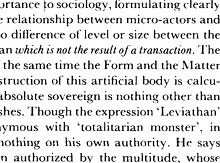 |
AKRICH M., RABEHARISOA V., PATERSON F., 2024, «At-risk individuals and presymptomatic diagnosis for late-onset neurodegenerative disease. Perspectives for the potential development of clinical trials» ,
Working paper.
Accès au texte »
CADASIL is an adult-onset genetic neurodegenerative disease, associated with recurrent strokes (cerebral infarcts) susceptible to generate disabling cognitive and motor related disorders, especially after the age of 50. Although there is currently no cure, the prospect opened up by research into new therapies raises the issue of the participation of asymptomatic carriers of the genetic mutation in the planned clinical trials. Inclusion in the trials will likely presuppose that they accept presymptomatic diagnosis. Our focus is on this at-risk population, described in the literature as being in majority unwilling to know their genetic status. On the basis of findings from a questionnaire survey of people concerned by CADASIL (N=359), carried out as part of the TRT-cSDV project coordinated by the CERVCO, we discuss both what underlies at-risk people's choices to whether or not undergo genetic testing, and what might constitute, in the course of the experience of living with the risk of developing the disease, the tipping point leading people who initially were not interested in presymptomatic diagnosis to finally resort to it. We suggest that, far from being a straightforward and unambiguous journey, the decision process leading to the choices to keep ignoring their genetic status or be diagnosed has mainly to do with the desire to distance themselves from the disease to prevent it from taking over their life, but also with an entanglement between progression in age and the disease making its presence felt, and also their relationship to uncertainty, that bringing the prospect of therapy for CADASIL a step closer may possibly change. |
| |
BRUN V., 2024, «Jean-Marc Corsi, Jean Frances et Stéphane Le Lay, Ma thèse en 180 secondes. Quand la science devient spectacle» ,
Sociologie du travail [En ligne], 66 (1).
Accès au texte » |
| |
COINTE B., 2024, «The AR6 Scenario Explorer and the history of IPCC Scenarios Databases: evolutions and challenges for transparency, pluralism and policy-relevance» ,
npj Climate Action, 3 (1), p.3.
Accès au texte »
Emissions scenarios have always been a crucial part of IPCC reports. They are instrumental to the shared assessment of climate research and to its policy relevance. Since the early days of climate change research, the number of emissions and mitigation scenarios in the literature has grown exponentially. An infrastructure was developed to collect, standardize, and share increasing amounts of scenarios data. The Integrated Assessment Modeling (IAM) community and IIASA have led this work. This infrastructure is central to the work of the IPCC Working Group III, but it also serves to coordinate and disseminate scenarios research. Adopting a socio-historical perspective, this article focuses on the AR6 Scenarios Database as a keystone in this infrastructure and as a site where tensions regarding the role and mandate of the IPCC are play. It retraces the co-evolution of IPCC Scenarios Databases and of the IAM community, and shows how the AR6 Scenarios Database compares and contrasts with previous Scenarios Databases. It then unpacks how ambitions to enhance diversity and transparency in the AR6 Working Group III use of scenarios translated in the design and use of the AR6 database. It analyses the attempt to expand the scope of the database beyond IAMs and discusses the challenges encountered in the process. |
| |
DANIÉLOU J., 2024, Sortir du monde fossile. Les mutations d’une multinationale de l’énergie ,
Paris, Presses des Mines.
Accès au texte »
Après avoir bâti au XXe siècle un monde fondé sur l’exploitation et la consommation de ressources fossiles, les multinationales du secteur de l’énergie se trouvent désormais confrontées à la nécessité de devoir en sortir. À la fois exceptionnel et paradoxal, ce moment du capitalisme se caractérise par une mutation profonde de ces entreprises.
En plongeant dans le quotidien des opérations de transformation déployées par l’entreprise ENGIE entre 2016 et 2020, Sortir du monde fossile explore la manière dont une multinationale est mise en mouvement par la crise climatique. À partir de terrains réalisés aux Philippines, en Chine et à Singapour, cette enquête éclaire les pratiques par lesquelles une entreprise est amenée à recomposer sa présence et ses ancrages à la surface de la planète. Que ce soit sur une île reculée ou dans une mégalopole tentaculaire, on voit se dessiner les frictions et les résistances qui traversent le processus de territorialisation, rendant celui-ci à la fois précaire et incertain.
L’image d’une mondialisation qui se déploie de manière monolithique et irrésistible cède ici la place à un foisonnement de mouvements heurtés, où les contacts établis aux quatre coins de la planète ne se transforment pas nécessairement en connexions globales stabilisées. De cette description, il ressort le fait que pour sortir du monde fossile, les multinationales de l’énergie se lancent dans une vaste opération d’exploration et de fabrication de nouveaux ancrages, signant par là une nouvelle forme d’expansion territoriale du capitalisme.
En articulant les apports de la théorie de l’acteur-réseau, de l’histoire connectée, de l’ethnographie et de la sémiotique, l’ouvrage dégage une perspective inédite sur les relations entre le réchauffement climatique, les entreprises de l’énergie et la mondialisation. |
| |
DENIS J., FLORENTIN D., 2024, «Urban infrastructures’ maturity and the age(s) of maintenance» ,
in COUTARD O., FLORENTIN D., (ed.), Handbook of Infrastructures and Cities. Research Handbooks in Urban Studies series, Cheltenham Glos, p.119–132.
This chapter challenges the idea that infrastructure maturity would be a phase of urban and infrastructural stability. In an increasing number of countries, mainly but not restrictively in the global North, the combination of infrastructure’s ageing and degradation, budgetary constraints and rising environmental issues has gradually shifted professional and public concerns from extension to repair and upkeep. This heralds what the authors coin an ‘age of infrastructure maintenance’, which dramatically contrasts with the modern infrastructural ideal. Drawing from the analysis of French water networks maintenance and asset management practices, this chapter investigates what this age of maintenance concretely encompasses, highlighting two main challenges a maintenance-centred and maturity-focused perspective raises for utilities, namely practices of knowledge production and forms of infrastructures valuation. |
| |
DENIS J., FLORENTIN D., PONTILLE D., 2024, «Maintenance and Its Knowledges: Functional Exploration, Biographical Supervision, and Behavioural Examination» ,
ESTS - Engaging Science, Technology & Society, 9 (3), p.53–70.
Accès au texte »
This introductory article to the thematic collection entitled “Maintenance and its Knowledges” makes a significant departure from breakdown-centred studies. It foregrounds the epistemic virtues of maintenance, a practice that cultivates continuity, by examining a still underestimated and unexplored dimension: the forms of knowledge associated with maintenance activities. A twofold aim guides such an exploration. First, repair and maintenance interventions are examined as particular sites and moments of knowledge generation. Second, building on the scholarship dedicated to improvisation and learning dynamics in the Global South that has structured numerous works on maintenance, this article considers how it can be extended towards the Global North. Recalling that maintenance has been mostly investigated from the question of how, it stresses out the various tools involved in knowledge generation, the organisation of tasks at play in different settings and their politics. It then goes beyond the how question to embrace a more ontological perspective, focussing on what people do properly maintain, and what kinds of knowledge emerge at this particular moment. Such a line of inquiry opens up three directions towards which the production of knowledge is oriented in maintenance: functional exploration, biographical supervision, and behavioural examination. |
| |
DOGANOVA L., 2024, Discounting the Future. The Ascendancy of a Political Technology ,
New York, Zone Books.
A pioneering exploration of the defining traits and contradictions of our relationship to the future through the lens of discounting
Forest fires, droughts, and rising sea levels beg a nagging question: have we lost our capacity to act on the future? Liliana Doganova’s book sheds new light on this anxious query. It argues that our relationship to the future has been trapped in the gears of a device called discounting. While its incidence remains little known, discounting has long been entrenched in market and policy practices, shaping the ways firms and governments look to the future and make decisions accordingly. Thus, a sociological account of discounting formulas has become urgent.
Discounting means valuing things through the flows of costs and benefits that they are likely to generate in the future, with these future flows being literally dis-counted as they are translated in the present. How have we come to think of the future, and of valuation, in such terms? Building on original empirical research in the historical sociology of discounting, Doganova takes us to some of the sites and moments in which discounting took shape and gained momentum: valuation of European forests in the eighteenth and nineteenth centuries; economic theories devised in the early 1900s; debates over business strategies in the postwar era; investor-state disputes over the nationalization of natural resources; and drug development in the biopharmaceutical industry today. Weaving these threads together, the book pleads for an understanding of discounting as a political technology, and of the future as a contested domain. |
| |
DOGANOVA L., RABEHARISOA V., 2024, «The temporalities of prices. ‘Value-based pricing’ in pharmaceutical markets» ,
Economy and Society, 53 (2), p.183-204.
Accès au texte »
In 2019, Zolgensma, a gene therapy for patients suffering from Spinal Muscular Atrophy (SMA), became famous for being ‘the most expensive drug ever’. Its high price was justified by ‘the value’ that the drug will bring to patients and society, illustrating a rationale that has come to be known as value-based pricing. This paper builds on the literature in valuation studies and economic sociology, and on the debates that the case of Zolgensma triggered in France, to provide a conceptual and empirical analysis of a value-based formulation of prices. We argue that formulating prices out of value produces an orientation towards the future which has epistemic and political consequences. We analyse Zolgensma’s value-based price as a composite of narratives and calculations that operates as a regulatory tool, a contractual arrangement, and an object of expertise. In these different settings, its distinctive temporality questions the commensurability of estimated benefits and desirable futures, the treatment of uncertainty, and the relevance of past costs and future value. |
| |
FISHER E., PY-SARAGAGLIA V., LARRIEU L., DOGANOVA L., ROY M., VIMAL R., 2024, «New times in old forests: How the past matters in European forest science» ,
Environmental Science & Policy, 157p.103757.
Accès au texte »
This article tracks changing conceptions of time in European forest science over recent decades, and accounts for how they can affect forest conservation and management. Through semiotic analysis of 62 peer-reviewed articles published in ecology and forestry, we (1) characterize the temporal features of old European forests as they evolve over our study period (1997–2017), and (2) trace how new and changing temporalities in forest science have reconfigured what constitutes a problem for conservationists and managers. We describe in particular how two articulations of forest time and forest management—Forest Continuity and Forest Maturity—have evolved, identifying the emergence of two new temporalities in old forest science. Over the study period, changing conceptions of forest pasts have increasingly led to consider forests as complex and evolving ecosystems from which humans cannot be excluded. |
| |
LAURENT B., 2024, «Innovation Monsters in the Sandbox» ,
Practicing Anthropology,
Accès au texte »
Recent technological advances, from artificial intelligence to genome editing, are made into innovation monsters, that is, demonstrable objects of public admiration or public fear, which do not exist without being displayed, are connected with anticipations of progress or catastrophe, and cause pervasive uncertainties about their future evolutions. In this paper, I investigate the politics of innovation monsters by analyzing recent manifestations of the regulatory sandbox. Heralded by innovation enthusiasts across the globe, many regulatory sandboxes aim to tame innovation monsters. In doing so, they also trust innovation to provide relevant answers to public problems. Other regulatory sandboxes illustrate a shift from a concern with containing risks to the imperative to realize the potential of innovation by suspending the rules suspected to restrain its progress. It feeds an understanding of policy as innovation-based. This innovation-based policy makes innovators central political actors and innovation the engine of permanently destabilized policy action. |
| |
LAURENT B., VIOLLE A., 2024, «The territorialisation of industry in times of transition: ecosystems, infrastructures and hubs in the green hydrogen sector» ,
Journal of Environmental Policy & Planning,
Accès au texte »
Current evolutions of the relationships between industry and the state associate explicit objectives of industrial transformations for ecological reasons, a growing interest in sovereignty-driven interventions in industry, and the linkage of industrial development to social concerns. This paper examines these evolutions by analysing the territorial inscription of industry, its practical manifestation and its consequences. We speak of styles of territorialisation of industry to characterise the articulation of three components: the construction of an industrial sector, the design and use of policy instruments, and the material consequences of spatial interventions. Using the example of the nascent green hydrogen sector in France, we contrast three styles of territorialisation, which we label ‘ecosystems’, ‘planned infrastructures’, and ‘hubs’. Each of them encompasses visions of the relationships between public and private actors, faces tensions and frictions, and has inevitable exclusion effects. We contend that the study of styles of territorialisation is a productive analytical entry point for understanding the politics of transition. |
| |
MERTENS K., VAN RUYMBEKE K., VRANKEN L., 2024, «Making explicit an Ecosystem Services indicator as a policy instrument» ,
Science as Culture, 33 (Published online).
Accès au texte »
Some policy-oriented concepts such as Ecosystem Services (ESS) remain widely utilized, despite obvious difficulties in operationalizing them. How does the concept persist? In a large EU Horizon 2020 project, researchers from different institutes worked together to develop an indicator of the environmental performance of agricultural practices, expressed in terms of ESS. Two observations of this project help to explain how ESS are progressively turned into a socially shared concept that may transform its environment and perpetuate itself. Firstly, the challenges of operationalizing ESS facilitated the formation of a group of researchers dedicated to the concept. As the project advanced, researchers progressively cut ties with the environmental sciences on which ESS are meant to be based. The interpretive flexibility of the ESS concept contributed to shaping the socially shared reality within which it was situated. Secondly, the legal obligations and procedures of the Horizon 2020 project were an essential factor for the constitutive strength of the ESS concept. As a straitjacket, the grant agreement ensured that the project maintained the researcher-indicator relationship. Thus, researchers were persistently oriented towards developing and expanding the ESS concept. This case illustrates how a research project can be formed and maintained around relatively ill-defined concepts in large consortia that are meant to produce policy-relevant science. |
| |
PALLISSER A., GOËTA S., HO-PUN-CHEUNG E., 2024, «Repenser la valeur du commerce grâce à ses effets sociaux et environnementaux : enquête sur les effets du commerce sur la ville» ,
Aix en Provence, Datactivist.
Accès au texte » |
| |
RABEHARISOA V., PATERSON F., 2024, «Non-Manipulable Things? Maintaining a Techno-Judicial Imaginary on Sealed Biological Samples in the French Criminal Justice» ,
ESTS - Engaging Science, Technology & Society, 9 (3), p.144–164.
Accès au texte »
This article investigates the maintenance of sealed biological samples in the context of the French criminal justice. It extends maintenance studies to judicial objects and introduces the topic of maintenance in legal materiality studies. Our contribution to these two bodies of literature is to deepen understanding of the epistemic and material politics of maintenance in a judicial context where the issue of authenticity of objects is crucial because of their legal liability. Sealed biological samples, which are associated to a techno-judicial imaginary on cold cases, exacerbate this issue of authenticity. Once sealed, biological samples used to produce forensic DNA profiles are stored for a period of 40 years at the Central Service for the Preservation of Biological Samples – Service Central de Préservation des Prélèvements Biologiques (SCPPB), a dedicated facility, and interventions are no longer authorised on them. What then does it entail to maintain these objects which are non-manipulable, at least to some extent? What are the ‘sciences of maintenance’ mobilised and generated for this purpose, if they exist at all? This article addresses these questions, drawing on the archives of the technical committee of the Fichier National Automatisé des Empreintes Génétiques (FNAEG)—the French national forensic database used by national police—from 1998 to 2016 and on a six-hour interview with the lieutenant-colonel head of the SCPPB. It shows how sealed biological samples raise intertwined debates on their very nature and on the competences and responsibilities of genetic experts, the SCPPB and the judicial authorities on the maintenance of their technical quality and their judicial potential. It examines the knowledges and practices of maintenance of these objects, which are distributed all along the process from their manufacturing on the crime scenes to their preservation at the SCPPB. Finally, it contributes analysis of the temporality of maintenance and the objects to be maintained. By and large, this article offers reflections on the subtle ways of maintenance in the material ordering of the judicial world. |
| |
SOLÉ-POMIÈS R., 2024, «What Fragility? Multiple Professional Visions in the Maintenance of French Public Roads» ,
ESTS - Engaging Science, Technology & Society, 9 (3), p.121–143.
Accès au texte »
A growing body of work in STS has highlighted the ambiguousness of infrastructure maintenance, as an activity that contributes to reproducing sociomaterial order while bringing to light its very fragility. The case of local public roads in France is instructive in this respect: for about a decade, a variety of public and private actors have been raising concerns about the fragility of this abundant infrastructure, questioning the organization of knowledge production for its maintenance after the withdrawal of centralized state engineering. This article draws on a multi-sited inquiry to extract three ethnographic vignettes that suggest the coexistence of multiple knowledges in road maintenance, oriented toward contrasted forms of fragility. I analyze these knowledges as professional visions (Goodwin 1994), associated with different notions of the most relevant expertise to make infrastructures last. The coexistence of multiple visions of infrastructural fragilities thus gives rise to new uncertainties: as the case may be, these visions might either contribute to a stabilized division of labor, or challenge existing institutional frameworks. These remarks invite us to systematically question the plurality of modes of knowing that organize infrastructure maintenance, in order to further widen the analysis of the complex relationships between material and organizational fragilities. |
| |
CERCEAU, J., LAURENT, B., 2023, Quand la mine déborde. Enquêtes sur la fabrique des territoires extractifs ,
Presses des Mines.
Accès au texte »
À l’heure des “transitions” énergétiques et numériques et des crises sanitaires comme géopolitiques, l’accès aux matières premières minérales devient un problème crucial qui force à s’interroger sur l’activité extractive.
Comment vivre en territoire minier et faire avec les conséquences de l’extraction ? Peut-on faire coexister activités minières et activités agricoles, touristiques, forestières ? Quelle sociabilité pour les travailleurs de l’industrie extractive ?
Certains territoires miniers doivent composer avec les traces indélébiles d’anciennes activités extractives. D’autres voient leurs configurations spatiales et sociales profondément transformées par les projets miniers en cours ou anticipés.
À travers des exemples en Afrique de l’Ouest, en Amérique Latine, en Amérique du Nord et en France, cet ouvrage montre comment l’activité extractive “fabrique” le territoire, dans ses composantes géophysiques, environnementales, hydrologiques mais également sanitaires, sociales, économiques et politiques. Il montre que les débats contemporains sur les projets miniers doivent se confronter à la fabrique de ces territoires pour questionner le rôle des localités dans les politiques extractives nationales voire mondiales. |
| |
2023, «Symposium "Bruno Latour, pragmatisme et politique"» ,
Pragmata, Revue d’Études pragmatistes, (Dossier spécial, 6), p.296-698.
Accès au texte » |
| |
DAU.,, F.,OIS., LOVELUCK, B., MUSIANI, F., 2023, Genèse d’un autoritarisme numérique. Répressions et résistances sur internet en Russie, 2012-2022 ,
Paris, Presses des Mines.
Accès au texte »
Dans le sillage de la fin de l'URSS, l'internet russe s'est d'abord développé librement, laissant l'initiative à de nombreux acteurs inventant des outils numériques ajustés à leurs usages. Cependant, depuis le début des années 2010, le tournant autoritaire au sommet de l'État russe a entraîné le déploiement d'un réseau d'emprises et de contraintes qui s'est resserré tant sur les acteurs que sur les infrastructures numériques du pays. Alors que le réseau russe a longtemps porté les espoirs de démocratisation de la sphère publique russe, son encadrement s'est constitué dans le temps long, au fil de controverses et d'épreuves. Malgré les critiques et les contournements militants et citoyens, l'oppression numérique a participé de la souverainisation politique et de la dynamique belliciste dont le moment culminant a été l'invasion de l'Ukraine en février 2022. Le livre, nourri par les enquêtes de terrain réalisées dans le cadre du projet ANR ResisTIC, dessine un panorama de la gouvernance coercitive et des usages numériques émancipateurs en Russie, de la paix à la guerre. Il met l'accent sur les multiples acteurs et objets numériques au cœur des controverses politiques et des tensions d'usage dans l'espace numérique russe dans les années 2010. Il montre les processus de construction de l'oppression numérique, au fil des critiques, conflits et contournements qui mettent aux prises tant les acteurs publics que privés, tant les partisans de l'ordre du net que les défenseurs de ses libertés. Au prisme du cas russe, ce sont les reconfigurations numériques contemporaines, de la surveillance à la souveraineté, que ce livre interroge. |
| |
ABDELGHAFOUR N., DOGANOVA L., LAURENT B., 2023, «Conflits de valorisation et fabrique du territoire. Tensions autour des ressources naturelles dans la forêt tropicale guyanaise» ,
in CERCEAU J., LAURENT B., (ed.), Quand la mine déborde. Enquêtes sur la fabrique des territoires miniers., p.97-114. |
| |
AKRICH M., 2023, «Actor Network Theory, Bruno Latour, and the CSI» ,
Social Studies of Science, 53 (2), p.169-173.
Accès au texte »
No abstract available |
| |
AKRICH M., COCHOY F., 2023, «A Masked Truth? Public Discussions about Face Masks on a French Health Forum» ,
Minerva, (61), p.315-334.
By analyzing the discussion on a health forum, we examine how wearing sanitary masks during the Covid-19 pandemic changed people's lives and what adjustments were required. During our review, we encountered theories referred to by participants as "conspiracy theories" that led to heated exchanges on the forum. Surprisingly, these interactions promoted, rather than prevented, collective exploration and resulted in a rich discussion of the issues related to wearing masks. Using a combination of quantitative and qualitative methods, we first analyze the dynamics of the discussion, its progression, and the conditions under which it was maintained over time, even given the radical expression of irreconcilable positions. Second, we examine the results of the discussion in terms of describing the problems triggered by the mask and the different authorities on which these descriptions were based. We conclude that the boundaries between science and non-science were occasionally blurred because of the wavering of scientific authorities and the uncertainty of the questions related to the pandemic, rather than because of a generalized distrust of science. We recognize that paradoxically, "conspiracist" theories contribute to the production of knowledge and that the adherence to these theories may stem more from the personal experiences of the individuals who profess them, rather than from the contaminating power of conspiracy theories. |
| |
AKRICH M., RABEHARISOA V., 2023, «On the Multiplicity of Lay Expertise: An Empirical and Analytical Overview of Patient Associations’ Achievements and Challenges» ,
in EYAL G., MEDVETZ T., (ed.), The Oxford Handbook of Expertise and Democratic Politics, Oxford, p.103-133.
The notion of the “expert patient” has become quite prominent in recent years. In many
countries, patients are invited to sit on various committees with biomedical specialists to share
their expertise on diseases and health problems with various institutions. This situation stands
in stark contrast with the medical paternalism that prevailed not so long ago. How did this
come to pass? What is the nature of the patient expertise that is being solicited? How have
health policies changed as a result? These are the questions that we examine in this article. In
light of previous and recent fieldwork that we have done, and a selection of case studies
reported in the literature, our objective is to revisit a constellation of notions such as “expert
patient,” “lay expert,” “lay expertise,” “experiential knowledge,” and “expert of experience”
that are not only analytical tools for STS scholars and social scientists, but also part and parcel
of today’s institutional parlance.
This article is divided into four sections. In the first section, we focus on the production of
experiential knowledge by patient associations. In the second section, we show how they also
strive to transform the content of credentialed expertise in order to better align this expertise
with their concerns. The third section illustrates “lay expertise in action” and addresses the
following questions: What changes do patient associations bring to health policymaking? How
do they achieve these changes? In the fourth and last section, we examine the
institutionalization of the “expert patient,” which manifests not only in legislation that
mandates patient participation, but also in a variety of initiatives implemented by institutions
to mobilize patient participation in medical research and health programs. In the conclusion,
we suggest a few avenues for future research that may complement the corpus of knowledge on lay expertise on aspects that thus far remain less investigated |
| |
ASAYAMA S., DE PRYCK K., BECK S., COINTE B., EDWARDS P., ET ., 2023, «Three institutional pathways to envision the future of the IPCC» ,
Nature Climate Change, 13 (9), p.877-880.
The IPCC has been successful at building its scientific authority, but it will require institutional reform for staying relevant to new and changing political contexts. Exploring a range of alternative future pathways for the IPCC can help guide crucial decisions about redefining its purpose. |
| |
BELGODÈRE L., POUGHEON BERTRAND D., JAULENT M., RABEHARISOA V., JANSSENS W., ROLLASON V., BARBOT J., VERNANT J., OUALIKENE GONIN W., MAISON P., ANKRI J., 2023, «Patient and public involvement in the benefit–risk assessment and decision concerning health products: position of the Scientific Advisory Board of the French National Agency for Medicines and Health Products Safety (ANSM)» ,
BMJ Global Health, 8 (5), p.e011966. |
| |
BRUN V., 2023, «« Les brevets sont à peine au rang d’une publication »» ,
Revue d'Anthropologie des Connaissances, 17 (2).
Cet article vise à expliciter la place qu’occupent les activités de valorisation dans les carrières des personnels de la recherche publique et la manière dont ils travaillent ou non à les internaliser dans le cycle de crédibilité académique (Latour & Woolgar, 1979). À partir d’une enquête conduite dans des projets de valorisation liés au CNRS, l’analyse montre que les activités de valorisation sont pensées conjointement avec les activités académiques. Si les chercheur·se·s échouent le plus souvent à les convertir en reconnaissance sans détour par la publication, il·elle·s peuvent réinjecter cet investissement sous forme de financement et d’équipement pour d’autres travaux. D’autres décident de les externaliser, faisant de la valorisation un à-côté de la carrière. Les doctorant·e·s et les ingénieur·e·s, qui participent pourtant à alimenter le cycle de crédibilité des chercheur·se·s, investissent des voies professionnelles parallèles. Enfin, l’engagement dans des projets de valorisation expose à des risques de décrédibilisation que les chercheur·se·s dénouent en défendant une conception du désintéressement scientifique compatible avec la perspective applicative. La transformation de l’économie de la crédibilité se fait donc à la marge, malgré les multiples dispositifs incitatifs des institutions de recherche.
Este artículo pretende esclarecer el lugar que ocupan las prácticas de valorización en la carrera de los investigadores públicos, y la forma en que trabajan o no para interiorizarlas en el ciclo de credibilidad académica (Latour & Woolgar 1979). A partir de una investigación realizada en proyectos de valorización vinculados al CNRS, el análisis muestra que las actividades de valorización se conciben conjuntamente con las académicas. Aunque la mayoría de las veces los investigadores no consiguen convertirlas en reconocimiento sin desviarse a través de la publicación, pueden reinyectar esta inversión en forma de financiación y equipamiento para otros trabajos. Otros deciden externalizarla, haciendo de la valorización una actividad secundaria de su carrera. Los doctorandos y los ingenieros, que aunque contribuyen al ciclo de credibilidad de los investigadores, invierten en trayectorias profesionales paralelas. Por último, la implicación en proyectos de valorización expone a los investigadores al riesgo de la descredibilización, que éstos combaten defendiendo una concepción del desinterés científico compatible con la perspectiva de aplicación. Así pues, la transformación de la economía de la credibilidad se produce en los márgenes, a pesar de los numerosos incentivos que ofrecen las instituciones de investigación.
This article aims to clarify the place that valorization practices hold in the careers of public research staff, and the way in which they do or do not work to internalize them in the academic credibility cycle (Latour & Woolgar, 1979). The analysis is based on an inquiry carried out in valorization projects linked to the CNRS, and shows that valorization activities are thought of in conjunction with academic ones. Although researchers most often fail to convert them into recognition without detouring through publication, they can re-inject this investment in the form of funding and equipment for other work. Others decide to outsource it, making valorization a career sideline. Although doctoral students and engineers contribute to the credibility cycle of researchers, they invest in parallel professional paths. Finally, involvement in valorization projects exposes researchers to the risk of decredibilization that they avoid by defending a conception of scientific disinterestedness compatible with the application perspective. The transformation of the economy of credibility is therefore taking place at the margins, despite the many incentives provided by research institutions. |
| |
BRUN V., 2023, «Sur le sentier économique de l’innovation : l’accompagnement des projets de valorisation au CNRS» ,
Quaderni, (110), p.73-88.
Accès au texte »
Cet article examine ce que la mise en œuvre des politiques d’innovation fait au contenu des productions des personnels de recherche, à partir de l’étude de deux projets de transfert des résultats de la recherche publique. Les choix successifs des porteurs et porteuses, informés et contraints par les dispositifs de financement de leur institution et par les conseils des chargé·es de valorisation, font évoluer leur invention conformément à une conception économique de l’innovation. Une fois ce processus enclenché, le développement de la technologie est orienté par la création de valeur économique, et il devient de plus en plus difficile de revenir sur des décisions passées : la trajectoire de valorisation s’inscrit dans une dépendance au sentier économique. Les porteur·ses adoptent des postures et y trouvent des bénéfices différenciés, mais doivent trouver des arrangements avec les chargé·es de valorisation, au sein de leur équipe, et avec eux·elles-mêmes.
On the Economic Path of Innovation: Supporting Valorisation Projects at CNRS. This article examines what the implementation of innovation policies does to the content of research production, based on a study of two projects of academic technology transfer. The successive choices made by the project leaders, informed and constrained by their institution's funding schemes and the advice of technology transfer officers, make their inventions evolving in line with an economic conception of innovation. Once this process has been set in motion, the technology development is guided by the creation of economic value, and it becomes increasingly difficult to go back on past decisions: the development trajectory becomes dependent on the economic path. Project leaders adopt different positions and derive different benefits from valorisation project, but have to come to terms with technology transfer officers, within their team and with themselves. |
| |
CABANES B., ROGER O., DOGANOVA L., 2023, «Comment les démarches de prospective permettent-elles de penser le futur ?» ,
Polytechnique insights,
La prospective caractérise un ensemble de pratiques qui ont pour objectif de préparer l’action présente, au moyen d’une réflexion sur le futur. La prospective s’intéresse à différents types de futurs : les futurs possibles, plausibles, probables et désirables (ou souhaitables). Les démarches de prospective s’appuient sur un large éventail de méthodes et de pratiques qui peuvent aussi bien être prédictives qu’exploratoires ou normatives. Il existe plusieurs méthodes de prospective (creativity, interaction, expertise et evidence) complémentaires les unes des autres donc l’utilisation dépend du contexte et de l'objectif. |
| |
CERCEAU J., LAURENT B., 2023, «Introducrion. Quand la mine déborde» ,
in CERCEAU J., LAURENT B., (ed.), Quand la mine déborde. Enquêtes sur la fabrique des territoires miniers., p.9-21. |
| |
COCHOY F., MALLARD A., EUGENIO C., 2023, «Withdrawing as a matter of re-agencing: the case of bulk sales» ,
in GOULET F., VINCK D., (ed.), New Horizons for Innovation Studies: Doing Without, Doing With Less, Cheltenham, UK, p.216–228.
Accès au texte »
The world of consumption is undoubtedly one of the main sites for innovation through withdrawal. For example, in “no added sugar”, one innovation cancels out the other. Behind this type of innovation, it is possible to discern a more general turnaround of modernity, characterised since its origins by addition, growth, “always more”. With this in mind, the authors of this chapter consider the case of bulk sales, a method that is particularly interesting in the context of innovation through withdrawal. Should selling in bulk, without any packaging, be seen as just a step backwards, towards traditional sales methods, and thus reinstating a relationship between the buyer and the naked product that has been lost in the backroom of consumer society? They answer this question based on a recent survey tracing the history of bulk sales and its declination in contemporary stores. Both these and pre-packaged sales have long maintained complex and intertwined relationships, subtly integrating the ambivalent logics of subtraction and addition, of new and old. These transformations, from counter sales to zero-packaging, from self-service to prepackaged products and from bulk to organic products, are characterized by a series of additions and withdrawals that “build a system” adjusted to the commercial agencement. Beyond the opposition between a naked product and a product inserted in a protective envelope, the authors discover a multiplicity of possible agencements for the singularisation of the link between the consumer and the product. |
| |
COINTE B., GUILLEMOT H., 2023, «A history of the 1.5°C target» ,
Wiley Interdisciplinary Reviews: Climate Change, (published online 18 january 2023).
The 1.5 C target is now widely considered as the maximum acceptable limit for global warming. However, it is at once recent and, as it appears increasingly unreachable, already almost obsolete. Adopted as an aspirational target in the Paris Agreement in 2015, the 1.5 C objective originated with a political impetus within UNFCCC negotiations. The Intergovernmental Panel on Climate Change (IPCC) endorsed this policy-driven target when it produced the Special Report on 1.5 C. This article highlights the continuity of the history of the 1.5 C target with that of the 2 C target, but also the differences between the two. Because the 1.5 C target considerably raises the bar on mitigation efforts, it exacerbates political tensions and ambiguities that were already latent in the 2 C target. This article retraces the emergence of the 1.5 C in diplomatic negotiations, the preparation of the IPCC Special report on 1.5 C, and the new kinds of debates they provoked among climate scientists and experts. To explain how an unreachable target became the reference for climate action, we analyze the "political calibration" of climate science and politics, which can also be described as a codependency between climate science and politics. |
| |
DENIS J., PONTILLE D., 2023, «Cultivating Attention to Fragility: The Sensible Encounters of Maintenance» ,
in PAPADOPOULOS D., PUIG DE LA BELLACASA M., TACCHETTI M., (ed.), Ecological Reparation. Repair, Remediation and Resurgence in Social and Environmental Conflict, p.344-36&.
In this chapter, we explore the attention to fragility at play in two urban maintenance settings: graffiti removal and water networks management. Drawing on ethnographic fieldworks, we show that maintenance activities consist of situated sensorial explorations by which maintainers carefully scrutinize the state of things and become attentive to their tendency to alter and transform. Paying attention to maintainers' attention outlines ways to elaborate a specific ecological posture. Maintenance appears indeed as a situated and political process that engages materials, bodies, instruments and texts, and is accomplished through provoking and cultivating encounters within emerging ecologies wherein what acts, and what interacts, is never completely known in advance. Exploring attention to fragility thus helps to reconsider how humans interact with things beyond 'cultural' or 'symbolic' relations. Furthermore, drawing its value from repetition and constancy, the continuous attentional work that fragility requires performs a reparation that cannot be 'settled' once and for all. Far from fixing the state of things, maintenance inextricably participates in their becoming. |
| |
DENIS J., PONTILLE D., 2023, «Le soin des choses» ,
PLS – le magazine du Palais de Tokyo, (2 juin 2023), p.60-67. |
| |
DENIS J., PONTILLE D., 2023, «Ni produits ni finis : l’art perturbateur de faire durer les choses» ,
in RICHERT C., COLIN A., (ed.), Catalogue de l’exposition « Chaleur Humaine », p.96-101.
Ni l’adjectif « fini » ni même l’inoffensif « produit » ne conviennent à décrire les objets dont les humains s’entourent, cette « masse manquante », comme l’appelait Bruno Latour, grâce à laquelle ils habitent la Terre et font société. L’idée de finitude renvoie d’abord à des artefacts autonomes, complètement détachés des flux matériels terrestres. Les produits finis sont littéralement hors-sol. Parfois cette finitude est par ailleurs elle-même artificielle, organisée comme une obsolescence arbitraire qui cantonne celles et ceux qui les acquièrent au rang de consommateurs passifs et insouciants. Quant au « produit », il pose lui aussi des problèmes en faisant des objets les résultats d’un processus de production au périmètre restreint, réputé comme le cœur de la génération de valeur. Dans le produit fini, le travail n’a plus lieu d’être, il est « congelé » par l’appareil productif pour reprendre l’expression célèbre de Marx. L’expression crée bien plus qu’un angle mort, elle provoque une absence. Elle efface tout ce qui se passe in media res, au milieu de ce monde, qui ne se résume pas à un jeu à somme nulle entre production et déchet prétendument recyclé. |
| |
DENIS J., PONTILLE D., 2023, «Before Breakdown, After Repair: The Art of Maintenance» ,
in MICA A., PAWLAK M., HOROLETS A., KUBICKI P., (ed.), Routledge International Handbook of Failure, p.209-222.
In science and technology studies, an important amount of research work has described the place of technology in modern societies by focusing on a particular form of failure: breakdowns. Investigated in close relationship with the repair operations that follow them, breakdowns have been extensively analysed as exceptional moments during which sociomaterial assemblages are "opened up," discussed, and then put back in order. While acknowledging the relevance of such an approach, this chapter focuses on what the binary dynamics of breakdown and repair leave out of the theoretical discussion. It suggests conceptually distinguishing, at least temporarily, the frequently equated notions of maintenance and repair, so as to further explore the mundane situations that come before breakdown and after repair. Thinking with maintenance, the chapter argues, helps us understand material fragility as a common feature rather than a deviation from the norm, and to highlight the repetitive and distributed activities that are undertaken to take care of things. This analytical move leads to a reconsideration of failure itself, which appears not so much as a hiatus or a disruptive event as an everyday part of the relationships between humans and things. |
| |
DENIS J., PONTILLE D., 2023, «Fragilités matérielles» ,
Revue d'Anthropologie des Connaissances, 17 (4).
Cet article introductif montre comment le prisme de la fragilité permet de prolonger conceptuellement et empiriquement les travaux qui, en se focalisant sur l’agentivité des objets et des matériaux, ont insisté sur la part matérielle des sociétés humaines. Il détaille d’abord la richesse et les limites de la notion de fragilité à partir de la conception qu’en ont les sciences des matériaux, notamment fondée sur l’idée de contrainte extérieure. Il montre ensuite, à travers les articles du dossier thématique, qu’une autre conception de la fragilité matérielle est possible, qui ouvre sur l’exploration des interdépendances sociomatérielles faisant tenir les choses. En n'enfermant pas ces dernières dans la seule inquiétude du choc et de la perte, les fragilités matérielles peuvent ainsi être pensées, et pratiquées, comme génératives.
Domaines
Sciences de l'Homme et Société Matériaux |
| |
DENIS J., PONTILLE D., 2023, «Fragilidades materiales» ,
Revue d'Anthropologie des Connaissances, 17 (4).
Este artículo introductorio muestra cómo el prisma de la fragilidad permite ampliar conceptual y empíricamente los trabajos que, centrándose en la agentividad de los objetos y materiales, han hecho hincapié en la parte material de las sociedades humanas. Comienza detallando la riqueza y los límites de la noción de fragilidad, a partir de la concepción que de esta se tiene en las ciencias de los materiales, desde la idea de fuerza externa. A continuación, se muestra a través de los artículos del dossier temático, que es posible otra concepción de la fragilidad material, que abra la exploración de las interdependencias socio-materiales que mantienen unidas y hacen que se mantengan unidas las cosas. Al no limitarse a la angustia del choque y de la pérdida, la fragilidad material puede pensarse y practicarse como generativa. |
| |
DENIS J., PONTILLE D., 2023, «Material fragilities» ,
Revue d'Anthropologie des Connaissances, 17 (4).
This introductory article shows how the prism of fragility can be used as a way to conceptually and empirically further the research work that has foregrounded the material part of human societies by focusing on the agency of artifacts and the strength of matter. It discusses the richness and limits of fragility as a notion, starting with its conception in materials science which is notably based on the idea of external constraint. It then demonstrates, drawing on the articles of the special issue, that another conception of material fragility is possible, which opens up the way to an investigation of the sociomaterial interdependencies that contribute to holding things together. Because it does not pin down things to the sole concern for shock and loss, material fragilities can be conceived, and practiced, as generative. |
| |
DUFOUR Q., PONTILLE D., TORNY D., 2023, «Supporting Diamond Open Access journals» ,
Nordic Journal of Library and Information Studies, 4 (2), p.35-55.
Accès au texte »
As Article Processing Charges (APCs) have been a growing concern in academia and policymaking, the need for a model where both authors and readers do not pay-the socalled Diamond Open Access (OA), or non-APC model-is regularly called for. However, this call is often combined with questions about its sustainability, particularly in financial terms. To answer this concern, this article explores the practical conditions to implement a direct funding mechanism to Diamond OA journals, that is recurrent money provided by funders to support the publication process. Based on a questionnaire survey sent to more than 1,000 Diamond OA journals, it investigates their financial needs, as well as their capacity to interact with research funding organizations (RFOs). The results are structured around four issues regarding the implementation of a direct funding model. First, most Diamond OA journals already make use of money rather than exclusively relying on support and volunteering. Second, those needs would be fulfilled in the eventuality of a regular income from research funders. Third, under this hypothesis, a vast majority of Diamond OA journals can receive and spend money. Finally, most of these journals could develop funding acknowledgments for each article with the promise of regular income through a direct funding mechanism. The conclusion addresses the challenges that such a recurrent financial stream would spur. |
| |
FOUTREL C., 2023, «Ève Chiapello, Antoine Missemer et Antonin Pottier (dir.), Faire l’économie de l’environnement, Presses des Mines, 2020. Compte-rendu de lecture» ,
Sociologie du travail [En ligne],, 65 (3). |
 |
GASULL C., 2023, «Ni lois, ni centres : gouverner par les transactions avec les blockchains» ,
Thèse de doctorat, Paris, École Nationale Supérieure des Mines de Paris.
Accès au texte »
Les concepteurs des blockchains inventent des manières d’entrer en relation par des infrastructures numériques. Elles sont développées aussi bien au sein d’institutions publiques et privées que par des communautés de cryptomonnaies qui cherchent à éviter ces institutions. Cette thèse vise à saisir les dimensions politiques de ce processus d’innovation en rendant compte de l’activité de développeurs, d’ingénieurs, d’entrepreneurs, d’investisseurs, de cadres d’entreprises et de militants. Elle s’appuie sur une enquête ethnographique multi-située du processus de conception d’Ethereum entre 2018 et 2020 en France, à Singapour et en ligne. Cette thèse se situe au croisement des études sociales des sciences et des techniques (STS), de la sociologie du numérique et des études sociales de l’économie. Les concepteurs ont une vision : un monde dépourvu de centres administratifs, économiques, juridiques et techniques ; un monde où chacun formule souverainement ses relations. Ils le font advenir en développant des protocoles réseaux, des logiciels et des modèles d’affaires qui donnent aux relations une forme particulière : la transaction. La thèse analyse cette ingénierie comme une manière originale de gouverner les relations. Cette gouvernance par les transactions suppose deux opérations (inscription et programmation) par des dispositifs conçus, financés et diffusés au travers de réseaux associatifs et entrepreneuriaux étendus. Symétriquement, certains concepteurs cherchent à gouverner l’activité de conception elle-même par les transactions.
Blockchain designers invent new ways of relating through digital infrastructures. They are developed both within public and private institutions and by cryptocurrency communities that seek to avoid these institutions. This thesis aims to capture the political dimensions of this innovation process by reporting on the activity of developers, engineers, entrepreneurs, investors, corporate executives and activists. It is based on a multi-sited ethnographic investigation of the Ethereum design process between 2018 and 2020 in France, Singapore and online. This thesis is situated at the intersection of Science & Technology Studies (STS), digital sociology, and social studies of the economy. The designers have a vision: a world devoid of administrative, economic, legal or technical center; a world in which each person sovereignly formulates his or her relations. They make it happen by developing network protocols, software and business models that give relationships a particular form: the transaction. The thesis analyzes this engineering as an original way of governing relationships. This governance by transactions is conceived by two operations on transactions (registration and programming) integrated in devices that are financed and diffused through extended associative and entrepreneurial networks. Symmetrically, some designers seek to govern the design activity itself through transactions |
| |
HEIMSTÄDT C., 2023, «Making plant pathology algorithmically recognizable» ,
Agriculture and Human Values, 40 (3), p.865-878.
This article examines the construction of image recognition algorithms for the classification of plant pathology problems. Rooted in science and technology studies research on the effects of agricultural big data and agricultural algorithms, the study ethnographically examines how algorithms for the recognition of plant pathology are made. To do this, the article looks at the case of a German agtech startup developing image recognition algorithms for an app that aims to help small-scale farmers diagnose plant damages based on digital images of their symptoms. The study posits that the construction of these algorithms can be grasped as a succession of layers, at each of which the startup’s employees carry out different selection practices. It is argued that these practices gradually inscribe a selective recognition of the phenomenon of plant pathology into the algorithms of the app. This selective recognition is reflected in the fact that the emerging algorithms are effective in identifying isolated plant damages on isolated crops, while ignoring most agroecosystem-related actors and relations through which plant damages arise. The article concludes that the app’s selective recognition of plant pathology is likely to perpetuate or even exacerbate the pesticide use of its users. This is because the app’s view of plant pathology as a phenomenon comprised of isolated plant damages on isolated crops is more compatible with the use of chemical pesticides than with approaches to crop protection that strive for a more moderate use of these substances (e.g., integrated pest management, agroecology, organic agriculture). |
| |
HEIMSTÄDT C., 2023, «The exploratory assetization of a crop protection app» ,
Environmental Science and Policy, 140p.242-249.
and recommend treatments into an asset. Rooted in assetization research and the sociology of markets, the paper theorizes agtech startups as organizations that increasingly engage in the construction of markets for pesticides and other inputs. Empirically, the study reconstructs the assetization of the app over a period of eight years, showing how the process gradually and quite radically transformed both the app itself and its socio-technical collective. More specifically, the study describes four phases constituting the analyzed segment of the assetization process in question, over the course of which the app evolved from a technology for disseminating knowledge about alternatives to chemical pesticides into a platform for brokering sales of biological and chemical pesticides on behalf of large agrochemical corporations. To make sense of this radical repositioning of the app vis-`a-vis chemical pesticides, the article introduces the concept of exploratory assetization—a concept that draws attention to the fact that the socio-technical collectives through which startup-born innovations are turned into assets are not fixed from the outset but emerge only over time through constant confrontations between a given innovation and the various human and non-human actors with which the assetization process puts it in touch. The article concludes that the exploratory assetization process described in it calls into question the ability of venture capital-funded digital agriculture technologies to contribute to pesticide reduction in a long lasting way |
| |
HENNION A., 2023, «Introduction "Bruno Latour, pragmatisme et politique"» ,
Pragmata, Revue d’Études pragmatistes, (6), p.296-340.
Accès au texte »
En introduction au symposium "Latour, pragmatisme et politique", Antoine Hennion profite de sa relation amicale avec Latour pour insister, à rebours de la façon dont on découpe souvent sa carrière (missions en Côte-d'Ivoire et en Californie, sociologie des sciences et des techniques au CSI, retour à la philosophie avec l'Enquête sur les modes d'existence à Sciences-Po, combat final sur le climat), sur la persistance au contraire d'une seule obsession chez lui : la critique de la façon dont les "modernes" se représentent. Inspirée par le pragmatisme et les auteurs qui l'ont prolongé, c'était une autre façon de concevoir le rapport d'un chercheur au politique. |
| |
HENNION A., 2023, «Se laisser troubler par William James ? L’enquête sociale à l’épreuve du pragmatisme.» ,
in DEBAISE D., STENGERS I., (ed.), Au risque des effets. Une lutte à main armée contre la Raison ?, Paris, Les liens qui libèrent, p.261-292.
Accès au texte »
Ce chapitre s'appuie sur plusieurs enquêtes faites par les chercheurs du collectif Attachements pour montrer comment l'empirisme radical et le pluralisme de James éclairent différemment les façons de mener l'enquête, à l'opposé des conceptions surplombantes de la sociologie. Ces cas très divers (de la maladie de Huntington ou des soins palliatifs aux migrants ou à Fukushima, des graffiti à l'art de réparer) mettent tous en avant la fragilité des êtres et des choses, non comme une faiblesse mais comme une ouverture, un appel à "exister plus" |
| |
HENNION A., 2023, «How to Better Sense What is Happening? A Political Lesson from Taste and Tasting» ,
in VOSS J., RIGAMONTI N., SUAREZ M., WATSON J., (ed.), Sensing Collectives. Aesthetic and Political Practices Intertwined, Bielefeld, Germany, Transcript, p.185-197.
Accès au texte » |
| |
HENNION A., 2023, «Portrait de Howie Becker en pragmatiste malgré lui» ,
AOC,
Accès au texte »
Auteur de livres et d’articles devenus depuis longtemps des classiques de la sociologie, notre ami Howard S. Becker est mort cet été à San Francisco, il avait 95 ans. Si la réception française de son œuvre très américaine est considérable, elle suscite aussi de nombreux malentendus que pointe ici Antoine Hennion, en lui rendant un précieux hommage. |
| |
HENNION A., 2023, «L’instrument de musique ou la force des choses» ,
in JOUVE-VILLARD L., VESCHAMBRE V., (ed.), Instruments voyageurs, Lyon, Editions Libel, p.34-38.
Accès au texte » |
| |
LAURENT B., 2023, «Quelle politique du territoire face à l’extraction minière ? Maintenir, mettre en valeur, élaborer un destin commun» ,
in CERCEAU J., LAURENT B., (ed.), Quand la mine déborde. Enquêtes sur la fabrique des territoires extractifs., p.157-178. |
| |
LAURENT B., 2023, «Institutions of Expert Judgment: The Production and Use of Objectivity in Public Expertise» ,
in EYAL G., MEDVETZ T., (ed.), Oxford Hanbook of, p.214-236. |
| |
LAURENT B., 2023, «Latour et la question politique : vers une lecture constitutionnelle» ,
Pragmata : revue d'études pragmatisqtes, 6p.444-479. |
| |
MALLARD A., UGHETTO P., 2023, «Bruno Latour (1947-2022). In Memoriam» ,
Sociologie du travail [En ligne], 65 (1).
Accès au texte » |
| |
MARQUET C., CELLARD L., 2023, «Frictions sous-marines» ,
Revue d'Anthropologie des Connaissances, 17 (4).
Dans cet article, nous nous intéressons aux frictions qui ont accompagné l’atterrissage du câble PEACE MED (Pakistan and East Africa Connecting Europe - Mediterranean section) en 2021 à Marseille. Plutôt que d’exclure le câble des zones de protection de la nature, les études d’incidence ont conseillé de les traverser, mettant en avant la possibilité d’une cohabitation harmonieuse entre l’infrastructure et la biodiversité sous-marine, ainsi que les risques encourus par le câble à s’avancer en d’autres eaux. Cette association inattendue entre câbles et herbiers affaiblit la position de deux acteurs qui souhaitent changer la route traditionnelle empruntée par les câbles. Le Parc National des Calanques d’abord, qui au nom d’une séparation stricte des activités anthropiques et des milieux naturels protégés, souhaiterait voir les câbles s’éloigner des espaces dont il a la responsabilité. Le Grand Port Maritime de Marseille ensuite, qui, après avoir investi des millions d’euros dans une infrastructure capable d’accueillir des câbles sous-marins, n’est pas parvenu à attirer PEACE MED dans son enceinte.
In this article, we look at frictions occurring in 2021 during the landing of the PEACE MED cable in Marseille (the Mediterranean section of the Pakistan and East Africa Connecting Europe cable). Rather than excluding the cable from nature conservation zones, the environmental impact assessments recommended crossing them, highlighting then the possibility of a harmonious cohabitation between this infrastructure and the underwater biodiversity as well as acknowledging the risks incurred by the cable in moving into other areas. This unexpected association between cables and seagrass beds weakens the position of two organisations who wish to change the traditional route taken by the cables. Firstly, the Calanques National Park arguing in the name of strict separation of human activities and protected natural environments would like to see the cables move away from the areas for which it is responsible. Secondly, the Great Seaport of Marseille has failed to attract PEACE MED to its premises — even after having invested millions of euros in an infrastructure capable of accommodating submarine cables.
Este artículo examina las fricciones que han acompañado el desembarco del cable PEACE MED (Pakistán y África Oriental Conectando Europa - sección mediterránea) en Marsella en 2021. En lugar de excluir el cable de las zonas de protección de la naturaleza, los estudios de impacto aconsejaban atravesarlas, poniendo de relieve la posibilidad de una cohabitación armoniosa entre la infraestructura y la biodiversidad submarina, así como los riesgos que corre el cable al adentrarse en otras aguas. Esta inesperada asociación entre cables y praderas marinas debilita la posición de dos partes interesadas que desean modificar el trazado tradicional de los cables. En primer lugar, el Parc National des Calanques, que, en nombre de una estricta separación de las actividades humanas y los entornos naturales protegidos, desea que los cables se alejen de las zonas de las que es responsable. En segundo lugar, el Grand Port Maritime de Marsella, que, tras invertir millones de euros en infraestructuras capaces de albergar cables submarinos, no ha conseguido atraer a PEACE MED a sus instalaciones. |
 |
MERTENS K., VAN RUYMBEKE K., VRANKEN L., 2023, «What are ecosystem services? On transformative tables and the search for supply and demand» ,
Working paper.
Accès au texte »
This article contributes to exposing inner workings of academic research on Ecosystem Services (ES) and their indicators. A self-reflexive study in a lab of environmental economics for more than two years reveals how previous research on agroecological practices in Europe is reinterpreted in order to identify the delivery of ES. We document the difficulties encountered in the transformation process.
We show that ES are operationalized through table-concepts. Two tables are used: the first one to extract data from their initial context and purify them from concepts and concerns in environmental sciences; and the second one to subsequently recomplexify these data into a new context of supply and demand. At the end of this process, the newly generated data have little to do with the scientific context from which they are originally derived. We describe the resistances to these transformations as well as the various strategies we employed to address the difficulties we encountered.
By carefully tracing the transformations in our study we show the particular nature of ES, how they selectively rely on concepts from both environmental sciences and economics, and the way they hierarchize and hybridize some of these concepts. While some of our findings may be specific to the context of our study, which has concentrated on European, anthropogenic and agricultural environments, we believe that they provide a unique insight into the nature of ES. |
| |
MEYER M., BRUN V., 2023, «Theories and Practices of Knowledge Brokering» ,
in KEIM W., RODRIGUES MEDINA L., ET ALII., (ed.), Routledge Handbook of Academic Knowledge Circulation,
This chapter examines a specific kind of practice dedicated to moving knowledge around and creating connections between researchers and their various audiences: knowledge brokering. It looks at the practices, theories, professions and identities concerned with knowledge brokering. The chapter argues that research on knowledge brokering needs to capture more than just the issue of moving – and transforming – knowledge. The positionality of knowledge brokers is also a key issue: the identity of and spaces occupied by knowledge brokers raise complex questions, as much as the invisibility, complexity and variability of brokering practices. Knowledge brokering needs to be captured in a multifaceted way, by being attentive to the practices involved, the devices created and used and the benefits and limits of their “in between” and peripheral status. |
| |
MEYER M., VERGNAUD F., 2023, «The Gene-Edited Babies Controversy: Reactions in the Scientific Community, Social Media, and the Press» ,
in PASSOS G., (ed.), Genome Editing in Biomedical Sciences, p.191-204.
Accès au texte »
This chapter analyzes how the gene-edited babies controversy sparked by He Jiankiu has unfolded in three spheres: the scientific community, the press, and social media. Across these spheres, there is a multilayered debate: scientific and technical aspects are discussed, as much as legal frameworks, ethics, responsibilities, politics, and social issues. But beyond these similarities, there are three notable differences. The first concerns (geo)politics. At the 2018 international summit on human gene editing, we observe efforts of self-regulation and demarcation to protect the moral and epistemic authority of the scientific community and to critique – and eventually “excommunicate” – He Jiankui. While the 2018 summit drew a clear line between “good science” and “bad science,” in the press, the dichotomy is rather expressed in terms of “good countries” versus “bad countries” regarding their ethics and regulation (a dichotomy much less visible in social media). The second difference concerns emotions and affect. Despite the scientific community’s strong condemnation of He Jiankui, it nevertheless expressed its criticisms in an unemotional and factual way. In the press and social media, however, various emotions are visible – fear, anger, pride, hope, rejoicing, disgust, and shame – and the discussion is more dramatic. Third, the use of positive terms is notable: while virtually absent in the scientific sphere and the press, there are positive assessments in social media. |
| |
MEYER M., VERGNAUD F., 2023, «Key and emerging themes in gene editing: A lexicometric analysis of publications in the biological sciences (1990–2022)» ,
Plant, People, Planet, (first published online 20 november 2023).
Societal Impact Statement Various techniques to modify genomes have been developed over the past decades, from molecular cloning to gene editing techniques. What are their applications? What are the key themes discussed by scientists? To answer these questions, we provide a qualitative and quantitative analysis of 14,739 scientific articles published between 1990 to 2022 showing that some themes are constant over time, such as the molecular aspects of genetics and discussions about data and software, while other themes emerged more recently. For example, CRISPR/Cas9 became prominent from 2012 onwards, and applications in agriculture and policy/regulatory implications from 2015 onwards. This mixed method opens up new spaces for dialogue between the natural and social sciences and captures the shifting boundaries of science. Summary The article analyzes publications in the biological sciences concerned with genetic engineering, in particular gene editing, between 1990 and 2022 to examine key and emerging themes. It provides a lexicometric analysis of 14,739 articles, which were subdivided into four periods (1990–2011, 2012–2015, 2016–2018, and 2019–2022). We show that certain themes are constant over time, such as the molecular aspects of genetic engineering techniques and discussions about data and software. Other themes, however, have emerged at specific moments in time: CRISPR/Cas9 became prominent from 2012 onwards and applications in agriculture and policy and regulatory implications from 2015 onwards. We observe, in particular, a semantic shift from genetically modified organisms (GMOs) to crops. The article contributes to debates about the boundaries of science by shedding light on the temporal dynamics of boundary‐work and by showing how the frames of scientific debates can shift to account for the political aspects of science. We conclude that the dialogue between the natural and social sciences can be strengthened by showing that apart from scientometric approaches, there are other methods to analyze “what counts” in science.
Diverses techniques de modification du génome se sont développées au cours des dernières décennies, du clonage moléculaire à l'édition génomique. Quelles sont leurs applications ? Quels sont les thèmes clés discutés par les scientifiques ? Pour répondre à ces questions, nous fournissons une analyse qualitative et quantitative de 14,739 articles scientifiques publiés entre 1990 et 2022, montrant que certains thèmes sont constants dans le temps, comme les aspects moléculaires de la génétique et les discussions sur les données et logiciels, tandis que d'autres thèmes sont apparus plus récemment. Par exemple, CRISPR/Cas9 devient important à partir de 2012, et les applications dans l'agriculture et les implications politiques/réglementaires à partir de 2015. Cette méthode mixte ouvre de nouveaux espaces de dialogue entre sciences naturelles et sociales et permet de saisir les frontières mouvantes de la science.
En las últimas décadas se han desarrollado diversas técnicas para modificar los genomas, desde la clonación molecular hasta las técnicas de edición de genes. ¿Cuáles son sus aplicaciones? ¿Cuáles son los temas clave debatidos por los científicos? Para responder a estas preguntas, ofrecemos un análisis cualitativo y cuantitativo de 14,739 artículos científicos publicados entre los años 1990 y 2022 que muestra que algunos temas son constantes, como los aspectos moleculares de la genética y las discusiones sobre datos y software; mientras que otros temas han surgido más recientemente. Por ejemplo, CRISPR/Cas9 cobró protagonismo a partir del año 2012, y las aplicaciones en agricultura y las implicaciones políticas/normativas a partir del año 2015. Este método mixto abre nuevos espacios de diálogo entre las ciencias naturales y sociales y capta los límites cambiantes de la ciencia. |
| |
MUNIESA F., 2023, «Financial Value, Anthropological Critique, and the Operations of the Law» ,
in FEICHTNER I., GORDON G., (ed.), Constitutions of Value: Law, Governance, and Political Ecology, p.169-180.
Accès au texte » |
| |
MUNIESA F., 2023, «Anthropologie critique de la valeur» ,
Regards croisés sur l'économie, (32), p.160-170.
Entretien avec Fabian Muniesa, propos recueillis par Lisa Laurence et Arnaud Niedbalec. |
| |
MUNIESA F., 2023, «Revaluation fantasy» ,
Finance and Society, 9 (1), p.73-75.
Financial conspiracies today blend together antisemitic tropes and spiritual visions with ideals of political reform and economic salvation. It is tempting to locate such phenomena at the periphery of the financial order, situating them within a delusional space beyond judicious concepts of money, finance, wealth, and value. But is also possible to take paranoid finance as an extreme, radical appropriation of a logic inherent in finance. |
| |
MUNIESA F., 2023, «A science of stereotypes: paranoiac-critical forays within the medium of information» ,
Distinktion: Journal of Social Theory, 24 (2), p.283-296.
Contemporary cultures of information technology are particularly propitious to the construction and propagation of stereotypes, and, hence, to the cultural critique thereof. Should that critique take at face value the vernaculars of information and behaviour that this culture affords? Or should it attempt at distorting those vernaculars, so to confront from a different angle the latent problem of the stereotype? A number of recent cultural works (in art, poetry and activism) seem to go in that direction. They may connect, in a sense, with the tradition of the ‘paranoiac-critical method’ once formulated by Salvador Dalí, and they provide an interesting testbed for the ‘science of stereotypes’ once imagined by Pierre Klossowski. This hypothesis is examined here, with reference to a number of contemporary illustrations that feed this perspective. |
| |
MUNIESA F., OSSANDON J., 2023, «Valuation as a semiotic, narrative, and dramaturgical problem» ,
Valuation Studies, 10 (1), p.1–9.
Accès au texte » |
| |
ORTAR N., TAYLOR A., VELKOVA J., BRODIE P., JOHNSON A., MARQUET C., POLLIO A., CIROLIA L., 2023, «Powering ’smart’ futures: data centres and the energy politics of digitalisation» ,
in ABRAM S., WALTORP K., ORTAR N., PINK S., (ed.), Energy Futures: Anthropocene Challenges, Emerging Technologies and Everyday Life, p.125-168. |
| |
PELLIZZARI M., MUNIESA F., 2023, «Social impact bonds and the tactics of feasibility: experience from Chile, Colombia and France» ,
International Public Management Journal, 26 (3), p.357-375.
Public policy innovations such as social impact bonds (SIBs) have prompted critical attention in recent literature. Yet, little is known about the operations they require and the shapes they take. This study contributes to this research agenda through a focus on the problem of ‘feasibility’. We consider this notion as a vernacular preoccupation put forward by SIB practitioners. We theorize this phenomenon with reference to the notions of tactics (making sense of situations in which schematization and ordering are difficult) and trials (the success of an action depending on the transformations it faces in the process of becoming explicit). We focus on how ‘feasibility’ emerged as a distinctive concern in a number of SIB cases in Chile, Colombia and France. We show how this concern translated recurrently into ways of orienting the SIB arrangement toward shapes in which it could prove viable and tractable. |
| |
RABEHARISOA V., PATERSON F., 2023, «Du sang et des larmes» ,
Revue d'Anthropologie des Connaissances, 17 (4).
Cet article s’intéresse à la fragilité matérielle des scellés biologiques dont les contenus peuvent faire l’objet d’analyses génétiques dans le cadre de l’élucidation d’affaires non résolues. Il explore le travail de problématisation, de production de connaissances et de responsabilisation des acteurs de la chaîne criminalistique vis-à-vis de la contamination et de la dégradation des matières qui composent les scellés et leurs contenus. L’article montre la dualité de ces deux phénomènes, à la fois appuis et menaces pour la criminalistique. Cette dualité se manifeste dans le traitement des scellés en choses fragiles, qui suppose de connaître et d’agir sur la contamination et la dégradation tout en « faisant avec », et ce afin de préserver la preuve ADN le jour où le pouvoir judiciaire voudrait la mobiliser. L’article montre que ce traitement des scellés peut être analysé comme leur préparation pour un futur à l’état de « virtualité », à l’intersection du temps des matières et du temps judiciaire.
This article focuses on the material fragility of sealed biological samples which genetic analysis may help elucidate “cold cases.” It investigates the problematization, production of knowledge and accountability of actors in the forensic chain vis-à-vis the contamination and degradation of the materials that make up the seals and their contents. The article shows the dual nature of these phenomena, both supports and threats to forensics. This ambivalence shows in the handling of sealed biological samples as fragile things, which supposes getting to know and acting on contamination and degradation while “doing with” these two phenomena, in order to preserve DNA evidence the day it will be mobilized by the judicial authority. We argue that the way seals are treated contribute to preparing them for the future, a future that may be conceived as a “virtuality” at the intersection of the time of materials and the judicial time.
Este artículo examina la fragilidad material de los precintos biológicos, cuyo contenido puede analizarse en busca de ADN en el contexto de la resolución de casos no resueltos. Explora la problematización, la producción de conocimiento y la responsabilidad de los implicados en la cadena forense con respecto a la contaminación y la degradación de los materiales que componen los precintos y su contenido. El artículo muestra la dualidad de estos dos fenómenos, que son a la vez apoyos y amenazas para la ciencia forense. Esta dualidad se manifiesta en el tratamiento de los precintos como objetos frágiles, lo que requiere conocer y actuar sobre la contaminación y la degradación, mientras «lidia con ello», con el fin de preservar las pruebas de ADN en caso de que la justicia desee movilizarlas. El artículo muestra que este tratamiento de los precintos puede analizarse como su preparación para un futuro en estado de «virtualidad», en la intersección del tiempo material y el tiempo judicial. |
 |
SOLÉ-POMIÈS R., 2023, «Faire durer la chaussée. Le souci des voiries communales en France métropolitaine après la décentralisation» ,
Thèse de doctorat, Paris, École Nationale Supérieure des Mines de Paris.
Accès au texte »
À l'heure de la crise environnementale et de l'urgence de la transition énergétique, les infrastructures routières françaises sont l'objet de profonds bouleversements. Vieillissantes, comme presque partout dans les pays riches, elles se trouvent d'abord au centre de préoccupations de plus en plus pressantes quant à leur robustesse et leur résilience. Au terme d'un modèle exclusivement centré sur le développement, il est ainsi admis que la soutenabilité environnementale et économique des infrastructures routières passera par la mise en œuvre de politiques de gestion patrimoniale ambitieuses, qui permettront de financer la maintenance avant que des accidents ne surviennent et que les coûts d'entretien n'explosent. À cette première problématique s'ajoutent les incertitudes quant à la place que tiendront les infrastructures dans les mutations profondes des pratiques de mobilité - de l'électromobilité au véhicule connecté, en passant par le développement de nouveaux modes dits « doux ». Cette situation, qui fait émerger de nombreuses incertitudes, en particulier du côté des entreprises de la route, est accentuée par un contexte institutionnel en transition. Depuis la promulgation de la loi portant nouvelle organisation territoriale de la République (dite loi Notre), qui a redistribué les cartes des compétences locales en août 2015, jusqu'aux récents débats autour du projet de loi d'orientation des mobilités (LOM), la gouvernance territoriale est en recomposition, en particulier aux échelles communale et intercommunale. La thèse vise à étudier l'organisation - et la réorganisation - de la gestion patrimoniale des infrastructures routières à cette échelle, avec un intérêt particulier pour la production et la gestion de connaissances concernant l'état des réseaux, ainsi que pour l'intégration de nouvelles exigences quant à la transition écologique.
Summary
As the energy and ecological transition is becoming more and more urgent, French road infrastructures are at the core of significant shifts. As in many rich countries, their ageing raises concerns regarding their robustness and resilience. The development-centered model is thus becoming obsolete, as it is acknowledged that environmental and economic sustainability requires ambitious maintenance policies, to prevent accidents and outbreaks in costs. Furthermore, current evolutions in mobility practices - electromobility, connected vehicles, development of "soft modes" - tend to question the place of infrastructures. This uncertain situation, particularly for road companies, is further complexified by a shifting institutional framework. Since the "Notre" law for new territorial organization, which re-distributed local jurisdictions in August 2015, as well as with recent debates about the "LOM" law for mobility, local governance is undergoing significative changes, especially for municipalities and intercommunalities. This research aims at analyzing the organization - and re-organization - of road maintenance at this administrative scale, paying particular attention to knowledge production and management about the state of local road networks, as well as the integration of new demands in terms of ecological transition. |
| |
STERN-DELFILS A., LERAY I., CAEYMAEX L., DICKY O., AKRICH M., REYNAUD A., BOU., EVRARD A., SIZUN J., TSCHERNING C., KUHN P., 2023, «Father’s perceptions and care involvement for their very preterm infants at French neonatal intensive care units» ,
Frontiers in Psychiatry, 14 (published online 16 november 2023).
Objectives We aimed to evaluate (1) fathers’ perceptions and care involvement for their very premature infants and their views of the hospitalization period based on parental reports and (2) their evolution over time. Methods We used an online parental survey to assess answers from parents of very preterm infants who were successfully discharged from French neonatal units. We analysed answers from February 2014 to January 2019 to an anonymous internet-based survey from the GREEN committee of the French Neonatal Society. Responses were compared for period 1 (P1, 1998 to 2013) and period 2 (P2, 2014 to 2019). Results We analyzed 2,483 surveys, 124 (5%) from fathers and 2,359 (95%) from mothers. At birth, 1,845 (80%) fathers were present in the hospital, but only 879 (38%) were near the mother. The presence of fathers in the NICU increased from P1 to P2 (34.5% vs. 43.1%, p = 0.03). Nearly two thirds of fathers accompanied their infants during transfer to the NICU (1,204 fathers, 60.6%). Fathers and mothers had similar perceptions regarding relationships with caregivers and skin-to-skin contact with their infants. However, more fathers than mothers felt welcome in the NICU and in care involvement regarding requests for their wishes when they met their infant (79% vs. 60%, p = 0.02) and in the presentation of the NICU (91% vs. 76%; p = 0.03). Mothers and fathers significantly differed in the caring procedures they performed ( p = 0.01), procedures they did not perform but wanted to perform ( p < 0.001), and procedures they did not perform and did not want to perform ( p < 0.01). Conclusion Most fathers were present at the births of their very preterm infants, but fewer fathers were near the mother at this time. Less than two thirds of fathers accompanied their infants to the NICU. There should be further changes to better meet the specific needs of the fathers of infants requiring care in the NICU. Continuing assessment with an online questionnaire may be useful to monitor changes over time in father’s involvement in NICUs. |
| |
AKRICH M., COCHOY F., 2022, «La discussion profane comme quête d’information : le cas du forum Santaide» ,
in COCHOY F., GAGLIO G., DANIAU A., (ed.), Le masque sanitaire sous toutes ses coutures, p.115-139. |
| |
ASDAL K., COINTE B., 2022, «Writing good economics: how texts ’on the move’ perform the lab and discipline of experimental economics» ,
Social Studies of Science, (first published online 2022/04/03).
How is objectivity accomplished in laboratory economic experiments? To address this question, this paper focuses on a modest and mundane thing: the written instructions that guide experimental subjects in the lab. In a material-semiotic perspective, these instructions can be understood as text-devices. We follow text-devices ‘on the move’ from their very writing, through the lab, the review process and out into the journal article. To do so, we analyse ‘text-author ensembles’, which are journal articles together with practice-oriented interviews with their authors. We show that instructions act not simply as texts, but as experimental instruments that also perform the procedure of experimental economics. They draw together the procedural, material and rhetorical dimensions of experimental work in economics, and link the lab setting to collective validation procedures within the discipline of economics. To achieve this, experimental economists rely on qualitative writing skills refined in collective writing and reviewing practices. These text-devices ‘on the move’ alert us not only to the role of writing and writing skills in the production of scientific knowledge, but to the role of texts as material and semiotic objects that can produce facts as well as labs and disciplines, and that are key to the accomplishment of objectivity in experimental economics. |
| |
BARTHE Y., MEYER M., SUNDQVIST G., 2022, «Technical Problematisation: A Democratic Way to Deal with Contested Projects?» ,
Science Technology and Society, 27 (1), p.7-22.
A strong social and technical divide is particularly visible in the predominant understanding of technological innovation in modern societies. The field of Science and Technology Studies (STS) aims to overcome this divide, by focusing on the continuously entwined relationships between the social and the technical, that is, sociotechnical combinations. In this article, we argue that while it is reasonable to state that the social and the technical are entangled, it should be acknowledged that some issues are dealt with solutions that are more technical than others. A technical problematisation (the definition of an issue as a problem that is treated via a technical solution) is different to a social problematisation (the definition of an issue as a problem that is treated via a social solution) of the same issue. Our discussion is built upon examples from nuclear waste management, where the social–technical divide has been strong. However, more recently there has been a push for more democracy in technical decision making in this area, with much experimentation on public participation taking place. The only way these activities will successfully support such a democratising process is for them to be integrated into a renewed and explicitly acknowledged technical problematisation of proposed solutions. |
| |
BRUN V., BOURDELOIE H., 2022, «Quand le numérique matérialise le défunt : les données post-mortem dans le processus de deuil» ,
Etudes sur la mort. Revue de la Société de Thanatologie, (157), p.27-40.
Si les données numériques constituent une partie de l’héritage des défunts depuis la loi Lemaire en France (2016), elles font, plus qu’un enjeu de legs, l’objet de pratiques de collecte, sauvegarde ou archivage dont les sens et valeurs sont spécifiques à chacun et chacune. Supports du souvenir et de la mémoire, ces pratiques participent de la construction du mode d’existence du défunt, re-matérialisé pour pallier la fragilité du numérique. Via ces opérations de rematérialisation, est ici mis à jour un des paradoxes qui entourent les ritualités funéraires. Le numérique, qui renforce le pouvoir de récalcitrance des données, a pour effet de perméabiliser les frontières entre morts et vivants. La collecte de données vise tant à faire vivre les morts qu’à mettre à distance les morts actifs, notamment lorsque leurs données font souffrir. |
| |
CALVIGNAC C., MEYER M., GAGLIO G., COCHOY F., 2022, «L’innovation par privation - Confectionner des masques alternatifs en temps de crise sanitaire» ,
in DUMEZ H., LOVELUCK B., MALLARD A., (ed.), Innover en temps de crise, Paris, p.101-113.
Ce chapitre porte sur l’autoproduction amateur de masques 'faits maison' intervenue en France au début de la pandémie de Covid-19. Initiée en réponse à une pénurie sans précédent d’équipements de protection sanitaire, nous qualifierons cette autoproduction d’innovation par privation. L’innovation par privation s’opère sous contrainte ; elle ne vise pas à atteindre un 'mieux-disant' sociotechnique mais cherche plutôt à parvenir à une solution 'la moins sous-optimale possible' dans un contexte mutagène et incertain. A l’aide d’un matériau constitué de 343 témoignages d’autoproducteurs de masques 'faits maison' (collectés en trois vagues entre avril et octobre 2020), notre chapitre aborde cette forme d’innovation par privation au prisme d’un double questionnement : quel est le contenu de cette pratique innovante ? Par quels récits, motifs, finalités et via quelle matérialité s’alimente-t-elle ? Comment cette innovation s’est-elle stabilisée (certes très provisoirement) et a-t-elle circulé ? |
| |
CARNINO G., MARQUET C., 2022, «Cooling, quick fix et spaghetti cloud dans l’univers du datacenter Changement d’échelle et industrialisation du numérique» ,
Artefact : techniques, histoire et sciences humaines, (17), p.309-335.
Accès au texte »
Les datacenters mettent en œuvre des transformations techniques, spatiales et organisationnelles pour accompagner la massification des échanges informatiques. Comment une salle informatique devient-elle un datacenter ? Les datacenters appartiennent-ils au secteur tertiaire ou industriel ? Quels sont les seuils permettant de trancher ces dilemmes ? En s’intéressant aux problématiques rencontrées par les acteurs des datacenters (gestionnaires d’infrastructures, directeurs des systèmes d’information, consultants, mais aussi élus locaux et fournisseurs d’électricité), cet article met en évidence les conséquences matérielles de l’essor du numérique et les conflits de catégories qui résultent de l’industrialisation de ces infrastructures. Plutôt que de définir l’industrie par un ensemble de critères, il s’agit de saisir la centralité du changement d’échelle dans la conduite d’activités techniques.
Datacenters are implementing technical, spatial and organizational transformations to accompany the massification of computer exchanges. How does a computer room become a datacenter? Do datacenters belong to the service or industrial sector? What are the thresholds that allow these dilemmas to be resolved? By looking at the problems encountered by datacenter stakeholders (infrastructure managers, IT directors, consultants, but also local elected officials and electricity suppliers), this article highlights the material consequences of the digital boom and the category conflicts that result from the industrialization of these infrastructures. Rather than defining industry by a set of criteria, the aim is to understand the centrality of the change of scale in the conduct of technical activities. |
| |
COCHOY F., CALVIGNAC C., GAGLIO G., MEYER M., 2022, «Mask self-production during the early stages of the COVID-19 pandemic: lessons from a flash practice» ,
Science, Practice and Policy, 18 (1), p.616-629.
This article examines the self-production of washable and reusable sanitary masks during the early stages of the COVID-19 pandemic by focusing on the varied concerns, skills, and material resources that people mobilized. Based on hundreds of testimonials gathered at three key moments of the pandemic in France, we describe mask-self production as a “flash practice.” The immediate life-threatening context put the focus on basic and short-term concerns at the expense of other aspects (such as care for the environment, which played a surprisingly inconsequential role). Nonetheless, this household-based practice quickly evolved into a more collective undertaking with masks being self-produced together by sharing patterns and standards and by donating masks to others. We also show that the practice vanished very fast, as commercial masks became available again. Because flash practices disappear and can quickly fall into oblivion, we hold that researchers need to document and theorize them carefully, for flash practices raise important questions about the temporality, sustainability, and routinization of concerned practices. |
| |
COCHOY F., CALVIGNAC C., GAGLIO G., MEYER M., 2022, «L’autoproduction de masques au début de la pandémie : leçons dune "flash practice"» ,
in COCHOY F., DANIAU A., (ed.), Le masque sanitaire sous toutes ses coutures, p.67-90. |
| |
COCHOY F., DANIAU A., MALLARD A., 2022, «Des masques sanitaires aux masques de mode : les leçons d’un marketing de crise» ,
in COCHOY F., GAGLIO G., DANIAU A., (ed.), Le masque sanitaire sous toutes ses coutures, p.141-159. |
| |
COCHOY F., GAGLIO G., MALLARD A., 2022, «Les premiers de corvée : une catégorie privée de masques sortie de l’ombre à la faveur de la crise sanitaire» ,
in COCHOY F., GAGLIO G., DANIAU A., (ed.), Le masque sous toutes ses coutures, p.163-183.
Accès au texte » |
| |
DANIAU A., MALLARD A., 2022, «Figures de l’agilité commerciale dans la pandémie» ,
in DUMEZ H., LOVELUCK B., MALLARD A., (ed.), Innover en temps de crise, Paris, p.75-85.
Les petits commerçants ont pris la crise sanitaire de plein fouet. La grande majorité d’entre eux a connu une diminution conséquente de son activité en 2020. Pourtant, ils sont aussi nombreux à avoir mis en œuvre des stratégies actives face à la crise et à avoir, finalement, vaillamment résisté. Comment se sont-ils adaptés à la nouvelle donne économique imposée par la pandémie ? On propose dans ce chapitre une analyse des capacités d’innovation des petits commerçants alimentaires, en nous appuyant notamment sur une enquête qualitative réalisée au début de l’été 2020. Au-delà des transformations du rapport à la commande et à la livraison des produits (« click and collect », site internet…), dont on a beaucoup parlé dans les médias, on verra que d’autres capacités d’innovations sont à l’œuvre, qui témoignent de l’agilité commerciale particulière dont font preuve ces professionnels. |
| |
DANIAU A., MALLARD A., 2022, «Comment masqeur les relations marchandes ? S’approprier le masqeu dans l petit commerce» ,
in COCHOY F., GAGLIO G., DANIAU A., (ed.), Le masque sanitaire sous toutes ses coutures, p.207-231. |
 |
DANIÉLOU J., 2022, «En transition. Quand ENGIE se reterritorialise sous l’effet du réchauffement climatique (2016-2020)» ,
Thèse de doctorat, Paris, École Nationale Supérieure des Mines de Paris.
Accès au texte »
Résumé de la thèse.
La thèse a pour objet la transition de l’entreprise ENGIE menée entre 2016 et 2020. L’argument central est que pour faire la transition, ENGIE est amenée à se reterritorialiser à travers le monde. Le travail de recherche repose sur une enquête ethnographique conduite depuis l’intérieur de l’entreprise et à partir d’une position salariée. Cette enquête caractérise le geste de reterritorialisation de l’entreprise en explorant plus particulièrement deux sites de transition, l’un aux Philippines et l’autre en Chine, dans lesquels ENGIE cherche à ancrer de nouvelles activités. Au travers de ces deux cas d’étude est analysée la manière dont l’entreprise stabilise de nouvelles connexions globales pour essayer d’atterrir hors d’un monde fossile et carboné où elle était précédemment ancrée. La thèse décrit un mode d’action exploratoire qui se structure autour d’une «stratégie du bourgeonnement», c’est-à-dire d’une prolifération de projets qui permettent à ENGIE de tester différentes positions de transition.
Summary of the thesis
The dissertation deals with the transition of ENGIE conducted between 2016 and 2020. The central argument is that in order to make the transition, ENGIE has to reterritorialize itself around the world. The research work is based on an ethnographic inquiry conducted within the company and from an employee position. This inquiry characterizes the process of reterritorialization by exploring two transition sites, one in the Philippines and the other in China, where ENGIE seeks to anchor new activities. Through these two case studies, we analyze the way used by the company to stabilize new global connections in an attempt to land outside the fossilized and carbonized world in which it was previously anchored. The thesis describes an exploratory mode of action that is structured around a « budding strategy », i.e. a proliferation of projects that allow ENGIE to test different transition positions. |
| |
DENIS J., FLORENTIN D., 2022, «Des tuyaux qui comptent. Tournant patrimonial et renégociation des relations entre voirie et réseaux d’eau et d’assainissement» ,
Flux, (128), p.32-46.
Dans un grand nombre de collectivités, la gestion des réseaux techniques d’eau et d’énergie est insérée dans une direction chargée de la voirie. Cette organisation traduit une interdépendance entre le souterrain et la surface qui nourrit des formes de coordination asymétrique, la voirie « dictant » généralement les occasions de travaux, indépendamment des besoins spécifiques des réseaux. Cette hiérarchie des services témoigne de la « sensibilité politique » de la voirie, surface urbaine dont chacun fait l’expérience quotidiennement.
S’appuyant sur une enquête qualitative de 18 mois en France métropolitaine, cet article montre que depuis quelques années, cette hégémonie de la voirie est remise en cause par la mise en place progressive de politiques de gestion patrimoniale spécifique aux réseaux, à laquelle s’ajoutent une écologisation de certaines pratiques d’aménagement, et une contrainte budgétaire accrue sur les finances locales. Ce triple processus contribue à une forme de « tournant patrimonial » qui reconfigure les interdépendances au sein de services techniques, et se traduit dans les services par de nouvelles manières de « faire compter » les réseaux techniques d’eau et d’assainissement et leur entretien face à la voirie.
In many local authorities, water and energy networks are enshrined in larger departments in charge of road and highways. One such organisation reveals an interdependence between the surface and the underground, and fleshes out forms of asymmetric coordination where the roads and highways services are influencing and setting the public works agendas, regardless of the specific need of urban technical networks. This hierarchy of the different services emphasises the “political sensitivity” of the urban roads, which are an urban surface experienced by everyone on a daily basis.
Drawing on a qualitative 18-month survey in various French territories, this article shows that this hegemony of roads and highways departments in the organisation of public works has been challenged over the last decade by a threefold process. It combines the increasing development of specific and ambitious policies of “gestion patrimoniale” (asset management) for the urban technical networks; the ecological transformation of some urban planning practices; and a higher budgetary constraint on local finances. This threefold process contributes to a form of “patrimoine” turn (including maintenance, heritage and legacy dimensions), which is reassembling interdependencies between various urban technical infrastructures. It translates into new ways to make water and sanitation networks matter and to value them vis-à-vis roads and highways. |
| |
DENIS J., GARNIER N., 2022, «Une expérimentation urbaine en temps de pandémie : les coronapistes à Paris» ,
in DUMEZ H., LOVELUCK B., MALLARD A., (ed.), Innover en temps de crise, Paris, p.165-174.
La mise en place de pistes cyclables provisoires à Paris, dans le cadre du « déconfinement » de la population à l’issue de la première vague de la crise sanitaire, a été l’occasion de mettre en œuvre une expérimentation urbaine d’un genre particulier. Menée grandeur nature, avec les outils d’un « urbanisme tactique » qui favorise les boucles d’essais-erreurs et les ajustements continuels, celle-ci n’avait pas pour objectif de produire les conditions contrôlées de représentativité et de réplicabilité, contrairement aux initiatives expérimentales qui se sont multipliées ces dernières années dans de nombreuses villes dans le monde. En revanche, dans un geste proche des premières expérimentations de la science moderne, le déploiement des coronapistes a été mobilisé comme un instrument de démonstration qui a donné à voir la faisabilité d’une réalité urbaine dans laquelle la bicyclette est un moyen de transport à part entière. |
| |
DENIS J., HUMMEL C., PONTILLE D., 2022, «Getting attached to a classic Mustang. Use, maintenance and the burden of authenticity» ,
Journal of Material Culture, 27 (3), p.259-279.
Accès au texte »
This paper investigates the relationships consumers cultivate with mass-market commodities while caring for their authenticity. Drawing on a six-year ethnography of classic Mustang owners communities in France, Switzerland and Belgium, the authors show that, far from being a symbolic value only, or a resource into which people can “invest” in a mechanism of social distinction, authenticity can also appear as a burden that weighs constantly on the relationship between people and things. Indeed, throughout their uses and maintenance, the material integrity of classic Mustangs is of great concern for their owners, who apprehend every breakdown or maintenance intervention as threats that could jeopardize their car's authenticity. For the sake of security, comfort or health, because new regulations come up, or because some original parts are not available anymore, classic Mustangs owners compose with heterogeneous elements, constantly reshaping both their cars and their concerns for authenticity. The authors draw on Hennion's notion of “attachement” to describe the intimate relationship that grows through these arrangements. The notion particularly helps to grasp the ambivalence of the bonds between people and things: while they get more and more attached to their classic Mustang, owners are getting more and more worried. Moreover, throughout this growing relationship and the recurrent material interventions it draws on, the car does not remain passive. It progressively reveals itself, sometimes surprising its owner. Therefore, not only is authenticity “in the making” in this process, the contours of the thing itself evolve, as well as the knowledge of its owner. |
| |
DENIS J., PONTILLE D., 2022, Le soin des choses ,
Paris,
Qu’ont en commun une chaudière, une voiture, un panneau de signalétique, un smartphone, une cathédrale, une œuvre d’art, un satellite, un lave-linge, un pont, une horloge, un serveur informatique, le corps d’un illustre homme d’État, un tracteur ? Presque rien, si ce n’est qu’aucune de ces choses, petite ou grande, précieuse ou banale, ne perdure sans une forme d’entretien. Tout objet s’use, se dégrade, finit par se casser, voire par disparaître. Pour autant, mesure-t-on bien l’importance de la maintenance ? Contrepoint de l’obsession contemporaine pour l’innovation, moins spectaculaire que l’acte singulier de la réparation, cet art délicat de faire durer les choses n’est que très rarement porté à notre attention.
Ce livre est une invitation à décentrer le regard en mettant au premier plan la maintenance et celles et ceux qui l’accomplissent. En suivant le fil de différentes histoires, ses auteurs décrivent les subtilités du « soin des choses » pour en souligner les enjeux éthiques et la portée politique. Parce que s’y cultive une attention sensible à la fragilité et que s’y invente au jour le jour une diplomatie matérielle qui résiste au rythme effréné de l’obsolescence programmée et de la surconsommation, la maintenance dessine les contours d’un monde à l’écart des prétentions de la toute-puissance des humains et de l’autonomie technologique. Un monde où se déploient des formes d’attachement aux choses bien moins triviales que l’on pourrait l’imaginer. |
| |
DOUGLAS C., AITH F., BOON W., DE NEIVA BORBA M., DOGANOVA L., GRUNEBAUM S., HAGENDIJK R., LYND L., MALLARD A., ALI MOHAMED F., MOORS E., CORDOVIL OLIVEIRA C., PATERSON F., SCANGA V., SOARES J., RABEHARISOA V., KLEINHOUT-VLIEK T., 2022, «Social pharmaceutical innovation and alternative forms of research, development and deployment for drugs for rare diseases» ,
Orphanet Journal of Rare Diseases, 17 (1), p.344.
Accès au texte »
Abstract Rare diseases are associated with difficulties in addressing unmet medical needs, lack of access to treatment, high prices, evidentiary mismatch, equity, etc. While challenges facing the development of drugs for rare diseases are experienced differently globally (i.e., higher vs. lower and middle income countries), many are also expressed transnationally, which suggests systemic issues. Pharmaceutical innovation is highly regulated and institutionalized, leading to firmly established innovation pathways. While deviating from these innovation pathways is difficult, we take the position that doing so is of critical importance. The reason is that the current model of pharmaceutical innovation alone will not deliver the quantity of products needed to address the unmet needs faced by rare disease patients, nor at a price point that is sustainable for healthcare systems. In light of the problems in rare diseases, we hold that re-thinking innovation is crucial and more room should be provided for alternative innovation pathways. We already observe a significant number and variety of new types of initiatives in the rare diseases field that propose or use alternative pharmaceutical innovation pathways which have in common that they involve a diverse set of societal stakeholders, explicitly address a higher societal goal, or both. Our position is that principles of social innovation can be drawn on in the framing and articulation of such alternative pathways, which we term here social pharmaceutical innovation (SPIN), and that it should be given more room for development. As an interdisciplinary research team in the social sciences, public health and law, the cases of SPIN we investigate are spread transnationally, and include higher income as well as middle income countries. We do this to develop a better understanding of the social pharmaceutical innovation field’s breadth and to advance changes ranging from the bedside to system levels. We seek collaborations with those working in such projects (e.g., patients and patient organisations, researchers in rare diseases, industry, and policy makers). We aim to add comparative and evaluative value to social pharmaceutical innovation, and we seek to ignite further interest in these initiatives, thereby actively contributing to them as a part of our work. |
| |
DUMEZ H., LOVELUCK B., MALLARD A., 2022, «De l’innovation en état d’exception sanitaire» ,
in DUMEZ H., LOVELUCK B., MALLARD A., (ed.), Innover en temps de crise, Paris, p.7-28. |
| |
DUMEZ H., LOVELUCK B., MALLARD A., 2022, Innover en temps de crise. Réactions et adaptations face à la crise COVID-19 ,
Paris, |
| |
FILLION E., TORNY D., 2022, «Like mother, like daughter, like granddaughter Transgenerational ignorance engendered by a defective reproductive health technology» ,
Reproductive Biomedicine & Society Online, (14), p.101-110.
Accès au texte »
From 1941, the synthetic oestrogen diethylstilbestrol (DES) was administered to millions of women around the world to prevent miscarriages. In 1971, a clear and direct link was shown between taking DES during pregnancy and its subsequent long-term morbid effects on offspring. In the last 50 years, the list of side effects of in-utero exposure to DES has grown to include cancer, infertility, significant prematurity and urogenital malformation, amongst others. Based on qualitative sociological research conducted between 2010 and 2013, compiling archives, judicial documents and 108 interviews, this article illustrates a continuous production of ignorance in France. By focusing on DES as a reproductive health technology, three aspects are stressed. First, in terms of recognition of adverse effects, despite DES being identified as a prototype for other technologies such as the contraceptive pill or hormone replacement therapy, there remained a strong reluctance to import knowledge from the USA on its dangers and risks. Second, there was indifference to transgenerational side effects: even when the most visible effects of DES were finally acknowledged, there was a lack of consideration of the health of descendants; an inability to deem the knowledge of these repercussions as emancipatory or potentially empowering for the offspring. Third, regarding the health care of DES daughters, an important propensity to undone science is highlighted, with notable indifference to the risks of hormonalization of the female body, even on the part of activists. Thus, decades after it was last given to pregnant women, the shadow of DES still lingers as a failed reproductive health technology. |
| |
GOULET F., MEYER M., CARDINAEL C., 2022, «Politiser l’équipement, équiper l’autonomie Enquête sur l’autoconstruction de matériel agricole en France» ,
Ethnologie française, 52 (2), p.397-412. |
 |
HEIMSTÄDT C., 2022, «Feeding the world with an app: Digital agriculture, startups, and the appeal of little devices» ,
Thèse de doctorat, Paris, École Nationale Supérieure des Mines de Paris.
Accès au texte »
Résumé
Face aux nombreuses crises auxquelles l’agriculture est confrontée aujourd’hui (p. ex., changement climatique, perte de biodiversité, insécurité alimentaire), un nombre croissant d’entreprises privées développent des technologies numériques comme solutions potentielles, dont les applications mobiles jouissent d’une popularité particulière. S’appuyant sur les études des sciences et des techniques, la sociologie économique et la sociologie agricole, cette thèse examine l’essor des applications agricoles et ce qu’il révèle sur la façon dont le secteur technologique aborde les problèmes liés à l’agriculture. La thèse entreprend une étude de cas ethnographique de PHYTØ, une application dont le développeur, une startup agtech appelée FLORA, déclare qu’elle contribuera à « nourrir le monde » en aidant les petits agriculteurs à diagnostiquer et à traiter les dommages aux plantes. Empiriquement, la thèse reconstruit la trajectoire de PHYTØ sur une période de neuf ans (2014-2022) et montre comment la réponse de l’appli à la pathologie végétale, et par extension à la sécurité alimentaire, a changé au fil du temps. Elle est divisée en quatre chapitres qui tournent autour de quatre problématiques caractérisant le travail quotidien de la startup, à savoir l’assetization de l’agtech, la construction d’algorithmes, la performance de l’expertise et la représentation des utilisateurs. Dans l’ensemble, les résultats de la thèse confirment l’argument largement accepté parmi les chercheurs en sciences sociales et humaines selon lequel les technologies de l’agriculture numérique ont tendance à renforcer plutôt qu’à résoudre les problèmes agricoles enracinés dans le passé (p. ex., la surutilisation des intrants). En même temps, la thèse approfondit cette littérature en montrant comment ce renforcement émerge dans les pratiques de travail quotidiennes par une interaction de décisions de design ordinaires, de pressions économiques, de contraintes technologiques et des résistances matérielles des matières agricoles.
Summary
In light of the many crises facing agriculture today (e.g., climate change, biodiversity loss, food insecurity), an increasing number of private companies are developing digital technologies as putative solutions, with mobile apps enjoying particular popularity. Drawing on science and technology studies, economic sociology, and agricultural sociology, this dissertation examines the rise of agriculture apps and what it says about how the tech sector addresses agriculture-related problems. The thesis undertakes an ethnographic case study of PHYTØ, an app whose developer, an agtech startup called FLORA, claims it will help “feed the world” by assisting small-scale farmers in diagnosing and treating plant damages. Empirically, the thesis reconstructs the trajectory of PHYTØ over a nine-year period (2014-2022) and shows how the app’s response to plant pathology, and by extension food security, has changed over time. It is divided into four chapters that revolve around four problems characterizing the everyday work of the startup, namely assetizing agtech, constructing algorithms, enacting expertise, and representing users. Overall, the findings of the thesis confirm the widely accepted argument amount social science and humanities scholars that digital agriculture technologies have a tendency to reinforce rather than solve agricultural problems rooted in the past (e.g., input overuse). At the same time, the thesis expands on this literature by showing how this reinforcement emerges in everyday work practices through an interplay of mundane design decisions, economic pressures, technological demands, and material resistances of agricultural matters. |
| |
HENNION A., 2022, «Free James ...!» ,
in COLLECTIF-ORIGENS., LANDIVAR D., MONNIN A., (ed.), Le Protocole Coopair, p.37-44.
Accès au texte » |
| |
HENNION A., 2022, «Un drôle de paroissien – sur Bruno Latour et la religion» ,
AOC,
Accès au texte »
Il ne s’agit pas de trancher pour savoir si Bruno Latour était ou n’était pas catholique – ce serait très mal dit –, ni même vraiment de se demander comment ou en quoi il l’était : c’est plutôt qu’il l’était totalement sous certains aspects, et qu’il ne l’était pas du tout sous de nombreux autres, qui l’auraient en d’autres temps conduit droit au bûcher. |
| |
LAU., MERLIN J., 2022, «Les ressources de l’indépendance ? Vers une politique de la mise en valeur en Nouvelle-Calédonie-Kanaky» ,
in CHAILLIEUX S., LE BERRE S., GUNZBURGER Y., (ed.), Ressources minérales et transitions. Trajectoires du sous-sol politique français au 21e siècle, p.323-351. |
| |
LAURENT B., 2022, European Objects. The Troubled Dream of Harmonization ,
Cambridge (Massachusetts), |
| |
LAURENT B., LAFON B., 2022, «Quel contrat social pour l’appel à la science ?» ,
in DUMEZ H., LOVELUCK B., MALLARD A., (ed.), Innover en temps de crise, Paris, p.187-198. |
| |
MALLARD A., 2022, «Le masque et ses "variants" : inventaire de quelques innovations en matière de protection sanitaire» ,
in COCHOY F., GAGLIO G., DANIAU A., (ed.), Le masque sanitaire sous toutes ses coutures, p.51-66. |
 |
MEYER M., 2022, «S’engager, bifurquer, déserter. Pragmatique des critiques er sensibilités écologiques de élèves ingénieurs» ,
Working paper.
Accès au texte »
Cet article examine onze discours sur l’écologie et le changement climatique prononcés par des étudiants lors de leurs remises de diplômes (à Centrale Nantes, ENSAIA, AgroParisTech, HEC, ENSAT, Polytechnique, Mines Paris, ESSEC). Il offre une taxonomie des critiques, engagements et sensibilités explicitées dans leurs prises de position. L’analyse, d’inspiration pragmatiste, porte sur les similitudes et différences entre les discours, leur positionnent par rapport à la formation et, enfin, s’arrêtera sur le terme « bifurquer ». L’article retracera la biographie de ce terme, en montrant comment il est politisé, collectivisé, pluralisé, voire déradicalisé dans les différents discours. Cette analyse est complétée par l’étude d’articles de presse sur les discours, en particulier ceux prononcés par Clément Choisne à Centrale Nantes et par les « déserteurs » à AgroParisTech. L’article montre une première ligne de tension autour du positionnement par rapport aux problèmes écologiques : faut-il « s’écarter », « bifurquer », « déserter », « boycotter » ou changer le système de l’ « intérieur » ? Une deuxième ligne de tension est visible entre une vision de l’ingénieur comme figure moderniste - qui contrôle, qui conçoit des solutions et qui évacue toute forme de sentiment - et une vision de l’ingénieur comme une figure écologiste, qui est à l’écoute, doute, prend soin et qui explicite ses sentiments et ses attachements.
This article examines eleven speeches on ecology and climate change given by students at their graduation ceremonies (at Centrale Nantes, ENSAIA, AgroParisTech, HEC, ENSAT, Polytechnique, Mines Paris, ESSEC). It offers a taxonomy of the criticisms, commitments and sensitivities made explicit in their speeches. The analysis, inspired by pragmatism, focuses on the similarities and differences between the speeches, their position regarding education and, finally, will focus on the term "bifurcate". The article will follow the biography of this term, showing how it is politicized, collectivized, pluralized, and de-radicalized in the different discourses. This analysis is supplemented by a study of press articles on the speeches, especially those made by Clément Choisne at Centrale Nantes and by the "deserters" at AgroParisTech. The article shows a first line of tension regarding the proposed solutions to ecological problems: should people "diverge”, "bifurcate", "desert", "boycott", or should they change the system from the "inside"? A second line of tension is visible between a vision of the engineer as a modernist figure - who controls, designs solutions and evacuates all forms of emotions - and a vision of the engineer as an ecological figure, who listens, doubts, cares and makes his feelings and attachments explicit. |
| |
MEYER M., 2022, «Taking responsibility, making irresponsibility: Controversies in human gene editing» ,
Social Studies of Science, 52 (1), p.127-143.
In current discussions, human germline editing is often called ‘irresponsible’. Looking at the international summits on human gene editing held in 2015 and in 2018 and the announcement by He Jiankui of the birth of two gene-edited babies in November 2018, this article analyses how ‘irresponsible’ research was the result of various (dis)qualifications and demarcations. Against a background of discussions of responsibility, an individual scientist was singled out, his experiments were scrutinized for their soundness, legality and safety and ethical and moral stances were questioned. These are features of a process that I call ‘irresponsibilization’. This irresponsibilization of research is entangled with calls for further action: Irresponsible research like that of He Jiankui should be contained, the veracity of knowledge claims needs to be confirmed, and institutions and decision-makers are called to act. The controversy turned ‘irresponsible’ into an active category, and rendered explicit its political, institutional and practical ramifications. |
| |
MEYER M., 2022, «L’Atelier Paysan: Reprendre la Terre aux Machines: Manifeste pour une Autonomie Paysanne et Alimentaire [taking back the land from the machines: a manifesto for peasant and food autonomy]» ,
Agriculture and Human Values, (39), p.1161-1162.
Compte-rendu d'ouvrage |
| |
MUNIESA F., 2022, «Paranoid Finance» ,
Social Research: An International Quarterly, 89 (3), p.731-756.
Do your own research! Type “NESARA GESARA” and see what you learn. Or try “OPPT UCC” instead. You will access ideals of sovereignty, emancipation, and wealth, and tutorials about how to restore the foundations of true value and proceed to financial salvation. Mixtures of millennialism, esotericism, conspiratorialism, populism, antisemitism, libertarianism and nationalism can be observed in a number of contemporary movements of economic redemption. These can sometimes afford some troubling expression, as in the case of “sovereign citizen” extremism. Documenting these practices furthers understanding of the financial element at work in the culture of contemporary conspiratorial, millennialist discourse. But it also opens a promising lead for the anthropology of finance, as it exposes the delirious potentials of ordinary conceptions of money, finance, wealth and value. The case of “OPPT” (“One People’s Public Trust”) provides a testbed for a critical inquiry into the demons inherent in financial imagination. |
 |
PELLIZZARI M., 2022, «Feasibility first:Trials and tactics of feasibility in the implementation of social impact bonds» ,
Thèse de doctorat, Paris, École Nationale Supérieure des Mines de Paris.
Accès au texte »
The dissertation discusses the implementation of social impact bonds (SIBs) from an empirical perspective. SIBs are social policy interventions in which the state pays for effective, measured social outcomes. SIBs are also an impact investment product since investors provide upfront funding and receive their capital back and a return on investment in case of good social performance. SIBs are applied in policy areas such as employment, criminal justice, or education, to provide preventative and innovative support to vulnerable populations. Based on an ethnographic study of SIB implementation in Chile, Colombia and France, the dissertation focuses on the way practitioners account for and justify their endeavors, arguing that the characteristics and effects of SIBs take shape through their enactment and the difficulties implementation raises. The main thesis is that SIB design is driven by the problem of “feasibility”, which is taken as a vernacular category and a justification that SIB practitioners put forward. During SIB implementation, SIB feasibility is questioned through “trials of feasibility”: moments of collective uncertainty that involve the specification of the political, technical and moral content of SIBs. In order to maintain the feasibility of SIB projects, practitioners use “tactics of feasibility”: improvised actions that cope with implementation contingencies to make SIB design workable.
Résumé
Cette thèse étudie la mise en oeuvre des social impact bonds (SIB, contrats à impact en français) d’un point de vue empirique. Les SIB sont des interventions de politique publique sociale dans lesquelles l’Etat finance en fonction de résultats sociaux mesurés. Les SIB sont aussi des outils d’investissement à impact puisque le budget opérationnel des interventions est avancé par des investisseurs, qui retrouvent finalement leur capital et reçoivent un retour sur investissement en cas de bonne performance sociale. Les SIB sont employés dans des secteurs tels que l’emploi, la prison, ou encore l’éducation, dans l’objectif de fournir un accompagnement préventif et innovant à des personnes vulnérables. A partir d’une étude ethnographique du montage de SIB au Chili, en Colombie et au Chili, la thèse analyse la manière dont les praticiens rendent compte et justifient de leurs activités, défendant le fait que les caractéristiques et les effets des SIB prennent forme à travers la mise en oeuvre concrète des projets et les difficultés que cela suppose. L’argument principal de la thèse est le suivant : le montage de SIB est guidé par le problème de la « faisabilité » des projets. Cette notion est vue comme une catégorie vernaculaire et une justification récurrente mise en avant par les praticiens. Pendant le montage des SIB, la faisabilité des SIB est remise en cause dans des « épreuves de faisabilité », c’est-à-dire des moments d’incertitude collective qui impliquent la spécification du contenu politique, technique et moral des SIB. Pour maintenir la faisabilité des projets de SIB, les praticiens ont recours à des « tactiques de faisabilité » : des actions improvisées qui « font avec » les contingences et rendent le montage des SIB faisable. |
| |
PELLIZZARI M., MUNIESA F., 2022, «Social impact bonds and the tactics of feasibility: experience from Chile, Colombia and France» ,
International Public Management Journal, (Published online 14 july 2022), p.1-19.
Public policy innovations such as social impact bonds (SIBs) have prompted critical attention in recent literature. Yet, little is known about the operations they require and the shapes they take. This study contributes to this research agenda through a focus on the problem of ‘feasibility’. We consider this notion as a vernacular preoccupation put forward by SIB practitioners. We theorize this phenomenon with reference to the notions of tactics (making sense of situations in which schematization and ordering are difficult) and trials (the success of an action depending on the transformations it faces in the process of becoming explicit). We focus on how ‘feasibility’ emerged as a distinctive concern in a number of SIB cases in Chile, Colombia and France. We show how this concern translated recurrently into ways of orienting the SIB arrangement toward shapes in which it could prove viable and tractable. |
| |
RABEHARISOA V., PATERSON F., 2022, «Matérialité et juridicité. À propos du Fichier national automatisé des empreintes génétiques» ,
Droit et Société, (110), p.21-36.
Le Fichier national automatisé des empreintes génétiques (FNAEG) permet de comparer des profils génétiques aux fins d’identification de l’auteur d’une infraction dans le cadre d’une procédure pénale. Il fait l’objet d’une préoccupation juridique qui ne se résume pas au problème de la preuve. L’article propose d’explorer en quoi consiste cette préoccupation juridique. Nous nous sommes intéressées aux discussions au sein du comité technique du FNAEG sur la confection et le traitement des profils génétiques qui sont comparés et enregistrés au fichier. Dans la perspective des travaux sur la « legal materiality », nous proposons la notion d’« objets-textes » pour désigner ces profils génétiques et pour montrer le travail entrepris par le comité technique du FNAEG afin de s’assurer de leur qualité à témoigner, dans leur matérialité même, des principes du droit : sécurité juridique, égalité devant la loi, équité dans le traitement des affaires et proportionnalité des moyens aux fins.
Materiality and Legality. The French National DNA Database (FNAEG)
The French national DNA database (FNAEG) is devoted to the comparison of DNA profiles in the context of French criminal justice. The FNAEG is the subject of a legal concern that extends beyond the issue of evidence. The article proposes to explore the substance of this legal concern. We have followed discussions within the technical committee of the FNAEG on the preparation and the processing of DNA profiles that are compared and recorded in the database. Drawing on a “legal materiality” perspective, we forge the notion “objects-texts” to designate these DNA profiles and, to show the work undertaken by the technical committee of the FNAEG for ensuring that they maintain a set of principles of law: legal security, equality before the law, fairness in the treatment of cases, and proportionality of means to ends. |
 |
RAJAOBA M., 2022, «Politiques des données agricoles Plateformes et projets d’innovation dans l’émergence de l’agriculture numérique en France» ,
Thèse de doctorat, Paris, École Nationale Supérieure des Mines de Paris.
Accès au texte »
Résumé
La thèse propose une sociologie des problématisations des données agricoles contribuant à une compréhension de la dynamique française d’émergence d’une agriculture numérique dans les années 2010. Cette période est marquée par l’apparition de discours sur les promesses de développement d’outils et services à partir de la prolifération des données à toutes les échelles de la production agricole, et sur des inquiétudes sur des évolutions qui pourraient en découler en termes de partage de la valeur. Face à cette situation, la thèse propose une enquête prenant au sérieux la voie ouverte à une prise en charge de différentes questions autour de ces données, et cela à l’échelle nationale. En reconstituant la trajectoire de projets d’innovation et de plateformes portant sur l’organisation des échanges de données et la prise en compte du consentement des agriculteurs dans lecadre de ces échanges, une analyse sociotechnique mettant au premier plan l’intrication entre des choix technico-organisationnels et les implications politiques de ces innovations est menée.
Summary
This dissertation offers a social study of the problematizations of agricultural data in order to better understand the emergence of digital agriculture in the 2010s in France. This period is shaped by increasingly significant discourses on the promise of new data-driven analytics and services at all levels of agricultural production, and on concerns about the changes that could occur as a result in terms of value sharing. This investigation deals with the path towards addressing different issues around data on a national scale. By tracing the trajectories of innovation projects and platforms involved in the organization of data ecosystems, and in the inclusion of farmers' consent in data exchanges, a socio-technical analysis is carried out. Focusing on the entanglement between technical-organizational choices and the political implications of innovation, it highlights the benefits of paying attention to what needs to be implemented at the level of data management infrastructures to bring this French digital agriculture into existence. |
| |
TISSERAND C., 2022, «Ethnographie d’une plateforme de crise éphémère» ,
in DUMEZ H., LOVELUCK B., MALLARD A., (ed.), Innover en temps de crise, Paris, p.155-164.
Ce chapitre porte sur le cas de la plateforme numérique « Industrie Solidarité Covid » (ISC) de la Région Île-de-France mise en ligne en avril 2020, qui est une centrale de référencement de fournisseurs de produits sanitaires. Née de la déstabilisation provoquée par le COVID-19, cette plateforme constitue un dispositif éphémère destiné à disparaître avec l’épidémie. Basée sur une approche s’inspirant à la fois de la sociologie des marchés et de l’ethnographie de l’infrastructure afin de regarder les pratiques, notamment de travail, qui la supportent, cette étude exploratoire révèle pourtant que la plateforme fait l’objet de tentatives des acteurs régionaux pour en stabiliser certains éléments et les intégrer à la stratégie d’innovation numérique régionale « Smart Région ». De façon plus exploratoire encore, ce chapitre invite à questionner comment, dans les innovations dites de crise, les acteurs tentent d’articuler la temporalité de leurs projets et stratégies avec celle, incertaine, de la crise ; comment ils tentent de composer avec ce qui relève de l’éphémère et du durable — ce qui préexistait à la plateforme « ISC » et ce qui lui survivra. |
| |
TISSERAND C., BRUN V., 2022, «Claude Rosental, La société de la démonstration. Vulaines-sur-Seine : Editions du croquant, coll. « Sociologie historique », 337 p.» ,
Revue d'Anthropologie des Connaissances, 16 (3), p.mis en ligne le 01 septembre 2022.
Compte-rendu ouvrage |
| |
AKRICH M., RABEHARISOA V., 2021, «La contribution des associations de patients et d’usagers à la démocratie sanitaire» ,
Soins Cadres, 30 (125), p.32-34.
Depuis la loi Kouchner de 2002, la démocratie sanitaire a transformé la gouvernance du système de santé. Trop souvent, cependant, les institutions contournent les associations de patients et d’usagers au motif qu’elles sont de parti pris, et donc non représentatives. Or, grâce aux enquêtes qu’elles mènent auprès des personnes concernées, les associations sont en mesure d’identifier et de mettre en discussion des problèmes que les professionnels ignorent. Elles contribuent ainsi à la démocratie sanitaire. |
 |
AKRICH M., RABEHARISOA V., 2021, «On the Multiplicity of Lay Expertise. An Empirical and Analytical Overview of Patients Associations’ Achievements and Challenges» ,
Working paper.
Accès au texte »
The notion of the “expert patient” has become quite prominent in recent years. In many
countries, patients are invited to sit on various committees with biomedical specialists to share
their expertise on diseases and health problems with various institutions. This situation stands
in stark contrast with the medical paternalism that prevailed not so long ago. How did this
come to pass? What is the nature of the patient expertise that is being solicited? How have
health policies changed as a result? These are the questions that we examine in this article. In
light of previous and recent fieldwork that we have done, and a selection of case studies
reported in the literature, our objective is to revisit a constellation of notions such as “expert
patient,” “lay expert,” “lay expertise,” “experiential knowledge,” and “expert of experience”
that are not only analytical tools for STS scholars and social scientists, but also part and parcel
of today’s institutional parlance.
This article is divided into four sections. In the first section, we focus on the production of
experiential knowledge by patient associations. In the second section, we show how they also
strive to transform the content of credentialed expertise in order to better align this expertise
with their concerns. The third section illustrates “lay expertise in action” and addresses the
following questions: What changes do patient associations bring to health policymaking? How
do they achieve these changes? In the fourth and last section, we examine the
institutionalization of the “expert patient,” which manifests not only in legislation that
mandates patient participation, but also in a variety of initiatives implemented by institutions
to mobilize patient participation in medical research and health programs. In the conclusion,
we suggest a few avenues for future research that may complement the corpus of knowledge on lay expertise on aspects that thus far remain less investigated |
| |
ALAUZEN M., MUNIESA F., VIOLLE A., 2021, «Exercising knowledge of costs: behavioural politics of economic restraint in French public service reform» ,
French politics, 19 (1), p.65-80.
The tropes of restraint and remediation that accompany the reform of public services
and public administrations often locate in efficient costing the key to the state’s
economic fitness. Knowledge of costs does not feature in such reforms solely as
information conducive to the strengthening of budgetary reform. It is also knowledge
that needs to be practised and exercised in order to achieve a virtuous modification
of the conduct of the state. The case of public hospitals and universities in
France illustrates how knowledge of costs is made sense of by state practitioners as
a behavioural lever. A Foucauldian angle on the narratives and policies that inform
such exercising of knowledge of costs reveals the contours of a new paradigm of the state's self-care |
| |
ASDAL K., COINTE B., 2021, «Experiments in co-modification: a relational take on the becoming of commodities and the making of market value» ,
JCE - Journal of Cultural Economy, p.1-13.
Social studies of science have for many years analyzed and demonstrated the key role of experiments to science and the making of facts. But what is the role of experiments in market work? And what, if anything, can we learn from them about markets and commodities? It is perhaps tempting to say that we can learn very little. This paper investigates a series of market research experiments investigating consumers' valuations of farmed fish, and these are almost comical in their painstaking attention to mundane details. However, when looked into closely, they provide key insights into commodification processes and the scholarly literature to understand them. Most importantly, their analysis allows us to grasp how commodities do not simply emerge as the outcome of a one way process directed towards the market, but through a relational process that jointly works with and acts upon things and people, markets and production. The paper works with the notion of co-modification to trace and stay close to these relational processes. In doing this the paper simultaneously strives for an approach that is not framed by the dominant conceptual distinction between production and market, but instead directed towards the materiality and activeness of the things exchanged. The notion of co-modification emphasises that there is more to market that the human hand. The paper shows that it can also be used in a stronger sense to suggest that commodification is a process where things, people, production methods and markets are actively modifying one another. |
| |
ASDAL K., COINTE B., HOBÆK B., REINERTSTEN H., HUSE T., MORSMAN S., MÅLØY T., 2021, «‘The good economy’: a conceptual and empirical move for investigating how economies and versions of the good are entangled» ,
BioSocieties, (20/09/2021).
Across Europe and the OECD, the bioeconomy is promoted as that which will succeed the carbon economy: an economy based in ‘the bio’ that will be innovative, sustainable, responsible and environmentally friendly. Yet how to critically approach an economy justified not only by its accumulative potentials but also its ability to do and be good? This paper suggests the concept of ‘the good economy’ as an analytical tool for investigating how economic practice is entangled in versions of the good. Building upon the classic contributions of Weber, Thompson and Foucault in combination with valuation studies, this paper shows how the good economy concept can be employed to examine how the economic and the good are intertwined. Empirically, the paper teases out how what is made to be good in the bioeconomy is radically different than in economies of the recent past. While ‘the good economy’ of the early oil and aquaculture economy concerned how to insert this economy into society in a good manner, society is surprisingly absent in the contemporary bioeconomy. The bioeconomy is enacted as an expert issue, pursued by the tools of economic valuation, and based in the unquestioned idea that ‘the bio’ makes any economy good. |
| |
BARTHE Y., MEYER M., SUNDQVIST G., 2021, «Technical Problematisation: A Democratic Way to Deal with Contested Projects?» ,
Science Technology and Society, (First published online 25/05/21).
A strong social and technical divide is particularly visible in the predominant understanding of technological innovation in modern societies. The field of Science and Technology Studies (STS) aims to overcome this divide, by focusing on the continuously entwined relationships between the social and the technical, that is, sociotechnical combinations. In this article, we argue that while it is reasonable to state that the social and the technical are entangled, it should be acknowledged that some issues are dealt with solutions that are more technical than others. A technical problematisation (the definition of an issue as a problem that is treated via a technical solution) is different to a social problematisation (the definition of an issue as a problem that is treated via a social solution) of the same issue. Our discussion is built upon examples from nuclear waste management, where the social–technical divide has been strong. However, more recently there has been a push for more democracy in technical decision making in this area, with much experimentation on public participation taking place. The only way these activities will successfully support such a democratising process is for them to be integrated into a renewed and explicitly acknowledged technical problematisation of proposed solutions. |
| |
BECERRIL A., BJORNSHAUGE L., BOSMAN J., FRANTSVAG E., KRAMER B., LANGLAIS P., MOUNIER P., PROUDMAN V., REDHEAD C., TORNY D., 2021, «The OA Diamond Journals Study. Part 2: Recommendations: Exploring collaborative community-drien publishing models for Open Access» ,
OPERAS.
From June 2020 to February 2021, a consortium of 10 organisations undertook a large-scale study on open access journals across the world that are free for readers and authors, usually referred to as “OA diamond journals”. This study was commissioned by cOAlition S in order to gain a better understanding of the OA diamond landscape. The study undertook a statistical analysis of several bibliographic databases, surveyed 1,619 journals, collected 7,019 free text submissions and other data from 94 questions, and organised three focus groups with 11 journals and 10 interviews with hosting platforms. It collected 163 references in the academic literature, and inventoried 1048 journals not listed in DOAJ. |
| |
BOURDELOIE H., BRUN V., 2021, «Le genre et la classe des hommages funéraires en ligne. Enquête sur une plateforme mémorielle» ,
Frontières, 32 (2).
Les hommages funéraires en ligne font l’objet d’usages différenciés selon le genre et la classe sociale. Une enquête quantitative et qualitative ainsi que l’étude d’une plateforme mémorielle ont notamment mis en exergue la composante féminine et populaire qui ressort des usages du numérique dans le cadre d’un deuil. L’étude de la plateforme de doléances nous montre comment les rôles de genre et leurs territoires se reproduisent en ligne dans la manière de porter le deuil, d’exprimer ses émotions, de rendre hommage aux morts et aux mortes ou d’écrire… Elle nous montre aussi la corrélation qui, en matière d’usages et de goûts, lie ici participation en ligne et appartenance sociale; la plateforme mémorielle, qui se définit comme un espace solidaire et communautaire, se distinguant par ses usages populaires. Si les hommages funéraires en ligne s’articulent à des assignations de genre et à des positions de classe, cette étude de cas montre comment un dispositif numérique n’en contribue pas moins, même à la marge, à reconfigurer le processus de deuil au masculin et au féminin.
Online funeral tributes are subject to differentiated use by gender and social class. A quantitative and qualitative survey, paired with the study of an online memorial website, highlights the feminine and popular component that emerges from digital uses as part of mourning. The study of the memorial website shows us how gender roles and their territories are reproduced online, in the approach to mourning, expression of emotions, tribute paid to the dead and writing... It also reveals the correlation, in terms of uses and tastes, linking online participation and position in the social hierarchy, with the memorial platform, defined as a space of solidarity and community, distinguishing itself by its popular uses. While online funerary tributes are geared to gender roles and class positions, however, this case study shows how a digital device might contribute to the reconfiguration of masculine and feminine processes of mourning. |
| |
COCHOY F., GAGLIO G., MALLARD A., 2021, «Reviewing current frames of reference – revisiting the use of mask» ,
in GAILLE M., TERRAL P., (ed.), The Covid-19 pandemic : what the HSS say, Paris, p.191-199. |
| |
COCHOY F., GAGLIO G., MALLARD A., 2021, «Le masque : les enjeux sociosymboliques d’un dispositif sociomatériel» ,
in GAILLE M., TERRAL P., (ed.), Pandémie : un fait social total, Paris, p.109-115. |
| |
COINTE B., 2021, «The Project-ed Community» ,
Sociology of the Sciences Yearbook, p.127-144.
Projects have become crucial devices in the practice and governance of research. Drawing on the participant ethnography of a two-year interdisciplinary project on microbial bioenergy, this chapter inquires how projectification translates in collective research dynamics. It argues that to understand what projects are and how they affect research practices and communities, it is necessary to look beyond their influence on the organisation of research work. Seeking to delineate the project as a group, the chapter analyses three versions of the project-ed community: in documents, in institutional arrangements, and in daily research. This shows that projects cannot be reduced to temporary arenas of research. They are also argumentative devices that justify and display the excellence and relevance of specific scientific endeavours, as well as projection devices – they serve to imagine future research communities and to start building them. In that, projects are highly strategic entities that integrate scientific practices into coherent narratives to further the interests and ambitions of various parties; but they are also enmeshed in practical matters, because to build communities, researchers have to develop concrete repertoires that are materially embodied. |
| |
COINTE B., 2021, «La construction des trajectoires à 1,5°C de réchauffement et leur difficile traduction en objectifs climatiques» ,
in COURNIL C., (ed.), La Fabrique d'un Droit Climatique au Service de la Trajectoire "1.5", Paris, |
 |
CRIDTOFOLI P., DELETRAZ G., LE HAY V., MATHIAN H., PIERSON J., VERGNAUD F., 2021, «Exploration dans la recherche en sciences sociales : mise en perspective, revue des pratiques, nouveaux défis. Enjeux scientifiques et prolongements de l’école thématique EXPLO-SHS» ,
Working paper.
Accès au texte »
Dans ce document, nous proposons un bilan et une réflexion sur les enjeux scientifiques et les prolongements des échanges et débats ayant eu lieu lors de la tenue de l’école thématique « Exploration dans la recherche en sciences sociales : mise en perspective, revue des pratiques, nouveaux défis »7 (12-16 octobre 2020, La Rochelle). |
 |
DENIS J., PONTILLE D., 2021, «Maintenance Epistemology and Public Order: Removing Graffiti in Paris» ,
Social Studies of Science, 51 (2), p.233–258.
Accès au texte »
Taking part in the growing concern for repair and maintenance in STS, this article investigates epistemic dimensions of maintenance. Drawing on an ethnographic ... |
| |
DOGANOVA L., KORNBERGER M., 2021, «Strategy’s futures» ,
Futures, 125
If asked: “What is the time?” you will look at your phone or at your wrist and provide a swift answer; yet if asked: “What is time?” you will most likely struggle to provide a coherent answer, no matter where you look. This vignette is attributed to Augustinus, who, in the space of two lines, makes us painfully aware what difficult an idea time actually is. In this essay we set out to bring some of the subtleties and complexities of time to the discipline of strategy – a discourse that has been firmly focused on the future (and hence engaged with time) yet has shown little appetite nor much ability to problematize time adequately. We ask: what is the complex nature of time, and how does that nature alter strategy? By exploring this question we problematize the nature of the future, and discuss how the future is enacted in strategy practice and through which strategy tools the future is turned into an object of the present. We argue that a fruitful approach to the problem of time in strategy needs to be attentive to the multiple forms of futures at play (such as the common distinction between short term and long term futures), the actors who carry them and the tools through which they materialize. We illustrate this approach with two examples in which the relationship of strategy with the long term was problematized: debates on the management of forests in the 18th and 19th century, and debates on the financialization of corporations in the 20th century. We pursue the analysis of strategy’s futures by examining the temporalities of three common strategy tools: models, plans, and discounting. The overall contribution of this essay to this SI is to make strategy researchers and practitioners aware of time’s complex nature, and how this complex nature plays a critical role in the pursuit of strategy. |
| |
DUFOUR Q., 2021, «Des tableaux vides aux tableaux pleins. La production d’une représentation globale de l’économie» ,
Statistique et Société, 9 (3), p.63-79.
La comptabilité nationale s’articule autour de deux tableaux de référence – le Tableau Économique d’Ensemble
(TEE) et le Tableau Entrées-Sorties (TES). À eux deux, ces tableaux sont généralement envisagés comme les
principales représentations de l’économie nationale. Cependant, pour véritablement dire quelque chose
de l’économie d’un pays, le TEE et le TES doivent être chiffrés. Dans la lignée des travaux de sociologie de la
quantification attentifs à l’activité de mesure, cet article s’intéresse aux opérations de travail qui permettent au
producteur des comptes nationaux français – le département des comptes nationaux de l’Insee – de passer des
tableaux vides à des tableaux pleins, porteurs d’une représentation de l’économie française pour une année
ou un trimestre. Fondé sur une enquête ethnographique de neuf mois au sein du département des comptes
nationaux, il interroge les effets de ces opérations de travail sur l’objet « économie nationale ». L’argument de
cet article consiste à dire que l’activité de mesure ne se contente pas de donner accès, mais participe à produire
une réalité nouvelle : chaque opération de travail ajoute à l’économie nationale quelque chose de nouveau.
L’économie nationale comme un objet comptable, global et cohérent est le résultat de ce travail.
National accounts are based on two major tables - the Overall Economic Table (OEE) and the Input-Output Table
(IOT). Together, these two tables are generally considered to be the main representations of the national economy.
However, to tell something about a country’s economy, they both need to be quantified. In line with work in
the sociology of quantification that closely looked on measurement activity, this article focuses on the work
operations that allow the producer of the French national accounts – the INSEE national accounts department –
to move from empty tables to full tables, carrying a representation of the French economy for a year or a quarter.
Based on a nine-month ethnographic survey within the National Accounts Department, it questions the effects
of these work operations on the object “national economy”. The argument of this article is that the activity of
measurement does not simply provide access but participates in producing a new reality: each work operation
adds something new to the national economy. National economy as an accounting, global and coherent object is the result of this work |
| |
DUFOUR Q., 2021, «Arbitrer pour chiffrer. Les comptables nationaux et l’énonciation de l’économie» ,
Sociologie du Travail, 63 (2).
La mesure du produit intérieur brut (PIB), principale représentation de l’économie nationale, est assurée en France par le département des comptes nationaux de l’Institut national de la statistique et des études économiques (INSEE) selon deux processus de calcul distincts. Loin de conclure le travail de chiffrage, ces calculs créent des problèmes : ils aboutissent à deux montants différents du PIB, et rendent incohérente la représentation de l’économie nationale. Pour retrouver une image cohérente, les comptables nationaux interviennent sur les nombres lors de ce qu’ils appellent l’arbitrage. À la croisée de la sociologie de la quantification et de la sociologie de l’activité, cet article porte sur les ressorts de l’arbitrage. Il interroge la forme singulière de travail qui permet de chiffrer l’économie nationale en dépit des problèmes occasionnés par les calculs. L’analyse se fonde sur une enquête ethnographique de neuf mois au sein du département des comptes. Elle montre que la mesure du PIB ne se résume jamais à un simple déploiement d’opérations mathématiques, mais passe par un travail interprétatif sur les nombres, en tant qu’ils sont porteurs d’énoncés économiques. C’est l’évaluation minutieuse et collective de la qualité des énoncés qui permet in fine de construire une représentation unique et quantifiée de l’économie nationale.
Gross Domestic Product (GDP) is the main representation of a national economy; in France it is measured by the National Accounts Department of the French statistical institute, through two separate calculation processes. Far from ending the work of quantification, these calculations instead create problems: they result in two different amounts of GDP and make the representation of the national economy incoherent. To reach a coherent picture, national accountants work on the numbers during what they call arbitration. At the crossroads of the sociology of quantification and workplace studies, this article focuses on the way arbitration takes place in practice. It investigates the singular form of activity that makes it possible to quantify the national economy despite the calculation issues. My analysis is based on a nine-month period of ethnographic fieldwork within the National Accounts Department. It shows that the measurement of GDP is never a simple implementation of mathematical operations, but involves interpretative work on the numbers, as they convey economic narratives. It is the meticulous and collective evaluation of the quality of these narratives that ultimately makes it possible to build a unique and quantified representation of the national economy. |
| |
DUFOUR Q., PONTILLE D., TORNY D., 2021, «Contracter à l’heure de la publication en accès ouvert. Une analyse systématique des accords transformants» ,
MESRI/CNRS.
Cette étude porte sur une des innovations contemporaines liées à l’économie de la publication scientifique : les accords dits transformants, un objet relativement circonscrit au sein des relations entre consortiums de bibliothèques et éditeurs scientifiques, et temporellement situé entre 2015 et 2020. Ce type d’accords a pour objectif affiché d’organiser la transition du modèle traditionnel de l’abonnement à des revues (souvent proposées par regroupements thématiques ou collections) vers celui de l’accès ouvert en opérant une réaffectation des budgets qui y sont consacrés. Notre travail d’analyse sociologique constitue une première étude systématique de cet objet, fondée sur la recension de 197 accords. Le corpus ainsi constitué inclut des accords caractérisés par la coprésence d’une composante d’abonnement et d’une composante de publication en accès ouvert, même minimale (« jetons » de publication offerts, réduction sur les APC...). En conséquence, ont été exclus de l’analyse les accords portant uniquement sur du financement centralisé de publication en accès ouvert, que ce soit avec des éditeurs ne proposant que des revues avec paiement par l’auteur (PLOS, Frontiers, MDPI...) ou des éditeurs dont une partie du catalogue est constitué de revues en accès ouvert. L’accord le plus ancien de notre corpus a été signé en 2010, les plus récents en 2020 – les accords ne commençant qu’en 2021, même annoncés au cours de l’étude, n’ont pas été retenus. Plusieurs résultats se dégagent de notre analyse. Tout d’abord, on note une grande diversité des acteurs impliqués avec 22 pays et 39 éditeurs, même si certains consortiums (Pays-Bas, Suède, Autriche, Allemagne) et éditeurs (CUP, Elsevier, RSC, Springer) en ont signé beaucoup plus que d’autres. Ensuite, la durée des accords, comprise entre une et six années, révèle une distribution très inégalitaire, avec plus de la moitié des accords (103) signés pour 3 ans, ainsi qu’une faible proportion pour 4 ans ou plus (22 accords). Enfin, en dépit d’appels répétés à la transparence, moins de la moitié des accords (96) ont un texte accessible au moment de cette étude, sans qu’on puisse observer une tendance récente à une plus grande disponibilité. L’analyse montre également des degrés d’ouverture très variables, allant d’une simple information sur le répertoire ESAC en passant par la mise à disposition d’un format annotable jusqu’à l’attribution d’un DOI et d’une licence de réutilisation (CC-BY), en incluant le détail des sommes monétaires. Parmi les 96 accords disponibles, dont 47 signés en 2020, 62 ont fait l’objet d’une analyse en profondeur. C’est à notre connaissance la première analyse à cette échelle, sur un type de matériel non seulement inédit, mais qui était auparavant soumis à des clauses de confidentialité. Fondée sur une lecture minutieuse, l’étude décrit de manière fine leurs propriétés, depuis la matérialité du document jusqu’aux formules financières, en passant par leur morphologie et l’ensemble des droits et devoirs des parties. Les contenus des accords sont donc analysés comme une collection dont nous cherchons à déterminer les points communs et les variations, à travers des codages explicites sur certaines de leurs caractéristiques. L’étude pointe également des incertitudes, et notamment leur caractère « transitionnel », qui demeure fortement discuté. D’un point de vue morphologique, les accords montrent une grande diversité en matière de taille (de 7 à 488 pages) et de structure. Néanmoins, par définition, ils articulent tous deux objets essentiels : d’une part, les conditions de réalisation d’une lecture d’articles de revues, sous forme d’abonnement, mêlant des préoccupations d’accès et de sécurité ; d’autre part, les modalités de publication en accès ouvert, articulant la gestion d’un nouveau type de workflow à toute une série d’options possibles. Parmi ces options, mentionnons notamment le périmètre des revues considérées (hybrides et/ou accès ouvert), les licences disponibles, le degré d’obligation de cette publication, les auteurs éligibles ou le volume d’articles publiables. L’un des résultats les plus importants de cette analyse approfondie est la mise au jour d’un découplage presque complet, au sein même des accords, entre l’objet abonnement et l’objet publication. Bien entendu, l’abonnement est systématiquement configuré dans un monde fermé, soumis à paiement qui déclenche des séries d’identification des circulations légitimes tant du contenu informationnel que des usagers. Il insiste notamment sur les interdictions de réutilisation ou même de copie des articles scientifiques. À l’opposé, la publication en accès ouvert est attachée à un monde régi par l’accès gratuit au contenu, ce qui induit des préoccupations de gestion du workflow et des modalités d’accessibilité. De plus, les différents éléments constitutifs de ces objets contractuels ne sont pas couplés : d’un côté, les lecteurs sont constitués de l’ensemble des membres des institutions abonnées, de l’autre, seuls les auteurs correspondants (« corresponding authors ») sont concernés ; les listes de revues accessibles à la lecture et celles réservées à la publication en accès ouvert sont le plus souvent distinctes ; les workflows ont des objectifs et des organisations matérielles totalement différentes, etc. L’articulation entre les deux objets contractuels relève uniquement d’une formule de distribution financière qui, outre des combinaisons particulières entre l’un et l’autre, permet d’attribuer des étiquettes distinctes aux accords (offset agreement, publish & read, read & publish, read & free articles, read & discount). Au-delà de cette distribution, l’étude des arrangements financiers montre une gamme de dispositions allant d’une prévisibilité budgétaire totale, donc identique aux accords d’abonnement antérieurs, à une incertitude sur le volume de publication ou sur le montant définitif des sommes échangées. Les modalités concrètes de calcul des montants associés à la publication en accès ouvert sont relativement variées. S’il existe effectivement des formules récurrentes (volume d’articles multiplié par un prix individuel, reprise de la moyenne des sommes totales d’APC des années précédentes...), le calcul des sommes en jeu est toujours le résultat d’une négociation singulière entre un consortium et un éditeur scientifique, et aboutit parfois à des formules originales et complexes. À ce titre, l’espace des possibles en matière de formules financières n’est jamais totalement clos. Par ailleurs, la volonté des consortiums d’opérer une « transformation » de leurs accords vers la publication à coût constant renvoie à des définitions diversifiées du « coût » (inclusion ou non des dépenses d’APC préexistantes) et de la constance (admission ou pas d’une « inflation » à 2 ou 3%). De plus, nous n’avons observé aucune disposition contractuelle permettant d’anticiper les sommes en jeu au-delà de l’horizon temporel de l’accord courant. La grande diversité des accords provient d’une part des conditions initiales des relations entre consortiums et éditeurs scientifiques – les sommes dépensées en abonnement étant le point de départ des nouveaux accords –, d’autre part des objectifs de chaque partie. Même si cette étude excluait volontairement les négociations, les accords portent des traces de ces objectifs. Ainsi, de nombreux accords sont de nature explicitement expérimentale, quand certains visent un contrôle budgétaire strict, ou d’autres ambitionnent, dans la période plus récente, la publication du plus grand nombre possible d’articles en accès ouvert. C’est dans ce dernier cas qu’on touche à l’ambiguïté des attentes générales sur les accords transformants. En effet, pour les consortiums, la dimension « transformante » consiste essentiellement à transférer les sommes traditionnellement allouées à l’abonnement vers la publication en accès ouvert. Mais l’objectif n’est jamais de transformer le modèle économique des revues, c'est-à-dire de faire basculer des revues sous abonnement ou hybrides en revues entièrement en accès ouvert. D’ailleurs, aucune clause ne vise une telle fin – à l’exception du modèle d’accord proposé par l’éditeur ACM. Du côté des éditeurs, et notamment de Springer, le caractère cumulatif des accords nationaux passés vise à projeter un monde de la publication où l’accès ouvert devient de fait quantitativement très dominant, sans pour autant modifier de manière pérenne le modèle économique de leurs revues. Notre étude montre que les accords transformants actuels ne permettent pas d’assurer de manière durable une transition de l’économie de la publication vers l’accès ouvert, dans la mesure où ils n’offrent pas de garantie sur le contrôle des dépenses ni sur la pérennité de l’ouverture des contenus. L’avenir des relations entre consortium et éditeur demeure largement indéterminé.
This study focuses on one of the contemporary innovations linked to the economy of academic publishing: the so-called transformative agreements, a relatively circumscribed object within the relations between library consortia and academic publishers, and temporally situated between 2015 and 2020. The stated objective of this type of agreement is to organise the transition from the traditional model of subscription to journals (often proposed by thematic groupings or collections) to that of open access by reallocating the budgets devoted to it. Our sociological analysis work constitutes a first systematic study of this object, based on a review of 197 agreements. The corpus thus constituted includes agreements characterised by the co-presence of a subscription component and an open access publication component, even minimal (publication "tokens" offered, reduction on APCs, etc.). As a result, agreements that only concern centralised funding for open access publishing were excluded from the analysis, whether with publishers that only offer journals with payment by the author (PLOS, Frontiers, MDPI, etc.) or publishers whose catalogue includes open access journals. The oldest agreement in our corpus was signed in 2010, the most recent ones in 2020 - agreements starting only in 2021, even announced during the study, were not retained. Several results emerge from our analysis. First of all, there is a great diversity of actors involved with 22 countries and 39 publishers, even if some consortia (Netherlands, Sweden, Austria, Germany) and publishers (CUP, Elsevier, RSC, Springer) signed many more than others. Secondly, the duration of the agreements, ranging from one to six years, reveals a very unequal distribution, with more than half of the agreements (103) signed for 3 years, and a small proportion for 4 years or more (22 agreements). Finally, despite repeated calls for transparency, less than half of the agreements (96) have an accessible text at the time of this study, with no recent trend towards greater availability. The analysis also shows widely varying degrees of openness, ranging from simple information on the ESAC directory through the provision of an open format to the allocation of a DOI and a reuse licence (CC-BY), including details of monetary amounts. Of the 96 agreements available, 47 of which were signed in 2020, 62 have been analysed in depth. To our knowledge, this is the first analysis on this scale, on a type of material that was not only unpublished, but which was previously subject to confidentiality clauses. Based on a careful reading, the study describes in detail their properties, from the materiality of the document to the financial formulas, including their morphology and all the rights and duties of the parties. We therefore analysed the content of the agreements as a collection, looking for commonalities and variations through an explicit coding of their characteristics. The study also points out some uncertainties, in particular their "transitional" character, which remains strongly debated. From a morphological point of view, the agreements show a great diversity in size (from 7 to 488 pages) and structure. Nevertheless, by definition, they both articulate two essential objects: on the one hand, the conditions for carrying out a reading of journal articles, in the form of a subscription, combining concerns of access and security; on the other hand, the modalities of open access publication, articulating the management of a new type of workflow with a whole series of possible options. These options include the scope of the journals considered (hybrid and/or open access), the licences available, the degree of obligation to publish, the eligible authors or the volume of publishable articles. One of the most important results of this in-depth analysis is the discovery of an almost complete decoupling, within the agreements themselves, between the subscription object and the publication object. Of course, subscription is systematically configured in a closed world, subject to payment, which triggers series of identification of legitimate circulations of both information content and users. In particular, it insists on prohibitions on the reuse or even copying of academic articles. On the other hand, open access publishing is attached to a world governed by free access to content, which leads to concerns about workflow management and accessibility modalities. Moreover, the different elements that make up these contractual objects are not interconnected: on one side, the readers are all members of the subscribing institutions, on the other, only the corresponding authors are concerned; the lists of journals accessible to the reader and those reserved for open access publication are usually distinct; the workflows have totally different objectives and material organisations, etc. The articulation between the two contractual objects is solely a matter of a financial distribution formula which, in addition to particular combinations between one and the other, makes it possible to assign distinct labels to the agreements (offset agreement, publish & read, read & publish, read & free articles, read & discount). Beyond this distribution, the study of financial arrangements shows a range of provisions from total budgetary predictability, thus identical to previous subscription agreements, to uncertainty about the volume of publication or the final amount of the sums exchanged. The concrete methods of calculating the amounts associated with open access publication are relatively varied. While there are indeed recurrent formulas (volume of articles multiplied by an individual price, taking the average of the total APC sums from previous years, etc.), the calculation of the sums involved is always the result of a singular negotiation between a consortium and an academic publisher, and sometimes leads to original and complex formulas. As such, the space of possibilities in terms of financial formulas is never completely closed. Furthermore, the willingness of consortia to "transform" their agreements towards publication at constant cost refers to diversified definitions of "cost" (whether or not to include pre-existing APC expenditure) and stability (whether or not to allow for "inflation" of 2 or 3%). Furthermore, we have not observed any contractual provisions that would allow us to anticipate the sums involved beyond the time horizon of the current agreement. The great diversity of the agreements stems, on the one hand, from the initial conditions of the relations between consortia and academic publishers - the sums spent on subscriptions being the starting point for the new agreements - and, on the other hand, from the objectives of each party. Even if this study deliberately excluded negotiations, the agreements bear traces of these objectives. Thus, many agreements are explicitly experimental in nature, while some aim at strict budgetary control, or others aim, in the more recent period, at publishing as many articles as possible in open access. It is in the latter case that we reach the ambiguity of general expectations about transformative agreements. Indeed, for consortia, the transforming dimension essentially consists in transferring the sums traditionally allocated to subscription to open access publication. But the goal is never to transform the economic model of journals, i.e. to shift from subscription or hybrid journals to fully open access journals. Moreover, no clause aims at such an end - with the exception of the model agreement proposed by the publisher ACM. On the side of the publishers, and in particular Springer, the cumulative nature of the national agreements concluded is aimed at projecting a world of publishing in which open access becomes de facto quantitatively very dominant, without changing the economic model of their journals. Our study shows that the current transformative agreements do not provide for a sustainable transition of the publishing economy towards open access, as they do not guarantee control of expenditure or the sustainability of open content. The future of the relationship between consortia and publishers remains largely undetermined. |
| |
HENAULT-TESSIER M., MARQUET C., POPESCU C., 2021, «Technologies d’accessibilité et ajustements socio-spatiaux» ,
in RAPEGNO N., (ed.), Géographies du handicap : Recherches sur la dimension spatiale du handicap, La Plaine-Saint-Denis, Éditions des maisons des sciences de l’homme associées,
Accès au texte » |
| |
HENNION A., LEVAUX C., 2021, Rethinking Music Through Science and Technology Studies ,
This volume offers a new approach to the study of music through the lens of recent works in science and technology studies (STS), which propose that facts are neither absolute truths, nor completely relative, but emerge from an intensely collective process of construction. Applied to the study of music, it enables to reconcile the human, social, factual, and technological aspects of the musical world, and opens the prospect of new areas of inquiry in musicology and sound studies. Rethinking Music through Science and Technology Studies draws together a wide range of both leading and emerging scholars to offer a critical survey of STS applications to music studies, considering topics ranging from classical music instrument-making to the ethos of DIY in punk music. The book’s four sections focus on key areas of music study that are impacted by STS: organology, sound studies, music history, and epistemology. Raising crucial methodological and epistemological questions about the study of music, this book will be relevant to scholars studying the interactions between music, culture, and technology from many disciplinary perspectives. |
| |
LARIVIÈRE V., PONTILLE D., SUGIMOTO C., 2021, «Investigating the division of scientific labor using the Contributor Roles Taxonomy (CRediT)» ,
Quantitative Science Studies, 2 (1), p.111–128.
Accès au texte »
Contributorship statements were introduced by scholarly journals in the late 1990s to provide more details on the specific contributions made by authors to research papers. After more than a decade of idiosyncratic taxonomies by journals, a partnership between medical journals and standards organizations has led to the establishment, in 2015, of the Contributor Roles Taxonomy (CRediT), which provides a standardized set of 14 research contributions. Using the data from Public Library of Science (PLOS) journals over the 2017–2018 period (N = 30,054 papers), this paper analyzes how research contributions are divided across research teams, focusing on the association between division of labor and number of authors, and authors’ position and specific contributions. It also assesses whether some contributions are more likely to be performed in conjunction with others and examines how the new taxonomy provides greater insight into the gendered nature of labor division. The paper concludes with a discussion of results with respect to current issues in research evaluation, science policy, and responsible research practices. |
| |
LAU., 2021, «Quelle économie politique de la science ? À propos de : Gabriel Galvez-Behar, Posséder la Science. La propriété scientifique au temps du capitalisme industriel, Éditions de l’EHESS» ,
La vie des idées. fr, (publié en ligne le 04/10/21).
Accès au texte »
Compte-rendu d'ouvarge |
| |
LAU., 2021, «Ideology, engine or regime. Styles of critique and theories of innovation.» ,
in DAUGUET B., GAGLIO G., VINCK D., (ed.), Handbook on Alternative Theories of Innovation 2021, p.369-386. |
| |
LAU., MERLIN J., 2021, «Investissement, anticipation, planification : la politique temporelle des activités extractives» ,
Revue Gouvernance, 18 (2), p.42.
Comme dans de nombreux domaines technologiques et industriels, l’exploration et l’exploitation minières s’appuient sur des instruments censés prévoir et organiser les développements futurs et leurs conséquences. Dans cet article, nous nous intéressons à trois formes de mobilisation du futur dans le cadre de ces activités et de leurs contestations : 1) l’investissement, caractérisé par le calcul des profits futurs et la place centrale accordée aux risques susceptibles de les remettre en cause ; 2) l’anticipation, qui associe l’activité extractive à des considérations plus larges susceptibles de faire émerger des questionnements nouveaux et une autre définition des risques ; 3) la planification, qui consiste à organiser l’activité minière en fonction d’objectifs à atteindre, tels que le développement territorial, par exemple. En se fondant sur plusieurs terrains (France métropolitaine, Nouvelle-Calédonie, Guyane), cet article propose de montrer qu’une analyse des formes de mobilisation du futur permet de repenser le problème bien connu des relations entre les entreprises minières, l’environnement et les populations concernées.
As in many technological and industrial sectors, mining exploration and extraction rely on instruments designed to anticipate and organize future developments and their consequences. In this article, we focus on three ways of mobilizing the future in the context of these activities and their contestation. Investment is characterized by the calculation of future profits and the central place given to risks that are likely to threaten them. Anticipation combines the appraisal of extractive activity with wider considerations likely to give rise to new questions and a different definition of risks. Planning consists in organizing mining activity according to objectives to be achieved, such as territorial development. Building on fieldwork in Metropolitan France, New Caledonia and French Guiana this article shows that analysis of the mobilization of the future makes it possible to rethink the well-known problem of the relations between mining companies, environment and the affected populations. |
| |
LAURENT B., 2021, «Louise Carlier, Le cosmopolitisme, de la ville au politique. Enquêtes sur les mobilisations urbaines à Bruxelles, Bruxelles, Peter Lang, 2016. Recension» ,
Pragmata, (4), p.706-717.
Accès au texte »
Recension |
| |
LAURENT B., DOGANOVA L., GASULL C., MUNIESA F., 2021, «The Test Bed Island: Tech Business Experimentalism and Exception in Singapore» ,
Science as Culture, (21/02/2021), p.1-24.
Islands imaginaries are imaginaries of exception, in the dual sense that islands are seen as places like no others (exceptional territories) as well as sites of exceptions to known orders of things (territories of exceptions). In Singapore, these two modalities of exception play a key role in Smart Nation, a program launched by the government in 2014 which shapes the island as an exceptional place for technology-oriented experiments meant for business development. We call this type of experimental practice tech business experimentalism. We investigate how the Smart Nation innovation program, conceived of as an example of tech business experimentalism, defines Singapore as an exceptional territory and a territory of exceptions. By studying how turning the island into a test bed relies on a politics of exceptionality, we show that current analyses of experiments beyond the scientific laboratory have much to gain by examining two related aspects, namely the business orientation of experiments and the exceptions on which they are built. This approach allows us to discuss the transformation of Singapore's territory, the processes whereby certain inhabitants (and not others) are turned into experimental subjects, and the re-definition of policy action as an ability to carve out material and regulatory exceptions. |
| |
LAURENT B., MERLIN J., 2021, «L’ingénierie de la promesse : le renouveau minier français et la « mine responsable »» ,
Natures Sciences Sociétés, (29), p.S55-S68.
Accès au texte »
Le renouveau minier français fait intervenir des acteurs nouveaux en France métropolitaine, les juniors d’exploration minière, dont l’organisation économique est proche des start-up. Celles-ci doivent lever des fonds avant de pouvoir faire aboutir leurs coûteux projets d’explorations minières. Cet article étudie le travail réalisé par ces acteurs privés pour convaincre différents publics de la rentabilité et de l’intérêt futurs de développements miniers. Nous parlons d’ingénierie de la promesse pour qualifier cette activité. Les projets miniers suscitent de nombreuses controverses dans les territoires concernés. Pour les comprendre, l’article analyse les tensions entre les promesses que les compagnies formulent à un public d’investisseurs potentiels et celles adressées aux populations vivant à proximité des projets d’exploration.
New mining exploration companies have entered the scene in France in the context of mining renewal. This paper analyses how private actors attempt to convince various publics about the future profitability of technological developments. We use the terms « promise engineering » to describe this activity. To understand the controversies that mining projects have spurred in France, we investigate the tensions between the promises designed for investors, and other promises addressed to the populations impacted by exploration projects and their future developments. |
| |
MALLARD A., 2021, «Le label "RGE" ou la figuration de l’Etat sur les marchés de la construction durable. Un label d’Etat entre signal marchand et emblème politique» ,
Revue française d'administration publique, (178), p.311-326.
Le recours à des labels, instaurés ou soutenus par la puissance publique, apparaît aujourd’hui comme une modalité commune de gouvernement par le marché. Cet article s’intéresse à la manière dont le signe des labels caractérise des formes spécifiques de présence de l’État dans le marché. Il étudie l’articulation entre signal et emblème qui sous-tend le fonctionnement des labels. L’analyse s’appuie sur le cas du label « Reconnu Grenelle de l’environnement » (RGE), lancé par l’État en 2011 afin d’identifier les artisans du bâtiment compétents en matière de performance énergétique. L’article montre comment différentes formes d’articulation entre signal et emblème peuvent être identifiées dans l’histoire de RGE, conduisant à marquer des formes spécifiques de présence de l’État dans le marché de la construction durable.
The « RGE » label, or the figuration of the state in the sustainable construction market. A state label between market signal and political emblem – The use of labels, created or supported by the public authorities, appears today as a common form of government by the market. This paper focuses on the way in which the sign of labels characterizes specific forms of presence of the State in the market. It examines the articulation between the signal and the emblem that underpins the functioning of labels. The analysis is based on the case of the «Reconnu Grenelle de l’Environnement» (RGE) label, launched by the State in 2011 in order to identify small businesses highly skilled in energy performance in the construction industry. The article shows how different forms of articulation between the signal and the emblem can be identified in the history of RGE, leading to specific forms of presence of the State in the markets of sustainable construction. |
| |
MARQUET C., 2021, «Rendre accessible par les données : Cartographie amateure et politiques d’accessibilité des transports» ,
in POPESCU C., RAPEGNO N., (ed.), Géographies du handicap : Recherches sur la dimension spatiale du handicap, La Plaine-Saint-Denis, Éditions des maisons des sciences de l’homme associées,
Accès au texte » |
| |
MEYER M., 2021, «Experimenting and documenting low tech» ,
Technology Analysis and Strategic Management, 33 (10), p.1147-1158.
How are low techs experimented with and how are they documented? Based on a study of the Low-tech Lab, this paper shows that documentation mobilises different practices and various formats: tutorials that present ‘cookbook recipes’ for low techs, reports that assess experimentations in a scientific way, and videos that stage low techs as key actors in ecological lifestyles and part of modern adventures. The paper shows that documents not only record how low techs are experimented with, but that they also demonstrate that they are worth living with. It describes how literary technologies are entangled with technologies of affect, thereby positioning low techs at once as doable, reasonable and desirable. |
| |
MEYER M., 2021, «Tracking silence: place, embodiment, and politic» ,
in KINGSBUY P., SECOR A., (ed.), Into the Void, p.103-117.
This chapter follows people concerned with sound and silence. Working within fields such as acoustic engineering or soundscape ecology, they use various tools to record sound across the world. While doing so, they also trace silence. To examine how silence and quietness are qualified and valued in this process, the chapter mobilises the idea of a ‘relational ontology of absence’ and examines how absence is performed, textured, and materialised through relations, processes, and objects. Quietness is portrayed as rare, as something to be protected and treasured. The recording of sound and silence is thereby closely entangled with discourses about conservation and biodiversity. The paper shows that tracking quietness is not just a technical, but also an ecological and human practice. The paper shows how quietness is embodied and ‘encultured’: it is listened to, experienced, cared for, reverenced, and valued. Quietness is thus best understood as something that is tracked: technologically, by measuring and ‘putting on track’; spatially, by locating places where human noise is absent; socio-culturally, by quietly following and ‘hunting’ silence; and ontologically, since the tracker is always ‘behind’ its object. |
| |
MEYER M., 2021, «Taking responsibility, making irresponsibility: Controversies in human gene editing» ,
Social Studies of Science, (published online 05/07/21).
In current discussions, human germline editing is often called ‘irresponsible’. Looking at the international summits on human gene editing held in 2015 and in 2018 and the announcement by He Jiankui of the birth of two gene-edited babies in November 2018, this article analyses how ‘irresponsible’ research was the result of various (dis)qualifications and demarcations. Against a background of discussions of responsibility, an individual scientist was singled out, his experiments were scrutinized for their soundness, legality and safety and ethical and moral stances were questioned. These are features of a process that I call ‘irresponsibilization’. This irresponsibilization of research is entangled with calls for further action: Irresponsible research like that of He Jiankui should be contained, the veracity of knowledge claims needs to be confirmed, and institutions and decision-makers are called to act. The controversy turned ‘irresponsible’ into an active category, and rendered explicit its political, institutional and practical ramifications. |
| |
MEYER M., 2021, «Biohacking» ,
The Handbook of Peer Production, Wiley, p.211-224. |
| |
MEYER M., VERGNAUD F., 2021, «The Geographies and Politics of Gene Editing: Framing Debates Across Seven Countries» ,
Frontiers in Political Science, (Published online 25/10/21).
This article traces the contours and dynamics of the debates about the politics of gene editing. It does so by providing both a quantitative and qualitative analysis of the publications on the topic. We present a scientometric analysis of scientific publications; we discuss the geographies of gene editing by analysing the scales and spatial terms mobilised; and we undertake a lexicometric analysis of how debates are framed and the public is positioned. Our scientometric analysis of scientific articles shows that the governance and regulation of gene editing is discussed across an increasing range of disciplines and countries over the years. Along with this internationalisation and “transdisciplinarisation,” we see a qualitative shift in the “grounding” of the debate: while initially, authors tend to reflect about gene editing, in more recent years, there are increasing calls to act upon current knowledge. Across the countries we studied (the United States, the United Kingdom, Germany, China, Australia, Japan, and Canada) our lexicometric analysis shows only a few differences in terms of how gene editing is discussed. While the general framing of the debate is widely shared, the differences that we observe concern for instance the applications or benefits of gene editing and the ways in which the importance of involving the public is worded. We hold that bringing together multiple methods allows a rich and multifaceted discussion of the politics of gene editing, and that this opens up fertile dialogues between geography, sociology and political science. |
| |
MUNIESA F., 2021, «Finance: cultural or political?» ,
Journal of Cultural Economy, (Published online 6 august 2021).
What is the use of calling ‘cultural’ the set of habits, worldviews, practices, struggles and processes that go today by the name of ‘finance’? Cannot the subject matter be dealt with more aptly with the word ‘political’, especially if the objective is to add some critical traction and contribute to political articulation? Drawing from a few old conversations on the subject matter (and from a couple of arguably new problems), a plea for the ‘cultural’ is nonetheless offered, with special reference to the disorientating role that ‘political economy’ and the concept of ‘value’ play in the debate. |
| |
PANTAZIS A., MEYER M., 2021, «Tzoumakers» ,
in RAMOS J., EDE S., BAUWENS M., WONG G., (ed.), Cosmo-local Reader, p.294-300.
Accès au texte »
This chapter looks at a community of farmers that set up a makerspace called Tzoumakers in rural northern Greece. It analyses some of the tools built, and workshops that have been organised. The chapter argues that the accessibility and conviviality of technology is a manifold issue that requires specific practices, forms and politics. It shows that rendering agricultural tools convivial is built upon a combination of (geo)politics, ethics, aesthetics and collective dimensions. |
| |
PELLIZZARI M., 2021, «Dimitris Papadopoulos, Experimental Practice: Technoscience, Alterontologies, and More-than-Social Movements, Durham: Duke University Press, coll. “Experimental Futures”, 2018» ,
Revue d'Anthropologie des Connaissances, 15 (2).
Accès au texte »
Compte-rendu d'ouvrage |
| |
PELLIZZARI M., 2021, «Dimitris Papadopoulos, Experimental Practice: Technoscience, Alterontologies, and More-than-Social Movements: Durham: Duke University Press, coll. “Experimental Futures”, 2018» ,
Revue d'anthropologie des connaissances, 15 (2).
Accès au texte » |
| |
PFOTENHAUER S., LAURENT B., PAPAGEORGIOU K., STILGOE J., 2021, «The politics of scaling» ,
Social Studies of Scince, (first published online 08/10/2021), p.1-32.
A fixation on ‘scaling up’ has captured current innovation discourses and, with it, political and economic life at large. Perhaps most visible in the rise of platform technologies, big data and concerns about a new era of monopolies, scalability thinking has also permeated public policy in the search for solutions to ‘grand societal challenges’, ‘mission-oriented innovation’ or transformations through experimental ‘living labs’. In this paper, we explore this scalability zeitgeist as a key ordering logic of current initiatives in innovation and public policy. We are interested in how the explicit preoccupation with scalability reconfigures political and economic power by invading problem diagnoses and normative understandings of how society and social change function. The paper explores three empirical sites – platform technologies, living labs and experimental development economics – to analyze how scalability thinking is rationalized and operationalized. We suggest that social analysis of science and technology needs to come to terms with the ‘politics of scaling’ as a powerful corollary of the ‘politics of technology’, lest we accept the permanent absence from key sites where decisions about the future are made. We focus in on three constitutive elements of the politics of scaling: solutionism, experimentalism and future-oriented valuation. Our analysis seeks to expand our vocabulary for understanding and questioning current modes of innovation that increasingly value scaling as an end in itself, and to open up new spaces for alternative trajectories of social transformation. |
| |
RABEHARISOA V., DOGANOVA L., 2021, «War on Diseases. Patient Organizations’ Problematization and Exploration of Market Issues» ,
in GEIGER S., (ed.), Healthcare activism. Markets, Morals, and the Collective Goods, p.55-85.
Why and how do patient organizations intervene into debates on the pricing of drugs? This chapter refreshes our understanding of these two questions by situating patient organizations’ participation in drug pricing discussions into the broader dynamics of patient activism. That patient organizations look for a “fair price” is undisputable. From their point of view, though, a “fair price” is not necessarily a “low price.” Patient organizations reflect on whether or not the prices of drugs account for individual and collective concerns they deem important to count. That patient organizations are eager to defend patients’ interests is equally out of doubt. However, patient organizations are not mere lobbies but play a vital epistemic role: they intervene into therapeutic development, tackle its economic impediments, and explore solutions they feel desirable or “fair” for patients and society at large. |
| |
RABEHARISOA V., PATERSON F., 2021, «Maintenir une infrastructure en droit : le rôle du comité technique du Fichier national automatisé des empreintes génétiques.» ,
in VAILLY J., (ed.), Sur la trace des suspects. L’incorporation de la preuve et de l’indice à l’ère de la génétique, Paris, p.25-45.
Le Fichier national automatisé des empreintes génétiques (FNAEG) est un outil au service de la justice. Tous les jours, les profils génétiques de traces prélevées sur des scènes d’infraction ainsi que de « suspects » y sont comparés et enregistrés. Si le fichier fait parfois parler de lui dans les médias, à l’occasion de grandes affaires criminelles, peu de travaux de recherche en sciences sociales se sont intéressés à son alimentation et à son utilisation, alors qu’il joue un rôle essentiel dans la confection de la preuve ADN. C’est cette lacune que ce chapitre cherche à combler. Dans une perspective STS (Science and Technology Studies), nous avons pénétré dans la « boîte noire » du FNAEG à partir de l'examen des comptes rendus des réunions de son comité technique entre 1998 et 2016. Nous avons suivi deux fils de discussion au sein de ce comité : le premier concernant les catégories de « suspects » visés par la loi et le second concernant le traitement des traces prélevées sur des scènes d’infraction. Sur la catégorie de « suspects », notre enquête montre la vigilance exercée par le comité technique pour que les opérations de prélèvement d’individus soient conformes à la loi (quels individus les enquêteurs sont-ils autorisés à prélever ?), mais aussi pour inciter les enquêteurs à estimer, en conscience, la pertinence de ces prélèvements afin d’assurer leur juridicité, c’est-à-dire leur recevabilité en tant qu’éléments du travail probatoire. Sur le traitement des traces prélevées sur des scènes d’infraction, et tout particulièrement des traces dites de contact qui peuvent être très nombreuses mais aussi dégradées, le comité technique témoigne son souci pour la qualité et le nombre de traces prélevées afin de garantir le bon fonctionnement technique du fichier (que faire des profils génétiques incomplets de traces dégradées ?), et de s’assurer de la pertinence juridique des prélèvements (cela fait-il sens de prélever des traces sur des scènes d’infractions mineures pour lesquelles la réponse pénale est faible ?). Au cœur de ces débats technico-juridiques, nous mettons en évidence le rôle du comité technique du FNAEG dans le maintien de l’équilibre délicat entre politique pénale et politique sécuritaire porté par le fichier. |
 |
RIOM L., 2021, «Faire compter la musique. Comment recomposer le live à travers le numérique (Sofar Sounds, 2017-2020)» ,
Thèse de doctorat, Paris, École Nationale Supérieure des Mines de Paris.
Accès au texte »
Sofar Sounds est une organisation qui produit « des concerts secrets dans des lieux insolites » dans plus de 400 villes autour du monde. Face à la montée en puissance des plateformes de streaming, le gigantisme de l’industrie du live et ce qu’ils identifient comme une dévaluation de la musique, Sofar Sounds s’est donné pour mission de créer des espaces pour faire compter la musique. Cette thèse vise à saisir cette entreprise, en rendant compte de la façon dont Sofar Sounds met en forme la musique, son public, leurs relations et le monde qu’ils nécessitent. Pour ce faire, cette thèse s’appuie sur une enquête ethnographique menée de 2017 à 2020 entre Paris, Genève et Londres. Au croisement des études sur les musiques populaires, de la sociologie économique et des études sur les sciences et les techniques, cette thèse décrit ce qui se passe lors d’une soirée Sofar Sounds. L’enquête s’applique à suivre les ramifications qui se dessinent à partir de ces soirées. Les différents chapitres décrivent successivement la manière dont les musiciens jouent de la musique, la création d’un public, l’organisation des soirées, la transformation des lieux en salle de concert, la production des vidéos des concerts, la rémunération des artistes et le développement de l’entreprise en start-up soutenue par des fonds de capital-risque. Je montre ainsi que l’organisation des soirées réinterroge non seulement ce qu’est le concert et ses formes, mais également les modes de présence de la musique et les façons d’économiser le live, au sens de construire son économie. La thèse contribue ainsi à une approche ethnographique et pragmatiste des industries culturelles qui s’intéresse à la production de la culture tout en prenant au sérieux l’épaisseur des expériences qu’elles produisent. Elle envisage une discussion des futurs numériques de la culture autour de notions comme celles de plateforme, d’économie de l’expérience ou de branding. Elle participe également à interroger la rencontre sous le label de Music Tech de la production culturelle avec de nouvelles manières de faire économie (start-ups, capital-risque).
Sofar Sounds is an organization that produces "secret shows in unconventional spaces" in over 400 cities around the world. Facing the rise of streaming platforms, the gigantism of the live industry and what they identify as a devaluation of music, Sofar Sounds aims to create spaces where music matters. This thesis aims to capture this venture by providing an account of how Sofar Sounds shapes music, its audience, their relationships, and the world they require. This thesis is based on an ethnographic inquiry conducted from 2017 to 2020 in Paris, Geneva, and London. Drawing on popular music studies, economic sociology, and science and technology studies, it describes what happens at a Sofar Sounds event. The investigation follows the ramifications of these events. The different chapters successively describe the way musicians play music, the building of an audience, the organization of the concerts, the transformation of the venue into a music venue, the production of videos from the performances, the remuneration of the artists and the development of the company into a venture capital-backed start-up. Thus, I show that the organization of the events reproblematizes not only what a concert is, but also the modes of presence of music and economization live performances, in the sense of building their economy. The thesis contributes to an ethnographic and pragmatic approach to the cultural industries that focuses on the production of culture while taking the thickness of the experiences they produce seriously. It provides a discussion of the digital futures of culture around notions such as the platform, the experience economy or branding. It also participates in questioning the entanglements under the label of Music Tech of cultural production with new ways of building economy (start-ups, venture capital). |
| |
TABOURET S., 2021, «Résister ! Une aptitude commune aux vignes, aux agents pathogènes, aux professionnels et aux scientifiques» ,
in LANNOU C., ROBY D., RAVIGNÉ V., HANNACHI M., MOURY B., (ed.), L’immunité des plantes. Pour des cultures résistantes aux maladies, Versailles, p.235-246. |
 |
TABOURET S., 2021, «Les cépages résistants, du labo à la vigne. Quand l’expérimentation met à l’épreuve les pratiques vitivinicoles, les variétés de vigne et les propriétés du vin» ,
Thèse de doctorat, Paris, École Nationale Supérieure des Mines de Paris.
Accès au texte »
Les cépages résistants au mildiou (causé par Plasmopara viticola) et à l’oïdium (causé par Erysiphe necator) sont en cours de sélection en France. Leur particularité, qui tient à leur éventuelle capacité à contrer les attaques de deux pathogènes majeurs de la vigne, est une promesse dans la lutte pour diminuer l’usage des produits phytosanitaires dans les vignobles. Mais leurs qualités agronomiques, œnologiques et organoleptiques sont peu connues. La thèse invite à décaler l’approche habituellement suivie par la sélection variétale, qui cherche à déterminer les propriétés intrinsèques d’une variété en la déconnectant de ses usages. L’hypothèse faite ici est au contraire de considérer que les propriétés de la vigne, qu’elles soient liées à la résistance ou à la qualité des vins, changent de sens et de caractères selon les épreuves, les lieux où elles sont mises à l’épreuve, les usages qui en sont faits. Empiriquement, la thèse s’appuie principalement sur trois terrains dans le Midi de la France, qui permettent de suivre différentes expérimentations des cépages résistants : la mobilisation d’une partie de la profession en Languedoc pour pouvoir tester des cépages résistants protégés par l’obtenteur, l’expérience singulière d’un vigneron décidé à expérimenter lui-même en situation de production les cépages résistants français et étrangers qu’il réussit à se procurer, et le suivi d’un projet de création variétale de cépages résistants pour la typicité des vins Rosés de Provence. J’ai montré que l’instabilité du vivant, que je décris avec le cas de la résistance aux pathogènes et ses risques de contournements, nécessite de reconsidérer le rôle du viticulteur, qui était jusque-là très peu présent, ou rendu invisible, dans le processus de création variétale.
Vine varieties resistant to mildew (caused by Plasmopara viticola) and powdery mildew (caused by Erysiphe necator) are being selected in France. Their particularity, which lies in their potential ability to counter the attacks of two major vine pathogens, is a promise to reduce the use of phytosanitary products in vineyards. However, their agronomic, oenological and organoleptic qualities are little known. This thesis aims to take another look on varietal selection, which usually seeks to determine the intrinsic properties of a variety by disconnecting it from its uses. On the contrary, I suggest to consider that the properties of the vine, whether they are linked to resistance or to the quality of the wines, change in meaning and character according to testing, the places where they are put to the test, and their uses. Empirically, this thesis is mainly based on three fields in the South of France, which allow us to follow different experiments with resistant grape varieties: - the mobilisation of some actors in Languedoc to be allowed to test resistant grape varieties that are protected by the breeder; - the unique experience of a winegrower who decided to experiment on his own the French and foreign resistant grape varieties he managed to obtain, from vine caring to wine bottling; - the monitoring of a project to create resistant grape varieties for the typicity of Rosé wines from Provence. I have shown that the instability of living organisms, which I describe with the case of resistance to pathogens and its risks of bypassing, requires a reconsideration of the role of the winegrower, who until now has been put aside or hidden in the varietal creation process. |
| |
TABOURET S., LAMINE C., HOCHEREAU F., 2021, «Plant breeding for agroecology: a sociological analysis of the co-creation of varieties and their relevant collectives» ,
in LAMINE C., MAGDA D., RIVERRA-FERRE M., MARDSEN T., (ed.), Agroecological transitions, between determinist and open-ended visions, p.79-99. |
| |
TISSERAND C., 2021, «La redéfinition du rôle politique de l’entreprise à travers l’impératif public d’innovation « partenariale »» ,
Entreprises et histoire, (104), p.129-141.
À différentes échelles (européenne, nationale, régionale), on assiste au renforcement du rôle politique des entreprises dans le développement de produits et de services destinés à répondre à l’intérêt général et à contribuer à la constitution de nouveaux communs. Cet article examine les tentatives de mise en pratique concrète de l’impératif public d’innovation « partenariale », associant les entreprises et les citoyens, et ses conséquences, d’une part pour l’action publique, d’autre part pour les pratiques d’innovation de l’entreprise. S’appuyant sur une enquête de terrain menée au sein de la Région Île-de-France, l’article se penche plus précisément sur l’injonction à l’innovation « partenariale » dans le programme Construire au Futur, Habiter le Futur (CFHF). Il met en évidence les réticences des entreprises, et l’effet limité de ce programme en termes de politisation des acteurs privés. Il participe en revanche à la transformation des acteurs publics.
Redefining the political role of the corporation through the public imperative of “partnership” innovation At European, national and regional level we are witnessing the strengthening of the political role of companies in the development of products and services intended to respond to the general interest and to contribute to the constitution of new commons. This article examines the attempts to put into practice the public imperative of innovation through “partnership” involving companies and citizens and their consequences both for public action and innovation practices by companies. Based on a field survey conducted in the Paris region, the article looks specifically at calls to engage in such innovation through “partnership” in the program Construire au Futur, Habiter le Futur (Building for the Future, Living in the Future). The analysis highlights the reluctance of companies to engage in such partnerships and the limited impact of the program in terms of the politicization of private actors. These initiatives have, nonetheless, contributed to the transformation of public actors. |
| |
TORNY D., 2021, «Jennifer A. Reich, Calling the Shots: Why Parents Reject Vaccines, New York University Press, 2018» ,
Sociologie du Travail, 63 (3).
Compte-rendu d'ouvrage. Avec l’épidémie de COVID-19, la vaccination est redevenue un objet continu de préoccupation sociale et politique.Le suivi quotidien du nombre de doses administrées, l’ordre suivant lequel les personnes devraient être vaccinées, les conflits d’intérêt et les procédures accélérées d’autorisation, le suivi des effets indésirables et de l’efficacité, la responsabilité attribuée aux non-vaccinés, sont autant de sujets controversés traités quotidiennement dans les médias, sur les réseaux sociaux, dans les familles. Dans son ouvrage fondé sur un terrain principalement mené dans le Colorado, Jennifer Reich nous décrit à toute petite échelle un monde similaire. Elle s’intéresse en effet aux parents et aux familles qui rejettent tout ou partie des recommandations vaccinales pour les enfants. Agissant le plus souvent silencieusement, n’étant que peu militants, ils exercent une forme de choix éclairé qu’ils placent au cœur de leur parentalité face à des pouvoirs publics et des institutions considérant les vaccinations comme un pilier indispensable de la santé collective et publique.Cette monographie riche appelle à d’autres travaux, sans doute plus facilement réalisables dans le contexte épidémique actuel, afin de mieux saisir comment bien collectif et contrainte gouvernementale peuvent se voir opposer d’autres logiques, d’autres raisonnements, fondés sur des connaissances, valeurs et pratiques diffuses et souvent peu visibles. |
 |
ABDELGHAFOUR N., 2020, «Micropolitics of poverty How randomized controlled trials address global poverty through the epistemic and political fragmentation of the world» ,
Thèse de doctorat, Paris, École Nationale Supérieure des Mines de Paris.
Accès au texte »
La thèse discute l’utilisation des expérimentations contrôlées randomisées en économie
du développement. Selon ses promoteurs, cette méthode d’évaluation d’impact, inspirée
des essais cliniques, permet d’identifier les interventions les plus efficaces de lutte contre
la pauvreté. La thèse interroge cette approche expérimentale de la pauvreté et fait la
proposition suivante : les expérimentations randomisées contrôlées produisent une
micropolitique de la pauvreté. Elles produisent des fragments du monde, à l’intérieur
desquels le problème de la pauvreté globale est confiné, à la fois sur un plan analytique et
sur un plan politique. En dramatisant l’importance d’évaluer rigoureusement, les
expérimentations contrôlées randomisées ont accentué certaines explications causales
(micro, locales, comportementales) de la pauvreté au détriment d’autres (structurelles,
globales, historiques), laissées dans l’ombre parce qu’elles ne sont pas solubles dans le
dispositif expérimental. L’enquête, ainsi restreinte aux pauvres et à leur environnement
immédiat, exclut de l’espace des causes le rôle des pays riches, d’où sont formulées les
politiques de lutte contre une pauvreté pourtant dite « globale ». Empiriquement, la thèse
s’appuie sur l’ethnographie d’une expérimentation contrôlée randomisée, en Afrique de l'Est
RCT proponents claim that this impact evaluation method, inspired from clinical trials,
enables to identify the most efficient poverty-reduction interventions. The dissertation
questions this experimental approach to poverty (recently rewarded by the Nobel memorial
prize in economics). The thesis main contention is that RCTs produce a micropolitics of
poverty. They proceed through the epistemic and political fragmentation of the world. They
define a patchy, discontinuous space in which global poverty can be analyzed according
to a standardized protocol, and within which poverty action can be contained. Empirically,
the dissertation is based on the ethnographic account of an RCT, in East Africa. |
 |
AKRICH M., PATERSON F., RABEHARISOA V., 2020, «Social and ethical issues regarding presymptomatic diagnosis. A literature review.» ,
Working paper.
Accès au texte »
Why research the genetic status of members of a family affected by a hereditary disease and reveal this information to them, particularly when there is no treatment available? On what basis does the individual at risk make the decision of whether or not to find out their genetic status and whether or not to inform their relatives? What are the effects of the presymptomatic diagnosis on those who chose to undergo it? How and to what extent does it change their lives, if at all? These three questions are the starting point for the present overview of the literature on the social and ethical issues of presymptomatic diagnosis. The analysis is based on a corpus of 57 articles and 7 reports gathered from Scopus, Cairn and the websites of various institutions, and identifies two main approaches. The first approach is to consider the decision as a rational process in which the associated risks and benefits are weighed. In a certain way, these risks and benefits have an objective existence, even if they must be assessed subjectively by each individual. In this context, the practitioner is, a priori, as well placed as the individual themself to determine the "right decision", either with them, or possibly in their place. A second approach is to consider that the decision is only one point in a long process which gradually leads people to both incorporate and come to terms with what the illness means in their lives, and how the presymptomatic diagnosis can influence the course of their lives. In this approach, a shared journey is forged between caregivers and the individual, the aim being to explore together the significance the diagnosis can have for them. The issue of clinical trials as a potential motivation for receiving a presymptomatic diagnosis complicates the analysis by revealing long-term collective benefits, in contrast with immediate individual risks. Should this element be considered, and if so how, should this be within the options presented to the individual with a view to a possible presymptomatic diagnosis? The protocols discussed in this review provide useful benchmarks for ethical framing both by and in practice: the relatively long time frame of the procedure, the process of collective exploration of what the decision may imply, and the non-interference of researchers are arguably the main features to retain. |
 |
AKRICH M., PATERSON F., RABEHARISOA V., 2020, «Synthesis of the literature on patient-reported outcomes (2010-2019)» ,
Working paper.
Accès au texte »
The aim of this synthesized literature review is to provide an overview of patient-reported outcomes (PROs), a term we use to refer to both health outcomes reported directly by patients, and the tools used for their collection and measurement. Developed from the 2000s onwards, PROs have multiplied as their uses have diversified. We review approximately 50 articles authored by clinical researchers, public health physicians, and to a lesser extent, health economists, as well as approximately 10 practice guidelines distributed by public agencies, research consortia, and think tanks that develop PROs. The overview begins with descriptions of a few historical milestones that reveal the decisive role played by the FDA in the use of PROs when reviewing new treatments tested in clinical trials. These descriptions are followed by a formal definition of PROs that has now been adopted by most of the parties involved. The review continues with a focus on the different categories of PROs developed over the last two decades, well beyond the framework of clinical trials alone. Finally, it addresses recent debates on the capacity of PROs to collect and measure patient experiences, the methodological issues involved in the design of these tools, and in particular, the participation of patient organizations in the construction of PROs that better reflect the specific concerns of the people affected. |
 |
AKRICH M., PATERSON F., RABEHARISOA V., 2020, «Synthèse de la littérature sur les Patient-Reported Outcomes (2010-2019).» ,
Working paper.
Accès au texte »
Les Patient-Reported Outcomes (PRO) et les Patient-Reported Outcomes Measurements
(PROM) sont des outils de collecte et de mesure de l’état de santé des patients, dont la
particularité est d’établir ces mesures sur la base des déclarations des patients. Développés
à partir des années 2000, les PRO et PROM se sont multipliés à mesure que leurs usages se
sont diversifiés. Cette synthèse d’une revue de la littérature basée sur une sélection d’une
cinquantaine d’articles de chercheurs-cliniciens, de médecins de santé publique et, dans une
moindre mesure, d’économistes de la santé, ainsi qu’une dizaine de guides de bonnes
pratiques diffusés par les agences publiques, les consortia de recherche et les think tank qui
élaborent des PRO vise à dresser un panorama de ces outils et des discussions qu’ils
suscitent. Le panorama débute par quelques repères historiques permettant de saisir le rôle
décisif joué par la FDA dans le recours au PRO dans l’évaluation des nouveaux traitements
testés dans le cadre des essais cliniques, puis dans une définition formelle des PRO
aujourd’hui reprise par la plupart des acteurs impliqués. Il se poursuit en s’intéressant aux
différentes catégories de PRO développées depuis deux décennies bien au-delà du seul
cadre des essais cliniques. Enfin sont abordés les récents débats sur la capacité des PRO à
collecter et mesurer l’expérience des patients, les enjeux méthodologiques de la conception
de ces outils, notamment celui de la participation des organisations de patients dans la
construction de PRO davantage centrés sur les préoccupations des personnes concernées. |
 |
AKRICH M., PATERSON F., RABEHARISOA V., 2020, «Enjeux sociaux et éthiques du diagnostic présymptomatique. Synthèse de la littérature.» ,
Working paper.
Accès au texte »
Pourquoi rechercher le statut génétique des membres d'une famille touchée par une maladie
héréditaire et leur transmettre cette information, en particulier lorsqu'aucun traitement
n'existe ? Sur quelle base une personne concernée prend-elle la décision de savoir ou
d'ignorer son statut génétique et d'en informer ou non les membres de sa parentèle ? Quels
sont les effets du diagnostic présymptomatique sur les personnes concernées ; de quelle
manière cela transforme-t-il ou pas leur existence ? Ces trois questions sont au point de départ
de la revue de la littérature sur les enjeux sociaux et éthiques du diagnostic
présymptomatique, dont ce texte présente une synthèse. L’analyse porte sur un corpus de 57
articles et 7 rapports collectés sur Scopus, Cairn et les sites internet d’institutions. Elle
distingue deux approches principales.
La première consiste à considérer la décision comme un processus rationnel dans lequel sont
pesés les risques et les bénéfices associés, lesquels ont en quelque sorte une existence
objective même s’ils doivent s’apprécier de manière spécifique pour chaque personne
concernée. Dans cette configuration, le praticien est a priori aussi bien placé que la personne
concernée pour déterminer la “bonne décision”, avec lui ou éventuellement à sa place. Une
seconde approche consiste à considérer que la décision n’est qu’un point dans un long
processus qui amène peu à peu les personnes à réaliser au double sens du terme – prendre
conscience de, rendre réel – ce que signifie cette maladie dans leur vie et la manière dont le
diagnostic présymptomatique peut en infléchir le cours. Dans cette approche, il se construit
un cheminement partagé entre les soignants et les personnes concernées dont la finalité est
d’explorer ensemble la signification que peut revêtir le diagnostic.
La question des essais cliniques comme potentielle motivation pour la réalisation d’un
diagnostic présymptomatique vient complique l’analyse en faisant apparaître des bénéfices
collectifs de long terme face à des risques individuels immédiats. Cet élément doit-il être
intégré, et si oui comment, dans les parcours proposés aux personnes concernées en vue d’un
éventuel diagnostic présymptomatique ? Les protocoles discutés dans cette revue fournissent
des points de repère utiles quant à un cadrage éthique par et dans les pratiques : l’inscription
dans un temps relativement long de la procédure, le processus d’exploration collective de ce
que peut impliquer la décision, et la non interférence des chercheurs paraissent être des principes à retenir. |
| |
ALAUZEN M., DENIS J., PONTILLE D., TORNY D., 2020, «Ces écrits qui peuplent la ville» ,
CNRS Le journal, |
| |
BIRCH K., MUNIESA F., 2020, «Introduction: assetization and technoscientific capitalism» ,
in BIRCH K., MUNIESA F., (ed.), Assetization: Turning Things into Assets in Technoscientific Capitalism, Cambridge, Massachusetts, The MIT Press, p.1-41. |
| |
BIRCH K., MUNIESA F., 2020, «Conclusion: the future of assetization studies» ,
in BIRCH K., MUNIESA F., (ed.), Assetization: Turning Things into Assets in Technoscientific Capitalism, Cambridge, Massachusetts, The MIT Press, p.313-319. |
| |
BIRCH K., MUNIESA F., 2020, Assetization: Turning Things into Assets in Technoscientific Capitalism ,
The MIT Press.
In this book, scholars from a range of disciplines argue that the asset—meaning anything that can be controlled, traded, and capitalized as a revenue stream—has become the primary basis of technoscientific capitalism. An asset can be an object or an experience, a sum of money or a life form, a patent or a bodily function. A process of assetization prevails, imposing investment and return as the key rationale, and overtaking commodification and its speculative logic. Although assets can be bought and sold, the point is to get a durable economic rent from them rather than make a killing on the market. Assetization examines how assets are constructed and how a variety of things can be turned into assets, analyzing the interests, activities, skills, organizations, and relations entangled in this process. The contributors consider the assetization of knowledge, including patents, personal data, and biomedical innovation; of infrastructure, including railways and energy; of nature, including mineral deposits, agricultural seeds, and “natural capital”; and of publics, including such public goods as higher education and “monetizable social ills.” Taken together, the chapters show the usefulness of assetization as an analytical tool and as an element in the critique of capitalism. |
 |
BOILÈVE F., 2020, «Une "Banque du savoir" ? Enquête sur la nature et la politique de l’expertise de la Banque mondiale» ,
Thèse de doctorat, Paris, École Nationale Supérieure des Mines de Paris.
Accès au texte »
Dans les années 1990, suite aux conséquences jugées néfastes des programmes d’ajustement structurel et de certains projets qu’elle a financés, la Banque mondiale est confrontée a une crise sans précédent. L’institution internationale réagit en s’auto-décrivant comme une « Banque du savoir », expression par laquelle elle revendique que sa valeur première réside dans ses savoirs sur le développement, tout en reconnaissant la nature politique ainsi que la nécessité de transformer ces savoirs. Cette thèse prend pour objet cette auto-description et s’interroge sur la nature actuelle de cette Banque du savoir. À cette fin, des enquêtes ethnographiques, essentiellement en Afrique de l’Ouest, ont été menées sur des savoirs que la Banque mondiale elle-même a identifiés comme un objet de préoccupation : les savoirs embarqués dans ses interventions d’aide au développement (projets, assistances techniques). En discutant principalement la littérature en anthropologie du développement, et en s’appuyant sur des travaux en Sciences, technologies, sociétés, la thèse identifie au coeur de ces interventions ce qu’elle appelle une « expertise comme opération ». Cette expression désigne le fait d’agir, pour les experts de la Banque mondiale (consultants, chefs de projet), en construisant ou en transformant les identités et les problèmes d’entités individuelles ou collectives, a l’aide d’un travail de production et de mobilisation de savoirs sur ces entités, et en faisant souvent en sorte que ces entités se saisissent elles-mêmes des savoirs les concernant. Le choix d’analyser des interventions économiques (soutien a la compétitivité d’un secteur économique, soutien au développement de l’entrepreneuriat, ou recherches sur les politiques industrielles) permet d’entrer au coeur de la Banque mondiale souvent critiquée pour sa politique jugée « économiciste » et néolibérale, pour montrer que le faire politique de l’institution ne s’y réduit pas, et se joue d’abord dans ces opérations d’expertise sur des identités et des problèmes.
In the 1990s, the World Bank was facing an unprecedented crisis, due to the consequences of structural adjustment programs and of some projects it financed, which were considered harmful by many. The response of the international institution was to describe itself as a “Knowledge Bank”, claiming by this term that its primary value lied in its development knowledge, while acknowledging the political nature and the need to transform this knowledge. This thesis takes up this self-description and investigates the current nature of this Knowledge Bank. To this end, ethnographic studies, mainly in West Africa, were conducted on knowledge that the World Bank itself has identified as one of its prominent concern: the knowledge embedded in its development interventions (projects, technical assistance). By discussing mainly the literature in anthropology of development, and building upon relevant work in Science and technology studies, the thesis identifies an “expertise as operation” at the heart of these interventions. This expression denotes the actions undertaken by World Bank experts (consultants, project managers) to construct or transform the identities and problems of individual or collective entities, through the production and mobilisation of knowledge about them, and often by ensuring that these entities seize upon this knowledge about themselves. The choice made in the thesis to analyse economic interventions (support for the competitiveness of an economic sector, support for the development of entrepreneurship, or research on industrial policies) allows for an in-depth analysis of the much criticized neoliberal and “economicist” policy of the World Bank, so as to show that the politics of the institution cannot be reduced to those aspects, and is primarily embedded in these operations of expertise on identities and problems. |
| |
CALLON M., LASCOUMES P., 2020, «Penser l’après : Le Covid-19 pousse les scientifiques hors de leurs laboratoires» ,
The Conversation,
« Ce soir, je partage avec vous ce que nous savons et ne savons pas ». (Emmanuel Macron, adresse aux Français du 13 avril 2020). Voilà un Président de la République qui revendique ouvertement son ignorance tandis que des experts reconnaissent publiquement que le Covid-19 est loin d’avoir révélé tous ses secrets. Oui – les temps changent. Habituellement, ceux qui nous gouvernent s’emploient, pour nous rassurer, à dire qu’ils consultent les experts, qu’ils suivent leurs avis et que la situation est sous contrôle. Mais il faut bien reconnaître que depuis quelques années cette position devient de plus en plus difficile à tenir. La confiance inconditionnelle dans la science, qui permettait de justifier les décisions, a été émoussée. Elle laisse progressivement place au doute voire à la suspicion et dans certains cas à l’incrédulité. |
| |
DENIS J., PONTILLE D., 2020, «Maintenance et attention à la fragilité» ,
SociologieS [En ligne], (mis en ligne le 20 mai 2020).
Accès au texte »
Cet article interroge l’attention à la fragilité qui est à l’œuvre dans deux situations de maintenance urbaine : l’effacement des graffitis et la gestion des réseaux d’eau. Il montre que les activités de maintenance prennent la forme d’explorations sensorielles situées par lesquelles les agents se rendent attentifs à l’état des choses et composent avec leur tendance à s’altérer et à se métamorphoser. À la fois routinière et ouverte aux surprises, cette attention se déploie dans une écologie matérielle où l’action et la réaction des substances en présence, des instruments que manipulent les mainteneurs et de leurs propres corps, sont prises en considération et sans cesse ajustées. Toujours politique, économique et matérielle, l’attention à la fragilité à l’œuvre dans les situations de maintenance façonne des manières spécifiques de prendre soin des choses qui, loin d’en figer l’état, participent inextricablement à leur devenir. |
| |
DENIS J., PONTILLE D., 2020, «Le soin des choses : l’émergence des maintenance studies» ,
Revue du Crieur, (15), p.149-154. |
| |
DOGANOVA L., LAURENT B., 2020, «Le domaine du marché. Les marchés environnementaux entre économie et politique» ,
in CHIAPELLO E., MISSEMER A., POTTIER A., (ed.), Faire l'économie de l'environnement, Paris, p.101-120. |
 |
FISHER E., 2020, «Humanitarian Presence. Locating the Global Choices of Doctors Without Borders» ,
Thèse de doctorat, Paris, École Nationale Supérieure des Mines de Paris.
Accès au texte »
This dissertation is a monograph of the nongovernmental organisation (NGO) Doctors Without Borders (MSF). It is based on an ethnographic inquiry into the operations of this medical humanitarian NGO as they take place. Observing members of MSF providing healthcare to migrants in Paris and to inhabitants of a slum in Nairobi, evaluating and planning projects in their headquarters, we see them tinker together the sometimes-incompatible goals of a seemingly simple humanitarian mission: medical assistance to the vulnerable around the world. Our pragmatist approach consists in arguing that analysis of international aid must account for how humanitarians find a way to hold together the ambiguities, and even the contradictions, of this claimed mission in the ambivalent effects humanitarian aid in practice.
To this end, we ask how MSF selects those it seeks to assist around the world. Our response entails close description of the instrumentation of triage: the problematic processes of elaborating and using tools that support the reflexive choice of beneficiaries around the globe. We then make three analytical gestures, allowing us to contribute to ongoing discussions in anthropology on global assemblages, global spaces, and global health. First, we show how the processes of bordering, territorializing, and scaling that triage instruments support, participate in producing humanitarian locations: humanitarian space, the field, medical platforms, and headquarters. Second, analysing the ways triage instruments script for those humanitarians claim to assist, we argue that MSF gains humanitarian agency in the ways it relates to humanitarian beneficiaries: the tact and tactics of care, the reciprocal recognition of beneficiaries in their need and of MSF’s need to help, the acceptance of responsibility for this vulnerability coupled with an attempt to transfer responsibility to public health care systems. Third, accounting for these instruments in terms of humanitarian technologies of intervention, we demonstrate how MSF makes timely interventions into governing bodies and the bodies of the governed. Together, our description of aid as it takes place and our analysis of the problems associated with humanitarian locations, beneficiaries, and technologies of intervention constitute what we call MSF’s humanitarian presence. This humanitarian presence indicates the ways MSF exists, in their global physical extension, in the health care they practice, in their nongovernmental politics and their ethics of attention. This concept supports critique by indicating, first, the multiple and incompatible goods that are to inhere in humanitarian aid, and second, those specific instances when MSF has failed to do so.
Cette thèse constitue une monographie de l’organisation non gouvernementale Médecins Sans Frontières. Son matériel de base est une enquête ethnographique menée sur les opérations de cette ONG médicale humanitaire au moment même où elles se déroulent. En observant les membres de MSF en train de proposer des soins médicaux aux migrants dormant dans les rues à Paris ou aux habitants d’un bidonville à Nairobi, ou en train d’évaluer et de planifier leurs projets depuis le siège, nous les voyons bricoler pour faire tenir ensemble les objectifs parfois incompatibles d’une mission humanitaire en apparence simple : l’assistance médicale à des personnes vulnérables à travers le monde. Notre approche pragmatiste nous invite à prendre au sérieux dans l’analyse le fait que c’est l’aide humanitaire elle-même qui doit faire tenir ensemble en situation les ambiguïtés, les ambivalences ou même les contradictions d’une telle mission, tant dans ses projets et ses actions que dans ses effets ambivalents.
Pour ce faire, nous nous sommes demandé comment procède MSF pour sélectionner celles et ceux qu’elle cherche à aider autour du monde. Pour répondre, nous avons produit une description fine de l’instrumentation du triage : les processus d’élaboration et l’usage des outils qui soutiennent le choix réflexif des bénéficiaires autour du globe. Nous proposons pour cela trois gestes analytiques, qui nous permettent de contribuer aux discussions actuelles sur la globalité en anthropologie : assemblages globaux, espaces globaux, santé globale. D’abord, nous montrons comment le tracé de frontières, de territoires, d’échelles que ces instruments de triage ne cessent de produire participe à la distribution de lieux humanitaires : l’espace humanitaire, le terrain, les plateformes médicales, le siège de MSF. Ensuite, en faisant porter l’analyse sur la façon dont les instruments de triage débouchent sur une mise en « scripts » ou en scénarios de ceux que les humanitaires prétendent aider, nous montrons comment MSF acquiert la capacité d’agir spécifiquement dans ses relations avec les bénéficiaires humanitaires : tact et tactiques du care, reconnaissance réciproque des bénéficiaires dans leur besoin d’aide et des humanitaires dans leur besoin d’aider, acceptabilité d’une responsabilité envers cette vulnérabilité associée dans le même temps à la tentative de transférer cette responsabilité vers des systèmes des santé publics. Enfin, en rendant compte de ces instruments en termes de technologies humanitaires d’intervention, nous mettons en évidence la façon dont MSF opère des interventions ponctuelles tant dans les organes de gouvernement que dans les corps des gouvernés. Notre description de l’aide en train de se faire et notre analyse des problèmes associés aux lieux, aux bénéficiaires et aux technologies d’intervention humanitaires constituent ce que nous appelons l’aide humanitaire au présent. Par aide humanitaire au présent, nous désignons les manières d’exister de MSF, son extension physique globale, les soins de santé qu’elle accomplit, sa politique non gouvernementale et son éthique de l’attention. Sur ce concept peut se soutenir une approche critique positive de l’aide humanitaire, considérant à la fois la pluralité et l’incompatibilité des bénéfices qu’elle est censée apporter, mais aussi les cas et les instances précis où MSF a échoué à les faire tenir ensemble. |
| |
GAGLIO G., MALLARD A., COCHOY F., 2020, «Des « invisibles » tombent le masque» ,
The Conversation, (17/05/2020).
Accès au texte » |
| |
HEIMSTÄDT C., MEYER M., 2020, «Comment le Covid-19 bouleverse le paysage des applis» ,
CNRS Le journal, (24/09/2020).
Le développement rapide des applications numériques durant la crise du Covid-19, l'augmentation du nombre d'utilisateurs et de données ou encore les questions éthiques, politiques et économiques qu'elles soulèvent en font un objet d'étude à part entière. Trois dynamiques majeures observées dans la rencontre entre le Covid-19 et les applications illustrent l’importance de cette réflexion nécessaire : le hacking, les changements d'échelle et le tracking. L'article montre que les applications ne sont pas des dispositifs neutres qui, une fois utilisés, n'ont pas d'effets durables sur nos modes de vie. Elles changent notre façon de voir, de naviguer et de communiquer dans les espaces sociaux et elles soulèvent des questions sur la politique, les marchés, la justice, l'accès et le pouvoir. |
| |
HENNION A., 2020, «La parole chante, la musique parle. Généalogie d’une relation croisée» ,
ATeM, 5 (1).
Accès au texte »
Il n’y a aucune raison de croire à quelque Grand Partage entre Musica et Parola : les genres et les pratiques qui émergent ne cessent de réinventer les façons de définir et de connecter ces entités. En présentant des manières contrastées de chanter des mots, allant des performances rituelles ethniques au culte religieux, de l’opéra à la chanson ou au rap français, cet article décrit les relations contrastées par lesquelles, tout au long de l’histoire, parler et chanter se sont re‑formés l’un l’autre. En s’appuyant sur le plaidoyer de Foucault pour la « généalogie » et sur le concept d’« inversion du pensable » de Certeau, il essaie de faire de l’histoire de la musique sans l’écrire à l’envers, à partir de catégories elles-mêmes issues de cette histoire. Esquisser une telle généalogie de ses éléments de base peut nous aider à repenser nos façons de refaire de la musique du passé un présent.
There is no evidence in taking for granted the Great Divide between musica and parola: Emerging genres and practices constantly reinvent ways of redefining and connecting those entities. By presenting contrasted ways of singing words, from ethnic ritual performances to religious cult, from opera to French song or rap, this paper outlines ways in which all along history, speaking and singing have re-formed each other through contrasted relationships. Following Foucault’s plea for “genealogy” and Certeau’s concept of the “inversion of the thinkable”, it thus aims to address music history without writing it backwards by drawing on categories that themselves are products of this history. To sketch such a genealogy of its basic elements may help us rebuild our ways of making music of the past present again |
| |
HENNION A., 2020, «From ANT to pragmatism: A Journey with Bruno Latour at the CSI» ,
in FELSKI R., MUECKE S., (ed.), Latour and the Humanities, Baltimore, Johns Hopkins University Press, p.52-75. |
| |
HENNION A., 2020, «Habiter à plusieurs peuples sur le même sol : les migrations, une occasion de redéfinir l’Europe» ,
in MOQUAY P., MURE V., (ed.), Brassages planétaires, Paris, Hermann, p.222-237.
À partir d’une vaste enquête menée dans la Jungle de Calais par le PEROU et les nombreux bénévoles qui l’ont fait vivre, l’auteur revient sur la « question » des migrants, moins pour la poser que pour comprendre pourquoi elle ne se fait pas politique : au-delà de l’aide massive qui s’est déployée pour accueillir les migrants, le débat public ne prend pas forme, qui la fasse avancer. Au delà des termes trompeurs, comme intégration ou assimilation, la redéfinition de notre souveraineté requiert une révision radicale de l’Europe, comme territoire où s’invente un pluralisme de peuples capables de vivre ensemble. |
| |
HENNION A., 2020, «Rendre visible l’accueil des migrants : espace public et démocratie» ,
in DOUSSON L., (ed.), Agoras contemporaines. Design, démocratie et pratiques alternatives de l'espace public. Actes du colloque de l'ENSA&D Dijon, 5-6 mars 2019, p.83-99. |
| |
HENNION A., MONNIN A., 2020, «Du pragmatisme au méliorisme radical : enquêter dans un monde ouvert, prendre acte de ses fragilités, considérer la possibilité des catastrophes» ,
SociologieS [En ligne], (Dossiers, Du pragmatisme au meliorisme radical).
Accès au texte »
L’étrange moment dans lequel nous sommes plongés, si difficile à appréhender, offre au thème de ce Dossier une actualité inattendue, alors qu’il a évidemment été préparé avant cette crise. À vrai dire, nous nous en serions bien passés, et il serait malvenu d’en profiter pour faire sa promotion, si ce n’est pour relever l’étonnante facilité avec laquelle les réalités qui semblaient le plus solidement établies peuvent être remises en cause du jour au lendemain (même si on ne sait pour combien de temps…), tant au niveau du rôle de l’État, des frontières et des souverainetés nationales, du poids de la dette ou de la place des services publics, qu’à des niveaux plus personnels, mais tout aussi décisifs, tels que le tissage du temps et de l’espace du quotidien de chacun, ou que l’interrogation sur ce que nous tenons pour important, voire vital. La fragilité n’est pas l’inverse de la solidité, de la durée ou de la solennité des choses, elle n’est pas à nos marges, elle n’est ni un défaut à réparer, ni un état provisoire, elle est notre sort commun. |
| |
LAU., MALLARD A., 2020, Labelling the Economy. Qualities and Values in Contemporary Markets ,
Singapour, Palgrave MacMillan.
This collected volume analyses labelling as a political and economic operation. It gathers contributions that focus on various domains, including the agri-food sector, the construction sector, eco-labelling, retail, health public policies and the energy sector, considering the use of labels for various objectives, such as providing legal and technical data on consumption products, certifying their quality, and indicating the approval of professional or political authorities. These practices are tied to both public and private interventions that make civic concerns visible and aim to govern them. The book considers ‘labelling the economy’ as an operation that introduces political questions into the economic realm, while also importing economic modes of reasoning into governance interventions. In doing so, the book considers the sociotechnical apparatus on which any label relies as a nexus where economic and political considerations are brought together. |
| |
LAU., MALLARD A., 2020, «Introduction Labels in Economic and Political Life: Studying Labelling in Contemporary Markets» ,
in LAURENT B., MALLARD A., (ed.), Labelling the Economy. Qualities and Values in Contemporary Markets, Singapour, p.1-31. |
| |
LAU., PETIT B., 2020, «A European Market for Green Certificates? The Failed Disentanglement of Immaterial Labels from the Materiality of Electricity» ,
in LAURENT B., MALLARD A., (ed.), Labelling the Economy. Qualities and Values in Contemporary Markets, Singapour, p.207-232. |
| |
MALLARD A., 2020, «Can energy savings certificates help in boiler scrappage programs? Exploring the market agencing of a detachment policy» ,
Consumption, Markets and Culture, (published online 24/08/20), p.1-15.
Decreasing our use of energy resources constitutes a major detachment challenge for contemporary society. This article investigates the involvement in this challenge of a recent public policy instrument, the Energy Savings Certificates (ESC) system. It focuses on a particular application in the impledementation of boiler scrappage schemes, through which consumers are invited to replace an old heating appliance with a new, more virtuous one in exchange for a premium paid by the State. 3 scrappage programs conducted in France between 2011 and 2017 are examined. Using the perspective of market agencing, the article sheds light on the entanglement of scrappage programs and ESC infrastructure and on the specific role of the State in this public policy context. |
| |
MALLARD A., DANIAU A., 2020, «Ces petits commerçants qui ont résisté à la crise…» ,
The Conversation, (21/09/2020).
Accès au texte » |
| |
MALLARD A., FRANCÈS J., TRICOIRE A., 2020, «The Sign, Beyond the Signal: How the State, Small Businesses and a Frog Participated in Labelling in the Home Retrofit Market» ,
in LAURENT B., MALLARD A., (ed.), Labelling the Economy. Qualities and Values in Contemporary Markets, Singapour, p.151-183. |
| |
MEYER M., 2020, «The Fabric of the Public in Debates About Gene Editing» ,
Environmental Communication, 14 (7), p.872-876.
This commentary scrutinizes and problematizes the different ways in which the public is imagined and positioned in debates about gene editing. Four (ideal)types of publics in current debates on gene editing are discussed: epistemic/economic accepters, legitimized participants in debates and decision-making, technology users, empirical research objects. This commentary also proposes, building upon pragmatist inspired analyses of the public, that we should further examine the fabric of the public. How and where does gene editing become a public issue and an issue for the public, and how and where is the public rendered invisible and irrelevant? This question can be empirically traced across various sites: academic publications, conferences, public reports, public debates, community laboratories, but also through regulation and consumption. While in some of these sites, the public might be imagined as a local or national entity, in others, the public might be imagined as a rather transnational and global entity. The question can also be contrasted across domains of application, such as health, agriculture, and the environment. The empirical question is not only to study the “weaving together” of the public, but also to situate – and compare and contrast – the fabric of the public across different sites and different locales. |
| |
MEYER M., 2020, «The CRISPR babies controversy: Responsibility and regulation in the spotlight» ,
EMBO Reports, 21 (7).
Plans and experiments to genetically modify human embryos using CRISPRCas9-based gene editing have triggered a substantial controversy within and beyond the scientific community. This article examines and compares the controversies that unfolded after the announcements made by He Jiankui (in 2018) and by Denis Rebrikov (in 2019) concerning gene editing. He Jiankui represents both the historical reference point and the worst-case scenario for human germline editing. He ended up being confined in several senses of the word: excommunicated by the scientific community, having his laboratory closed and his university contract terminated, and by being sent to prison for 3 years. While Rebrikov has not been fired nor physically detained, his work is criticized along the same lines as He’s experiment, with the term “irresponsible” epitomizing the response from scientific institutions. The article further argues that the CRISPR babies controversy will most likely have a rather chilling effect on public attitudes, values, and preferences concerning human gene editing. Research has shown that the public is often very interested in new technologies and how their use is linked to issues such as justice, trust, equity, and ethics. Engaging the public in the genome-editing debate—as the WHO, the UK Nuffield Council on Bioethics, and others have called for—is thus paramount to better understand the social, ethical, and legal ramifications. |
| |
MEYER M., 2020, «Biohackers tackle the coronavirus» ,
The World Health Organization, ministries, doctors, the media: it’s hardly surprising that all these actors produce and communicate data on the coronavirus (COVID-19). But that hackers and biohackers take up the subject is far more astonishing. This article discusses hackathons (both face-to-face and online) that have been organized to tackle the coronavirus. These hackathons have pursued various aims: understanding the genome of the coronavirus and how it spreads; doing data analysis, modeling and simulation; creating new prototypes, etc. In general, the hackathons aim to democratize the coronavirus by imagining and sharing tools, software, data, and models. Current discussions revolve around the possibility and the dangers of developing DIY tests to diagnose the virus. The proliferation of biohackers’ ideas will now face the biological complexity and geopolitical reality of the coronavirus. |
| |
MEYER M., 2020, «La lutte contre le coronavirus, façon do-it-yourself» ,
La Recherche, (01/04/2020).
Gels hydroalcooliques, masques de protection, tests de détection, respirateurs artificiels : la fabrication de ces quatre objets est usuellement l’apanage d’institutions et d’entreprises établies. On rencontre ces objets dans des pharmacies, des hôpitaux, dans un monde standardisé et organisé. Le Covid-19 a bouleversé cet ordre des choses et, pour l’instant, la science, la médecine et le marché ont bien du mal à contenir le virus. Face à la pénurie de gels, de tests et de masques de protection, on observe d’innombrables contournements, détournements et innovations. L'article propose une revue de de ces différentes initiatives en se penchant notamment sur les réponses des biohackers face à la situation actuelle. |
| |
MEYER M., SUNDQVIST G., 2020, «Sharing responsibilities, coping with the coronavirus: why Swedish and French response strategies are not that different» ,
Somatosphère, |
| |
MEYER M., VERGNAUD F., 2020, «The rise of biohacking: Tracing the emergence and evolution of DIY biology through online discussions» ,
Technological Forecasting and Social Change, (160).
This article traces the rise and evolution of do-it-yourself biology, also known as biohacking, by analysing its main discussion forum, launched in 2008. Our methods combine three tools (Extractify, L@me, and iRaMuTeQ), a quantitative data analysis, and qualitative content analysis. Our analysis shows that the forum serves as a nexus for a variety of concerns: discuss science and technology, organise meetings, create groups, make announcements, reflect on issues such as ethics, law and regulation. Despite this heterogeneity, most discussions concern knowledge and equipment: one of the main functions of the forum is finding, sharing, documenting and developing techniques and protocols to do DIY biology. Our analysis further shows that in its beginnings, the forum was centered on one single city and that organisational matters were prominent in discussions. But with the rise of laboratories and local groups dedicated to DIY biology, the flow and content of communication has evolved. We identify a key turning point in the years 2013/2014, marked by a regional and economic structuration of the movement and a decrease in the overall traffic on the forum. We thus argue that the emergence of DIY biology has known two distinct phases: a phase of constitution (2008–2012) and a phase of maturation and autonomisation (from 2013 onwards). While the first phase is marked by the local dimensions of people's engagement and by exchanges of knowledge and methods, the second phase is marked by more strategic efforts to sustain and institutionalize the community and by a more reflexive stance concerning its autonomy and positionality. |
| |
MEYER M., WILBANKS R., 2020, «Valuating practices, principles and products in DIY biology: the case of biological ink and vegan cheese» ,
Valuation Studies, 7 (1), p.101-122.
In this article, we study do-it-yourself (DIY) biology, by looking in particular
at the different forms of valuation within the DIY biology movement. Building
upon recent work in economic sociology and the study of valuation, we take
as case studies different projects developed by DIY biologists. Our approach is
attentive to the moments when these projects are valued, i.e. during
competitions, investment pitches, and crowdfunding campaigns. The projects
analyzed involve both market valuations (with investments, products and
potential markets) and non-market valuations (be they social, ethical or
cultural). Our key argument is that value is produced through distributed and
heterogeneous processes: products, practices, principles and places are valued
at the same time. We show that there is not only a valuation of technical and
production aspects (well highlighted in the key literature on valuation), but
also a valuation of social links and of speci
fi
c forms of organization. Both are
inseparable - it is neither the object nor the context in themselves that are
valued, but the “good-within-the-context-of-its-making”: the production of
vegan cheese or biological ink
and
the places and communities of DIY biology
or future markets are valued. The valuation practices we examine aim at
producing an
interest
in a threefold sense: a general interest (a public good),
an interest for the public (its curiosity), and a monetary interest (by making
people
fi
nancially participate). |
| |
MUNIESA F., 2020, «Business education and anxiety in the performance of value» ,
in STARK D., (ed.), The Performance Complex: Competitions and Competitions in Social Life, Londres, Oxford University Press, p.260-270. |
| |
MUNIESA F., 2020, «The key to our century and the mystery at Port-Vendres» ,
in DE COCK C., O'DOHERTY D., HUBER C., JUST S., (ed.), Organization 2666: Literary Troubling, Undoing and Refusal, Wiesbaden, Springer VS,
The surrealist movement, understood as a broad, multifaceted network of ideals and situations, has offered productive and intriguing—though still largely unexploited—connections to sociological critique. Yet, it has also carried, in its multiple versions, the traces of its inherent tactical syndrome: a group of ‘young poets’ calling resoundingly for a novel political disposition and providing a set of instructions for an ensuing provocation of reality, almost always in reaction to some other (reactionary) provocation. The Infrarrealistas (‘Infrarealists’), a group formed in 1975 (and arguably disbanded in 1977) around poets Roberto Bolaño and Mario Santiago Papasquiaro in México D.F., provide an interesting case in this respect, despite its rather marginal impact. In a sense, most of Bolaño’s literary work can be read as an anthropological exegesis of the Infrarealist project. This is quite patent in Los Detectives Salvajes, where the fate of the ‘young poets’ and of their inquiry on the foundations of the surrealist movement serves as a vehicle for the interpretation of violence. In La Literatura Nazi en América and Estrella Distante, though, the project of examining the poetic, performative condition of the political violence of the twentieth century was already spelled out quite clearly. That project was indeed the one that found in 2666 its most conclusive formulation, with the entire meaning of our century pending from a fragile (and never spelled out) intuition: that of ‘young poets’ being the only ones capable of discovering the exhilarating hidden poets that wrote the century with blood. |
| |
MUNIESA F., DOGANOVA L., 2020, «The time that money requires: use of the future and critique of the present in financial valuation» ,
Finance and Society, (fist published online 14/10/2020). |
| |
MUNIESA F., DOGANOVA L., 2020, «El tiempo que el dinero requiere: uso del futuro y crítica del presente en la valorización financiera» ,
in RAMOS TORRE R., GARCIA SELGAS F., (ed.), Incertidumbres en las sociedades contemporáneas, Madrid, p.221-228. |
| |
NADAI A., COINTE B., 2020, «Turning sunlit rooftops and windy sites into energy assets» ,
in BIRCH K., MUNIESA F., (ed.), Assetization: Turning Things into Assets in Technoscientific Capitalism, p.149-169.
This chapter aims at advancing our understanding of the ways in and through which assets are made and what it means precisely to say that they are “made.” In order to explore these questions, we start from two case studies of politically engaged renewable energy (ReN) development projects in France: a mutualized photovoltaic (PV) project— the Fermes de Figeac— carried out by farmers in the Lot department (Cointe 2016, 2018), and a wind farm “repowering” in a European migratory corridor involv-ing bird watchers and a wind power developer in Narbonnaise, Languedoc-Roussillon department (Nadaï and Labussière 2010). |
 |
PERAULT E., 2020, «Habiter ensemble les milieux Explorations inachevées du faire-avec.» ,
Thèse de doctorat, Paris, École Nationale Supérieure des Mines de Paris.
Accès au texte »
Au regard de la recrudescence des projets d’habitat partagé depuis les années 2000 en France, la thèse propose d’interroger le projet d’habiter ensemble comme geste politique. Pour ce faire, elle s’intéresse à deux collectifs d’habitants différents, l’un en milieu urbain qui porte un projet de coopérative d’habitants et l’autre en milieu rural qui porte un projet de communauté d’accueil, et elle suit empiriquement la mise en place de ces projets pour interroger leur ambition commune de transformer les modes de vie depuis une participation volontaire et localisée. Loin de s’en remettre à un grand projet transformateur qui viserait une réforme en profondeur de l’Etat, ces initiatives cherchent à forger des solutions de vie réplicables à l’échelle des collectifs, en composant avec les contraintes de leur milieu d’implantation et en articulant des enjeux variés et de grande envergure.
D’inspiration pragmatiste et par un exercice de mise en série, la thèse propose d’articuler la négociation collective des projets d’habitat à l’échelle des groupes et l’ouverture d’un possible à l’échelle de la société en introduisant la notion de faire-avec. Le faire-avec désigne aussi bien un mode opératoire des acteurs pour composer avec les contraintes qui rythment la négociation de leur projet que l’instauration d’un rapport non-violent au monde qui vise à composer avec les personnes qui se présentent à eux, les milieux et les entités qui le peuplent. En même temps que les collectifs font avec les problèmes, ils explorent des solutions depuis l’acte d’habiter pour s’attacher à résoudre une hétérogénéité d’enjeux, repenser l’habitabilité du monde et le devenir commun. Dans cette optique, la thèse propose d’appréhender le projet d’habiter ensemble au travers d’une théorie politique en actes qui se matérialise dans un lieu et un ensemble de pratiques quotidiennes qui nourrissent des formes de vie singulières : une forme de vie qui se déploie selon le modèle de la troisième voie dans l’habitat, et l’autre selon le modèle du compagnonnage.
In the context of the multiplication of cohousing projects in France since the early 2000s, this thesis offers an empirical examination of the co-living project as a political gesture. The thesis focuses on two different collectives of residents. One is a cooperative housing project in the urban area and the other is a community living project in the countryside. Following the implementation of these two projects, the thesis questions their common ambition to transform ways of living, rooted in local participation. Far from promoting a large reforms and a deep transformation of the state, those experiences try to build replicable living solutions, at the scale of the collective, composing with their local environment and trying to articulate plural and large scope issues.
From a pragmatist inspiration, the thesis articulates the negotiation of these projects at the scale of the collectives and the opening of possible futures at the scale of society, proposing the notion of making with. Making with refers to a mode of operation claimed by the actors to build a solution to face the difficulties related to the implementation of their projects. It also refers to the instauration of a non-violent relation with the world, to include people who want to participate and to consider the local environment and entities in place. At the same time, the collectives are facing various problems, they explore solutions rooted in the act of inhabiting to solve various issues and try to rethink the habitability of the Earth and the conditions of a common future. From this perspective, the thesis considers the co-living project as a political theory in acts, which is deployed and materialized in a place and daily practices, and nourishes particular forms of life: one form of life deployed by a third path model and another by the “compagnonnage model”. |
 |
PONS J., 2020, «La genèse des Euromarchés» ,
Thèse de doctorat, Paris, École Nationale Supérieure des Mines de Paris.
Accès au texte »
La thèse esquisse une sociogenèse de la régulation des Euromarchés dans les années 1960 et 1970.
Elle cherche à expliquer pourquoi des transactions financières dont le développement remet en cause la
souveraineté monétaire des Etats sont instituées en tant que marché international.
Les Euromarchés sont un marché international de crédit en devises étrangères qui se constitue des
années 1960 aux années 1980 et qui incarne pour les acteurs de l’époque l’internationalisation de la finance
et l’émergence d’un nouvel ordre financier mondial. La thèse cherche à expliciter les différentes modalités
de régulation des Euromarchés en s’appuyant sur les acteurs et les moments clefs qui ont abouti aux
partages régulatoires du marché et à sa qualification. Elle couvre une vingtaine d’années et explicite le
travail de frontières mené par les principaux acteurs de la régulation des Euromarchés en identifiant trois
temps forts dans la régulation du marché et des activités financières internationales. Elle montre que ces
temps forts aboutissent à la redéfinition des frontières souveraines financières, à l’institutionnalisation des
Euromarchés offshore ainsi qu’à la reconfiguration des relations régulatoires entre les acteurs publics et
privés de la finance internationale.
The thesis outlines a sociogenesis of the regulation of Euromarkets in the 1960s and 1970s. It seeks
to explain why financial transactions whose development calls into question the monetary sovereignty of
States are instituted as an international market.
The Euromarkets are an international market for credit in foreign currencies which embodied the
internationalization of finance and the emergence of a new financial order. The thesis seeks to highlight the
different modalities of regulation of the market by identifying the key players and moments that led to its
qualification as a market. It covers about twenty years and identifies three highlights:
1) the redefinition of sovereign financial borders,
2) the institutionalization of the Euromarkets offshore,
3) the reconfiguration of regulatory relations between public and private actors in international
finance |
| |
PONTILLE D., TORNY D., 2020, «Peer Review: Readers in the Making of Scholarly Knowledge» ,
in EVE M., GRAY J., (ed.), Reassembling Scholarly Communications Histories, Infrastructures, and Global Politics of Open Access OA, p.113-123.
Who exactly assesses manuscripts submitted to journals? What are the actual conditions under which peer review is performed? How do different instances of judgment precisely coordinate with one another? To answer these questions, we consider peer review as a set of “technologies,” fol-lowing Shapin and Schaffer, who showed that the experimental practice took shape in the seventeenth century, based on three technologies that were intimately linked in the production of scholarly knowledge.1 Indeed, instead of considering manuscript evaluation as a technology set in stone, in earlier work we have shown that different eras, disciplines, and journals have had their own particular arrangements from which the main histori-cal and contemporary criticisms have arisen.2 For journal peer review is at the heart of two conflicting horizons: on the one hand, the validation of manuscripts is seen as a collective reproducible process performed to assert scientific statements; on the other hand, the dissemination of articles is considered as a means to spur scientific discussion, to raise controversies, and to challenge a state of knowledge. For example, the sharing of new results with audiences far removed from the scientific collectives that pro-duced them was considered as sufficiently problematic by Franz J. Ingel-finger, chief editor of the New England Journal of Medicine, systematically to refuse to publish articles presenting results previously exposed elsewhere, notably in the general press.3 Symmetrically, the delays resulting from validation procedures have often been criticized as unacceptable barriers to the dissemination of knowledge, and from the 1990s onward these led numerous actors to organize the circulation of working papers and pre-prints.4 This discordancy is resolved in the concrete set of technologies of journal peer review, which define the arrangements between dissemination 7 Peer Review: Readers in the Making of Scholarly KnowledgeDavid Pontille and Didier TornyDownloaded from http://direct.mit.edu/books/book/chapter-pdf/677137/9780262363723_c000700.pdf by Mines ParisTech user on 10 December 2020
114David Pontille and Didier Tornyand validation. If there never was such a thing as “traditional peer review,” defined as a set of unified practices, reading has always been at the heart of manuscript evaluation. Hence, who reads, when, and to what purposes are key to understanding the shape of peer review. |
| |
RIOM L., 2020, «Discovering Music at Sofar Sounds: Surprise, Attachment, and the Fan–Artist Relationship» ,
in BARNA E., TOFALVY T., (ed.), Popular Music, Technology, and the Changing Media Ecosystem, Palgrave Macmillan, p.201-216. |
| |
RIOM L., 2020, «Petit portrait du télégraphe en traducteur» ,
Images du travail Travail des images [En ligne], publié en ligne le 13/03/2020 (8). |
| |
SAVALL A., CHARLES R., BUJON T., ROCHE F., BARTHÉLÉMY J., RABEHARISOA V., 2020, «Care through cohort studies: sociological survey of the PROOF cohort study on vascular and cognitive aging» ,
Journal of Public Health, (First published online 9 january 2020).
Background The success of health research depends on the involvement of participants. Few studies have examined the participation of
subjects in cohorts. Drawing on a sociological survey on a French cohort around aging, this study proposes to question the nature of
interactions between researchers and subjects that would help to understand the motivations of subjects to participate and remain in health
research studies.
Methods Qualitative study combining participant observation within the research laboratory that conducted the cohort and semi-structured
interviews with subjects included in the cohort and with members of the research team.
Results This study highlights the existence of two-way care: from the laboratory to the subjects and from the cohort to researchers. Health
research seems to correspond to a complex association between subjects concerned with aging and the expected benefits of exceptional
monitoring. Research is incorporated into subjects’ daily lives, allowing a shift in the purpose of research from overmedicalization to medical
safety that subjects experienced as a form of care.
Conclusions In cohort studies, care is understood as a form of attention to the person through high-quality medical follow-up. Aging is turned
into a matter of concern that subjects, in collaboration with researchers, strive to control. |
| |
SOLÉ-POMIÈS R., 2020, «Alexandre Rios-Bordes, Les Savoirs de l’ombre. La Surveillance militaire des populations aux États-Unis (1900-1941)» ,
Revue d'Anthropologie des Connaissances [En ligne], 14 (1).
Accès au texte »
Compte-rendu d'ouvrage |
| |
THOREAU F., LAURENT B., 2020, «QSAR models for chemicals and nanotechnology governance?» ,
in ORSINI A., KAVVATHA E., (ed.), EU Environnemental Governance. Current and Future Challenges, London, Routledge, p.165-184. |
| |
VERGNAUD F., 2020, «L@ME - Logiciel d’Analyse de Messages Electroniques» ,
Accès au texte » |
| |
VIOLLE A., 2020, «Constituer un territoire de gouvernement pour la finance. Enquête sur l’expertise de supervision au sein de l’Union bancaire européenne. Compte rendu de thèse,» ,
RFSE, (24), p.255-258. |
| |
AKRICH M., 2019, «Temporalités, régimes de participation et formes de communauté. Comprendre la dynamique d’un forum grand public autour du dépistage prénatal» ,
Réseaux, 37 (214-215), p.26-66.
Accès au texte »
Comment rendre compte de la dynamique des échanges sur un forum ? Comment analyser la transformation dans le temps de cet espace ? De quelle manière en caractériser l’organisation ? En combinant des méthodes qualitatives et quantitatives, nous nous proposons de décrire un forum de grande taille (170 000 messages) consacré au dépistage prénatal avec l’objectif d’en rendre compréhensible la dynamique et d’en écrire en quelque sorte une histoire. Nous analyserons l’organisation et le contenu des échanges, en prenant en compte l’inégale distribution des participations à l’intérieur du forum et la temporalité. Il s’agira de comprendre comment cet espace de discussion se transforme au cours du temps, comment une histoire s’écrit tant au niveau des individus qu’à celui de l’espace tout entier. Nous conclurons sur un ensemble de réflexions sur les déterminants des dynamiques observées, sur la notion de communauté et sur les méthodes adéquates pour l’analyse de ces espaces électroniques de discussion.
Temporality, regimes of participation and community forms
Understanding the dynamics of a general public forum on prenatal screening
This article explores how to capture the dynamics of interactions on a forum, analyses the transformation of this space over time, and characterizes its organization. Combining qualitative and quantitative methods, it describes a large forum (170,000 messages) dedicated to prenatal screening, to gain insight into its dynamics and provide some sort of history of them. I analyse the organization and content of communication, taking into account the uneven distribution of participation within the forum and over time. I endeavour to understand how this discussion space has changed over time, and how a history is written both at individual level and on the level of the space as a whole. I conclude with reflection on the determinants of the dynamics observed, on the notion of community, and on appropriate methods for analysing these digital discussion spaces. |
| |
ALAUZEN M., 2019, «L’État plateforme et l’identification numérique des usagers : Le processus de conception de FranceConnect.» ,
Réseaux, 37 (213), p.211-239.
L’article interroge la notion d’État plateforme qui a guidé l’activité coordonnée de réforme de l’État français, entreprise entre 2014 et 2017, au Secrétariat général pour la modernisation de l’action publique (SGMAP). S’appuyant sur une ethnographie approfondie des services du SGMAP, il montre comment l’État plateforme a pris forme dans une application d’identification et d’échange de données administratives du nom de FranceConnect. Du choix des protocoles, à la conformité au droit ou à la formulation de l’identité, la conception administrative et informatique de l’application a engagé différentes épreuves techniques, politiques et juridiques. Nous verrons comment, dans ces épreuves, se sont façonnées deux caractéristiques de l’État en prise avec les technologies informatiques : la souveraineté numérique et l’ergonomie des services publics.
The article questions the notion of a platform state that guided the coordinated reform activity of the French state, undertaken between 2014 and 2017, at the General Secretariat for Government Modernization. Based on an in-depth ethnographic study of the modernization services, it shows how the platform state took shape in an application for identifying and exchanging administrative data, called FranceConnect. From the choice of protocols to compliance with the law or the formulation of identity, the administrative and computer design of the application has undergone various technical, political and legal tests. We will see how, in these tests, two characteristics of the state in relation to information technologies were shaped: digital sovereignty, and the ergonomics of public services. |
 |
ALAUZEN M., 2019, «Plis et replis de l’État plateforme. Enquête sur la modernisation des services publics en France» ,
Thèse de doctorat, Paris, École Nationale Supérieure des Mines de Paris.
Accès au texte »
Cette thèse propose un examen empirique du programme de modernisation de l’État articulé en France,
entre 2014 et 2017, autour du concept d’« État plateforme » et interroge l’intérêt étatique pour la
modernité technologique des administrations — souvent qualifiée de numérique. Le cahier des charges
confié aux modernisateurs de l’État était le suivant : simplifier la réalisation des démarches
administratives des usagers, évaluer et améliorer la qualité des services publics, investir dans des
équipements informatiques communs aux administrations, expérimenter de nouveaux modes de
gouvernement ; le tout en faisant participer les usagers et les agents publics. Ce programme d’action
ne prétendait pas transformer tout l’État, je soutiens qu’il se présenterait plutôt comme une boursoufflure
technologique sur le paysage administratif, un pli. Pour rendre compte de ce nouveau monde de la
modernisation et de ces conséquences politiques et matérielles, mon travail se positionne au
croisement des études des sciences et des techniques, de la sociologie de l’activité et de la sociologie
de l’État. À partir d’une enquête ethnographique menée dans le service du Premier ministre responsable
de l’activité coordonnée de réforme de l’État, j’analyse cette modernisation en train de se faire, sous la
forme alors déterminante des projets. La thèse s’ouvre sur un état des lieux des littératures sur la
réforme de l’État et les phénomènes de modernisation. Elle est ensuite divisée en quatre chapitres,
chacun retraçant un projet. Tous les projets instrumentés par le design, l’ergonomie, l’informatique,
l’économie et la sociologie parcourent une facette de l’action coordonnée de transformation technologique de l’État, en même temps qu’ils explorent un lieu de l’État.
This thesis offers an empirical examination of the programme of state modernization developed in
France, between 2014 and 2017, around the concept of the ‘Platform State’. It examines the state’s
interest for the technological modernity of public administrations – often labelled digital. The state
modernisers’ mandate was as follows: simplify the implementation of administrative procedures, assess
and improve the quality of public services for users, invest in digital infrastructure, experiment with new
modes of government, involve users and public officials. This programme did not claim to transform the
state as a whole. I argue that it constituted rather a technological swelling on the administrative
landscape, a fold. To account for this new world of modernisation and its political and material
consequences, my work is positioned at the crossroads of science and technology studies, the sociology
of activity and the sociology of the state. Based on an ethnographic study carried out in the Prime
Minister’s department in charge for the coordinated activity of state reform, I analyse this modernisation
in-the-making as a process, and a project. The thesis starts with review of the literature on the reform
of the state and the phenomena of modernisation. It is then divided into four chapters, each analysing
one specific project. All projects, instrumented by design, ergonomics, computer science, economics
and sociology, engage different facets of the state’s transformation, and explore different sites of the state |
| |
ALAUZEN M., ARTIÈRES P., DENIS J., PONTILLE D., TORNY D., 2019, Scriptopolis ,
Editions Non Standard.
Scriptopolis rassemble plus de trois cents micro-enquêtes sur l’écriture et ses mondes, chacune composée à partir d’une rencontre photographique ordinaire ou inattendue avec des inscriptions de toutes sortes. Organisé par le milieu, l’ouvrage n’affiche aucun nom d’auteurs (ceux-ci n’apparaissent que dans l’achevé d’imprimer). Il comprend également quelques textes théoriques et un index riche de nombreuses catégories qui permettent d’emprunter une multitude de chemins de traverse. |
| |
BAUDET M., MEYER M., 2019, «Muséifier le vivant» ,
Techniques & culture [En ligne], (mis en ligne le 14/01/2019). |
 |
CAMUS A., 2019, «Faire valoir un patrimoine. Comment une école polytechnique investit la numérisation de la collection audiovisuelle d’un festival musical.» ,
Thèse de doctorat, Paris, École Nationale Supérieure des Mines de Paris.
Accès au texte »
Désormais considérés comme gisement de valeur ajoutée, les patrimoines culturels font l’objet de nombreux projets de numérisation, à l’initiative d’établissements publics de recherche comme de compagnies privées, visant explicitement le développement de produits de connaissance à destination des marchés. Pour autant, au-delà des mots d’ordre distillés ici et là, on ne sait encore presque rien des modalités concrètes du déploiement de ce qui se présente comme un nouveau paradigme. La mise en œuvre de la valorisation techno-patrimoniale génère-t-elle des transformations dans la définition de ce qui compte comme patrimoine ? S’inscrivant dans le domaine des Science and Technologie Studies, l’analyse repose sur une ethnographie menée au sein du Montreux Jazz Digital Project porté par l’École Polytechnique Fédérale de Lausanne. Véritable laboratoire de la mise en œuvre du paradigme de la valorisation techno-patrimoniale, l’objectif premier de ce projet est d’impulser le développement de produits de connaissance en reformulant la collection d’enregistrements audiovisuels produite au Montreux Jazz Festival en une collection de 46 000 pièces musicales, désormais déployées sur des écrans depuis lesquels leur destin est orienté. L’analyse permet de constater que la numérisation prolonge l’histoire longue des technologies d’écriture et d’accumulation, et renouvelle (plus qu’inaugure) les rapports entre technologies et patrimoine. La visibilité portée par les patrimoines et son potentiel transfert aux réalisations technologiques sont constituées en en horizon de l’action collective. Ainsi, les modalités du transfert de visibilité, dont la démo est l’opérateur privilégié, agissent sur toutes les étapes du processus de numérisation, avant même que les opérations de conservation numérique ne soient mises en œuvre. Finalement, cette étude montre que la valeur patrimoniale pourrait se retrouver toute entière indexée sur son potentiel d’innovation et de transfert de visibilité. Ce basculement entraîne des modifications du rapport au passé, réinterprété par le prisme d’un présent technologique continu dans lequel les notions de conservation, de transmission et de mémoire ne trouvent que difficilement leur place.
The Cultural heritage is now considered as a source of added value and, consequently, has become the subject of numerous digitization projects. These projects originate both from public research institutions and from private companies and they explicitly aim at the development of knowledge products for specific markets. However, despite guidelines found here and there, we still know almost nothing of the concrete ways in which what is presented as a new paradigm will be deployed. Does the enactment of techno-patrimonial valuation generate transformations in the definition of what counts as heritage? In the framework of Science and Technology Studies, my analysis is based on ethnographical work in the Montreux Jazz Digital Project led by the Lausanne Federal Institute of Technology (EPFL). This project is truly a laboratory for the enactment of the paradigm of techno-patrimonial valuation; its first aim is to impulse the development of knowledge products through the reformulation of the collection of audio-visual recordings produced in the framework of the Montreux Jazz Festival into a collection of 46 000 musical pieces which are deployed on screens from which their future is oriented. My analysis shows that this digitization process continues the long history of technologies of writing and accumulation. It renews more than it inaugurates the relationship between technology and heritage. The visibility of heritage and its possible transfer to technological realizations become the horizon of collective action. The modalities by which visibility is transferred, among which demonstration is central, act upon all the stages of the digitization process, even before the operations of numerical conservation. Finally, this study shows that patrimonial value may become wholly referred to its potential for innovation and visibility transfer; this development entails changes in our relationship to the past, which is reinterpreted in the light of a continuous technological present in which notions of conservation, transmission and memory are difficult to accommodate. |
| |
CARNINO G., MARQUET C., 2019, «Du mythe de l’automatisation au savoir-faire des petites mains : une histoire du data center par la panne» ,
Artefact, (11), p.163-190. |
| |
CHAPPE V., DENIS J., GUILLAUME C., POCHIC S., 2019, La fin des discriminations syndicales ? Luttes judiciaires et pratiques négociées ,
Editions du Croquant. |
| |
COINTE B., 2019, «Mutualising sunshine: economic and territorial entanglements in a local photovoltaic project» ,
Local Environment, 24 (11), p.980-996.
Focusing on a successful local photovoltaic project in France, this paper retraces the emergence and constitution of a territorial capacity to take part in the development of renewable energy as driven by a private actor (an agricultural cooperative) that relied on the combination of policy support, of a tradition of mutualisation, and of its territorial implantation. A relational perspective on innovation and entrepreneurship is adopted to describe the various entanglements that hold this project together. The development of a local renewable energy project and its community is seen as a collective endeavour that requires to establish and consolidate relationships between people and things; relationships are negotiated, tested and shaped through series of trials. I pay particular attention to the material and cognitive devices that are used to articulate the market policy framework and the territory (understood as a geographical, patrimonial and social entity), particularly by organising mutualisation. This enables me to explore how supporting policies and the territory are mobilised and enacted in the course of the project, and the extent to which both are transformed in the process. Supporting policies are turned into a tool for territorial innovation and development, while the tradition of territorial mutualisation that is constitutive of the cooperative that promoted the project becomes a way to provide access to a market and to maximise and redistribute associated profits. This highlights the entanglements through which a specific conception of equity is enacted in a project, and redistributive concerns are incorporated into an economics-centred policy device. |
| |
COINTE B., 2019, «Managing political market agencements: solar photovoltaic policy in France» ,
Environmental Politics, 26 (3), p.480-501.
The development of renewable energy is one manifestation of current transformations in the organisation of European energy production and markets. To illuminate the changes triggered by renewable energy policy, the evolution of solar photovoltaic policy in France is analysed with a focus on its central instrument, feed-in tariffs (FITs). FITs for photovoltaics raised difficulties in many countries, but their effects were particularly dramatic in France. Market sociology and science and technology studies are employed to describe FITs as agencements organising the markets and politics of electricity production. FITs are considered as inherently unpredictable insofar as they encourage innovation and the emergence of new actors. The ways in which three successive agencements of FITs for photovoltaics framed the politics and economy of photovoltaics in France, and how they addressed unanticipated effects, are discussed. This is suggestive of transformations and tensions in the construction of French energy policy. |
| |
COINTE B., CASSEN C., NADAÏ A., 2019, «Organising Policy-Relevant Knowledge for Climate Action: Integrated Assessment Modelling, the IPCC, and the Emergence of a Collective Expertise on Socioeconomic Emission Scenarios» ,
Science & Technology Studies, 32 (4), p.36-57.
Greenhouse gas emission scenarios are key in analyses of human interference with the climate system. They are mainly produced by one category of computer models: Integrated Assessment Models (IAMs). We analyse how IAM research organised into a community around the production of socioeconomic scenarios during the preparation of the IPCC AR5 (2005-2014). We seek to describe the co-emergence of a research community, its instruments, and its domain of applicability. We highlight the role of the IPCC process in the making of the IAM community, showing how IAMs worked their way to an influent position. We then survey three elements of the repertoire that served to organise collective work on scenarios in interaction with the IPCC and the European Union, and which now frames the community and its epistemic practices. This repertoire needs to articulate epistemic practices with the pursuit of policy relevance, which shows how epistemic communities and patterns of co-production materialise in practical arrangements. |
| |
DENIS J., MARQUET C., 2019, «De la production à la maintenance : faire exister collectivement des données géographiques ouvertes» ,
Questions de communication, (36), p.63-83.
L'article décrit les différentes étapes qui ont ponctué la collaboration entre les équipes de Transilien et celles d'OpenStreetMap France dans l'élaboration d'une base de données géographique ouverte cartographiant les gares du réseau d'Île-de-France. Il montre que les partenaires de ce projet se sont confrontés à une série d'épreuves qui les a progressivement conduits à reconsidérer la place des données qu'ils souhaitaient rendre disponibles, à trouver les moyens d'équiper le travail des données lui-même, mais aussi à se réorganiser au fil du temps. De la redéfinition des conditions de production des données jusqu'à la prise en compte des modalités de leur maintenance, ces épreuves mettent en lumière l'épaisseur sociotechnique des données géographiques destinées à être « ouvertes » et du travail sur lequel repose leur existence et leur disponibilité. Ce cas invite à prêter attention aux formes de coopération qui s'inventent lors de la fabrique des données et qui font émerger des possibles alternatifs pour la gouvernance numérique des territoires.
This article describes the different steps that have punctuated the collaboration between Transilien and OpenStreetMap France teams throughout the development of an open geographical database mapping the stations of the Île-de-France network. It shows that the partners in this project faced a series of challenges that gradually led them to reconsider the place of the data they wanted to make available, to find ways to equip the data labor, but also to reorganize themselves over time. From redefining the conditions for data production to taking into account the conditions for their maintenance, these challenges highlight the socio-technical depth of geographical data that are intended to be “open”, as well as the work which their very existence and availability necessitate. This case invites us to pay attention to the forms of cooperation that are invented in the very fabric of data and that bring out possible alternatives for the digital governance of territories. |
| |
DENIS J., PONTILLE D., 2019, «A Story of Time Keepers» ,
in MARTINEZ F., LAVIOLETTE P., (ed.), Repair, Brokenness, Breakthrough: Ethnographic Responses, New York, Berghan Books, p.197-200. |
| |
DENIS J., PONTILLE D., 2019, «The Multiple Walls of Graffiti Removal. Maintenance and Urban Assemblage in Paris» ,
in BRIGHENTI A., KÄRRHOLM M., (ed.), Urban Walls. Political and Cultural Meanings of Vertical Structures and Surfaces, London, Routledge, p.215-235.
In this chapter, we investigate graffiti removal as a crucial component of urban walls mundane governance. Drawing on an ethnography in Paris, we show that graffiti removal accomplishes a series of consecutive, sometimes simultaneous, ontological enactments that perform contrastive versions of urban walls. In official documents and during removal interventions, the 'same' wall can indeed be handled as the object of a specific kind of maintenance, as a quantified surface, as a controlled space of public expression, as part of an official decorum, and as an uncertain material composite. These versions offer a particularly interesting case of what Deleuze and Guattari call 'collective assemblages of enunciation', where the erasure of unofficial public inscriptions implies the practical articulation of the material properties of walls (stone, brick, paint, concrete…), graffiti (ink, paint…) and removal techniques (water, sponge, paint, sand, rags, chemical products…). Such ontological multiplicity is precious to better understand both the modes of existence of walls in the city and the politics of public order maintenance. |
| |
DENIS J., PONTILLE D., 2019, «Why do maintenance and repair matter?» ,
in BLOK A., FARIAS I., ROBERTS C., (ed.), The Routledge Companion to Actor-Network Theory, Routledge, p.283-293.
In 'Power, technology and the phenomenology of conventions: on being allergic to onions,' Star (1991) recalls how science and technology studies helped reconsider the question of power in social science. One of the main outcomes of STS, she states, is that they demonstrate that both science and technology are what Latour (1987) called 'politics by other means.' Identifying the contributions of different streams of research and the more or less passionate disputes that arose between them, Star specifically highlights the weaknesses and the gaps of ANT-oriented accounts. Most of those, she claims, following Haraway (1991) and Fujimura (1991), are a matter of standpoints. While Callon, Law and Latour, among others, aim to open the black boxes of facts and artefacts in order to describe hitherto invisible processes, they stand-and remain-on the side of the 'winners': Those whose translations and intéressements are successful, and those who delegate and discipline. ANT scholars don't devote many words, if any at all, to those who are translated, disciplined and delegated to. This is highly problematic, Star argues: Not only are the experiences of the latter worth examination in order to study 'politics by other means,' but the place of these 'losers' and their own invisible work are crucial to the very stability of the networks in which they participate. To In the published version of this chapter, the author-in-the-text is David J. Denis. However, the author-in-the-1 flesh, just as the one who appears on this open access version, is twofold: Jérôme Denis and David Pontille. Since the end of the 1990s, we have used the attachment of our two civil names as a way 'to diffract' our own authorship, following Haraway (1996), and to disrupt the emphasis of single individuals performed by most of research assessment frameworks. As the editors of the ANT Companion were concerned with two different chapters bearing the same name(s), we created a fictional author as a way to pursue the diffraction process. Such a gesture is perfectly in line with the semiotic foundation of anthropology of writing and ANT (see the second footnote in Latour, 1988), which both insisted on the generative process of writing practices that bring new entities to existence and participate in their maintenance. The different fieldworks mobilised in this chapter come from Denis and Pont |
| |
DENIS J., PONTILLE D., 2019, «What did we forget about ANT’s roots in anthropology of writing?» ,
in BLOK A., FARIAS I., ROBERTS C., (ed.), The Routledge Companion to Actor-Network-Theory, Routledge, p.101-111.
Beyond the scientific literacy as the starting point of ANT's investigations, such a focus on written traces calls for unfolding the utterly graphic quality of modern societies. Our world, namely writing societies (as anthropologists used to put it), is literally saturated with traces and written objects. Any human being is constantly defined with birth and death certificates, identity papers, school or professional degrees, employment contracts, fingerprints, property acts, marriage agreement… and of course handwritten signatures. Watches, calendars and diaries, clocks, rules and yardsticks, scales… and of course money are also crucial in the coordination and synchronisation of actions. Similarly, a contemporary city would not exist without its architectural plans and drawings, street plaques, directory signs, road markings, shop signs… and of course its map, on both printed and online versions. The State itself would be little, if anything at all, without administrative lists, regular population census, archives of many kinds, a lot of maps of different scales, resource inventories… and of course national statistics. In this chapter, we want to acknowledge the basic place of writing in our world by going back to ANT's roots in anthropology of writing. Such a move, we argue, is helpful in better understanding, at least, two crucial aspects of the contemporary life that are constantly performed and enacted by written traces: Forms of reasoning and modes of governing. These practices are commonplace in ANT studies, and the best-known vocabulary used by scholars to describe them is one of the 'immutable mobiles' (Latour, 1986) and their stabilising properties. However, following the developments in anthropology of writing is key in unfolding and (re)discovering how far the multiplicity of written traces goes beyond immutable mobiles, and gives access to hitherto neglected practices in producing knowledge and performing politics. |
| |
DENIS J., PONTILLE D., 2019, «The Dance of Maintenance and the Dynamics of Urban Assemblages. The Daily (Re)assemblage of Paris Subway Signs» ,
in STREBEL I., BOVET A., SORMANI P., (ed.), Repair Work Ethnographies. Revisiting Breakdown, Relocating Materiality, Palgrave MacMillan, p.161-185. |
| |
DOGANOVA L., 2019, «What is the value of ANT research into economic valuation devices?» ,
in BLOK A., FARIAS I., ROBERTS C., (ed.), The Routledge Companion to Actor-Network Theory, Routledge, p.256-263.
What is the value of ANT research into economic valuation devices? This question serves as a starting point to sketch the perspectives opened by ANT’s incursions onto the problem of value. I start by observing that while early ANT works took scientific research as a central object of analysis, and occurred in the midst of the push towards the “valorization” of scientific research, they did not regard the question of the economic value of research as central. Recent ANT-inspired analyses have addressed this question frontally, and they have radically transformed it, by shifting attention from the measurement and amplification of economic value, to the analysis of valuation processes, practices and devices. The chapter then explores what these analyses can bring to ANT research, on the one hand, and to contemporary political debates, on the other hand. I argue that the value of ANT research into economic valuation devices might well lie in its ability to broaden scholarly and popular visions of the economy beyond the locus of markets, and to provide analytical tools for describing and engaging with the economic devices that frame problems of value today. |
| |
DOGANOVA L., LAURENT B., 2019, «Carving out a domain for the market: boundary making in European environmental markets» ,
Economy and Society, 48 (2), p.221-242. |
| |
FYFE A., SQUAZZONI F., TORNY D., DONDIO P., 2019, «Managing the Growth of Peer Review at the Royal Society Journals, 1865-1965» ,
Science Technology & Human Values, (Fisrt published online July 15, 2019).
This article examines the evolution of peer review and the modern editorial processes of scholarly journals by analyzing a novel data set derived from the Royal Society's archives and covering 1865-1965, that is, the historical period in which refereeing (not yet known as peer review) became firmly established. Our analysis reveals how the Royal Society's editorial processes coped with both an increasing reliance on refereeing and a growth in submissions, while maintaining collective responsibility and minimizing research waste. By engaging more of its fellows in editorial activity, the society was able to establish an equilibrium of number of submissions per reviewer that was relatively stable over time. Nevertheless, our analysis shows that the distribution of editorial work was significantly uneven. Our findings reveal interesting parallels with current concerns about the scale and distribution of peer review work and suggest the strategic importance of the management of the editorial process to achieve a creative mix of community commitment and professional responsibility that is essential in contemporary journals. |
| |
GASULL C., RIOM L., 2019, «Healthcare and Big data: Digital Specters and Phantom Objects. Mary F. E. Ebeling, New York: Palgrave Macmillan, 2016, xiii-170 p.» ,
Revue d'Anthropologie des Connaissances, 13 (1), p.293-298.
Book Review |
| |
GASULL C., RIOM L., 2019, «Healthcare and Big data: Digital Specters and Phantom Objects. Mary F. E. Ebeling, New York: Palgrave Macmillan, 2016, xiii-170 p.» ,
Revue d'Anthropologie des Connaissances, 13 (1), p.285-291.
Compte-rendu d'ouvrage |
| |
GOUIHERS S., RIOM L., 2019, «Observer l’éthique en train de se faire: Pour une approche pragmatique des commissions d’éthique de la recherche.» ,
Revue d'Anthropologie des Connaissances, 13 (2), p.503-526.
Les commissions d’éthique de la recherche (CER) focalisent une part importante des débats sur l’éthique de la recherche. Pourtant, peu de travaux ethnographiques se sont intéressés à leur travail. En développant une approche pragmatique des CER, cet article cherche à reconsidérer la manière d’appréhender ce débat en pensant l’éthique de la recherche comme un processus en train de se faire. Il s’appuie pour cela sur une enquête ethnographique menée auprès de la CER d’un canton suisse. Dans un premier temps, l’article s’intéresse aux modalités du travail de la CER. Celle-ci fonctionne comme une agence collective d’évaluation des projets de recherche soumis. Elle mobilise différents équipements qui lui donnent prise sur ces projets. Dans un deuxième temps, l’article s’attache à qualifier le travail de la CER. Pour produire des décisions robustes, elle articule une pluralité d’appuis parfois en friction. En conclusion, nous revenons sur les apports d’une approche pragmatique pour saisir et comprendre le travail de production de l’éthique de la recherche, mais également pour mettre en discussion ses modalités.
Ethics in the making. For a pragmatic approach to research ethics commissions
Research ethics commissions (REC) concentrate a large part of the debates on research ethics. However, few ethnographic inquires have been carried out to investigate their work. By developing a pragmatic approach to REC, this article seeks to reconsider how to approach this debate by thinking of research ethics as a process in the making. This article is based on an ethnographic study conducted at the REC of a Swiss canton. Firstly, it focuses on the work modalities of the REC, which functions as a collective agency that evaluates submitted research projects. Secondly, the article aims to characterize the work of the REC. To produce robust decisions, the REC articulates a plurality of conventional foundations that are sometimes in friction. In conclusion, we reassess the contributions of a pragmatic approach to capture and understand the production of research ethics, but also to discuss its modalities. |
| |
HENNION A., 2019, «Non, publier en français n’est pas une coquetterie !» ,
SociologieS [En ligne], (mis en ligne le 17 janvier 2019), p.2.
Accès au texte » |
| |
HENNION A., 2019, «"Maintenir/soutenir : la fragilité comme mode d’existence", séminaire de recherche du Centre de Sociologie de l’Innovation (CSI), 2017-2019.» ,
Pragmata, 1 (2), p.484-500.
Accès au texte »
Compte-rendu personnel par l'un de ses organisateurs |
| |
HENNION A., 2019, «Faire chanter la parole, faire parler la musique. Généalogie d’une instauration réciproque» ,
ATeM, 4 (1), p.1-22.
Accès au texte »
There is no evidence in taking for granted the Great Divide between musica and parola: Emerging
genres and practices constantly reinvent ways of redefining and connecting those entities. By presenting
contrasted ways of singing words, from ethnic ritual performances to religious cult, from opera
to French song or rap, this paper outlines ways in which all along history, speaking and singing have
re-formed each other through contrasted relationships. Following Foucault’s plea for “genealogy”
and Certeau’s concept of the “inversion of the thinkable”, it thus aims to address music history
without writing it backwards by drawing on categories that themselves are products of this history.
To sketch such a genealogy of its basic elements may help us rebuild our ways of making music of 2019 I innsbruck university press, Innsbruck
ATeM I ISSN 2707-4102 I www.atem-journal.com
Nr. 4,1, 2019 I DOI 10.15203/ATeM_2019_1.04
OPEN ACCESS
Faire chanter la parole, faire parler la musique.
Généalogie d’une instauration réciproque
Antoine HENNION1
Summary
There is no evidence in taking for granted the Great Divide between musica and parola: Emerging
genres and practices constantly reinvent ways of redefining and connecting those entities. By presenting
contrasted ways of singing words, from ethnic ritual performances to religious cult, from opera
to French song or rap, this paper outlines ways in which all along history, speaking and singing have
re-formed each other through contrasted relationships. Following Foucault’s plea for “genealogy”
and Certeau’s concept of the “inversion of the thinkable”, it thus aims to address music history
without writing it backwards by drawing on categories that themselves are products of this history.
To sketch such a genealogy of its basic elements may help us rebuild our ways of making music of2019 I innsbruck university press, Innsbruck
ATeM I ISSN 2707-4102 I www.atem-journal.com
Nr. 4,1, 2019 I DOI 10.15203/ATeM_2019_1.04
OPEN ACCESS
Faire chanter la parole, faire parler la musique.
Généalogie d’une instauration réciproque
Antoine HENNION1
Summary
There is no evidence in taking for granted the Great Divide between musica and parola: Emerging
genres and practices constantly reinvent ways of redefining and connecting those entities. By presenting
contrasted ways of singing words, from ethnic ritual performances to religious cult, from opera
to French song or rap, this paper outlines ways in which all along history, speaking and singing have
re-formed each other through contrasted relationships. Following Foucault’s plea for “genealogy”
and Certeau’s concept of the “inversion of the thinkable”, it thus aims to address music history
without writing it backwards by drawing on categories that themselves are products of this history.
To sketch such a genealogy of its basic elements may help us rebuild our ways of making music of the past present again |
| |
HENNION A., 2019, «La force des choses : le goût comme engagement» ,
in LORUSSO A., MARRONE G., (ed.), Politiche del gusto. Mondi comuni, fra sensibilità estetiche e tendenze alimentari., p.55-68. |
| |
HENNION A., 2019, «Vous avez dit critique ? Préface» ,
Musiquer. Le sens de l'expérience musicale, Paris, Editions de la Philarmonie/Cité de la Musique, p.5-15. |
| |
LAU., THOREAU F., 2019, «Situated Expert Judgement. QSAR Models and Transparency in the European Regulation of Chemicals» ,
Science & Technology Studies, 32 (4), p.158-174.
n this paper we discuss the kind of expert judgement demanded by the development of a particular class of models known as “Quantitative Structure-Activities Relationship” (QSAR) models, used to predict the toxicity of chemical substances, for regulatory and other purposes. We analyse the production of these models, and attempts at standardizing them. We show that neither a technical nor a procedural standardization is possible. As a consequence, QSAR models cannot ground a production of knowledge along the lines of “mechanical objectivity” or “regulatory objectivity”. Instead, QSAR models imply that expert judgement is situated, re-worked for each new case, and implies an active intervention of the individual expert. This has important consequences for risk governance based on models. It makes transparency a central concern. It also means that new asymmetries emerge, between companies developing sophisticated models and individual experts in regulatory agencies in charge of assessing these models. |
| |
LAURENT B., 2019, «La politique de la science comme expérimentation démocratique. Des nanotechnologies à la responsabilité de l’innovation» ,
in ALBE V., COMMAILLE J., LE BOT F., (ed.), L'échelle des régulations politiques, XVIIIe-XXXe siècles, Villeneuve d'Ascq, Presses Universitaires du Septentrion, p.277-293. |
| |
LAURENT B., 2019, «"Making Better Innovators, but for Which America? " Book review. Does America Need More Innovators? Edited by Matthew Wisnioski, Eric S. Hintz and Marie Stettler Kleine, MIT Press, 2019» ,
Social Epistemology Review & Reply Collective, 8 (11), p.32-34.
Accès au texte » |
| |
LAURENT B., PONTILLE D., 2019, «Towards a study of city experiments» ,
in COLETTA C., EVANS L., HEAPHY L., KITCHIN R., (ed.), Creating Smart Cities, Routledge, p.90-103. |
| |
LAURENT B., PONTILLE D., TALVARD F., 2019, «La politique des expérimentations urbaines. Innovation technologique et transformations des villes à Singapour et San Francisco» ,
in COURMONT A., LE GALÈS P., (ed.), Gouverner la ville numérique, p.47-67. |
| |
LAURENT B., SARAÇ-LESAVRE B., VIOLLE A., 2019, «Formuler l’action publique en termes de tests. Les stress tests européens comme réponse aux crises financières et nucléaires.» ,
Critique internationale, (85), p.63-83. |
 |
MALLARD A., VERGNAUD F., 2019, «Discuter les catégories du droit en ligne. Intermédiation et raisonnement juridique dans les forums d’entraide sur la Réglementation Thermique 2012» ,
Working paper.
Accès au texte »
Ce working paper propose une première analyse des modalités d’interaction sur un forum
d’entraide consacré à la « Réglementation thermique 2012 », la réglementation régissant les
caractéristiques thermiques des bâtiments. Les données concernent la période 2013-2018, et
elles ont fait l’objet d’une collecte par webscrapping. Les traitements quantitatifs (analyse
factorielle, classification et statistique textuelle) s’attachent à décrire le travail
d’intermédiation que ce forum met en oeuvre. Les analyses qualitatives du matériau
permettent une étude des formes du raisonnement juridique qui se manifestent dans un tel
dispositif.
Cet article reprend largement notre communication présentée au Congrès 2019 de l’AFS
« Classer, déclasser, reclasser », dans le cadre du réseau thématique « Sociologie du droit et
de la justice » (RT13), Aix-en-Provence – 27-30 aout 2019 |
 |
MARQUET C., 2019, «Binaire béton : Quand les infrastructures numériques aménagent la ville» ,
Thèse de doctorat, Paris-Saclay, Université Paris-Saclay.
Accès au texte »
Comment la ville est-elle aménagée par et avec les technologies numériques ? Pour répondre à cette question, la thèse analyse dans un même mouvement les conséquences urbaines des infrastructures informationnelles et physiques du numérique. Elle mobilise pour cela les cadres méthodologiques et analytiques des Infrastructures Studies, de la sociologie des techniques et de l’innovation et de la sociologie des problèmes publics. D’un point de vue empirique, elle propose de faire un pas de côté vis-à-vis des grandes expérimentations médiatisées de la « ville intelligente » pour étudier des transformations plus diffuses, quotidiennes, générées par les technologies numériques. Elle se compose ainsi de deux études de cas : d’une part, elle suit un programme de développement de services connectés destinés à améliorer l’accessibilité d’un réseau de transport francilien pour les personnes à mobilité réduite, d’autre part, elle analyse l’implantation discrète de nombreux data centers à Plaine Commune, au nord de la métropole parisienne, et les troubles qui s’en sont suivis localement. Le travail d’enquête articule plusieurs observations participantes, une quarantaine d’entretiens, une revue de presse ainsi que l’analyse de documents internes aux organisations. La thèse montre comment la logique d’instantanéité, de « temps réel », généralement au centre des promesses associées à la ville numérique, réclame une disponibilité accrue des travailleur.se.s, des données et des serveurs. Ainsi, dans l’entreprise de transport, les projets d’amélioration du service voyageur par l’intermédiaire des smartphones confrontent les agents de gare au double impératif de la relation face à face et des alertes du périphérique connecté. Les données cartographiques sur lesquelles reposent les services connectés, souvent prises pour acquises, nécessitent aux organisations d’inventer des collaborations inédites pour assurer leur production et leur maintenance. Les serveurs nécessaires au fonctionnement de la société numérique sont accumulés, protégés et entretenus dans des data centers, imposants bâtiments qui se concentrent géographiquement, bouleversent les environnements où ils s’implantent, décontenancent les élu.e.s et dérangent les riverain.e.s. La logique de temps réel pèse ainsi sur l’organisation sociale et spatiale des villes, et invite à repenser le développement urbain des infrastructures numériques en termes de travail, de maintenance et d’environnement – à la différence de ceux, plus couramment mobilisés, d’imaginaires sociotechniques, de promesses d’optimisation et des modèles urbains. |
| |
MEYER M., 2019, «Les formes de la participation» ,
Bulletin de l'AMCSTI [En ligne], (12/11/2019), p.26-29.
Accès au texte » |
| |
MEYER M., 2019, «Grammaire et topologie des anticipations. La synthèse du vivant et ses futurs» ,
Techniques & culture [En ligne], (mis en ligne le 14/01/2019). |
| |
MEYER M., ERMOSHINA K., 2019, «Hacking as collaborative exploration» ,
Iride – Journal of Philosophy and Public Debate, 32 (3), p.549-565.
This article conceptualises hacking as a process of «collaborative exploration». Hacking is explorative in that it produces new kinds and forms of knowledge and technologies that remain open and uncertain: for further modifications, adaptations, failures, dead-ends. Conceiving hacking as collaborative exploration brings to the fore the temporalities and trajectories of hacking, as well as the potential frictions between the critical stance of hacking and its reappropriation by the market. Rather than seeking to define what hacking is, we analyse what hacking becomes, and how it seeks to transform innovation materially, socially and politically. The paper examines two sites of hacking (hackathons and biohackerspaces) and, in particular, the development of two projects: «W.Afate», a 3D printer produced out of electronic waste, and «Amplino», a transportable malaria detection device. |
| |
MEYER M., GOUIHERS S., HUMMEL C., KIMBER L., RADU I., RIOM L., 2019, «Six sociologues sur un (beau) bateau. L’esthétique comme passager clandestin dans un corpus photographique» ,
Revue française des méthodes visuelles [En ligne], (3).
Accès au texte »
Cet article résulte d’un atelier de sociologie visuelle mené en automne 2017, à bord d’un bateau « Belle Époque » sur le lac Léman. Il interroge le statut, dans notre corpus qui se voulait scientifique, de photos qui ne semblent avoir d’autre vocation qu’esthétique. Plutôt que de détourner le regard de photos dont le statut peut paraître anecdotique, voire problématique, nous nous proposons de prendre au sérieux la question de la tension, voire de l’opposition, entre la « belle » photo (qualité esthétique) et la « bonne » photo (qualité heuristique). Il nous semble en effet que cette question, bien que peu discutée dans la littérature en méthodes visuelles, habite les coulisses de la production de matériel visuel par des chercheurs. Pour ce faire, nous avons retenu un ensemble de 57 « belles » photos que nous soumettons à un questionnement épistémologique engageant quatre pistes de réflexion et cadres théoriques différents. Notre démarche vise à encourager une expérimentation réflexive des méthodes visuelles.
This article builds on a workshop in visual sociology, held
in the fall of 2017, on board of the “Belle Époque” ship
on Lake Geneva. We reflect on the status of photographs
– intended to be primarily scientific – which seemed to
serve no purpose other than being “aesthetically pleasing”.
Instead of turning away from these images, which in our eyes
have an anecdotic or sometimes even problematic character
(scientifically speaking), we put forward the idea that the
tension – or even opposition – between the “beautiful”
picture (aesthetic quality) and the “good” picture (heuristic
quality) should be taken seriously. This question, still rarely
discussed in the literature on visual methods, is yet often in
the background of researchers’ visual material production.
In this way, we focus on a series of 57 “beautiful” photographs,
which we submit to an epistemological analysis,
using four strands of reflection based on different theoretical
frameworks. This exploratory approach aims to encourage
reflexive experimentation in the field of visual methods. |
| |
MEYER M., HEIMSTÄDT C., 2019, «The divergent governance of gene editing in agriculture: a comparison of institutional reports from seven EU member states» ,
Plant Biotechnology Reports, 13 (5), p.473-482.
How have national institutions and committees from EU member states positioned themselves regarding the use of gene editing in agriculture? To answer this question, this article examines and compares 11 official reports and position statements from 7 European countries: Germany, France, the Netherlands, Italy, Spain, Denmark, and Sweden. The various kinds of issues that are addressed and arguments that are made in the reports are coded into large categories (innovation, risk, ethics, legislation, etc.) and are analyzed. The paper discusses the main similarities and differences in terms of how the governance of gene editing is problematized. In doing so, the paper aims to provide a useful resource to broaden debates on the future regulation of gene editing within and beyond Europe. |
 |
MEYER M., HEIMSTÄDT C., 2019, «The divergent governance of gene editing in agriculture: A comparison of institutional reports from seven EU member states» ,
Working paper.
Accès au texte »
In 2018, the EU Court of Justice ruled that gene edited organisms “are GMOs and are, in
principle, subject to the obligations laid down by the GMO directive [EU Directive
2001/18/EC]”. While the EU Court of Justice has established an equivalence between gene
edited organisms and GMOs, how have national institutions and committees from EU
member states positioned themselves regarding the use of gene editing in agriculture? In
order to answer this question, this article examines and compares 11 official reports and
position statements from 7 European countries: Germany, France, the Netherlands, Italy,
Spain, Denmark, and Sweden. The various kinds of issues that are addressed and arguments
that are made in the reports are coded into large categories (innovation, risk, ethics,
legislation, etc.) and are analysed. The paper discusses the main similarities and differences
in terms of how the governance of gene editing is problematized. For instance, while some
reports consider gene editing in terms of technology, risk and regulation, others situate
gene editing within larger debates about agriculture, intellectual property, ethics, public
participation, and the responsibility of scientists. The paper aims to provide a useful resource
to broaden debates on the future regulation of gene editing within and beyond Europe. It
also calls for an analysis of the objectification of gene editing: how are gene edited
organisms rendered tangible, discussable and public via policy processes? How are they tied
to national territories, identities, histories or products and how does this (re)nationalizing of
gene edited organisms matter within and beyond EU member states? |
| |
MEYER M., PITROU P., 2019, «Introduction» ,
Techniques & culture [En ligne], (mis en ligne le 14/01/2019). |
| |
MÜLLER A., RIOM L., 2019, «À la poursuite des objets prescripteurs : modes de circulation de la musique dans les mondes du hardcore punk et de l’indie rock» ,
Territoires contemporains - nouvelle série [en ligne], La prescription culturelle en question, François Ribac (dir.) (11).
Accès au texte »
Dans cet article, nous approchons la question de la prescription culturelle par son inscription matérielle en nous intéressant à la circulation d’albums au sein de deux mondes musicaux : le monde du hardcore punk et celui de l’indie rock. Dans ces mondes, ces supports sont au centre des attachements que les individus entretiennent avec la musique et jouent un rôle prescriptif important. Celui-ci est double puisque l’album est, à la fois, le résultat des chaînes de prescription qui le transportent, et dispose d’une affordance prescriptive propre. En partant sur les traces de la circulation de ces objets, nous montrons comment la prescription culturelle est distribuée dans ces circulations et plus largement dans la définition cognitive de ces deux mondes. |
| |
MUNIESA F., 2019, «Société du comportement, information de la sociologie» ,
Zilsel : science, technique, société, (5), p.197-207. |
| |
MUNIESA F., 2019, «Cheers to the friends (of the enemies) of value» ,
Valuation Studies, 6 (1), p.1-4. |
| |
MUNIESA F., 2019, «Organisation, signification, valorisation» ,
Pragmata : revue d'études pragmatisqtes, (2), p.261-266.
Accès au texte » |
| |
MUNIESA F., 2019, «Is ANT a critique of capital?» ,
in BLOK A., FARIAS I., ROBERTS C., (ed.), The Routledge Companion to Actor-Network Theory, Routledge, p.56-63. |
 |
PANTAZIS A., MEYER M., 2019, «Tools from below: making agricultural machines convivial» ,
Working paper.
Accès au texte »
This paper explores Commons-Based Peer Production (CBPP) and the democratisation of knowledge and technology in the field of agriculture. While most existing academic work mobilising these notions focus on the digital world, our two case studies – a legume-harvesting machine and a tool for hammering fencing poles – examine what happens when those notions are operationalised for hardware production. Our case studies take place in the context of Design Global, Manufacture Local (DGML) and look at the micro-level of practices, and the explicit and tacit knowledge that are mobilised when using open source technologies to produce tools for the primary sector. We argue that the process of «open sourcing» tools needs to be better theorised, and we show how this process mobilises expertise, experience and engagement, connects various localities, and relies on representational practices. Our article aims to provide a better understanding of how digital commons interact with distributed physical manufacturing, what processes can lead to open sourcing hardware and making technology convivial, and inform future research and policy proposals. |
| |
PERAULT E., TABOURET S., 2019, «Compte-rendu de lecture. Francis Chateauraynaud et Josquin Debaz, Aux bords de l’irréversible : sociologie pragmatique des transformations, Pétra, 2017» ,
Revue d'anthropologie des connaissances, 13 (3), p.943-952.
Compte-rendu. |
| |
POCHIC S., BROCHARD D., CHAPPE V., CHARPENEL M., DEMILLY H., MILNER S., RABIER M., 2019, «L’égalité professionnelle est-elle négociable ? Document d’études, Volume 1» ,
DARES Ministère du Travail).
Accès au texte »
Enquête sur la qualité et la mise en oeuvre d'accords et de plans égalité femmes-hommes élaborés en 2014-2015. Cette étude qualitative vise à éclairer les effets de la «négociation administrée» de l'égalité professionnelle, sous menace de sanctions depuis 2012. Elle explore plus précisément le processus d’élaboration, le contenu, la mise en œuvre et le suivi d’accords spécifiques et de plans unilatéraux en matière d’égalité professionnelle élaborés en 2014 et 2015, et mis en œuvre entre 2014et 2017, juste avant les récentes évolutions législatives donnant davantage d’autonomie à la négociation collective d’entreprise.Premier volume de restitution de cette étude, ce document explore ce que produit cette «égalité négociée» en entreprise, à partir d'une analyse de contenu d'un corpus de 186 textes élaborés entre 2014 et 2015, extraits de la base de données D@ccords de la DGT-Dares, recensant les textes déposés dans les Direccte. La construction d'un échantillon raisonné relativement représentatif de l'activité de négociation collective dans ce domaine, au regard du secteur d’activité, de la taille d’entreprise et du type de texte (accord ou plan), a été réalisée en concertation avec la Dares |
| |
RABEHARISOA V., 2019, «La mobilisation associative sur les maladies rares, entre science, politique et économie» ,
Les Tribunes de la santé, (62), p.41-50. |
| |
RIOM L., 2019, «Ewa Mazierska , Les Gillon & Tony Rigg (eds.), Popular Music in the Post-Digital Age : Politics, Economy, Culture and Technology, New-York, Bloomsbury, 2018» ,
Volume ! [Online], 16 (1).
Accès au texte »
Compte-rendu. |
| |
RIOM L., 2019, «Maria Eriksson, Rasmus Fleischer, Anna Johansson, Pelle Snickars et Patrick Vonderau, Spotify Teardown: Inside the Black Box of Streaming Music, Cambridge (Mass.) et Londres, MIT Press, 2019, ix-276 p.» ,
Réseaux, 37 (218), p.173-176.
Compte-rendu d'ouvrage |
| |
TABOURET S., 2019, «Setting up a "good" experimentation: the case of vine varieties testing in Languedoc» ,
Open Agriculture, (4), p.275-283.
The vine breeding of varieties resistant to two major pathogens (mildew and powdery mildew) underpins the promise of a pesticide-free viticulture. Numerous questions appear while professionals try to plant these varietal innovations in their vineyard: what is a good grape variety? Can we produce good wines with these ‘new’ varieties that fit our expectations for taste, quality, their capacity to adapt to our terroirs, etc.? Going faster is a challenge for growers who want to test new production methods associated with new markets. In that context, testing these varieties is a necessity. This paper focuses on one of these specific tests conducted in the Languedoc Wine Region (France). Technicians, scientists and economic players in this sector all together organise the testing in order to distribute the first experimental plants through regional winegrowers. To analyse what qualifies a good experimentation, I follow how actors formulate their concerns and what they take into account in such situations. Using a theoretical framework derived from the Science and Technology Studies (STS), I describe how relations between professionals and objects are transformed as they face uncertainties in their efforts to achieve the promise of a more sustainable viticulture. |
 |
VIOLLE A., 2019, «Constituer un territoire de gouvernement pour la finance : enquête sur l’expertise de supervision au sein de l’Union bancaire européenne» ,
Thèse de doctorat, Paris, École Nationale Supérieure des Mines de Paris.
Accès au texte »
Cette recherche prend pour objet l’Union bancaire, à savoir la principale réforme des institutions de
l’Union européenne souhaitée par les chefs d’État et de gouvernement en réponse à la crise financière
de 2008. La réforme confie notamment à la Banque centrale européenne la charge de superviser les
banques de la zone euro à partir de novembre 2014. À la croisée d’une sociologie de la finance en
discussion avec une sociologie des sciences et des techniques, et d’une sociologie politique attentive
aux instruments d’action publique, la thèse propose d’analyser les nouvelles pratiques de supervision
comme un problème de gouvernement au sens de Michel Foucault. Elle décrit ainsi l’Union bancaire
comme un agencement institutionnel, à savoir un assemblage d’acteurs, de pratiques de vérification et
de dispositifs de contrôle, au sein duquel s’invente une forme inédite d’intervention. Cet agencement
produit une expertise européenne centralisée sur un territoire de gouvernement. Sur celui-ci, la
problématisation de la bonne conduite des établissements vise à garantir un devenir pérenne des actifs
des investisseurs, sans agir de façon dirigiste sur les flux financiers. Les autorités de supervision des
États prenant part à l’agencement sont en charge de relayer les décisions collectivement actées à
Francfort sur leurs banques considérées comme nationales. La thèse contribue aux débats
académiques contemporains relatifs à la finance et à la construction européenne, en rendant visibles
par l’enquête les effets d’une action publique tournée vers le problème de la gestion de l’investissement
en Europe. Elle permet notamment de saisir la recomposition des souverainetés étatiques en matière
de politique bancaire qui, loin de s’effacer, jouent un rôle décisif dans la constitution du territoire étudié.
Les développements sont élaborés à partir d’une enquête qualitative, incluant une ethnographie de
l’Autorité de contrôle prudentiel et de résolution (ACPR), une campagne d’entretiens et une analyse documentaire
This research is focused on the Banking Union, the main reform of the European Union's institutions
called for by the Heads of State and Government in response to the 2008 financial crisis. This reform
entrusts the European Central Bank in particular with the task of supervising banks in the euro zone
from November 2014. At the crossroads of a sociology of finance in discussion with a sociology of
science and technology studies, and a political sociology, the thesis proposes to analyse new
supervisory practices as a problem of government in the sense defined by Michel Foucault. The Banking
Union is portrayed as an institutional arrangement, namely an assemblage of actors, auditing practices
and control devices, at the heart of which a new form of intervention is invented. The purpose of this
arrangement is to produce a centralized European expertise on a developing territory of government. In
this territory, the problematization of good banking conduct aims at ensuring a sustainable future for
investors' assets without acting on the financial flows in a constraining way. The supervisory authorities
of the states involved in the arrangement are now in charge of applying the decisions made collectively
in Frankfurt about banks still considered as national. Through this inquiry, the thesis contributes to
contemporary debates on finance and on the European construction by enlightening the effects of public
policies geared towards the issue of investment management in Europe. It especially improves our
understanding of the reshaping of national sovereignties in banking policies, and shows that far from
disappearing, those play a decisive role in the constitution of the territory studied. Developments are
based on a qualitative inquiry, including an ethnography of the Autorité de contrôle prudentiel et de résolution (ACPR), an interview campaign and a documentary analysis. |
| |
AKRICH M., 2018, «De la participation à l’engagement : communautés en ligne et activisme dans le domaine de la santé» ,
in LAURENT B., BAKER M., BEAUDOUIN V., RAULET-CROSET N., (ed.), Innovation et Participation. Approches critiques, p.19-40. |
 |
AKRICH M., RABEHARISOA V., 2018, «The French ADHD Landscape: Maintaining and Dealing with Multiple Uncertainties »» ,
in BERGEY M., FILIPE A., CONRAD P., SINGH I., (ed.), Global Perspectives on ADHD: Social Dimensions of Diagnosis and Treatment in Sixteen Countries, Baltimore, Bergey, M., Filipe, A., Conrad, P. & I. Singh, p.233-260. |
| |
BARBOT J., RABEHARISOA V., 2018, «Médecine et Justice» ,
Sciences Sociales et Santé, 36 (4), p.5-14. |
 |
BAUDRIN M., 2018, «Maintenir la technologie aérosol et son industrie : une enquête sur les collectifs industriels (1958-2016)» ,
Thèse de doctorat, Paris, École Nationale Supérieure des Mines de Paris.
Accès au texte »
L'aérosol est une technologie omniprésente dans notre quotidien (mousse à raser, laque capillaire, insecticide, chantilly…), sans cesse critiquée et concurrencée par de multiples alternatives, elle comporte dans son script même différents risques à contenir. Cette thèse part de ce constat pour poser une question concise : comment la technologie aérosol et l'industrie qui la produit parviennent-elles à se maintenir depuis les années 1950 ? Pour répondre à cette question la thèse développe une analyse diachronique du développement de l'aérosol et de son industrie en mobilisant une instrumentation méthodologique adaptée. L'enquête part du principe qu'il n'existe pas « une industrie » mais des industries situées en fonction des lieux et des temporalités qui sont le fruit d'un travail menant à des recompositions successives des collectifs industriels. Pour suivre les recompositions conjointes de la technologie aérosol et de son appareil productif, l'enquête ne suit pas un objet technique spécifique mais mobilise la notion de principe technologique permettant ainsi à l'analyse d'articuler plusieurs moments critiques du développement de la technologie aérosol. Chaque moment critique constitue ainsi une forme d'épreuve spécifique au cours de laquelle l'industrie adopte une modalité réflexive adaptée. Outre l'apport méthodologique permettant d'articuler des questionnements en Sciences and Technology Studies, en sciences politiques, en la sociologie des risques, en sociologie des marchés et en histoire industrielle, les principaux résultats de la thèse consistent à caractériser trois configurations problématiques. Chacune d'entre elles met en évidence les relations entre une façon de composer avec les risques associés à la technologie aérosol, une manière de prendre en compte des critiques spécifiques, un mode d'intervention des autorités publiques et des modalités différentes de la réflexivité industrielle.
« Maintaining Aerosol Technology and its Industry: an inquiry into the industrial collectives (1958-2016) »
Aerosol dispenser is a pervasive technology in our everyday life (shaving foam, hairspray, insecticide, whipped cream...), yet constantly criticized and in competition with multiple alternatives. Its very script comprises various risks. The thesis starts from this observation to ask a concise question: How have aerosol technology and the industry producing it managed to persist since the 1950s? To answer this question, the thesis develops a diachronic analysis of the development of the aerosol and its industry by mobilizing an adapted methodological instrumentation. The empirical work supposes that there is no single "industry" but several industries based on sites and temporalities. These industries are the outcome of works leading to the successive recompositions of industrial collectives. In order to follow the joint reconstructions of aerosol technology and its productive apparatus, the thesis does not follow a specific technical object but mobilizes the notion of technological principle enabling the analysis to articulate several critical moments in the development of aerosol technology. Thus, each critical moment constitutes a specific form of trial in which the industry adopts an adapted reflexive modality. In addition to a methodological contribution proposing to articulate several scholarly fields such as Science and Technology Studies, political science, the sociology of risk, the sociology of markets and industrial history, the main results of the thesis consist in characterizing three problematic configurations, each of them highlighting the relations between a way of dealing with the risks associated with the aerosol technology, a way of taking into account specific criticisms, a mode of intervention of public authorities and various modalities of industrial reflexivity. |
| |
CARNINO G., MARQUET C., 2018, «Les datacenters enfoncent le cloud : enjeux politiques et impacts environnementaux d’internet» ,
Zilsel, 3 (1), p.19.
Accès au texte » |
| |
CHAPPE V., 2018, «Quel droit contre les discriminations ? La dépénalisation partielle des discriminations au miroir de leur traitement par la Halde (2005-2011)» ,
Champ pénal/Penal field [En ligne], XV
Accès au texte »
La création en France en 2005 d’une « Haute autorité de lutte contre les discriminations et pour l’égalité » (Halde) a suscité d’importantes controverses au sein de l’espace militant. Accusée de dépénaliser les discriminations, l’analyse statistique de ses décisions et une enquête qualitative sur son fonctionnement ont permis d’objectiver une réalité plus complexe en interaction avec les spécificités des situations qualifiées, entre judiciarisation et déjudiciarisation, réactivité et proactivité. Plutôt qu’une dépénalisation stricte de la discrimination, il faut alors parler d’un accompagnement différencié à la judiciarisation, et in fine d’une reconfiguration partielle de la signification des discriminations et de leur qualification juridique, sur la base d’une solidarité plus organique que mécanique, en lien avec la montée en puissance d’un droit civil de la non-discrimination.
The creation in France in 2005 of a "High Authority against Discrimination and for Equality" (Halde) has sparked considerable controversy within the militant space. Accused of decriminalizing discrimination, the statistical analysis of its decisions and a qualitative survey of its functioning made it possible to objectify a more complex reality in interaction with the specificities of qualified situations, between judicialization and diversion, reactivity and proactivity. Rather than a strict decriminalization of discrimination, we must then speak of a differentiated support to the judicialization, and in fine of a partial reconfiguration of the meaning of discrimination and their legal qualification, on the basis of a solidarity more organic than mechanical, in connection with the rise in power of a civil law of non-discrimination. |
| |
CHAPPE V., GILLES M., PILLON J., 2018, «Les nombres au travail. Dynamiques et usages de la quantification dans les organisations» ,
Revue des conditions de travail, (7), p.118-127.
Accès au texte »
À partir de l’analyse de trois objets différenciés – la mesure de la performance à Pôle Emploi, des inégalités sexuées et de la santé au travail en entreprise – cet article explore la dynamique et la spécificité de la quantification dans les organisations. Il montre notamment comment la traduction de la réalité dans des données numériques produit des effets de cadrage de la situation qui ne sont pas sans conséquence sur la distribution des pouvoirs entre les acteurs sociaux. Il invite alors à se pencher sur les usages multiples et potentiellement conflictuels portés par les parties prenantes au sein des organisations. Plus largement, cet article plaide pour une analyse réflexive et critique du pouvoir de la quantification au sein des organisations. |
| |
CHAPPE V., KEYHANI N., 2018, «Les "auxiliaires étrangers de la SNCF" : une intégration professionnelle a minima ?» ,
Connaissance de l'emploi, (143).
Accès au texte »
Dans le contexte de réforme générale qui cible la SNCF, la question du statut du personnel cheminot de l’entreprise (dit "cadre permanent") se retrouve au centre des débats. Les promoteurs de la réforme soulignent la nécessité d’"alléger" les règles de gestion du personnel et dénoncent les "privilèges" de cheminots accusés de corporatisme. Du côté des organisations syndicales, la réforme apparaît comme la menace d’une dérégulation des règles de recrutement et de gestion du personnel, d’une fragilisation des emplois et des collectifs de travail. La mobilisation des cheminots marocains pour faire reconnaître les discriminations à la SNCF et qui s’est soldée par la condamnation définitive de l’entreprise en janvier 2018 est à ce titre intéressante. En donnant à voir l’existence de traitements dérogatoires par rapport au statut de cheminot, le cas de ces personnels "hors cadre permanent" montre quels peuvent être les effets de telles disparités statutaires en termes de gestion différenciée du personnel et de discriminations. |
| |
CHAPPE V., KEYHANI N., 2018, «La fabrique d’un collectif judiciaire. La mobilisation des cheminots marocains contre les discriminations à la SNCF» ,
Revue Française de Science Politique, 68 (1), p.7-29.
u cours de la semaine du 23 mars 2015 se tient au conseil de prud’hommes de Paris
un procès opposant 848 cheminots à la SNCF. Ces salariés, pour la très grande
majorité marocains, ont été recrutés au début des années 1970 directement à proximité
de leur lieu d’habitation pour un grand nombre, avec la promesse écrite dans leur
contrat de travail d’un traitement à égalité avec leurs futurs collègues français. Comme
d’autres employeurs à cette époque, la compagnie ferroviaire recourt à la main-d’oeuvre
étrangère, en s’appuyant notamment sur une « convention de main-d’oeuvre » passée en
1963 entre la France et le Maroc. Ils voient pour la plupart leur carrière s’achever au cours
des années 2000, avec une retraite souvent très faible. Ils dénoncent devant la justice du
travail une discrimination liée à leur nationalité ou leur origine, avec des conséquences sur
leur statut d’embauche – « auxiliaires contractuels » plutôt que « cadres permanents » –,
l’évolution de leur carrière, leur pension et un ensemble de droits afférents (santé et transport)
1. Le jugement en appel rendu le 31 janvier 2018 vient confirmer la condamnation de
l’employeur pour discrimination, comme l’avait fait le conseil de prud’hommes deux ans
plus tôt. Si ce procès réunit un nombre élevé et unique en France de plaignants en matière
de discrimination, il n’est pas en soi une action collective mais l’adjonction d’autant de cas
individuels traités plus ou moins simultanément par l’institution judiciaire prud’homale2,
tout en étant pensé comme une action collective par l’ensemble des demandeurs concernés
et par leurs soutiens. En cherchant à saisir simultanément le déroulement de l’action judiciaire
et la formation d’un collectif, cet article aborde une question centrale de la science
politique : celle des conditions d’existence des collectifs articulés à des revendications dans
l’espace public. |
| |
CHAPPE V., PELISSE J., EGEA A., 2018, «Importations, diffusions et inflexions des Legal Consciousness Studies dans la recherche française» ,
Droit et Société, (100), p.665-684.
Cet article propose un bilan critique de l’importation et des usages des Legal Consciousness Studies dans l’espace académique francophone. Ce cadre d’analyse a révolutionné pour une part la sociologie du droit américaine dans les années 1990 et 2000, en mettant l’accent sur les acteurs profanes, leurs représentations ordinaires et usages quotidiens du droit. Vingt ans après la publication de l’ouvrage emblématique de cette perspective – The Common Place of Law: Stories of Everyday Life par P. Ewick et S. Silbey en 1998 –, quel état des lieux concernant le processus d’importation, de diffusion et d’inflexions des Legal Consciousness Studies en France ? Ont-elles contribué à renouveler les recherches en sociologie du droit, et plus généralement en sciences sociales ? L’article s’appuie sur une base de données de citations d’une part, et l’analyse qualitative d’une vingtaine d’articles se référant aux Legal Consciousness Studies, avant de proposer quelques pistes de recherche futures.
This article proposes a critical assessment of the importation and uses of legal consciousness studies in French-speaking academia. The analytical framework of legal consciousness studies contributed to a revolution in American sociology of law in the 1990s and 2000s, by focusing on lay actors and their conceptions and daily uses of the law. Twenty years after the publication of this perspective’s emblematic book—The Common Place of Law: Stories of Everyday Life, by P. Ewick and S. Silbey (1998)—we look at the importation, diffusion, and inflection of legal consciousness studies in France and ask whether this approach has helped to renew research in the sociology of law, and in the social sciences more generally. In this article, we rely on both a citation database and a qualitative analysis of twenty French language articles referring to legal consciousness studies in order to analyze the process by which the approach has been imported, disseminated, and adapted in France before suggesting avenues for future research. |
| |
COCHOY F., MALLARD A., 2018, «Another Consumer Culture Theory. An ANT Look at Consumption, or How ‘Market- things’ Help ‘Cultivate’ Consumers» ,
in KRAVETS O., MACLARAN P., MILES S., VENKATESH A., (ed.), The SAGE handbook of consumer culture, p.384-403. |
| |
COINTE B., 2018, «Carbon Democracy: Political power in the age of oil (Timothy Mitchell, 2011)» ,
Journal of Energy History/Revue d'Histoire de l'Energie [en ligne], mis en ligne le 4 décembre 2018 (1).
Accès au texte »
Recension. Carbon Democracy is an inquiry into the relations between fossil fuels and political power. Timothy Mitchell analyses energy systems as political machineries that need to be considered in histories of democracy. To do so, he follows the connections and conversion that were engineered to extract, produce and distribute coal and oil, drawing together materialities, politics, and ideas. |
| |
COINTE B., 2018, «Les tarifs d’achat, un instrument de transition ? Le cas du photovoltaïque» ,
in BAGGIONI V., BURGER C., CACCIARI J., MANGOLD M., (ed.), Repenser la transition énergétique. Un défi pour les sciences humaines et sociales., Presses Universitaires de Rennes, |
| |
COINTE B., NADAÏ A., 2018, Feed-in tariffs in the European Union - Renewable energy policy, the internal electricity market and economic expertise ,
Palgrave Macmillan.
This book retraces the history of feed-in tariffs in relations with the European Union renewable energy policy from a sociological perspective. Feed-in tariffs are one of the most widespread instruments for promotion renewable electricity. By following their trajectory since their emergence in the late 1970s, the book explores evolving conceptions of renewable energy policy in the European Union at the intersection between environmental objectives, technological change and the ambition to liberalise the internal electricity market. The book is structured according to a chronology punctuated by key EU directives relevant to renewable energy policy. From this account, conclusions are drawn on the relationships between markets and policy-making as it is instituted in the European Union, as well as on the interplay between the implementation of a European vision on energy and national politics. |
| |
COINTE B., NADAÏ A., LABUSSIÈRE O., CHEZEL E., FONTAINE A., ROCHER L., 2018, «The Politics of Some Policy Instruments» ,
in LABUSSIÈRE O., NADAÏ A., (ed.), Energy transitions : A Socio-Technical Inquiry, Palgrave Macmillan,
This chapter offers a detailed sociological perspective on the role of investment-oriented policy instruments (subsidies, fixed tariffs, tenders) in triggering and shaping the recent development of renewable energies in three countries (France, Germany and Tunisia). Bringing together recent developments in STS (concerned markets, capitalisation), it shows that, despite their economic framing, these instruments trigger processes which deal with multiple values. They also sustain the emergence of collectives concerned with their effects – called their ‘milieu’ - which they become co-dependent upon. Such processes lead to iterative adjustments and developments that carry with them their own politics. While they sustain the emergence of political ends beyond those directly foregrounded by these instruments, they also prove to be very unevenly equipped to address emergent concerns. |
| |
DEAKIN S., MUNIESA F., STERN S., TALBOT L., KAPLINSKY R., O'NEILL M., ORTIZ H., SAHLIN K., SCHWITTAY A., 2018, «Markets, finance and corporations: does capitalism have a future?» ,
in INTERNATIONAL PANEL ON SOCIAL PROGRESS., (ed.), Rethinking Society for the 21st Century: Report of the International Panel on Social Progress. Volume 1: Socio-Economic Transformations, p.225-254.
Accès au texte » |
 |
DENIS J., 2018, Le travail invisible des données. Eléments pour une sociologie des infrastructures scripturales ,
Presses des Mines.
Ouvertes, massives, brutes… les données sont aujourd’hui au coeur de nombreux débats. Les optimistes y voient une ressource naturelle dont la récolte et la circulation sont en passe de révolutionner l’innovation et la démocratie, tandis que les pessimistes les dépeignent comme le carburant de mécanismes qui ne profiteront qu’aux puissants et renforceront les inégalités.
Face aux enthousiasmes et aux affolements, face au vocabulaire de la transparence, de la fluidité et de l’automatisation qu’ils mobilisent, ce livre fait un pas de côté et défend la nécessité d’étudier les modalités concrètes de la production et de la circulation des données. Les données ne tombent en effet jamais du ciel. Elles n’affleurent pas non plus sous le sol des organisations. En amont de leurs traitements si prometteurs ou inquiétants, elles font l’objet d’un travail dont la nature, l’organisation et les processus mêmes qui mènent à son invisibilité restent à explorer.
En articulant les apports de la sociologie des sciences et des techniques, de l’histoire, de l’anthropologie de l’écriture, de la sociologie du travail et des accounting studies, l’ouvrage compose un outillage conceptuel et méthodologique original pour interroger au plus près ce travail des données, qui est devenu central dans les entreprises et les administrations à partir de la fin du XIXe siècle. |
| |
DENIS J., PONTILLE D., 2018, «L’effacement des graffitis à Paris : un agencement de maintenance urbaine» ,
in DODIER N., STAVRIANAKIS A., (ed.), Les objets colposés. Agencements, dispositifs, assemblages, Paris, p.41-74.
Accès au texte » |
| |
DOGANOVA L., 2018, «Discounting and the making of the future: on uncertainty in forest management and drug development» ,
in BECKERT J., BRONK R., (ed.), Uncertain futures: Imaginaries, Narratives and Calculation in the Economy, Oxford, p.278-297. |
| |
DOGANOVA L., GIRAUDEAU M., KJELLBERG H., HELGESSON C., LEE F., MALLARD A., MENNICKEN A., MUNIESA F., SJÖGREN E., ZUIDERENT-JERAK T., 2018, «Five years! Have we not had enough of valuation studies by now?» ,
Valuation Studies, 5 (2), p.83-91. |
| |
GRANDCLÉMENT C., NADAÏ A., BANOS V., COINTE B., DEHEZ J., LABUSSIÈRE O., 2018, «Transitioning through markets» ,
in LABUSSIÈRE O., NADAÏ A., (ed.), Energy transitions : A Socio-Technical Inquiry, Palgrave Macmillan,
This chapter offers a critical examination of the conduct of market-based energy transition. Drawing on four case studies from France - tree stumps as conventional fuelwood, non-residential PV production, the development of ‘smart home’ infrastructure, and the market valuation of residential load shedding – the chapter takes a market studies approach and offers fine-grained accounts of how markets work in practice. Unsurprisingly, the four cases presented here illustrate ways in which markets can lead to positive or negative outcomes in both energy change achievements and participation in steering these changes. They suggest that the potential of markets in relationship to the energy transition depend notably on what the state decides to make of them. |
| |
HENNION A., 2018, «Tout est dans les détails. Préface» ,
in BARRELET C., (ed.), Les Tilleuls, une maison où vivre ensemble et s’entretenir, Genève, p.I-IV. |
| |
HENNION A., 2018, «Faire face. Pour une saisie politique de la question des migrants» ,
Tumultes, 51 (2), p.173-189.
Accès au texte » |
| |
HENNION A., 2018, «“Musiques, présentez-vous !” Une confrontation entre le rap et la techno» ,
Revista Todas as Artes, 1 (1), p.51-65.
Accès au texte » |
| |
HENNION A., 2018, «Vibrations, le retour» ,
Volume ! [En ligne], 14 (2), p.237-242.
Accès au texte » |
| |
HENNION A., 2018, «Objects, Belief, and the Sociologist: The Sociology of Art as a Work-to-Be-Done» ,
in SMUDITS A., (ed.), Roads to Music Sociology, Wiesbaden, p.40-61. |
| |
HENNION A., 2018, «Forword» ,
in JULIEN O., LEVAUX C., (ed.), Over and Over. Exploring Repetition in Popular Music, New York / London, p.XIV-XVII. |
| |
HENNION A., 2018, «L’objet, la croyance et le sociologue. La sociologie de l’art comme oeuvre à faire» ,
Transposition. Musique et sciences sociales [En ligne], Musique, histoire, société (Hors-série 1 à l'occasion du 40e anniversaire de l'EHESS).
Accès au texte » |
| |
HENNION A., 2018, «Préface» ,
in THOREAU F., D'HOOP A., (ed.), L'Appel des entités fragiles. Enquêter avec les modes d'existence de Bruno Latour., Liège, p.7-12. |
| |
HENNION A., 2018, «A Plea for Responsible Art: Politics, the Market, Creation» ,
in ALEXANDER V., HÄGG S., HÄYRYNEN S., SEVÄNEN E., (ed.), Art and the Challenge of Markets - Volume 2. From Commodification of Art to Artistic Critiques of Capitalism, p.145-169. |
| |
KIMBER L., BURTON-JEANGROS C., RIOM L., HUMMEL C., 2018, «Le sentiment d’insécurité chez les personnes âgées : entre transformations de l’environnement et fragilité individuelle» ,
Swiss Journal of Sociology, 44 (1), p.139-156.
Accès au texte »
La littérature soutient fréquemment que le sentiment d'insécurité serait plus important chez les personnes agées qu'au seibn d'autres catégories de la population. Grâce à une étude qualitative basée sur 51 personnes agées de 70 à 92 ans, cet article propose d'aborder le sentiment d'insécurité du point de vue des acteurs. Cette perspective nous permet de prendre en compte la perception des personnes agées, de nous défaire d'une vision agéocentrée qui tend à gommer les effets de la fragilisation liée au vieillissement
The literature frequently argues that the feeling of insecurity might be greater among the elderly than in other population groups. Based on results of a qualitative study which consisted of 51 interviews with people aged between 70 and 92 years old, this paper proposes to approach the feeling of insecurity from the actors’ perspective. This allows us to take into account the perception of the elderly in order to dispose of the age-related vision that tends to erase the effects of fragility due to aging. |
| |
LABUSSIÈRE O., NADAÏ A., CHAUVIN C., COINTE B., DEHEZ J., FONTAINE A., TABOURDEAU A., REVERDY T., 2018, «New energy resources in the making» ,
in LABUSSIÈRE O., NADAÏ A., (ed.), Energy transitions : A Socio-Technical Inquiry, Palgrave Macmillan,
The social sciences have foregrounded the importance of the materiality of fossil energies in the political construction of democracies. Recently, they have begun to challenge the idea that renewable energies were naturally associated with more democratic political ideals. Building on these developments and on the premise that (renewable) energy resources are not simply given as such by nature, the chapter proposes a framework to explore the material assemblage of energy resources in four different cases–wind, solar, biomass energy and distributed load shedding. Importantly, the chapter points out the diverse ways in which these resources are assembled and highlights the related political effects. It shows that the democratic dimension of renewable energies should not be regarded as one of their inherent attributes, but as a possibility that depends on their socio-material assemblage. |
| |
LAU., BAKER M., BEAUDOUIN V., RAULET-CROSET N., 2018, Innovation et participation. Approches critiques ,
Paris, Presses des Mines.
Co-création », « innovation ouverte » ou « innovation responsable » sont
quelques-uns des nouveaux attendus de l’innovation. Ce nouveau répertoire
de l’innovation est utilisé dans les entreprises, les pouvoirs publics et les
organisations de la société civile. Il se traduit par des instruments (plateformes
numériques, espaces collaboratifs, etc.) voués à renouveler les relations entre
l’innovation et ses publics, et qui permettent d’envisager l’innovation comme
un processus participatif.
Comment se manifeste la participation dans les processus d’innovation ?
Quelles en sont les conséquences économiques et politiques ? L’innovation estelle
transformée par la participation ?
Les travaux de l’Institut Interdisciplinaire de l’Innovation (i3) sont mis à
contribution dans cet ouvrage pour répondre à ces questions. À travers l’analyse
détaillée d’exemples relatifs aux communautés en ligne, aux tiers lieux, aux
impacts économiques des formes participatives de l’innovation et aux effets de
l’injonction à « l’innovation responsable », cet ouvrage invite à entreprendre une
étude critique des relations entre innovation et participation. |
| |
MALLARD A., BEILLAN V., BOXENBAUM E., COLOMBERO S., FRANCÈS J., LAURENT B., TRICOIRE A., 2018, «Labelliser pour innover dans la construction durable. Rapport final du projet ANR LaPIn» ,
Accès au texte » |
| |
MALLARD A., MUSIANI F., MÉADEL C., 2018, «Les paradoxes de la confiance distribuée : l’architecture pair à pair et la confiance des utilisateurs dans le système Bitcoin» ,
in DOMENICUCCI J., DOUEIHI M., (ed.), La confiance à l'ère numérique, |
| |
MARQUET C., 2018, «Ce nuage que je ne saurais voir. Promouvoir, contester et réguler les data centers à Plaine Commune» ,
Tracés, (35), p.75-98.
Accès au texte » |
 |
MERLIN J., 2018, «L’épreuve de la mine : autochtonie et environnement en Nouvelle-Calédonie» ,
Thèse de doctorat, Paris, École Nationale Supérieure des Mines de Paris.
Accès au texte »
Cette thèse analyse la façon dont les mobilisations sociales contre un projet minier au sud de la Nouvelle-Calédonie ont fait émerger sur le territoire une nouvelle problématisation de l'environnement, de l'identité Kanak, et de la participation du public aux projets minier. Alors que depuis plusieurs dizaines d'années la représentation des populations dans le secteur minier néo-calédonien s'était focalisée sur un débat portant sur l'indépendance économique et politique des Kanak, la controverse de Goro- Nickel fait apparaître une nouvelle catégorie politique autochtone. Cette nouvelle catégorie émerge de l'alliance entre divers collectifs Kanak et des associations environnementales. Leurs mobilisations conjointes ont fait de l'environnement naturel calédonien un nouvel objet politique, à prendre en compte dans le gouvernement des activités minières. La thèse se penche à la fois sur l'histoire de la cause collective contre le projet Goro-Nickel, et les divers instruments mis en place pour cadrer cette nouvelle revendication.
This thesis analyses social mobilisations against a mining project in the South of New Caledonia. In particular, it studies how these mobilisations have resulted in a new problematisation of the environment, of the Kanak identity and of public participation in mining projects. For several decades, the representation of local populations in new- Caledonian mining sectors has been focused on the issue of Kanaky's economic and political independence. The thesis analyses the process whereby the Goro-Nickel controversy has made a new environmentalist indigenous political category appear. This new group arises from the alliance between different Kanak collectives and environmental organizations. Their joint mobilisations have turned the natural environment of New Caledonia into a new political object, which today needs to be taken into account in mining activity regulations. The thesis examines both the history of the social mobilizations against the Goro-Nickel project, and the different instruments established to frame this new claim. |
 |
MEYER M., 2018, «Irresponsible research? Dis/qualifying the gene editing of human embryos» ,
Working paper.
Accès au texte »
This paper examines current controversies around the use of gene editing on human embryos. Gene editing techniques (such as CRISPR/Cas9) have raised numerous questions to do with governance, security, control, legislation, regulation, ethics, responsibility, and economics. While the controversy around CRISPR/Cas9 is multifaceted and multi-layered, I focus in this paper on one key issue, namely the characterizations of, and demarcations between, responsible research and irresponsible research. I draw upon three key sites of debate and contestation: the international summits on human gene editing held in 2015 and in 2018, and the public reactions following the announcement of the birth of two gene-edited babies in November 2018. As I will show, irresponsible research is the result of a process involving various kinds of dis/qualifications and demarcations. An individual scientist is singled out, experiments are scrutinized for their legality and safety, ethical and moral stances are questioned, a scientific announcement is transformed into a provisional knowledge claim: these are the key features of a process that I propose to call ‘irresponsibilization’. This irresponsibilization of research is inevitably entangled with calls for further action: irresponsible research should be contained, the veracity of knowledge claims need to be confirmed, and institutions and decision-makers are called to act. |
| |
MEYER M., 2018, «Biologie et médecine « do-it-yourself » : histoire, pratiques, enjeux» ,
m/s - médecine/sciences, 34 (5), p.473-479.
La biologie et la médecine de « garage » sont fondées sur différentes pratiques et logiques : pratiques amateur et de bricolage, éthique du hacking et de l’open source, volonté de domestiquer la biologie moléculaire et la génétique, l’idéal de participation et des sciences citoyennes. Cette démocratisation est un processus à la fois spatial (construction de nouveaux espaces), technique (contournements créatifs autour d’équipements), social (création de réseaux/laboratoires accessibles) et politique. C’est donc à travers leurs pratiques, gestes et questionnements - bricoler, expérimenter, contourner, amatérialiser, éthiciser, comparer, valoriser, etc. - qu’il faut saisir les sciences « do-it-yourself ».
Do-it-yourself (DIY) biology and medicine are based on various practices and logics: amateur and DIY practices, the ethics of hacking and open source, the drive to domesticate molecular biology and genetics, the ideal of participation and citizen science. The article shows that this democratization is a process that is at once spatial (construction of new spaces), technical (creative workarounds equipment), social (establishment of accessible networks/laboratories) and political. It is therefore through their practices, gestures and questions - tinkering, experimenting, working around, amaterializing, ethicizing, comparing, valuating, etc. - that we need to grasp DIY sciences. |
| |
MUNIESA F., 2018, «Finance Ticking Away - Martijn Konings, 2018, Capital and Time: For a New Critique of Neoliberal Reason (Stanford, CA, Stanford University Press)» ,
Archives Européennes de Sociologie / European Journal of Sociology, 59 (3), p.460-463. |
| |
MUNIESA F., 2018, «Innovation, finance et démocratie : une relation problématique» ,
in LAURENT BRICE B., BAKER M., BEAUDOUIN V., RAULET-CROSET N., (ed.), Innovation et Participation. Aproches critiques, Paris, p.235-256. |
| |
MUNIESA F., 2018, «How to spot the behavioral shibboleth and what to do about it.» ,
in MARRES N., GUGGENHEIM M., WILKIE A., (ed.), Inventing the Social, Manchester, p.195-211.
Accès au texte » |
| |
MUNIESA F., 2018, «Grappling with the performative condition» ,
Long Range Planning, 51 (3), p.495-499.
The concept of reality saturates today’s business curriculum. Educational methods that emphasize an experiential approach to business reality, practical training through real cases, or an active realization of business insights have become almost inescapable in contemporary business education. The case method of instruction in business administration, famously developed at the Harvard Business School, stands perhaps as the most widely acknowledged pedagogical vehicle for this sense of the business real. Ethnographic investigation on the practice of the case method demonstrates the pregnancy of a concept of reality that revolves around the idea of the subjective confirmation of a contextualized experience. But it also suggests the paradoxical centrality of a concept of reality as what cannot be realized. An anthropological examination of the problem of the business real thus requires attention to what appears to be a form of anxiety. |
| |
MUSIANI F., MALLARD A., MÉADEL M., 2018, «Governing What Wasn’t Meant To Be Governed: A Controversy-Based Approach to the Study of Bitcoin Governance» ,
in CAMPBELL-VERDUYN M., (ed.), Bitcoin and Beyond: Cryptocurrencies, Blockchains, and Global Governance, Routledge, p.133-156. |
| |
ORTIZ H., MUNIESA F., 2018, «Business schools, the anxiety of finance, and the order of the ‘middle tier’» ,
Journal of Cultural Economy, 11 (1), p.1-19. |
| |
PERAULT E., 2018, «Du travail à l’activité : l’expérimentation de la rotation dans un projet de ferme d’accueil» ,
Rhizome [En ligne], (67), p.54-61.
Accès au texte » |
| |
POCHIC S., CHAPPE V., 2018, «Battles through and about statistics in French pay equity bargaining: The politics of quantification at workplace level» ,
Gender, Work & Organization,
This article proposes to study the discreet ‘battles of numbers’ at workplace level, particularly exacerbated on pay equity, in relation to its potential additional costs for employers. Figures are at once a framework, an object and a resource for power struggles between social partners. This approach is inspired by ‘statactivism’, a research perspective that studies the ways and contexts in which statistics can become tools for social mobilization. In a European context where bargaining is increasingly decentralized to company level, we argue that researchers should pay attention to statistical resources and quantification skills of negotiators, both on the management and unions side. They should also include in their analytical framework the influence of experts and specialists who advise social partners on how to strategically produce and use gender‐sensitive statistics. In this article, two case studies allow us to open the ‘black box’ of equality bargaining, revealing challenges and controversies of gender pay reporting |
| |
PONTILLE D., TORNY D., 2018, «Les classements à l’international des revues en SHS» ,
in BARATS C., BOUCHARD J., HAAKENSTAD A., (ed.), Faire et dire l'évaluation dans l'enseignement supérieur et la recherche. L'enseignement supérieur et la recherche conquis par la performance, Paris, p.137-153.
Bien que plusieurs classements de revues aient été élaborés dès les années 1970, le caractère inédit de ceux qui ont émergé au cours des années 2000 réside dans leur statut d’instrument de politique publique. C’est le cas de l’Australie, du Brésil, de la France, de la Flandre, de la Norvège, et des Pays-Bas où cette technologie d’évaluation est en vigueur pour certains domaines – notamment en sciences humaines et sociales (SHS). Dans cet article, nous analysons les modes d’existence de cette technologie d’évaluation spécifique. Bien que la formule générique du « classement de revues » se propage au plan international , différentes versions se développent parallèlement : leurs modalités de production, les valeurs défendues par leurs promoteurs et leurs usagers, aussi bien que leurs formes concrètes sont extrêmement variées. Nous montrons que l’espace de variations des classements de revues en SHS est toujours bordé par deux options : favoriser une « bonne recherche » qui, sous l’effet d’avantages cumulatifs, risque de conduire à une science (hyper)normale soutenant des dispositions de conformité sociale chez les chercheurs ; encourager l’émergence des communautés minoritaires (linguistiques, disciplinaires, interdisciplinaires) et promouvoir la diversité des méthodes, théories et objets, au risque de mener à des formes de relativisme ou d’archipelisation de la recherche. |
| |
RIOM L., 2018, «La Fabrique de la programmation culturelle : Une enquête sur la mise en scène de la culture. À propos de Catherine Dutheil-Pessin et François Ribac, La Fabrique de la programmation culturelle, Paris, La Dispute, 2017» ,
Mouvements,
Accès au texte » |
| |
RIOM L., HUMMEL C., 2018, «Le quotidien dans l’objectif: Une enquête photo-participative sur l’expérience du vieillissement en ville» ,
in SEBAG J., DURAND J., NOUVEAU C., PALAMS L., STAGI L., (ed.), Sociologie visuelle et filmique: Le point de vue dans la vie quotidienne, Gênes, p.121-140. |
| |
RIOM L., HUMMEL C., BURTON-JEANGROS C., 2018, «« Mon quartier a changé un peu, mais c’est moi qui ai aussi beaucoup changé ». Habiter la ville et y vieillir.» ,
Métropoles [En ligne], (23).
Accès au texte »
Le vieillissement en ville s’impose peu à peu comme l’un des défis majeurs des sociétés occidentales. Toutefois, les recherches en sciences sociales sur ce sujet sont encore rares et on ne sait que peu de choses sur le vieillir en ville. Pourtant, la rencontre des deux champs de recherche que sont la sociologie urbaine et la sociologie du vieillissement ouvre des perspectives séduisantes. Il s’agit notamment de saisir les enjeux de la conjugaison de l’épreuve du grand âge et de l’épreuve de la ville. En partant du concept de l’habiter, cet article s’interroge sur les modalités du vieillir en ville en décrivant comment les personnes âgées renouvellent, renégocient et réinventent leurs attachements à leur environnement de vie. Pour ce faire, il s’appuie sur une enquête qualitative menée dans deux zones de l’agglomération genevoise auprès de vingt individus âgés de 64 à 91 ans. L’article commence par décrire le vieillir en ville à travers trois mises à l’épreuve : la réadaptation des pratiques quotidiennes de l’espace urbain, le maintien des relations sociales et la renégociation des ancrages territoriaux. Puis il cherche à saisir les dynamiques transversales des réponses apportées à ces mises à l’épreuve par les personnes âgées. Ce travail d’analyse permet de revisiter le concept de déprise en mettant en avant les arts d’habiter constitués par la somme des attachements qui lient les personnes vieillissantes à leur environnement de vie. |
| |
RIOM L., PERRENOUD M., 2018, La musique en Suisse sous le regard des sciences sociales ,
Genève, Institut de recherches sociologiques - Université de Genève (Sociograph - Sociological Research Studies, 35).
Il existe encore peu de recherches en sciences sociales sur la musique en Suisse. Pourtant, la vie musicale helvétique est riche et diversifiée. Les données de l’Office Fédéral de la Statistique témoignent d’une consommation musicale importante parmi la population suisse et, plus encore, d’un taux de pratique particulièrement élevé. Sur le plan institutionnel, on compte de nombreux festivals et de salles de concert à travers le pays. Et depuis une quinzaine d’années, différentes institutions visant à soutenir la création musicale ont vu le jour avec, parfois, l’ambition de faire rayonner les musiciens suisses à l’étranger. Dans ce contexte, il semble nécessaire de développer un regard propre aux sciences sociales sur la musique en Suisse. Cet ouvrage répond à ce besoin en esquissant un premier panorama des mondes de la musique helvétique et en réunissant des contributions traitant de différents aspects de la musique en Suisse : histoire des musiques populaires, liens entre musique et immigration, marché de l’emploi musical et pratiques de fréquentation des institutions culturelles. Ces contributions mettent en évidence certaines particularités de la Suisse, mais soulignent également son insertion dans une histoire globale de la musique. |
| |
SARAÇ-LESAVRE B., LAURENT B., 2018, «Stress-Testing Europe: Normalizing the Post-Fukushima Crisis» ,
Minerva, p.1-22.
The Fukushima accident was a crisis in Japan,a nd a crisis elsewhere. In Europe, the aftermath of Fukushima was a period of intense questionning, about how to ensure the safety of nuclear reactors, and how, at the same time, ensure the ability of the European Union to act as a consistent political actor in the face of potentially catastrophic risks. Using empirical material related to the post-Fukushima stress tests and the subsequent discussions about the European regulatory framework for nuclear safety, this paper shows that stress tests have provided a peculiar form for European intervention, restabilizing regulatory boundaries while extending the European gaze. It describes the overall operations thereby performed as the "normalization of the crisis" whereby the exceptional situation enters the realm of the normal functioning of the public administrations, and where the actions undertaken take the form if teh legal norm |
| |
TALVARD F., 2018, «Can urban "miracles" be engineered in laboratories? Turning Medellin into a model city for the Global South» ,
in COLETTA C., LEIGHTON E., HEAPHY L., KITCHIN R., (ed.), Creating smart cities, Oxon, p.62-75. |
| |
TORNY D., 2018, «Valuation and Evaluation of Scholarly Journals: Lists, Indexes, Labels and Peer-review Processes / Valorisation et évaluation des revues scientifiques : listes, index, indices et processus d’évaluation par les pairs» ,
Accès au texte » |
| |
TORNY D., YON G., 2018, «Fabriquer un marché en situation controversée : dispositifs, lieux et pratiques du vapotage» ,
ANSES/ARMINES. |
| |
ABDELGHAFOUR N., 2017, «Randomized Controlled Experiments to End Poverty ? A Sociotechnical analysis» ,
Anthropologie & Développement, (46-47), p.237-264. |
| |
CHANCE Q., MEYER M., 2017, «L’agriculture libre – les outils agricoles à l’épreuve de l’open source’» ,
Techniques et Culture, (67), p.236-239. |
 |
CHAPPE V., 2017, «L’agentivité d’un outil de quantification des inégalités séxuées en entreprise. les controverses autour du rapport de situation comparée (1967-2015)» ,
Working paper.
Accès au texte »
Cet article traite de l’histoire d’un outil de quantification, le « rapport de situation comparée » – diagnostic quantifié obligatoire des inégalités sexuées au sein de l’entreprise et servant de base à la négociation des accords d’égalité professionnelle entre la direction et les syndicats – abordé à travers les attentes diverses qui pèsent sur son agentivité. En suivant une approche chronologique, il montre les axes de controverse concernant son degré d’autonomie, la performativité attribuée aux données quantifiées et leur plus ou moins grande standardisation. La disparition du RSC et le reversement de ses données dans la « banque de données économiques et sociales » est interprété comme le signe de
l’ambiguïté de la politique d’égalité professionnelle, entre montée en régime et déspécification. |
| |
DENIS J., GOËTA S., 2017, «Les facettes de l’Open Data : émergence, fondements et travail en coulisses» ,
in MENGER P., PAYE S., (ed.), Big data et traçabilité numérique. Les sciences sociales face à la quantification massive des individus,, Paris, Pierre-Michel Menger et Simon Paye, p.121-138.
Accès au texte »
Dans ce chapitre, nous revenons sur l'émergence des politiques d'open data en mettant en lumière les grands principes (de la transparence jusqu'à la modernisation de l'administration, en passant par la libre circulation de l'information) que différentes initiatives ont progressivement stabilisés pour faire de l'ouverture des données publiques un enjeu international. Nous montrons ensuite, à partir d'une enquête ethnographique menée dans plusieurs institutions françaises ce que cette ouverture implique concrètement : un travail délicat qui demeure largement invisible et représente le coût caché des principes fondateurs de l'open data. |
| |
DENIS J., GOËTA S., 2017, «La fabrique des données brutes. Le travail en coulisses de l’open data» ,
in MABI C., PLANTIN J., MONNOYER-SMITH L., (ed.), Ouvrir,partager, réutiliser. Regards critiques sur les données numériques, Paris, Clément Mabi, Jean-Christophe Plantin, Laurence Monnoyer-Smith,
Accès au texte »
Depuis quelques années, les initiatives d’open data se sont multipliées à travers le monde. Présentées jusque dans la presse grand public comme une ressource inexploitée, le « pétrole » sur lequel le monde serait assis, les données publiques sont devenues objet de toutes les attentions et leur ouverture porteuse de toutes les promesses, à la fois terreau d’un renouveau démocratique et moteur d’une innovation distribuée. Comme dans les sciences, qui ont connu un mouvement de focalisation similaire sur les données et leur partage, l’injonction à l’ouverture opère une certaine mise en invisibilité. Le vocabulaire de la « libération », de la « transparence » et plus encore celui de la « donnée brute » efface toute trace des conditions de production des données, des contextes de leurs usages initiaux et pose leur universalité comme une évidence. Ce chapitre explore les coulisses de l’open data afin de retrouver les traces de cette production et d’en comprendre les spécificités. À partir d’une série d’entretiens ethnographiques dans diverses institutions, il décrit la fabrique des données brutes, dont l’ouverture ne se résume jamais à une mise à disponibilité immédiate, évidente et universelle. Il montre que trois aspects sont particulièrement sensibles dans le processus d’ouverture : l’identification, l'extraction et la « brutification » des données. Ces trois séries d’opérations donnent à voir l’épaisseur sociotechnique des données brutes dont la production mêle dimensions organisationnelles, politiques et techniques.
Open data initiatives have been flourishing around the world. Staged as an unexploited resource—a new “oil“—government data rapidly became the object of all kinds of promises, from the renewal of democracy to the stimulation of innovation. Yet, as in the sciences, in which data sharing has been a driving force of transformation for long, the plea of opening data in administrations goes with a certain process of invisibilization. Indeed, such terms as “transparency,“ “free information” and above all “raw data” erase most of the traces of the conditions in which data is produced, and of its initial uses. They also take the universality of data for granted. This chapter explores the backstage of government open data, and foregrounds the processes of its production and questions its specificities. Drawing on a series of in-depth interviews in several institutions, it shows that the data are never simply and mechanically opened. Instead, it describes how raw data themselves are actually shaped. Three particularly delicate aspects of this opening process are discussed: data identification, data extraction, and data “rawification.” These operations show the sociotechnical density of raw data, the production of which ties together organizational, political and technical issues. |
| |
DENIS J., GOËTA S., 2017, «Rawification an the careful generation of open government data» ,
Social Studies of Science, 47 (5), p.604-629.
Accès au texte »
Drawing on a two-year ethnographic study within several French administrations involved in open data programs, this article aims to investigate the conditions of the release of government data – the rawness of which open data policies require. This article describes two sets of phenomena. First, far from being taken for granted, open data emerge in administrations through a progressive process that entails uncertain collective inquiries and extraction work. Second, the opening process draws on a series of transformations, as data are modified to satisfy an important criterion of open data policies: the need for both human and technical intelligibility. There are organizational consequences of these two points, which can notably lead to the visibilization or the invisibilization of data labor. Finally, the article invites us to reconsider the apparent contradiction between the process of data release and the existence of raw data. Echoing the vocabulary of one of the interviewees, the multiple operations can be seen as a 'rawification' process by which open government data are carefully generated. Such a notion notably helps to build a relational model of what counts as data and what counts as work. |
| |
DENIS J., PONTILLE D., 2017, «Beyond breakdown: exploring regimes of maintenance» ,
continent, 6 (1), p.13-17.
This article makes a first step into questioning the diversity of maintenance practices. How can we understand the differences in the ways things are taken care of? What can we learn from the variety of justifications for objects to be mended, fixed, patched up, or patiently restored? In which conditions are these operations considered as important or negligible? To address these questions, the authors examine three dimensions that can help in identifying regimes of maintenance: the distribution of maintenance practices, the kinds of objects that are enacted through them, and the ecology of the visible and invisible at play in the various ways maintenance work is accomplished and organized. Using several examples, they outline two distinct regimes in which these dimensions are configured in radically different manners. |
| |
HELGESSON C., KRAUSE M., MUNIESA F., 2017, «Attempting to Bring Valuation and Politics Together: The Politics of Valuation Studies at a Series of Sessions in Copenhagen» ,
Valuation Studies, 5 (1), p.1-6. |
| |
HENNION A., 2017, «Attachments, you say…? How a concept collectively emerges in one research group» ,
Journal of Cultural Economy, 10 (1), p.112-121.
Can we interrogate a concept in a manner that is compatible with what conecpt itself conveys, while also remaining connected with the specific site in which concept is being used? This essay undertake such an exercice with the notion of attachment, as it emerged at the Center for the Sociology of Innovation (CSI) in France, starting in the 1990s. Having played a role in the history I am going to narrate, I will use self-analysis as a resource, even if a somewhat equivocal one. I will explore the virtues that we have collectively lent to the term attchment over the years. To do this, I will contrast three moments when we used it with different orientations at the CSI: to examin economic performativity (Callon); in the critique of emancipation (Latour); and in questionning amateurs' and caregivers' activity (myself). I will then briefly address how this relates to sociologists' necessary commitment in worlds "still in process of making" (W. James). |
| |
HENNION A., 2017, «Você disse apegos?...» ,
in FELINTO E., MÜLLER A., ALESSANDRA M., (ed.), A vida secreta dos objetos, Rio de Janeiro, Felinto, Erick, Müller, Adalberto, Maia, Alessandra, p.217-231. |
| |
HENNION A., 2017, «Le prix à payer du pluralisme» ,
in DELORY-MONBERGER C., DURPAIRE F., MABILON-BONFILS B., (ed.), Lettre ouverte contre l’instrumentalisation politique de la laïcité, La Tour d'Aigues, Christine Delory-Monberger, François Durpaire, Béatrice Mabilon-Bonfils, p.75-82. |
| |
HENNION A., 2017, «Die Kunst der Berührung. Über das hervorzubringende Werk.» ,
in HARRASSER K., (ed.), Auf Tuchfühlung. Eine Wissengeschichte des Tastsinns, Frankfurt/New York, Karin Harrasser, p.95-103. |
| |
HENNION A., 2017, «De una sociología de la mediación a una pragmática de las vinculaciones. Retrospectiva de un recorrido sociológico dentro del CSI» ,
Cuestiones de sociologìa, (16 e032), p.23.
Accès au texte »
Este artículo enfoca sobre un retorno reflexivo en mi propia trayectoria en el CSI. Mi propósito no es fijar la historia sino releerla desde las preocupaciones presentes. Desde su fundación por L. Karpik en 1967, el CSI abogó por tomar seriamente las realidades que estaba investigando (derecho, ciencia y tecnología, negocios, cultura). Bajo el título de un posible “retorno al objeto” en sociología, discuto convergencias y diferencias en el trabajo de campo emprendido, por un lado, sobre la ciencia y tecnología (STS), y por el otro sobre la cultura: por ejemplo, el uso de términos como traducción o mediación, o la relación diferente con la sociología crítica de Bourdieu, que no tuvo el mismo impacto en cada campo. Luego considero la emergencia de los enfoques pragmatistas en Francia en los años noventa y la gran variedad de concepciones a las que dieron lugar, en particular a través de debates con grupos cercanos como el GSPM y el CEMS en la EHESS de Paris, sobre el estatuto de los objetos, y examinando la influencia de las teorías de la acción provenientes de Estados Unidos. Apoyándome en esta genealogía, muestro cómo las aseveraciones del pragmatismo han informado mi propio trabajo con los aficionados y las vinculaciones, y discute en definitiva la importancia para la sociología de volverse más sensible respecto a los objetos de los que se ocupa.
This paper focuses on a reflexive return on my own trajectory at the CSI. My purpose is not to congeal the history but to
reread it from present issues. From its foundation by L. Karpik in 1967, the CSI advocated for taking seriously the
realities it was investigating (law, science and technology, business, culture). Under the heading of a possible “return to
the object” in sociology, I discuss convergences and differences between fieldwork then undertaken on science and
technology (STS) on a side, and on culture on the other: for instance, the use of terms like translation or mediation, or
the different relation to Bourdieu’s critical sociology, that had not the same impact on each field. I then consider the
emergence of pragmatist approaches in France in the 90ies and the great variety of conceptions it gave rise to, in
particular through debates with close groups like the GSPM and the CEMS in Paris EHESS about the status of objects,
and by examining the influence of theories of action coming from the USA. Leaning on this genealogy, I show how
pragmatist claims have informed my own work on
amateurs
and attachments, and discuss in conclusion the importance attachments, and discuss in conclusion the importance |
| |
HENNION A., 2017, «From Valuation to Instauration: On the Double Pluralism of Values» ,
Valuation Studies, 5 (1), p.69-81.
Accès au texte »
At the request of Valuation Studies, Antoine Hennion reflects on his own
investigative trajectory as a way to explore the ways in which the sociology of attachment, which lies at the heart of his pragmatist approach, can refine our
understanding of a number of recurring problems with which the sociology ofvaluation is confronted. |
| |
HENNION A., THIÉRY S., 2017, «Homeless/Homes» ,
Sensibilités. Histoire, critique & sciences sociales, (2), p.70-96. |
| |
HENNION A., VIDAL-NAQUET P., 2017, «Might Constraint be Compatible with Care?» ,
Sociology of Health and Illness, 39 (5), p.741-758.
Respecting the autonomy and will of people has legitimately led to strictly control the use of constraint in care activities, and promote a care ethics centred around people’s needs and wills. But constraint is underlying in any action aiming at making people do something, even with their consent, especially when their ability to evaluate what is best for them may be altered. Ceaselessly present in care, this ordinary, silent constraint should not be only deemed as a necessary evil to be prevented. In contrast with this legally-based view, the paper adopts a pragmatic perspective. Leaning on minute case studies carried out at disable people’s homes, the empirical section takes up some key troubling moments between caregivers and patients as trials capable of revealing "constraint in practice": a situation of uncertainty, doubt, hesitations on the appraisal of what is happening and how to deal with it, banning any clear-cut distinction between technical gestures and moral values. Having outlined the characters of such a "situational ethics", the authors argue in conclusion that, provided caregivers are never quits with its use, constraint is compatible with care, and assume that care theories could fruitfully support this advocacy to maintaining the trouble in care practices. |
 |
LAURENT B., 2017, Democratic experiments. problematizing Nanotechnology and Democracy in Europe and the United States ,
Cambridge, Massachusetts, The MIT Press. |
| |
LAURENT B., 2017, «The politics of governance. Nanotechnology and the transformation of science policy» ,
in AXELOS M., VAN DE VOORDE M., (ed.), Nanotechnology in Agriculture and Food Science, Weinheim, Monique Axelos et Marcel van de Voorde, p.346-361. |
 |
LAURENT B., TALVARD F., 2017, «Real-time democracy. Imagining the city of permanent innovation.» ,
Working paper.
Accès au texte »
This paper focuses on the relationships between innovation and democracy at city level.
Focusing on the case of San Francisco, it discusses a particular way of imagining the city in the
terms of permanent innovation. In the city of permanent innovation, individual urban problems
are to be solved by a permanent supply of technological solutions. Imagining the city in those
terms has political implications, pertaining to the representation of social groups and public
concerns on the one hand, to the public interventions deemed legitimate on the other hand.
We contend that the democratic ordering at play in the city of permanent innovation is based
on the permanent reconstruction of social identities, and on local experimental interventions. In
San Francisco, these forms of urban action are controversial. Proponents of interest-based
democratic politics and anti-eviction activists voice counter-propositions for the definition of
urban democracy. By contrast, these counter-propositions help us characterize the political
project of the city of permanent innovation, which we label real-time democracy. |
| |
LEZAUN J., MUNIESA F., 2017, «Twilight in the leadership playground: subrealism and the training of the business self» ,
Journal of Cultural Economy, 10 (3), p.265-279.
What sort of reality is produced and conveyed to the business trainee through the set of pedagogical techniques that characterize the experiential business curriculum, and how does immersion in this particular kind of reality configure the business self? This essay discusses some of the rhetorical and theatrical contrivances that are used to generate artificial business situations in which the student can experience a moment of decision and test his quality as a leader. These training formulas, we argue, rely on the therapeutic hope of dramaturgical self-realization, but often degenerate into a form of regressive fetishism in which the fantasy of existential resolve and serious decision-making can be playfully and safely enacted. Surrealism and its demise provide an angle from which the peculiar fragility of these operations can be understood: what the experiential business curriculum provides, in this interpretation, amounts to a sort of subrealist shield, a protective dilution of the challenges that await in the world at large. When the element of the ethical pledge is added to this compendium of techniques, the result is a self-referential (and essentially indulgent) form of spiritual exercise solely oriented to the auto-elevation of the business self. |
| |
MALLARD A., 2017, «"You are a Star customer, please hold the line ..."» ,
in COCHOY F., DEVILLE J., MCFALL L., (ed.), Markets and the Arts of Attachment, London & New York, p.89-107.
Accès au texte » |
 |
MARQUET C., 2017, «The ecologies of open data labor. A case study of the coproduction of an open geographical data base.» ,
TECNOSCIENZA, 8 (2), p.196-203.
Accès au texte » |
| |
MARQUET C., 2017, «Refonder la démocratie technique ? Bilan et perspectives de la participation dans le gouvernement des sciences et des techniques» ,
Participations, 17 (1), p.205.
Accès au texte » |
| |
MELLET K., 2017, «Marketing and the Domestication of Social Media» ,
in COCHOY F., DEVILLE J., MCFALL L., (ed.), Markets and the Arts of Attachment,, New York, Franck Cochoy, Joe Deville, Liz McFall, p.55-71.
Accès au texte » |
| |
MELLET K., 2017, «Le regard libre. Economies politiques de l’attention en régime numérique» ,
in PASQUIER D., (ed.), Explorations numériques. Hommages aux travaux de Nicolas Auray, Paris, Dominique Pasquier, p.85-100.
Accès au texte » |
| |
MEYER M., 2017, «Participating means accepting’: debating and contesting synthetic biology» ,
New Genetics and Society, 36 (2), p.118-136. |
| |
MEYER M., WILBANKS R., 2017, «Entre le garage, le public et le marché : valuations de la biologie do-it-yourself» ,
in LECLERC O., (ed.), Savants, artistes, citoyens : tous créateurs ?, Québec, Olivier Leclerc, p.113-136. |
| |
MUNIESA F., 2017, «The live act of business and the culture of realization» ,
Journal of Ethnographic Theory - HAU, 7 (3), p.347-362.
Accès au texte »
The concept of reality saturates today’s business curriculum. Educational methods that emphasize an experiential approach to business reality, practical training through real cases, or an active realization of business insights have become almost inescapable in contemporary business education. The case method of instruction in business administration, famously developed at the Harvard Business School, stands perhaps as the most widely acknowledged pedagogical vehicle for this sense of the business real. Ethnographic investigation on the practice of the case method demonstrates the pregnancy of a concept of reality that revolves around the idea of the subjective confirmation of a contextualized experience. But it also suggests the paradoxical centrality of a concept of reality as what cannot be realized. An anthropological examination of the problem of the business real thus requires attention to what appears to be a form of anxiety. |
| |
MUNIESA F., 2017, «Ethnography at a critical distance: A Postscript to Loungification» ,
in O'DOHERTY D., (ed.), Reconstructing Organization: The Loungification of Society, Damian O'Doherty, p.269-276.
Afterword |
| |
MUNIESA F., 2017, «On the Political Vernaculars of Value Creation» ,
Science as Culture, 26 (4), p.445-454. |
 |
MUNIESA F., DOGANOVA L., ORTIZ H., PINA-STRANGER A., PATERSON F., BOURGOIN A., EHRENSTEIN V., JUVEN P., PONTILLE D., SARAÇ-LESAVRE B., YON G., 2017, Capitalization: A Cultural Guide ,
Paris, Presses des Mines.
Accès au texte »
What does it mean to turn something into capital? What does considering things as assets entail? What does the prevalence of an investor’s viewpoint require? What is this culture of valuation that asks that we capitalize on everything? How can we make sense of the traits, necessities and upshots of this pervasive cultural condition? This book takes the reader to an ethnographic stroll down the trail of capitalization. Start-up companies, research centers, consulting firms, state enterprises, investment banks, public administrations: the territory can certainly prove strange and disorienting at first sight, with its blurred boundaries between private appropriation and public interest, economic sanity and moral breakdown, the literal and the metaphorical, the practical and the ideological. The traveler certainly requires a resolutely pragmatist attitude, and a taste for the meanders of signification. But in all the sites in which we set foot in this inquiry we recognize a recurring semiotic complex: a scenario of valuation in which things signify by virtue of their capacity to become assets in the eye of an imagined investor. A ground-breaking anthropological investigation on the culture of contemporary capitalism, this work directs attention to the largely unexplored problem of capitalization and offers a critical resource for current debates on neoliberalism and financialization. |
| |
PONTILLE D., 2017, «Contributions profanes et attribution scientifique» ,
in LECLERC O., (ed.), Savants, artistes, citoyens : tous créateurs ?, Québec, p.137-152.
Accès au texte »
De nombreuses recherches en histoire et en sociologie des sciences ont désormais documenté la présence d’amateurs, de profanes, ou encore de patients dans la production des connaissances scientifiques, que ce soit en astronomie, en zoologie, en botanique, ou en sciences biomédicales. Focalisés sur les formes épistémiques et organisationnelles élaborées par l’intervention de non-professionnels aux côtés des chercheurs spécialisés, ces travaux renseignent cependant peu sur les modalités de leur rétribution dans les productions scientifiques. Dès lors, le questionnement demeure : quelles formes de présence les amateurs, profanes ou patients se voient-ils réservées dans les publications scientifiques? Au nom de quels principes leur contribution est-elle valorisée et gratifiée ou, au contraire, minimisée, voire passée sous silence? À l’aide de quelles technologies d’inscription et de quelles astuces graphiques? Ce chapitre indique quelques pistes de réponse à partir d’éléments empiriques ayant surgi au cours d’enquêtes, principalement dans le domaine des sciences biomédicales. |
| |
PONTILLE D., TORNY D., 2017, «Infrastructures de données bibliométriques et marché de l’évaluation scientifique» ,
in MENGER P., PAYE S., (ed.), Big data et traçabilité numérique. Les sciences sociales face à la quantification massive des individus, Paris, Pierre-Michel Menger & Simon Paye, p.105-120. |
| |
PONTILLE D., TORNY D., 2017, «Beyond Fact Checking: Reconsidering the Status of Truth of Published Articles» ,
36 (1), p.14-16.
Accès au texte »
Since the 17th century, scientific knowledge has been produced through a collective process, involving specific technologies used to perform experiments, to regulate modalities for participation of peers or lay people, and to ensure validation of the facts and publication of major results. In such a world guided by the quest for a new kind of truth against previous beliefs various forms of misconduct – from subtle plagiarism to the entire fabrication of data and results – have largely been considered as minimal, if not inexistent. Yet, some “betrayers of the truth” have been alleged in many fraudulent cases at least from the 1970s onward and the phenomenon is currently a growing concern in many academic corners. Facing numerous alerts, journals have generalized dedicated editorial formats to notify their readers of the emerging doubts affecting articles they had published. This short piece is exclusively focused on these formats, which consists in “flagging” some articles to mark their problematic status.The visibility given to these flags and policies undermine the very basic components of the economy of science: How long can we collectively pretend that peer-reviewed knowledge should be the anchor to face a “post-truth” world? |
| |
RABEHARISOA V., 2017, «La multiplicité des connaissances et le tremblement des institutions» ,
Revue d'Anthropologie des Connaissances, 11 (2), p.141-147.
Ces dernières années, l’engagement des associations de malades – et plus largement des groupes concernés par un problème impliquant des savoirs scientifiques – dans la production de connaissances est devenu un thème classique en sciences sociales. Les connaissances expérientielles que produisent ces associations et ces groupes constituent un défi pour les institutions scientifiques. Cet article propose quelques pistes que les chercheurs intéressés par l’anthropologie des connaissances pourraient explorer pour comprendre comment les institutions scientifiques se rendent (ou non) sensibles à ces connaissances expérientielles, et aux transformations que ces connaissances pourraient induire sur la gouvernance de la recherche et de l’innovation. |
| |
RIOM L., 2017, «Basile Zimmermann, Waves and Forms: Electronic Music Devices and Computer Encodings in China. Note de lecture» ,
Volume ! [En ligne], 14 (1).
Accès au texte » |
| |
RIOM L., 2017, «« We’re very local, but we have international standards » : circulation et appropriation de l’indie rock par six groupes suisses» ,
Volume ! [En ligne], 14 (1), p.51-63.
Accès au texte »
La musique, en tant qu’ensemble complexe de sons, de paroles, de pratiques, d’éléments visuels et d’actes physiques, est un objet de recherche fécond pour interroger la globalisation. S’intéresser à la diffusion des genres musicaux, comme l’indie rock, permet d’appréhender les logiques par lesquelles les objets culturels circulent dans nos sociétés globalisées. En s’appuyant sur une recherche qualitative menée auprès de six groupes d’indie rock en Suisse, cet article vise à montrer comment des musiciens s’inscrivent dans un monde musical et s’y identifient. Il commence par décrire comment les musiciens interviewés prennent part au monde de l’indie rock, notamment à travers leurs pratiques d’écoute et les conventions qu’ils mobilisent pour produire leur musique. Ces premières observations permettent de souligner l’importance des acteurs non-humains dans les processus de circulation et d’appropriation de l’indie rock. Dans un deuxième temps, l’article s’intéresse aux catégories utilisées par les interviewés et à la manière dont ils s’y identifient. La conclusion revient sur l’importance de distinguer les réseaux formant un monde musical des catégories projetées par les individus. Cette perspective est nécessaire afin de rendre compte de la façon dont les acteurs s’approprient un genre musical, et, ainsi, le font circuler.
Music, as a complex set of sounds, lyrics, practices, visual cues and physical acts, is a fruitful research object for examining globalization. Observing the dissemination of musical genres such as indie rock enables us to understand how cultural objects circulate within our globalised societies. This paper aims at showing how bands take part in a music world and identify with it. It is based on a qualitative research conducted with six indie rock bands in Switzerland. Firstly, it describes how interviewed musicians participate in the world of indie rock through their listening practices and the conventions used to produce their music. These first observations underline the importance of non-human actors in the circulation and appropriation processes of the genre. I then look at the categories used by the interviewees and the way they identify with them. The conclusion emphasizes the importance of drawing a distinction between networks of production and the categories used by actors, in order to give a clear picture of how they appropriate a musical genre, and by doing so, how they disseminate it. |
| |
RIOM L., MEYER M., HUMMEL C., 2017, «Une « Éthique Visuelle » pour les usages de l’image dans les enquête en sciences sociales» ,
Sociograph, (34), p.51-70.
Accès au texte » |
| |
TESSIER L., 2017, «A flavour of Alzheimer’s» ,
Journal of the Royal Anthropological Institute, 23 (2), p.249-266.
Cet article décrit comment des neurologues diagnostiquent les maladies neurodégénératives, telles la maladie d'Alzheimer et la démence fronto-temporale, aujourd'hui aux Etats-Unis. En prenant comme point de départ le climat d'incertitude qui caractérise le diagnostic de ces affections cérébrales, j'examine comment l'incertitude, plutôt que de constituer un obstacle à la production du savoir, incite les cliniciens à utiliser leurs « sentiments » comme un guide pour le travail diagnostique. Basé sur l'observation de réunions et de discussions à la Clinique de la mémoire, cette enquête analyse comment les cliniciens, tout en s'aidant de techniques modernes d'objectivation, utilisent, partagent et discutent leurs « sentiments » pour faire un diagnostic. En documentant la manière dont l'expertise médicale est enracinée dans l'expérience concrète du monde sensible, cet article tente alors de décrire et de saisir l'intuition de l'expert comme un effort, conscient, plutôt que comme une notion ineffable, résistante à l'analyse et confinée dans un arrière-plan inconscient.
This article describes how today in the United States neurologists diagnose forms of dementia, such as Alzheimer's disease and frontotemporal dementia. Taking as a starting-point the pervasive context of uncertainty in the diagnosis of neurodegenerative diseases, it examines how uncertainty is not merely an epistemological obstacle to the making of knowledge. On the contrary, the article analyses how uncertainty positively incites the use of clinicians’ ‘feelings’ in diagnostic work. Drawing on observations of clinical consultations and team meetings, it studies how, alongside contemporary instruments of objectification, clinicians use, share, and discuss their ‘feelings’ to ultimately renew knowledge about brain diseases. In documenting the manner in which medical expertise is bound to a concrete experience of the world, this article further explores how experts’ ‘intuition’ can be grasped as a conscious and effortful process, rather than as something ineffable, resisting analysis, and confined to an unconscious background. |
| |
UMNEY D., NELMS T., O'BRIEN D., MUNIESA F., MOOR L., MCFALL L., COOPER M., CAMPBELL P., 2017, «On brutal culture» ,
Journal of Cultural Economy, 10 (6), p.556-568. |
| |
VIOLLE A., 2017, «Banking supervision and the politics of verification: the 2014 stress test in the European Banking Union» ,
Economy and Society, First published online 22 dec. 2017p.1-20.
The statistical methodology known in financial terminology as ‘stress testing’ was used by the European Central Bank in 2014 in order to assess the solidity of the banks in the eurozone. This audit process is analysed here as a problem of truth production or ‘veridiction’ in the sense developed by Michel Foucault in his 1978–1979 lectures at the Collège de France. In order to prove effective, the stress test had to deliver knowledge on banks, objectified and actionable at once, but also controlled by the idea of avoiding ‘market panic’. This epistemological dilemma is at the core of the politics of verification, which consists in the distribution of restraint and responsibility between non-risky and risky banks. This qualitative investigation is focused on France and is based on interviews with relevant policy actors and documentary analysis. |
 |
AKRICH M., 2016, «Inquiries into experience and the multiple politics of knowledge. Keynote Plenary 1: To what extent is embodied knowledge a form of science and technology by other means? 4S-EASST Meeting, Barcelona, 2016» ,
Working paper.
Accès au texte »
Has patient experience or patient experiential knowledge the potential to constitute other means of doing science and technology? Does it represent an alternative to mainstream science? Has it the power to question it, to challenge it, to make it more “democratic”? To try to answer this question, I contrast two sets of configurations: the first one concerns patient groups and I will try to recap what we have learnt from what they do with experience; the second one is centred around activities of private actors as well as researchers or institutions who have decided to give patient experience an important role in research, promoting the notion of “patient centred care”, the involvement and the participation of concerned people to research and research drawing on what is called “patients’ reported outcomes”.
In this presentation, I describe the different ways in which people’s experience is enacted, how it is mobilized in knowledge production, and I reflect on the kind of politics it performs, and on the extent to which it could be considered as science by other means. |
| |
AKRICH M., RABEHARISOA V., 2016, «Pulling oneself out of the traps of comparison: an auto-ethnography of a european project» ,
in DEVILLE J., GUGGENHEIM M., HRDLICKOVA Z., (ed.), Practising Comparison. Logics, Relations, Collaborations, Manchester, Joe Deville, Michael Guggenheim, Zuzana Hrdlickova, p.130-165. |
| |
BEAUVISAGE T., MELLET K., 2016, «Travailleurs du like, faussaires de l’e-réputation» ,
Réseaux, 3 (197-198), p.69-108.
Accès au texte »
Cet article étudie la place du marché des « faux fans » et des « faux followers » dans le marketing de la réputation sur les réseaux sociaux et analyse la nature particulière de ses produits ainsi que son architecture interne. Nous nous appuyons sur un matériau empirique varié nous permettant de documenter l’émergence, la stabilisation et le fonctionnement du marché du faux social. Nous montrons que le marché des fans au kilo articule deux univers marchands distincts : celui, légitime, de la publicité sur les médias sociaux, et celui, condamné, de la manipulation des signaux de la notoriété. Nous décrivons comment ce marché s’est progressivement autonomisé du marketing des médias sociaux, proposant des produits aux finalités originales à une clientèle spécifique. Le faux fan s’inscrit ainsi dans une gamme plus large de manipulations en ligne jouant sur les automatismes et les nouveaux signaux qui peuplent les espaces numériques. |
| |
BEUSCART J., MELLET K., 2016, «Shaping Consumers’ Online Voices: Algorithmic Apparatus or Evaluation Culture ?» ,
in ROBERT J., SEYFERT R., (ed.), Algorithmic Cultures: Essays on Meaning, Performance and New Technologies, London, J. Robert & R. Seyfert,
Accès au texte » |
| |
BEUSCART J., MELLET K., TRESPEUCH M., 2016, «Reactivity Without Legitimacy? Online Consumer Reviews in the Restaurant Industries» ,
Journal of Cultural Economy, 9 (5), p.458-475.
Accès au texte »
In recent years, web sites where individual consumers can rate and review goods and services have mushroomed all over the Internet. Restaurants are particularly affected by online reviewing. If the impact of online consumer reviews (OCRs) on the demand side of markets is now well understood and measured, few studies examine the reception of this new evaluation method by those who are assessed. Based on interviews with French restaurant managers, our research shows that OCRs systems reconfigure relations of accountability in the restaurant industry. We use the notion of reactivity to describe the mechanisms through which the new evaluation system transforms the activity of restaurants. We also examine the affects surrounding the reception of ratings and reviews by restaurant managers and the moral criteria that accompany their discourses on online reviews. Many restaurants consider online reviews as a brutal and hypocritical mode of judgment. The judgment produced by online ratings and reviews is not easily borne by restaurant managers, because it challenges the conventions of quality they had previously internalized as legitimate, that is, those produced by professional experts. We interpret this ambivalent reception as the unfinished movement of transforming a performative reputation device into a legitimate evaluation institution. |
| |
BOURGOIN A., MUNIESA F., 2016, «Building a Rock-Solid Slide: Management Consulting, PowerPoint, and the Craft of Signification» ,
Management Communication Quarterly, 30 (3), p.390-410.
The diagrammatic slideshow constitutes a crucial communicational instrument
in management consulting. However, its semiotic implications remain poorly
understood. How do consultants create slides that they deem significant? How
do they recognize a good slide or an effective diagram? What practical criteria
do they use? To tackle these questions, we develop a pragmatist approach
based on the theory of signs of Charles S. Peirce. Drawing from data collected
through ethnographic participant observation, our study analyzes how a team
of consultants drafts a single slide intended to represent the problems of a
client organization and assesses the evolving strength of the document. We
identify three recurrent conditions of robustness—impact, accuracy, and
layout—and discuss them in the light of Peirce’s distinction of iconic, indexical,
and symbolic capacities in signification. |
| |
CHAPPE V., 2016, «Notes de lecture. Milena Doytcheva, Politiques de la diversité. Sociologie des discriminations et des politiques antidiscriminatoires au travail, PIE Peter Lang, 2015, 196 p.» ,
Travail et emploi, (148), p.106-109. |
 |
CHAPPE V., EBERHARD M., GUILLAUME C., 2016, «La fabrique des discriminations» ,
Terrains & Travaux, (29), p.5-19. |
| |
CHAPPE V., GUILLAUME C., POCHIC S., 2016, «Négocier sur les carrières syndicales pour lutter contre la discrimination. Une appropriation sélective et minimaliste du droit» ,
Travail et emploi, (145), p.121-146.
Depuis la fin des années 1990, le droit de la non-discrimination syndicale a été largement renforcé, que ce soit dans les textes de loi ou à travers la mobilisation judiciaire. En 2008, la loi portant réforme de la représentativité syndicale crée ainsi une obligation pour les grandes entreprises de négocier sur l’articulation de l’activité syndicale et professionnelle pour les entreprises de plus de 300 salariés. Cet article porte sur la façon dont ces évolutions juridiques ont effectivement modifié la situation des représentants syndicaux en entreprises. Quatre monographies de grandes entreprises permettent d’éclairer des dynamiques contrastées d’appropriation du droit, en fonction des accords de droit syndical et d’éventuels contentieux. Ces monographies révèlent un écart entre les accords de droit syndical négociés pour les mandatés les plus investis, et visant à garantir une évolution salariale équivalente à celle de leur groupe professionnel, et les pratiques managériales de terrain, marquées par une stigmatisation des syndicalistes de proximité et des pratiques protestataires. Les rares dispositifs de valorisation des compétences acquises par l’expérience syndicale (VAES) visent à ce jour moins à reconnaître des compétences syndicales, et à répondre aux aspirations à une progression de carrière, qu’à faciliter pour les permanents l’exercice d’un dialogue social d’accompagnement.
Negotiating on Trade Unionists’ Careers to Fight against Discrimination. A Restrictive and Minimalist Use of the Law For the last 25 years, antidiscrimination law has expanded and it is now mandatory for companies with more than 300 employees to negotiate on trade unionists’ rights and protection. How did organizations comply with these new legal rules? Four in-depth case studies in two former public companies and in two private ones allow to describe and analyse the diversity of right practices and their relations with litigation. This article argues that these collective agreements that secure minimal career progression for trade unionists have been negotiated by and on behalf of union officials who are trying to be recognised as “social partners”, leaving aside the situation of lay union activists who are sometimes still suffering from daily victimization. Even if some agreements try to recognize some skills and abilities acquired through union experiences, they mainly include a new rhetoric on social partnership. |
| |
COINTE B., 2016, «Le tarif d’achat photovoltaïque comme outil d’innovation territoriale : l’exemple des Fermes de Figeac» ,
Vertigo, 16 (1).
From 2008 to 2012, the rural cooperative “Fermes de Figeac”, situated in the Southwest of France, carried out a mutualised photovoltaic project that consisted in the installation of photovoltaic systems on about a hundred rooftops. The aim of this project was not only to seize the opportunity provided by feed-in tariffs when they were at their highest level, but also to do so in a mutualized, territorial way. In order to analyse the constitution of an entrepreneurial and financial capacity that is both adapted to the frame of feed-in tariffs and able to transform it, this article looks at the articulation of financial investment, mutualisation and territory as it is performed in the project business model and realization.
Entre 2008 et 2012, la coopérative des Fermes de Figeac a installé un parc photovoltaïque mutualisé dispersé sur une centaine de toitures. Ce projet visait à capter l’opportunité des tarifs d’achat lorsqu’ils étaient à leur plus haut niveau, mais également à la mutualiser et à la territorialiser. Pour analyser la constitution d’une capacité entrepreneuriale et financière adaptée au tarif, mais capable de le transformer, cet article se penche sur l’articulation entre investissement, mutualisation et territoire telle qu’articulée et mise en œuvre dans le modèle d’affaires du projet. |
 |
DENIS J., GOËTA S., 2016, «“Brutification” et instauration des données. La fabrique attentionnée de l’open data» ,
Working paper.
Accès au texte »
Alors que les politiques d’open data se multiplient dans le monde, on ne sait que peu de choses des conditions concrètes de l’ouverture des données publiques. En s’appuyant sur une enquête de deux ans menée dans plusieurs institutions françaises, cet article met en lumière les opérations qui sont accomplies en amont de la diffusion des données. Il montre que dans un premier temps, les services passent par une véritable enquête collective pour identifier des jeux de données. Une partie de ces données est ensuite extraite des systèmes d’information qui les hébergent, avec plus ou moins de difficultés. Enfin, les données sont elles-mêmes directement transformées : elles sont nettoyées et subissent des modifications qui leur assurent une double intelligibilité, humaine et technique. Au regard de ces interventions on comprend qu’une grande partie des données ne préexiste pas aux projets d’open data et que leur ouverture est un processus d’instauration qui les fait progressivement advenir. Tandis qu’on pourrait être tenté d’opposer cette fabrique laborieuse des données aux exigences des promoteurs de l’open data, qui insistent sur la nécessité de diffuser des données « brutes », l’article montre qu’elle peut être au contraire appréhendée comme un travail de brutification, un façonnage attentionné de données brutes. Cette description du processus d’ouverture des données publiques invite finalement à reconsidérer ce que l’on entend par « donnée » en général. L’enquête montre en effet que ce qui compte comme données fait l’objet d’explorations et de négociations, ce qui plaide pour l’adoption d’une définition qui en reconnaît le caractère relationnel et transactionnel des données. |
| |
DOGANOVA L., LAURENT B., 2016, «Keeping things different: coexistence within European markets for cleantech and biofuels» ,
JCE Journal of Cultural Economy, 9 (2), p.141-156.
Environmental policy increasingly resorts to market-based instruments in order to meet sustainability objectives. The ‘carbon market’ instituted by the European Emissions Trading directive from 2003 is a canonical example, which has been described, and critiqued, as a delegation of policy objectives to market exchanges. In this paper, we examine the complex ways in which the operationalization of policy objectives and the organization of markets are intertwined, focusing on two other examples of European environmental regulation. The first one is the Integrated Pollution Prevention and Control directive from 1996, which defined the ‘best available techniques’ to curb emissions in air, water and soil. The second one is the Renewable Energy Directive from 2009, which introduced criteria for the definition of the sustainability of biofuels. Through the analysis of the design and implementation of these two directives, we identify a central concern for the coexistence of various objects, and various initiatives undertaken by European institutions, member states and private actors. We use the notion of coexistence to describe a European political and economic ordering that is inherently hybrid, and cannot be reduced to a mere delegation of policy objectives to the market, or a legal constraint imposed on all European actors. It grounds its political legitimacy and economic rationality on the distribution of roles and responsibilities across public and private actors, and on the ability to ‘keep things different’ according to local variabilities |
| |
ERMOSHINA K., 2016, «Is there an app for everything? Potentials and limits of civic hacking» ,
Observatorio (OBS*), (Special Issue on "Media, Internet and Social Movements in the context of asynmetries"), p.116-140.
The present article analyzes potential and limits of crowdsourcing software (mobile and web applications) as tools for civic participation. Based on an empiric study of six Russian and French civic applications, developed in response to a particular public problem (corruption, electoral falsifications, police violence and urban problems), the article proposes to address the problem of digital asymmetry from the perspective of pragmatism, STS and software studies The author focuses on the phase of design, coding and testing, and analyzes the procedures of standardization and classification necessary for developing the interfaces. While standardization seems inevitable from the technical point of view, it produces a particular form of asymmetry between the lived experience of a “trouble” and the categorical grid. Developing a civic application, coders propose a certain definition of a public problem and rectify it in the interface. The article argues that an active participation of users in the improvement of the application may help to overcome the limits and asymmetries. |
 |
ERMOSHINA K., 2016, «Au code, citoyens. Mise en technologie de problèmes publics.» ,
Thèse de doctorat, Paris, École Nationale Supérieure des Mines de Paris.
Accès au texte »
La thèse étudie les applications dites citoyennes pour mobiles et web qui sont développées en réponse aux problèmes publics variés et basées sur le principe de crowdsourcing. Elle s’intéresse à la fois à la conception de ces dispositifs, à leurs usages et aux façons dont ces outils transforment la communication des citoyens entre eux, et avec les pouvoirs publics. Elle explore les nouveaux formats d’innovation, comme les hackathons civiques, et interroge l’usage du code informatique en tant que nouvel instrument d’action collective. La thèse mobilise une méthodologie qui puise dans les répertoires des STS, de la sociologie des problèmes publics, de la science politique, des sciences de l’information et communication. Appuyée sur l’étude d'applications citoyennes en France et en Russie, elle pose différentes questions : comment traduit-on les problèmes publics en code informatique ; qu’est-ce que ces applications font et font faire ?; comment transforment-elles la participation citoyenne ? La recherche montre que les interfaces des applications façonnent et standardisent la participation en se basant sur les documents de référence : les lois, les réglementationsnormatives et techniques. Cependant, la standardisation a ses limites : se focalisant sur les moments de faille et des épreuves, elles que les tests, les mises à jour, le débogage des applications, l’enquête rend visibles les détournements et les bricolages mis en place par les usagers qui dépassent le cadrage par les interfaces et participent à la fois à la réécriture des applications et à la redéfinition des problèmes publics. La comparaison entre applications développées par les administrations publiques et projets portés par la société civile permet de distinguer deux façons de communiquer : les chaînes courtes et les chaînes longues. Sans les opposer, la thèse se place dans « l’entre-deux » et analyser les articulations, les agencements de ces réseaux socio-techniques.
The PhD dissertation studies new digital participative technologies called "civic apps", applications for mobile and web developed in response to a large scope of public problems and based on the principle of crowdsourcing. The research focuses on the conception of these tools, their usages and the way these tools transform the communication among citizens and between citizens and public administrations. It also explores new formats of civic tech innovation, such as civic hackathons, and question the usage of programming code
as a new tool of collective action. The thesis calls upon the methodologies of sociology of science and technology, sociology of public problems, political science and science of information and communication. Based on a case-study of several civic apps in France and Russia, the inquiry adresses the following question: how does the translation of public problems into programming code occur? And how do these applications transform civic participation? The research shows that the interfaces standardize and format the practices of
participation, using documents such as laws, technical norms and standards. However, this standardization has its limits. Focusing on the moments of failure and trial, such as tests, updates or debug of applications, the inquiry highlights the practices of bricolage and detournement, deployed by users in order to overcome the framing by design and participate in the rewriting of the applications. The thesis compares civic applications with the applications developed by public administrations and distinguishes two models of communication called the "long chains" and the "short chains". However, instead of opposing administrative and civic initiatives, the thesis proposes to think from "in-between", analyzing the articulations and arrangements of these socio-technical networks |
| |
ERMOSHINA K., MUSIANI F., HALPIN H., 2016, «End-to-End Encrypted Messaging Protocols: An Overview» ,
Internet Science, INSCI 2016. Florence, Italy (first online 25 august 2016), p.244-254.
This paper aims at giving an overview of the different core protocols used for decentralized chat and email-oriented services. This work is part of a survey of 30 projects focused on decentralized and/or end-to-end encrypted internet messaging, currently conducted in the early stages of the H2020 CAPS project NEXTLEAP. |
| |
GIRAUDEAU M., HENNION A., LÉPINAY V., O'KEEFFE C., VASQUEZ C., 2016, «Our Economy» ,
in LATOUR B., (ed.), reset Modernity !, Karlsruhe /Cambridge (MA) et Londres, Latour, Bruno, p.260-271. |
| |
GUILLAUME C., POCHIC S., CHAPPE V., 2016, «The promises and pitfalls of collective bargaining for ending the victimization of trade union activists: Lessons from France» ,
Economic and Industrial Democracy, p.0143831X16639657.
The broadening of the anti-discrimination legislation and the growing use of litigation have put pressure on organizations to respond to the law by elaborating formal rules and, in the case of France, negotiating collective agreements on union rights. This article addresses the issue of union victimization by investigating the various organizational responses to anti-discrimination law. By focusing on in-depth case studies over a long period of time, it offers new insights into the processes whereby law is internalized and how they interact with litigation over time, and also highlights the active, contested and changing role of HR professionals and trade unionists in the shaping of organizational responses. |
| |
HENNION A., 2016, «From ANT to pragmatism: A Journey with Bruno Latour at the CSI» ,
New Literary History, 47 (2-3), p.289-308. |
| |
HENNION A., 2016, «Those Things That Hold Us Together: Taste and Sociology» ,
in NIMMO R., (ed.), Actor-Network Theory Research, London, Richie Nimmo, p.153-170.
The idea of reflexivity has much to offer to the analysis of taste - but reflexivity in its ancient sense, a form neither active nor passive, pointing to an originary state where things, persons, and events have just arrived, with no action, subject or objects yet decided. Objects of taste are not present, inert, available and at our service.They give themselves up, they shy away, they impose themselves. ‘Amateurs’ do not believe things have taste. On the contrary, they make themselves detect them, through a continuous elaboration of procedures that put taste to the test. Understood as reflexive work performed on one’s own attachments, the amateur’s taste is no longer considered (as with so-called ‘critical’ sociology) an arbitrary election which has to be explained by hidden social causes. Rather, it is a collective technique, whose analysis helps us to understand the ways we make ourselves sensitized, to things, to ourselves, to situations and to moments, while simultaneously controlling how those feelings might be shared and discussed with others. |
| |
HENNION A., 2016, «The Work to be made: The Art of Touching» ,
in LATOUR B., (ed.), reset Modernity !, Karlsruhe /Cambridge (MA) et Londres, Latour, Bruno, p.208-214. |
| |
HENNION A., 2016, «Fallacy of the work, truth of the performance. What makes music baroque: historical authenticity or ontological plurality?» ,
in LAW J., RUPPERT E., (ed.), Modes of Knowing. Resources from the Baroque, Manchester, John Law & E. Ruppert, p.84-114.
Accès au texte » |
| |
HENNION A., 2016, «A la surface des choses.» ,
in GRIMAUD E., TAYLOR A., VIDAL D., DUFRÊNE T., (ed.), Persona. Etrangement humain, p.39-41. |
| |
HENNION A., FARIAS I., 2016, «For a sociology of maquettes. An interview with Antoine Hennion» ,
in FARIAS I., WILKIE A., (ed.), Studio Studies: Operations, Topologies & Displacements, London, Ignacio Faria & Alex Wilkie, p.71-88. |
| |
HENNION A., SINTIVE C., ET ., 2016, «Un cahier qui pourrait s’intituler "ce qui se passe" à Calais» ,
Accès au texte »
Considérant une ville, sa Jungle, des chercheurs… il semble que finalement, une seule question se pose, toujours la même : « que se passe-t-il ? » –à condition de bien entendre surgir peu à peu de cette expression extraordinaire tout ce qu’elle contient. Que se passe-t-il entre les gens, entre les lieux, entre les moments. À la fois des événements et des échanges, dessinant une histoire possible. |
| |
LAURENT B., 2016, «Political experiments that matter: Ordering democracy from experimental sites» ,
Social Studies of Science, 46 (5), p.773-794.
Some recent work in STS has discussed various forms of ‘political experiments’. But why and
how do experiments matter, and for whom? Answering these questions requires that one leave
the locality of the experimental site and account for the construction of wider spaces wherein
experiments matter. Using examples related to the public debate on, critique and government of
nanotechnology in France, the article identifies three of these spaces. The first one is characterized
by the replication of technologies of participation, the second by the conduct of radical critique,
and the third by the constitution of objects of government. Overall, the description of these
spaces helps describe the current (and incomplete) transformation of French democracy, as the
public administration attempts to include new elements, such as ‘citizens as locals’ or ‘substances
in a nanoparticulate state’, in the French polity. Thus, the study of political experiments proposed
here offers analytical entry points for an examination of democratic ordering. |
| |
LAURENT B., 2016, «Perfecting European Democracy. Science as a Problem of Technological and Political Progress» ,
in HURLBUT J., TIROSH-SAMUELSON H., (ed.), Perfecting Human Futures, Technikzukünfte, Wissenschaft und Gesellschaft/Futures of Technology, Science and Society,, Wiesbaden, J.B. Hurlbut & H. Tirosh-Samuelson, p.217-237.
The European Union is the outcome of a process that is still very much in development.This process was conceived from its inception as a matter of perfecting a collective of (at least) three identities: a geographical space torn apart by devastating wars and longing for peace, a market that could benefi t from the extension of the
circulation of economic goods, and a political entity where liberal democracy would finally triumph. Th e idea of progress was at the core of the European project and closely articulated with the rapid economic growth experienced by Western European countries in the postwar decades. Progress, there, was as much economic as it was
political and moral, as it associated the extension of markets with the development of liberal democracy and a collective concern for lasting peace. |
| |
LAURENT B., 2016, «Boundary-making in the International Organization: Public Engagement Expertise at the OECD» ,
in VOSS J., FREEMAN R., (ed.), Knowing Governance. The epistemic construction of political order, London, Jan-Peter Voß and Richard Freeman, p.217-235. |
| |
MALLARD A., 2016, «Les TPE et le marché : l’importance des innovations ordinaires et incrémentales» ,
La Revue des Conditions de Travail, ANACT, (5), p.32-37.
Entertien avec Alexandre Mallard réalisé par Béatrice Sarazin et Thierry Rousseau |
| |
MALLARD A., 2016, «Concerning urban consumption: on the construction of market agencements for retail trade» ,
Consumption, Markets and Culture, 19 (1), p.56-70.
This article investigates the modalities of integration of social, political and moral issues in urban consumption markets. Drawing on the concept of “concerning process,” it examines the specific shaping of urban market agencements at play in this context. The analysis follows the history of the reforms of the French retail implementation provisions over the past 40 years. By examining three significant episodes of this history, it highlights the importance of interweaving concerned actors in market agencements, and shaping market boundaries. |
| |
MALLARD A., 2016, «Exploring urban controversies on retail diversity: An inquiry into the cosmopolitics of markets in the city» ,
in BLOK A., FARIAS I., (ed.), Urban cosmopolitics. Agencements, assemblies, atmospheres., London & New York, Anders Blok & Ignacio Farias, p.85-103. |
| |
MARQUET C., 2016, «Des services connectés pour améliorer l’accessibilité des gares ?: Une analyse des représentations de l’accessibilité à l’œuvre dans un concours d’innovation numérique» ,
Espace populations sociétés, (2016/2).
Accès au texte » |
| |
MARQUET C., 2016, «Faire du smartphone un instrument de la relation de service ?: Handicap, mobilité et infrastructure d’accessibilité» ,
Réseaux, 200 (6), p.145-177.
Accès au texte » |
| |
MEYER M., 2016, «Steve Jobs, terrorists, gentlemen and punks: tracing strange comparisons of biohackers» ,
in DEVILLE J., GUGGENHEIM M., HRDLICKOVA Z., (ed.), Practising Comparison: Logics, Relations, Collaborations, London, J. Deville, M. Guggenheim, Z. Hrdlickova, p.281-305. |
| |
MEYER M., 2016, «A space for silence: exhibiting and materialising silence through technology’» ,
Cultural Geographies, 23 (2), p.321-336. |
| |
MEYER M., MOLYNEUX-HODGSON S., 2016, «Placing a new science: exploring spatial and temporal configurations of synthetic biology» ,
in MERZ M., SORMANI P., (ed.), The Local Configuration of New Research Fields, p.61-77.
Accès au texte »
Synthetic biology is a field that can be and often is described as “emerging”. The field-in-emergence is creating futures, problems and new objects that remain elusive. By turning an ethnographic gaze on the nascent stages of a new research field, we can pose interesting questions about the formation of local configurations and their relations to wider policies and actions in ways that the analysis of established fields would struggle to illuminate. In this paper we explore how a new field such as synthetic biology is actively ‘placed’, tracing the development of the field in the UK and in France. The concept of ‘placing’ allows us to interrogate the local configurations of an emerging field and tie these into non-local manoeuvres. The concept permits us to comprehend and link entities that are commonly differentiated as “local” (universities, research teams), “national” (funding, policy-streams, public debates, platforms), and “non-local” (international competitions, international conferences and publications). Placing a science means that the practices and discourses of the science co-emerge with its modes of organisation and geographies and with its histories and futures. |
| |
MONNIN A., DENIS J., DELAFORGE N., 2016, «Re-Source, une archive en temps réel pour la publication et la production» ,
I2D - Information, données & documents, 53 (2), p.52-53.
Lafayette anticipation est une fondation d'art contemporain qui met l'accent sur la production et l'accompagnement des artistes. Le projet Lafayette ReSource , une archive sémantique en temps réel, a pour vocation de permettre le suivi de l'ensemble des activités qui contribuent à donner naissance à une oeuvre. Elle entend ainsi faciliter la compréhension du travail réalisé par la fondation en interne, donner au public des prise pour apprécier les oeuvres dans leur déploiement (l'art en train de se faire et non l'art déjà fait) et livrer du même coup aux artistes un nouveau matériau pour la création. |
| |
MUNIESA F., 2016, «You must fall down the rabbit hole» ,
Journal of Cultural Economy, 9 (3), p.316-321.
Contribution to Review Symposium on The Provoked Economy: Economic Reality and the Performative Turn (Routledge, 2014). |
| |
MUNIESA F., 2016, «Setting the habit of capitalization: the pedagogy of earning power at the Harvard Business School, 1920-1940» ,
Historical Social Research, 41 (2), p.196-217.
Accès au texte »
The quandaries of business valuation have marked the pedagogy of business administration since early attempts at institutionalizing the managerial discipline. It is however now commonly admitted, at least in legitimate financial and entrepreneurial circles, that the value of a business (that is, the monetary assessment of a functioning enterprise established in a competitive environment) resides primarily in its earning power or, in other words, that what a business is worth equals its capacity to generate a stream of revenues for the investor or investors that provide it with funding. How did this idea take shape and how did it permeate the business mind? An examination of early pedagogical materials at the Harvard Business School (an influential reference for the socialization of the businessperson) and, in particular, of the vagaries of the idea of capitalization and its exercising in the classroom provides a fine occasion to advance understanding of the meaning of such ideals of business and business value, and of their institutionalization. This empirical study can, in turn, be employed in order to discuss and refine critically our interpretation of what a convention of economic valuation is and how it operates. |
| |
MUNIESA F., 2016, «The Problem with Economics: Naturalism, Critique and Performativity» ,
in BOLDYREV I., SVETLOVA E., (ed.), Enacting Dismal Science: New Perspectives on the Performativity of Economics,, Ivan Boldyrev, Ekaterina Svetlova, p.109-129.
How natural is economic nature and how provocative is it to claim that this nature is a provoke done? The purpose of this contribution is to expose the problem of the naturalness of economic things. Naturalism in modern economic reason is examined through a series of ‘breaching thought experiments’: intellectual setups in which economics, economic critique and the critique of economics are confronted to annoying situations or uncomfortable paradoxes. The very idea of the performativity of economics and the critical reactions it prompts are analysed in these terms: that is, as an anthropological test on the quandaries of economic naturalism. |
 |
MUNIESA F., 2016, «The Matter of Business» ,
in DE VAUJANY F., MITEV N., LANZARA G., MUKHERJEE A., (ed.), Materiality, Rules and Regulation. New Trends in Management and Organization Studies, p.121-126. |
 |
MUNIESA F., 2016, «Pierre Bourdieu. Echapper à l’Economie» ,
in BATIFOULIER P., BESSIS F., GHIRARDELLO A., LE LARQUIER G., REMILLON D., (ed.), Dictionnaire des conventions. Autour des travaux d'Olivier Favereau, Presses Universitaires du Septentrion, p.41-43. |
| |
NADAÏ A., DEBOURDEAU A., LABUSSIÈRE O., RÉGNIER Y., COINTE B., DOBIGNY L., 2016, «Political territories in climate-energy transition, transition in climate-energy policy» ,
in LAVILLE B., THIÉBAULT S., EUZEN A., (ed.), Designing solutions to climate change, Victoire Editions,
This chapter draws on the results of a research project (Climencored) in order to contribute to this debate; The Climencored project was carried out from 2011 to 2015 by four research laboratories in collaboration with the CLER-Energy Transition Network association. It provided us with the occasion to draw up an inventory of innovative local experiments in the climate-energy field in France in 2012 and to analyse the socio-historic processes behind the emergence of some of these experiments. Here, the term ‘innovative’ applies to local experiments that gave shape to visions of local sustainable energy futures by evolving their energy mix (e.g., energy savings; installed energy production capacity [photovoltaic solar, wind or biomass …]; heating networks…) or designing/implementing new approaches to energy savings, production or supply (e.g., tradesmen collectives offering comprehensive energy renewal packages, citizen-funded or co-operative renewable energy projects, co-operative energy providers…). Our results relate as much to methodological challenges as to the content of innovative experiments. They allow for a better understanding of the conditions under which innovative local experiences can emerge and lead on to solution-oriented recommendations. |
| |
PATERSON F., 2016, «Exercer le don : entre transparence et invisibilité» ,
Sciences Sociales et Santé, 34 (4), p.71-80.
La collecte de sang auprès de donneurs en vue de la transfusion sanguine, aussi bien que la distribution des produits sanguins à leurs bénéficiaires, est régulée par des organisations spécifiques, dont la médiation dans la transaction qui lie les donneurs aux bénéficiaires est reconnue. Ce commentaire s’interroge sur la compétence en jeu, compétence comme savoir et savoir faire, autant que comme capacité à agir dans ce dispositif d’échange. La transparence de la politique transfusionnelle est affirmée comme une avancée et une garantie par les institutions en charge. Qu’est-ce que l’articulation entre cette recherche de visibilité et la compétence des acteurs donne à comprendre de la médiation des organisations de la transfusion, des savoirs et des savoir-faire mobilisés dans sa mise en œuvre ? N’y a-t-il pas lieu de s’intéresser à la part d’invisible dans la production normative résultant du travail au quotidien des centres de collecte du sang ? Qu’en est-il de la compétence reconnue aux candidats au don de sang et aux futurs "infirmiers du don" ? |
 |
PONTILLE D., 2016, Signer ensemble. Contribution et évaluation en sciences ,
Paris, Economica.
L'activité scientifique est traversée d'une tension fondamentale entre les formes organisationnelles du travail collaboratif et les politiques d'évaluation qui consacrent des génies individuels. Cette tension relance régulièrement les débats autour de la signature des articles scientifiques et alimente, depuis les années 1950, la production d'outils nouveaux destinés à recomposer les modes d'attribution des productions scientifiques, dès lors que leurs acteurs sont multiples et leur hiérarchisation âprement discutée.
En se centrant sur les sciences de la vie, la recherche médicale et la physique des particules, David Pontille analyse les transformations concomitantes des modes de contribution scientifique et des formes, matérielles et institutionnalisées, de la signature des articles. Examinant l'expression de l'autorité scientifique, les principes de distribution de l'action et de la décision dans les organisations du travail, il montre combien ces déplacements modifient simultanément les ressorts d'élaboration des subjectivités à l'œuvre en science.
Cet ouvrage engage une vaste réflexion susceptible de soutenir une autre politique d'évaluation du travail scientifique dans l'ensemble des domaines de la recherche. |
| |
PONTILLE D., SENE A., PRÊTRE V., POTHIER N., DENIAU A., DURAND-BARRTHEZ M., GIRARD F., 2016, «Éloge de la complexité : la signature des chercheurs et le millefeuille de l’affiliation institutionnelle dans les processus d’évaluation de la recherche» ,
Ethics, Medicine and Public Health, 2 (3), p.456-465.
La problématique des affiliations dans les publications scientifiques se pose de manière de plus en plus aiguë, à l’heure où le paysage qui structure la recherche se complexifie et alors que les enjeux autour de l’évaluation donnent la mesure de l’hétérogénéité croissante dans la construction d’indicateurs fiables pour les établissements de l’enseignement supérieur et de la recherche.
This study examines the role of the academic affiliation in research evaluation. The increasing structural complexity of the French research landscape has a massive influence onthe construction of reliable indicators for the purposes of research assessment, one of the mostdamageable downside being the heterogeneity of the bibliometric indicators. The study aimsto make the inventory of practices and to suggest solutions, sometimes relying on technology,to overcome the visibility issue of the French research and higher education institutions |
| |
PONTILLE D., TORNY D., 2016, «Excellence internationale, pertinence linguistique : les classements de revues en SHS» ,
in BORG S., CHEGGOUR M., DESROCHERS N., GAJO L., LARIVIÈRE V., VLAD M., (ed.), L'Université en contexte plurilingue dans la dynamique numérique,, Paris, S. Borg, M. Cheggour, N. Desrochers, L. Gajo, V. Larivière, M. Vlad, p.221-227.
Dans le contexte actuel d’intense compétition internationale, l’évaluation systématique des activités de recherche fait l’objet d’une attention croissante dans de nombreux pays, et des classements de revues ont vu le jour en tant qu'instrument de politique publique. Cherchant à s’aligner sur les critères internationaux de l’excellence scientifique, ces classements de revues ont simultanément une pertinence nationale qui génère ainsi des tensions linguistiques, tout spécialement en sciences humaines et sociales. Ce chapitre examine ces tensions à partir différents cas à l’échelle internationale. |
 |
RABEHARISOA V., DOGANOVA L., 2016, «Making rareness count: testing and pricing orphan drugs» ,
Working paper.
Accès au texte »
This paper examines the testing and the pricing of orphan drugs, e.g. drugs for patients suffering from rare diseases. Due to the small size of these populations, orphan molecules question established evidentiary practices, namely randomized controlled trials (RCT) and health technology assessments (HTA), driven by numbers and statistical reasoning. Drawing on the notions of “statactivism” (Bruno et al. 2014) and “evidence-based activism” (Rabeharisoa et al. 2014), this paper shows how stakeholders in the field of rare diseases come to test a variety of solutions, ranging from adapting RCT and HTA on the fringe, advocating for exceptional procedures, to recomposing RCT and HTA from within. These initiatives offer new insights into the pricing of orphan drugs as a testing device of who is accountable for the evaluation of these molecules, and of how rare diseases are made to count for society at large. |
| |
SARAÇ-LESAVRE B., 2016, «In search of an assessment of the future. The case of the US nuclear waste programme» ,
in LEHTONEN M., JOLY P., APARICIO L., (ed.), Socioeconomic Evaluation of Megaprojects. Dealing with uncertainties, London & New York, Markku Lehtonen, Pierre-Benoît Joly and Luis Aparicio, p.25-43.
This chapter proposes investigating the efforts of current institutions to answer a simple, modest, and low-profile question: Does the project fit within the budget? It traces how this simple question is answered when it comes to the governance of a peculiar material: nuclear waste. It proposes approaching financial evaluations that are conducted within the context of the North-American nuclear waste programme as spaces in which the political and moral values of the State are constantly reformulated, particularly in relation to its responsibility towards far future generations. |
| |
TABOURET S., 2016, «Compte-rendu. Les incommensurables, Sophie Houdart, Bruxelles, Zones sensibles, 2015» ,
Revue d'Anthropologie des Connaissances, 10 (3), p.483-487. |
| |
TESSIER L., 2016, «Devenir un informateur : le soupçon dans le diagnostic par l’entremise d’autrui» ,
Tracés, (31), p.109-128.
Cet article explore la façon dont les cliniciens sondent, déchiffrent et se méfient de la parole des proches des patients dans une clinique américaine spécialisée dans le diagnostic de la démence. À partir de l’observation de réunions de l’équipe médicale, je décris comment la confiance habituellement accordée à ces « informateurs » est remise en question, transformant celui qui est perçu d’ordinaire comme un moyen de diagnostic en sujet d’un diagnostic. Cet article montre comment la méfiance envers l’informateur s’avère être une ressource, plutôt qu’un obstacle, pour le travail clinique. Face à un informateur soupçonné d’être « mauvais », les cliniciens utilisent ce qu’ils comprennent de sa « subjectivité » et des relations concrètes que le patient et le proche ont ensemble pour faire le diagnostic des troubles du patient ; cette étude montre alors que le diagnostic de la démence comprend une dimension relationnelle qui n’est donnée à voir que lorsqu’elle pose problème. |
| |
VAILLY J., BELLIVIER F., NOIVILLE C., RABEHARISOA V., 2016, «Les fichiers d’empreintes génétiques et les analyses d’ADN en droit pénal sous le regard du droit et de la sociologie» ,
Cahiers Droits, Sciences et technologies, (6), p.43-53. |
 |
YON G., 2016, «Théorie économique, réalité industrielle et intérêt général : la recherche de l’optimum à Electricité de France (1946-1965)» ,
Thèse de doctorat, Paris, École Nationale Supérieure des Mines de Paris.
Accès au texte »
La nationalisation de l’électricité en France par la loi du 8 avril 1946 crée un nouveau monopole public, Électricité de France. Un petit groupe, principalement issu du corps des Ponts-et-Chaussées, est réuni pour doter l’entreprise d’une doctrine tarifaire. Marcel Boiteux, Gabriel Dessus et Pierre Massé, pour ne citer que quelques noms, pensent, au début des calculs, appliquer la meilleurescience économique du temps, la théorie du
rendement social de Maurice Allais. Celle-ci
stipule que l’égalisation des prix aux coûts
marginaux permet de porter le secteur
électrique vers l’état d’efficacité maximale,
donc de le gérer selon l’intérêt général et de
résorber en raison les débats sur les fins de
la nationalisation. La suite de l’histoire recèle
un changement notable. De manière
tâtonnante, partielle, progressive, souvent
contradictoire, l’activité tarifaire, loin
d’appliquer au secteur électrique français, par
transferts de nécessité, les lois de l’efficacité,
permet plutôt de décrire et donc de discuter
les projets d’exploitation possibles. Nous
proposons d’appeler ce processus
formulation de l’optimum. Son repérage
semble susceptible d’alimenter le débat sur le
statut de la science économique, le type de
vérité qu’elle produit, ce que l’on peut en
attendre, surtout lorsqu’elle fonctionne au
plus près de la décision politique.
The Act of 8 April 1946 nationalized electricity
in France and created a new public
monopoly, Électricité de France. A small
group of people, mainly from the corps des
Ponts-et-Chaussées, was assembled to
provide the public utility with a pricing policy.
Marcel Boiteux, Gabriel Dessus et Pierre
Massé, to mention only a few names, thought
they would apply to the power sector the best
economic theory of their time, Maurice Allais’
théorie du rendement social. The theory
claimed that marginal cost pricing would bring
the power sector to a state of maximum
efficiency, that it would help governing the
sector according to the public interest, and
solve rationally the issue of nationalization
and its aims. But the story turned out to be
quite different. Pricing electricity did not mean
applying to the sector the laws of efficiency
through transfers of necessities. Rather, in a
tentative, partial, progressive, often
contradictory manner, the work allowed to
describe and thus discuss possible
exploitation projects. I propose to term this
process the formulation of the optimum.
Identifying such a process, I suggest, might
contribute to the debate on the status of
economics, the kind of truth it produces, and
what we can expect from it, especially when it
is closely associated with political decision
making. |
| |
AKRICH M., 2015, «El activismo en torno al nacimiento hoy: politica y conocimientos» ,
in BOLADERAS M., (ed.), Bioética dei Cuidar, Madrid, Margarita Boladeras, p.57-68. |
| |
AKRICH M., O'DONOVAN O., RABEHARISOA V., 2015, «The entanglement of scientific and political claims. Towards a new form of patients’ activism» ,
in WEHLING P., VIEHÖVER W., KOENEN S., (ed.), The Public Shaping of medical Research. Patient associations, health movements and biomedicine., London and New York, Routledge, p.72-88.
Drawing on fieldwork in four condition areas (rare diseases, childbirth, Attention Deficit Hyperactivity Disorder, and Alzheimer’s disease), this
article shows that patients’ organizations’ (POs) engagement with knowledge is neither limited to a set of diseases nor restricted to biomedical
knowledge. Their work on and with academic and experiential knowledge contributes to an understanding of their conditions and the problems
they induce, and to the shaping of the causes they defend. This results in the production of new evidence for grounding research and health
policies in their condition areas. The authors propose the notion of “evidence-‐based activism” to capture the centrality of knowledge activities
in contemporary POs. |
| |
BEUSCART J., MELLET K., 2015, «La conversion de la notoriété en ligne. Une étude des trajectoires de vidéastes pro-am» ,
Terrains & Travaux, (26), p.83-104.
Les technologies d’internet ont suscité, en facilitant l’autopublication des œuvres d’amateurs, une forte démocratisation des pratiques d’expression artistique en ligne. Nous nous intéressons dans cet article aux vidéastes amateurs qui mettent en ligne leur production sur des plateformes telles que YouTube et Dailymotion. Nous analysons le sens que donnent les individus à la notoriété qu’ils construisent en ligne, et la façon dont ils convertissent (ou non) leur capital de notoriété accumulé en ligne en réputation artistique valorisable sur des marchés du travail. Ce travail est orienté par la question de savoir dans quelle mesure la pratique (souvent autodidacte) de la vidéo en ligne est une voie d’entrée alternative sur les marchés du travail artistiques, et à quels marchés elle donne accès.
By facilitating the self-publishing of amateur work, internet technologies have provoked a substantial democratization of online artistic practices. We focus in this article on amateur video makers who post their production on platforms such as YouTube and Dailymotion. We analyze the meaning they give to the fame and reputation they build online. Then we investigate the ways they do (or do not) convert the reputation capital they have accumulated online, into a reputation that is valuable on artistic labor markets. We observe to what extent the (often self-taught) practice of online video is an alternative path to enter the markets for artistic work, and to which markets it provides access. |
| |
BOULLIER H., LAURENT B., 2015, «La précaution règlementaire. Un mode européen de gouvernement des objets techniques» ,
Politique europpéenne, (49), p.30-53.
Cet article s’intéresse au fonctionnement concret du règlement européen REACH sur les substances chimiques. En analysant les opérations construisant des catégories réglementaires définissant des objets techniques et organisant la répartition des pouvoirs entre acteurs publics et privés, européens et nationaux, ce texte suggère que la notion de « précaution réglementaire » permet de caractériser un mode de gouvernement européen des substances chimiques. Le cas de la procédure d’enregistrement des nanomatériaux et celui de l’autorisation des phtalates mettent en évidence le réglage entrepris par la Commission pour mettre en place des approches « au cas par cas », multipliant les catégories réglementaires au prix d’une réticence à introduire des contraintes légales. Ces initiatives ne sont pas consensuelles. Des États membres et le Parlement européen construisent des catégories réglementaires plus rigides, et par là proposent un mode alternatif de gouvernement des substances chimiques. Au final, la précaution réglementaire permet de décrire les effets constitutionnels des catégories réglementaires pour les objets techniques européens.
Regulatory precaution. A European mode of governing technical objects This paper focuses on the European REACH regulation on chemicals. We analyze the operations crafting regulatory categories in order to define technical objects and organizing the distribution of powers between public and private, national and European actors. This article suggests that the concept of “regulatory precaution” helps characterize a European mode of governing chemicals. The examples of the registration of nanomaterials and that of the autorisation of phtalates highlight the choice made by the European Commission in favour of a “case by case approach” that ends up multiplying regulatory categories, while postponing the introduction of legal constraints. These initiatives are not consensual: member states and the European Parliament produce more rigid regulatory categories, and thereby suggest an alternative mode of governing chemicals. Thus, regulatory precaution offers a lens through which one can identify the constitutional effects of the regulatory categories for European technical objects. |
 |
BOURGOIN A., 2015, Les Equilibristes ,
Paris, Presses des Mines.
Techniciens conquérants ? Charlatans du monde moderne ? Les consultants en management sont souvent brocardés par la critique mais ils sont très peu étudiés pour ce qu’ils font. Le conseil ne se réduit en effet ni à l’application d’un savoir mécanique, ni à un jeu de dupes. Immergé pendant plusieurs années dans un cabinet international, Alaric Bourgoin conduit une enquête ethnographique sur cette pratique controversée : il découvre une activité entièrement tendue vers la production de sa propre valeur. Faite de performances fragiles, cette valeur n’est jamais garantie. Les consultants sont donc tenus de la faire exister, en s’appuyant sur de nombreux dispositifs, et de la faire reconnaitre, en mettant sans cesse en relief leur contribution. Comme l’écrit Michel Callon dans la préface, ce qui ressort de cette enquête, « c’est l’angoisse existentielle qui saisit le consultant et l’accompagne tout au long de sa mission. Chaque matin et chaque fin de journée, la question qu’il se pose est terrible : quelle est la valeur de ma contribution ? »
La réponse à cette question ne concerne pas seulement les praticiens, et ceux qui paient leurs services ; elle est au coeur des interrogations actuelles de la sociologie et de l’économie sur la manière d’apprécier la valeur des choses et de comprendre les processus incertains qui permettent de la faire vivre. D’inspiration pragmatiste, cette étude montre la production de valeur comme une mise à l’épreuve d’attachements qu’il faut sans cesse découvrir, apprivoiser, tester, renforcer, valoriser. À travers le cas extrême des consultants en management, elle éclaire de façon originale le capitalisme contemporain, qui apparaît moins comme un système que comme une incitation continue et multiforme à produire sa propre valeur. |
| |
CHAPPE V., 2015, «Les discriminations syndicales saisies par le droit à PSA» ,
La nouvelle revue du travail [En ligne], (7), p.2-14.
Cet article porte sur le processus d’appropriation du droit de la non-discrimination syndicale à PSA. Il analyse la façon dont, dans le sillage d’une mobilisation judiciaire dans la deuxième moitié des années 1990, des accords de droit syndical ont été signés permettant une reconfiguration en profondeur des relations sociales et l’élimination des formes les plus criantes de discrimination. Ce processus s’est néanmoins accompagné d’une forme de professionnalisation ambigüe de l’activité syndicale, qui a abouti à l’émergence d’une revendication pour l’instant non-satisfaite de droit à la carrière pour les représentants syndicaux, élargissant ainsi les contours de la catégorie de discrimination.
PSA’s response to France’s anti-union discrimination laws
This article covers the process that PSA followed when adopting France’s anti-union
discrimination law. It analyses how an activist judiciary since the second half of 1990’s
culminated in the signing of collective agreements enabling an in-depth reconfiguraiton of
social relations and eliminating the most egregious forms of discrimination. This process was, however, accompanied by an ambiguous professionalisation of union activities, leading to the emergence of the heretofore unsatisfied demand that union officials per se have the right to a career – a tangent that has widened the legal boundaries of the battle against discrimination. |
| |
COINTE B., 2015, «From a promise to a problem: The political economy of solar photovoltaics in France» ,
Energy Research & Social Science, (8), p.151-161.
In France as in many European countries, grid-connected photovoltaics (PV) took off between 2008 and 2010, driven by an overly attractive feed-in tariff scheme that failed to take into account the rapid evolutions of PV technologies and markets. This unexpected expansion of a policy-dependent market led to a moratorium on feed-in tariffs followed by a consultation with stakeholders in 2010-2011. This article analyses the build-up, explosion and resolution of this crisis by focusing on the market and political effects of feed-in tariffs in the years 2008 to 2011. The consultation is analysed as an attempt at the political organisation and representation of the emerging PV sector. The paper shows that it failed to constitute a reliable representation of it, and that the government addressed the difficulty to control the sector by closing down both the market and the political space. It concludes that the good functioning of feed-in tariffs requires work of market organisation as much as of political construction, since their regulation relies on market data and on political compromises. |
| |
DELANOË A., 2015, «Data on quantified self as boundary objects. A case study on households’ electricity consumption» ,
Rassegna Italiana di Sociologia, LVI (3-4), p.503-528.
In the context of increasing digitalisation of portions of everyday life, this paper analyses the use of data and the process of data production itself as boundary objects. In this case study, data deal with private households' electricity consumption, asking if consumers will change their conduct when they are confronted with real-time and dynamic consumption's data visualization. Such a reflexive socio-technical approach is symptomatic of the development of trace-based regulation of practices. Based on an experimental case study of reflexive visualization of electricity consumption, the paper shows that data building process has to be analysed too, since data are produced by a network of actors who performed translations on data itself. Then data are boundary objects that are translated, i.e. decontextualised to be recontextualised again. That is why according to some conditions only, such encounters could constitute particular types of subjects and attachments, which we call «quantified selves». |
| |
DENIS J., MONGILI A., PONTILLE D., 2015, «Maintenance & Repair in Science and Technology Studies» ,
Tecnoscienza. Italian Journal of Science & Technology Studies, 6 (2), p.5-15.
Notably taking root in the first laboratory ethnography studies
and in the interactionist sociology of work, several studies have recently
provided an in-depth account of maintenance and repair work in very different
sites (workplaces, urban settings, homes). They have provided great
insights to not only reconsider largely invisible operations, but also to pursue
the discussion of issues such as innovation, ordering processes and materiality
in Science and Technology Studies. In this introduction, we focus
on two topics of discussion. First, we show how maintenance and repair
studies expand our understanding of sociomaterial work and object agency.
Second, we highlight reasons for exploring maintenance and repair practices
to challenge and decenter innovation studies. |
| |
DENIS J., PONTILLE D., 2015, «Material Ordering and the Care of Things» ,
Science, Technology & Human Values, 40 (3), p.338-367.
Drawing on an ethnographic study of the installation and maintenance of Paris subway wayfinding system, this article attempts to discuss and specify previous claims that highlight stability and immutability as crucial aspects of material ordering processes. Though in designers’ productions (such as guidelines or graphic manuals), subway signs have been standardized and their consistency has been invested in to stabilize riders’ environment, they appear as fragile and transforming entities in the hands of maintenance workers. These two situated accounts are neither opposite nor paradoxical: they enact different versions of subway signs, the stabilization of which goes through the acknowledgment of their vulnerability. Practices that deal with material fragility are at the center of what we propose, following Annemarie Mol and Maria Puig de la Bellacasa, to term a care of things. Foregrounding such a care of things is a way to surface a largely overlooked dimension of material ordering and to renew how maintainability issues are generally tackled. |
 |
DENIS J., PONTILLE D., 2015, «The dance of maintenance and the dynamics of urban assemblages» ,
Working paper.
Accès au texte » |
| |
DOGANOVA L., 2015, «Que vaut une molécule ? Formulation de la valeur dans les projets de développement de nouveaux médicaments» ,
Revue d'anthropologie des connaissances, 9 (1), p.17-38.
Accès au texte »
Suite à l’avènement des biotechnologies et aux appels à un impératif transfert des connaissances scientifiques vers l’industrie, le développement de nouveaux médicaments recourt de plus en plus à des partenariats entre groupes pharmaceutiques et startup créées à partir de la recherche publique. Ces partenariats reposent sur des relations économiques dans lesquelles des projets de recherche et développement (R&D) sont vendus et achetés. Comment la valeur des projets de R&D est-elle alors constituée et mesurée en vue de réaliser un échange marchand ? C’est la question qu’aborde cet article, en se penchant sur l’outil le plus répandu dans la valorisation des projets de développement
de nouveaux médicaments : la formule des flux actualisés (discounted cash flow, ou DCF). Largement utilisée, cette formule est aussi vivement critiquée car elle produit des résultats instables et accorde une valeur trop faible aux projets exploratoires. À travers l’examen des pratiques de valorisation, cet article décrit l’infrastructure métrologique sur laquelle repose le pouvoir de calcul de la formule et montre que, de manière paradoxale, c’est parce qu’elle calcule « mal » que justement cette formule « marche ».
What’s a molecule worth? The formulation of value in drug development projects
Following the advent of biotechnology and the amplifying calls for the transfer of knowledge from science to industry, the development of new drugs increasingly resorts to partnerships between pharmaceutical companies and start-ups stemming from public research. Such partnerships are market relations in which R&D (research & development) projects are bought and sold. How is the value of R&D projects constituted and measured in view of their exchange? The article addresses this question by focusing on the most widespread tool for the valuation of drug
development projects: the discounted cash flow (DCF) formula. Widely used, the formula is also vividly criticized for the instability of the results that it produces and the too low values that it grants to exploratory projects. The study of the valuation practices that the formula instruments shows that the capacity of the formula to calculate hinges upon a metrological infrastructure and that, paradoxically, it is precisely because the formula produces “wrong” results that it “works”. |
| |
DOGANOVA L., 2015, «Economic models as exploration devices» ,
Journal of Economic Methodology, 22 (2), p.249-253.
Accès au texte »
In her book
The World in the Model: How Economists Work and Think
, Mary Morgan
takes us on a fascinating journey that spans two centuries of the history of economics and
delves into the details of a number of economic models. The argument of the book is clear:
to understand what economists do, Morgan claims, one should look into their practice and
their tools; the practice in question is that of modelling, and the tools are what economists
call models. The material presented in the book is very rich and providing a synthesis of it
would be a difficult task that I will not attempt to tackle here. Instead, I will focus on a few
examples where the argument of the book finds a powerful illustration and at the same
time raises a number of questions which are relevant not only for historians of economics,
but also for social scientists who are interested in the making of economics as a science
and a profession, and of ‘the economy’ as an object of scientific inquiry and political intervention. |
| |
DOGANOVA L., KARNOE P., 2015, «Building markets for clean technologies: controversies, environmental concerns and economic worth» ,
Industrial Marketing Management, (44), p.22-31.
In this paper, we investigate the construction of markets for clean technologies by examining the mechanisms through which new technologies succeed (or fail) to be transformed into goods that are both environmentally and economically valuable. We envisage this process as a particular form of market innovation in which new product qualities are inscribed into market architectures. We focus on the market for clean technologies that emerged as a result of the EU Integrated Pollution Prevention and Control (IPPC) directive that required polluting industries, including livestock farms, to implement the “best available techniques” in order to reduce their emissions. Our case study traces a Danish start-up firm's endeavors to commercialize one such “best available
technique:” a solution for reducing ammonia emissions from farms. Building on the literature on the shaping of markets, we show that the construction of a market for clean technologies hinges upon the composition of a complex network of actors with divergent, and sometimes conflicting, interests, in which market devices (in this case, a technology list) play a pivotal role. More generally, the paper contributes to discussions on controversies and performativity in market practices and on the construction of markets designed to address environmental issues. |
| |
DOGANOVA L., KARNOE P., 2015, «Clean and Profitable: Entangling Valuations in Environmental Entrepreneurship» ,
in BERTHOIN ANTAL A., HUTTER M., STARK D., (ed.), Moments of valuation. Exploring Sites of Dissonance, Oxford, Oxford University Press, p.229-248.
In public debates on climate change, environmental and economic value are often seen as standing in contradiction. This chapter examines regulatory and entrepreneurial attempts to reconcile environmental and economic value by turning polluting substances into matters of worth. Our case focuses on animal slurry in agriculture – a hybrid valuation object which produces both ammonia emissions in the atmosphere and fertilizer for the farm’s crops. Following the implementation of regulation aiming to reduce ammonia emissions from livestock farming, entrepreneurs have introduced new technologies to clean and thus valorize slurry; the construction of a market for such “clean” technologies has in turn raised the issue of how their value can be demonstrated and measured. We analyze the valuation work performed by regulators (the Danish Environmental Protection Agency) and entrepreneurs (a start-up that developed a solution for cleaning slurry), and contrast different modes of reconciling environmental and economic value. |
 |
DOGANOVA L., MUNIESA F., 2015, «Capitalization devices: business models and the renewal of markets» ,
in KORNBERGER I., JUSTESEN L., MOURITSEN J., KOED MADSEN A., (ed.), Making Things Valuable, Oxford, Kornberger l., Justesen L., Mouritsen J., Koed Madsen A., p.109-125. |
| |
EHRENSTEIN V., LAURENT B., 2015, «State experiments with public participation. French nanotechnology, Congolese deforesttaion and the search for national publics» ,
in CHILVERS J., KEARNES M., (ed.), Remaking participation. Science, environment and emergent publics, Londres, Jason Chilvers and Matthew Kearnes, p.123-143.
In certain areas of public life, public participation has become a quasi-mandatory
exercise for governmental action both in the so-called developed and developing
worlds. Authorizing new kinds of consumer products (e.g., GMOs), deciding
about nuclear waste, building transportation infrastructures or preserving natural
environments now comprise participatory initiatives. This empirical phenomenon
has been accompanied by social scientific studies, which in turn have contributed
to shape ‘public participation’ as a specific domain of scholarly interest and political
intervention |
| |
HENNION A., 2015, «You wain toha nanika? aruiha, syakaigakuwo ikanishite mono no kati heto kannshinnwo mukesaseruka» ,
Research Journal for Creative Cities, 11 (1), p.7-22.
Accès au texte » |
| |
HENNION A., 2015, «Paying Attention: What is Tasting Wine about?» ,
in BARTHOIN ANTAL A., HUTTER M., STARK D., (ed.), Moments of valuation. Exploring Sites of Dissonance, Oxford, Oxford University Press, p.37-56. |
 |
HENNION A., 2015, «Qu’est-ce qu’un bon vin ? ou comment intéresser la sociologie à la valeur des choses...» ,
Working paper.
Accès au texte »
Qu’est-ce qu’un bon vin ? Boit-on un vin, ou une étiquette – voire un prix ? Se situant dans la perspective des valuation studies, ce texte traite des dispositifs de dégustation du vin. Il examine en détail les relations qu’il faut mettre en place, entre des corps, des groupes de personnes et des agencements spécifiques pour parvenir à un accord. Non pas sur les vins eux-mêmes – il suffit d’être d’accord sur les façons d’être en désaccord – mais sur des manières acceptables de procéder pour pouvoir discuter et rendre publiques des évaluations divergentes. Le vin est un bon cas pour se demander comment des sensations sont reliées à des marchés. Adoptant une démarche pragmatiste, l’auteur délègue le problème aux acteurs : producteurs de vin, critiques et amateurs ne se contentent pas en effet d’inventer des procédures pour goûter le vin. À travers ces débats, ils produisent peu à peu des définitions de la qualité et explicitent les critères permettant de les mesurer. Ce faisant, ils mettent en étroite relation des questions relatives au goût du vin dans le palais, aux façons de faire du bon vin, et aux conditions favorables à son appréciation : organiser la dégustation revient à définir une pragmatique de l’attention, reliant des corps, des dispositifs et des valeurs. Pour conclure, le texte revient sur l’intérêt, mais aussi la difficulté, de faire ainsi entrer dans l’analyse sociologique la valeur des choses. |
| |
HENNION A., 2015, «Enquêter sur nos attachements. Comment hériter de William James ?» ,
SociologieS [En ligne], (mis en ligne le 23 février 2015).
Accès au texte »
Cet article ne vise pas à faire assimiler le pragmatisme aux sciences sociales, non plus qu’à proclamer leur irréconciliable divergence : il soumet la question à l’enquête. Si un rapprochement est possible, il faut en payer le prix, celui des remises en cause qu’une telle approche exige. L’article met d’abord en évidence les conceptions les plus irréductibles du pragmatisme, en particulier l’empirisme radical et le pluralisme indéterministe de William James. Pour autant, il n’est ni possible ni souhaitable d’« appliquer » les idées de celui qui, en outre, est le moins « social » des pères fondateurs du pragmatisme : tout le travail reste à faire, si l’on veut rendre les sciences sociales plus sensibles à l’expérience en cours. À partir de travaux menés au sein du collectif « Attachements », l’article discute enfin des façons d’engager plus fermement l’enquête vis-à-vis des objets, des êtres et des réalités en cause, dans un monde pluriel toujours en train de se faire.
Doing survey on our attachments. How to inherit from William James?
This paper aims neither to assimilate pragmatism into the social sciences, nor to claim that the two are totally divergent: it merely raises the question of the social survey. If a rapprochement is possible, there is a price to be paid, which is the radical reappraisals that such an approach requires. The irreducible aspects of pragmatism, particularly the radical empiricism of James, are underlined. This does not mean that it is thereby possible to ‘apply’ the ideas of James, the least ‘social’ of the founding fathers of pragmatism, in order to make the survey more sensitive to the ongoing nature of the experiment: that work remains to be done. Using current research, this paper offers some suggestions as to the forms a survey might take, and the different relations it entails with the individuals and realities involved, within the plurality of a world that is always in the making. |
 |
HENNION A., 2015, The Passion for Music: A Sociology of Mediation ,
Ashgate.
Music is an accumulation of mediators: instruments, languages, sheets, performers, scenes, media and so on. There is no musical object ‘in itself’; music must always be made again. In this innovative book, Hennion turns the elusiveness of music into a resource for a pragmatic analysis: by which collective process do we make music appear among us? Rather than offering a sociology of music, The Passion for Music listens to the lesson provided by the case of music - this art of infinite mediations. Learning from music allows us to transform the paradigm to be offered by sociology, by confronting it (from Durkheim and Weber to Bourdieu) with a different way of considering objects.
For this task, Hennion draws on aesthetics (Adorno) and art history (Haskell, Baxandall), as well as science and technology studies and popular music studies (Latour, Frith, DeNora). As part of that project, The Passion for Music presents a wide-ranging series of case studies, restoring attention to the rich and varied intermediaries through which music is brought to life: from the debate around the reinterpretation of baroque music, to the classroom, the rock scene, the classical music concert, Bach’s ‘social career’ in the nineteenth and twentieth centuries, and the practices of music ‘amateurs’ today. This is the first English translation of one of the most important works of French scholarship on music and society. |
| |
HENNION A., 2015, «Et si les objets comptaient ? Le défi de la sociologie des sciences, des techniques et de la culture dans les années 80» ,
in PARADEISE C., LORRAIN D., DEMAZIÈRE D., (ed.), Les sociologies françaises. Héritages et perspectives 1960-2010, Rennes, Catherine Paradeise, Dominique Lorrain, Didier Demazière, p.553-564. |
| |
HENNION A., MONNIN A., 2015, «Sous la dictée de l’ange ... Enquêter sous le signe d’Etienne Souriau» ,
in COURTOIS-L'HEUREUX F., WIAME A., (ed.), Etienne Souriau, une ontologie de l'instauration, Paris, Courtois-L'Heureux, Fleur & Wiame, Aline, p.131-156. |
 |
HENNION A., VIDAL-NAQUET P., 2015, «La contrainte est-elle compatible avec le care ? Le cas de l’aide et du soin à domicile.» ,
ALTER - European Journal of Disability/Revue Européenne de Recherche sur le Handicap, 9 (3), p.207-221.
Défendre l’autonomie des personnes et le respect de leur volonté conduit légitimement à lutter contre le recours à la contrainte, en le contrôlant, en précisant strictement ses contours s’il est inévitable, en promouvant la bientraitance et une éthique du care centrée sur le souci des autres. Mais, au-delà des cas extrêmes de maltraitance ou de violence, si de façon plus réaliste on ne définit pas la contrainte seulement sur un mode binaire comme une action impliquant autrui sans son consentement, il importe de reconnaître qu’elle est omniprésente dans le soin et l’aide, non par défaut ou perversion, mais à cause de la nécessité d’assurer aussi la protection des personnes, notamment dans le cas où leur faculté à juger ce qui est bon pour elles est altérée. À partir de plusieurs études de cas détaillées conduites au domicile de personnes handicapées, cet article vise à décrire les formes de cette contrainte ordinaire, à bas bruit, continûment présente dans l’aide aux personnes, avant de s’interroger sur sa compatibilité avec le care.
Defending the autonomy of people and respecting their will has legitimately led to fight against any resort to constraint in care activities, by controlling and strictly defining its use if necessary, and by promoting a positive ethics of care, centred on people's needs and wills. Nevertheless, beyond extreme cases of and violence, if one more realistically views constraint not only in a binary mode as an action involving people without their consent, it is crucial to acknowledge that constraint lies everywhere inside care activities. It is not a matter of remaining misconducts or perversion. It is due to the necessity of also protecting people, especially when their ability to evaluate what is good for them may be altered. Leaning on several minute case studies carried out at disabled people's home, this paper describes the diverse forms that may take such an ordinary, silent constraint, ceaselessly present in care activities. It concludes by addressing its possible compatibility with care. |
| |
HENNION A., VIDAL-NAQUET P., 2015, «"Enfermer Maman !". Epreuves et arrangements : le care comme éthique de situation» ,
Sciences Sociales et Santé, 33 (3), p.65-90.
Cet article interroge l’« éthique de situation » mobilisée dans le travail de care. Sur le terrain, les principes ne suffisent pas à guider les choix. Les aidants (proches, professionnels) n’assurent pas seulement le bien des personnes, ils le déterminent en partie, notamment dans les situations fréquentes où des personnes vulnérables se mettent en danger, tandis que leurs capacités à décider par elles-mêmes sont incertaines. À partir du cas d’une personne âgée, souffrant de troubles cognitifs, que ses filles ont cru bon d’enfermer chez elle, l’article suit pas à pas le processus de qualification
qui a conduit à un tel choix, puis à sa révision. Une éthique des décisions ordinaires ne se détermine pas de l’extérieur mais en situation, au fil des épreuves. Elle n’en est que plus pressante, logée dans des engagements pris dans l’action, au milieu de contraintes contradictoires, sans assurance ni garantie autre que le souci collectif de leurs conséquences.
Locking-up mum: The situational ethics of care
This paper investigates the situational ethics that are mobilized in care practices. On the ground, principles are not sufficient to guide choices. Family and professional caregivers do not only ensure the well-being of persons, they also have to define it partially, in particular in the many cases when vulnerable people put themselves in danger, while their capacities to make their own decisions are dubious. Drawing on the case of an elderly person with cognitive disorders whose daughters chose to lock in her own flat, the paper examines the step-by-step assessment process that leads to such a decision, and its revision. An ethics of ordinary decisionmaking cannot be determined from outside but on the ground, from one situation to another. Such an ethics is made all the more pressing, lodged as it is in spur-of the-moment concrete actions, in the midst of contradictory constraints, with no guarantee other than a collective concern with its consequences |
| |
LAURENT B., 2015, «Les musées des sciences comme lieux politiques : la représentation des nanotechnologies en Europe» ,
Hermès, La Revue, (73), p.60-67.
Les musées des sciences produisent des représentations de la science et de ses publics. Ils ont été invités à intervenir dans les nanotechnologies dans le cadre de programmes de politique publique d’ampleur mondiale censés développer ce domaine. Cet article examine la situation des musées des sciences européens. Il commence par examiner le cas d’un projet européen dans lequel étaient impliqués des musées des sciences travaillant sur les nanotechnologies. Cet exemple illustre un « impératif démocratique » auquel se retrouvent confrontés les musées des sciences européens, et qui implique une transformation de leur rôle public. Il offre une piste pour analyser l’évolution actuelle de la perspective de la communication scientifique européenne – qui passe d’« une compréhension de la science par le public » à « une compréhension scientifique du public » – et de la construction politique qu’implique cette évolution.
Representing nanotechnologies: science museums as political spacesScience museums, which produce representations of both science and the public, are being asked to become involved in nanotechnologies under public policies at the global scale that aim to develop this field. This article focuses the situation for science museums in Europe, beginning with a discussion on a European project that involved museums working on nanotechnologies. This example illustrates a “democratic imperative” that European museums are required to address, and which implies a major change in their public role. It puts forward a different approach to analyses of current shifts in perspectives on scientific communication in Europe – which is moving from “scientific understanding among the public” to “scientific understanding of the public” – and of the political construction these changes imply. |
 |
LAURENT B., 2015, «Perfecting European democracy. Science as a problem of technological and political progress» ,
Working paper.
Accès au texte »
Science policy has become a consequence as much as an engine of European integration. This paper argues that European construction is a process whereby science and democracy are jointly problematized as matters of progress and perfectibility. In turn, framing science and democracy as matters of progress participates in the making of Europe as a political, economic and moral entity worthy of public support. This paper identifies three operations that make science a problem of both technological and democratic progress, namely the construction of nanotechnology as an “experiment” for the connections between science and European publics, the writing of the GMO controversy as a narrative of “failure” of science/society relationships, and the “integration” of values in science through the current objective of responsible research and innovation (RRI). Experimenting with nanotechnology, writing a narrative of failure about GMOs and integrating through RRI are processes that are by no means neutral. They contribute to base the European research policy on the selection of a few technoscientific “challenges”. These challenges are deemed to be worthy of public support as they are expected to respond to the needs of a general European public, a public whose political representation thereby ceases to be a problem of electoral politics. As the European polity is imagined in the terms of continuous democratic progress, it is also meant to be purified from un-orderly publics or alternative technological trajectories. |
| |
LAURENT B., TIRONI M., 2015, «A field test and its displacements. Accounting for an experimental mode of industrial innovation» ,
CoDesign. International Journal of CoCreation in Designand the Arts, 11 (3-4), p.208-221.
In June 2012, the French car company Renault turned Saint-Quentin-en-Yvelines, a
town on the outskirts of Paris, into a test and demonstration laboratory. The company
introduced a fleet of 50 electric cars as part of a car-sharing system without
fixed stations called Twizy Way. This scheme was a component of the manufacturer’s
development strategy for the electric car market. This paper analyses this initiative
in order to account for an experimental mode of industrial innovation. Characterised
by the use of sociotechnical instruments in order to explore social and technical
uncertainties and produce public demonstrations, this experimental mode is based on
various kinds of experiments. Building on Science and Technology Studies and
Actor Network Theory, this paper discusses two of them, which are in the same time
two propositions for the organisation of codesign: a planned field test designed by
Renault; and the collection of inquiries that resulted from the extension of the
number of experimenters. These descriptions point to the analytical interest of the
study of experimental trajectories in public and private interventions related to
industrial projects, particularly in situations where the scope of the involved actors
is not pre-given. |
| |
LE VELLY R., GOULET F., MALLARD A., 2015, «Les connaissances dans le marché» ,
Revue d'anthropologie des connaissances, 9 (1), p.1-16.
Accès au texte » |
| |
MALLARD A., 2015, «L’appropriation de l’innovation et ses temporalités» ,
Constructif, (41), p.22-24. |
 |
MALLARD A., 2015, «Confiance» ,
in MÉADEL C., MUSIANI F., (ed.), Abécédaires des architectures distribuées, Paris, Cécile Méadel & Francesca Musiani, p.69-81. |
| |
MALLARD A., COCHOY F., 2015, «"Quand le consommateur regarde les choses du marché...". Contributions de Michel Callon, de Bruno Latour et de leurs collègues à l’étude de la consommation» ,
in ERIC RÉMY & PHILIPPE ROBERT-DEMONTROND., (ed.), Regards croisés sur la consommation. Tome 2 - Des structures au retour de l'acteur, Cormelles le Royal, Editions EMS, p.239-262. |
| |
MEYER M., 2015, «Comment aborder les controverses ? Analyser, enseigner et confiner les conflits socio-techniques» ,
in CHAVALLIER-LE GUYADER M., GIREL M., (ed.), Au coeur des controverses. Des sciences à l’action,, M.F. Chevallier-Le Guyader et M. Girel, p.39-51. |
| |
MEYER M., 2015, «Amateurization and re-materialization in biology: opening up scientific equipment» ,
in WIENROTH M., RODRIGUES E., (ed.), Knowing New Biotechnologies. Social Aspects of Technological Convergence,, London, M. Wienroth and E. Rodrigues, p.142-157. |
| |
MEYER M., 2015, «Epistemic Communities and Collaborative Research» ,
International Encyclopedia of the Social and Behavioral Sciences, Oxford, p.862-866. |
| |
MEYER M., 2015, «Devices and trajectories of responsible innovation: problematising synthetic biology» ,
Journal of Responsible Innovation, 2 (1), p.100-103. |
| |
MEYER M., 2015, «Bricoler le vivant dans des garages. Le virus, le génie et le ministère» ,
Terrain, (64), p.68-83. |
, International Encyclopedia .png) |
MUNIESA F., 2015, «Actor-Network Theory» ,
in WRIGHT J., (ed.), International Encyclopedia of the Social & Behavioral Sciences, 2nd edition, Oxford, Elsevier, p.80-84.
This article summarizes some important aspects of actor–network theory. It provides relevant elements of the historical origins of this line of inquiry, examines some of its most distinctive concepts, and signals its development in science and technology studies and in some other areas of the social sciences. The article emphasizes the position of actor–network theory within the poststructuralist landscape, discusses its particular treatment of constructivism, and examines in particular the philosophical implications of the notion of translation, which plays a crucial role in the articulation of this approach. |
| |
NADAÏ A., DEBOURDEAU A., LABUSSIÈRE O., RÉGNIER Y., COINTE B., DOBIGNY L., 2015, «Les territoires face à la transition énergétique, les politiques face à la transition par les territoires ?» ,
in LAVILLE B., THIÉBAULT S., EUZEN A., (ed.), Quelles solutions face au changement climatique ?, CNRS Editions,
Cette contribution présente un point sur les initiatives climat énergie en France au niveau local en 2012 et leur facteurs d'émergence. |
| |
NADAÏ A., LABUSSIÈRE O., DEBOURDEAU A., RÉGNIER Y., COINTE B., DOBIGNY L., 2015, «French Policy Localism: Surfing on ‘Positive Energie Territories’ (Tepos)» ,
Energy Policy, 78p.281-291.
This paper is interested in sustainable energy initiatives in French rural areas. It follows up the UK debate about ‘localism’. UK policy localism has been cast as neoliberal, framing communities as competent and competitive actors, morally responsible and accountable for their destiny. In France, the emerging policy localism is surfing on an ongoing political structuration of innovative rural territories – ‘Positive Energie Territories’ (TEPOS). The paper presents and discusses the results of a rough census (undertaken in 2012) of significant experiences in this domain. It points to a few experiences and depicts them as risky, trial-and-error transcalar processes that endow locally emergent energy issues with a political dimension. To this extent, they amount to a different way of doing energy policy. The analysis points to an ambiguity in French policy localism. This localism may pave the way for an upscaling of the ongoing TEPOS political structuration, or tend to make TEPOS into demonstration territories within a neoliberal RTD policy approach. In the latter case, it may not necessarily fit territories to pursue their political structuration with a view to the energy transition. |
| |
PONTILLE D., 2015, «Les transformations de la contribution scientifique» ,
Histoire de la Recherche Contemporaine, IV (2), p.152-162.
Cet article examine les transformations récentes de la contribution en science. Il se concentre sur des technologies qui assurent l’existence et l’accessibilité des productions scientifiques, qui permettent l’évaluation de leur qualité, et qui garantissent les bonnes attributions à chaque participant. En explorant les petits déplacements à l’œuvre dans les infrastructures informationnelles qui façonnent ce qu’est une contribution scientifique digne de ce nom, il montre comment s’y joue simultanément une redéfinition des qualités mêmes des contributeurs.
This article investigates recent transformations of contributions in science. It focuses on technologies that ensure the very existence of and accessibility to scientific productions, that enable the evaluation of their quality, and that guarantee the appropriate scholarly acknowledgement to each participant. Exploring the minor displacements inside the information infrastructures which shape what a scientific contribution worthy of the name is, it shows how a redefinition of contributors’ properties is also at play. |
| |
PONTILLE D., TORNY D., 2015, «From Manuscript Evaluation to Article Valuation: The Changing Technologies of Journal Peer Review» ,
Human Studies, 38 (1), p.57-79.
Born in the seventeenth century, journal peer review is an extremely diverse technology, constantly torn between two often incompatible goals: the validation of manuscripts conceived as a collective industrial-like reproducible process performed to assert scientific statements, and the dissemination of articles considered as a means to spur scientific discussion, raising controversies and civically challenging a state of knowledge. Such a situation is particularly conducive to clarifying the processes of valuation and evaluation in journal peer review. In this article, such processes are considered as specific tests in order to emphasize the uncertain properties of pre-tests manuscripts. On the one hand, evaluation tests are examined at the core of the validation of manuscripts, such as defining the coordination of judging instances (editor-in-chief, editorial committee, outside reviewers) or controlling the modalities of inter-knowledge between reviewers and authors. They are also studied regarding the dissemination of articles, notably through the contemporary conception of a continuing evaluation test termed “post publication peer review”. On the other hand, valuation tests are both part of the validation of manuscripts, such as the weighting of different judgments of the same manuscript and the tensions that these hierarchies cause, and of the dissemination of articles, such as attention metrics recording the uses of articles. The conclusion sketches out how the articulation of these different tests has recently empowered readers as a new key judging instance for dissemination and for validation, potentially transforming the definition of peers, and thus the whole process of journal peer review. |
 |
SARAÇ-LESAVRE B., 2015, «Formulating Nuclear Values: Communities, Equations, Budgets and Debates with Nuclear Waste» ,
Thèse de doctorat, Paris, École Nationale Supérieure des Mines de Paris.
This thesis approaches valuation as an on-going, constructive and contested
process. She addresses this theoretical issue through the study of a very complex object of
valuation: nuclear waste in the context of the United States. As an ontologically ambivalent
object, nuclear waste can be valued or devalued from many angles, which provides an intriguing and exciting test bed to unfold a sociology of valuation. The thesis examines a multitude of sites where the question of the formulation of nuclear values is being raised. These sites are, for example, the design and vicissitudes of the budgetary process conceived to finance the North American nuclear waste program, the trials set up in order to distribute the financial responsibility of a material expected to remain hazardous during the next million years, the efforts of a group of actors to attach the future of their community to the future of nuclear waste, or the uses of an economic convention to estimate the economic value of spent nuclear fuel. This thesis shows that processes of valuation are never limited to the object that is subjected to valuation and proposes the notion of revaluation, first, to articulate the intertwined relationship between the processes of evaluation and valuation, and second, to signify the particularity of the period during
which the research has been undertaken, namely a moment when the revival of nuclear energy was publicly debated, and a moment when the U.S. government was seeking to reformulate its nuclear waste policy.
Formuler les valeurs du nucléaire : Communautés, équations, budgets et débats autour des déchets nucléaires
La thèse traite de la valorisation comme un processus à la fois continu, constructif et
contesté. Elle aborde cette question théorique au travers de l'étude d'un objet de valorisation complexe : le traitement des déchets nucléaires aux États-Unis. Objet ontologiquement ambivalent, les déchets nucléaires peuvent être valorisés ou dévalorisés selon des perspectives très variées, qui offrent à la sociologie de l’évaluation un banc d’essai pertinent. La thèse s’appuie sur l’étude d’une série de situations où la formulation des valeurs du nucléaire pose problème. Ce sont, notamment, l’ordonnancement et les vicissitudes du processus budgétaire mis en oeuvre pour financer le programme de gestion des déchets nucléaires Nord-américain, les plans conçus pour répartir la responsabilité financière dans le traitement d’un matériau qui selon toutes prévisions restera dangereux pendant un million d’années, les efforts d'un groupe d'acteurs pour
attacher l'avenir de leur communauté à celui des déchets nucléaires, ou les utilisations d'une convention pour estimer la valeur économique du combustible usé. La thèse montre que les processus de valorisation et dévalorisation sont loin de se limiter à l'objet soumis à évaluation ; ces processus rendent d’autres valeurs explicites, les valeurs "de l'État", d'une communauté politique, d'une convention économique. La thèse propose d’utiliser la notion de « révaluation », d’une part, parce qu’elle permet d’expliciter l’imbrication des relations entre les processus d'évaluation et de valorisation et, d’autre part, parce qu’elle permet de souligner la particularité de la période sur laquelle porte la recherche, à savoir une période où la relance de l’énergie nucléaire a été publiquement débattue et où le gouvernement américain cherchait à reformuler sa politique de gestion des déchets nucléaires. |
| |
TREBUCHET-BREITWILLER A., 2015, «Les AOC à l’épreuve des vins naturels. Comptes rendus croisés du film "Résistance naturelle" de Jonathan Nossiter (2014) et du livre "Le vin et l’environnement" de Geneviève Teil et alii (2011)» ,
Mode de Recherche, (21), p.29-34. |
| |
TREBUCHET-BREITWILLER A., 2015, «Making Things Precious: A Pragmatist Inquiry into the Valuation of Luxury Perfumes» ,
in BERTHOIN-ANTAL A., HUTTER M., STARK D., (ed.), Moments of valuation. Exploring Sites of Dissonance, Oxford, Berthoin-Antal, A., Hutter M., Stark D., p.168-186. |
| |
AKRICH M., 2014, «Patients’ Organisations and Evidence-Based Activism» ,
Experience as Evidence? A Symposium on the Sciences of Subjectivity in Healthcare, Policy and Practice, 13th-14th October 2014. |
| |
AKRICH M., 2014, «Towards an Evidence-Based Activism? Patients’ Organizations Engagement with Knowledge» ,
Invitée du département des Social Studies of Medicine, 26 février 2014. |
| |
AKRICH M., 2014, «The Birth Plan : a ‘catch me if you can’ radicalisation ?» ,
The radicalisation of care: Practices, policies and infrastructures, 19-20 november 2014. |
 |
AKRICH M., LEANE M., ROBERTS C., ARRISCADO NUNES J., 2014, «Practising childbirth activism: A politics of evidence» ,
BioSocieties, 9 (2), p.129-152.
The literature on childbirth organisations focuses on their critique of medical definitions of birth practices, their efforts to promote ‘natural’ or ’normal’ birth, their espousal of choice rhetoric and their relationship to feminism. It says little, however, about the practices these organisations
use to achieve their aims. Our study of the United Kingdom, Ireland, Portugal and France explores the centrality of knowledge-based activities to childbirth activism. Through these activities, we show, organisations (i) elicit the emergence of a concerned public through constituting evidence
about women’s experiences of childbirth and obstetric practices; (ii) produce evidence about obstetric practices from women’s perspectives; (iii) articulate this vision of obstetric practices with a critical appraisal of scientific literature; and (iv) make visible international networks of actors who share similar concerns and conceptions. Drawing upon our empirical data we propose the notion of evidence-based activism in order to capture the specificity of birth organisations’ modes of engagement and to describe what they bring about. Through evidence-based activism childbirth organisations get involved in policy making and become recognised as legitimate stakeholders; reframe the issues at stake; open debate with other stakeholders; and bring about changes in the health system. Knowledge-based activities also shape the missions and objectives of the organisations. |
| |
AKRICH M., PASVEER B., 2014, «Kroppsförankring eller distansering fran kroppen i berättelser om barnafödande» ,
in BERNER B., DUSSAUGE I., (ed.), Kön, kropp, materialitet. Perspektiv fran fransk genusforskning, Lund, Arkiv, p.109-132. |
| |
AKRICH M., RABEHARISOA V., 2014, «Des formes de partenariat entre les familles, les enseignants et les spécialistes : l’association HyperSupers et l’école» ,
La nouvelle revue de l’adaptation et de la scolarisation, (68), p.99-110.
Accès au texte »
Cet article analyse les actions en direction de l’école entreprises par HyperSupers, l’association française de parents d’enfants et d’adultes avec le Trouble déficit de l’attention hyperactivité (TDAH). L’article montre que ces actions s’inscrivent dans une approche pragmatique du trouble, c’est-à-dire une approche qui s’intéresse à ce que fait le trouble aux personnes qui en souffrent dans leur vie quotidienne, approche adoptée par l’association face aux controverses et aux incertitudes sur ce qu’est le trouble (ses causes, ses mécanismes, ses manifestations). Dans
cette perspective, les actions menées par HyperSupers visent à la fois à apporter des solutions concrètes afin d’aider les enfants à surmonter les problèmes qu’ils rencontrent à l’école, et à proposer une prise en charge multimodale articulant les aspects éducatifs, sanitaires et sociaux.
On different types of partnership between families, teachers, and specialists: the HyperSupers association cooperates with schools
This article analyzes initiatives in cooperation with schools undertaken by HyperSupers, the French association of parents of children and adults with the Attention Deficit Hyperactivity Disorder (ADHD). The author shows that these initiatives are part of a pragmatic approach to this
disorder, namely an approach focusing on what the disorder actually does to the person suffering from it in his daily life, an approach adopted by the association in view of the controversies and uncertainties about what the disorder actually is (its causes, mechanisms and manifestations).
In this perspective, the initiatives carried out by HyperSupers seek both to provide concrete solutions to help children overcome the problems they encounter at school, and to propose multimodal care combining educational, medical, and social aspects. |
| |
AKRICH M., RABEHARISOA V., 2014, «ICT and Evidence-Based Activism» ,
Medicine and the Digital Revolution, 18-19 december 2014. |
 |
AKRICH M., RABEHARISOA V., 2014, «Towards evidence-based activism: Some insights from the EPOKS project» ,
The Innovia Foundation Newsletter, p.3-6.
24 |
 |
AKRICH M., RABEHARISOA V., 2014, «The French ADHD landscape: Revisiting the “backwardness” of France» ,
Working paper.
Accès au texte »
The purpose of this paper is to analyse the dynamics of problematization of ADHD in France and to understand how it emerged as a public issue in the last 15 years, drawing on the abundant production of reports related to the disorder during this period.
Until the end of the 1990s, the massive lack of academics’ interest in ADHD, may have delayed its coming as an issue worth debating and enquiring about. As a consequence, ADHD emerged as a public issue in quite peculiar circumstances:
- Firstly, the INSERM collective expertises on various disorders, in which ADHD surfaced as an unsettled condition, provided high visibility to international bodies of literature and brought in a biological-oriented conception of these disorders, opening up debates on their very nature.
- Secondly, Hypersupers, the main French group of patients and families concerned with ADHD, took initiatives for assembling scientists and clinicians who manifested an interest in ADHD, though holding divergent views, an effort which culminated in the organization in 2009 of an international conference. Hypersupers also produced experiential knowledge on the disorder in order to “state the fact” of ADHD.
- Thirdly, working groups on disorders more or less associated to ADHD blossomed, which Hypersupers joined in some cases. All together, these successive groups sustained reflection over the last 15 years, and progressively constituted an epistemic community. Their enduring effort helps to understand the continuing elaboration and re-elaboration of public policies on these conditions.
- Fourthly, the 2005 French Disability Act led to the invention of the notion of “cognitive disability” which offered a conceptual framework for articulating medical care and education interventions that Hypersupers has long promoted, as much as it helped professionals working with disabled persons to enact such a multimodal approach.
The progressive emergence and installation of ADHD does not imply its univocal positing within the French scientific and medical landscape. The multimodal approach that Hypersupers and its network has been promoting from its beginnings is core to the French problematization of ADHD and led to ADHD care models integrating a variety of interventions, including psychotherapies.
We end the paper by some reflections on the issue of medicalization and the implications that the continuing problematization of ADHD as an unsettled condition have on public policies. |
| |
BAUDRIN M., DAUGUET B., DEIAS D., RAIMBAULT B., 2014, «« On n’est pas des cow-boys » Controverse sur l’exploitation des gaz de schiste et stratégie de l’industrie pétrolière» ,
Revue d'anthropologie des connaissances, 8 (2), p.451-478.
La controverse concernant l’exploitation des gaz de schiste est ici abordée selon le point de vue des industriels et professionnels du secteur pétrolier. L’article vise à réintégrer la controverse dans le temps long de l’exploitation des hydrocarbures en France. Cette étude se veut complémentaire des analyses déjà produites au sujet de la mobilisation anti-GDS en se concentrant davantage sur la reprise en main de la controverse par les pro-GDS suite au vote de la loi Jacob. La mise en évidence des arènes dans lesquelles la controverse s’est poursuivie et de la façon dont ces arènes et les acteurs qui les constituent sont parvenus à reconfigurer le cadre d’interprétation de ce problème public constitue l’élément central de cet article. Nous avons tenu à analyser dans le détail les processus de cadrage, notamment en soulignant l’importance
des dimensions scientifiques et techniques des outils mobilisés pour cette opération.
The controversy concerning shale gas exploitation is hereby analyzed from the point of view of the oil industry. This article aims to reconnect this controversy within the long time-frame of hydrocarbons in France. We wanted to expand from the analysis of the anti-shale gas mobilization by focusing more on the proshale front, following the Jacob law vote. We highlighted the arenas where this controversy has been debated and how those arenas and the debating actors reconfigured the interpretation of this public issue. We wanted to analyze in detail this framing process
with particular emphasis on the importance of the scientific and technical dimensions of the tools used in such operation. |
| |
BEAUVISAGE T., BEUSCART J., MELLET K., TRESPEUCH M., 2014, «Une démocratisation du marché ? Notes et avis de consommateurs sur le web dans le secteur de la restauration» ,
Réseaux, (183), p.163-204.
Cet article examine la promesse de démocratisation du marché portée par les sites Web de notes et avis de consommateurs dans le secteur de la restauration. Il se base sur des entretiens avec des gestionnaires de sites, et sur des données extraites des principales plates-formes françaises. Nous montrons que les sites d’avis participent d’un double mouvement de démocratisation de la critique engagé dans les années 1970 : d’une part, par l’inclusion d’une large partie de l’offre de restaurants dans le périmètre de l’évaluation, et d’autre part par l’élargissement de la participation, en ouvrant à tous la possibilité d’évaluer les restaurants. Toutefois, cette double ambition démocratique entre en tension avec la nécessité de produire une recommandation juste et efficace, ce qui conduit les sites d’avis à élaborer des compromis entre ces deux dimensions.
This article examines the promise of market democratization conveyed by consumer rating and review websites in the restaurant industry. Based on interviews with website administrators and data from the main French platforms, we show that review websites contribute to the democratization of critique, which first started in the 1970s, both by including a large part of the restaurant supply within the reviewing perimeter, and by broadening participation, opening restaurant reviewing to all. However this twofold democratic ambition conflicts with the need to produce fair and helpful recommendations, leading review websites to find compromises between these two dimensions. |
| |
CAMBROSIO A., BOURRET P., RABEHARISOA V., CALLON M., 2014, «Big Data and the Collective Turn in Biomedicine. How Should We ANalyze Post-genomic Practices ?» ,
Tecnoscienza. Italian Journal of Science & Technology Studies, 5 (1), p.11-42.
Accès au texte »
We presently witness a profound transformation of the configuration of biomedical practices, as characterized by an increasingly collective
dimension, and by a growing reliance on disruptive technologies that generate large amounts of data. We also witness a proliferation of biomedical databases, often freely accessible on the Web, which can be easily analyzed thanks to network analysis software. In this position paper we discuss how science and technology studies (S&TS) may cope with these developments. In particular, we examine a number of shortcomings of the notion of networks, namely those concerning: (a) the relation between agency and structural analysis; (b) the distinction between network clusters and collectives; (c) the (ac)counting strategies that fuel the networking approach; and (d) the privileged status ascribed to textual documents. This will lead us to reframe the question of the relations between S&TS and biomedical scientists, as big data offer an interesting opportunity for developing new modes of cooperation between the social and the life sciences, while avoiding the dichotomies – between the social and the cognitive, or between texts and practices – that S&TS has successfully managed to discard. |
| |
CHARLIER N., VANGEEBERGEN T., 2014, «Saisir l’évaluation de l’université en actes : interprétations et appropriations des parties prenantes» ,
in FALLON C., LECLERCQ B., (ed.), Leurres de la qualité dans l’enseignement supérieur. Variations internationales sur un thème ambigu, Louvain-la-Neuve/Paris, Academia/L'Harmattan, p.157-172. |
| |
COLOMBO M., DOGANOVA L., PIVA E., D'ADDA D., MUSTAR P., 2014, «Hybrid alliances and radical innovation: the performance implications of integrating exploration and exploitation» ,
Journal of Technology Transfer, 40 (4), p.27.
In this paper we examine the innovation performance of hybrid alliances, that is, alliances that combine exploration and exploitation activities. While previous research has emphasized the tensions engendered by the combination of exploration and exploitation, we claim that the integration of these two types of activities can generate synergies as well. We argue that, in the case of alliances involving academic spin-offs (ASOs), these synergies may outweigh the tensions under specific conditions, and thus improve alliance innovation performance. Specifically, we hypothesize that the relative performance of exploitation activities is greater in hybrid alliances when the alliance has radical innovation outcomes. Conversely, the relative performance of exploration activities is greater in hybrid alliances when the alliance has incremental innovation outcomes. These hypotheses are tested using fine-grained data on a sample of 149 alliances involving European ASOs. |
| |
DENIS J., PONTILLE D., 2014, «Maintenance work and the performativity of urban inscriptions: the case of Paris subway signs» ,
Environment and Planning D: Society and Space, 32 (3), p.404-416.
Urban inscriptions are performative devices that play a crucial part in urban assemblages. They mark sites, give places a name, designate directions. This paper questions such performativity by investigating the design and maintenance of subway signs in Paris. Studying backstage activities rather than user tactics, it shows that the semiotic production of space is mainly played out in standardization processes that are both oriented towards signs immutability and fueled by a daily consideration for their vulnerability. Such a posture allows us to take full account of the ontological variations of signs (which can be, for example, stable or unstable, consistent or fragile, immutable or mutable). Maintenance work, through which the agency of urban inscriptions is partially shaped, ensures the articulation of such a multiplicity. |
| |
DENIS J., PONTILLE D., 2014, «Une écriture entre ordre et désordre : le relevé de maintenance comme description normative.» ,
Sociologie du Travail, 56 (disponible sur internet le 24 janvier 2014), p.83-102.
Cet article explore le rôle de la fabrication et de la circulation des relevés dans la maintenance en tant quepart scripturale du travail collectif de réordonnancement. S’appuyant sur une ethnographie des activités demaintenance dans un département de la RATP, il montre que la pratique du relevé constitue une épreuve à mi-chemin entre improvisations et connaissance de la norme. Chaque relevé produit une description normativedu monde : une représentation juste de la situation problématique qui, dans le même mouvement, instruitet encadre les opérations successives de l’intervention qu’il initie. S’y jouent donc à la fois l’organisationséquentielle des opérations de maintenance et une part de la réduction des écarts entre le monde tel qu’ilest et tel qu’il devrait être. Cette épreuve ne fait pas qu’aligner systématiquement ordre attendu et désordreconstaté : les différences dans la fabrique des relevés instaurent des rapports contrastés à la norme et articulentde fac¸on spécifique la position de chacun dans l’agencement des opérations.
EthnographieAbstractThis article explores the role of the production and circulation of maintenance records as a written aspectof the collective re-ordering process. Based on an ethnography of maintenance activities in a departmentof France’s RATP rail company, it shows that the practice of recording constitutes a process that is partimprovisation, part knowledge of standards. Each record produces a normative description of the world: anaccurate representation of the problem situation which, at the same time, steers and frames the successive stages of the operation it initiates. It therefore plays a role in both the sequential organization of maintenanceoperations and reducing gaps between the world as it is and the world as it should be. This process notonly systematically aligns the order desired with the disorder observed: the differences in the productionof records set contrasting relations to the norm and specifically articulate each worker’s position in theorganization of operations |
| |
DENIS J., PONTILLE D., 2014, «Compte-rendu. Les paradoxes de l’écriture. Sociologie des écrits professionnels dans les institutions d’encadrement, C. Coton, L. Proteau (eds), Presses Universitaires de Rennes, 2012, 262 pp.» ,
Sociologie du travail, 56 (disponible sur internet le 17 janvier 2014), p.127-129. |
| |
DENIS J., PONTILLE D., 2014, «Parasite Users? The Volunteer Mapping of Cycling Infrastructures» ,
in MONGILI A., PELLEGRINO G., (ed.), Information Infrastructure(s): Boundaries, Ecologies, Multiplicity, Newcastle, Cambridge Scholars Publishing, p.146-167. |
| |
DOGANOVA L., 2014, «Décompter le futur: la formule des flux actualisés et le manager-investisseur» ,
Sociétés Contemporaines, 93p.67 - 87.
Accès au texte »
Parmi les outils de l’investisseur, la formule des flux actualisés (discounted cash flow, ou DCF) occupe une place capitale. Elle dérive la valeur d’une chose des flux d’argent que celle-ci produira dans le futur, en les réduisant d’un facteur d’autant plus grand qu’ils sont éloignés dans le temps. Cet article examine les fondements de cette formule et identifie trois configurations – des ensembles de problèmes, d’acteurs et d’objets – dans son développement. Solution à un problème pratique de valorisation et de gestion des forêts dans les calculs de forestiers allemands au milieu du XIXe siècle, puis expression d’une définition universelle de la valeur dans la théorie économique au début du XXe siècle, la formule devient, à partir des années 1950, un instrument de gouvernement des investissements et se répand dans la pratique des entreprises. L’article met en lumière le rôle joué par l’État, des économistes et des consultants dans la constitution de cette formule comme principal outil d’évaluation des investissements. Il décrit les effets que la formule DCF induit sur les objets auxquels elle se voit appliquer et la figure de l’utilisateur – un « manager-investisseur » – qu’elle dessine et équipe.
(De)valuing the Future: The Discounted Cash Flow Formula and the Investing Manager
The discounted cash flow formula (DCF) is one of the investor’s key tools. It derives the value of a good from the cash flows that this good will produce in the future, reducing them by a factor that is all the higher as they are distant in time. This paper examines the foundations of the DCF formula and identifies three different configurations – ensembles of problems, actors and objects – in its development. A solution to the practical problem of valuing and managing forests in the calculations of German foresters in the middle of the 19th century, then the expression of a universal definition of value in economic theory in the beginning of the 20th century, the formula has become, since the 1950s, an instrument for governing investment and has spread in firms’ practices. The paper sheds light on the role played by the state, economists and consultants in the constitution of this formula as the main tool for assessing investments. It describes the effects that the DCF formula induces on the objects to which it comes to be applied, and the figure of the user – an “investing manager” – that it sketches and equips. |
 |
DOGANOVA L., GIRAUDEAU M., 2014, «Entrepreneurial formulas. Business plans and the formation of new ventures» ,
Working paper.
Accès au texte »
This paper studies the new venture formation process, and thus aims at improving our understanding of how markets and the economy are constantly being re-populated with new business entities. It does so by empirically analyzing the ways in which business plans contribute to the formation of new firms, and to the shape of these new firms, based on the telling cases of three French academic spin-offs. Business plans, it is shown, participate in business formation by playing a major part, as inscriptions, in the textual and visual formulation of the new firms, on paper and beyond. Four different types of formulation are identified that coexist and complement each other within every plan. The first one is a market formulation, thanks to which the business plan constitutes the new firm’s business model as the ultimate solution to a business problem—or opportunity. The second formulation is an organizational one, which puts forward the specific combination of resources, e.g. technological and human, needed to carry out the proposed business model. The third formulation is a financial one, which puts together the new firm as a worthy investment. The fourth formulation is a legal one, which relies on contracts, e.g. loan contracts and real-estate leases, to demonstrate the actual availability of the promised resources. The paper shows that these four formulations are best understood as actual ‘formulas’—or ‘small forms’ of the firm, etymologically—and can be submitted to a highly heuristic comparison with, respectively, literary, chemical, mathematical and magical formulas. Further, it argues that the business plan as a whole, which articulates these four formulas, is also best described as a formula: a hybrid yet standardized entrepreneurial formula, which shapes and thus restricts the types of new businesses entrepreneurs are encouraged to carry out. This approach refreshes the study of entrepreneurship by focusing on entrepreneurial work, methods and tools. In studying how business formation derives from the formulation of new firms, it also constitutes a careful and original development in the analysis of the performative power of accounting. |
| |
DOGANOVA L., GIRAUDEAU M., HELGESSON C., KJELLBERG H., LEE F., MALLARD A., MENNICKEN A., MUNIESA F., SJÖGREN E., ZUIDERENT-JERAK T., 2014, «Valuation Studies and the Critique of Valuation» ,
Valuation Studies, 2 (2), p.87-96. |
| |
EDWARDS C., HOWLETT E., AKRICH M., RABEHARISOA V., 2014, «Attention deficit hyperactivity disorder in France and Ireland: Parents’ groups’ scientific and political framing of an unsettled condition» ,
BioSocieties, 9 (2), p.153-172.
Attention Deficit Hyperactivity Disorder (ADHD) is an unsettled condition whose history is characterised by controversy among medical professionals. Its emergence has frequently been interpreted as an example of the growing ‘medicalisation’ of society and the individualisation
of social issues. This article examines how groups representing children with ADHD in France and Ireland engage within this contested medical domain to develop different politics of knowledge around the disorder which become visible in their ‘epistemic efforts’. These efforts
emerge from, and enact, groups’ understandings of ADHD as a condition, and frame their development of a politics of healthcare as a basis for articulating claims to appropriate services and treatment. We show how, in Ireland, organisations remain committed to a biomedical approach to
ADHD, although their practical efforts are oriented towards complementing medication with nonpharmaceutical treatments. In France, the key parents’ group opposes any paradigm that focuses exclusively on one aspect of the disorder, be it social, psychological or neurological; rather, it struggles to ‘open up’ the scientific domain of ADHD. Our empirical material therefore enables us to demonstrate patients’ organisations’ politics of knowledge as situated practices which aim to reshape the different networks of expertise on ADHD that exist in each country, and to explore
medicalisation as a complex set of processes which is neither a solution to parents’ problems, nor an end point for their actions. |
 |
EHRENSTEIN V., 2014, «Géopolitique du carbone. L’action internationale pour le climat aux prises avec la déforestation.» ,
Thèse de doctorat, Paris, École Nationale Supérieure des Mines de Paris.
Accès au texte »
La thèse explore les ingrédients d’une action concertée à l’échelle internationale à travers la manière dont les négociations sur le changement climatique s’occupent du problème des émissions de CO2 attribuées à la déforestation tropicale. Le cahier des charges à remplir par les acteurs est le suivant : coordonner des interventions menées dans des lieux géographiquement distants, en vue d’un objectif que doit accepter l’ensemble des Etats aux Nations Unies dont il faut respecter la souveraineté. Ce type d’action repose sur des opérations qu’une géopolitique du carbone permet d’analyser. Certaines répondent à l’extension spatiale et aux dimensions comptable et libérale de l’entreprise. Il faut organiser la décision à l’échelle mondiale, trouver des méthodes de mesure comparables et concevoir des systèmes de redistribution basés sur l’incitation. D’autres sont spécifiques aux entités concernées par le phénomène à traiter, les pays dits en développement. Il faut tenir compte des faiblesses de leur équipement technique, se confronter à la dite mauvaise gouvernance de leurs administrations et écouter celle qu’on appelle leur société civile. La perspective développée ici s’inscrit dans l’anthropologie des sciences et des techniques qui, depuis quelques années, étudie les modalités de l’échange marchand et de la décision politique. A partir d’une enquête multisite, la thèse aborde une série de problèmes caractéristiques de l’action internationale concertée : la prise de décision internationale, l’action par projets, la préparation d’un pays, l’appréciation de la justesse d’une mesure, la confiance dans un partenaire économique et la fabrication d’un consensus. Elle propose d’appeler aménagement international ce travail contraint, hésitant et fragile qui entretient l’intérêt d’un collectif international pour la question du climat.
The thesis explores the components of concerted action at an international scale by focusing on how the problem of CO2 emissions attributed to tropical deforestation is handled in climate change negotiations. The constraint faced by actors is as follows: interventions led by a diversity of actors across the world need to be coordinated, in the pursuit of an objective agreed by all states represented at the United Nations whose sovereignty must be respected. Such process builds on operations that can be analyzed from the viewpoint of carbon geopolitics. Some of these operations are related to the spatial extension and the liberal and quantified dimensions of the enterprise. Decision-making at an international level must be organized, comparable carbon measurement methods must be created and incentive-based redistribution systems must be designed. Other operations are specific to the entities concerned by the treated phenomenon, so-called developing countries. The weakness of their technical equipment must be acknowledged, so-called bad governance in their administrations must be dealt with and their civil society must be listened to. The approach developed here is grounded in science and technology studies, a domain that has recently focused on the construction of markets and decision-making. Based on a multisite investigation, the thesis examines a set of problems characteristic of concerted action at an international scale: international decision-making, project-based action, countries’ preparation, the valuation of correct measures, trust-making in economic relationships and the production of consensus. It proposes to call international adjustment the tentative and fragile process through which the interest for climate protection of an international collective is maintained. |
| |
ERMOSHINA K., 2014, «Democracy as pothole repair: Civic applications and cyber-empowerment in Russia» ,
Cyberpsychology: Journal of Psychological Research on Cyberspace, 8 (3), p.4.
The article examines the phenomenon of so-called civic apps, applications for smartphones and web largely used by Russian social movements in their fight against corruption, roads in poor condition, street faults and other public problems. Developed by independent programmers and anti-Putin activists, these applications become a means of collective action and empowerment, redefining traditional repertoires of contention. They help citizens participate in public life by mapping, documenting and photographing different urban problems and hence enable citizen expertise and facilitate citizen control. The aim of this article is thus to understand how such small-scaled actions as pothole reporting or mapping street faults can become a means of empowerment and counter-democracy tools. The article is based on two years of field research and focuses on four cases of civic applications. Analyzing technical aspects, the genesis and design of these apps, the author provides an account of new repertoires of contention and new forms of citizenship created with the help of these tools. |
 |
GEIGER S., HARRISSON D., KJELLBERG H., MALLARD A., 2014, Concerned markets. Economic Ordering for Multiple Values ,
Cheltenham/Northhampton, Edward Elgar. |
| |
GEIGER S., HARRISSON D., KJELLBERG H., MALLARD A., 2014, «Being concerned about markets» ,
in GEIGER S., HARRISSON D., KJELLBERG H., MALLARD A., (ed.), Concerned markets. Economic Ordering for Multiple Values, Cheltenham/Northhampton, Edward Elgar, p.1-18. |
 |
GUEYDIER P., 2014, «HADOPI comme expérimentation. Récit d’une instrumentation de l’action publique.» ,
Thèse de doctorat, Paris, École Nationale Supérieure des Mines de Paris.
Accès au texte »
La Haute Autorité pour la Diffusion des OEuvres et la Protection des Droits sur internet (HADOPI) a reçu du législateur en 2009 la mission de discipliner les actes de contrefaçon de biens culturels sur internet. L'objectif central de la thèse est de produire un récit empirique de la genèse de cet instrument d'action publique comme expérience de gouvernement d'internet et des internautes. Bien que modeste et circonscrit, le problème posé par le téléchargement illicite va générer un débordement d'ampleur des cadrages de l'action publique, historiquement traduits par le droit de propriété littéraire et artistique. L'effet politique du numérique, conséquence déterritorialisée de la globalisation, du libéralisme et de la technologie, est de réinterroger le rapport entre souveraineté et discipline. Entre l'impasse des Mesures Techniques de Protection, les normes supra-nationales, les détournements des usagers/amateurs, la force collective des ayants droit, l'inaltérabilité du droit de propriété et les militants de la liberté d'accès à la culture, les pouvoirs publics ont dû inventer et innover pour organiser, à la manière d'un laboratoire, une
action collective de fabrication d'un instrument d'action publique dont l'un des buts est d'étendre une valeur forte de l’État-nation français : la défense de l'exception culturelle. Les internautes sont-ils des hommes gouvernables ? En construisant une représentation de l'usager d'internet, en prônant l'obéissance, en modifiant les comportements par le biais de divers leviers progressifs d'incitation (de l'information à la sanction pénale) et en produisant autant de comportement de contournements et de résistance, la HADOPI produit le résultat politique d'inaugurer une tentative inédite, fragile, peu compacte mais pionnière de gouverner internet et les internautes.
The High Authority for Transmission of Creative Works and Copyright Protection on the Internet (HADOPI) was adopted in 2009 with the mission to discipline acts of intellectual property infringement on the internet. The main purpose of this thesis is to produce an empirical account of the
creation of this new law (an instrument of public action as an experience of internet governance and internauts). While it is a somewhat minor public issue, illegal downloading creates a myriad of issues across the framework of public action, historically recognised as literary and artistic property rights. The political effects of the digital age, deterritorialised consequences of globalisation, liberalism and technology necessitate a rethinking of the relationship between sovereignty and discipline. The gridlock between DRM; supranational norms; the hijacking of content by users; the collective power of rights holders; the unalterable nature of intellectual property and the militants for free access to culture; the public authorities had to invent and innovate an instrument of public action. The goal of which is to extend an added value of the French nation state: the defense of the cultural exception. Are internauts governable? In constructing a representation of the internet user, through promoting obedience, and by modifying behaviour through incremental incitation (from being informed to being penalised) and by producing as much unwanted behaviour, the HADOPI has effected the political result of inaugurating the first ever attempt (albeit fragile, yet pioneering) to govern the internet and internauts. |
| |
HELGESSON C., MUNIESA F., 2014, «Valuation Is Work» ,
Valuation Studies, 2 (1), p.1-4. |
| |
HENNION A., 2014, «Blowing in the wind’ ? … A response to the author of ‘Mastering the jazz standard: Sayings and doings of artistic valuation» ,
American Journal of Cultural Sociology, 2 (2), p.253-259. |
| |
HENNION A., 2014, «Faire être l’autre : le handicap et la relation d’aide comme fiction créatrice» ,
in DALLET S., (ed.), Actes du colloque "Handicaps créateurs", Paris le 11/10/2012, Editions CLG, p.134-138. |
| |
HENNION A., 2014, «Playing, Performing, Listening: Making Music - or Making Music Act?» ,
in MARSCHALL L., LAING D., (ed.), Popular Music Maters. Essays in Honour of Simon Frith, Ashgate, p.165-179. |
| |
JUVEN P., 2014, «Vaincre la mucoviscidose et maîtriser la tarification à l’activité. Un cas d’activisme gestionnaire» ,
Participations, (9), p.239-262.
De nombreux travaux ont mis en avant l’outillage progressif du patient en termes de savoirs pour faire face à l’expertise médicale. Si cet apprentissage a été nécessaire aux associations de patients, un second mode d’activisme semble désormais à l’oeuvre ; celui consistant en l’acquisition d’un savoir gestionnaire permettant à ces associations de faire face cette fois-ci, non pas aux experts médicaux, mais aux tutelles, tout particulièrement en contestant la valeur attribuée à des traitements ou à des prises en charge. Récemment, l’association Vaincre La Mucoviscidose a entrepris de contester, auprès des pouvoirs publics, la tarification de la prise en charge de cette maladie. Nous montrons ici comment cette critique a été produite et en quoi elle renouvelle les modalités d’intervention des associations de patients dans le cours de l’action publique.
Patient Organizations and Prospective Payment System in France: A case of managerial activism
Many scholars have described the capacity of patient organizations to produce and acquire a form of lay expertise to confront (and in some cases, partner with) medical knowledge. While this learning process has been crucial for the empowerment of these patient organizations,
another kind of activism seems to emerge. This managerial activism implies the acquisition of bureaucratic and economic skills necessary to argue in front of public authorities and to protest against the economic valuation of the disease’s treatment. Recently, the association Vaincre la
mucoviscidose has decided to enrol experts to put into question the pricing of the cure for cystic fibrosis. This paper analyses how this critique
has been rendered possible and in which way it implies a new kind of participation of patient organizations to health policies. |
 |
JUVEN P., 2014, «Pierre-André Juven, Une santé qui compte ? Coûts et tarifs dans la politique hospitalière française» ,
Revue de la régulation, (16).
Accès au texte »
Comment les coûts et les tarifs hospitaliers sont-ils devenus des objets politiques centraux depuis le début des années 1980, quels espaces controversés produisent-ils aujourd’hui et comment ces controverses agissent-elles sur ces instruments gestionnaires d’action publique ? C’est à ces questions que la thèse se propose de répondre en étudiant la genèse, les usages et les déplacements de plusieurs instruments d’action publique en matière hospitalière : système d’information, calcul de coûts par séjours, instruments d’ajustement budgétaire et système de tarification. En articulant sociologie politique des instruments de gouvernement et sociologie des techniques et de l’innovation, ces dispositifs sont étudiés dans les multiples sites où ils se déploient : ministère de la Santé, agence technique, centres de recherche en gestion, instances d’expertise, fédérations hospitalières, associations de malade et hôpital public. La thèse montre comment ces instruments ont profondément transformé l’hôpital en un être de gestion et de finances. La tarification à l’activité, appelée T2A, tient une place centrale dans ces transformations et est ici analysée comme un instrument de qualcul visant à quantifier et à qualifier les patients, les séjours, les maladies, voire l’hôpital public lui-même. La thèse montre comment ce processus de qualculation génère des controverses métrologiques où des acteurs se saisissent des dispositifs pour refaire les qualculs, ces controverses supposant une forme relativement nouvelle de travail critique.
How costs and tariffs have become pivotal policy instruments to govern public hospitals in France since the early 1980’s? What kind of controversies do they produce and what feedback effect do these controversies have on these instruments? These are the questions I propose to answer in this PhD dissertation by analysing the genealogy, the uses and the transformations of several policy devices: information system, cost accounting, budgetary regulation instrument and pricing payment system. Combining a sociology of policy instruments and science and technology studies, these devices are analysed in the multiple sites where they spread: ministry of Health, public agency, research centres in management studies, hospital federations, patients organizations and public hospitals. The dissertation exposes how these devices have turned public hospitals into accounting and financial entities. I specially focus on the pricing payment system (called T2A) which is analysed as a qualculation instrument as it qualifies and quantifies patients, stays in hospitals, diseases, and public hospital itself. The dissertation shows how this qualculation process produces metrological controversies in which actors put into question the way things are qualculated. |
 |
JUVEN P., 2014, «Une santé qui compte ? Coûts et tarifs dans la politique hospitalière française.» ,
Thèse de doctorat, Paris, École Nationale Supérieure des Mines de Paris.
Comment les coûts et les tarifs hospitaliers sont-ils devenus des objets politiques centraux depuis le début des années 1980, quels espaces controversés produisent-ils aujourd’hui et comment ces controverses agissent-elles sur ces instruments gestionnaires d’action publique ? C’est à ces questions que la thèse se propose de répondre en étudiant la genèse, les usages et les déplacements de plusieurs instruments d’action publique en matière hospitalière : système d’information, calcul de coûts par séjours, instruments d’ajustement budgétaire et système de tarification. En articulant sociologie politique des instruments de gouvernement et sociologie des techniques et de l’innovation, ces dispositifs sont étudiés dans les multiples sites où ils se déploient : ministère de la Santé, agence technique, centres de recherche en gestion, instances d’expertise, fédérations hospitalières, associations de malade et hôpital public. La thèse montre comment ces instruments ont profondément transformé l’hôpital en un être de gestion et de finances. La tarification à l’activité, appelée T2A, tient une place centrale dans ces transformations et est ici analysée comme un instrument de qualcul visant à quantifier et à qualifier les patients, les séjours, les
maladies, voire l’hôpital public lui-même. La thèse montre comment ce processus de qualculation génère des controverses métrologiques où des acteurs se saisissent des dispositifs pour refaire les qualculs, ces controverses supposant une forme relativement nouvelle de travail critique.
How costs and tariffs have become pivotal policy instruments to govern public hospitals in France since the early 1980’s? What kind of controversies do they produce and what feedback effect do these controversies have on these instruments? These are the questions
I propose to answer in this PhD dissertation by analysing the genealogy, the uses and the transformations of several policy devices: information system, cost accounting, budgetary regulation instrument and pricing payment system. Combining a sociology of policy
instruments and science and technology studies, these devices are analysed in the multiple sites where they spread: ministry of Health, public agency, research centres in management studies, hospital federations, patients organizations and public hospitals. The dissertation exposes how these devices have turned public hospitals into accounting and financial entities. I specially focus on the pricing payment system (called T2A) which is analysed as a qualculation instrument as it qualifies and quantifies patients, stays in hospitals, diseases, and public hospital itself. The dissertation shows how this qualculation process produces metrological controversies in which actors put into question the way things are qualculated. |
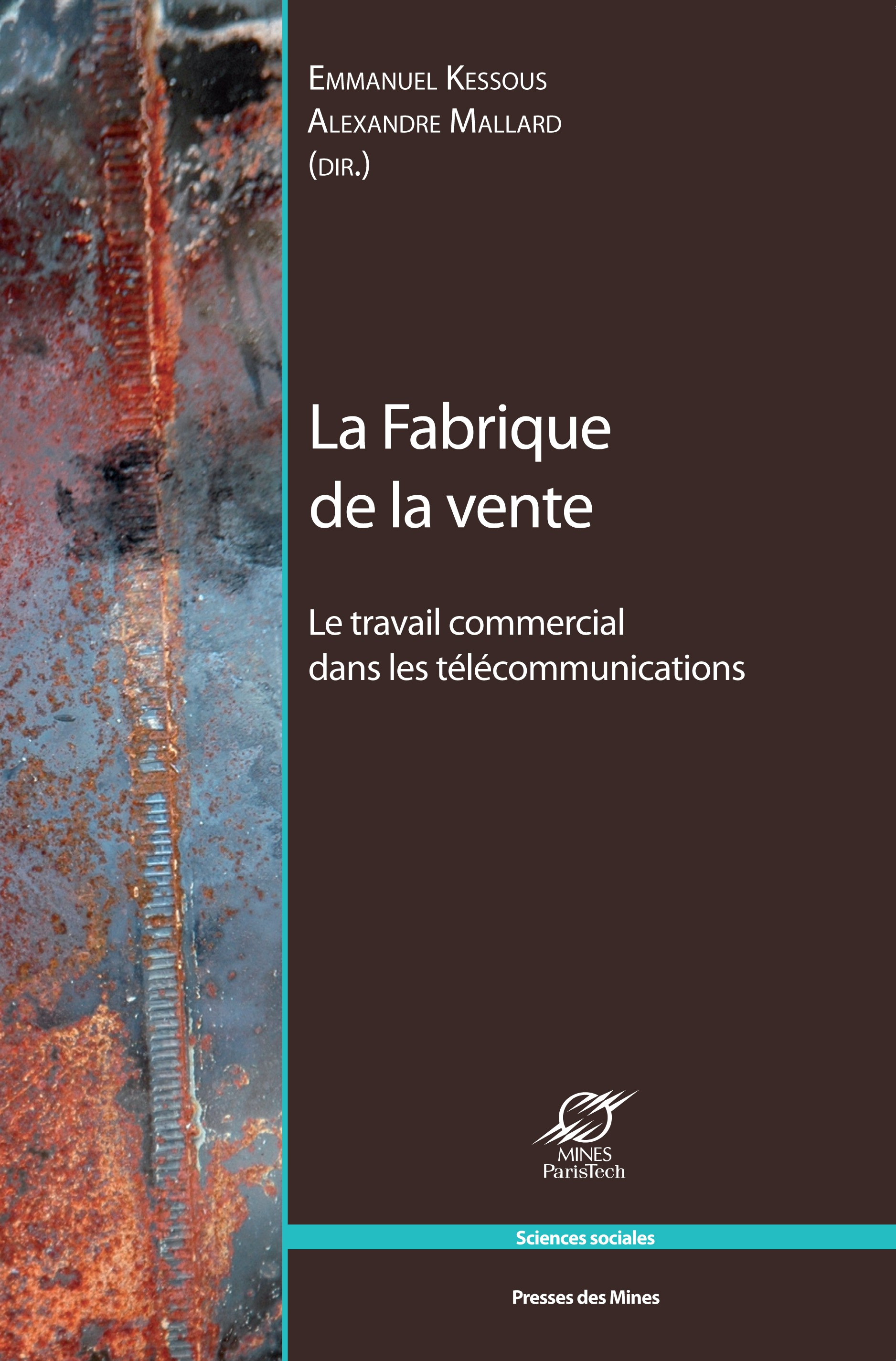 |
KESSOUS E., MALLARD A., 2014, La Fabrique de la vente. Le travail commercial dans les télécommunications. ,
Paris, Presses des Mines.
Dans une société où le marché pénètre toutes les sphères d’activité, la vente devient une épreuve décisive. Or, si de nombreuses études se sont intéressées aux habits neufs du consommateur, les mécanismes du travail commercial restent, eux, mal connus.
Cet ouvrage s’intéresse à cette activité qui mobilise l’énergie, les compétences et les savoirs de nombreux professionnels. Il analyse le travail des vendeurs en boutique et des téléconseillers des centres d’appels, des spécialistes de la publicité et des experts du datamining ou de l’informatique commerciale. Les enquêtes qu’il rassemble ont été conduites dans les départements d’une grande entreprise du secteur des télécommunications, marqué au cours des dernières années par des innovations permanentes, de nouvelles méthodes de marketing et des réorganisations continues des tâches. On y verra les différentes facettes du travail des vendeurs, la contribution des clients à la production des savoirs sur le marché, le rôle croissant des technologies de communication et l’importance de l’organisation des processus commerciaux. Comment peut-on découvrir les désirs des clients ? Comment leur faire comprendre l’usage des nouveaux produits ? Quels outils statistiques ou marketing contribuent à une meilleure efficacité de la vente ? La publicité peut-elle transformer la relation au client ? Cet ouvrage montre comment ces questions apparemment simples trouvent des réponses élaborées dans la fabrique de la vente. L’ouvrage intéressera donc à la fois les chercheurs spécialistes du marché, mais aussi les professionnels concernés par les multiples opérations de mise sur le marché. |
| |
KESSOUS E., MALLARD A., 2014, «Quand la vente fait son marché. Vers une sociologie du travail d’organisation commerciale.» ,
in KESSOUS E., MALLARD A., (ed.), La Fabrique de la vente. Le travail commercial dans les télécommunications, Paris, Presses des Mines, p.7-44. |
| |
KESSOUS E., MALLARD A., 2014, «Les appuis conventionnels du télémarketing» ,
in KESSOUS E., MALLARD A., (ed.), La Fabrique de la vente. Le travail commercial dans les télécommunications, Paris, Presses des Mines, p.63-96. |
| |
KESSOUS E., MALLARD A., MOUNIER C., 2014, «A la découverte du client» ,
in KESSOUS E., MALLARD A., (ed.), La Fabrique de la vente. Le travail commercial dans les télécommunications, Paris, Presses des Mines, p.45-62. |
| |
LAURENT B., 2014, «The politics of European agencements: constructing a market of sustainable biofuels» ,
Environmental Politics, (published online 8 august 2014), p.18.
The sustainability of biofuels has been the subject of heated debates in Europe. The 2009 Renewable Energy Directive (RED) introduced criteria meant to define whether biofuels are sustainable. These criteria, relating to the level of greenhouse gas emissions and the types of land used to produce biofuels, are expected to be implemented through certification schemes associating private companies and public bodies (whether national or European). Using recent works in the sociology of markets, I consider these sustainability schemes as agencements, a lens for the study of the construction of a market in sustainable biofuels and for the analysis of European integration. I focus on the mass balance system, which, meant to track the circulation of biofuels qualified as sustainable, is a compromise, implemented at the price of pervasive uncertainties and difficulties. The European political and economic organisation is at stake in discussions related to the extent of the control exercised through the sustainability schemes by virtue of the mass balance system, and a politics of subsidiarity and a politics of harmonisation are at the heart of the making of a European market for sustainable biofuels. The description of the agencements organising European markets in sustainable biofuels points to the importance of coexistence as an economic and political operation. |
| |
LAURENT B., 2014, «Coopérer pour construire un marché international. Les instruments de la coopération internationale et leurs effets.» ,
in HALPERN C., LASCOUMES P., LE GALÈS P., (ed.), L'instrumentation de l'action publique., Paris, SciencesPo Les Presses, p.465-492.
Les instruments organisant la coopération internationale sont élaborés dans des institutions qui sont le siège d'échanges techniques et politiques. La standardisation et l'expertise internationale dans le domaine des nanotechnologies montrent l'importance des instruments. En problématisant tant la coopération internationale que les nanotechnologies, ces instruments ont des effets sur le traitement des objets techniques et les modes d'implication des publics. |
| |
MALLARD A., 2014, «Préface» ,
in PASQUIER D., BEAUDOIN V., LEGON T., (ed.), "Moi je lui donne 5/5". Paradoxes de la critique amateur en ligne., Paris, Presses des Mines, p.7-11. |
| |
MALLARD A., 2014, «Métamorphoses d’une question scientifique. Trente ans de recherches sur l’inscription des TIC dans les univers productifs» ,
Réseaux, 32 (184-185), p.33-69.
Cet article examine les recherches publiées au cours des 30 dernières années par la revue Réseaux sur le rôle des Technologies d’Information et de Communication dans les entreprises et les marchés. Il propose un triple parcours de lecture, documentant successivement l’histoire des technologies, les coopérations scientifiques qui sous-tendent la production de Réseaux, et les métamorphoses problématiques qu’a connues l’analyse des liens entre technologie et organisation. Informé par une démarche de sociologie des sciences, il questionne les relations entre les technologies, les perspectives théoriques qui ont rendu compte de leur inscription productive et les chercheurs en sciences sociales qui les ont étudiées.
This article examines the research published by the journal Réseaux over the last 30 years, on the role of Information and Communication Technology in companies and markets. It offers a threefold analysis, documenting in turn the history of technology, the forms of scientific cooperation underpinning the production of Réseaux, and the metamorphoses that the analysis of the links between technology and organization has undergone. Based on a sociology of science approach, it investigates the relations between technologies, the theoretical perspectives that have described their engagement in productive systems and the social scientists who have studied them. |
| |
MALLARD A., MÉADEL C., MUSIANI F., 2014, «The Paradoxes of Distributed Trust: Peer-to-Peer Architecture and User Confidence in Bitcoin» ,
Journal of Peer Production, 4p.10.
Accès au texte »
The decentralized electronic currency system Bitcoin gives the possibility to execute transactions via direct communication between users, without the need to resort to third parties entrusted with legitimizing the concerned monetary value. In its current state of development - a recent, fast-changing, volatile and highly mediatized technology - the discourses that unfold within spaces of information and discussion related to Bitcoin can be analysed in light of their ability to produce at once the representations of value, the practices according to which it is transformed and evolves, and the devices allowing for its implementation. The literature on the system is a testament to how the Bitcoin debates do not merely spread, communicate and diffuse representation of this currency, but are closely intertwined with the practice of the money itself. By focusing its attention on a specific corpus, that of expert discourse, the article shows how, introducing and discussing a specific device, dynamic or operation as being in some way related to trust, this expert knowledge contributes to the very definition and shaping of this trust within the Bitcoin system - ultimately contributing to perform the shared definition of its value as a currency. |
| |
MANSIER P., MÉADEL C., SÉCAIL C., 2014, «Présentation du dossier "Santé à la une".» ,
Le Temps des Médias, (23), p.6-12. |
| |
MÉADEL C., 2014, «Auteur» ,
in FRAU-MEIGS D., KIYINDOU A., (ed.), Diversité culturelle à l'ère du numérique. Glossaire critique, Paris, La documentation française, p.45-48. |
| |
MÉADEL C., 2014, «"Partager ma propre opinion". La grippe H1N1 : connaissances et échanges électroniques» ,
Le Temps des Médias, (23), p.128-140.
Dans les domaines de la santé où la connaissanc était jusqu'au début des années 1990 très spécialisée et réservée à des sphères professionnelles fermées, l'internet a accompagné et favorisé une tarnsformation radicale de la circulation des savoirs ; les patients ont désormais à leur disposition une masse considérable d'informations. Cette ouverture vient mettre au défi les anciens partages entre savant et profane, entre connaissance validée et opinion informée. L'échec au moins relatif de la campagne de vaccination contre la grippe H1N1 en 2009 permet de s'interroger sur la circulation des connaissances et sur les trajectoires informatives des patients-citoyens. |
| |
MERLIN J., 2014, «L’émergence d’une compétence environnementale autochtone ? Le cas de Goro-Nickel en Nouvelle-Calédonie» ,
Terrains & Travaux, 2014/1 (24), p.85-102.
Accès au texte »
Cet article expose une controverse au cours de laquelle une nouvelle catégorie d’acteurs, se définissant comme autochtones et environnementalistes, s’est instaurée suite à un conflit minier en Province-Sud de la Nouvelle-Calédonie. Le texte revient sur la façon dont des
associations écologistes ont fait cause commune avec des populations locales kanak pour lutter contre le projet minier de Goro-Nickel, créant ainsi une forme de mobilisation nouvelle sur le territoire et participant à la définition de nouveaux espaces politiques et scientifiques
This article aims to present the study of a controversy in which a new category of actors, who define themselves as « indigenous and environmentalist », has been established following a mining conflict in South Province of New Caledonia. The text shows the way environmental
groups have made common cause with local Kanak people to protest against the mining project Goro Nickel. |
| |
MEYER M., 2014, «La construction de l’Université du Luxembourg: histoire, politique, controverses» ,
in BETTAHAR Y., CHOFFEL-MAILFERT M., (ed.), Les Universités au Risque de l’Histoire – Principes, configurations, modèles, Nancy, Y. Bettahar et M.J. Choffel-Mailfert, p.411-437. |
| |
MEYER M., 2014, «Hacking life? The politics and poetics of DIY biology» ,
in BUREAUD A., MALINA R., WHITELEY L., (ed.), Meta-Life. Biotechnologies, Synthetic Biology, Life and the Arts, Cambridge, Annick Bureaud, Roger F. Malina and Louise Whiteley, |
| |
MEYER M., 2014, «Quand le labo s’expose : communiquer la recherche scientifique dans un musé» ,
Politique de l'Image, (8), p.92-99. |
 |
MUNIESA F., 2014, The Provoked Economy. Economic reality and the performative turn ,
London, Routledge.
Do things such as performance indicators, valuation formulas, consumer tests, stock prices or financial contracts represent an external reality? Or do they rather constitute, in a performative fashion, what they refer to? The Provoked Economy tackles this question from a pragmatist angle, considering economic reality as a ceaselessly provoked reality. It takes the reader through a series of diverse empirical sites - from public administrations to stock exchanges, from investment banks to marketing facilities and business schools - in order to explore what can be seen from such a demanding standpoint. It demonstrates that descriptions of economic objects do actually produce economic objects and that the simulacrum of an economic act is indeed a form of realization. It also shows that provoking economic reality means facing practical tests in which what ought to be economic or not is subject to elaboration and controversy. This book opens paths for empirical investigation in the social sciences, but also for the philosophical renewal of the critique of economic reality. It will be useful for students and scholars in social theory, sociology, anthropology, philosophy and economics. |
| |
MUSIANI F., 2014, «Neutralité de l’internet» ,
in FRAU-MEIGS D., KIYINDOU A., (ed.), Diversité culturelle à l'ère du numérique. Glossaire critique., Paris, La documentation française, p.227-231. |
| |
ORTIZ H., 2014, «The Limits of Financial Imagination: Free Investors, Efficient Markets, and Crisis» ,
American Anthropologist, 116 (1), p.18-50.
Fieldwork with a team of investment managers investing in credit derivatives in Paris in 2004 shows how the concepts of “investor” and “market efficiency” are central in the technicalities of their procedures, in diverse and contradictory ways. The employees refer to their moral and political contents, as they are articulated in liberal philosophy and in financial regulation, to make sense of their careers and of the social role of finance. “Crisis” is then defined as a deviation from market efficiency, itself expected to lead to an optimal allocation of credit. These concepts thus constitute the limited repertoire of the meaning of practical rules followed by employees for a remuneration, within a bureaucratic commercial network, in a setting very different from the utopias from which the concepts stem. Therefore, anthropologists must not use them as analytic tools; rather, such concepts should be understood as part of the object of study.
Une enquête de terrain auprès de gérants de fonds investissant en dérivés de crédit à Paris, en 2004, montre comment les concepts d’«investisseur» et de «marché efficient» sont centraux dans les détails techniques de leurs procédures, de manières multiples et contradictoires. Les employés mobilisent les référents moraux et politiques de ces concepts, articulés dans les philosophies libérales et la régulation financière, pour faire sens de leurs carrières et du rôle social de la finance. La «crise» est ainsi définie par opposition à l'efficience des marchés, censée aboutir à une allocation optimale du crédit. Loin des utopies dont ils sont issus, ces concepts constituent ainsi le répertoire limité du sens des pratiques que les employés effectuent pour une rémunération, dans un réseau commercial bureaucratique. Nous devons donc les comprendre comme faisant partie de l'objet étudié, sans les utiliser comme outils analytiques. |
| |
ORTIZ H., 2014, «Funcionalismo, idealismo y pragmatismo: dilemas sobre el dinero en las ciencias sociales» ,
Perspectivas. Revista de Anàalisis de Economìa, Comercio y Negocios Internacionales, 8 (Nùm. Especial, agosto 2014), p.135-154.
Accès au texte »
A través del funcionalismo, el idealismo y el pragmatismo, la ciencias sociales han analizado la relaciòn intima que existe entre el dinero, el estado, la polìtica monetaria, las desigualdades y los conflictos sociales. Estas teorìas deben ser analizadas de manera reflexiva, entendiendo los lazos entre su ontologìa, su capacidad descriptiva y su potencial normativo. Después de presentar las grandes lìneas de estas corrientes en las ciencias sociales de hoy, el texto explorarà còmo estos tres elementos juegan de manera distinta en la definiciòn y el anàlisis de lo que se considera hoy como una "crisis financiera".
Through functionalism, idealism and pragmatism, social scientists have analyzed the relationship between money, state, monetary policy, inequality and social conflict. These theories must be thoughfully analyzed, understanding the links between their ontology, their descriptive and their normative potential. After representing the main lines of these trends in the contemporary social sciences, this text will explore how these three elements play diffrently in the definition and analysis of what is considered today as a "financial crisis" |
| |
PONTILLE D., TORNY D., 2014, «The Blind Shall See! The Question of Anonymity in Journal Peer Review» ,
Ada: A Journal of Gender New Media & Technology, (4), p.1.
Accès au texte »
his article examines the issue of the respective knowledge of authors and reviewers: is it fairer to judge a manuscript in the full light of day, or hidden away from prying eyes? Should one know everything about the authors of a manuscript, or nothing at all? In short, does the anonymity of the reviewers and/or authors guarantee or prevent an objective assessment? It looks at how these became central issues for scientific journals between 1950 and 1970. It then examine how, from the 1980s onwards, a certain number of categories became stabilized, such as the "single blind" and "double blind" and "open review", which lay down the options available to journals and learned societies. |
 |
RABEHARISOA V., CALLON M., MARQUES FILIPE A., ARRISCADO NUNES J., PATERSON F., VERGNAUD F., 2014, «From ‘politics of numbers’ to ‘politics of singularisation’: Patients’ activism and engagement in research on rare diseases in France and Portugal» ,
BioSocieties, 9 (2), p.194-217.
This article investigates how the engagement of patients’ organisations (POs) in research relates to the dynamics of their activism in the area of rare diseases. It traces back how certain concerned families and groups elaborated rareness as an issue of equity and social justice, gave shape to what we call a ‘politics of numbers’ for stating the fact of rare diseases as a major public health problem, and promoted patients’ critical involvement in biomedical and therapeutic research as a solution for mainstreaming rare diseases in regular health systems. It then studies three Portuguese and three French POs, which point to the limits of the epidemiological notion of rareness for capturing the compounded and intersecting nature of the bio-psycho-social make-up of their conditions. It finally shows how these critics progressively lead to the emergence of an alternative politics, which we call a ‘politics of singularisation’. At the core of this politics stands a collective and ongoing profiling of conditions and patients, whose similarities and differences relates to the ubiquity of biological pathways and diseases categories. Our contention is that this ‘politics of singularisation’ not only pictures a politics of illnesses which questions the rationale for nosological classifications, but also, and consequently, affects the making of social links by suggesting the simultaneous identification of individual patients and constitution of collectives to which they partake while asserting their specificities. |
 |
RABEHARISOA V., MOREIRA T., AKRICH M., 2014, «Evidence-based activism: Patients’, users’ and activists’ groups in knowledge society» ,
BioSocieties, 9 (2), p.111-128.
This article proposes the notion of ‘evidence-based activism’ to capture patients’ and health activists’ groups’ focus on knowledge production and knowledge mobilisation in the governance of health issues. It introduces empirical data and analysis on groups active in four countries (France, Ireland, Portugal and the United Kingdom), and in four condition-areas (rare diseases, Alzheimer’s disease, ADHD – Attention Deficit Hyperactivity Disorder and childbirth). It shows how these groups engage with, and articulate a variety of credentialed knowledge and ‘experiential knowledge’ with a view to explore concerned people’s situations, to make themselves part and parcel of the networks of expertise on their conditions in their national contexts, and to elaborate evidence on the issues they deem important to address both at an individual and at a collective level. This article argues that in contrast to health movements which contest institutions from the outside, patients’ and activists’ groups which embrace ‘evidence-based activism’ work ‘from within’ to imagine new epistemic and political appraisal of their causes and conditions. ‘Evidence-based activism’ entails a collective inquiry associating patients/activists and specialists/professionals in the conjoint fabrics of scientific statements and political claims. From a conceptual standpoint, ‘evidence-based activism’ sheds light on the ongoing co-production of matters of fact and matters of concern in contemporary technological democracies. |
| |
RABEHARISOA V., O'DONOVAN O., 2014, «From Europeanization to European Construction. The role of European patients’ organizations in the shaping of health-care policies.» ,
European Societies, (Published online 13 august 2014), p.1-25.
In this article, we examine how European patients’ organizations (EPOs) contribute to moving patient advocacy beyond national level organizing and acting. In contrast to Europeanization studies, our contention is that EPOs are not content merely to bring national claims up to the European level nor simply enrich national debates with European issues. Rather, we argue that EPOs engage in a compounded multilevel construction of patients as ‘European individuals’ and of their conditions as matters of concern for Europe. Based on an analysis of the projects, pronouncements, and politics of three EPOs – European Organization on Rare Diseases, Alzheimer Europe, and Attention Deficit Hyperactivity Disorder Europe – we explore how they form European communities of patients and give shape to health issues they deem important to address at European level. We show that EPOs’ involvement in the ongoing construction of Europe relies on their capacities to collect, format, and circulate comparative facts, figures, and data on the functioning of domestic health systems, drawn notably on their members’ experiences. This helps them to raise discussions on the need for European health-care policies which articulate a ‘Europe of markets’ and a ‘social Europe’ to the, benefit of the patients. We discuss the form of politics that this EPOs’ ‘evidence-based activism’, as we all it, entails, and conclude with a few thoughts on their influence on the making of European health-care policies. |
 |
TIRONI M., LAURENT B., 2014, «Experiments for industrial exploration: testing a car-sharing system» ,
Working paper.
Accès au texte »
In June 2012, Renault turned Saint-Quentin-en-Yvelines, a town on the outskirts of Paris, into a experimentation and demonstration laboratory. The company introduced a fleet of 50 electric cars as part of a car sharing system without fixed stations called Twizy Way. This scheme falls in line with the manufacturer's development strategy for the electric car market. According to one of the main project managers, this program is a “first step into new mobilities”. In this paper will try and present what we consider a quite poorly documented aspect of the STS debate on experimenting and related to boundary work for the experiment. We will therefore take into account the ontological work the experiment will produce as well as its demonstrative ability and the way it intertwines knowledge, as part of this boundary drawing within the framework of the experiment itself. We do not aim at challenging the countless works focusing on the performative effects of experiments, we rather reflect on the fact that its limits are often taken for granted and analyse moments of doubt and negotiation concerning what is considered experimental or not. We do not plan on using definition for any social, technical, economic, ecological, urban or political element involved in the experiment and will consider them, on the contrary, as the temporary and negotiated result of this very operation of laboratorisation. That is why we will speak of a form of flexible laboratorisation affected by doubt and constant reorganisation of the elements making up, overflowing and interfering with the experiment. |
| |
VANGEEBERGEN T., 2014, «Book review. Gingras Yves, Sociologie des Sciences, Paris, PUF, 2013, 128 p.» ,
Tecnoscienza. Italian Journal of Science & Technology Studies, 5 (1), p.226-229.
Accès au texte » |
| |
YON G., 2014, «L’intérêt général et l’investissement. Coût marginal de long terme et tarification à électricité de France (1948-1949)» ,
Annales historiques de l'électricité, (12), p.43-63.
L’article se propose d’enquêter sur la construction d’un concept de théorie économique, le coût marginal à long terme. Il faut pour cela se plonger dans le travail des ingénieurs-économistes d’Électricité de France, qui, dans les années 1948-1949, alors qu’ils commencent à rebâtir complètement la tarification du nouveau monopole public, inventent la notion. Nous essaierons de montrer que le concept projette une
réorganisation d’ampleur du parc de production, de façon à faire fonctionner dans le secteur électrique une certaine conception de l’intérêt général.
The paper investigates the construction of a concept in economic theory, long-term marginal cost pricing. It does so by exploring the work done within Électricité de France in 1948-1949 by a group of engineer-economists who came out with the notion while they were engaged in completely remaking the pricing policy of the new public monopoly. I will show that the concept envisages a large-scale reorganization of the
national power generation capacity in order to enact a certain conception of the general interest in the electric sector. |
| |
YON G., 2014, «L’économicité d’EDF. La politique tarifaire d’Electricité de France et la reconstruction de l’Economie nationale, de la nationalisation au milieu des années 1960.» ,
Politix, 2014/1 (105), p.91-115.
La politique économique menée dans la France de l’après-guerre est usuellement qualifiée de keynésienne. Un certain nombre d’études récentes ont cependant attiré l’attention sur les ambivalences et les contradictions de cette configuration, qui semble se craqueler dès les années 1950. Saisissant cette hypothèse de travail, le présent article s’intéresse à la politique tarifaire d’Électricité de France (EDF), monopole public qui couvre un pan entier de l’économie, et non des moindres : la production, le transport et la distribution de l’électricité, pour tous les consommateurs de la nation, sans exception. Contournant le discours des acteurs, qui considèrent la question sous l’angle d’un pur problème technique d’efficacité économique, l’enquête cherche à montrer qu’à partir de la tarification se déploie une « mise en ordre » de l’économie française très particulière. Appuyée sur les grands Corps de l’État, dirigée par la figure tutélaire de Maurice Allais, mise en œuvre par Marcel Boiteux et Pierre Massé, elle instaure le Service des études économiques générales d’EDF en agrégateur central qui oriente les flux de matière de façon à utiliser à plein les capacités de production, comme en temps de guerre. Mais, singularité profonde du régime étudié, cette planification de long terme fait advenir, au sein même d’un monopole d’État, un marché : les prix sont un appui pour discipliner les consommateurs. L’article propose donc de se doter d’une vision plurielle de l’économie française de l’époque : à côté du keynésianisme, d’autres agencements voient le jour, dès la fin de la guerre.
The economic policy carried out in post-war France is usually qualified as Keynesian. However, recent work draws attention to the ambivalences and contradictions of this particular historical configuration. By building on such hypothesis, the article focuses on the pricing policy of Électricité de France, a public monopoly that covered a whole area of the economy : the production, transportation and distribution of electricity for all citizens of the nation, without exception. The inquiry proposes to suspend the rhetoric used by the actors, who considered the issue as a technical problem of economic efficiency, in order to demonstrate that pricing deployed a very specific ordering of the French economy. Conducted by Marcel Boiteux and Pierre Massé, the operation relied on the Corps de l’État and the economic theory developed by one of their tutelary figure, Maurice Allais. It established EDF’s Economic Studies Service as a central aggregator that directed the flows of materials in order to fully use the production capacities, as in time of war. But – and this is a characteristic of the studied configuration – the long-term planning created a market within the state monopoly and prices became a mean to discipline the consumers-citizens. The article thus shows that in the 1950s other economic agencements existed alongside Keynesianism and argues for a plural vision of the French economy of that time. |
| |
YON G., 2014, «Formulations of the Public Interest. The Pricing of Electricity in Postwar France (1946-1964)» ,
Economic Sociology_The European Electronic Newsletter, 15 (2), p.65-67. |
| |
YON G., 2014, «Compte-rendu. Timothy Mitchell, Carbon Democracy. Le pouvoir politique à l’ère du pétrole, Paris, La Découverte, 2013» ,
Sociologie du Travail, (56), p.268-270. |
 |
AKRICH M., O'DONOVAN O., RABEHARISOA V., 2013, «The entanglement of scientific and political claims: towards a new form of patients’ activism» ,
Working paper.
Accès au texte »
Drawing on fieldwork in four condition areas (rare diseases, childbirth, Attention Deficit Hyperactivity Disorder, and Alzheimer’s disease), this
article shows that patients’ organizations’ (POs) engagement with knowledge is neither limited to a set of diseases nor restricted to biomedical
knowledge. Their work on and with academic and experiential knowledge contributes to an understanding of their conditions and the problems
they induce, and to the shaping of the causes they defend. This results in the production of new evidence for grounding research and health
policies in their condition areas. The authors propose the notion of “evidence-‐based activism” to capture the centrality of knowledge activities
in contemporary POs. |
| |
ANNANDALE E., RABEHARISOA V., SCAMBLER G., SEALE C., UMBERSON D., 2013, «Théorie sociologique et sociologie de la santé et de la médecine dans les revues internationales.» ,
Sciences Sociales et Santé, 31 (1), p.13-35. |
| |
BADOUARD R., MONNOYER-SMITH L., 2013, «Hyperlinks as Political Resources: The European Commission Confronted with Online Activism» ,
Policy and Internet, 5 (1), p.101-107.
Since the early 2000s, the European Commission has put online e-participation and e-government platforms related to various institutional strategies. These participative mechanisms, which are both policy instruments and communication tools for the Commission, are used by activists as political opportunities to make their voices heard by the European institutions. In this paper, we describehow these activists use Web technical resources, and foremost hyperlinks, to mobilize individuals and run online collective actions in order to make their causes public on European scenes. We show that hyperlinks can be considered as aggregative mechanisms which allow individuals to gather around a common project, and that these mobilization practices lead to the constitution of strategic public spheres on the Web. |
| |
BEAUVISAGE T., BEUSCART J., CARDON V., MELLET K., TRESPEUCH M., 2013, «Notes et avis de consommateurs sur le web. Les marchés à l’épreuve de l’évaluation profane» ,
Réseaux, (177), p.131-161.
Parmi les différentes sources d’information disponibles en ligne, les avis de consommateurs sont aujourd’hui très couramment utilisés. Ce dispositif de classement et de recommandation des biens et services se retrouve sur la plupart des sites de e-commerce mais également sur des plateformes dédiées, généralistes ou spécialisées (Ciao, Tripadvisor, Allocine, etc.). Il prend une forme relativement standardisée, combinant, modulo quelques variations, agrégation de notes et commentaires rédigés. À partir de l’observation de l’architecture de ces sites, du traitement de jeux de données collectées à cette fin et d’entretiens, l’article rend d’abord compte de la diffusion du dispositif « Note et Avis » en soulignant le mimétisme ou au contraire les aménagements spécifiques établis par les plateformes en fonction des équipements préexistants sur les marchés. L’article analyse ensuite les différentes façons dont, sur le Web, la parole profane est mise en forme par le dispositif et s’articule ou entre en conflit avec les formes expertes de l’évaluation des produits. Une typologie est enfin proposée pour cartographier le monde des sites de Notes et Avis, à partir, d’une part, des caractéristiques des produits qui sont évalués et, d’autre part, de la nature de l’incertitude sur la(es) qualité(s) qui pèse sur le consommateur dans sa phase de prospection.
Among the different sources of information available online, consumer reviews are now widely used. This ranking and recommendation system for goods and services is found on most e-commerce sites, as well as on dedicated platforms, both general and specialized (Ciao, Tripadvisor, Allocine, etc.). Its form is relatively standardized and combines, give or take a few variations, an aggregate of ratings and written comments. By analysing the architecture of these sites, processing data sets collected for this purpose, and drawing on interviews, this article first reports on the spread of the “Rating and Review” system. It highlights the imitation or on the contrary the specific arrangements introduced by the platforms based on pre-existing facilities on the market. The article then analyses the different ways in which, on the Web, lay speech is formatted by the system and articulates or conflicts with expert forms of product assessment. Finally, it offers a typology to map out the world of Ratings and Reviews sites, based on both the characteristics of the products assessed and the nature of the uncertainty about the quality(ies) weighing on consumers in the exploratory phase. |
| |
BEUSCART J., MELLET K., 2013, «Competing Quality Conventions in the French Online Advertising Market» ,
Journal of Cultural Economy, (first published online march 18, 2013).
Accès au texte »
This paper builds upon an empirical study of suppliers of online advertising space in France in order to highlight the plurality of quality conventions that organize the activity of market intermediaries. We show that the market is organized around two different quality conventions, the ‘media’ convention and the ‘direct-response’ convention, each equipped with specific efficiency indicators, pricing methods and selling channels. Then we focus on the growing conflict of territory between the two conventions; we analyse the balance of power between the conventions and the arenas where they compete. We observe that the collective action of the defenders of the traditional world is not (yet) sufficient to contain the pervasiveness of the indicators and metrics from the world of direct-response. |
| |
BOURDON J., MÉADEL C., 2013, «Rational Wizards: audience interpreters in French television» ,
VIEW, Journal of European Television History and Culture, 2 (4), p.68-78.
This paper will tell the story of the small group of people who, in France, have been in charge of
the measurement and the appreciation of television audiences, and had to invent audience research. They
had to organize it and to communicate its results to ‘clients’ who depended on it much earlier than usually
assumed. These ‘clients’ were: television managers and professionals, public authorities, and, last but not
least, advertisers. The paper will explore how the professional origin and training of measurers has changed
over the years: from having an almost literary background to having a formation in sociology and semiology. It
gives insights into how the roles of measurers changed from assessing viewers’ satisfactions, preferences and
viewing habits from 1949 until the mid-60s, to producing audience figures from the mid-60s to the mid 70s and
more and more to providing daily, detailed, and quickly produced figures of the audience through audiometers
by the mid-80s and afterwards. Despite these changes, the need for effective mediations existed all along.
Those mediators - the figures and reports - played several roles. Particularly - and this is true today - they
provided channel managers with a source of ‘para-democratic legitimacy.’ For the ‘profession’ of measurers,
this means that they have always played an important role, as spokespersons of the audience, equipped
with an almost magical kind of knowledge: they had the power to ‘read’ the will and whims of a mysterious,
anonymous mass of viewers. |
 |
BOURGOIN A., 2013, «Le conseil en management à l’épreuve de sa mise en valeur : une étude empirique» ,
Thèse de doctorat, Paris, École Nationale Supérieure des Mines de Paris.
Accès au texte »
Comment se façonne, en pratique, la valeur d’une prestation de conseil en management ? Malgré le dynamisme du marché qui lui confère une légitimité de fait, le conseil en management est à la fois mal connu et brocardé par la critique : on s’interroge sur l’efficacité de ses méthodes, sur la valeur ajoutée de ses préconisations. Les outils de la sociologie pragmatiste permettent de jeter un éclairage nouveau sur ces questions, en contournant l’opposition classique entre une approche fonctionnaliste (rationnelle-technique) et une approche critique (psycho-sociale) du métier. L’argument central de la thèse est que le conseil en management doit être compris comme une performance entièrement tendue vers un enjeu d’efficacité pratique qui se découvre dans l’action. La valeur émerge de la prestation en train de se faire : elle sanctionne la félicité d’un attachement socio-technique entre le consultant et le système-client dans lequel il intervient. Basée sur une immersion complète de près de trois ans dans un cabinet international, la thèse est une ethnographie de la pratique des consultants en mission dans différents grands groupes. Elle décrypte, en particulier, cinq opérations de mise en valeur qui augmentent la densité et l’impact de l’activité de conseil en management dans les systèmes-clients : la singularisation de la prestation, la montée en compétence du consultant, la production de son autorité, la présentation graphique du diagnostic et le signalement de l’activité. L’étude empirique de ces mécanismes permet d’alimenter une théorie pragmatiste de la valeur comme forme pratique d’attachement et de mieux comprendre les enjeux du capitalisme contemporain.
How does work the fabric of management consulting’s value? Despite the dynamism of the market, consultants’ practice remains poorly known and often criticized. One questions the efficacy of their methods and the general value added of their recommendations. The intellectual tools of the pragmatist sociology allow us to shed a new light on these matters, getting around the classic opposition between a functionalist (rational-technical) and a critical (psycho-social) approach to the practice. The key argument of the dissertation is that management consulting should be understood as a performance geared toward a practical efficacy. Value emerges from the service as it is being performed: it sanctions the felicity of a socio-technical attachment between consultants and their client-system. The dissertation is grounded on a complete involvement in a large French consulting firm, for about three years. It is an ethnographic account of the practices of consultants during their assignments within various large organizations. It decrypts specifically five valuation processes that intensify the density and the impact of the service in client-systems: (1) the singularization of the service, (2) the rise in competence of consultants, (3) the production of their authority, (4) the graphical presentation of the diagnosis and (5) the signaling of activity. The empirical study of such mechanisms fuels a pragmatist theory of value as a practical attachment and allows us to better understand the stakes of contemporaneous capitalism. |
 |
BOURGOIN A., BENCHERKI N., 2013, «The performance of authority in organizations: an example from management consulting» ,
Working paper.
Accès au texte »
In this paper, we sketch a pragmatist model of authority. We show that, as authority is concretely
performed through interaction, it contributes to the constitution of organizational boundaries.
Through the case of a six-month consultancy assignment at a large French energy group, our
study highlights that authority is not only the result of a mandate or a particular endowment of the
consultant, but has constantly to be established as everyday work unfolds. We argue that a
consulting assignment involves a large share of ambiguity which, while being a source of
uncertainty, also allows the consultant to position himself as acting on behalf of a variety of
figures that lend weight to his actions and authorize them. We identify three different forms that
these figures can take: people, material artifacts and abstract entities. Finally, we show that it is
the mobilization of some figures rather than others that situates the consultant either within or
outside organizational configurations, thus allowing him to tactically act as an outsider or an insider |
 |
BOXENBAUM E., LAURENT B., LACOSTE A., 2013, Nouvelles énergies pour la ville du futur ,
Paris, Presses des Mines.
Comment intégrer les énergies nouvelles dans la ville du futur ? Comment construire une ville qui produit autant d’énergie qu’elle en consomme, tout en favorisant l’économie locale ou nationale ? Quels obstacles devront être surmontés ?
Pour répondre à ces questions, ce livre fait le pari méthodologique de la discussion collective et contradictoire ; il multiplie les points de vue et donne la parole à des architectes, des ingénieurs, des entrepreneurs, des membres de l’administration ou de grandes entreprises privées, des chercheurs, des consultants et des représentants des usagers. Il est complété par la mise en perspective de l’expérience française par des exemples danois, américains et chinois. |
| |
BROSSARD B., GERBER D., MÉADEL C., 2013, «Des troubles en ligne. La recomposition de la “santé mentale" en ligne. Introduction» ,
Revue RESET (Social Science Research on the Internet), (2), p.online.
Accès au texte » |
| |
CALLON M., 2013, «La démocratie du carbone. A propos de Carbon democracy de Tim Mitchell» ,
Le Libellio d'AEGIS, 9p.53-70.
1 |
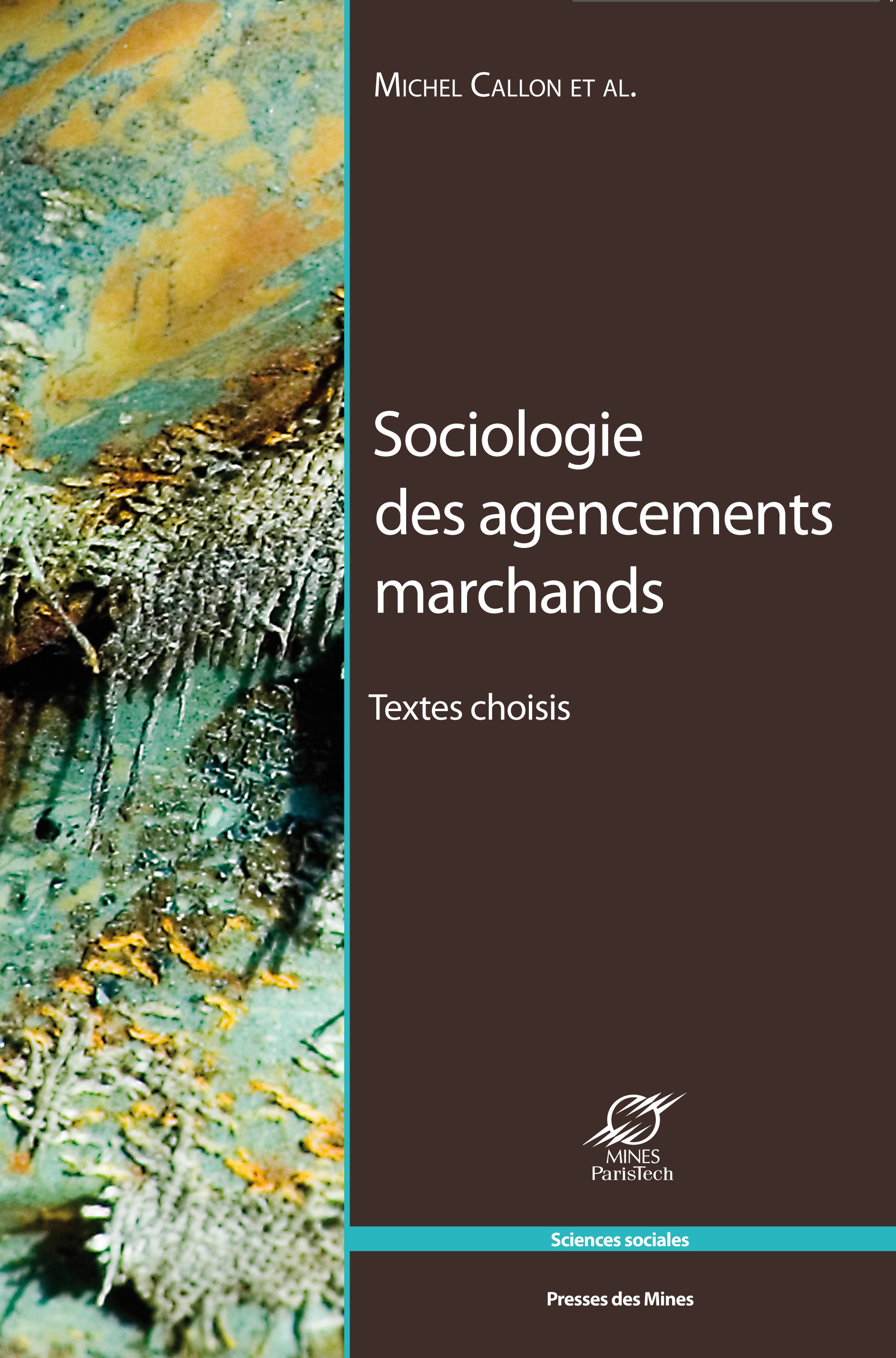 |
CALLON M., AKRICH M., DUBUISSON-QUELLIER S., GRANDCLEMENT C., HENNION A., LATOUR B., MALLARD A., MÉADEL C., MUNIESA F., RABEHARISOA V., 2013, Sociologie des agencements marchands. Textes choisis ,
Paris, Presses des Mines.
Qu’est-ce que le marché ? Depuis une quinzaine d’années, Michel Callon et les chercheurs du centre de sociologie de l’innovation (CSI) de l’école des mines se penchent sur cette question si peu discutée par les recherches en économie ; ils l’interrogent dans le prolongement des travaux qu’ils menaient autour de la sociologie de la traduction, dite encore théorie de l’acteur-réseau (ou Actor-Network Theory). Ces nouveaux travaux se caractérisent par l’attention accordée à l’ensemble des acteurs concernés par la formation des marchés, au rôle central des dispositifs techniques et des savoirs scientifiques, à l’importance des pratiques d’expérimentation et au processus de qualification des biens et des services.
L’ouvrage présente une sélection de textes importants qui ont servi de jalons à cette réflexion collective et qui sont toujours d’actualité. Il se clôt par un texte original et fondamental de Michel Callon qui explore un nouveau concept, l’agencement marchand ; il propose de le substituer à celui de marché-interface pour rendre compte de l’ensemble des activités et processus désormais au coeur de l’action marchande. |
 |
COMBES C., 2013, «La pratique des séries télévisées. Une sociologie de l’activité spectatorielle» ,
Thèse de doctorat, Paris, École Nationale Supérieure des Mines de Paris.
Accès au texte »
Que signifie aimer une « série télé » aujourd’hui ? Ou, selon une formulation plus pragmatiste, que font faire les séries à leurs spectateurs ? Pour répondre à ces questions, cette thèse invite à se démarquer du paradigme de la réception – lequel fournit la majorité des études sur le sujet – et explorer les ressorts et contours de la pratique des séries. Il s’agit d’étudier les activités concrètes dans lesquelles s’engagent les amateurs, la façon dont se tissent leur attachement aux séries, les ingrédients de ce tissage, les appuis et prises matériels, techniques et relationnels de cet attachement. Ce travail montre que la pratique spectatorielle ne s’arrête pas au seul moment du visionnage, lorsque l’individu est devant son poste, mais s’étend à l’ensemble des activités, des temps et des espaces au cours desquels celui-ci entre en relation avec une série. À partir d’une quarantaine d’entretiens approfondis et de l’examen des principaux relais sociotechniques et médiatiques des séries, la thèse se propose de suivre les amateurs dans leurs pratiques quotidiennes, du visionnage et de la conservation des séries à leurs échanges conversationnels, en passant par les procédures d’information et de découverte, d’approvisionnement et de partage de contenus. Autant d’activités, non pas seulement « réceptives », mais réflexives, corporées, instrumentées et collectives, qui permettent d’apprécier la diversité des formes d’attachement des « sériphiles » à ces objets singuliers.
What does it means to love a "TV series" nowadays? Or, to use a more pragmatic formulation, what do television series make their viewers do? To answer these questions, this thesis invites the reader to move beyond the paradigm of reception – on which the majority of studies in the field build upon - and explore the remits and contours of the practice of series. The aim is to study the practical activities undertaken by amateurs, how their attachments to the series are built, the ingredients of this attachment, and the material, technical and relational means of this attachment. This work shows that spectators’ practices do not stop at the moment of viewing, when the individual is in front of his post, but extends to all activities, times and spaces through which an individual connects to a series. Drawing upon forty in-depth interviews and an examination of the ways in which series are socio-technically mediated, the thesis proposes to follow amateurs in their daily practices, from the viewing and storage of series, to their conversational exchanges, as well as through the procedures of information and discovery, procurement and sharing of content. All these activities are not only "receptive". As the thesis shows, they are at once reflexive, embodied, instrumented and collective, and they reveal the diversity of attachments of the "seriephiles" to these singular objects. |
| |
DENIS J., PONTILLE D., 2013, «Ficelles pour une ethnographie de l’écrit» ,
in DATCHARY C., (ed.), Petit précis de méthodologie : le sens du détail dans les sciences sociales, Lormont, Editions Le bord de l'eau, p.17-30.
Ce texte montre que les activités d’écriture “infra-ordinaires” constituent un objet non seulement légitime mais largement fécond. Si les écrits occupent une place de choix en sociologie, ils sont souvent mobilisés au repos. Ici les auteurs nous invitent à les saisir en activité à travers trois thématiques - l’hétérogénéité matérielle de l’écrit, les relations que l’écrit entretient avec l’espace et les modes d’engagement des personnes dans et avec l’écrit – qui constituent autant de pistes concrètes pour apprendre à prêter attention à ces écritures mineures. Les auteurs livrent aux lecteurs des ficelles qu’ils peuvent facilement mobiliser sur leurs propres terrains, et qui permettent d’entreprendre ce qui ce qui s’apparente à une véritable rééducation du regard |
| |
DENIS J., PONTILLE D., 2013, «La fabrique scripturale du monde» ,
Échappées, p.36-48.
Cet article propose d’interroger la place de l’écrit dans notre monde à partir d’un double déplacement. Le premier consiste à faire un pas de côté vis-à-vis des études de sciences sociales qui s’intéressent majoritairement soit à la dimension textuelle de l’écrit, en privilégiant l’analyse des grandes œuvres de la littérature (ses formes, ses auteurs, ses professions...), soit sa dimension cognitive articulée aux politiques d’éducation tournées vers le développement des personnes. Face à ces conceptions, l’enjeu est au contraire d’explorer la force pragmatique de l’écriture, de reconnaître à la fois la variété des actes de langage spécifiques à la pratique de l’écrit et l’agentivité même des objets graphiques. Le second déplacement est affaire d’observation. Pour saisir ce que l’on fait avec et par l’écrit, et ce que les écrits nous font faire très régulièrement, il s’avère indispensable de porter le regard ailleurs que sur les grands objets traditionnels des sciences sociales. La posture défendue ici consiste à focaliser l’attention sur une quantité d’autres modes d’existence de l’écrit, beaucoup plus anodins et apparemment futils, de suivre la trace de petits objets, de prendre au sérieux des pratiques et des outils d’écriture qui paraissent anecdotiques, mais qui méritent pourtant d’être au centre d’explorations scientifiques tout aussi approfondies. |
 |
DENIS J., PONTILLE D., 2013, «Material Ordering and the Care of Things» ,
Working paper.
Accès au texte »
Drawing on an ethnographic study of the installation and maintenance of Paris subway wayfinding system, this article attempts to discuss and specify previous claims that highlight stability and immutability as crucial aspects of material ordering processes. Though in designersʼ productions (guidelines, graphic manuals…), subway signs have been standardized and their consistency has been invested in to stabilize riders environment, they appear as fragile and transforming entities in the hands of maintenance workers. These two situated accounts are neither opposite nor paradoxical: they enact different versions of subway signs, the stabilization of which goes through the acknowledgment of their vulnerability. Practices that deal with material fragility are at the center of what authors propose, following Annemarie Mol and Maria Puig de la Bellacasa, to term a care of things. Foregrounding such a care of things is a way to surface a largely overlooked dimension of material ordering and to renew how maintainability issues are generally tackled. |
| |
DENIS J., PONTILLE D., 2013, «Une infrastructure élusive. Aménagements cyclables et troubles de la description dans OpenStreetMap» ,
Réseaux, (178-179), p.92-125.
Accès au texte »
Cet article examine la pratique de la cartographie participative en étudiant la fabrique d’une base de données géographiques qui recense les aménagements cyclables. À travers l’exploration de liste de discussions d’OpenStreetMap, il propose un inventaire des troubles de la description que rencontrent les cartographes amateurs. En amont de la stabilisation des catégories, les doutes des contributeurs donnent à voir une infrastructure urbaine élusive, en contraste avec son caractère ordonné et structuré par des politiques publiques. Ces doutes se cristallisent autour de trois niveaux de résistance à la mise en base de données. Dans les discussions, les aménagements cyclables apparaissent hétérogènes et changeants ; déjà ordonnés dans des versions difficiles à articuler ; actualisés dans des pratiques d’usagers dont il est difficile de se détacher. En arrêtant le mouvement de l’analyse aux troubles de la description, cet article met en lumière un aspect particulier de l’expérience des contributeurs : l’enquête collective dans ses moments les plus ouverts. En parallèle d’une perspective qui privilégierait la dynamique de l’accord, le rôle des procédures dans les débats, ou encore la motivation des contributeurs, cette posture permet de documenter le temps du doute et l’épreuve que constitue, avant la mise en ordre, l’exploration en tant que telle.
This article investigates the practice of participative mapping by examining the creation of a geographic database on infrastructure for bicycles. Based on the exploration of OpenStreetMap discussions, the authors draw up an inventory of problems that amateur cartographers encounter with regard to description. Prior to the stabilization of categories, the contributors' doubts reveal an elusive urban infrastructure that contrasts with the system which is ordered and structured by policies. These doubts crystallize around three levels of resistance to the creation of a database: first, in discussions, infrastructure for bicycles seems to be heterogeneous and changing; second, it is already organized in versions that are difficult to link up to one another; and, third, it is actualized in users' practices that are difficult to break away from. By limiting the analysis to problems of description, this article highlights a particular aspect of the contributors' experience: collective inquiry at its most open. In parallel with a perspective that favours agreement, the role of procedures in debates, or the contributors' motivation, this approach serves to document the phase of doubt and trial characterizing exploration as such, before order is established. |
| |
DENIS J., PONTILLE D., 2013, «Écologie graphique et signalétique urbaine» ,
Graphisme en France, p.10-21.
Ce texte analyse la place singulière de la signalétique parmi les divers espèces graphiques qui peuplent les lieux publics. Instrument d’accessibilité, la signalétique vise à s’adresser au plus grand nombre en occupant un lieu aux caractéristiques architecturales extrêmement diversifiées. Chargée de donner une forme d’intelligibilité au lieu qu’elle équipe, elle est censée assurer une part de sa cohérence. La signalétique équipe également des personnes. Les mots, les formes graphiques, les couleurs qu’elle expose apportent des indications de position et de direction. Elle offre des prises pour se repérer dans un milieu généralement complexe, qu’il s’agisse d’un espace relativement clôt comme un musée, une gare ou un aéroport, ou d’un espace beaucoup plus ouvert tels une autoroute, un parc ou une ville. À la fois outil d’orientation des personnes et dispositif d’ordonnancement de l’espace, la signalétique est une dispositif graphique dont les spécificités ont de fortes implications pour l’activité de création des graphistes. |
| |
DOGANOVA L., 2013, «Transfer and exploration: Two models of science-industry intermediation.» ,
Science and Public Policy, 40 (4), p.442-452.
The creation of academic spin-offs, which are new ventures exploiting knowledge and technologies generated in public research organizations, has become a central aspect of contemporary innovation policies. This paper examines the science/industry intermediation role of academic spin-offs by distinguishing two models, which we qualify as transfer and exploration. While the transfer model has been predominant in both the literature and policy making, its assumptions have been questioned by studies depicting spin-offs as mediators that transform the entities that they transmit and the worlds between which they move. Building on a case study that traces back the emergence of a French spin-off, this paper contrasts the transfer and exploration models of science/industry intermediation. We identify three main points of divergence, relating to socio-
technical stability, dynamics and devices, and highlight the challenges raised by the exploration model, both in terms of scholarly analysis and public policy design. |
| |
DOGANOVA L., 2013, «Que vaut une molécule ? L’utilisation de la formule des flux de trésorerie actualisés dans les projets de développement de nouveaux médicaments» ,
Congrès de l'Association Française de Sociologie, 2013.
Accès au texte »
L’avènement des biotechnologies a profondément transformé la manière dont de nouveaux
médicaments sont développés. Alors qu’il reposait sur des connaissances majoritairement issues de
la chimie et restait le plus souvent circonscrit à l’intérieur de grands groupes pharmaceutiques, le
développement de nouveaux médicaments se trouve aujourd’hui éclaté entre de nombreux acteurs,
parmi lesquels les groupes pharmaceutiques, les start‐up de biotechnologies et les organismes de
recherche publique. Une telle distribution des rôles n’est pas spécifique à ce secteur. Elle illustre un
mouvement plus général, que décrivent des modèles comme celui de l’« open innovation », dans
lequel la génération, la commercialisation et le financement de l’innovation se voient confiés,
respectivement, aux start‐up, aux grandes entreprises et à des investisseurs externes comme les
capitaux‐risqueurs (Chesbrough 2003), ou celui de la « triple hélice », entremêlant universités,
industriels et gouvernement (Etzkowitz and Leydesdorff 2000). Si ces modèles soulignent les
nouvelles formes de relations qu’entraîne « l’ouverture » des activités d’innovation, ils ne
s’intéressent que peu à leurs modalités marchandes. Lorsque la « marchandisation », ou la
« commercialisation », des connaissances issues de la recherche est évoquée dans la littérature, c’est
pour être soit célébrée – car elle rendrait ces connaissances « utiles » ‐, soit décriée – car elle ferait
perdre à la science sa « pureté » (Mirowski and Sent 2008). Dans les deux cas, ce que cela veut dire
de faire des connaissances scientifiques des marchandises et de construire un marché dans lequel
celles‐ci sont échangées est rarement interrogé. |
| |
EHRENSTEIN V., 2013, «Les professionnels de la préparation. Aider la République Démocratique du Congo à réduire sa déforestation : programme REDD+» ,
Sociologies pratiques, 2013/2 (27), p.91-104.
Accès au texte »
Cet article, basé sur une enquête ethnographique, traite des « professionnels de la préparation » qui, en République démocratique du Congo (RDC), sont chargés de préparer le pays à réduire sa déforestation (Programme REDD+). Ces professionnels sont des acteurs expatriés de l’Aide au développement, caractérisés par leur mobilité géographique et l’adaptabilité de leur savoir-faire. L’article propose de les étudier en restituant différentes mises à l’épreuve de leur activité, et montre le caractère expérimental de celle-ci. Préparer un pays tel que la RDC, immense et à peine sorti de guerre, prend la forme d’une intervention tâtonnante et minimale.
This article is based on an ethnographic investigation into the work of the professionals who are tasked with preparing the Democratic Republic of the Congo (drc) for reduced deforestation under the Reducing Emissions from Deforestation and Degradation+ (redd+) scheme. We refer to these professionals as professionals in readiness preparation’. They consist of former development aid workers who can be distinguished by their geographical mobility and their skill flexibility. The article examines their situation by reviewing the various challenges that come with the job, and highlights the experimental nature of the job itself. The interventions involved in preparing a huge country like drc, which has only recently emerged from a period of conflict, are rather minimalist in nature and akin to feeling around in the dark. |
| |
EHRENSTEIN V., MUNIESA F., 2013, «The Conditional Sink: Counterfactual Display in the Valuation of a Carbon Offsetting Reforestation Project» ,
Valuation Studies, 1 (2), p.161-188.
Accès au texte »
This paper examines counterfactual display in the valuation of carbon offsetting projects. Considered a legitimate way to encourage climate change mitigation, such projects rely on the establishment of procedures for the prospective assessment of their capacity to become carbon sinks. This requires imagining possible worlds and assessing their plausibility. The world inhabited by the project is articulated through conditional formulation and subjected to what we call "counterfactual display": the production and circulation of documents that demonstrate and con!gure the counterfactual valuation. We present a case study on one carbon offsetting reforestation project in the Democratic Republic of Congo. We analyse the construction of the scene that allows the "What would have happened" question to make sense and become actionable. We highlight the operations of calculative framing that this requires, the reality constraints it relies upon, and the entrepreneurial conduct it stimulates. |
| |
FARCHY J., MÉADEL C., 2013, «Moteur de recherche et référencement : chassez le naturel…» ,
Hermès, (66), p.147-154.
L’infrastructure informationnelle que constitue Google a mis l’intelligence collective des utilisateurs du web au service d’un modèle d’affaire efficient selon une logique de marché biface. À la différence des grands modèles de classification du savoir, l’accès se fait en « langage naturel ». Ce naturel relègue dans l’arrière-boutique de la machine tout le travail intermédiaire de production des résultats en mettant en avant une assomption de neutralité. Or, nous montrons qu’il s’agit en fait d’une vigoureuse mise en ordre du monde afin de répondre à la fois au programme d’action fixé par le moteur, aux actions des acteurs qui cherchent à intervenir dans ce programme et au développement de contre-modèles expérimentaux.
Search engines and referencing: leopards never change their spots...By applying the logic of a two-sided market, Google as an information infrastructure has harnessed the collective mind of web users to serve an efficient business model. Contrary to classic knowledge classification models, access to information on Google is in “natural language”. This effectively relegates all the intermediate labour involved in the production of results to the backroom recesses of computer functions, with an outward appearance of neutrality. We show, however, that this belies a sustained effort to order the world in accordance with the programme of action dictated by the search engine, with the actions of those seeking to intervene in the programme and with the development of experimental counter-models. |
 |
FARCHY J., MÉADEL C., 2013, Télécharge-moi si tu peux. Musique, film, livre. ,
Paris, Presses des Mines.
Quelle offre culturelle est disponible sur internet ? Comment un internaute peut-il se procurer la version numérique d’un film, d’un livre ou d’un morceau de musique ? L’offre disponible légale ou illégale répond-elle à ses attentes ?
De telles questions sont d’une grande complexité, en raison non seulement de l’ampleur et de la diversité de l’offre, mais également des délicats problèmes méthodologiques auxquels le chercheur se trouve rapidement confronté. L’étude exploratoire menée ici sur les contenus les plus populaires procure quelques clés pour répondre à ces questions.
Le livre permet de comprendre les rôles respectifs des moteurs de recherche et des plates-formes de diffusion dans la recherche de contenus ; il analyse la disponibilité et l’attractivité de l’offre légale. Il compare la qualité des services offerts par les plates-formes légales et illégales. De profondes disparités sont ainsi mises en lumière selon les secteurs, les types de services offerts et selon la nature des prestataires de l’internet impliqués. |
| |
HELGESSON C., MUNIESA F., 2013, «For what it’s worth: an introduction to Valuation Studies» ,
Valuation Studies, 1 (1), p.1-10.
Accès au texte » |
| |
HENNION A., 2013, «Von einer Soziologie der Mediation zu einer Pragmatik der Attachements. Rückblick auf einen soziologischen Parcours innerhalb des CSI» ,
Zeitschrift für Medien- und Kulturforschung, (2), p.11-35.
This paper focuses on a reflexive return made by Hennion on his own trajectory within the CSI, in order to reread it from the perspective of present issues. The author shows how, from its very foundation the CSI developed a sociology more sensitive to the objects it deals with (law, science and technology, business, culture), and discusses convergences and differences between fieldwork then undertaken by STS and on culture: e.g. the use of terms like translation or mediation, or the different relation to Bourdieu's critical sociology. The paper then considers the slow emergence of pragmatist approaches in France. Leaning on this genealogy, the author concludes by suggesting a reformulation of such pragmatist claims in sociology from his own work on and attachments.
Im Zentrum dieses Beitrags steht der Rückblick Hennions auf seinen eigenen intellektuellen Weg innerhalb des CSI, den er aus der Perspektive aktueller Fragestellungen reflektiert und neu bewertet. Der Autor zeigt, wie das CSI seit seiner Gründung eine Soziologie entwickelte, welche den Objekten größere Aufmerksamkeit schenkt, mit denen es sich befasste (Recht, Wissenschaft und Technik, Ökonomie, Kultur) und diskutiert Gemeinsamkeiten und Unterschiede in der damals in der STS und auf dem Gebiet der Kultur geleisteten Feldforschung, so etwa die Verwendung von Begriffen wie Übersetzung und Mediation oder das unterschiedliche Verhältnis zu Bourdieus kritischer Soziologie. Im Anschluss befasst der Text sich mit dem langsamen Aufkommen pragmatistischer Ansätze in Frankreich. Gestützt auf diese Genealogie schließt er mit dem Vorschlag einer Neuformulierung der Thesen des Pragmatismus in der Soziologie ausgehend von seiner eigenen Arbeit zu Liebhabern und Attachements. |
| |
HENNION A., 2013, «Book Review. The Opera Fanatic: Sociology of an Obsession By Claudio E. Benzecry. University of Chicago Press. 2011. 246 pages. $29 paper» ,
Social Forces, (online 24 may 2013), p.5. |
| |
HENNION A., 2013, «La production du succès : une anti-musicologie de la chanson de variétés» ,
Volume !, 10 (1), p.47-73.
Cet article passe en revue les divers éléments qui font une chanson de variétés : paroles, arrangement, voix, personnage, etc. Rien là qui alimente une musicologie de la chanson. Ces ingrédients sont fuyants, incertains. Ils ne valent pas par eux-mêmes, et aucun d’eux n’apporte de garantie de succès. L’analyse s’oriente vers leur mode de composition original, fait de prélèvements et de découpages, d’écoute et de négociation. Sur le mode du pari, loin de tout principe et de toute certitude, cette quête permanente de ce qui fait sens pour le public permet aux professionnels des variétés de recueillir, d’amplifier et d’exprimer la voix des sans-voix. Aux marges d’une histoire écrite par les puissants, la chanson appelle moins à faire une sociologie des variétés, qu’à écouter le social inconnu qu’elles nous font entendre.
This paper scrutinizes the diverse elements making a pop song: words, musical arrangements, a voice, a character, aso. This doesn’t lead to doing a musicology of pop music. Those elements are elusive, unsure. They don’t stand by themselves. None of them brings any guarantee of success. The analysis rather points at their original mode of composition, made of sampling and cutting, of listening and negociation. This permanent quest for what makes sense to a public is like a continual bet. It is far from any principle or good reason. But such a bet makes popular music professionals able to gather, amplify and express the voice of the voiceless. In the margins of a history written by the powerful, the song less calls for doing a sociology of pop music, than to listen to the unknown social it makes us hear. |
| |
HENNION A., 2013, «"Dinge, die dauern...". Objekte, Vermittlung, Soziologie» ,
in THIELMANN T., SCHÜTTPELZ E., (ed.), Akteur-Medien-Theorie, Bielefeld, Transcript, p.81-105. |
| |
HENNION A., 2013, «Comme un patrimoine, une culture ou tout simplement une passion, la musique devient parfois une histoire de famille» ,
Racines, p.18-19.
juin 2013 |
| |
HENNION A., 2013, «Petit portrait de Becker en pragmatiste» ,
in BENGHOZI P., (ed.), Howard Becker et les mondes de l'art, Paris, Editions de l'Ecole Polytechnique, p.185-193. |
| |
HENNION A., 2013, «D’une sociologie de la médiation à une pragmatique des attachements. Retour sur un parcours sociologique au sein du CSI» ,
SociologieS [En ligne], Théories et recherches (mis en ligne le 25 juin 2013).
Accès au texte »
Cet article a été rédigé à partir d’un entretien réalisé avec Antoine Hennion par Alexandre Monnin, jeune philosophe intéressé par les relations entre le développement actuel du Web et l’approche en termes d’acteur-réseau, d’association et de médiation défendue au CSI (Centre de sociologie de l’innovation) dans les années 1980. Le texte a été repris en mettant l’accent sur un retour réflexif du chercheur sur son propre parcours, moins pour figer l’histoire qu’au contraire pour la relire en fonction de questions actuelles. L’auteur montre la préoccupation de Lucien Karpik, dès les origines du CSI, de développer une sociologie sensible aux objets dont elle parle (droit, science et technique, entreprise, culture) et discute les points communs et les différences entre les travaux conduits alors au CSI sur les sciences et les techniques (STS) et sur la culture : choix de termes comme traduction ou médiation, par exemple, ou rapport différent à la sociologie critique de Pierre Bourdieu, dont l’influence dépendait des domaines. L’article revient ensuite sur la lente émergence des thèmes pragmatistes en France et les conceptions diverses auxquelles ils ont donné lieu, notamment à l’occasion de débats avec le GSPM (Groupe de sociologie politique et morale) et le CEMS (Centre d’étude des mouvements sociaux) autour de la question des objets, ou des théories de l’action venues des USA. Enfin, partant de cette généalogie, l’auteur explicite la façon dont il conçoit une possible réappropriation du pragmatisme depuis ses propres travaux sur les amateurs et les attachements.
From a sociology of mediation to a pragmatism of attachments.
This paper has been written after an interview with Antoine Hennion by Alexandre Monnin, a young philosopher interested in the relations between the present expansion of the Web and the Actor-Network Theory invented at the CSI in the 80’s, with notions like translation, association and mediation. The paper focuses on a reflexive return made by Antoine Hennion on his own trajectory, not to congeal the history but on the contrary to reread it from present issues. The author shows Lucien Karpik’s will, from the foundation of the CSI, to do a sociology more sensitive to the objects it deals with (law, science and technology, business, culture), and discusses convergences and differences between fieldwork then undertaken on science and technology (STS) and on culture: for instance, the use of terms like translation or mediation, or the different relation to Pierre Bourdieu’s critical sociology, that had not the same impact on every field. The paper then considers the slow emergence of pragmatist approaches in France and the great variety of conceptions it gave rise to, in particular through debates with close groups like the GSPM (Groupe de sociologie politique et morale) and the CEMS (Centre d’étude des mouvements sociaux), about the status of objects, or theories of action coming from the USA. Leaning on this genealogy, the author concludes by suggesting a reformulation of such pragmatist claims in sociology from his own work on amateurs and attachments. |
| |
HENNION A., 2013, «Plaidoyer pour un art responsable. Création, marché, public» ,
in DEBAISE D., DOUROUX X., JOSCHKE C., PONTÉGINE A., SOLHDJU K., (ed.), Faire art comme on fait société: les Nouveaux commanditaires, Dijon, Presses du Réel, p.189-210. |
| |
HENNION A., 2013, «Book Review. Bruno Latour, Enquêtes sur les modes d’existence : une anthropologie des Modernes, Paris, La Découverte, 504 p., 2012» ,
Science, Technology & Human Values, 38 (4), p.588-594. |
| |
HENNION A., LATOUR B., 2013, «Die Kunst, die Aura und die Technik demaäss Benjamin - oder wie man so viele Irrtümer auf einmal begehen kann un dafür auch noch berühmt wird» ,
in THIELMANN T., SCHÜTTPELZ E., (ed.), Akteur-Medien-Theorie, Bielefeld, Transcript, p.71-78. |
| |
HENNION A., MÉADEL C., 2013, «In den Laboratorien des Begehrens: Die Arbeit der Werbeleute» ,
in THIELMANN T., SCHÜTTPELZ E., (ed.), Akteur-Medien-Theorie, Bielefeld, [transcript], p.341-376. |
| |
JUVEN P., 2013, «Produire l’information hospitalière. Du codage des dossiers au gouvernement de l’activité» ,
Revue d'Anthropologie des Connaissances, 7 (4), p.815-835.
Le codage des dossiers médicaux constitue l’une des actions indispensables à la mise en place d’une pratique gestionnaire et budgétaire à l’hôpital. Cet article étudie comment il a été pensé et mis en œuvre afin de rendre lisible l’action hospitalière et a contribué à redéfinir l’hôpital en tant qu’entité productrice de soin. La mise en information de ce qui se passe à l’hôpital et la production de ce que les réformateurs gestionnaires nomment « l’activité » ne vont pourtant pas de soi. Nous observons ici comment des techniciennes de l’information médicale transforment les dossiers patients en dossiers médico-économiques et comment cette action technique de traduction et d’accumulation participe d’un mode de gouvernement à l’hôpital. Nous montrons que l’action et les modalités du codage impliquent une conception singulière du soin, ici gestionnaire, mais que ce processus de traduction doit éprouver un ensemble d’incertitudes, notamment médicales et économiques.
The coding of medical records is one of the essential action to promote and develop a managerial practice within hospital. This article proposes to observe how this system has been thought and how it is put into action in order to make « what happens within hospitals » readable by managers. But this translation process is not self-evident. We focuses on the daily production of this information by following technicians in charge of coding. We observe how they transform medical records into bureaucratic and economic entities but also that they have to face to uncertainty especially concerning medical language. We show also that modalities of coding imply a singular conception of health care and participate to a managerial technique of government. |
| |
JUVEN P., 2013, «Codage de la performance ou performance du codage : mise en chiffre et optimisation de l’information médicale» ,
Journal de gestion et d'économie médicales, 31 (2-3), p.75-91. |
| |
KJELLBERG H., MALLARD A., ARJALIÈS D., ASPERS P., BELJEAN S., BIDET A., CORSIN A., DIDIER E., FOURCADE M., GEIGER S., HOEYER K., LAMONT M., MACKENZIE D., MAURER B., MOURITSEN J., SJÖGREN E., TRYGGESTAD K., VATIN F., WOOLGAR S., 2013, «Valuation studies ? Our collective two cents» ,
Valuation Studies, 1 (1), p.11-30.
This article presents the results of a poll made among the members of the editorial and advisory boards of Valuation Studies. The purpose is to overview the topic that is the remit of the new journal. The poll focused on three questions:
1. Why is the study of valuation topical?
2. What specific issues related to valuation are the most pressing ones to explore?
3. What sites and methods would be interesting for studying valuation?
The answers to these questions provided by sixteen board members form the basis of the article. Based on these answers, it identi!es a number of themes concerning the study of valuation, elaborating on the rationale for attending to valuation, the conceptual challenges linked to this, and the specific issues and sites that deserve further attention. |
| |
LANDRAIN T., MEYER M., PEREZ A., SUSSAN A., 2013, «Do-it-yourself biology: Challenges and Promises for an Open Science and Technology Movement» ,
Systems and Synthetic Biology, 7 (3), p.115-126. |
| |
LAURENT B., 2013, «Du laboratoire scientifique à l’ordre constitutionnel. Analyser la représentation à la suite des études sociales des sciences.» ,
Raisons Politiques, (50), p.137-155.
Les études sociales des sciences (Science and Technology Studies, STS) ont profondément transformé l’analyse de la représentation scientifique. D’une opération désignant la visualisation plus ou moins exacte d’une réalité physique stable, la représentation scientifique
devient le résultat de la construction de chaines de médiations. Dans cette optique, la représentation est un processus instrumenté, dont les effets ont trait à l’existence même des objets concernés, et dont la validité dépend des espaces où elle circule. Cette perspective peut être adoptée pour décrire la représentation politique comprise comme le processus permettant de choisir les représentants. L’exemple de situations hybrides montre que la description en termes de chaîne de médiations n’est pas vouée à qualifier soit la « science », soit la « politique ». Les situations hybrides ne sont pas à étudier pour elle-même, mais en tant que composantes d’ordres constitutionnels dont la description doit mettre au jour l’articulation entre dispositifs de représentation.
From scientific laboratories to constitutional orders
Science and Technology Studies (STS) have deeply transformed the analysis of scientific representation. From an STS perspective, scientific representation is less the more or less exact depiction of a stable physical reality than the outcome of the construction of chains of mediations. Following this approach, representation is understood as an instrumented process, the effects of which relate to the material existence itself, and the validity of which depends on the spaces where it travels. This approach can be adopted when describing political representation understood as the process by which representatives are chosen. The case of hybrid situations shows that the description in the terms of the chains of
mediations does not have to qualify either “scientific” or “political” domains. Hybrid situations are not to study for their own sake, but as components of constitutional orders, which can be analyzed as articulations between devices of representation. |
| |
LAURENT B., 2013, «Book review. An experimental democratic theory? Noortje Marres, Material Participatoion. technology, the Environment, and Everyday Publics, London, Palgrave, 2012, 216 pp.» ,
Journal of Cultural Economy, (first published online 17 june 2013), p.8. |
 |
LAURENT B., 2013, «Nanomaterials in Political Life: In the Democracies of Nanotechnology» ,
in BRAYNER R., FIÉVET F., CORADIN T., (ed.), Nanomaterials: A Danger or a Promise? A Chemical and Biological Perspective, London, Springer, p.379-399.
How to deal with nanomaterials in democratic societies? Answering this question requires an understanding of the political qualities of nanomaterials. Rather than discussing “political impacts” that could be assessed once they are properly identified, this paper argues that nanomaterials are inherently political in so far as they are uncertain objects, connected to the future developments of nanotechnology, and tied to public concerns and the mobilization of various publics. It starts by discussing the political dimensions of nanomaterials through the examples of a European “network of excellence” and a carbon nanotube development project in a private company. The paper then describes three democratic formations enacted by the management of nanomaterials. These formations rely on the arrangement between the definition of nanomaterials, expectations about the future, the identification of public concerns, and the mobilization of various publics. I contrast an international “science-based” expertise, a European moral space, and French attempts for the responsible development of nanomaterials. |
| |
LAURENT B., 2013, «Les espaces politiques des substances chimiques. Définir des nanomatériaux internationaux, européens et français» ,
Revue d'anthropologie des connaissances, 7 (1), p.195-221.
Accès au texte »
Cet article se penche sur les opérations de définition des substances chimiques en considérant le cas des nanomatériaux, une situation
où l’incertitude sur l’existence des objets est forte. En décrivant des controverses relatives aux choix de critères de définition et aux modalités de la décision collective, cet article met en évidence l’intérêt de se pencher sur les sites de traitement de l’incertitude ontologique pour voir se dessiner des espaces politiques. Il décrit un espace international caractérisé par l’importance de la séparation entre expertise scientifique et décisions nationales qualifiées comme politique, un espace européen dans lequel les oppositions au sujet de la définition des catégories « nano » mettent en jeu les principes de l’action publique européenne, et, dans un troisième temps, un espace national, en France, marqué
par des expérimentations aux statuts incertains.
The political spaces of chemicals. International, european and French nanomaterials This paper focuses on the operations that define chemicals. It discusses the case of nanomaterials, which is a situation where the uncertainty about the very existence of objects is uncertain.
By describing controversies related to definition criteria and the modalities of collective discussion, the paper highlights the interest
of analyzing the empirical sites where ontological uncertainty is dealt with for the study of political spaces. The paper describes an international space characterized by the importance of the separation between scientific expertise and national policy decisions; a European space where the oppositions about the definition of « nano » categories engage the principles underlying the European public action; and, eventually, a national space, in France, where experiments are conducted for uncertain results. |
| |
LAURENT B., 2013, «Compte-rendu. Métamorphoses de l’expertise : précautions et maladies à prions, M. Barbier, C. Granjou, Maison des sciences de l’homme, Paris, 2010, 304p.» ,
Sociologie du Travail, (55), p.391-392. |
| |
LAURENT B., VAN OUDHEUSDEN M., 2013, «Naar een ethisch verantwoorde nanotechnologie? Over de plaats van ethiek in het huidige wetenschapsbeleid» ,
Ethiek & Maatschappij, 14 (4), p.online.
Accès au texte »
In this article, the authors describe how transhumanist ideas influence science nanotechnology policy in the United States. Subsequently, they distinguish different ways in which policymakers and scientists, both in the US and in Europe, address social and ethical implications of nanotechnology research and development. They discern two dominant approaches to responsible technology development: a rationalist approach, which separates scientific issues from ethical questions, and a procedural approach, which adheres to guiding moral principles for responsible technology development. They add to this classification an experimental approach, which directly intervenes in scientific practice. By indicating how concerned actors ethicize nanotechnology in different ways, the authors seek to clarify what is meant by ethics in nanotechnology development and incite reflection on the interconnectedness of ethics and new technologies. |
| |
LEZAUN J., MUNIESA F., VIKKELSØ S., 2013, «Provocative containment and the drift of social-scientific realism» ,
Journal of Cultural Economy, 6 (3), p.278-293.
Accès au texte »
The post-World War II period gave rise to a large number of social-scientific techniques for investigating and intervening in social reality. A particular group of these, exemplified here by the experiments of Moreno, Lewin, Bion, Milgram and Zimbardo, worked by establishing suggestive micro-realities in which participants were exposed to, or experimented with, selected ‘social problems’. We investigate the nature of these techniques being simultaneously highly artificial and disturbingly realistic and propose the notion of ‘provocative containment’ to understand their operation and effects. We point to five ingredients of their characteristic mode of operation expressionism, incitement, trauma, distillation and technology and argue that they do not serve to represent a simplified version of social reality, but rather to ‘realize’ particular forms of social life intrinsic to the medium of provocative containment. |
| |
MALLARD A., 2013, «How could a sociological account of metrological practice contribute to analyze change in measurement units ? Contribution to the oundtable on the “Social Construction of Units of Measurement”» ,
Dimensions of measurement, 14-16 March 2013. |
| |
MARQUET C., 2013, «Biologie de synthèse et société : le point de vue d’étudiants participant à la compétition iGEM: Vision d’un philosophe» ,
médecine/sciences, 29p.31-32.
Accès au texte » |
| |
MÉADEL C., 2013, «Des savants et des sachants. De la production profane de connaissances» ,
in GLASSEY O., LERESCHE J., MOESCHLER O., (ed.), Penser la valeur d’usage des sciences, Paris, Éditions des archives contemporaines, p.153-158. |
| |
MÉADEL C., MUSIANI F., 2013, «La (dé-)synchronisation par le public. Un nouveau format radiophonique» ,
Les Enjeux de l’Information et de la Communication, 14 (2), p.123-133.
La popularité des radios en ligne ne cesse d’augmenter, et de s’accélérer : en permettant la personnalisation des flux, la démultiplication et la création collective de contenus, Internet ouvre la voie à un renouvellement des médias audiovisuels. Quelle est la valeur ajoutée des webradios ? La question se pose tout particulièrement pour les radios de service public, pionnières dans l’émergence de ces nouvelles formes numériques. Cet article examine plus particulièrement le cas d’Arte Radio, "webradio à la demande" et "sonothèque" franco-allemande, pour illustrer comment le service public est susceptible de proposer un modèle qui remet en discussion, à plusieurs titres, les conventions radio établies depuis les années 1930.
The popularity of online radios is increasing and accelerating: by allowing the customization of flows, the multiplication, the diversity and the collective creation of cultural content, the Internet opens the way for the renewal of audiovisual media. What is the added value of Internet radio? This question is especially relevant to ask in the context of public service radios, pioneers in the emergence of these new digital forms. This article specifically examines the case of Arte Radio, the Franco-German “radio-on-demand” and “sound library”. By means of this and other examples, it wishes to illustrate how the public service is proposing a model that calls into question, in many ways, the conventions that have shaped radio since the 1930s. |
| |
MEYER M., 2013, «Assembling, Governing, and Debating an Emerging Science: The Rise of Synthetic Biology in France» ,
BioScience, 63 (5), p.373-379.
In this article, I discuss recent developments in the field of synthetic biology in France. Although in the United States and in the United Kingdom dedicated policies and budgets are devoted to this emerging field, in France, synthetic biology has developed on a more bottom-up and lateral basis. Important developments have taken place mostly over the last 3 years: the publication of three official reports, the creation of an observatoire for synthetic biology, the establishment of dedicated research groups, and the plan to set up several platforms for fostering collaborations between public and private actors. I therefore examine how synthetic biology is assembled, governed, debated, and positioned and argue that social scientists should not reduce their analysis to categories such as the social, the legal, or the ethical. Instead, they should offer relational accounts on how the history, governance, geopolitics, and debates on synthetic biology are woven together. |
| |
MEYER M., 2013, «Representing science in the making in exhibitions» ,
The Pantaneto Forum, (49), p.online.
This paper looks at the three exhibitions to examine the changing roles of science exhibitions from places of "cold" science, where stable knowledge is communicated, to places that increasingly engage with "hot", controversial research, open debates and unfinished science. |
| |
MEYER M., 2013, «Faire circuler les savoirs. Le courtage du savoir et la médecine translationnelle» ,
Cahiers de la documentation, (1), p.17-25.
Cet article se focalise sur deux domaines où la mise en circulation des savoirs scientifiques est particulièrement saillante : le courtage du savoir et la médecine translationnelle. Les courtiers du savoir (knowledge brokers) sont des personnes ou des organisations qui font circuler le savoir et créent des liens entre les chercheurs et leurs différents publics. En discutant de l’invisibilité et de l’interstitialité de ces courtiers, l’article soutient que leurs pratiques et leurs outils doivent être analysés. L’article soutient que ces courtiers du savoir ne font pas seulement circuler les savoirs, mais qu’ils produisent également un nouveau type de savoir : le "savoir négocié". Dans un deuxième temps, l’article se concentre sur la médecine translationnelle. La volonté de traduire et rendre mobile des connaissances biomédicales se heurte à des discontinuités - disciplinaires, organisationnelles, linguistiques, culturelles et politiques - entre la biologie et la pratique médicale. La médecine translationnelle est généralement imaginée comme une solution à cette discontinuité, car elle se situe "entre" deux mondes et permet de les connecter. |
| |
MEYER M., 2013, «La durabilité domestiquée : les pratiques « do-it-yourself »» ,
Le Développement Durable à Découvert, Paris, A. Euzen et alii, p.316-317. |
| |
MEYER M., 2013, «Domesticating and democratizing science: a geography of do-it-yourself biology’» ,
Journal of Material Culture, 18 (2), p.117-134. |
 |
MEYER M., 2013, «Domesticating and democratizing science: a geography of do-it-yourself biology» ,
Working paper.
Accès au texte » |
 |
MEYER M., KEARNES M., 2013, «Introduction to special section: Intermediaries between science, policy and the market» ,
Science and Public Policy, 40 (4), p.423-429.
This special section analyses the practices and the performativity of intermediaries. Rather than conceiving intermediaries as agents that passively transfer knowledge and objects between the worlds of science, policy and the economy, the focus is on how they mobilise, reframe and structure expertise and policy imperatives. The papers demonstrate that intermediaries come to: collectively explore new worlds and ventures; perform, define and constitute new scientific fields; and actively constitute logics such as scientification or forecasting in the development of techno-logical regulation. In this way, the papers that comprise this special section contribute to a performative understanding of the practices engaged in intermediation that extend and challenge documentary and ideographic modes of analysis that dominate current scholarhip. |
| |
MEYER M., MARGERIT S., SAÏB A., 2013, «Le paysage français de la biologie de synthèse» ,
Biofutur, 31p.26-30.
339 |
| |
MONTAGNE S., ORTIZ H., 2013, «Sociologie de l’agence financière : enjeux et perspectives. Introduction» ,
Sociétés contemporaines, (92. "L'agence financière". Vol. 1), p.7-33. |
| |
MUNIESA F., 2013, «Politiser, économiser la commande» ,
in DEBAISE D., DOUROUX X., JOSCHKE C., PONTÉGINE A., SOLHDJU K., (ed.), Faire art comme on fait société: les Nouveaux commanditaires, Dijon, Presses du Réel, p.609-616. |
| |
MUNIESA F., HELGESSON C., 2013, «Valuation Studies and the Spectacle of Valuation» ,
Valuation Studies, 1 (2), p.119-123.
Accès au texte » |
| |
MUNIESA F., LENGLET M., 2013, «Responsible innovation in finance: directions and implications» ,
in OWEN R., BESSANT J., HEINTZ M., (ed.), Responsible innovation: managing the responsible emergence of science and innovation in Society, Chichester, Wiley, p.185-198.
Accès au texte » |
| |
MUSIANI F., 2013, «Note de lecture: Mélanie Dulong de Rosnay, Juan Carlos De Martin (dir.), The Digital Public Domain: Foundations for an Open Culture, Cambridge, UK: Open Book Publishers,2012» ,
Hermès, (65), p.232-233. |
 |
MUSIANI F., 2013, Nains sans géants. Architecture décentralisée et services internet ,
Paris, Presses des Mines.
La décentralisation est au coeur de la genèse de l’internet, dont l’objectif premier était bien de faire communiquer des machines hétérogènes et distantes, sans passer par un point unique. Aujourd’hui, la concentration domine, autour de macro-acteurs, ces « géants » dont les immenses fermes de serveurs voient passer l’essentiel du travail du web. Pour autant, le principe originel n’a pas été entièrement abandonné et, dans tous les domaines d’application, des développeurs explorent des alternatives décentralisées. Ces « nains » proposent des moteurs de recherche, des réseaux sociaux, des espaces de stockage qui répartissent leurs ressources et leurs
compétences entre les différents membres du réseau.
Cet ouvrage explore ces approches décentralisées de l’internet et interroge les formes d’organisation qui sont proposées : il montre comment un réseau qui répartit la responsabilité de son fonctionnement à ses marges, qui s’organise selon un modèle non hiérarchisé ou faiblement hiérarchisé, peut se développer dans l’internet contemporain si fortement structuré. Le fonctionnement d’un tel dispositif pose des questions d’organisation des marchés, d’efficacité des techniques, de durabilité des modèles, mais aussi de protection de la vie privée ou de droit des données personnelles.
Comme le dit Geoffrey Bowker dans son introduction, cet ouvragenous conduit à interroger la gouvernance d’internet, et pour comprendre cette question sociotechnique clef de notre temps, il nous faut analyser les alternatives au fonctionnement actuel. C’est précisément ce que fait, d’une manière fine et informée, Nains sans géants. |
| |
MUSIANI F., 2013, «Book Review. Mathieu Quet, Politiques du savoir : Sciences, technologies et participation dans les années 1968. Paris, Editions des archives contemporaines, 2013» ,
Tecnoscienza. Italian Journal of Science & Technology Studies, 4 (2), p.156-159. |
| |
MUSIANI F., 2013, «Hadopi, o la costruzione della pirateria digitale come reato» ,
in BRAGA R., CARUSO G., (ed.), Piracy Effect. Norme, pratiche e casi di studio, Milan, Mimesis, p.79-89. |
| |
MUSIANI F., SCHAFER V., LE CROSNIER H., 2013, «Net neutrality as an Internet Governance Issue: the Globalization of an American-born debate» ,
Revue Française d'Études Américaines, (134), p.47-63.
Les évolutions réce ntes de l’Internet et de sa valeur économique globale placent le « réseau des réseaux » au coeur de rapports de force économiques et politiques. Si l’Internet est conçu de manière à éviter le contrôle centralisé, les relations de pouvoir sont loin d’être absentes de sa gestion et posent des questions plus larges que la seule évolution technique. Cet article présente les débats actuels sur la neutralité du net dans le cadre plus large des réflexions sur la gouvernance de l’Internet, en cherchant à montrer comment le problème, concernant un débat technique sur la couche transport, se transforme en un débat économique sur le financement des infrastructures et sur les rôles respectifs
des industries IT, pour atteindre enfin des questions de libertés fondamentales, de gouvernance multiacteurs et de démocratie technique. Afin de mieux saisir la place des États-Unis dans la gouvernance de l’Internet, l’article montre comment ce débat, parti des États-Unis pour atteindre l’Europe dans la seconde moitié des années 2000, connaît des nuances nationales, qui éclairent les différentes formes et réponses à cette
controverse, de l’échelle locale à l’échelle mondiale. |
| |
ORTIZ H., 2013, «La "valeur" dans l’industrie financière : le prix des actions cotées comme "vérité" technique et politique» ,
L'Année Sociologique, (63), p.107-136.
Ce texte analyse les pratiques d’évaluation des actions cotées à partir d’une enquête par observation participante auprès de courtiers à New York et de gérants de fonds à Paris entre 2002 et 2004. Les analystes financiers, traders, vendeurs d’information et gérants de fonds, utilisent tous la même théorie financière, en suivant des procédures standardisées qui définissent la « valeur » de manières différentes selon les professions, mais en la problématisant toujours par rapport à sa « vérité ». Dans ces pratiques, agissant au nom des clients réels ou potentiels dont ils sont censés représenter les intérêts, les employés se positionnent comme « investisseurs », dont les interactions auraient comme résultat la constitution de « marchés efficients ». Les employés sont liés par des relations de compétition et de complémentarité, qui s’articulent notamment à partir d’arguments techniques concernant les différentes définitions de ce qui fait la « vérité de la valeur ». Mais, comme le fait la régulation financière, ils mobilisent aussi des arguments sur le fait que la « vérité », qui serait reflétée dans les prix, fait partie du projet politique qui donne à l’industrie financière, en tant qu’espace social des « investisseurs qualifiés », le rôle de réaliser des « marchés efficients » pour atteindre une allocation sociale « optimale » du crédit. L’industrie financière est ainsi censée produire une « vérité » à travers les prix, qui est à la fois technique et politique.
“Value” in the Financial Industry : the Price of Listed Stocks as a Technical and Political “Truth”
This article analyzes stock valuation practices, based on participant observation in a brokerage company in New York and in an asset management company in Paris between 2002 and 2004. Financial analysts, traders, sales people and fund managers all use the same financial theory, by following standardized procedures, according to which “value”, defined differently by each profession, is always problematized in relation to its “truth”. Acting in the name of real or potential clients whose interests they are supposed to represent, employees position themselves as “investors” whose interactions would ensue in the creation of “efficient markets”. Employees are bound by relations of competition and complementarity, which are articulated in particular through technical debates about the different definitions of what constitutes the “truth of value”. Yet, just like financial regulation does, they also mobilize arguments according to which the “truth” that would be reflected in prices, is part of a political project in which the financial industry, as the social space of “qualified investors”, is expected to constitute “efficient markets” in order to obtain an “optimal” social allocation of credit. Thus, the financial industry is expected to produce a “truth” in prices, which is both technical and political. |
| |
ORTIZ H., 2013, «Investir, une décision disséminée. enquête de terrain sur les dérivés du crédit.» ,
Sociétés contemporaines, (92. "L'agence financière". Vol. 1), p.35-57.
Ce texte se base sur une enquête de terrain auprès des gérants de fonds investissant l'argent de lurs clients en dérivés de crédit. L'analyse montre que les employés se présentent comme porteurs de la décision d'investir, en appliquant des procédures qui impliquent une figure théorique, multiple et contradictoire, de l'investisseur individuel. Cependant, leur décision est en fait le résultat des intéractions en partie hiérarchiques au sein de leur entreprise, et suit les règles du réseau d'experts au sein duquel les dérivés de crédit sont produits et échangés. La décision n'est pas celle d'un "investisseur" individuel mais elle est disséminée dans ces espaces sociaux.
A Disseminated Decision. Fieldworked-Based Research on Credit Derivatives
The text is based on field-worked research carried out among fund managers investing their clients' money in credit derivatives. The analysis shows that employees present themselves as a source of the decision to invest by applying procedures that imply a multiple and contradictory theoretical figure of an individual investor. Yet, their decision is actually the result of the partly hierarchical interactions within their company and it follows the rules of the network of experts where credit derivatives are produced and exchanged. Thus, the decision does not belong to an individual "investor" but it is disseminated in these social spaces. |
| |
ORTIZ H., 2013, «Financial value: economic, moral, political, global» ,
Hau: Journal of Ethnographic Theory, 3 (1), p.64-69.
Accès au texte »
Based on participant observation, this paper analyzes the professional everyday of employees of the financial industry. For them, giving financial value to a social activity means determining technically the monetary revenue that can be obtained from it. But it also means including it in a hierarchy of access to credit, according to liberal moral and political considerations found in financial regulation and financial theory, aiming to create efficient markets where individual investors would meet, leading to an optimal allocation of global monetary resources. Thus, this case shows that everyday practice in the financial industry challenges the opposition, found in Weber and in neo-liberalism, between an economic value (in the singular) and moral and political values (in the plural). Following Mauss and current trends in the anthropology of money, the paper concludes that the concept of value should not be an analytic tool, but is part of the object we study, as one of the ways in which the people observed make sense of their own practice. |
| |
ORTIZ H., 2013, «Financial Professionals as a Global Elite» ,
in ABBINK J., SALVERDA T., (ed.), The Anthropology of Elites. Power, Culture and the Complexities of Distinction, New York, Palgrave Mac Millan, p.185-205. |
 |
PALLESEN T., 2013, «Assembling Markets for Wind Power – An Inquiry into the Making of Market Devices» ,
Thèse de doctorat, Paris, École Nationale Supérieure des Mines de Paris.
Accès au texte »
Ce projet étudie la réalisation d’un marché d’énergie éolienne en France. Les marchés d'énergie éolienne sont souvent désignés comme des «marchés politiques» : D'une part, l'énergie éolienne réduit les émissions de CO2 et retarde les effets de la production d'électricité sur le changement climatique. D'autre part, comme bien économique, l'énergie éolienne se dit souffrir «d’handicaps» technico-économiques (les coûts élevés, la production fluctuante et imprévisible, etc.). Par conséquent, en raison de sa performance comme bien économique, il est argumenté que la survie de l'énergie éolienne dans le marché est fondée sur différents instruments, dont certains que je qualifierai de «prothèses». Cette thèse s’interroge sur deux de ces prothèses : Le tarif d’achat et les Zones de Développement Eolien (ZDE) comme ils sont négociés et mis en pratique en France, ainsi que la manière dont ils affectent la réalisation des marchés de l’énergie éolienne
This project studies the making of a market for wind power in France. Markets for wind power are often referred to as ‘political markets: On the one hand, wind power has the potential to reduce CO2-emissions and thus stall the effects of electricity generation on climate change; and on the other hand, as an economic good, wind power is said to suffer from (techno-economic) ‘disabilities’, such as high costs, fluctuating and unpredictable generation, etc. Therefore, because of its performance as a good, it is argued that the survival of wind power in the market is premised on different instruments, some of which I will refer to as ‘prosthetic devices’. This thesis inquires into two such prosthetic devices: The feed-in tariff and the wind power development zones (ZDE) as they are negotiated and practiced in France, and also the ways in which they affect the making of markets for wind power. |
| |
PINA-STRANGER A., 2013, «Processus entrepreneuriaux dans l’industrie des biotechs. Notes de séminaire» ,
Le libellio d'AEGIS, 9p.27-33.
Accès au texte »
La recherche présentée ici s’intéresse au transfert technologique dans le domaine des biotechs, c’est-à-dire le passage de la recherche fondamentale vers le privé. Cepassage est assuré par les entrepreneurs, qui s’appuient sur divers types deressources. Le premier est la recherche académique, surtout dans la première période,celle de la création de l’entreprise. Le second, le capital-risque, traite la ressource
«financement»: les capital-risqueurs vont accompagner la création et le développement de l’entreprise. Enfin, le dernier type de ressources est ce que l’on appelle les «big pharmas» qui, achetant les produits de l’entreprise, permettent à celle-ci de vivre. |
| |
PINA-STRANGER A., SABAJ MARUANE O., TORO TENGROVE P., MATSUDA OTEIZA K., 2013, «Estrategias académicas de inserción científica: una propuesta metodológica para el estudio de las reivindicaciones epistémicas en los artículos de investigación» ,
Innovar, 23 (48), p.67-82.
Las reivindicaciones epistémicas son actos a través de los cuales los actores sitúan socialmente el saber que movilizan. en el mundo académico, las reivindicaciones epistémicas se asocian a los contenidos específicos que un autor despliega al escribir un artículo de investigación. Si bien existen métodos diversos para analizar la construcción colectiva del conocimiento, no existen propuestas específicas que permitan describir el modo en que estas reivindicaciones se insertan socialmente en una comunidad científica. En este contexto, este artículo presenta un método interdisciplinario para estudiar la manera en que los autores de artículos científicos inscriben, a través
del uso de las citaciones, sus reivindicaciones epistémicas en una comunidad científica. Proponemos una tipología de las reivindicaciones epistémicas en la que distinguimos, en función del tipo de contenido que éstas promueven, las reivindicaciones teóricas, metodológicas y performativas. Los resultados muestran que el tipo de reivindicación epistémica está asociado a la estrategia de citación. El método que proponemos contribuye al estudio de la construcción colectiva del conocimiento, pues permite diferenciar las estrategias académicas que los autores movilizan y el tipo de conocimiento reivindicado.
Epistemic claims are actions in which the actors apply their knowledge socially. in the academic world, epistemic claims are associated
with specific contents that an author makes when writing a research article. While there are diverse methods for analyzing the collective construction of knowledge, there are no specific proposals to describe how these claims are socially inserted in the scientific community. in this context, the article presents an interdisciplinary method for studying how authors of scientific articles use their epistemic claims in order to insert themselves into a scientific community. We propose a typology of epistemic claims in which, based on the type of content they promote, we distinguish the theoretical and performance claims. the results show that the type of epistemic claim is associated with the citation strategy. the method that we propose contributes to the study of collective construction of knowledge, in that it makes it possible to differentiate the academic strategies used by authors and the type of knowledge claimed. |
 |
PONTILLE D., TORNY D., 2013, «Behind the scenes of scientific articles: defining categories of fraud and regulating cases» ,
Working paper.
Accès au texte » |
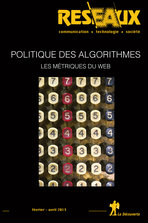 |
PONTILLE D., TORNY D., 2013, «La manufacture de l’évaluation scientifique : algorithmes, jeux de données, outils bibliométriques» ,
Réseaux, 31 (177), p.25-61.
Contre la vision d’une bibliométrie considérée comme un tout unifié et cohérent, cet article distingue trois composants majeurs des infrastructures informationnelles qui soutiennent l’évaluation de la recherche scientifique : les algorithmes, les jeux de données et les outils bibliométriques. En retraçant la genèse et le succès de certains de ces composants, de 1960 à nos jours, les auteurs identifient plusieurs configurations dans lesquelles s’articulent de manière différentielle la position des producteurs de jeux de données, la cible privilégiée des algorithmes et la forme des outils bibliométriques. Cette histoire montre des croisements répétés entre bibliométrie et webométrie, et rappelle que toute évaluation s’appuie nécessairement sur une définition des pairs jugés pertinents.
The manufacturing of scientific evaluation
In contrast with the image of bibliometrics as a unified and coherent whole, this article identifies three major components of information infrastructures that support the evaluation of scientific research: algorithms, datasets, and bibliometric tools. Tracing the genesis and success of some of these components, from 1960 to the present day, the authors identify several configurations which differentially articulate the position of dataset producers, the target of algorithms, and the form of bibliometric tools. This diachronic narrative shows repeated encounters between bibliometrics and webometrics and highlights the fact that any assessment is necessarily based on a definition of relevant peers. |
 |
RABEHARISOA V., MOREIRA T., AKRICH M., 2013, «Evidence-based activism: Patients’ organisations, users’ and activist’s groups in knowledge society» ,
Working paper.
Accès au texte »
This article proposes the notion of ‘evidence-based activism’ to capture patients’ and health activists’ groups’ focus on knowledge production and knowledge mobilisation in the governance of health issues. It introduces empirical data and analysis on groups active in four countries (France, Ireland, Portugal, and the UK), and in four condition areas (rare diseases, Alzheimer’s disease, ADHD – Attention Deficit Hyperactivity Disorder, and childbirth). It shows how these groups engage with, and articulate a variety of credentialed knowledge and ‘experiential knowledge’ with a view to explore concerned people’s situations, to make themselves part and parcel of the networks of expertise on their conditions in their national contexts, and to elaborate evidence on the issues they deem important to address both at an individual and a collective level.
This article argues that in contrast to health movements which contest institutions from the outside, patients’ and activists’ groups which embrace ‘evidence-based activism’ work ‘from within’ to imagine new epistemic and political appraisal of their causes and conditions. ‘Evidence-based activism’ entails a collective inquiry associating patients/activists and specialists/professionals in the conjoint fabrics of scientific statements and political claims. From a conceptual standpoint, ‘evidence-based activism’ sheds light on the on-going co-production of matters of fact and matters of concern in contemporary technological democracies. |
 |
RABEHARISOA V., O'DONOVAN O., 2013, «Europe of patients, Europe for patients: The Europeanization of healthcare policies by European Patients’ Organizations» ,
Working paper.
Accès au texte »
The last two decades have witnessed an efflorescence of European lobbying organizations, including European civil society organizations (Lahusen 2004). Lobbying activity is mainly clustered around enterprise and environmental policy, domains in which the EU has greatest regulatory competencies. However, health has been identified as the fastest growing lobbying sector (Coen 2007). Patients’ organizations have been part of the ‘rush to Europe’. This domain is of particular significance because healthcare is a major area of the welfare state in which the EU has in the past had little involvement, but one which has in recent years witnessed an increasing Europeanization of policy (Greer et al. 2008). To date, very few studies have explored the species of organizations that European patients’ organizations (EPOs) constitute, and the form of activism they develop. This article examines these two issues. |
| |
SCHLIERF K., MEYER M., 2013, «Situating knowledge inter-mediation: insights from science shops and knowledge brokers» ,
Science and Public Policy, |
 |
TIRONI M., 2013, «La ville comme expérimentation : le cas du Vélib’ à Paris» ,
Thèse de doctorat, Paris, École Nationale Supérieure des Mines de Paris.
Accès au texte »
Cette thèse a pour objectif général de reconstruire la généalogie du processus de production d'une technologie de transport urbain publico-individuel : il s'agit du programme de vélos en libre-service connu sous le nom de Vélib', mis en place à Paris en juillet 2007. En mobilisant une perspective de sociologie des sciences et des techniques, cette thèse se propose de s'intéresser à l'hétérogénéité des médiations sociotechniques à partir desquelles a été conçu ce nouveau système de transport et aux effets de celles-ci sur la nature du service. Il s'agit en particulier d'explorer la façon dont les nouveaux paradigmes de la mobilité et la soutenabilité redéfinissent les manières de concevoir les projets d'aménagement urbain.
The general purpose of this doctoral thesis is to reconstruct the genealogy of the production process of a public-individual urban transport technology: the self-service bicycle programme known as Vélib', which was implemented in Paris 2007. Following the insights of science and technology studies (STS) the aim is to explore the heterogeneity of the socio-technical mediations which led to the design of this new transport system and the effects of these mediations on the nature of the service and the configuration/scripting of its users. In particular, the project aims to shed light on how new paradigms of mobility and sustainability come to redefine project design in urban planning |
| |
VAN OUDHEUSDEN M., LAURENT B., 2013, «Shifting and Deepening Engagements. Experimental Normativity in Public Participation in Science and Technology» ,
Science, Technology & Innovation Studies, 9 (1), p.3-22.
Public participation in science, technology, and innovation is a significant trend in contemporary western democracies, which increasingly implicates the social scien-tist in diverse ways. Yet, the question as to how social scientists actually engage in public participation, and how their engagements may be normatively justified, is not the object of systematic consideration in participatory frameworks and in ac-tion-oriented social science. In this article, we ask how social scientists can take responsibility for their normative choices when engaging in participatory practice. Drawing on our experiences as researchers of public participation in nanotechnol-ogies in Flanders (Belgium) and France, respectively, we reflectively consider our relationship with research subjects, the political relevance of our work, and the research problems we deal with. This leads us to articulate three modes of norma-tivity that inform our commitments: a process mode, a critical mode, and a mode inspired by Actor Network Theory. Differentiating between these modes and gar-nering sensitivity towards each mode’s characteristics opens the way to experi-mentation with different types of normativity through which the social scientist accounts for his commitments and shifts or deepens his engagements in response to conflicting demands and real-world circumstances. Thus, rather than endorsing one approach to participation, we recommend a pragmatic attitude that implies systematic probing of the roles the social scientist assumes vis-à-vis other partici-pants, interests, and objectives, and that enables him to continually adjust his po-sition in view of the particularities of his situation. |
| |
VANGEEBERGEN T., 2013, «Compte-rendu. Anne Boissière, Mathieu Duplay (dir.), Vie, Symbole, Mouvement. Susanne K. Langer et la danse, De l’incidence, 2012, 296 p.» ,
Lectures [en ligne], (mis en ligne le 21 mai 2013).
Accès au texte » |
 |
AKRICH M., 2012, «Les listes de discussion comme communautés en ligne : outils de description et méthodes d’analyse» ,
Working paper.
Accès au texte »
Présente les résultats et la méthode d'une série d'investigations sur les listes de discussion et forums en-ligne. |
| |
AKRICH M., LEANE M., ROBERTS C., 2012, «Les associations d’usagers dans le domaine de la périnatalité : un engagement fondé sur la connaissance ?» ,
Revue de médecine périnatale, 4p.198-205.
Accès au texte »
Au travers de l’analyse des activités de trois associations, nous montrons le rôle central que joue la collecte, la production et la circulation des connaissances dans ces organisations: ces activités sont cruciales pour construire une représentation des usagers, pour créer un espace d’échange et de négociation avec les professionnels, et pour faire émerger des problèmes et les rendre discutables par l’ensemble des parties concernées. Elles contribuent ainsi à installer les associations comme acteurs de plein droit dans la politique périnatale.
Through the analysis of three users’ organisations, we demonstrate the importance of activities such as the collection, production and dissemination of knowledge in the functioning of these organisations : they are crucial in building users’ representations, in creating a space for exchange and negociation with professionals and in setting up « matters of concern » and their publics. Thus, they contribute to install users’ organisations as full participants to the childbirth politics. |
 |
AKRICH M., LEANE M., ROBERTS C., ARRISCADO NUNES J., 2012, «Practising childbirth activism: a politics of evidence» ,
Working paper.
Accès au texte »
Shows that how knowledge-related activities are central to activism in childbirth organization, comparing the UK, Ireland, Portugal and France. |
| |
AKRICH M., MÉADEL C., 2012, «Policing exchanges as self description in internet groups» ,
in BROUSSEAU E., MARZOUKI M., MÉADEL C., (ed.), Governance, Regulations and Powers on the Internet, Cambridge, Cambridge University Press, p.232-256. |
| |
AKRICH M., RABEHARISOA V., 2012, «L’expertise profane dans les associations de patients, un outil de démocratie sanitaire» ,
Santé Publique, 24 (1), p.69-74.
Dans le domaine de la santé, l'expertise profane recouvre deux réalités différentes qui entretiennent des relations multiples : l'expertise expérientielle, ou expertise tirée de l'expérience d'une condition particulière, et l'expertise médico-scientifique. Les associations de patients déploient une part importante de leur activité à constituer cette double expertise : d'un côté, elles collectent, mettent en forme, analysent les témoignages de leurs adhérents, réalisent des enquêtes et produisent des statistiques ; de l'autre, elles assurent une veille scientifique, produisent des synthèses de la littérature, publient des documents de vulgarisation ou organisent des conférences. Cette expertise, avec ses deux composantes, est mobilisée dans des actions dirigées à la fois vers des patients individuels - il s'agit de renforcer leur capacité d'action -, et vers le " monde de la santé" - professionnels, établissements, réseaux de soins, agences sanitaires, ministère, politiques - afin de peser sur la politique de santé au sens large : elle contribue ainsi pleinement à la démocratie sanitaire, dans l'acception double que lui a donné la loi du 4 mars 2002, i.e. participation des individus aux décisions qui les concernent et participation de leurs représentants à la gouvernance de la santé. |
| |
AKRICH M., RABEHARISOA V., PATERSON F., PARTNERS E., 2012, «European Patient Organizations in Knowledge Society» ,
EC / ARMINES Mines ParisTech.
Grant Agreement number: n° SIS-CT-2009-230307 |
| |
ARMSTRONG M., CORNUT G., DELACÔTE S., LENGLET M., MILLO Y., MUNIESA F., POINTIER A., TADJEDDINE Y., 2012, «Towards a practical approach to responsible innovation in finance: New Product Committees revisited» ,
Journal of Financial Regulation and Compliance, 20 (2), p.147-168.
Accès au texte » |
| |
BADOUARD R., 2012, «Publics “faibles” et “forts” du web politique : le cas des consultations permanentes de la Commission Européenne» ,
Quaderni, (79), p.99-108. |
| |
BADOUARD R., MUSIANI F., MÉADEL C., MONNOYER-SMITH L., 2012, «Towards a Typology of Internet Governance Socio-Technical Arrangements» ,
in MASSIT-FOLLÉA F., MÉADEL C., MONNOYER-SMITH L., (ed.), Normative Experience in Internet Politics, Paris, Presses des Mines, p.99-124. |
| |
BARTHE Y., 2012, «Aux risques du passé. Compte-rendu de J.-B. Fressoz, L’Apocalypse joyeuse. Une histoire du risque technologique, Paris, Editions du Seuil, 2012, 312 pp.» ,
La vie des idées. fr,
Accès au texte »
19 octobre 2012 |
| |
BARTHE Y., RÉMY C., 2012, «Incertitudes et enquêtes profanes. Le cas du syndrome du bâtiment malsain.» ,
Rapport pour l'Agence nationale de sécurité sanitaire de l'alimentation, de l'environnement et du travail. |
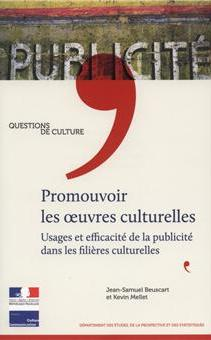 |
BEUSCART J., MELLET K., 2012, Promouvoir les œuvres culturelles. Usages et efficacité de la publicité dans les filières culturelles. ,
Paris, DEPS/LA Documentation Française.
Accès au texte »
Achat d’espaces publicitaires dans les médias, marketing direct, relations avec la presse, publicité sur le lieu de vente... : les œuvres culturelles, comme la plupart des produits commercialisés, font l’objet d’un travail de promotion lorsqu’elles sont mises sur le marché. Pourtant, professionnels et chercheurs – économistes et sociologues – semblent s’accorder sur le caractère particulier des biens culturels : il est bien souvent difficile de prédire leur succès ; voire, certaines créations ne sauraient être exposées au marché sans être dénaturées. Promeut-on une œuvre culturelle comme un produit ordinaire ? Les dépenses de promotion s’orientent-elles vers les créateurs qui sont déjà les plus visibles ou visent-elles à faire connaître de nouveaux artistes ? Renforcent-elles ou réduisent-elles la diversité culturelle, offerte et consommée ? Dans quelle mesure Internet recompose-t-il les stratégies de promotion ? L’ouvrage décrit des dispositifs et des stratégies de promotion dans les médias qui diffèrent selon les secteurs : alors que la presse écrite est le média favori de promotion des livres, le cinéma ou les musées préfèrent l’affichage, tandis que les communautés de joueurs restent les plus efficaces pour faire connaître un jeu vidéo. Dans toutes les filières culturelles, la construction de la visibilité occupe une place de plus en plus importante. L’ouvrage propose d’identifier trois grands régimes publicitaires, correspondant à des produits culturels différents et à des rapports distincts à l’incertitude sur le succès : le best-seller programmé, le produit créatif risqué, le produit culturel de niche. Ces régimes promotionnels se retrouvent, en proportions variées, dans l’ensemble des filières culturelles. Enfin, les acteurs des filières culturelles se sont diversement approprié les outils de visibilité en ligne, qui semblent favoriser les produits de niche et les bests-sellers. |
| |
BOURGOIN A., 2012, «Note de lecture. A. Caillé, Théorie anti-utilitariste de l’action, fragments d’une sociologie générale, 2009, Paris, La Découverte, 192 pp.» ,
Sociologie du Travail, 54 (2), p.271-273. |
 |
BOURGOIN A., MUNIESA F., 2012, «Making a consultancy slideshow ’rock solid’: a study of pragmatic efficacy» ,
Working paper.
Accès au texte »
The paper examines the pragmatic efficacy of a paradigmatic representational device used in the work of management consulting: the diagrammatic presentation of managerial problems in a consultancy slideshow. We present an ethnographic analysis of a consultancy mission, focusing on the moments in which presentation is crafted, altered and discussed before reaching a stage of relative felicity. We analyze the conditions for this felicity as they are made explicit through the consultants' ordinary work. We found that consultants manage three types of constrains when producing the representational device: (1) to create an appropriate effect on the target, (2) to be faithful to the "reality" of the situation and (3) to maintain an internal coherence of the representation. We further discuss these three aspects in the light of a pragmatist approach. |
 |
BROUSSEAU E., MARZOUKI M., MÉADEL C., 2012, Governance, Regulations and Power on the Internet, ,
Cambridge, Cambridge University Press. |
| |
CALLON M., 2012, «Compte rendu. Philippe Steiner, La transplantation d’organes. Un commerce nouveau entre les êtres humains, Paris, Gallimard, 2010, 352 pp.» ,
Sociologie du travail, 54 (2), p.254-258. |
| |
CALLON M., 2012, «For an Anthropology of Atmospheric Markets: The Exemplary Case of Financial Markets» ,
Cultural Anthropology. Virtual Issue "Finance",
Accès au texte » |
| |
CALLON M., 2012, «Book review. Alex Preda, Framing Finance: The Boundaries of Markets and Modern Capitalism, University of Chicago Press, 2010, 318 pp.» ,
Contemporary Sociology, 41 (5), p.665-666. |
 |
CALLON M., 2012, «Les incertitudes scientifiques et techniques constituent-elles une source possible de renouvellement de la vie démocratique ?» ,
Working paper.
Accès au texte »
Texte de la conférence introductive au Congrès de l'AISFL organisé à Rabat en juillet 2012 sur le thème : Penser l'incertain. |
| |
CALLON M., 2012, «Postface» ,
in COCHOY F., (ed.), Du lien marchand. Comment le marché fait société, Toulouse, Presses Universitaires du Mirail, p.343-362. |
| |
COMBES C., GRANJON F., 2012, «Passion musicale et usages des TIC chez les jeunes amateurs. L’hypothèse de la numérimorphose» ,
in BRANDL E., PRÉVOST-THOMAS C., RAVET H., (ed.), 25 ans de sociologie de la musique en France. Tome 1 Réfléxivité, écoutes, goûts., Paris, L'Harmattan, p.147-161. |
| |
DENIS J., 2012, «L’informatique et sa sécurité. Le souci de la fragilité technique» ,
Réseaux, 30 (171), p.161-187.
Accès au texte » |
| |
DENIS J., PONTILLE D., 2012, «Travailleurs de l’écrit, matières de l’information» ,
Revue d'Anthropologie des Connaissances, 6 (1), p.1-20. |
| |
DENIS J., PONTILLE D., 2012, «Trabajadores de lo escrito, materias de la información» ,
Revue d'Anthropologie des Connaissances, 6 (1), p.I-XX. |
| |
DENIS J., PONTILLE D., 2012, «Workers of writing, Materials of information» ,
Revue d'Anthropologie des Connaissances, 6 (1), p.a-s. |
 |
DOGANOVA L., 2012, Valoriser la science. Les partenariats des start-up technologiques ,
Paris, Presses des Mines.
L’innovation ouverte exige des échanges permanents entre science et marché; les start-up issues de la recherche en sont un véhicule privilégié. Si la création de ces « jeunes pousses » valorisant des travaux scientifiques a été fortement encouragée par les politiques publiques depuis une dizaine d’années, on sait peu de choses des effets qu’elles induisent sur leurs marchés. Que valent-elles ? Comment comprendre leur rôle et saisir leur impact ? Qu’apportent-elles aux entreprises avec lesquelles elles coopèrent ?
Cet ouvrage propose une approche originale : pour rendre compte de la portée de ces start-up, il traque les réseaux d’innovation qu’elles construisent et animent. Il analyse les formes et les effets des partenariats avec des start-up par une double perspective : l’analyse statistique des innovations produites dans un vaste échantillon de collaborations inter-firmes et l’observation fine des pratiques d’évaluation mises en œuvre par les entreprises partenaires. L’enquête met en lumière la dynamique exploratoire de ces partenariats, la diversité des résultats qu’ils génèrent et la spécificité des dispositifs sur lesquels ils s’appuient.
L’ouvrage intéressera aussi bien les chercheurs en sciences de gestion et en sociologie que les acteurs publics impliqués dans la valorisation de la recherche et les acteurs industriels qui sont amenés à coopérer avec des start-up technologiques. |
| |
DOGANOVA L., KARNOE P., 2012, «Controversial valuations. Assembling environmental concerns and economic worth in clean-tech markets» ,
2nd Interdisciplinary Market Studies Workshop, 2012 June 7.
Accès au texte » |
| |
DOGANOVA L., KARNOE P., 2012, «The innovator’s struggle to assemble environmental concerns to economic worth. Final report of "The pragmatics of valuation in clean-tech innovation",» ,
|
| |
DULONG DE ROSNAY M., MUSIANI F., 2012, «The preservation of Digital Heritage: Epistemological and Legal Reflections» ,
ESSACHESS - Journal for Communication Studies, 5 (2/10), p.81-94.
Accès au texte »
Different disciplines and fields of study seem to be heralding the rise of an interdisciplinary scientific and intellectual movement focused on digital heritage, operationally defined as the ensemble of documents and information created in digital formats and subjected to preservation policies developed by individuals, companies and institutions. This article seeks to address some of the methodological challenges that – notwithstanding a diverse, thriving body of work that is currently contributing to the establishment of the scholarship on digital heritage – are
currently facing scholarly attempts to consider digital heritage in its plurality. At the present, exploratory stage of the digital heritage scientific/intellectual movement, contributions to a reflection on the very foundations of this movement are needed, so as to refine the possible approaches of future digital heritage-related studies. This article is meant to provide such a contribution, drawing on the authors’ experience with interdisciplinary approaches to subjects of study such as alternative, decentralized infrastructures for Internet services, or the techno-legal governance of data, the commons and the public domain. The article reflects on practical tools, and epistemological/theoretical foundations, allowing to define and to include in the analysis all the facets of digital heritage – its archives, traces and instruments.
Différentes disciplines et champs de recherche semblent être précurseurs de la montée d’un mouvement scientifique et intellectuel interdisciplinaire axé sur le patrimoine numérique, défini opérationnellement comme l’ensemble des documents et informations créés dans des formats numériques, et soumis à des politiques de préservation développées par des individus, des entreprises et des institutions. Cet
article cherche à interroger certains des défis méthodologiques que – malgré le développement d’une littérature florissante autour du patrimoine numérique – se rencontrent actuellement pour considérer le patrimoine numérique dans sa pluralité. Au stade exploratoire actuel du mouvement scientifique et intellectuel du patrimoine numérique, des contributions à une réflexion sur les fondements mêmes de ce
mouvement semblent nécessaires, dans le but d’affiner les approches possibles des recherches dans le domaine. Cet article est destiné à fournir une telle contribution, en s’appuyant sur l’expérience des auteurs avec des approches interdisciplinaires à des sujets comme les infrastructures décentralisées pour les services Internet, ou la gouvernance techno-juridique des données, les biens communs et le domaine public. L’article s’engage dans une réflexion sur les outils pratiques et les fondations théoriques et épistémologiques permettant de définir et d’inclure dans l’analyse l’ensemble des facettes du patrimoine numérique, ses archives, ses traces et ses instruments. |
 |
EDWARDS C., HOWLETT E., AKRICH M., RABEHARISOA V., 2012, «Attention deficit hyperactivity disorder in France and Ireland: parents’ groups’ scientific and political framing of an unsettled condition» ,
Working paper.
Accès au texte »
Examines how groups representing children with Attention Deficit Hyperactivity Disorder (ADHD) in France and Ireland engage within this contested medical domain, and challenges the frequently made association between the process of medicalisation and de-politicisation. |
| |
HENNION A., 2012, «La restauration, un atelier de l’histoire» ,
in ETIENNE N., HÉNAUT L., (ed.), L'histoire à l'atelier. Restaurer les oeuvres d'art, XVIIIe-XXIe siècles, Lyon, Presses Universitaires de Lyon, p.399-412. |
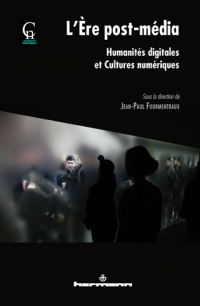 |
HENNION A., 2012, «Jouer, interpréter, écouter. Pratiquer la musique ou la faire agir ?» ,
in FOURMENTRAUX J., (ed.), L'Ère post-média. Humanités digitales et Cultures numériques, Paris, Hermann, p.87-101. |
| |
HENNION A., 2012, «"This Strange Thing Called Music" ... Prendre au sérieux les mondes de la musique» ,
in BRANDL E., PRÉVOST-THOMAS C., RAVET H., (ed.), 25 ans de sociologie de la musique en France. Tome 1 Réfléxivité, écoutes, goûts., Paris, L'Harmattan, p.33-45. |
| |
HENNION A., 2012, «Soli Deo Gloria. Was Bach a composer?» ,
appli online https://chrome.google.com/webstore/detail/nlkechgkpggimlocmlhfipcifmcdolio |
| |
HENNION A., 2012, «"As Fast as One Possibly Can ...": Virtuosity, a Truth of Musical Performance» ,
in HAWKINS S., (ed.), Critical Musicological Reflections. Essays in Honour of Derek B. Scott, London, Ashgate, p.125-138.
Virtuosity is a concept that has the double advantage of being transverse with respect to different musical genres and of pointing at performance – at music that is not fixed by the score. These are two characteristics that directly refer to approaches developed by Derek
Scott, which he has done by focusing, as I intend to do, on the nineteenth century – a period when great divides were established. These divides still govern current musical practices, and perhaps even more, the academic disciplines that target them. In the course of the
questioning of the opposition between popular and art music as carried out by critical musicology, and mirroring its focus on the notion of performance, I have decided to pay respect to the way musicians themselves have taken on the constitutional ambivalence of virtuosity. Indeed, for them this refers less to the specific property some types of music or artists possess than to a distanced attraction – a dangerous temptation, an impossible injunction of which they need to be wary. |
| |
HENNION A., 2012, «Melomanos: el gusto como performance» ,
in BENZECRY C., (ed.), Hacia una nueva sociologie cultural. Mapas, dramas practicos, Bernal, Universidad Nacional de Quilmes Editorial, p.215-248. |
 |
HENNION A., 2012, «La gare en action. Hautes turbulences et attentions basses» ,
Communications, (90), p.175-194.
En menant des observations dans diverses gares, nous avons suivi les engagements des passants dans une situation mouvementée mais ordinaire, banale, à implication très faible. C'est ce niveau bas des gares, à la fois en appareillage et comme objet d'investissement, qui en fait un lmieu expérimental adapté à la question des dispositifs moraux minimalistes de notre vie en commun avec les autres et avec les choses : moralité collective, largement redistribuée entre les usagers, les dispositifs et les lieux, qui permet seule que la gare en action, espace rempli de chocs et de frottements, reste néanmoins vivable.
By means of observation carried out at various railway stations, we documented how passers-by would engage eventful but ordinary situations, mundane ones, with a very low level of involvement. It is this lack of great investment between people and with equipment, inherent at railway stations, that creates an "experimental scene" adapted to the minimal moral dispositions of our living together, with others as well as with objects. It is thanks to a sort of "collective morality" - widely shared among those using a station, its space and facilities - that we can observe only when stations are open to business, that this common space - an environment with clashes and confontations - remains livable. |
 |
HENNION A., VIDAL-NAQUET P., 2012, «Une ethnographie de la relation d’aide : de la ruse à la fiction, ou comment concilier protection et autonomie. Treize récits de cas» ,
Ce rapport propose une description et une analyse de l’activité d’aide à domicile. L’enquête a porté sur le réseau des proches, aidants et soignants, intervenant auprès de personnes atteintes de troubles psychiques et cognitifs. Les aides visent à assurer le bien-‐être des personnes
en apportant soins et assistance. Mais ce souci ne suffit pas à caractériser leur activité : à chaque instant, les aides doivent composer entre des aspirations contradictoires, comme la protection et l’autonomie, et assumer des prises de risque. Nous n’opposons pas leur activité réelle à des
principes abstraits, nous faisons au contraire l’hypothèse que ce sont les pratiques des aides qui peu à peu, à partir des situations d'épreuve, donne un sens concret à de telles notions. En trouvant des façons de les composer, elles montrent que leur mise en oeuvre est possible. Selon une méthode ethnographique, nous avons suivi treize cas, entre six et dix-huit mois, choisis dans trois services d'aide à domicile contrastés, en mettant l'accent sur les moments d'épreuve qui montrent en permanence ces compromis obligés de l'action en situation : problèmes d'hygiène, de médicaments, de clés, risque de chute, décision de placement, relation à la famille, etc ... Le principal rendu de notre recherche est la mise en récit de ces treize expériences collectives : faire faire quelque chose à des personnes qui ne l'ont pas demandé ou n'en voient pas l’intérêt
À condition d’en restituer aussi la valeur positive, deux notions ambigues, la ruse et la fiction, aident à mieux comprendre l'ecpérience du domicile, et les compétences des personnels et des proches. L'aide est installation incertaine d'une relation, d'un espace commun. Instaurer
cette fiction partagée fait en partie porter par l'aidant à la place de l'aidé son exigence d'autonomie : traiter en être autonome la personne fragilisée, c'est faire persister ce qui n'est plus tout à fait là. Curieuse autonomie, par procuration, qui doit être supposée et supportée par les autres pour exister. C'est tout l'enjeu éthique, politique et social de la relation d'aide : l'invention d'une autonomie élargie au collectif. |
| |
JUVEN P., 2012, «Note de lecture. Gouverner (par) les finances publiques, Bezes, P., Siné A. (eds), Presses de Sciences Po, Paris, 2011, 525 pp.» ,
Gouvernement et action publique, (3), p.151-155. |
| |
JUVEN P., 2012, «Note de lecture. Ce que soigner veut dire. Repenser le libre choix du patient, A. Mol, Presses des Mines, Paris, 2009, 199 pp.» ,
Sociologie du Travail, 54 (4), p.542-544. |
| |
LAURENT B., 2012, «Responsible Agencements: Constructing Markets for Nanotechnology Trough the European Regulation» ,
Nanotechnology Law & Business, 9 (3), p.267-289.
As the call for the “responsible development of nanotechnology” is widespread, there is a need to problematize the very notion of “responsibility.” This article does not consider “responsibility” as granted but discusses the devices that practically construct it. It considers the example of European initiatives in the definition of nanotechnology as “responsible.” Adopting an approach inspired by the social studies of markets, it describes two “agencements” performing responsibility in nanotechnology, and thereby qualifying objects and defining political and economic organizations. An experimental agencement distributes responsibility among industrial actors and member states, and define a plurality of “nano” qualification. Within a liberal agencement, a specific “nano” market is constructed, in which producers are constrained by the initiatives of the elected representatives of the European public to label their products, for consumers to decide whether to buy them. The differences between these two agencements and the challenges they face are illustrations of the contested construction of Europe as a consistent political and economic space. |
| |
LAURENT B., 2012, «Book review. Marina Mestrutti, Imaginaires des nanotechnologies. Mythes et fictions de l’infiniment petit, Paris, Vuibert, 2012, 272 pp.» ,
Tecnoscienza. Italian Journal of Science & Technology Studies, 3 (2), p.183-186. |
| |
LAURENT B., 2012, «Des assemblages incertains aux technologies de démocratie : deux modalités de l’expérience démocratique» ,
Quaderni, (79), p.81-98.
Cet article se penche sur la notion d’« expérience » en matière de démocratie participative. L’analyse est fondée sur le cas des nanotechnologies, où l’incertitude sur les objets et sur les publics permet de mettre au jour deux modalités de l’expérience démocratique. D’une
part, l’expérience comprise comme un assemblage dans laquelle la réalité technique et sociale s’invente. D’autre part, l’expérience comme mobilisation d’une « technologie de démocratie », dont la mise en oeuvre fait appel à des experts. Le passage d’une modalité à l’autre exige de réussir des épreuves de réplication, au cours desquelles les technologies de démocratie peuvent être distinguées des particularités des situations sur lesquelles elles sont appliquées. Cette approche permet de mettre au jour les opérations de construction de la légitimité démocratique, en ouvrant à l’examen critique la politique des expériences démocratiques.
This paper focuses on the notion of « experience » in participatory democracy. The analyis is based on the case of nanotechnology, a domain where the uncertainty about both the objects and publics makes visible two modalities of the democratic experience. On the one hand, the experience as an assemblage
where technical and social realities are uncertain. On the other hand, the experience connected to expertbased « technologies of democracy ». Going from one modality to the other requires to pass replication trials, within which technologies of democracy are separated from the particularities of the situations where they areapplied. This approach displays the operations that produce democratic legitimacy, while also opening to critical analysis the politics of democratic experiences |
| |
LAURENT B., 2012, «Science museums as political places. Representing nanotechnology in European science museums» ,
Jcom, 11 (04), p.6 p. online.
Accès au texte »
Science museums perform representations of science and that of its publics. They have been called to intervene in nanotechnology within global public policy programs expected to develop the field. This paper discusses the case of European science museums. It starts by examining the case of a European project that involved science museums working on nanotechnology. This example illustrates a "democratic imperative" that European science museums face, and which implies a transformation of their public role. It offers a path for the analysis of the current evolution of European science communication perspective – from "public understanding of science" to "scientific understanding of the public" – and of the political construction this evolution enacts. |
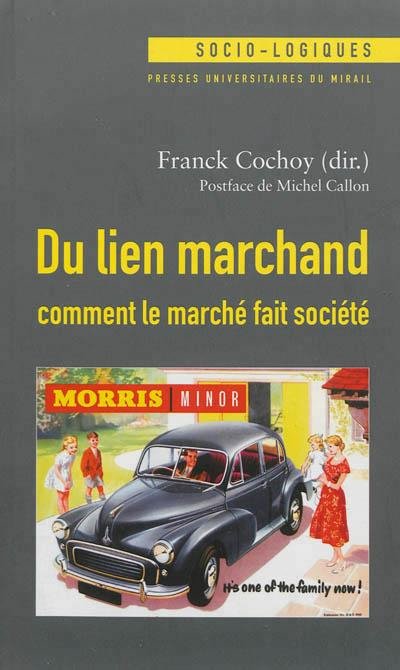 |
MALLARD A., 2012, «Cadrer et encadrer la vente. Réflexion sur l’avenir des relations interpersonnelles dans une société d’organisations commerciales» ,
in COCHOY F., (ed.), Du lien marchand. Comment le marché fait société, Toulouse, Presses Universitaires du Mirail, p.81-106. |
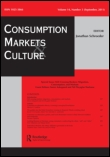 |
MALLARD A., 2012, «Developing Uses, Qualifying Goods: on the Construction of Market Exchange for Internet Access Services» ,
Consumption, Markets and Culture, 15 (2), p.191-211.
Accès au texte »
What role does the use of goods play in the shaping of commercial exchange? This question is investigated through a case study of the commercialization of Internet access services in France at the end of the 1990s. Specifically, the study traces how the uses of the Internet were made part of the process of qualifying Internet access as a commercial good in the NetStations launched and operated by France Telecom. Drawing on an analysis of the interactions between staff and customers in these NetStations, the article shows the diverse configurations through which use development and qualification of goods are intertwined in the course of commercial exchange. These observations are used as a basis for discussing the strategic incidence of the management of uses for commercial organizations operating in a competitive environment. |
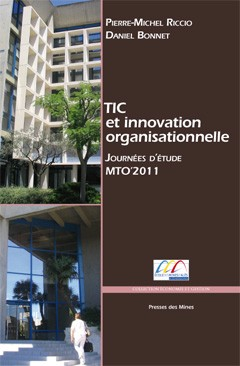 |
MALLARD A., 2012, «L’encadrement face au développement des interactions en réseau. Quelques réflexions sur le travail des managers dans les organisations fortement marquées par les TIC» ,
in BONNET D., RICCIO P., (ed.), TIC et innovation organisationnelle. Journées d'étude MTO' 2011, Paris, Presses des Mines, p.9-30.
Accès au texte » |
 |
MASSIT-FOLLÉA F., MÉADEL C., MONNOYER-SMITH L., 2012, Normative Experience in Internet Politics ,
Paris, Presses des Mines.
The ways in which the Internet is managed and controlled–often labeled as Internet Governance– are usually considered as standing on four main pillars: Technology, Market Laws, State Regulation and Uses. Nevertheless, its specific features, the consequences of the plurality of norms it involves and of the decision-making processes it entails are rarely addressed in a comprehensive analysis.
This book explores the Internet’s functioning both as a practical-intellectual experience and a political challenge. By means of several case studies, it proposes a substantial and reflexive treatment of multileveled, formal or informal Internet Politics.The book’s overall endeavor is to outline an understanding ofwhat is –or may be– a “digital common good”.
The authors are members of a European academic team gathered by the Vox Internet research program’s meetings. They adopt a multi-disciplinary approach, embedding technological innovation in the fi eld of social sciences (communication studies, sociology, law, political science and philosophy). |
| |
MÉADEL C., 2012, «Construire le « médium » : de la TSF à la radio» ,
in GLÉVAREC H., (ed.), Histoire de la radio. Ouvrez grand vos oreilles,, Paris, Musée des arts et métiers/Silvana Editoriale, p.xx. |
| |
MÉADEL C., SONNAC N., 2012, «L’auteur au temps du numérique» ,
Esprit, (mai 2012), p.102-114.
Si la dématérialisation des livres est déjà ancienne, l'impact de cette numérisation est resté, au moins jusqu'à une période très récente, limité, la filière étant protégée par la loi plus solidement que la musique ou le cinéma, mais aussi parce qu'avec un nombre élevé d'éditeurs, elle est plus diverse, moins concentrée, moins financiarisée. Moins attaquée sans doute aussi : le " coût " pour un amateur, au moins en temps, de la numérisation d'un livre est supérieur à celui d'un morceau de musique et le catalogue disponible présente une infinie diversité. Pour autant, la numérisation provoque une modification profonde de toutes les étapes de la chaîne du livre, depuis sa fabrication jusqu'à sa conser vation, en passant par sa diffusion, sa production, sa publicité.... |
| |
MÉADEL C., SONNAC N., AVE., LLAMAS A., MUSIANI F., PERONA M., PERSUY M., PETITET V., SERFATY M., SIRE G., SONET V., 2012, L’Auteur au temps du numérique ,
Paris, Hadopi/Editions des archives contemporaines.
Que signifie aujourd’hui l’acte d’écrire et de publier un livre ? Quelle influence ont la numérisation des contenus, le développement
d’Internet et les nouvelles pratiques de lecture sur le travail des auteurs ? Pour répondre à ces questions, ont été interrogés une variété d’auteurs dans toute leur diversité de producteurs d’ouvrages : des auteurs de bande dessinée aux concepteurs de livres pratiques, en passant par ceux qui écrivent des fictions ou des romans policiers. Il ne s’agit pas d’opposer deux univers, l’un attaché à la seule écriture papier et l’autre investi dans une dynamique dématérialisée du tout numérique, mais de comprendre comment les deux se complètent et se composent, comment le numérique ouvre de nouvelles façons d’écrire et offre de nouvelles possibilités d’édition et de publication, comment il permet
d’intervenir sur le colloque singulier entre l’auteur et le lecteur, sur les échanges entre les producteurs et le public, sur la relation entre
l’auteur et l’éditeur. Mais aussi comment le livre-papier garde pour les auteurs une place décisive et peut-être indétrônable. Cette étude a été menée dans le cadre des recherches de la Haute Autorité pour la diffusion des oeuvres et la protection des droits sur Internet. |
| |
MEYER M., 2012, «Aiming high, but investing little» ,
EMBO reports (online), 14 (1), p.1.
Synthetic biology is one of the most rapidly growing fields in the biological sciences and is attracting an increasing amount of public and private funding. France has also seen a slow but steady development of this field: the establishment of a national network of synthetic biologists in 2005, the first participation of a French team at the International Genetically Engineered Machine competition in 2007, the creation of a Master's curriculum, an institute dedicated to synthetic and systems biology at the University of Évry-Val-d'Essonne-CNRS-Genopole in 2009-2010, and an increasing number of conferences and debates. However, scientists have driven the field with little dedicated financial support from the government. |
| |
MEYER M., 2012, «Comment penser l’innovation dans les musées de sciences ?» ,
Bulletin de l'AMCSTI, p.3-6.
Scénographies immersives, tables tactiles multipoint, audio-guides, vidéo-guides, applications pour smartphones, écrans tactiles, sites Internet interactifs ou encore Nuit des musées, débats conflictuels, expositions liant science et art, ... les outils à disposition des musées pour innover sont variés. Cependant, l'innovation n'est pas uniquement quelque chose de technique et elle ne va pas de soi. Au contraire : innover, c'est faire un certain choix et, par conséquence, toute innovation mérite une réflexion de la part des musées. Comment, donc, penser l'innovation dans les musées et centres de science ? En la concevant de manière intégrée : pas comme technique, mais comme à la fois technique, sociale et culturelle, pas comme une fin en soi, mais comme un moyen, pas comme une nécessité, mais comme une question, pas comme un objet en soi, mais comme faisant partie d'un ensemble de liens entre médiation, exposition et institution. [Exemples discutés: Deutsches Museum (Munich), Medical Museion (Copenhague), Cité des Sciences et Musée Curie (Paris).] |
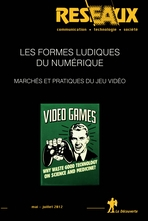 |
MEYER M., 2012, «Bricoler, domestiquer et contourner la science : l’essor de la biologie de garage» ,
Réseaux, (173-174), p.303-328.
Accès au texte »
De plus en plus d’amateurs construisent aujourd’hui des laboratoires rudimentaires dans leurs garages, cuisines, ou caves pour y réaliser des expérimentations en biologie moléculaire. Cet article analyse les lieux et la matérialité de cette « biologie de garage » (ou « do-it-yourself biology »). Des techniques et des objets spécifiques sont nécessaires pour transformer une maison privée en un lieu où des expérimentations peuvent être réalisées. L’article montre que l’abordabilité, la disponibilité et surtout la mutabilité d’objets sont des facteurs essentiels. On observe ainsi des objets qui sont transformés, donnés, combinés, remplacés, imités, achetés en occasion, etc. En particulier, l’utilisation de « contournements créatifs » autour d’objets (pour les transformer et les combiner de manière nouvelle) et autour d’institutions (afin de contourner des liens économiques établis entre les universités et l’industrie) est à relever. Les biologistes de garage utilisent divers dispositifs de communication - sites Web, blogs, outils open source, forums, vidéos – pour échanger des connaissances et des objets et pour ainsi surmonter certaines frontières.
An increasing number of amateurs are currently building rudimentary laboratories in their garages, kitchens or cellars, in order to carry out experiments in molecular biology. This article analyzes the spatiality and materiality of this «garage biology» (or «do-it-yourself biology»). Specific techniques and objects are necessary to transform a private house into a site where experiments can be conducted. This article shows how essential it is for objects to be accessible, available and, above all, mutable. We observe objects that are transformed, donated, combined, replaced, imitated, bought second-hand, etc. Particularly noteworthy is the use of «creative workarounds» around objects (to transform them and combine them in new ways) and around institutions (to bypass the economic ties between universities and industry). Garage biologists use various communication devices – websites, blogs, open source tools, forums, videos – to exchange knowledge and objects and thus to overcome certain boundaries. |
| |
MEYER M., 2012, «Build your own lab: Do-it-yourself biology and the rise of citizen biotech-economies» ,
Journal of Peer Production, (2), p.online: 4 p..
Most articles on garage biology and do-it-yourself (DIY) biology highlight its somewhat immaterial cultures or ideologies. The issues usually raised include: the ways in which do-it-yourself biology potentially democratizes science and fosters a citizen science, that its practitioners are a "creative proof of the hacker principle", that the field is an illustration of the open source movement, that concerns about control, security and safety need to be addressed. However, rather than focusing on such relatively abstract cultures, this article focuses on the more material aspects of do-it-yourself biology: its locations, its equipments, its objects. The article presents three sites of DIY practices: a community laboratory in Paris, a private laboratory in Boston and, third, cheap alternatives to scientific equipment, such as the DremelFuge. The argument I am concerned with is that the circulability, the affordability and the mutability of objects play a key role in do-it-yourself biology and, at the same time, that we witness the emergence of a "citizen biotech-economy". |
| |
MEYER M., 2012, «Placing and tracing absence: A material culture of the immaterial» ,
Journal of Material Culture, 17 (1), p.103-110.
This essay engages with recent work on an unusual, yet fascinating theme: absence. Two edited collections have recently been published that deal with the topic: An Anthropology of Absence: Materializations of Transcendence and Loss (Bille et al., 2010) and The Matter of Death: Space, Place and Materiality (Hockey et al., 2010). These books explore an almost counterintuitive aspect of absence: its material culture. Indeed, absence has a materiality and exists in – and has effects on – the spaces people inhabit and their daily practices and experiences. Drawing on the discussions in these two books and on other recent developments in the study of absence, this essay considers the relational ontology of absence, conceiving absence not as a thing in itself but as something that exists through relations that give absence matter. Absence, in this view, is something performed, textured and materialized through relations and processes, and via objects. We therefore need to trace absence. This entails following and describing the processes through which absence becomes matter and absence comes to matter. It means to map out, locate and follow the traces of absence and understand absences as traces, that is, as residual, incomplete, elusive, ambiguous, yet material entities. |
| |
MUNIESA F., 2012, «Responsibility in financial innovation: retooling New Product Committees» ,
Risk & Regulation, 23p.18-19.
Accès au texte » |
| |
MUNIESA F., 2012, «A flank movement in the understanding of valuation» ,
in ADKINS L., LURY C., (ed.), Measure and Value, Chichester, Wiley-Blackwell, p.24-38.
Accès au texte »
The sociological understanding of valuation often starts with an idea of value as something that something has by virtue of how people consider it (that is, it is socially constructed, a convention, a social representation, a projection). At some point, however, analysis also often draws a contrast between this sort of appraisal and some other type of value that the thing may have as a result of its own condition (what it costs, how it is made, with what kind of labour, money and materials, what it is worth in relation to objective standards and fundamental metrics). Dissatisfaction with this binary approach has been expressed in various quarters, but the pragmatist contribution of John Dewey provides a particularly useful resource with which to engage with the subject. This article reviews some aspects of this dissatisfaction, with a focus on the pragmatist idea of valuation considered as an action. I discuss this idea in relation to fi nancial valuation, referring in particular to early pedagogical materials on corporation fi nance elaborated in the context of the professionalization of business administration. Finally I elaborate on the usefulness of a pragmatist stance in the understanding of financial valuation today |
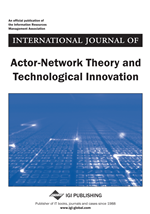 |
MUNIESA F., TCHALAKOV I., 2012, «Networks, Agents and Models: Objections and Explorations» ,
International Journal of Actor-Network Theory and Technological Innovation, 4 (1), p.13-23.
Accès au texte »
Actor-Network Theory proves particularly inspiring in reconsidering the tenets of quantitative research and computational methods in the social sciences. However, translating insights from this perspective into operational models is problematic. The paper examines, in the form of a dialogue, critical problems of the computational modelling of network topologies considered from the point of view of Actor-Network Theory. In particular, the paper discusses the impetus of simulation and the inappropriateness of the distinction between agents and links. |
| |
MUSIANI F., 2012, «Note de lecture. Julie Denouël & Fabien Granjon (dir.) Communiquer à l’ère numérique. Regards croisés sur la sociologie des usages, Paris, Presses de l’Ecole des Mines, 2011» ,
Le Temps des médias, (18), p.269-270. |
| |
MUSIANI F., 2012, «Caring About the Plumbing: On the Importance of Architectures in Social Studies of (Peer-to-Peer) Technology» ,
Journal of Peer Production, (1).
Accès au texte »
This article discusses the relevance, for scholars working on social studies of network media, of “caring about the plumbing” (to paraphrase Bricklin, 2001), i.e., addressing elements of application architecture and design as an integral part of their subject of study. In particular, by discussing peer-to-peer (P2P) systems as a technical networking model and a dynamic of social interaction that are inextricably intertwined, the article introduces how the perspective outlined above is particularly useful to adopt when studying a promising area of innovation: that of “alternative” or “legitimate” (Verma, 2004) applications of P2P networks to search engines, social networks, video streaming and other Internet-based services. The article seeks to show how the Internet's current trajectories of innovation increasingly suggest that particular forms of architectural distribution and decentralization (or their lack), impact specific procedures, practices and uses. Architectures should be understood an “alternative way of influencing economic systems” (van Schewick, 2010), indeed, the very fabric of user behavior and interaction. Most notably, the P2P “alternative” to Internet-based services shows how the status of every Internet user as a consumer, a sharer, a producer and possibly a manager of digital content is informed by, and shapes in return, the technical structure and organization of the services (s)he has access to: their mandatory passage points, places of storage and trade, required intersections. In conclusion, this article is a call to study the technical architecture of networking applications as a “relational property” (Star & Ruhleder, 1996), and integral part of human organization. It suggests that such an approach provides an added value to the study of those communities, groups and practices that, by leveraging socio-technical dynamics of distribution, decentralization, collaboration and peer production, are currently questioning more traditional or institutionalized models of content creation, search and sharing. |
| |
MUSIANI F., 2012, «Book Review: Valérie Schafer, La France en réseaux. Tome I: La rencontre des télécommunications et de l’informatique (1960–1980) [The Networked France, Volume I: The Meeting of Telecommunications and Computing], 2012, Cigref/Nuvis, 378 pages”» ,
IEEE Annals of the History of Computing, 34 (4), p.5-6. |
| |
MUSIANI F., 2012, «Une charte des droits des internautes ? Perspectives et alternatives» ,
Droit & Société, (81), p.425-445.
Accès au texte »
Les récentes discussions autour de la liberté, la sécurité et la protection de la vie privée des individus sur l’Internet concernent la nature même de ces droits – leur existence, leur attribution et leur reconnaissance – ainsi que les procédures et instruments de leur légitimation. L’article porte sur les récents débats concernant la création d’une déclaration ou charte des droits de l’Internet, et en particulier sur ceux qui concernent le droit à la vie privée. Les raisons et les perspectives qui sous-tendent ce projet de charte sont analysées et comparées à des formes alternatives de « protection » des droits des internautes – tout en positionnant ce débat parmi les grandes questions constituant le champ de la gouvernance de l’Internet.
Recent discussions on individuals’ freedom, security, and privacy on the Internet concern both the very essence of these rights – their existence, attribution, and acknowledgement – as well as the procedures and tools of their legitimization. This article addresses recent debates on the creation of a declaration or bill of rights for the Internet, and in particular, the right to privacy. The motivations and perspectives underlying the Internet Bill of Rights project are analyzed and compared with alternative forms of “protection” of Internet users’ rights, while framing the debate within the main questions in the Internet governance field. |
| |
MUSIANI F., 2012, «Book Review. Internet Politics and STS: a Much-Needed Encounter. The Power of Networks. Organizing the Global Politics of the Internet by Mikkel Flyverbom» ,
Science and Public Policy, 39 (3), p.407-409. |
 |
MUSIANI F., 2012, «Nains sans géants. Architecture décentralisée et services Internet» ,
Thèse de doctorat, Paris, École Nationale Supérieure des Mines de Paris.
Accès au texte »
Si le concept de décentralisation est en quelque sorte inscrit au coeur même de l’Internet, son urbanisme actuel n’intègre ce principe que de manière limitée. La recherche d’alternatives au mode dominant d’organisation des services basés sur Internet – une concentration autour de grands ensembles de serveurs sous le contrôle des “géants” du secteur – se poursuit, en quête d’efficacité et de durabilité. En cherchant les meilleures solutions, certains développeurs se retournent vers les qualités persistantes d’une ancienne technologie, le pair-à-pair (P2P), qui replonge dans la topologie de l’Internet pré-commercial, mettant à profit les ressources des « nains » du réseau – ses marges ou sa périphérie.
Cette thèse explore l’approche distribuée et décentralisée de l’architecture technique des services Internet. Il s’agit de comprendre ce que dessine une architecture de réseau décentralisée du point de vue de l’articulation des acteurs et des contenus, de la répartition de responsabilités, de l’organisation du marché et de la capacité à exercer du contrôle, des formes d’existence et des rôles d’entités telles que les noeuds du réseau, ses usagers, ses unités centrales. Ce travail analyse sous quelles conditions un réseau qui répartit à ses marges la responsabilité de son propre fonctionnement, et qui suit un modèle non hiérarchisé ou hybride, peut se développer dans l’Internet d’aujourd’hui. La thèse suit les développeurs de trois services Internet – un moteur de recherche, un service de stockage et une application pour le streaming vidéo – construits sur un modèle de réseau décentralisé, les collectifs d’usagers pionniers qui se développent avec ces services, et ponctuellement, les arènes politiques où l’on discute de l’organisation et de la gouvernance de l’Internet à moyen et long terme.
Even if the concept of decentralization is embedded to some extent at the very core of the Internet, today’s “network of networks” integrates this principle only partially. The dominant organizational model for Internet-based services involves large clusters of servers controlled by the "giants" of the IT sector. The search for alternatives is in progress, aiming at different ways to achieve effectiveness and sustainability. In this quest, a number of developers look back to the evergreen qualities of a relatively old technology, peer-to-peer (P2P), that leverages the socio-technical resources of the network's "dwarfs" - its periphery or “edge” - in a way that is, in fact, closer to the pre-commercial Internet.
This dissertation explores the distributed and decentralized approach to the technical architecture of Internet-based services. It illustrates the co-shaping of a decentralized network architecture and of several different dynamics: the articulation between actors and contents, the allocation of responsibilities and the capacity to exert control, the organization of the market, the forms of existence and role of entities such as the nodes of a network, its users, its central or coordinating units. This work analyses the conditions under which a network that structures itself according to a non-hierarchical or hybrid model, and delegates the responsibility of its functioning to its edge, can develop and thrive in today's Internet. The dissertation follows the developers of three Internet services - a search engine, a storage service and a video streaming application - built on primarily decentralized network models; it also follows the collectives of pioneer users developing with these services, and selectively, the political venues where the Internet's medium- and long-term organization and governance are discussed. |
| |
MUSTAR P., 2012, «Préface» ,
in DOGANOVA L., (ed.), Valoriser la science, Paris, Presses des Mines, p.7-9. |
| |
MUSTAR P., 2012, «Le client source d’innovation pour l’entreprise» ,
Alliancy, le Mag, p.33.
12 décembre 2012 |
| |
ORTIZ H., 2012, «Anthropology - of the financial crisis» ,
in CARRIER J., (ed.), Handbook of Economic Anthropology, Second Edition, Cheltenham, UK, Edward Elgar, p.585-596. |
| |
ORTIZ H., 2012, «« Dans ses tendances, l’industrie financière ne se trompe pas, mais elle exagère toujours ». Enjeux moraux dans les pratiques professionnelles de la finance» ,
in FASSIN D., EIDELIMAN J., (ed.), Economies morales contemporaines, Paris, La Découverte, p.53-72. |
| |
PINA-STRANGER A., 2012, «Introducción: el análisis de redes inter-organizacionales» ,
REDES- Revista hispana para el análisis de redes sociales, 23 (1), p.1-6.
El análisis de redes sociales es un método particularmente pertinente para el estudio de los procesos sociales a la obra en un contexto inter-organizacional. Los artículos presentados en este número dan cuenta de la riqueza a la vez teórica y metodológica que se genera una vez que se implementa un trabajo sistemático de observación y de análisis de la dimensión reticular de las actividades económicas a esta escala. Ellos abren una serie de perspectivas de investigación entre las cuales se encuentra el enfoque multinivel, el estudio comparado y diferenciado de la proximidad geográfica, la inclusión cada vez más fina del contenido praxeológico de las relaciones y de la heterogeneidad social de los actores.
Social network analysis is a particularly relevant method for the study of inter-organizational phenomena. The papers in this issue show both the theoretical and methodological interest of implementing a systematic analysis of economic activities from a network perspective. They open a series of research perspectives: the multilevel approach, the comparative study of the geographical proximity, the inclusion of the praxeological contents of relations or the extension of network analysis to a more heterogeneous and extensive set of actors. |
| |
PINA-STRANGER A., 2012, «Coordinaciòn de volumen. Monogràfico: El anàlisis de redes inter-organizacionales» ,
REDES- Revista hispana para el análisis de redes sociales, 23 (1). |
| |
PONTILLE D., 2012, «Grandeurs de la signature en science» ,
in BRAVO F., (ed.), La Signature, Pessac, Presses Universitaires de Bordeaux, p.111-135. |
| |
PONTILLE D., TORNY D., 2012, «Dans les coulisses des articles scientifiques : définir des catégories de fraude et réguler les affaires» ,
Revue d’Épidémiologie et de Santé Publique, 60 (4), p.247-253. |
| |
PONTILLE D., TORNY D., 2012, «Évaluation collective et attributs individuels. À propos de la notion de publiant de l’AERES» ,
Bulletin de l’Association des Sociologues Enseignant-e-s du Supérieur (ASES), (40), p.28-35.
Ce texte examine un des dispositifs d’évaluation du travail scientifique, qui a particulièrement agité le monde des sciences humaines et sociales en France : la notion de “publiant”, instaurée par l’Agence d’évaluation de la recherche et de l’enseignement supérieur (AERES). Il analyse la tension majeure qui traverse cet indicateur en montrant que les entités collectives et individuelles ne sont pas données a priori, mais sont au contraire le résultat de différentes épreuves qui portent sur leurs qualités jugées pertinentes et leur grandeur. |
| |
PONTILLE D., TORNY D., 2012, «Rendre publique l’évaluation des SHS : les controverses sur les listes de revues de l’AERES» ,
Quaderni, (77), p.11-24.
Accès au texte »
Cet article étudie la trajectoire d’un outil d’évaluation dédié aux sciences humaines et sociales : la liste des revues scientifiques publiée en juillet 2008 par l’AERES. Il insiste sur les filiations de cet outil avec les pratiques d’évaluation antérieures, rappelle l’intense activité critique que sa publication a suscitée, et examine les arrangements sociotechniques ayant permis d’élaborer un compromis autour d’un périmètre de scientificité. Loin des discours convenus sur les pressions managériales restreignant l’autonomie des chercheurs, cet article analyse la liste des revues comme un puissant révélateur des conventions disciplinaires et des tensions historiques et épistémiques singulières qui traversent les domaines relevant des SHS.
This article examines the trajectory of an assessment tool dedicated to the humanities and social sciences: the list of journals published in July 2008 by the official French Research Assessment institution (AERES). It highlights the filiations of that tool with previous assessment practices, describes the intense criticism that its publication has provoked, and examines the socio-technical arrangements performed to support a compromise around a perimeter o scientificity. Far from the conventional wisdom of managerial pressures restricting the autonomy of researchers, this article analyses journal lists as a powerful reminder of disciplinary conventions, singular epistemic and historical tensions dividing HSS. |
| |
RABEHARISOA V., 2012, «"Sociological theory and sociology of health and medicine in international journals".» ,
Salute e Società, 2012p.18.
Round Table with : Ellen Annandale, Vololona Rabeharisoa, Graham Scambler, Clive Seale, Debra Umberson organized by Guido Giarelli "Teoria sociologica e Sociologia della salute e della medicina nelle riviste internazionali". Tavola rotonda con Ellen Annandale, Vololona Rabeharisoa, Graham Scambler, Clive Deale, Debra Umberson a cura di Guido Giarelli |
 |
RABEHARISOA V., CALLON M., MARQUES FILIPE A., ARRISCADO NUNES J., PATERSON F., VERGNAUD F., 2012, «The dynamics of causes and conditions: the rareness of diseases in French and Portuguese patients’ organizations’ engagement in research» ,
Working paper.
Accès au texte »
Highlights the emergence of a "hybrid collective model" of collaboration between patients and experts through a systematic study in the field of rare diseases in France and Portugal, with attention to the reflexive work carried out by patients' organizations on the notion of rareness. |
| |
RÉMY C., 2012, «Compte rendu de l’ouvrage de D. Memmi, La seconde vie des bébés morts» ,
Revue Française de Sciences Politiques, 62 (2), p.334-335. |
| |
TIRONI M., 2012, «Repair and Maintenance of a Public Bicycle System: a Pragmatic Approach to the case of Velib in the City of Paris» ,
Proceedings of the 22nd International Cycling History Conference, Paris, France, May 2011, Cheltenham, Cycling History (Publishing) Ltd, p.220-223.
Valued for its 'planet friendly' character, these systems have become the hallmark for cities that want to become part of the so-called 'green culture'. The Vélib’ program is the largest system of its kind in the world, with 1800 stations and 20600 bikes. This paper intends to analyze the Vélib’ system by considering an often ignored, but essential dimension on the subject: the invisible work, which about 400 agents realize on a daily basis to maintain the functioning of this sustainable mobility program. This presentation will analyse the plurality of operations through which the Vélib' system is updated 24 hours a day. It does so by drawing on interviews and ethnographic observations made in a repair workshop, as well as observations made through accompanying technicians in the field. Through the description of the knowledge and the know-how mobilized by agents, I will show how these actors, through their daily contact with the city and users, become real "sociologists" of mobility and of the users. The urban ecology appears to the maintenance agents as a real field of exploration and experiment, a space inhabited by uncertainty, which the agents have to repair and maintain by a diversity of instruments and practices |
| |
TIRONI M., 2012, «Para una sociologìa Pragmatica del Gusto. Antoine Hennion en entrevista» ,
in OSSANDON J., VODANOVIC L., (ed.), Disturbios Culturales, Santiago, Ediciones Universidad Diego Portales, p.117-133. |
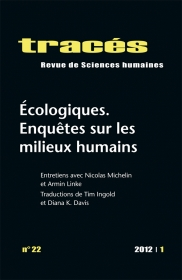 |
TIRONI M., 2012, «Mettre l’écologie en mouvement. Les controverses à l’origine du projet Vélib.» ,
Tracés, (22), p.65-83.
Ville durable, nouvelles technologies, nouvelle écologie : tels sont, entre autres, les termes habituellement employés pour qualifier le phénomène de mondialisation des systèmes de vélos en libre-service (VLS). Appréciés pour leur caractère respectueux de l’environnement, ces systèmes sont devenus incontournables pour les villes désireuses de s’inscrire dans ce que l’on nomme la « culture verte ». L’objectif de ce texte est d’offrir un « récit des origines » de l’élaboration de l’infrastructure de transport Vélib’, à travers la description d’un moment spécifique de la « carrière » du programme : les controverses liées aux différentes propositions « écologiques » qui sont nées au moment de la conception du projet.
Sustainable city, new technologies, new ecology. These are, among others, some of the terms commonly used to refer to the globalization of the self-service bicycle programmes. Valued for their « planet friendly » character, these systems have become a hallmark for cities that want to become part of what is known as the « green culture ». Drawing from the experience of the Vélib’ programme in Paris, this essay questions the notions of sustainable city and mobility and describes the controversies surrounding the elaboration of and decisions regarding such an infrastructure. |
| |
TIRONI M., ANWANDTER C., 2012, «Haciendo naturalezas : "Ecopoemas", "Escrito en el desierto", "Huacho"» ,
Artelogie, Dossier thématique - Image de la nation : art et nature au Chilip.27.
Accès au texte »
A partir del análisis de “Ecopoemas” de Nicanor Parra, “Escrito en el desierto” de Raúl Zurita y Huacho, película de Alejandro Fernández Almendras, el siguiente artículo busca cuestionar la pertinencia de la epistemología dualista en la comprensión de lo natural y cultural de Chile. El objetivo es no tomar la dupla cultura/naturaleza como punto de partida, sino más bien como el punto de llegada de un proceso de composición que involucra múltiples prácticas y estrategias narrativas que serán el objeto de análisis en este documento. Se discutirá así el carácter político de las operaciones que configuran y construyen el universo de estas obras.
À partir de l’analyse des Ecopoemas de Nicanor Parra, Escrito en el desierto de Raúl Zurita et Huacho, de Alejandro Fernández Almendras, il s’agira dans cet article d’interroger la pertinence de la logique dualiste dans la compréhension de l’imaginaire naturel et culturel du Chili. L’objectif est de ne pas prendre le couple nature/culture comme un point de départ, mais comme point d’arrivée d’un processus de composition impliquant des instruments et des pratiques multiples, et qui seront analysés dans ce texte. En accord avec certaines perspectives récentes en sciences sociales, on abordera le caractère politique des opérations qui composent et ordonnent l’univers de ces œuvres. |
| |
YON G., 2012, «Compte-rendu. Emmanuel Didier, En quoi consiste l’Amérique ? Les statistiques, le New Deal et la démocratie, Paris, La Découverte, 2009, 318 pp» ,
Oeconomia - Histoire/Epistémologie/Philosophie, 2 (2), p.268-272. |
| |
AKRICH M., 2011, «Prefazione» ,
in JÉRÔME D., PONTILLE D., (ed.), Nel mondo della segnaletica. L’ecologia grafica degli spazi del metro, Trento, Professionaldreamers, p.9-13. |
| |
BARTHE Y., 2011, «Die politischen eigenschaften der technologien. Irreversibilität und reversibilität beim umgang mit atommüll» ,
Tumult, p.92-100.
Dass Technologien „nicht neutral sind“, wird heute von jedermann eingeräumt. In den Forschungen zu wissenschaftlicher Expertise oder zum Umgang mit kollektiven Risiken ist diese Feststellung sogar zum Gemeinplatz geworden. Über dieses grundsätzliche Eingeständnis hinaus geben diese Arbeiten den technischen Vorrichtungen selbst allerdings nur wenig Raum. |
| |
BARTHE Y., 2011, «Le syndrome du bâtiment malsain, "c’est dans la tête" ?» ,
Info Respiration, p.24.
102 |
| |
BARTHE Y., AKRICH M., RÉMY C., 2011, «As investigaçoes "leigas" e a dinâmica das controversias em saude ambiental» ,
Sociologias, 13 (26), p.84-127.
Accès au texte »
A partir da literatura existente, este artigo propõe um quadro de análise para captar a dinâmica geral das controvérsias em saúde ambiental e, em particular, o papel que os "leigos" assumem nessa questão nas sociedades democráticas. Ele ressalta a importância inédita que o trabalho de investigação feito por não-especialistas ocupa nessas mobilizações para tornar tangível a existência de um problema sanitário ligado a seu meio ambiente. Esse trabalho de investigação alimenta dois processos que se encontram no centro da dinâmica dessas controvérsias: por um lado, a vitimização, ou seja, a transformação de pessoas doentes em vítimas e, por outro, o questionamento, isto é, a imputação de certas patologias a fatores ambientais. A identificação desses dois processos, que podem ser concomitantes, permite distinguir diferentes configurações e compreender como uma controvérsia pode evoluir ao longo do tempo.
Starting from the existing literature, this paper proposes an analytical framework to capture the general dynamics of the controversies in environmental health and, more particularly, the role of the 'layman' in this issue, within democratic societies. The article emphasizes the importance of a research work conducted by non-specialists to provide tangible demonstration of the existence of a health problem related to their environment. This research work provides for two processes that are at the center of the dynamics of these controversies: the victimization, i.e., the transformation of ill people into victims; and the questioning, i.e., the attribution of certain pathologies to environmental factors. The identification of these two processes, which may be concurrent, makes it possible to distinguish different settings and to understand how a controversy evolves over time. |
| |
BARTHE Y., BORRAZ O., 2011, «Les controverses sociotechniques au prisme du Parlement» ,
Quaderni, (75), p.63-71.
Le Parlement constitue un espace privilégié pour analyser le déploiement des controverses sociotechniques : non parce qu’il aurait la faculté de les résoudre, notamment via l’OPECST, mais parce qu’il offre de multiples occasions et modalités d’expression et de traitement de ces controverses en son sein. Espace hétérogène et poreux, il participe d’une nouvelle gouvernance des risques, plus soucieuse de leur stabilisation que de leur réduction définitive.
The French Parliament offers an ideal place to analyze the unfolding of sociotechnical controversies. Not that it has any capacity to actually resolve these, including its office of science and technology; but rather because it offers a plurality of opportunities for controversies to play out within its two chambers. As a heterogeneous and porous institution, it takes part in a newly formed risk governance that aims to manage rather than definitely solve risk issues. |
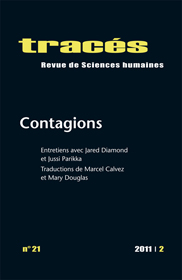 |
BEAUVISAGE T., BEUSCART J., COURONNÉ T., MELLET K., 2011, «Le succès sur internet repose-t-il sur la contagion ? Une analyse de la littérature sur la viralité» ,
Tracés. Revue de Sciences humaines [En ligne], (21/2011 mis en ligne le 14 décembre 2011), p.151-166.
Accès au texte »
Cet article présente une revue de travaux récents qui combinent modélisation et analyse statistique, pour décrire les phénomènes de viralité sur le Web. Une première démarche étudie la temporalité de la diffusion des contenus ; la viralité correspond en ce sens à la concentration temporelle de l’attention sur un contenu. Une seconde approche s’efforce d’identifier les mécanismes de circulation de ces contenus, en distinguant ce qui relève de la contagion sociale au sens strict et ce qui relève des dispositifs éditoriaux. Une troisième approche étudie la façon dont le réseau social influence la diffusion des contenus et s’efforce d’expliciter les mécanismes de la contagion d’un individu à l’autre. Pour chacune de ces approches, nous identifions la définition de la viralité qu’elle met en œuvre, les méthodes sur lesquelles elle s’appuie pour construire le phénomène et ses principaux résultats. Nous dessinons pour finir les directions futures possibles de ce champ de recherche. |
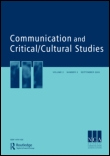 |
BENCHERKI N., 2011, «Mediators and the Material Stabilization of Society» ,
Communication and Critical/Cultural Studies, 9 (1), p.101-106.
When one utters the word “materiality,” the name of Bruno Latour usually follows closely. He is mostly known (or misunderstood) for proposing we should recognize the sharing of our social world with non-humans—an idea often ridiculed by those who think that Latour suggests we should share the world with things.1 In fact, what he says (especially in We Have Never Been Modern) is that we are indeed sharing the world with non-humans, whether we acknowledge it or not, and that pretending we are not amounts to a work of “purification” by which the cultural/social and the natural/technical are carefully divided into two hermetic and impossible realms.2 We already share the world with many material entities—or “artefacts”—and their participation is essential for (social) action to be possible at all. |
| |
BENCHERKI N., 2011, «Quel mode d’existence pour l’organisation?» ,
Revue internationale de communication sociale et publique, (5), p.75-92.
La littérature existante sur l’action organisationnelle demeure très floue sur la manière exacte dont une organisation peut agir. Elle tend à osciller entre l’affirmation que l’organisation agit elle-même et une réduction de l’action organisationnelle à celle de ses membres. Dans tous les cas, l’organisation est déjà présumée. Je propose ici une perspective proprement communication, qui explique l’existence de l’organisation et sa capacité d’agir du même coup, à partir de l’observation des pratiques situées par lesquelles, dans le langage, des actions sont attribuées à l’organisation. J’analyse un extrait d’une réunion d’un comité chargé de planifier une importante réforme dans un grand établissement d’enseignement français.
Existant literature on organizational action is hazy with respect to the precise way an organization may act. It tends to vacillate between the affirmation that the organization acts by itself and a reduction of organizational action to that of its members. In both cases, the organization is already presumed. I suggest here a properly communicational perspective, which explains organizational existence and its capacity to act in a single stroke. I do this by observing the situated language practices through which actions are attributed to the organization. This is done by analyzing an excerpt of a meeting of a committee in charge of planning the major reform of a French higher education institution. |
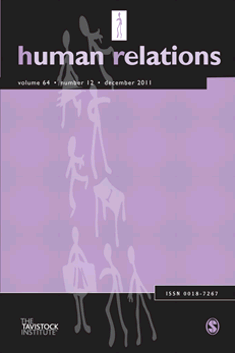 |
BENCHERKI N., COOREN F., 2011, «To have or not to be: the possessive constitution of organization» ,
Human Relations, 64 (12), p.1579-1607.
How does an organization act? Can it be considered an actor on its own or does it need organizational members who act on its behalf? We would like to suggest our own take on the issue by suggesting a genuinely communicative approach to the issue of organizational action. Using the narratology of AJ Greimas to make apparent in talk some of process philosophy’s tenets, we show how organizations act by being attributed actions. The detailed study of meetings from a community organization serves as our empirical grounding. We suggest that through the imbrication of mandates and programs of action in a logic of appropriation/attribution, the organization can effectively act while always relying on others to do so. Far from ‘just talk,’ we contend that in doing so, participants reconfigure their organization and make it do things. There is no need to resort to an essentialist ontology of organization to state that it acts ‘itself.’ We therefore reconcile the two most common views of organizational action – that of an organization acting by itself and that of agents acting on its behalf. |
 |
BENVEGNU N., 2011, «La politique des netroots. La démocratie à l’épreuve des outils informatiques de débat public.» ,
Thèse de doctorat, Paris, École Nationale Supérieure des Mines de Paris.
Accès au texte »
Depuis les années 1990, l'élargissement de l'accès à internet et la multiplication des dispositifs qui y permettent la publication, l'échange d'informations et la coordination de l'action des internautes a suscité de multiples expériences et de nouvelles pratiques dans une large gamme de domaines d'activité. Le Web est investi par des individus ou des groupes qui se mobilisent pour concevoir et expérimenter des méthodes et des outils qui cherchent à configurer politiquement certaines de ces initiatives : il ouvre en effet des scènes et des arènes au sein desquelles des problèmes peuvent être rendus publics et discutés, et à partir desquelles des propositions de traitement de ces problèmes peuvent être élaborées et débattues. Les groupes qui peuvent s'y impliquer et prendre la parole ne se résument pas nécessairement aux intermédiaires et aux spécialistes qui prennent traditionnellement en charge la gestion des problèmes publics. Ces groupes concernés par un enjeu particulier, qui s'organisent et qui sont mis en forme par le Réseau, peuvent être qualifiés de netroots. Commet se composent et s'organisent les netroots ? A quoi ressemble leur politique ? Comment se met-elle en place ? Comment s'articule t-elle aux modes de gestion politique existants ? Quels concepts, quelles catégories, quelles figures fait-elle émerger ? Cette recherche propose d'envisager la politique des netroots à travers de telles questions, en l'abordant aussi bien du point de vue de l'ingénierie qui est nécessaire à son fonctionnement que de celui de la problématisation de la démocratie à laquelle elle donne lieu.
Since the 1990s, the widening of Internet access capacities and the development of devices rendering possible the circulation of information and the coordination of user activities have fostered numerous experiments and new practices in a wide range of domains. The Internet is harnessed by individuals or groups mobilizing for the design and experiment of methods and tools. These methods and tools are aimed to politically configure some of these initiatives. The Internet indeed opens arenas in which problems may get public and discussed, and from which propositions for the treatment of these problems may be crafted and debated. Groups able to be vocally involved in these experiments are not necessarily limited to the intermediaries and specialists who are traditionally in charge of the management of public problems. One can identify as netroots the groups that are concerned by a specific stake, and organize themselves through the Network in the same time as they are shaped by its technical modalities. How are these networks composed and how do they organize? What does their politics look like? How does it get settle down? How is it articulated with existing modes of political management? What concepts and categories emerge from it? This work proposes to consider the politics of netroots through such questions. It focuses on the politics of netroots through the angle of the machinery required for its functioning, as well as through the problematization of democracy it enacts. |
| |
BEUSCART J., MELLET K., PASQUIER D., 2011, «La filière audiovisuelle» ,
in PANIC C., (ed.), Cultures numériques : regard sur les industries créatives, Editions Le Manuscrit, |
| |
BOURDON J., MÉADEL C., 2011, «Inside television audience measurement: deconstructing the ratings machine» ,
Media, Culture and Society, 33 (5), p.791-800. |
| |
CALLON M., 2011, «La force des controverses. Entretien avec Michel Callon» ,
Courrier de la Planète, p.14-18.
93 |
| |
COMBES C., 2011, «Notes de lecture. Jean-Pierre Esquenazi, Les séries télévisées : l’avenir du cinéma ?, Paris, Armand Colin, 2010, 224 p., 18 €» ,
Réseaux, 29 (165), p.249-251. |
| |
COMBES C., 2011, «La consommation de séries à l’épreuve d’internet. Entre pratique individuelle et activité collective» ,
Réseaux, 29 (165), p.137-163.
Accès au texte »
L’article se propose d’investir l’univers des fans de séries – désignés par « sériphiles ». Fort de multiples sites, forums, blogs et plateformes d’échange, Inter- net constitue un poste d’observation privilégié pour apprécier la diversité des activités qu’engage aujourd’hui l’amour des séries. Le réseau des réseaux ainsi que les récentes technologies numériques viennent en effet rebattre les cartes des pratiques de consommation sérielles. Plus particulièrement, il s’est agi ici de voir comment, à la faveur de ces récentes conditions sociotechniques, les sériphiles partagent leur passion. Nous avons ainsi dégagé trois formes de par- tage : l’expérience de visionnage, les conversations en ligne, l’échange et la redistribution de séries. Ces trois modalités, fortement entremêlées, sous-ten- dent en définitive une tension entre les dimensions individuelle et collective de la consommation sérielle, que cette population de sériphiles fait apparaître de manière saillante.
This article examines the world of TV series fans, which the author calls “seriphiles”. Through websites, forums, blogs and P2P platforms, the Internet provides an ideal vantage point from which to examine the diversity of activi- ties spawned by the love of series. The Internet as well as digital technologies have profoundly reshaped the patterns of consumption of TV series content. In particular, the author seeks to understand how seriphiles share their passion in the context of changing socio-technical conditions. He identifies three forms of sharing: the experience of viewing, online conversations, and exchange and redistribution of content. These three strongly intertwined forms create a ten- sion between individual and collective dimensions of series consumption that is conspicuous in the studied population of seriphiles. |
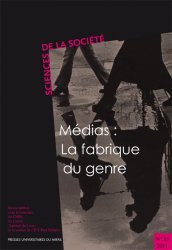 |
COULOMB-GUILLY M., MÉADEL C., 2011, «Plombières et jardinières. Résultats d’enquêtes et considérations méthodologiques sur la représentation du Genre dans les médias» ,
Sciences de la société, (83), p.15-35.
Peut-on mesurer la place des femmes dans les médias avec des outils quantitatifs ou plutôt sous quelles conditions le fait-on et avec quelles hypothèses ? Le double objectif de cet article consiste, en amont des résultats de l'enquête de l'Observatoire mondial des médias (dite GMMP) , à revenir sur les outils mobilisés et à en analyser les principaux résultats. Côté résultats, l'enquête permet de mettre en chiffres la version androcentrée du monde proposée par les médias, en France comme dans les autres pays couverts ; on retiendra en particulier le quart de nouvelles "avec femme". Côté méthode, on sait que grilles d'analyse, mesures quantitatives et formatage de catégories, loin d'être neutres, façonnent, comme dans toute recherche, les résultats auxquels on parvient mais aussi les interrogations possibles. Ici le regard réflexif est d'autant plus important qu'il s'agit d'aboutir à un travail de formalisation du réel, qui doit permettre non seulement de mieux le comprendre, mais aussi de dégager les instruments devant permettre d'agir sur celui-ci ; l'enjeu de svaoir se double donc d'une dimension axiologique.
Is it possible to quantify women status within mass media ? If so, under which conditions and with wich hypothesis ? This article has a double objective. On the one hand, it assesses Global Media Monitoring Project (GMMP)' methods and it questions its hypothesis on Gender and media representation. On the other, the article analysis GMMP results, taking as an example French case. |
| |
DENIS J., 2011, «Le travail de lécrit en coulisses de la relation de service» ,
Activités, 8 (2), p.32-52.
Accès au texte » |
| |
DENIS J., PONTILLE D., 2011, «Describing the Cycling City. Map-makings of an Elusive Object» ,
Lo Squaderno, (19), p.51-56. |
 |
DENIS J., PONTILLE D., 2011, Nel Mondo della Segnaletica. L’ecologia grafica degli spazi del metro ,
Trento, Professional Dreamers.
La segnaletica non è solo una questione di strategia e di principi. La sua riuscita, ovvero la sua capacità di trasformare lo spazio in un ambiente ibrido dotato di un proprio sistema grafico di ordinamento, si fonda sull’accessibilità permanente degli elementi che la compongono. A differenza di altri tipi di scritto, che possono essere archiviati e conservati al riparo tra due usi successivi, i moduli grafici della segnaletica non valgono che in quanto esposti. L’esposizione, che è la loro forza, è però anche la loro debolezza, la loro fragilità. La felicità del funzionamento della segnaletica dipende da varie attività che fanno vivere giorno dopo giorno il dispositivo. |
| |
DENIS J., PONTILLE D., 2011, «Signalétique du métro et politique de l’attention» ,
Sciences de la Société, (82), p.21-39.
Accès au texte »
Cet article étudie la signalétique du métro parisien en tant que dispositif d’ordonnancement qui engage les usagers dans une forme de coproduction particulière du service de mobilité. À partir d’une analyse des documents internes et d’entretiens menés au sein de la RATP, il montre que ses concepteurs ont misé sur certains usages qui supposent de la part des voyageurs des attitudes et des compétences spécifiques. Quatre principales figures d'usagers anticipés sont ainsi identifiées qui reposent sur quatre formes d'engagement avec la signalétique : celle d'un voyageur qui contrôle son trajet en déchiffrant des informations, celle d'un planificateur qui anticipe en computant une série de données, celle d'un voyageur qui résout des problèmes en reconnaissant des formes, et enfin, celle d'un voyageur qui réagit presque automatiquement à des repères. Ces figures constituent le fondement d'une politique de l'attention pluraliste que la signalétique installe au cœur du service de mobilité.
This paper studies the Parisian wayfinding system as an ordering apparatus that involves riders in a specific kind of service coproduction. Based on an analysis of internal documents and on in-depth interviews made within the transportation carrier, it shows that the wayfinding system designers anticipated some uses that imply particular attitudes and abilities from riders. Four main figures of anticipated riders are then identified that rely on four kinds of relationship with subway signs: the one who controls her trip by reading information; the one who anticipates her rides by computing a series of data; the one who solves problems by easily recognizing forms; and finally the one who reacts almost automatically to landmarks. These figures are the basis of the pluralistic politics of attention inscribed by the wayfinding system at the core of the mobility service. |
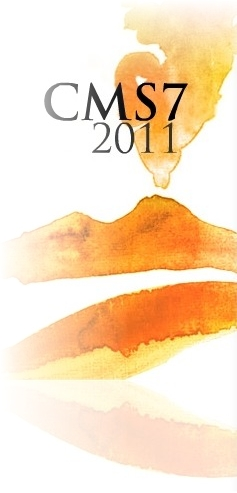 |
DOGANOVA L., 2011, «Necessarily untrue: on the use of the discounted cash flow formula in valuation of exploratory projects.» ,
7th Critical Management Studies Conference (CMS7 2011), 11-13 july 2011.
Accès au texte »
This paper investigates the use of discounted cash flow (DCF) analysis for the valuation of exploratory projects. In order to account for the widespread use of a contested formula, while avoiding both over- and under-calculative explanations, it proposes to examine DCF as a valuation device, i.e. a material and discursive assemblage. The paper hence attempts to describe the worlds of DCF - the one sketched by its hypotheses and the one constructed through its use – by focusing on the valuation of joint research/licensing projects between pharmaceutical companies and biotechnology start-ups. Describing how the formula calculates sheds light on how it matters in practice. The paper shows that DCF acts as a coordination tool and plays a performative role, namely through nurturing market repertoires and through the effects that it induces in exploration activities. |
| |
HENNION A., 2011, «Offene Objekte, Offen Subjekte?» ,
in ENGELL L., SIEGERT B., (ed.), Zeitschrift für Medien- und Kulturforschung, Hamburg, Felix Meiner Verlag, p.93-109. |
| |
HENNION A., 2011, «The Production of Success : an Anti-Musicology of the Pop Song» ,
in MOERAN B., ALACOVSKA A., (ed.), Creative Industries: Critical Readings, London, Berg Publishers, p.159-193.
At the heart of the frenetic activity of the record industry and of all the conflictin opinion to which this activity gives rise, lies a common goal: popular success. This also provides the key to the paradoxes one encounters when one studies the economic aspects of the record industry in France. What does the achievement of success involve in actual fact ? Economic, sociological and musicological analyses tend to evade this issue rather than explain it. Can the ability to achieve success be attributed to a more or less innate sixth sense ? Does it reside in the superiority of the smaller producers over the larger ones ? Is success achieved through bribery, through massive 'plugging', through a dulling of the senses or through conformism, as the ritual claims of the press would have it ? Is it a by-product or profit, of standardisation, of alienation or of the prevailing ideology, as marxists argue ? The sociology of mass media and culture explains it in an equally wide variety of ways (...). |
| |
HENNION A., 2011, «Aussi vite que possible ... La virtuosité, une vérité de la performance musicale ?» ,
Ateliers d'anthropologie du LESC 35 [en ligne],
Accès au texte »
La virtuosité est au cœur de l’interprétation musicale, mais elle a un statut ambivalent. Elle est à la fois le comble de l’art, et une tentation dangereuse. En m’appuyant sur la comparaison entre des genres différents, je voudrais suggérer qu’au delà de l’opposition classique entre les musiques du corps, du spectacle, du collectif en transe, et les musiques de l’écrit, centrées sur la composition d’une œuvre et dans une large mesure élaborées en s’opposant à la séduction virtuose, il est possible de redonner à la virtuosité sa capacité d’exprimer une vérité de la musique, en faisant d’elle une esthétique de la performance : moins une prouesse technique qu’une inscription nécessaire de l’œuvre dans la fragilité d’un présent qu’il faut toujours reconquérir.
Virtuosity is at the heart of musical performance, but it has an ambivalent status. It is both the acme of art, and a dangerous temptation. Drawing on a comparison between different genres, I would like to suggest that beyond the classical opposition between body, entertainment, collective trance music, on a side, and written music that focuses on the composition of a work and is largely developed by opposing virtuoso seduction, on the other, it is possible to give virtuosity its ability to express a musical truth by turning it into an aesthetic of performance: less a technical feat than a necessary positioning of the work in the fragility of a present that is always to be recovered. |
| |
HENNION A., 2011, «L’opéra, un art de l’amateur ? Le goût du sociologue» ,
Degrés, 38 (142), p.b1-b10. |
| |
HENNION A., 2011, «Pragmatica do Gosto» ,
Desigualdade & Diversidade. Revista de Ciencias Sociais da PUC-Rio 8, p.253-277.
Accès au texte »
O artigo trata dos problemas para a sociologia da cultura com relação ao gosto, focando primariamente no caso da música e seus vários gêneros, mas também incluindo comparações com outros objetos de paixão como a culinária e o vinho ou o esporte. Diversos estudos provaram convincentemente a natureza sobredeterminada dos gostos, sua função como marcadores de diferenças e identidades sociais, seu funcionamento ritualizado, relações de dominação entre alta e baixa cultura etc. O artigo se baseia em investigações sobre diferentes formas de ligação, tentando afastar a sociologia do gosto de uma concepção crítica que se tornou dominante e na qual o gosto é concebido somente como um jogo social passivo e as práticas reais reduzidas a seus determinantes sociais ocultos. O gosto é antes de tudo uma modalidade problemática de ligação com o mundo. Os “amadores” são competentes, ativos e produtivos; eles transformam constantemente objetos e obras, performances e gostos. Nos termos dessa concepção pragmática o gosto pode ser analisado como uma atividade reflexiva, “corporada”, enquadrada, coletiva e equipada, ao mesmo tempo produzindo competências de um amador e o repertório de objetos que ele valoriza.
The paper considers the problems facing the sociology of culture with respect to taste. It focuses primarily to the case of music and its various genres but also includes comparisons with other objects of passion such as cookery and wine, or sport. Various studies have convincingly proved the over-determined nature of tastes, their function as markers of social differences and identities, their ritualized functioning, relations of domination between high culture and popular culture, etc. The paper draws on inquiries on different forms of attachment. It aims at steering the sociology of taste away from such a critical conception, that has become dominant, in which taste is conceived only as a passive social game and real practices are reduced to their hidden social determinants. Taste is first and foremost a problematical modality of attachment to the world. “Amateurs” are competent, active and productive; they constantly transform objects and works, performances and tastes. In terms of this pragmatic conception taste can be analysed as a reflexive activity, “corporated”, framed, collective, equipped and simultaneously producing the competencies of an amateur and the repertoire of objects that she/he values. |
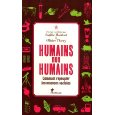 |
HENNION A., 2011, «Prologue» ,
in HOUDART S., THIÉRY O., (ed.), Humains, non-humains. Comment repeupler les sciences sociales, Paris, La Découverte, p.257-262. |
| |
HENNION A., 2011, «Music and Mediation. Toward a New Sociology of Music» ,
in CLAYTON M., HERBERT T., MIDDLETON R., (ed.), The Cultural Study of Music. A Critical Introduction, 2nd edition, New York and London, Routledge, p.249-260.
Accès au texte »
After a century of studies, there is no agreement on what it means to construct a sociology of music. From the beginning this ‘of’ has been a place of tension, not of smooth coordination. If music has easily attracted social readings, there has been strong resistance to a systematic sociology of music whose aim would be to explain musical values or contents through reference to sociological factors. The most vehement prosecutor of such alleged reductionism was undoubtedly Adorno (e.g. 1976) - even though he himself became the worst reductionist when it came to popular culture (Adorno 1990); for him, only kinds of music that are not really art deserve sociological treatment (it is difficult to know if this is more disrespectful of popular music or sociology!). By contrast, the opposite programme - a positive explanation of the ways in which music is produced, diffused and listened to - has been attacked on the grounds that, given its refusal to address ‘music itself’, it cannot acknowledge music’s specificity. |
| |
HENNION A., 2011, «Présences du passé : le renouveau des musiques "anciennes"» ,
Temporalités [en ligne], p.mis en ligne le 15 novembre 2011.
Accès au texte »
Le renouveau des musiques anciennes a donné lieu à un joli pas de deux, un jeu inédit de temporalités superposées. En effet, pour jouer « à l’ancienne », il faut d’abord être moderne : comprendre le passé comme passé. Moins jouer « comme on jouait à l’époque », selon la formule obligée des pochettes de disque, qu’au contraire réaliser notre distance à un temps révolu, accepter sa perte, et prendre la mesure de tout ce qu’il faut faire pour reconstruire le passé. Cette leçon en actes sur l’écriture de l’histoire, la musique la fait vivre sur un mode à la fois sensible (changer des goûts) et matériel (rejouer d’autres instruments). À partir d’autres exemples, comme le goût pour les statues romaines tel que Francis Haskell et Nicholas Penny l’ont analysé, ou la reprise par une troupe actuelle d’un « jeu » médiéval, cette contribution revient, dans les pas de Michel de Certeau, sur les problèmes que rencontrent l’histoire de l’art et la sociologie dans leur propre rapport aux répertoires et aux œuvres hérités du passé.
The revival of ancient music gave rise to an interesting pas de deux, an original game of stacked temporalities. Indeed, in order to play « the old way », one has to start with being modern, and to understand the past as being past. It is not as much about playing « as we used to do » as it is commonly written on disk sleeves. On the contrary, it’s all about understanding how far we are from bygone days, dealing with that loss, and measuring all we have to do to rebuild the past. This is a practical lesson on history writing, that music brings to life on a sensitive mode (changing tastes) as well as on a material mode (playing again other instruments). This paper starts from several examples, as Francis Haskell and Nicholas Penny’s study of the taste for Roman statues, or how a theatre company reopened a « game » from the Middle Ages, in order to follow Michel de Certeau on the issues that history of art and sociology have to face in their own relationship to the repertories and works they inherited from the past. |
| |
HENNION A., 2011, «Affaires de goût : Se rendre sensible aux choses» ,
L'éducation musicale, p.48-49.
571 |
| |
JUVEN P., 2011, «Note de lecture. Jöelle Vailly, Naissance d’une politique de la génétique. Dépistage, biomédecine, enjeux sociaux, Paris, PUF, 2011, 336 p.» ,
Lectures [en ligne], p.http://lectures.revues.org/6239.
mis en ligne le 02 septembre 2011 |
| |
JUVEN P., 2011, «Note de lecture. Nicolas Belorgey, L’hôpital sous pression, enquête sur le "nouveau management public", Paris, La Découverte, 2010, 336 p.» ,
Sciences Sociales et Santé, 29 (2). |
| |
LAURENT B., 2011, «Nanotechnology: Political Spaces for Nanomaterials» ,
European Journal of Risk Regulation, (4), p.577-582.
Nanomaterials have been the object of numerous public and private initiatives aiming to manage their risks and maximise their benefits. Proponents of nanotechnology programmes argue that their potential negative impacts need to be dealt with appropriately, and wish to integrate these concerns early in the industrial development of these substances. Science policy programmes do not provide a clear definition of the term “nanomaterials”. Defining nanomaterials, however, has become a central concern. It is called for by manufacturers who wish to sell the “nano” quality of their products as well as by associations who wish to classify products in order to facilitate consumer choice or introduce constraints on production. |
| |
LAURENT B., 2011, «Un tournant participatif ? Une mise en perspective historique de la participation du public dans les politiques scientifiques américaines» ,
in BACQUÉ M., SINTOMER Y., (ed.), La démocratie participative. Histoire et généalogie, Paris, La Découverte, p.246-260. |
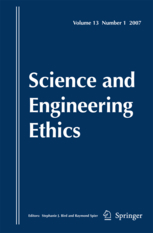 |
LAURENT B., 2011, «Technologies of Democracy: Experiments and Demonstrations» ,
Science and Engineering Ethics, 17p.649-666.
Technologies of democracy are instruments based on material apparatus,
social practices and expert knowledge that organize the participation of various
publics in the definition and treatment of public problems. Using three examples
related to the engagement of publics in nanotechnology in France (a citizen conference,
a series of public meetings, and an industrial design process), the paper
argues that Science and Technology Studies provide useful tools and methods for
the analysis of technologies of democracy. Operations of experiments and public
demonstrations can be described, as well as controversies about technologies of
democracy giving rise to counter-experiments and counter-demonstrations. The
political value of the analysis of public engagement lies in the description of
processes of stabilization of democratic orders and in the display of potential
alternative political arrangements. |
 |
LAURENT B., 2011, «Democracies on trial. Assembling nanotechnologies and their problems.» ,
Thèse de doctorat, Paris, École Nationale Supérieure des Mines de Paris.
Accès au texte »
La thèse analyse les nanotechnologies comme une entité politique macro comprenant des objets, des futurs, des motifs d'inquiétude et des publics, et examine des sites où cette entité est problématisée. En se penchant sur les opérations définissant les problèmes publics et les façons de les traiter, l'analyse des problématisations des nanotechnologies permet de décrire à la fois l'assemblage des nanotechnologies et la construction de l'ordre démocratique. L'étude des problématisations des nanotechnologies est menée via la description d'expériences et de démonstrations impliquant des technologies de démocratie, sur la base d'enquêtes de terrain menées en France, aux Etats-Unis et dans des organisations internationales. La thèse considère successivement des opérations de réplication et de stabilisation de technologies de démocratie, des processus utilisant des technologies de démocratie pour la définition d'objets « nano » et de futurs « responsables », et des exemples d'engagement de mouvements sociaux et du chercheur lui-même dans la critique des technologies de démocratie. Ceci permet d'étudier des exemples concernant la représentation des nanotechnologies, leur administration, et la mobilisation sociale à leur égard. Différentes problématisations peuvent alors être reconstruites. La thèse s'intéresse à quatre d'entre elles, et s'appuie sur le travail empirique pour proposer une critique réaliste des nanotechnologies.
The dissertation analyzes nanotechnology as a macro political entity comprising objects, futures, concerns and publics, and examines sites where it is problematized. Focusing on operations defining public problems and ways of dealing with them, the analysis of the problematizations of nanotechnology is a path for the description of both the assemblage of nanotechnology and the enactement of democratic order. The study of the problematization of nanotechnology is conducted through the description of experiments and demonstrations involving technologies of democracy, using fieldwork in France, the United States, and international organizations. The dissertation considers successively some operations of replication and stabilization of expert-based technologies of democracy; processes using technologies of democracy to define “nano” objects and “responsible” nanotechnology futures; and examples of social and scholarly engagement in the critique of technologies of democracy. Thereby, processes of representation of, public management of, and social mobilization about nanotechnology are examined. Different problematizations of nanotechnology can then be reconstructed. The dissertation discusses four of them, and uses the empirical work in order to propose a realist critique of nanotechnology. |
 |
LEMOINE B., 2011, «Les valeurs de la dette. L’État à l’épreuve de la dette publique» ,
Thèse de doctorat, Paris, École Nationale Supérieure des Mines de Paris.
L'État à l'épreuve de la dette publique Comment l'État est-il devenu l'objet d'un examen attentif de ses « passifs », de ses charges et de ses limites ? Pour répondre à cette énigme, la thèse rend compte des épreuves successives qui ont attaché la valeur comptable et financière de l'État à sa dette publique. Après avoir identifié les modalités de financement administrées de l'État comme une source de création monétaire excessive, les pouvoirs publics s'engagent dans la mise en marché de la dette publique. Le recours à l'argent « extérieur » est conçu comme une solution au problème de l'inflation. Élaborée notamment dans des secteurs stratégiques de l'État, ce projet technique et politique se naturalise peu à peu et efface les traces de ses origines. Les causes de la dette résident dès lors exclusivement dans le déficit et la dépense publique qu'il convient de contenir. Les dispositifs comptables prospectent l'ensemble des dettes à venir afin de prévenir un quelconque affaissement de la valeur de l'État. De solution, la dette devient peu à peu une contrainte avec laquelle la décision politique doit apprendre à composer. L'étude de ce processus, qui aujourd'hui fait l'objet d'intenses débats, renseigne sur les modalités d'articulation entre décision politique et dispositifs techniques. Mots clés : Dette publique, État, Indicateurs, comptabilité nationale, finances publiques, décision politique.
The French State confronted to its Public Debt Abstract : How has the State become the object of an examination of its liabilities, expenditures and limits ? In order to explore this question, the dissertation describes the successive trials that has brought the State Financial value and public debt together. After having identified State-led financing modalities as a source of excessive monetary creation, public bodies have been engaged in bringing public debt on the market. The call for « external » money is conceived as a solution to the inflation issue. This political and technical project was manufactured in the State strategic areas. It has been gradually naturalized, as the signs of its origins were hidden. The causes for public debt are then limited to public deficit and public spending – both entities expected to be contained. Accounting devices explore the whole set of future debts in order to hinder a decrease of the State financial and accounting value. Originally a solution, the public debt has become a constraint with which political decisions have to do. Intense debates are emerging about this process. Analyzing it illuminates the modalities of the articulation between political decision-making and technical devices. Keywords : Public Debt, Accounting, Evaluation, Political Decision, State, Public Finance |
| |
LINHARDT D., MUNIESA F., 2011, «Du ministère à l’agence : Étude d’un processus d’altération politique» ,
Politix, 24 (95), p.73-102.
Accès au texte »
Les études se multiplient qui constatent que l’État, qui a émergé de la modernité comme une réalité essentiellement politique, est aujourd’hui traversé par des logiques hétéronomes qui puisent leur inspiration dans les savoirs de management. Plus rares sont en revanche les études qui cherchent concrètement à observer et à documenter le passage d’une définition politique à une définition gestionnaire de l’État, et les incertitudes auxquelles cette transformation donne lieu. C’est ce que propose cet article à partir d’une analyse de la mise en œuvre de la « Lolf » au ministère de la Recherche entre 2001 et 2007. L’intérêt de ce cas est qu’on y observe un conflit entre, d’un côté, une lecture de la réforme qui reste attachée au caractère politique des décisions publiques et, de l’autre, une lecture qui, à l’inverse, tend à indexer les décisions publiques à des contraintes économiques et budgétaires. L’enquête a permis de reconstituer par quelles opérations, indissociablement techniques et sémantiques, la seconde option l’a emporté sur la première, contribuant ainsi au déplacement de l’administration publique qui se trouve définie de façon croissante suivant le modèle de l’agence. Ce mouvement par lequel un « État-entreprise » se substitue pas à pas à un « État-ministère » est interprété comme un processus d’« impolitisation », compris comme une altération du politique – au double sens du terme –, dont il convient de prendre la mesure si les sciences sociales du politique souhaitent continuer à participer à l’intelligence des transformations contemporaines de l’État et de la politique.
An important number of studies take for granted that the state, which arouse during modernity as an essentially political reality, is nowadays increasingly shaped by heteronomous logics stemming from management. Yet, far less abundant are the studies that strive to observe and to document the concrete processes that support the move from the political definition to the managerial definition of the state, and the uncertainties this move gives rise to. This is precisely the objective of this article. We focus on the implementation of a reform of public management called “Lolf” (for “Loi organique relative aux lois de finances”) within the Ministry of Research between 2001 and 2007. The case is interesting as it shows an ongoing conflict between, on the one hand side, a conception of the reform that remains devoted to the political nature of public decisions and, on the other hand side, a conception that conversely indexes public decisions to economic and budgetary constraints. The study shows the simultaneously technical and semantic operations that make the second option taking precedence over the first and back the displacement of a public administration gradually thought of as a mere set of “agencies”. We interpret this move towards agency as a process of “impoliticization” of the state that the social sciences have to take into account if they wish to continue contributing to the understanding of the contemporary transformation of the state and the alteration (in both senses of the word) of the political. |
| |
LINHARDT D., MUNIESA F., 2011, «Tenir lieu de politique. Le paradoxe des "politiques d’économisation"» ,
Politix, 24 (95), p.9-21.
Accès au texte »
Conçu dans une perspective introductive, cet article se propose de mettre en lumière certains enseignements qui émergent des différentes contributions qui composent le dossier sur les « politiques d’économisation ». En partant du constat que celles-ci mettent en jeu une forme paradoxale de politisation, l’objet est d’attirer l’attention sur trois figures analytiques qui se retrouvent, à des degrés divers et suivant différentes modalités, dans l’ensemble des études présentées. Ce premier inventaire indique que les politiques d’économisation gagnent à être abordées suivant trois dimensions : (1) dans la première dimension, il convient de les comprendre comme un contournement du politique ; (2) dans la deuxième dimension, il convient de les comprendre dans leur opposition au politique ; (3) dans leur troisième dimension, il convient de les comprendre comme des politiques qui ne disent pas leur nom. Ces trois dimensions sont désignées par les notions de « subpolitique », d’«antipolitique » et de « quasi-politique », et font chacune l’objet d’une tentative de caractérisation.
Intended as an introduction, this article aims to highlight some of the lessons that stem from the different contributions that compose this issue on the “politics of economization”. Referring to the paradox that is underlying this particular form of politization, we draw attention on three analytical figures that are found in all the presented studies, though at varying degrees and through different formulas. According to this initial inventory, we address the politics of economization following three dimensions: (1) in the first dimension they should be understood as a bypassing of politics; (2) in the second dimension it is necessary to understand them in their opposition to politics; (3) in the third dimension they are best understood as politics that are not spelled out as such. These three dimensions are referred to the concepts of “subpolitics”, “anti-politics” and “quasi-politics”; we propose a definition for each of these dimensions. |
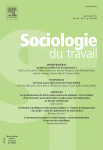 |
MALLARD A., 2011, «Compte-rendu. B. Yanga Ngary, La modernisation quotidienne au Gabon, la création de toutes petites entreprises, 2008, Paris, L’Harmattan, 245 pp.» ,
Sociologie du Travail, 53 (2), p.284-285.
Accès au texte » |
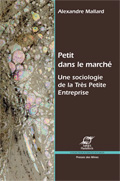 |
MALLARD A., 2011, Petit dans le marché. Une sociologie de la Très Petite Entreprise ,
Paris, Presses des Mines.
Accès au texte »
Les Très Petites Entreprises font l’objet d’une attention croissante de la part des décideurs économiques et politiques. Comment ces « petits acteurs » de l’économie, qui emploient près du tiers de la population active et produisent une part considérable de la richesse nationale, parviennent-ils à trouver leur place dans le marché ? Cet ouvrage nous invite à entrer dans l’univers des micro-organisations et à suivre la manière dont elles tissent les liens avec leur environnement. Il étudie les pratiques ordinaires du commerce et de la communication par lesquelles elles mettent en œuvre des prestations spécifiques et développent une relation marchande originale. Basé sur des enquêtes qualitatives et quantitatives qui permettent d’appréhender les Très Petites Entreprises dans toute leur diversité, il apporte une contribution importante au courant français de la sociologie économique. |
| |
MALLARD A., 2011, «Comment les chercheurs peuvent ils s’impliquer dans l’innovation sociale ? L’hybridation des savoirs en question» ,
Communication à la « Journée d’étude pour l’appropriation des sciences », organisée par le Collège Coopératif de Bretagne, 16 Mars 2011.
Accès au texte » |
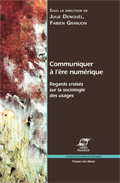 |
MALLARD A., 2011, «Explorer les usages, un enjeu renouvelé pour l’innovation des TIC» ,
in DENOUËL J., GRANJON F., (ed.), Communiquer à l'ère numérique. Regards croisés sur la sociologie des usages, Paris, Presses des Mines, p.253-282. |
| |
MEYER M., 2011, «Gabriel Lippmann» ,
in KMEC S., (ed.), Lieux de mémoire au Luxembourg. Vol. 2, Luxembourg, Editions Saint-Paul, |
| |
MEYER M., 2011, «Panorama et critique des médias et médiations au Luxembourg : analyse des discours des médiateurs» ,
in COLAS-BLAISE M., TORE G., (ed.), Médias et médiations culturelles au Luxembourg, Luxembourg, Editions Guy Binsfeld, p.169-180.
Accès au texte »
Comme la critique des médias est quasi inexistante au Luxembourg, ce chapitre prend justement une posture critique pour débattre de vive voix et sans concession des médias au Luxembourg. Le chapitre est divisé en quatre parties : la première discute du positionnement économique et politique des médias ; la deuxième se penche sur les publics ; la troisième analyse les modèles de communication explicites ou implicites ; la quatrième se tourne vers la qualité du journalisme au Luxembourg. La conclusion revient sur la culture de critique des médias au Luxembourg, sur la place qu'occupe la culture dans les médias, tout en proposant quelques pistes de réflexion pour des travaux futurs. |
| |
MEYER M., 2011, «Book Revew. S. Schaffer, L. Roberts, K. Raj & J. Delbourgo, The Brokered World: Go-betweens and Global Intelligence 1770-1820, Sagamore Beach MA, 2009, 522 pp.» ,
Science, Technology & Human Values, 36 (2), p.269-272. |
| |
MEYER M., 2011, «Farewell, Michel! One of the founding fathers of actor-network theory retires.» ,
EASST Review, 30 (1), p.4-6.
Accès au texte » |
| |
MEYER M., 2011, «Researchers on display: moving the laboratory into the museum» ,
Museum Management and Curatorship, 26 (3), p.261-272.
An intriguing development is taking place in several European science museums: the move of university research laboratories into the space accessible to visitors. Seen as a means to encourage the public understanding of research and to render research practice more accessible to visitors, such laboratories-in-the-museum have been set up in museums in Munich, Berlin, Milan and Gothenburg. This paper is concerned with the changes that the laboratory undergoes through this relocation – namely a transformation of its social and material architecture; an extension of its object-world; and a change in, and multiplication of, the roles of researchers. The laboratory-in-the-museum not only represents, displays and explains a particular kind of space – the laboratory – but it is also designed to create space for dialogue and discussion between researchers and visitors. |
| |
MEYER M., GLOD F., 2011, «Transferring Technology from Bench to Bedside: Practices, Barriers, Policies» ,
Projet européen ERA-NET NEURON II.
Accès au texte »
The present report looks at the challenges and difficulties of moving knowledge and technology from "bench to bedside" and back again. In this report, we highlight the various kinds of challenges and issues raised by technology transfer - cultural, technical, legal, political, financial, structural, etc., including, for instance: the produceability/marketability of products; the need for IP-related policies; for early dialogues between researchers and industry; for trusted advisory groups and confidentiality agreements; for centres/forums/networks; for joint projects between academy and industry. This report highlights these issues by presenting and discussing data collected via several methods: expert interviews, a scientific workshop and a quantitative survey without seeking to provide a comprehensive view of all possible barriers to translation. |
| |
MEYER M., GOETZINGER M., 2011, «Henri Tudor» ,
in KMEC S., (ed.), Lieux de mémoire au Luxembourg, Luxembourg, Editions Saint-Paul, |
| |
MEYER M., MOLYNEUX-HODGSON S., 2011, «"Communautés épistémiques" : une notion utile pour théoriser les collectifs en sciences ?» ,
terrains & travaux, (18), p.141-154.
Cet article se propose de se concentrer sur la question des communautés scientifiques et de discuter des manières de les analyser et de les conceptualiser. L’accent est mis ici sur la notion de « communautés épistémiques », c’est-à-dire les communautés concernées par la production et la diffusion de connaissances et la relation de celles-ci au politique. Dans la littérature, une communauté... |
| |
MEYER M., SCHÜSSLER P., 2011, «Le laboratoire "en verre" : exposer la science en action au musée» ,
Hermès, (61), p.185-187.
Accès au texte »
Pour promouvoir le Public Understanding of Research, certains musées de sciences européens sont en train d'expérimenter un nouveau dispositif muséographique : la mise en place de laboratoires de recherche dans l'espace accessible aux visiteurs. De tels laboratoires ont vu le jour dans divers musées (Munich, Milan, Göteborg...). Cet article traite d'un de ces dispositifs pour montrer la science en train de se faire : le laboratoire de recherche " en verre " au Deutsches Museum à Munich (gläsernes Forscherlabor en allemand). Afin d'exposer la recherche dans un musée, il faut réorganiser l'architecture matérielle et sociale d'un laboratoire. Il faut créer un espace d'expérimentation pour la production de connaissances, remplacer des murs opaques par des parois transparentes, peupler ce laboratoire par une multitude d'objets, créer et indiquer un espace de discussion et d'interaction avec les visiteurs, réfléchir sur comment monter la science en train de se faire (avec ses processus, ses incertitudes, ses méthodes). |
| |
MUNIESA F., 2011, «Javier Izquierdo and the methodology of reality» ,
Journal of Cultural Economy, 4 (109-111).
Accès au texte »
A review essay on the work of Javier Izquierdo. |
| |
MUNIESA F., 2011, «Is a stock exchange a computer solution? Explicitness, algorithms and the Arizona Stock Exchange» ,
International Journal of Actor-Network Theory and Technological Innovation, 3 (1), p.1-15.
Accès au texte » |
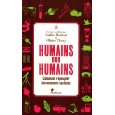 |
MUNIESA F., 2011, «Comment la Bourse fait ses prix : ethnographie d’un cours d’action boursière» ,
in HOUDART S., THIERY O., (ed.), Humains, non-humains. Comment repeupler les sciences sociales, Paris, La Découverte, p.176-190. |
| |
MUNIESA F., CHABERT D., DUCROCQ-GRONDIN M., SCOTT S., 2011, «Back-office intricacy: the description of financial objects in an investment bank» ,
Industrial and Corporate Change, 20 (4), p.1189-1213.
Accès au texte » |
| |
MUNIESA F., LINHARDT D., 2011, «Trials of explicitness in the implementation of public management reform» ,
Critical Perspectives on Accounting, 22 (6), p.550-566.
Accès au texte » |
| |
MUSIANI F., 2011, «Note de lecture. Joseph M. Reagle Jr, Good Faith Collaboration. The Culture of Wikipedia, Cambridge, MA: The MIT Press, 2010» ,
Réseaux, 29 (167), p.219-221. |
 |
MUSIANI F., 2011, «Privacy as invisibility: pervasive surveillance and the privatization of peer-to-peer systems» ,
Working paper.
Accès au texte »
This article addresses the ongoing, increasing privatization of peer-to-peer (P2P) file sharing systems – the emergence of systems that users may only join by personal, friend-to-friend invitation. It argues that, within P2P systems, privacy is increasingly coinciding with “mere” invisibility vis-à-vis the rest of the Internet ecosystem, because of a trend that has shaped the recent history of P2P technology: the alternation between forms of pervasive surveillance of such systems, and reactions by developers and users to such restrictive measures. Yet, it also suggests that the richness of today's landscape of P2P technology development and use, mainly in the field of Internet-based services, opens up new dimensions to the conceptualization of privacy, and may give room to a more articulate definition of it; one that includes not only the need of protection from external attacks, and the temporary outcomes of the competition between surveillance and counter-surveillance measures, but also issues such as user empowerment through better control over personal information, reconfiguration of data management practices, and removal of intermediaries in sharing and communication activities. |
| |
MUSIANI F., 2011, «Note de lecture. Dominique CARDON, La démocratie internet. Promesses et limites | Joseph M. REAGLE, Good Faith Collaboration. The Culture of Wikipedia, Paris, Éd. du Seuil, 2010/ Cambridge, MA, The MIT Press, 2010» ,
Questions de communication, (20), p.440-444. |
| |
MUSIANI F., 2011, «Connectés mais protégés : le pari des réseaux sociaux décentralisés» ,
Paristech Review, p.5.
Accès au texte »
L'éclatant succès actuel des réseaux sociaux a un revers: il s'appuie sur le captage, réalisé avec leur consentement mais à des fins marketing, des données personnelles de leurs utilisateurs. Conséquence: les problèmes liés à la protection de la vie privée et des informations personnelles sont aujourd'hui en pleine lumière. Cet article s'intéresse aux développements récents dans le domaine des réseaux sociaux décentralisés, qui permettent de dépasser le dilemme entre préservation de la vie privée et présence sur les réseaux sociaux. Ces outils pourraient même être les premiers à tirer pleinement parti du potentiel social des outils de réseaux virtuels. |
| |
MUSIANI F., 2011, «Editorial Policies, "Public Domain" and Acafandom» ,
Transformative Works and Culture, (7). |
| |
MUSIANI F., 2011, «Mythes et légendes du Peer-to-Peer» ,
in PÉLIKS G., (ed.), Mythes et légendes des TIC, Paris, Forum ATENA, p.105-114. |
| |
MUSIANI F., 2011, «Privacy as Invisibility: Pervasive Surveillance and The Privatization of Peer-to-Peer Systems» ,
tripleC, 9 (2), p.126-140.
This article addresses the ongoing, increasing privatization of peer-to-peer (P2P) file sharing systems – the emergence of systems that users may only join by personal, friend-to-friend invitation. It argues that, within P2P systems, privacy is increasingly coinciding with “mere” invisibility vis-à-vis the rest of the Internet ecosystem because of a trend that has shaped the recent history of P2P technology: The alternation between forms of pervasive surveillance of such systems, and reactions by developers and users to such restrictive measures. Yet, it also suggests that the richness of today’s landscape of P2P technology development and use, mainly in the field of Internet-based services, opens up new dimensions to the conceptualization of privacy, and may give room to a more articulate definition of the concept as related to P2P technology; one that includes not only the need of protection from external attacks, and the temporary outcomes of the competition between surveillance and counter-surveillance measures, but also issues such as user empowerment through better control over personal information, reconfiguration of data management practices, and removal of intermediaries in sharing and communication activities. |
| |
MUSIANI F., 2011, «Private Yet Connected? Yes, We can: The Challenge of Decentralized Social Networks» ,
ParisTech Review, p.5.
Accès au texte »
In the age when the massive success of social network sites relies on users' willingness to freely disclose their personal data for profiling purposes, issues of user privacy and personal data protection are under the spotlight. This article addresses current developments in the field of decentralized social networking as a way of countering the trade-off between privacy and connectivity in social network services. We argue that such tools may constitute the first attempt to fully leverage the social opportunity of virtual networking tools. |
| |
MUSIANI F., SCHAFER V., 2011, «Le modèle internet en question (années 1970-2010)» ,
Flux, (85-86), p.62-71.
Accès au texte »
Cet article se propose de montrer comment le « modèle Internet » – écosystème en évolution constante, sous l’effet du développement du Web, de ses usages commerciaux et grand public, des (re)compositions de la chaîne de valeur Internet – pose, depuis le développement d’Arpanet à la fin des années 1960 jusqu’à nos jours, des questions de modélisation et de gestion des flux. L’étude des négociations et controverses dont l’architecture Internet a fait l’objet par le passé, les tensions auxquelles elle est soumise actuellement et les discussions autour de ses futurs, témoignent du fait que ce modèle, loin d’être statique ou de s’être imposé de lui-même, a constamment co-évolué avec les modifications des usages, leur massification, les choix techniques, économiques, politiques, sociaux effectués par les différentes parties prenantes. Les questions de modélisation et de neutralité de l’Internet invitent à repenser sa matérialité et sa spatialité, le rôle crucial des protocoles et des infrastructures dans le fonctionnement d’un « réseau des réseaux », où le virtuel n’est pas affranchi des tensions qui traversent la société réelle.
This article shows how the ‘Internet model’ – an ecosystem in constant evolution, influenced by the widespread development of the Web and its commercial and public use, and by the reconfigurations of the Internet value chain – has, ever since the inception of Arpanet at the end of the 1960s, raised issues of modelization and of flow management. Taking the Internet’s architecture as its main object of inquiry, the article retraces the negotiations and the controversies that this architecture has been subject to, the tensions which it is currently undergoing, and the discussions concerning its possible futures. In so doing, it aims to show how the Internet model, far from being static or inevitable due to a supposedly intrinsic technical superiority, has constantly shaped and been shaped by changes in practices over time – notably its mass appropriation – and by an assemblage of technical, economic, political and social choices made by different stakeholders. In particular, we show how the issues of modelization and neutrality of the Internet invite us to (re)think its materiality and its spatiality, and the crucial role of protocols and of infrastructures for the functioning of a « network of networks » where the virtual is entangled in the tensions that are transforming ‘real’ society. |
| |
ORTIZ H., 2011, «Marchés efficients, investisseurs libres et États garants : trames du politique dans les pratiques financières professionnelles» ,
Politix, (95), p.155-180.
Accès au texte »
Au cours des trente dernières années, la régulation financière a été réorientée suivant un projet politique visant à établir des « marchés efficients » où des « investisseurs libres » contribuent à une « allocation optimale » des ressources et un « État minimal » réduit à un simple rôle de « garant » du fonctionnement du système. Cependant, l’établissement de nouveaux cadres de l’industrie financière informés par ces concepts a progressivement conduit à un effacement des marques de la généalogie politique dont ils procèdent : ils apparaissent ainsi finalement comme de simples outils techniques aux mains des professionnels aptes à les manipuler dans des contextes pratiques. L’analyse des pratiques quotidiennes de gérants de fonds investissant dans des dérivés de crédit avant la crise, en 2004 à Paris, confirme ce constat, mais montre aussi que cette technicisation n’est pas totale : dans des situations de changement et de conflits, les mêmes concepts sont susceptibles d’embrayer de nouveau sur des justifications morales et politiques selon les lignes des philosophies libérales dont ils sont issus. Cela révèle qu’alors que le système financier correspond à un cadre dans lequel la distribution inégale du crédit, en tant que question technique, ne peut pas être discutée comme un enjeu politique, c’est-à-dire comme un rapport de forces, cette technicisation ne se comprend que comme étant elle-même de nature politique et dès lors comme participant à ce rapport de forces : la tension qui se dessine entre le technique et le politique apparaît alors comme un rapport interne au projet politique dans lequel s’inscrit la finance contemporaine.
During the last thirty years, financial regulation has been reoriented within a political project aiming at establishing “efficient markets” where “investors” could contribute to an “optimal allocation” of resources, backed by a “minimal state” limited to the role of the guarantor of the functioning of the system. Yet, the financial industry set up according to these concepts has progressively led to the obliteration of the political genealogy from which they proceed: nowadays they appear to be mere technical tools in the hands of professionals handling them in practical contexts. An analysis of the daily practices of fund managers investing in credit derivatives before the crisis, in 2004 in Paris, corroborates that observation, but also shows that this technicization is not total: in situations of change and conflict, the same concepts are likely to engage the clutch again to moral and political justifications along the lines of the liberal philosophies they stem from. This reveals that while the financial system is a framework in which the unequal distribution of credit is believed to be just a technical question and thus cannot be discussed as a political issue, i.e. as a matter of a relation of forces, the technicization can only be understood as being itself political and thus as being part of the relation of forces: the tension between the technical and the political appears then as an internal component of the political project framing contemporary finance. |
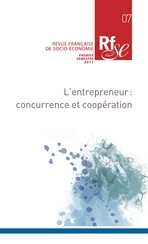 |
PINA-STRANGER A., 2011, «Réseaux de conseil et d’autorité dans les clusters de biotechnologies en France» ,
Revue française de socio-économie, 7 (1), p.45-66.
La proximité géographique a souvent été décrite comme un facteur favorisant le transfert de savoirs tacites entre les organisations. Nous explorons cette hypothèse en examinant les réseaux interpersonnels de conseils entre entrepreneurs dans plusieurs clusters biotechnologiques français. Nos résultats montrent qu’à l’intérieur des clusters l’échange de connaissances est plus efficace qu’au niveau national, que l’intensité des relations est associée aux performances des entreprises, et qu’il existe un consensus sur le choix des autorités épistémiques locales.
Geographical proximity has often been described as a factor promoting the transfer of tacit knowledge among organizations. We explore this hypothesis by examining the interpersonal advice network among entrepreneurs in several French biotechnology clusters. Our results show that within clusters the exchange of knowledge is more effective than at national level, the intensity of relationships is associated with firm performance, and there is a consensus on the choice of the local epistemic authorities. |
 |
PINA-STRANGER A., LAZEGA E., 2011, «Bringing personalized ties back in: Their added value for Biotech entrepreneurs and venture capitalists in inter-organizational networks» ,
The Sociological Quarterly, 52 (2), p.268-292.
Using a unique data set collected in France among biotech entrepreneurs and their venture capital investors (VCs), we measure the added value of personal relationships at the interorganizational level. Our analyses show that when two entrepreneurs share a personal collaboration tie or a personal friendship tie with a VC investor, the probability of having an advice tie and thus exchange tacit knowledge increases significantly. We confirm the importance of this kind of social embeddedness in the biotech industry where personalized ties –– as opposed to institutional and contractual relationships –– at the interorganizational level had not yet been examined systematically. Our results suggest that strategies of personalization of exchanges are vital for interorganizational learning. These strategies help entrepreneurs to access resources, participate in knowledge building, and co-orientate activities in this sector. |
| |
PONTILLE D., TORNY D., 2011, «Revues et évaluation scientifique : fabriquer un monde de classements» ,
Carnets de Bord, (17), p.35-46.
Accès au texte »
La compétition internationale pour l’excellence scientifique s’accompagne d’une batterie d’outils d’évaluation toujours plus nombreuse. Durant ces dernières années, la prolifération des classements de revues en tant qu’instruments de politique publique est particulièrement notoire. Ces classements de revues se présentent comme outil d’évaluation à la fois ajusté aux productions en SHS et alternatif tant aux indices bibliométriques qu’au système d’évaluation par les pairs. Prenant au sérieux cette singularité, cet article analyse les conditions de fabrique de trois classements de revues (en Australie, Norvège, et Europe) et documente leurs importantes variations. Il montre en quoi les classements de revues sont susceptibles de faire émerger un monde spécifique de l’évaluation et discute les enjeux particuliers qui le travaillent. |
| |
RABEHARISOA V., 2011, «Socializing Genetic Diseases, Essays on Science and Society» ,
Science, 331 (6020), p.1026-1027. |
| |
RABEHARISOA V., 2011, «Démembrement de l’autisme et multiplication des groupes concernés : quelques observations et questions» ,
Le Bulletin Scientifique de l’ARAPI, (28), p.5-9.
Les connaissances sur l’autisme et les modalités de sa prise en charge ont évolué, même si de nombreuses incertitudes demeurent et si l’organisation des soins est perfectible. Au cœur de cette évolution des connaissances se trouve, je crois, de nouvelles pratiques collaboratives entre des disciplines scientifiques et des spécialités médicales qui se sont longtemps ignorées, et tout particulièrement entre la psychiatrie et la biomédecine. C’est cette évolution des formes de travail scientifique et médical que je vais évoquer dans une première partie. Je montrerai qu’une des conséquences importantes de cette évolution est un changement du statut de l’autisme, qui n’est plus défini comme une pathologie unique et clairement délimitée, mais comme un syndrome aux formes multiples, dont certaines limitrophes d’autres troubles. Ce démembrement de la catégorie « autisme » fait qu’une attention tout particulière est accordée à la singularité des manifestations de ce trouble, ce qui invite, du même coup, à une réflexion de fond sur ce qu’est l’ « autisme ». |
| |
RABEHARISOA V., 2011, «Préface» ,
in VAILLY J., (ed.), Naissance d'une politique de la génétique. Dépistage, biomédecine, enjeux sociaux, Paris, PUF, p.XI-XII. |
| |
RÉMY C., 2011, «La nouvelle directive européenne en matière d’expérimentation animale et l’échelle des êtres sensibles. Du dualisme au gradualisme» ,
Revue de primatologie, p.Document 19, mis en ligne le 30 septembre 2011.
Accès au texte »
3 |
| |
RÉMY C., 2011, «Compte rendu. A. Pecqueux et Olivier Roueff, Ecologie sociale de l’oreille. Enquêtes sur l’expérience musicale, Editions de l’EHESS, Paris, 2009, 284 pp.» ,
Sociologie du Travail, 53 (4), p.559-560. |
| |
RÉMY C., 2011, «Redifining the Boundaries of Humanity. The case of allo- and xeno-transplantation» ,
in FAINZANG S., HAXAIRE C., (ed.), Of Bodies and Symptoms. Anthropological Perspectives on their social and Medical Treatment, Tarragona, Publicaciones URV, p.223-238. |
 |
RENAULT M., 2011, «Analyse pragmatique du business model et "performations" de marché dans l’entrepreneuriat technologique.» ,
Thèse de doctorat, Paris, École Nationale Supérieure des Mines de Paris.
Accès au texte »
Le business model, largement utilisé par les acteurs de l'entrepreneuriat technologique, reste faiblement inséré dans la littérature en sciences de gestion. Si le flou du concept ne semble pas poser problème aux praticiens, il nourrit les controverses académiques. Qu'est-ce qu'un business model ? Afin de répondre à cette question, la thèse adopte une approche originale pour définir le concept à partir de ce qu'il fait et fait faire aux acteurs de l'entrepreneuriat technologique. Le cadre d'analyse pragmatique développé dans la thèse décrit trois modalités de représentation du business model : prototype de l'entreprise en création, logique de création de valeur générique et modélisation économique du projet. La thèse étudie comment ces trois modalités performent l'exploration du marché pour la technologie, l'insertion de la jeune pousse dans des architectures sectorielles et l'obtention des ressources financières nécessaires à son développement. Finalement, la thèse montre que la plasticité du business model, conçue initialement comme une faiblesse, favorise au contraire la coordination d'acteurs hétérogènes (entrepreneurs, clients, partenaires, investisseurs, etc.) en situation d'incertitude.
Despite its wide diffusion in techno-entrepreneurial practices, the business model remains weakly inserted in the management academic literature. If the vagueness of this notion does not hinder its use by practitioners, it fosters academic controversies. How to define a business model? In order to address this question, this thesis adopt an original approach and draws the business model definition upon what it performs (induces, provokes, establishes) in techno-entrepreneurial practices. The pragmatic analytical framework developed in the thesis characterizes three representations of the business model: start-up prototype, generic value creation logics and economic modeling of a venture. The thesis examines how these three representations are exploited by practitioners to explore the market for the technology, to insert the start-up in industrial architectures and to leverage financial resources. In fact, the thesis shows that the business model plasticity, initially considered as a weakness, supports the coordination among heterogeneous actors – entrepreneurs, customers, partners, investors, consultants – in an uncertain context. |
 |
SCHAFER V., LE CROSNIER H., MUSIANI F., 2011, La neutralité de l’internet. Un enjeu de communication ,
Paris, CNRS Editions. |
 |
TEIL G., BARREY S., FLOUX P., HENNION A., 2011, Le vin et l’environnement ,
Paris, Presses des Mines.
L’engouement pour le bio se confirme. La qualité environnementale des vins interroge donc des producteurs, revendeurs, consommateurs, journalistes, restaurateurs, fonctionnaires, chercheurs : la vigne est en effet une très grande consommatrice de produits phytosanitaires.
Comment vivent et agissent ceux qui veulent conduire la viticulture vers un plus grand respect de l’environnement ? En s’appuyant sur des centaines de témoignages, cet ouvrage rend compte des approches et des pratiques, couronnés ou non de succès, de tous ceux qui se sont engagés d’une façon ou d’une autre dans l’agriculture raisonnée ou intégrée, l’agrobiologie ou la biodynamie, ou encore ceux qui cherchent à revenir à une plus grande authenticité de terroir |
| |
TIRONI M., 2011, «Construyendo infraestructuras para la movilidad: el caso del sistema de bicicletas en libre servicio de París» ,
Athenea Digital, (14), p.41-62.
Ciudad sustentable, nuevas tecnologías, movilidad. Éstas, entre otras, son las referencias que se suelen utilizar para designar el fenómeno de globalización de los sistemas de bicicletas en libre servicio (BLS) Valorados por su carácter amigable con el planeta, estos sistemas son hoy un must para las ciudades que desean inscribirse en la llamada “cultura verde”. Tomando como referencia el programa Vélib’ (París), me propongo problematizar nociones como ‘ciudad sustentable’ y ‘movilidad’, y describir el trabajo colectivo y siempre controversial necesario para elaborar y estabilizar una infraestructura como la de dicho programa. Busco describir los instrumentos, estrategias y desplazamientos (políticos, urbanos y técnicos) utilizados para la concepción del sistema de usuarios de BLS más extenso del mundo. En la primera parte del texto, de carácter ensayístico, describo cómo para cierta literatura el fenómeno de las bicicletas públicas es signo del renacer de las prácticas urbanas en las grandes metrópolis. A continuación, y con base en material empírico proveniente del estudio de caso del sistema BLS de París, analizo dos controversias que permiten situar, desde un enfoque pragmático, el estudios de esta infraestructuras de movilidad
Sustainable city, new technologies, mobility. These, among others, are some of the terms commonly used to refer to the globalization of the self-service bicycle programmes. Valued for its 'planet friendly' character, these systems have become the hallmark for cities that want to become part of the so-called 'green culture'. Drawing from the experience of the Vélib' program in Paris, this essay problematizes the notions of sustainable city and mobility and describes the collective and controversial work needed to elaborate and stabilize this infrastructure. This essay describes
the instruments, strategies and movements (political, urban and technical) used in the conception of this system. The first part of the text describes how the system of public bicycles is conceived as a symbol of the rebirth of urban practices in a big contemporary metropolis. The second part draws on empirical material from a case study of a self-service bicycle system in Paris and analyses two controversies at the
beginning of the project. These controversies, which will be analysed from a pragmatic perspective, will allow us to move beyond the common, culturalist way of conceptualizing these infrastructures. |
 |
TIRONI M., 2011, «Comment décrire les infrastructures de vélo en libre-service ? La mise en oeuvre controversée du dispositif Vélib’ parisien» ,
Working paper.
Accès au texte »
Le texte correspond à une étude de terrain encore en cours, s'attachant à la description des débuts du projet Vélib', en s'appuyant sur un travail d'archives et d'entretiens. Son intérêt consiste, en particulier, à restituer les controverses qu'a fait naître le modèle économique/urbain du projet Vélib' au moment de sa conception. |
 |
TRÉBUCHET-BREITWILLER A., 2011, «Le travail du précieux. Une anthropologie économique des produits de luxe à travers les exemples du parfum et du vin.» ,
Thèse de doctorat, Paris, École Nationale Supérieure des Mines de Paris.
Accès au texte »
Cette thèse s'intéresse à la constitution de la qualité des produits de luxe. Elle réalise une revue de la littérature sur le luxe et revient sur les traitements de la question de la qualité dans la sociologie économique contemporaine. A travers six chapitres empiriques, elle considère de façon longitudinale le travail des parfums et des vins (de Bourgogne) : elle suit un développement de parfum de marque dans un grand groupe de marketing ; elle décrit un parfumeur de niche, les Editions de Parfums Frédéric Malle ; elle revient sur le travail des matières premières naturelles de la parfumerie fine à travers l'exemple du Laboratoire Monique Rémy à Grasse ; elle décrit le travail de la qualité des vins chez un négociant spécialisé dans les vins fins ; elle observe le travail de la vigne et du vin dans un grand domaine, le Domaine Leflaive ; elle revient sur l'histoire et la réussite contemporaine du Domaine de la Romanée-Conti. Par l'écheveau des modalités de qualification des produits de luxe qu'elle fait apparaître, la thèse éloigne de tout automatisme comme de toute réduction le rapport qu'il y a entre luxe et qualité. Puis en ressaisissant et en mettant en perspective ce qui se donne à voir dans son terrain, elle élabore une théorie du travail du précieux comme mode original de qualification et d'individualisation des produits.
This thesis addresses how the quality of luxury products is constituted. It reviews the literature on luxury and reconsiders how quality is treated in contemporary economic sociology. It contains six empirical chapters, each dedicated to a specific setting, in which the work on perfume and wine (Burgundy) is followed longitudinally: the development of a branded perfume in a large marketing-based firm; a niche perfume designer and manufacturer, the "Éditions de Parfum Frédéric Malle"; natural raw materials processing for fine perfumery at the "Laboratoire Monique Rémy" in Grasse (France); quality improvement by a tradesman specialised in fine wines; wine and vine care in a large estate, the "Domaine Leflaive"; the history and contemporary success of the "Domaine de la Romanée-Conti" estate. The thesis evidences a meshwork of qualification criteria for luxury products, which forbids any automatic reduction relationship between luxury and quality. By considering what appears in its empirical observations, it establishes a theory of "the making of things precious" as an original mode for the qualification and individualisation of products. |
| |
VEYRAT-MASSON I., MÉADEL C., MARÉCHAL D., 2011, «Dossier "Communiquer le sacré". Introduction et direction» ,
Le Temps des médias, (17).
Le désir des Églises et des religions de toucher les esprits les a conduites à explorer, sans relâche, malgré les difficultés et les risques, tous les moyens de communication existants. Dès lors, elles ne pouvaient que s'intéresser à leur multiplication contemporaine et elles s'en sont saisies en même temps que leurs fidèles s'appropriaient la culture de masse. Les médias du monde moderne ont constitué pour les clercs à la fois, une opportunité et une menace. Opportunités auxquelles les autorités religieuses se sont très vite intéressées, soucieuses de faire entendre leur parole dans l'espace public, mais menaces aussi tant les inquiétaient la corruption des âmes, l'absence de contrôle ecclésiastique, la diffusion de la laïcité... |
| |
AKRICH M., 2010, «Le Ciane, un collectif hybride dans le monde de la périnatalité» ,
Revue de médecine périnatale, (2), p.197-202.
Accès au texte »
Le collectif interassociatif autour de la naissance (Ciane) regroupe des associations dont les histoires, les ressources et les compétences sont variées ; grâce aux outils de coordination fournis par Internet, il a pu construire une articulation entre une expertise tirée de l’expérience des
femmes et des couples et une expertise médicoscientifique. De cette manière, il a tiré partie de la diversité de ses membres pour constituer un mouvement original entièrement tourné vers l’action politique au sens large.
The “collectif interassociatif autour de la naissance, Ciane” brings together organisations with various backgrounds, resources and competencies; thanks to Internet coordination tools, it succeeded in articulating an expertise gained from experience of women and couples with a medico-scientific expertise. Thus, it took advantage of the diversity of its members to constitute a movement oriented towards policy action at large. |
| |
AKRICH M., 2010, «From communities of Practice to Epistemic Communities: Health Mobilizations on the Internet» ,
Sociological Research Online, 15 (2).
Accès au texte »
This paper describes the emergence of new activist groups in the health sector, spinning off from internet
discussion groups. In the first part, it shows how self-help discussion groups can be considered as
communities of practice in which, partly thanks to the Internet media, collective learning activities result in
the constitution of experiencial knowledge, the appropriation of exogenous sources of knowledge, including
medical knoweldge and the articulation of these different sources of knowledge in some lay expertise. In
the second part, it describes how activist groups might emerge from these discussion groups and develop
specific modes of action drawing upon the forms of expertise constituted through the Internet groups.
Activists groups together with self-help groups might form epistemic communities (Haas 1992), i.e. groups
of experts engaged in a policy enterprise in which knowledge plays a major role : in the confrontation of
health activists with professionals, the capacity to translate political claims into the langage of science
appears as a condition to be (even) heard and be taken into consideration. |
| |
AKRICH M., 2010, «Retour sur "Comment décrire les objets techniques"» ,
Techniques et Culture, 1p.203-204.
54-55 |
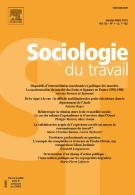 |
AKRICH M., 2010, «Compte-rendu. Les capitalistes de la science. Enquête sur les démonstrateurs de la Silicon Valley et de la NASA, C. Rosental, CNRS Editions, Paris, 2007» ,
Sociologie du Travail, 52 (1), p.122-124.
Accès au texte » |
 |
AKRICH M., BARTHE Y., MUNIESA F., MUSTAR P., 2010, Débordements. Mélanges offerts à Michel Callon ,
Paris, Presses des Mines.
Michel Callon a marqué les sciences humaines et sociales par sa production académique, par ses activités d’animateur de la communauté scientifique et par son rôle de médiateur entre la recherche et le monde de la politique, de l’administration et de l’entreprise. Il a multiplié les espaces d’entente et de confrontation, en se déplaçant aussi bien sur le terrain de la sociologie que sur celui des politiques de recherche et d’innovation celui de l’anthropologie économique, de la scientométrie, des sciences politiques ou de l’anthropologie de la médecine.
Plusieurs dizaines d’auteurs explorent des sentiers vers lesquels les a conduit la pensée de Michel Callon : Rémi Barbier, Rémi Barré, Andrew Barry, Dominique Boullier, Geoffrey Bowker, Franck Cochoy, Patrick Cohendet, Jean-Pierre Courtial, Hervé Dumez, Domniqiue Foray, Raghu Garud, Joel Gehman, Armand Hatchuel, Antoine Hennion, Jean-Alain Héraud, Sheila Jasanoff, Alain Jeunemaître, Pierre-Benoît Joly, Patrick Llerena, Peter Karnoe, Pierre Lascoumes, Bruno Latour, John Law, Loet Leydesdorff, Christian Licoppe, Donald MacKenzie, Alexandre Mallard, Peter Miller, Annemarie Mol, Fabian Muniesa, Hervé Penan, Dominique Pestre, Trevor Pinch, Arie Rip, Nigel Thrift. |
 |
AKRICH M., BARTHE Y., MUNIESA F., MUSTAR P., 2010, «Michel Callon, chercheur "a-discipliné"» ,
Débordements. Mélanges en l'honneur de Michel Callon, Paris, Presses des Mines, p.5-7. |
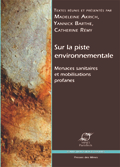 |
AKRICH M., BARTHE Y., RÉMY C., 2010, Sur la piste environnementale. Menaces sanitaires et mobilisations profanes ,
Paris, Presses des Mines.
Accès au texte »
Repérer des victimes, confondre des suspects : les mobilisations dans le domaine de la santé environnementale se présentent désormais comme de véritables enquêtes policières. À la différence près que, dans ce domaine, les investigations ne sont pas menées uniquement par des enquêteurs professionnels. Les « profanes » cherchent eux aussi à rendre visibles les menaces auxquelles ils pensent être exposés et à établir la réalité des dommages dont ils s’estiment les victimes. Cet ouvrage rassemble une série de travaux anglo-saxons pionniers sur des affaires célèbres qui illustrent le rôle crucial joué par les non-spécialistes dans les controverses portant sur les liens entre l’environnement et la santé. |
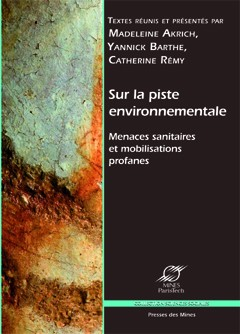 |
AKRICH M., BARTHE Y., RÉMY C., 2010, «Les enquêtes profanes et la dynamique des controverses en santé environnementale» ,
in AKRICH M., BARTHE Y., RÉMY C., (ed.), Sur la piste environnementale. Menaces sanitaires et mobilisations profanes., Paris, Presses des Mines, p.7-52. |
| |
AKRICH M., MÉADEL C., 2010, «Internet, ou comment constituer la famille en acteur de santé» ,
in CRESSON G., MEBTOUL M., (ed.), Famille et santé, Rennes, Presses de l'EHESP, p.159-168.
En matière de santé, la famille est généralement considérée comme un des lieux privilégiés dans lequel peuvent s'exercer la vigilance, la prévention, la détection des problèmes et le soin. Cependant, elle apparaît aussi comme un ensemble d'individus aux compétences et aux comportements incertains : à ce titre, elle est objet d'études (quelles sont les connaissances des parents ? comment réagissent-ils face à un problème de santé particulier ?), de critiques (par exemple sur le plan des habitudes alimentaires, sur l'usage des médicaments, sur le recours au médecin etc.), de campagnes de sensibilisation (sur les antibiotiques, l'usage des stupéfiants...) ; elle est aussi destinataire d'informations, bénéficiaire d'incitations visant à susciter les comportements considérés comme appropriés. Bref, se dessine d'emblée une figure de la famille comme acteur, si ce n'est déficient, du moins à former et informer, éventuellement à soutenir, et, par voie de conséquence, une représentation des relations avec les professionnels de la santé et de l'action sociale marquées au sceau de l'asymétrie.
Par rapport à cette présentation, volontairement provocatrice, nous voudrions proposer un modèle différent de la famille qui mette l'accent sur ses compétences, sur sa capacité à observer et analyser les situations dans lesquelles elle se trouve, sur sa volonté d'élaborer des solutions à ses problèmes sans s'en remettre passivement aux professionnels, et plus encore, sur sa capacité à critiquer de manière construite l'action de certains professionnels, à proposer des alternatives et à faire valoir in fine la famille comme un acteur à part entière dans les décisions et les actions qui concernent la santé de ses membres. |
| |
BADOUARD R., 2010, «Pathways and Obstacles to e-Participation at the European level» ,
Journal of eDemocracy and Open Government, 2 (2), p.99-110. |
| |
BARTHE Y., 2010, «Cause politique et "politique des causes". La mobilisation des vétérans des essais nucléaires français» ,
Politix, 23 (91), p.77-102. |
| |
BARTHE Y., 2010, «La réversibilité, c’est la possibilité de réviser ses choix» ,
La Recherche, p.82-83.
439 |
| |
BARTHE Y., 2010, «Le syndrôme du bâtiment malsain, "c’est dans la tête" ?. Interview» ,
Info Respiration, p.24.
102 |
| |
BARTHE Y., 2010, «Le syndrome du bâtiment malsain : un problème de santé mentale ?"» ,
Le Concours médical, 132p.9-10.
9 |
| |
BARTHE Y., 2010, «Déchets nucléaires : ce que décider veut dire» ,
in ANDRA., (ed.), Rendre gouvernable les déchets radioactifs. Le stockage profond à l'épreuve de la réversibilité, ANDRA, p.11-29. |
| |
BARTHE Y., CALLON M., LASCOUMES P., 2010, «De la décision politique réversible : histoire d’une contribution inattendue de l’industrie nucléaire (française) à l’instauration d’une démocratie dialogique» ,
Urbe. Revista Brasileira de Gestao Urbana (Brazilian Journal of Urban Management), 2 (1), p.57-70.
Les travaux récents consacrés aux controverses sociotechniques ont mis en évidence l’émergence d’un
nouveau modèle de décision politique. Dans ce modèle, les décisions sont révisables et prises à l’issue
d’un débat ouvert qui permet aux groupes concernés d’intervenir dans le contenu des choix techniques.
Cet article montre la progressive instauration de ce modèle dans le domaine des déchets nucléaires.
Nous expliquons comment et pourquoi s’y impose la notion de décision politique réversible et nous
suggérons sa possible transposition à d’autres secteurs. |
| |
BARTHE Y., JOUZEL J., 2010, «Les sociétés démocratiques face aux risques» ,
in HOLEINDRE J., RICHARD B., (ed.), La Démocratie. Histoire, théories, pratiques, Auxerre, Editions Sciences Humaines, p.149-155. |
| |
BARTHE Y., RÉMY C., 2010, «Les aventures du "syndrome du bâtiment malsain"» ,
Santé Publique, 22p.303-311.
Le concept de syndrome du bâtiment malsain désigne des symptômes variés et bénins qui touchent des groupes d’individus sur leur lieu de travail ou à l’intérieur de bâtiments publics. En théorie, le syndrome du bâtiment malsain se caractérise par une étiologie indéterminée : il met l’accent sur une multiplicité de facteurs possibles mais incertains, environnementaux et psycho-sociaux, ayant des effets variés. En pratique, le concept est pourtant souvent confondu avec celui de syndrome psychogène. L’article s’interroge sur cette réduction étiologique et met en lumière quelques-unes de ses conséquences problématiques. Les auteurs plaident, au contraire, pour une reconnaissance de l’incertitude, moteur, selon eux, de réflexions renouvelées en matière de santé publique.
The adventures of “Sick Building Syndrome”The Sick Building syndrome concept is used to describe a variety of minor symptoms that afflict groups of people in the workplace or in public buildings. In theory, the sick building syndrome is characterized by an unspecified etiology: it underlines a multiplicity of possible causes, environmental or psychosocial, which produce various effects. In practice, the concept is often misused as a synonym of the psychogenic syndrome. The paper explores this “etiological reduction” and highlights some of the problematic consequences. The authors advocate for the recognition of uncertainty, which is in their opinion, a source and driver of renewed reflection in the public health area. |
| |
BOURGOIN A., 2010, «Mutations et stratégies émergentes sur le marché du conseil en management» ,
Mines Revue des Ingénieurs, (449), p.46-49. |
| |
CALISKAN K., CALLON M., 2010, «Economization, part 2: research programme for the study of markets» ,
Economy and Society, 39 (1), p.1-32.
Presented in two parts, this article proposes a research programme devoted to
examining ‘processes of economization’. In the first instalment, published in
Economy and Society 38(3) (2009), we introduced the notion of ‘economization’. The
term refers to the assembly and qualification of actions, devices and analytical/
practical descriptions as ‘economic’ by social scientists and market actors. Through
an analysis of selected works in anthropology, economics and sociology, we discussed
the importance, meaning and framing of economization, unravelling its trace within
a variety of disciplinary backgrounds. This second instalment of the article explores
what it would mean to move this research programme forward by taking processes of
economization as a topic of empirical investigation. Given the vast terrain of
relationships that produce its numerous trajectories, to illustrate what such a project
would entail we have limited ourselves to the examination of processes we call
‘marketization’. These processes, which constitute but one modality of economization,
are discussed here from five vantage points: the things in the market, agencies,
encounters, prices and market maintenance. |
| |
CALLON M., 2010, «Egypt and the experts» ,
Gérer et Comprendre, (100), p.92-95. |
| |
CALLON M., 2010, «Marketing as an art and science of market framing: Commentary» ,
in ARAUJO L., FINCH J., KJELLBERG H., (ed.), Reconnecting Marketing to Markets, Oxford, Oxford University Press, p.224-233. |
| |
CALLON M., 2010, «Afterword» ,
in FEENBERG A., (ed.), Between Reason and Experience: Essays in Technology and Modernity, MIT Press, p.219-226. |
| |
CALLON M., 2010, «Performativity, misfires and politics» ,
Journal of Cultural Economy, 3 (2), p.163-169.
The author comments on an article by Judith Butler on performativity of economics. He says that the questions raised by Butler are important and that the performativity programme makes reflection on the economy-politics nexus central. He agrees with the assertion of Butler that the thesis by J. L. Austin cannot be reduced to illocutionary performativity. The author concludes that the performativity of economics introduces debates on the organization of economic activities. |
| |
COLOMBO M., LUUKKONEN T., MUSTAR P., WRIGHT M., 2010, «Venture capital and high-tech start-ups» ,
Venture Capital, 12 (4), p.261-266. |
| |
COLOMBO M., MUSTAR P., WRIGHT M., 2010, «Dynamics of Science-based entrepreneurship» ,
The Journal of Technology Transfer, 35 (1), p.1-15.
This article introduces the rationale for the special issue, summarizes the main themes covered by the papers presented and suggests areas for further research. Previous research has focused on the creation of Science-based entrepreneurial firms (SBEFs) but there is little research relating to their growth and the challenges in ensuring growth occurs. At the macro-level, there is a need to distinguish general versus specific policies and how these vary between different institutional environments. At the firm level, there is a need to consider the factors influencing the development of boards, the growth of SBEFs and their dynamics in terms of acquisitions and IPOs. |
 |
DEBOURDEAU A., 2010, «Policer les énoncés, façonner la responsabilité des entreprises : les processus de codification et d’"enforcement" du reporting de développement durable» ,
Working paper.
Accès au texte »
Le reporting social et environnemental est devenu en une décennie un instrument majeur et hybride de gouvernement du développement durable, via la publication de données et d'indicateurs devenus des points de passage obligé pour les grandes entreprises. La Global Reporting Initiative est en la matière un référentiel incontournable, largement réapproprié par les autorités politiques et durcis par le droit (loi NRE en France). Il importe donc de retracer processus de normalisation-codification et de construction d'une police des énoncés quant aux objets de
Social and environmental reporting became during the last decade a fundamental instrument for sustainable governance, through the publication of data and indicators of sustainable development as obligatory points of passage for companies. The Global Reporting Initiative's Guidelines are the reference frame, largely recognized and adapted by political authorities and often enforced by the law (as in french “NRE”). This paper recalls the process of standardization-codification and the policing of statements about the values and the principles of sustainable development. |
| |
DENIS J., PONTILLE D., 2010, «La ville connectée» ,
Réalités Industrielles, p.69-74.
Accès au texte »
Les réseaux numériques ne sont plus pensés à l’aune de la seule virtualité, mais s’inscrivent en lien direct avec le territoire physique. Ils offrent des outils visant à faciliter l’usage de la ville. Nous entrons dans une nouvelle ère, celle de l’écologie informationnelle des lieux publics. |
| |
DENIS J., PONTILLE D., 2010, «The Graphical Performation of a Public Space. The Subway Signs and their Scripts» ,
in SONDA G., COLETTA C., GABBI F., (ed.), Urban Plots, Organizing Cities, London, Ashgate, p.11-22.
Accès au texte »
In this chapter, we study the ordering process provided by subway signs from an actor-network theory perspective. We adopt the position of M. Akrich (1992) who showed that the innovation process could be compared to the writing of a ‘script' that attributes tasks and positions to people and things, and organizes relations between them. By studying the riders' representations inscribed within signage, we identify the behaviors supposed to take place in subway spaces, and shed the light on the framework of action that the Parisian policy of subway signs supports. We identify four distinct scripts: information, planification, problem solving and reaction. For each one, we precise the riders' definition it relies on, the type of signs that are supposed to carry it, and what it really takes in situation to follow it, that is, what one has to do to effectively become an informed rider, a planner, a problem solver or a reactive entity. |
 |
DENIS J., PONTILLE D., 2010, Petite sociologie de la signalétique. Les coulisses des panneaux du métro ,
Paris, Presses des Mines.
Dans les villes, sur les routes, au supermarché : les panneaux indicateurs sont partout. Si leur présence semble évidente, leur forme, leur contenu, leur emplacement ne vont pourtant pas de soi. Ils sont le résultat d’un travail complexe qui produit des espaces hybrides, où signes et architectures sont entrelacés. Ce livre explore les coulisses d’une signalétique aujourd’hui mondialement reconnue : celle du métro parisien. De l’organisation des services, jusqu’à l’activité des ouvriers qui installent et réparent les panneaux, en passant par les discours des concepteurs, il évoque les multiples facettes d’un dispositif ambitieux qui vise à transformer aussi bien les espaces du métro que le comportement de ses usagers. Complétant leur enquête d’un détour par le métro new-yorkais, les auteurs montrent que la signalétique parisienne instaure une véritable politique de l’attention où chacun peut s’attacher à la multitude des objets graphiques qui sont mis à sa disposition. |
| |
DENIS J., PONTILLE D., 2010, «Placing Subway Signs: Practical Properties of Signs at Work» ,
Visual Communication, 9 (4), p.441-462.
Accès au texte »
This article complements previous studies stressing the importance of the emplacement of signs in public spaces by focusing on the placement process itself. The authors’ ethnographic study of the Paris subway shows that the way-finding system operates in a process of graphical ordering within which the standardized shape, content and emplacement of each sign are crucial. However, the placement work does not simply consist of following instructions. The authors show that, in order to find the proper place for boards, stickers and posters, workers have to explore the environment and reconcile the sign placement policy with the ecology of the local sites. In doing so, workers do not just discover an emplacement designated for a particular sign but enact an available place, mobilizing numerous embodied practices. During this process, signs themselves are not treated as stabilized entities; they oscillate between what the authors term ‘practical properties’ that arise from the combination of objects, bodies and environment. |
| |
DENIS J., PONTILLE D., 2010, «Information voyageurs : inventer une signalétique collective à lʼère du 2.0» ,
Ville Rail & Transport, (494), p.40-46.
Retour sur la signalétique repensée par la RATP dans les années 1990. Comment envisager aujourd'hui cette forme d'information voyageur stables et publiques au vu des transformations récentes aussi bien des les pratiques de mobilité que du côté des technologies informationnelles numériques ? |
| |
DENIS J., PONTILLE D., 2010, «Aménager des espaces circulables. La dynamique des déictiques» ,
Sciences de la Société, (80), p.177-192.
Accès au texte »
Cet article revisite la question des déictiques en analysant les conditions d'aménagement d'un espace circulable par le biais de panneaux indicateurs. Fondé sur une enquête ethnographique de l'installation de la signalétique du métro parisien, il montre que la qualité déictique d'un panneau est le résultat d'une série de transformations successives qui articulent sa composition graphique, son contenu linguistique et sa position spatiale. Ce faisant, il éclaire des dimensions largement ignorées par les principaux modèles d'analyse des déictiques, que ce soit en linguistique ou en ethnométhodologie. Les transformations soulignent notamment le continuum qui relie les aspects politiques d'un système signalétique (de la normalisation des panneaux jusqu'à la dénomination même des lieux) et ses aspects matériels (de la forme et l'emplacement des panneaux jusqu'aux conditions concrètes de leur installation).
This paper reexamines the question of deictics by analyzing the fitting-out of a circulatory space with signposts. Grounded on an ethnographic study of the parisian subway signs installation, it shows that the deictic quality of a signpost is the result of successive transformations, which articulate its graphical composition, its linguistic content and its spatial position. In doing so, the paper highlights dimensions that have been overlooked by the main theoretical models both in linguistics and in ethnomethodology. The transformations notably emphasize the continuum between the political aspects of signage (from the normalization of signs to the very naming of places) and its material ones (from the shape and location of boards to the concrete conditions of their installation). |
| |
DENIS J., PONTILLE D., 2010, «Performativité de l’écrit et travail de maintenance» ,
Réseaux, (163), p.105-130.
Accès au texte »
L’analyse sociologique des objets graphiques qui ordonnent l’environnement se concentre généralement sur les ajustements effectués pour les constituer en ressources pour l’action, faisant des usages le principal ressort de leur performativité. À partir du cas de la signalétique du métro, cet article renverse cette perspective et se focalise sur l’activité d’aménagement des lieux. Il cherche ainsi à éviter de considérer les artefacts graphiques comme des objets inertes, et de faire de l'immuabilité une propriété intrinsèque de l'écrit. Il montre au contraire l’importance cruciale du travail de maintenance qui entretient au jour le jour les qualités spatiales et matérielles des objets et leur assure une force performative sans cesse réactualisée.
Sociological analysis of the graphical objects that order the environment generally focuses on the adjustments that are made to turn them into resources for action. Uses are thus seen as the driver of their performativity. Based on the case of subway signs, this article takes the opposite view and focuses on the activities of fitting out settings. The authors thus avoid both considering graphical artefacts as inanimate objects, and making immutability an intrinsic property of writing. They show, on the contrary, the crucial importance of maintenance work that, from day to day, maintains the spatial and material qualities of the objects and gives them a constantly updated performative force. |
| |
DENIS J., PONTILLE D., 2010, «Les espaces de variation des objets graphiques» ,
Graphisme en France, (17), p.5-8. |
 |
DOGANOVA L., 2010, «Faire valoir l’exploration collective. Dynamiques, instruments et résultats des partenariats avec des spin-offs académiques» ,
Thèse de doctorat, Paris, École Nationale Supérieure des Mines de Paris.
Accès au texte »
Comment évaluer le rôle que jouent les spin-offs académiques – ces entreprises créées pour valoriser les résultats de la recherche publique ? Pour répondre à cette question, cette thèse envisage les spin-offs dans leurs interactions avec les acteurs hétérogènes qui composent les réseaux techno-économiques de l‟innovation. Elle décrit l‟entrepreneuriat académique comme un processus d‟exploration et de consolidation de nouvelles technologies, marchés et relations. De plus, la thèse examine ce que produisent les collaborations inter-organisationnelles qui se nouent au cours de ce processus. Elle montre notamment la diversité des effets générés, en distinguant la contribution de différents types de partenariats (d‟exploration, d‟exploitation et ambidextres) à différentes dimensions de l‟innovation. Enfin, la thèse étudie la manière dont la valeur de ces associations exploratoires est construite dans la pratique d‟une action collective qui engage les spin-offs et leurs partenaires et qui mobilise des dispositifs de « valuation » particuliers.
How can we assess the role played by academic spin-offs, i.e. new ventures founded in order to transfer scientific results generated in public research organisations? In order to address this question, this thesis studies spin-offs in their interactions with the heterogeneous actors that compose the techno-economic networks of innovation. It depicts academic entrepreneurship as a process of exploring and consolidating new technologies, markets and relations. Moreover, the thesis examines the effects generated by the inter-organizational collaborations that are formed as part of this process. It demonstrates, in particular, the diversity of their innovative outputs, by distinguishing the contribution of different types of partnerships (explorative, exploitative and ambidextrous) to different dimensions of innovation. Finally, the thesis investigates how the value of such explorative associations is constructed in practice - through a collective action which involves various actors and which is equipped with specific valuation devices.
Keywords : |
| |
FARCHY J., FROISSART P., MÉADEL C., 2010, «Introduction (et coordination du numéro : Sciences.com)» ,
Hermès, (57), p.9-11. |
 |
FRAENKEL B., PONTILLE D., COLLARD D., DEHARO G., 2010, Le travail des huissiers : transformations d’un métier de l’écrit ,
Toulouse, Octares, coll. “Travail et activité humaine”.
Le métier d’huissier de justice est entouré d’une sorte d’aura malheureuse. Au même titre que le juge ou l’avocat, l’huissier est pourtant un maillon indispensable de la chaîne judiciaire : il veille à la bonne exécution des décisions de justice et garantit l’application de la loi. Pour cela, il puise au droit et à une tradition ancestrale nourrie par une « culture du toucher ». Révélée par l’ouvrage, cette « culture du toucher » structure de part en part les pratiques et les compétences professionnelles des huissiers de justice. L’huissier pénètre dans la sphère intime des personnes, là où se côtoient le soi et les siens, les corps et les biens. Il exerce aussi un métier où l’écrit est fondamental pour agir. Avec lui, c’est la loi qui s’impose sous la forme d’objets écrits qu’il doit faire, littéralement, toucher du doigt.
Or, au cours des vingt dernières années, les formes d’exercice même du métier ont été bousculées. L’ouverture croissante à la concurrence est venue directement remettre en cause le monopole dont jouissaient les huissiers de justice, les obligeant ainsi à innover pour tirer leur épingle du jeu. Par ailleurs, l’informatisation des études d’huissier, l’adoption des nouvelles technologies de l’information et de la communication, et l’introduction de la signature électronique ont considérablement bouleversé les environnements organisationnels et cognitifs dans lesquels les huissiers et leurs collaborateurs opèrent.
Fondé sur une recherche de terrain et sur une analyse interdisciplinaire originale, cet ouvrage propose une approche ethnographique du métier d’huissier. Il explore son travail quotidien, les tournées, les saisies, la vie des études. Il rend compte, plus largement, des bouleversements des savoirs et des valeurs qui régissent le monde juridique. En documentant les diverses facettes d’un métier pris dans une cascade d’évolutions juridiques, technologiques, économiques et sociales, ce livre propose un regard novateur sur des enjeux qui traversent désormais de nombreuses professions. |
| |
GAYON V., LEMOINE B., 2010, «Argent public» ,
Genèses, (80), p.2-7.
Finances publiques, cotisations sociales, subventions, impôts ou encore monnaie... l’argent public connaît de multiples figures. Si, comme l’écrit Karl Marx, « dans le capital comme dans l’argent, [...] des rapports sociaux déterminés se représentent comme des propriétés sociales “naturelles” d’objets1 » (Marx 2008 : 293), il faut alors analyser les formes spécifiques... |
| |
GAYON V., LEMOINE B., 2010, «L’argent public et les régimes économiques de l’ordre politique : entretien avec Bruno Théret» ,
Genèses, (80), p.136-152.
À la suite de ses travaux sur les crises monétaires, Bruno Théret revient dans cet entretien sur la pluralité historique des formes d’argent ou de monnaie. Il envisage l’argent public en tant que monnaie de l’État dont il retrace les formes historiques depuis l’Ancien Régime. Aujourd’hui, l’État est à nouveau pensé dans une perspective restrictive non plus comme producteur de bien public mais comme prédateur : on s’efforce d’annuler son pouvoir monétaire, de restreindre ses ressources financières en le soumettant, par la médiation de la dette publique, aux pouvoirs de la finance privée.
Following his work on monetary crises, Bruno Théret returns in this interview to the historical plurality of the forms of money or of currency. He views public money as state currency, which has assumed different historical forms since the Old Regime. Today, the state is once again viewed restrictively, no longer as producing the public good but as preying upon it : every effort is made to cancel its monetary power and limit its financial resources by subjecting it, through the mediation of the national debt, to the authority of private finance. |
| |
HENNION A., 2010, «La question de la tonalité : retour sur le partage nature-culture. Relire Lévi-Strauss avec des lunettes pragmatistes ?» ,
L'Année sociologique, 60 (2), p.361-386.
L’auteur propose de relire la fameuse digression de Lévi-Strauss sur la musique qui ouvre les Mythologiques. L’intérêt de ce retour n’est pas de critiquer ou défendre ce texte provocant, mais de profiter de ses analyses, des critiques qu’il a essuyées, des incompréhensions qu’il a provoquées, et même de ses manques, pour poser à nouveaux frais la question de la tonalité, et se demander quelles remises en cause implique une telle entreprise : penser l’articulation entre les propriétés physiques du son et le langage musical. Lévi-Strauss lui-même ne cherchait pas à appliquer son modèle à la musique. L’articulation nature-culture que cet art réalise, réussite pour lui très mystérieuse, lui servait au contraire à pousser ses conceptions à leurs limites. En mettant en évidence une série de paradoxes, l’auteur revient notamment sur l’héritage du structuralisme, et en détache la position de Lévi-Strauss, qu’il éclaire depuis les apports des Science & Technology Studies (sts) et de la sociologie pragmatiste.
The author suggests to read again Lévi-Strauss’s famous digression on music, which opens his Mythologiques. The interest of getting back to this provocative text is not to criticize or defend it, but to draw some benefit from the analyses it provides, from the criticism it got, from the misunderstandings it raised, and even from its shortcomings, in order to address from scratch the issue of tonality. The text presents it as a perfor-mance, articulating physical properties of sound and musical language. Lévi-Strauss didn’t try to apply his own model to music. On the contrary, finding the way by which music provides such an articulation between nature and culture quite mysterious, he exploited this unlikely success of music to push his conceptions to their limits. Underlining a series of paradoxes, the author shows in particular how remote from the heritage of structuralism stands Lévi-Strauss, whose position he tries to reassess in the light of contributions brought by Science & Technology Studies and pragmatist sociology. |
| |
HENNION A., 2010, «Plaidoyer pour une histoire fictive du Grand Opéra français» ,
in GAUDEZ F., (ed.), La culture du texte. Approches socio-anthropologiques de la construction fictionnelle. Vol.2, Paris, L'Harmattan, p.109-129. |
| |
HENNION A., 2010, «L’engagement du sociologue : faire s’exprimer la pluralité des mondes ?» ,
MINES. Revue des Ingénieurs, p.39-40.
448 |
| |
HENNION A., 2010, «L’art contemporain est-il politique ? Création, marché, public» ,
in POPELARD M., (ed.), Art, éducation et politique, Sandre Actes, p.15-30. |
| |
HENNION A., 2010, «The price of the people. Sociology, performance and reflexivity» ,
in SILVA E., WARDE A., (ed.), Culturel Analysis and Bourdieu's Legacy, London, Routledge, p.117-127. |
| |
HENNION A., 2010, «Reflexividades. A atividade do amador» ,
Estudos de Sociologia. Revista do programa de pos-graduaçào em sociologie da UFPE, 16 (1), p.33-58.
This contribution provides an account of taste and amateurs’ practices as an activity, a meaningful accomplishment, with its tricks and bricolages, its gestures and objects, its places and medias. Taste is a performance, a problematic modality of attachment to the world. Playing, listening, tasting, climbing, drinking wine…, all those activities amount to more than the actualization of a taste already there. They are redefined during the action, with a result that is partly uncertain. In such a pragmatist conception, amateurs’ attachments and practices are understood as a collective technique, whose analysis shows the way we sensitize ourselves, to things, to ourselves, to situations and to moments, while simultaneously, reflexively controlling how those feelings might be shared and discussed with others.
Cet article se propose d’analyser les pratiques et les goûts des amateurs comme une activité, une réalisation chargée de sens, avec ses trucs et ses astuces, ses gestes et ses objets, ses lieux et ses supports. Il s’agit de traiter le goût comme une performance, une modalité problématique d’attachement au monde. Jouer, écouter, goûter, grimper, boire du vin… toutes ces activités renvoient à bien plus qu’à la simple actualisation d’un goût qui serait déjà là. Elles se définissent en cours d’action, avec un résultat en partie incertain. Suivant une telle conception pragmatique, les attachements et les pratiques des amateurs sont comprises comme une technique collective, dont l’analyse montre comment nous nous rendons sensibles aux choses, à nous-mêmes, aux situations et aux moments, tout en contrôlant réflexivement la façon dont ces sensations peuvent être partagées et discutées avec les autres. |
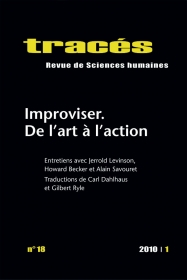 |
HENNION A., 2010, «La mémoire et l’instant. Improvisation sur un thème de Denis Laborde» ,
Tracés. Revue de Sciences humaines [En ligne], (18), p.141-152.
Accès au texte » |
 |
HENNION A., 2010, «Vous avez dit attachements ? ...» ,
in AKRICH M., BARTHE Y., MUNIESA F., MUSTAR P., (ed.), Débordements. Mélanges offerts à Michel Callon, Paris, Presses des Mines, p.179-190. |
| |
HENNION A., 2010, «Gustos musicales: de una sociologia de la mediacion a una pragmatica del gusto (Loving Music: from a sociology of mediation to a Pragmatics of Taste)» ,
Comunicar, 34 (XVII), p.25-33. |
| |
HENNION A., 2010, «Soli Deo Gloria. Bach était-il un compositeur ?» ,
Gradhiva, (12), p.42-47. |
| |
HENNION A., 2010, «Music Lovers: Taste as Performance» ,
in WARDE A., (ed.), Consumption. Vol. 3 Appropriation, London, SAGE, p.187-208.
This article presents the implications, objectives and initial results of a current ethnographic research project on music lovers. It looks at problems of theory and method posed by such research if it is not conceived only as the explanation of external determinisms, relating taste to the social origins of the amateur or to the aesthetic properties of the works. Our aim is, on the contrary, from long interviews and observations undertaken with music lovers, mostly in the classical field, to concentrate on gestures, objects, mediums, devices and relations engaged in a form of playing or listening, which amounts to more than the actualization of a taste `already there', for they are redefined during the action, with a result that is partly uncertain. This is why amateurs' attachments and ways of doing things can both engage and form subjectivities, rather than merely recording social labels, and have a history, irreducible to that of the taste for works. |
| |
JOLY P., RIP A., CALLON M., 2010, «Re-inventing Innovation» ,
in ARENTSEN M., VAN ROSSUM W., STEENG A., (ed.), Governance of Innovation. Firms, Clusters and Institutions in a Changing Setting, Cheltenham, Edward Elgar, p.14. |
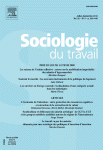 |
KESSOUS E., MELLET K., ZOUINAR M., 2010, «L’économie de l’attention : entre protection des ressources cognitives et extraction de la valeur» ,
Sociologie du Travail, 52 (3), p.359-373.
Accès au texte »
Cet article propose un tour d’horizon du concept d’économie de l’attention. Dans un premier temps, il présente les principaux modèles théoriques qui explorent les mécanismes d’allocation d’une économie dans laquelle l’attention constitue la ressource rare. Différents attracteurs de l’attention sont mis en avant selon les auteurs : la reconnaissance, la pertinence, le style et la puissance de l’émetteur de l’information. Dans un second temps, l’article montre que l’économie de l’attention expose les acteurs de l’Internet et des médias électroniques à deux logiques en apparence opposées. La première, orientée vers l’utilisateur, vise à protéger l’attention de ce dernier de la surcharge informationnelle et à améliorer son allocation. La seconde, au profit des firmes, a pour objectif de capter l’attention des clients ou des auditeurs pour la monétiser. Concilier ces deux approches est à la fois une gageure pour l’innovation et un atout dans la concurrence de l’économie numérique.
Abstract
This general survey of the economics of attention presents the major theoretical models for exploring the mechanisms for “allocating” attention in an economy where it is a scarce resource. Writers have emphasized various means for attracting attention: the recognition, relevance, style and power of the emitter of information. The economics of attention subjects parties on the Internet and in the electronic media to two apparently opposite rationales. The first seeks to protect the attention of users from an information overload and improve its allocation. The second seeks to capture, for firms, the attention of customers or audiences in order to make money from it. Reconciling these two approaches is a challenge for innovation and an asset for competing in the digital economy. |
| |
LAURENT B., 2010, «"Grenoble"» ,
in GUSTON D., (ed.), Encyclopedia of Nanoscience and Society, SAGE Publications, |
| |
LAURENT B., 2010, «De l’incertitude-obstacle à l’incertitude productive, ou comment traiter les risques potentiels des nano-objets (1) ?» ,
Responsabilité et environnement, p.75-81.
Les risques liés aux nano-objets manufacturés font l’objet de
nombreux questionnements dans les sphères administratives. On peut définir
les nano-objets comme des assemblages atomiques dont au moins une des
dimensions est de l’ordre du nanomètre et qui tirent leur propriété spécifique
de leur taille. Ces substances sont aujourd’hui utilisées dans de nombreux
procédés et produits industriels (2) : les nanotubes de carbone, les fullerènes,
le dioxyde de titane, les nanoparticules d’argent et d’or sont les principales
substances concernées. Aux risques liés à la sécurité des travailleurs,
s’ajoutent, du fait de la présence de nano-objets dans de nombreux produits
de consommation courante, des risques potentiels pour les consommateurs,
et des impacts encore incertains pour les milieux naturels. |
 |
LAURENT B., 2010, Les politiques des nanotechnologies. Pour un traitement démocratique d’une science émergente ,
Paris, Editions Charles Leopold Mayer.
En développant depuis le début des années 1980 une instrumentation technique permettant de manipuler les atomes un à un et de contrôler les interactions de la matière à l'échelle nanométrique, les nanotechnologies ont rendu accessible à l'intervention humaine un monde aux propriétés multiples. On trouve aujourd'hui des nana-objets dans de nombreux produits de consommation courante notamment dans les industries cosmétique et alimentaire ainsi que dans la recherche médicale et l'électronique. Les programmes généreusement dotés de soutien public aux nanotechnologies ambitionnent de prendre en compte, sous la bannière de " l'innovation responsable ", les enjeux sanitaires, environnementaux et éthiques de ce domaine émergent. Fort de ce constat, ce livre met en lumière les questions politiques portées par les nanotechnologies et ouvre des pistes pour le renouvellement du traitement démocratique de ces innovations scientifiques complexes. |
| |
LAURENT B., 2010, «"CEA"» ,
in GUSTON D., (ed.), Encyclopedia of Nanoscience and Society, SAGE Publications, |
| |
LAURENT B., 2010, «Technologies of Representation: Representing Nanotechnology and Society» ,
in FILIPPOUPOLITI A., (ed.), Science Exhibitions. Curation and Design, Edinburgh, MuseumsEtc, p.178-208. |
| |
LAURENT B., 2010, «"France"» ,
in GUSTON D., (ed.), Encyclopedia of Nanoscience and Society, SAGE Publications, |
| |
LAURENT B., 2010, «Participation du public et nanoparticules. Traiter les risques des nanoparticules d’argent en démocratie» ,
in LACOUR S., (ed.), La régulation des nanotechnologies. Clair-Obscur normatif, Larcier, p.153-178. |
| |
LEMOINE B., 2010, «Conflits et pouvoirs dans les institutions du capitalisme, F. Lordon (Ed.). Presses de Sciences Po, Paris (2008). Compte-rendu» ,
Sociologie du travail, 52 (3), p.427-429. |
 |
MALLARD A., 2010, «De l’usage dans l’échange. Quelques propositions issues de la perspective de l’économie des qualités» ,
in AKRICH M., BARTHE Y., MUNIESA F., MUSTAR P., (ed.), Débordements. Mélanges offerts à Michel Callon, Paris, Presses des Mines, p.303-314. |
| |
MÉADEL C., 2010, «Le conformisme débordé des médias féminins à la fin des années 1930» ,
in ECK H., BLANDIN C., (ed.), "La vie des femmes". La presse féminine aux XIXe et XXe siècle, Paris, Edtions Panthéon-Assas, p.49-67. |
| |
MÉADEL C., 2010, «Du public à la cible : mesures des téléspectateurs et publicité» ,
in DE IULIO S., (ed.), Savoirs et savoir-faire des professionnels de la publicité. Histoire et perspectives (1950-2009), Strasbourg, Thémat'IC, p.33-42. |
| |
MÉADEL C., 2010, «Les savoirs profanes et l’intelligence du web» ,
Hermès, (57), p.119-126.
Les savoirs profanes acquièrent une portée et une visibilité accrues, tout particulièrement dans les domaines de l’environnement ou de la santé. Internet leur offre de nouvelles ressources qui ne se résument pas à la mise en ligne de contenus ou à la numérisation de textes scientifiques, mais qui ouvrent aussi de nouvelles possibilités informatives et cognitives. Ces savoirs, qui s’appuient sur des ressources en accès libre, tirent leur efficacité de la participation de collectifs et de leur contrôle. Et pourtant, malgré l’ample travail de confrontation et de vérification accompli par ces groupes de « sachants », ces connaissances profanes accèdent difficilement au statut d’informations stabilisées et reconnues.
Laymen’s knowledge is becoming increasingly visible and influential, especially in environment and health fields. The Internet provides laymen with new resources that go well beyond downloading content or digitising scientific texts, as they also open up new possibilities for information and cognition. Laymen’s knowledge, which is built up from open-access resources, owes its effectiveness to collective participation and the auditing methods in place. And yet, despite the considerable amount of comparative and verification work performed by these groups of « people who know », laymen’s knowledge rarely achieves the status of stable and reputable information. |
| |
MÉADEL C., 2010, «Public» ,
in DELPORTE C., MOLLIER J., SIRINELLI J., (ed.), Dictionnaire d'histoire culturelle de la France contemporaine, Paris, PUF, p.676-680.
Toute activité culturelle suppose un processus complexe sur lequel est mis en place un face-à-face recherché et énigmatique : un contenu, un spectacle, un programme, face à un groupe de personnes. L'existence d'un tel face-à-face semble manifeste même s'il est toujours imprévisible, lorsque l'activité culturelle est ancienne et stabilisée. Aussi la notion de public est-elle souvent approchée dans une perspective anhistorique, comme si le public, son comportement, ses approches étaient donnés et immuables. |
 |
MÉADEL C., 2010, Quantifier le public. Histoire des mesures d’audience à la radio et à la télévision ,
Paris, Economica. |
| |
MÉADEL C., AKRICH M., 2010, «Internet, tiers nébuleux de la relation patient-médecin» ,
Les tribunes de la santé, p.41-48.
Accès au texte »
Quelle place occupe aujourd'hui Internet dans l'échange entre le médecin et son patient ? Si son formidable réservoir de connaissances est omniprésent dans le cabinet, de manière indirecte, à travers les multiples consultations d'informations sur la santé, tant par les praticiens que par les malades, il n'apparaît pourtant pas comme un moyen d'échange leur permettant de mieux communiquer. Et pourtant, il se révèle souvent comme un accompagnant complémentaire de la relation au médecin. Aussi pourrait-il devenir le support d'une transformation douce des relations entre patients et médecins.
What role does Internet now play in the interaction between doctor and patient? Although both practitioners and patients regularly consult it for information on health, indirectly giving this tremendous source of knowledge a hug presence in the consulting room, it does not seem to function as a nexus that would enable them to communicate better with each other. And yet it can often be a companion that complements the relationship with the doctor. So it could become the medium for a gradual change in the doctor-patient relationship. |
| |
MEYER M., 2010, «The Rise of the Knowledge Broker» ,
Science Communication, 32 (1), p.118-127.
Knowledge brokers are people or organizations that move knowledge around and create connections between researchers and their various audiences. This commentary reviews some of the literature on knowledge brokering and lays out some thoughts on how to analyze and theorize this practice. Discussing the invisibility and interstitiality of knowledge brokers, the author argues that social scientists need to analyze more thoroughly their practices, the brokering devices they use, and the benefits and drawbacks of their double peripherality. The author also argues that knowledge brokers do not only move knowledge, but they also produce a new kind of knowledge: brokered knowledge. |
| |
MEYER M., 2010, «Caring for Weak Ties - the Natural History Museum as a Place of Encounter Between Amateur and Professional Science» ,
Sociological Research online, 15 (2).
Abstract: This article is concerned with a community of practitioners that does not hold together well: amateur scientists. It examines the interrelationships between amateurs and professionals in a museum of natural history and focuses, in particular, upon two 'community-making devices' through which they meet: an annual conference and a journal. I consider these devices as a place of encounter, or 'boundary encounter', between amateurs and professionals. These encounters provide for a combination of several practices - practices of naming, assuring linguistic heterogeneity and thematic flexibility, exchanging knowledge and symbolic gifts - that enables the museum to keep the heterogeneous group of the amateurs somehow together. Since the connections between amateurs and professionals are not permanent, nor strong, but rather partial and fragile, they have therefore to be nurtured and cultivated with care. In fact, the museum and its professionals cannot continue to control - to use technical and 'cold' devices to discipline subjects - but have to care by fostering a 'warm' world of people. As I will show then, beyond their role as a place that brings together an epistemic collective, the encounters described in this paper also function as devices that nurture weak ties. |
| |
MEYER M., 2010, «Les courtiers du savoir, nouveaux intermédiaires de la science» ,
Hermès, (57), p.165-171.
Les courtiers du savoir sont présentés comme des acteurs se déplaçant entre deux mondes, les producteurs de savoir et les utilisateurs de savoir. Leur travail ne consiste pourtant pas seulement à servir de véhicule entre les deux mondes ; ils opèrent d’une triple manière : ils mettent les savoirs en circulation, les traduisent et les solidifient. Ils établissent en fait des connexions très particulières transitoires, temporaires et flexibles. L’article s’attache à décrire ces opérations pour montrer que le courtage conduit vers un nouveau monde aux contours incertains et surtout imprévisibles. |
| |
MEYER M., 2010, «From "cold" science to "hot" research: the texture of controversy» ,
in CAMERON F., KELLY L., (ed.), Hot Topics, Public Culture, Museums, Nawcastle, Cambridge Scholars Publishing, p.129-149. |
| |
MEYER M., MOLYNEUX-HODGSON S., 2010, «Introduction: The Dynamics of Epistemic Communities» ,
Sociological Research Online, 15 (2). |
 |
MUNIESA F., 2010, «The problem with economics: naturalism, critique and performativity» ,
Working paper.
Accès au texte »
A critical review of debates on the performativity of economics from the vantage point of a general anthropology of modern economic reason. |
 |
MUNIESA F., 2010, «Cooling down and heating up: a stress test on politics an economics» ,
in AKRICH M., BARTHE Y., MUNIESA F., MUSTAR P., (ed.), Débordements. Mélanges offerts à Michel Callon, Paris, Presses des Mines, p.335-341.
Accès au texte » |
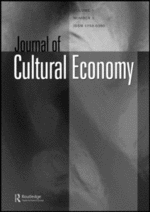 |
MUNIESA F., TRÉBUCHET-BREITWILLER A., 2010, «Becoming a measuring instrument: an ethnography of perfume consumer testing» ,
Journal of Cultural Economy, 3 (3), p.321-337.
Accès au texte »
The article provides an ethnographic examination of olfactory consumer testing in the perfume industry. What kind of reality is generated within such practices? The analysis is focused on one particular testing method used in order to assess the hedonic performance of fine fragrances. The authors observe what happen inside the testing venue. The article concentrates on the problemof the simulacrum (how the realituy provoked within the test may serve as a proxy for the reality of "consumer behaviour") and analyses how participants actively engage into the task of becoming measuring instruments (of fragrances and of themselves). |
| |
MUSIANI F., 2010, «Ménager le droit à la vie privée, entre anonymat et connaissance de l’identité : les débuts des réseaux sociaux en pair-à-pair» ,
Terminal, p.107-116.
Malgré leur succès auprès des internautes d'aujourd'hui, les outils de réseautage social font l'objet de plusieurs controverses quant aux usages que leurs administrateurs font des données privées des utilisateurs. De nombreux projets et applications proposent aujourd'hui des alternatives décentralisées à ces services, notamment au moyen de la technologie pair-à-pair (P2P). On retrace et analyse ici les débuts des applications au croisement entre réseaux P2P et réseaux sociaux, en discutant plus particulièrement des manières dont elles préfigurent des modifications dans la gestion du droit à la vie privée des utilisateurs, en se servant à la fois de l'anonymat et de la connaissance de l'identité - aspects qui sont généralement reconduits avec le P2P et les réseaux sociaux, respectivement - selon les différentes fonctionnalités et couches de l'application. |
| |
MUSIANI F., 2010, «En informatique, impossible d’imaginer une science non ouverte (entretien avec Enoch Peserico)» ,
Hermès, (57), p.31-33. |
| |
MUSIANI F., 2010, «When social links are network links: The dawn of peer-to-peer social networks and its implications for privacy» ,
Observatorio (OBS*), 4 (3), p.185-207.
Accès au texte »
Despite the success they enjoy among Internet users today, social networking tools are currently subject to several controversies, notably concerning the uses their administrators make of users’ private data. Today, many projects and applications propose decentralised alternatives to such services, among which one of the most promising appears to be the construction of the social network on a peer-to-peer (P2P) architecture. This paper addresses and analyses the "first steps" of applications at the crossroads between social networks and P2P networks. More specifically, it discusses how such applications anticipate modifications in the management of users’ right to privacy, by harnessing both anonymity and knowledge of identity – aspects generally identified with P2P networks and social networks, respectively – depending on the different functionalities and layers of the application. |
| |
MUSIANI F., 2010, «"May the journey continue": "Earth 2" fan fiction, or Filling in gaps to revive a canceled series» ,
Transformative Works and Cultures, (5).
This essay explores writing practices in a fan community having to give life to a story deprived of an "official" version: the television series Earth 2. I argue that fan fiction writing for this prematurely canceled series exhibits peculiar features in comparison to fan writing for established series: for example, temporality, choice of protagonists, character pairings, and challenges to the original conception(s) of the series. Writing fan fiction for a canceled series is not about creating alternatives to an existing story, but about filling in gaps; it brings to light the ways in which fan fiction deals with closure. I take as a case study Earth 2, a series aired by NBC in the United States in 1994–95, whose first and only season ended in a cliffhanger episode hinting that a mysterious ailment had struck the main and most popular character. Shortly afterward, a significant number of Earth 2 Web sites, online conventions, and especially fan stories started developing; they explored what could have happened next and bore nostalgic but combative mottoes and titles such as "May the Journey Continue." I explore the specific features of Earth 2 fan fiction production and sharing by analyzing the main Earth 2 fan fiction archives on the Web and the responses to my email interviews of fan writers. Exemplars of the Earth 2 case are compared to those of other science fiction TV series, both prematurely canceled (Firefly, Space: Above and Beyond) and long-lived (Babylon 5, Star Trek: Deep Space 9). |
| |
MUSIANI F., 2010, «Dalla ricerca all’insegnamento (il passo è breve)» ,
Tecnoscienza. Italian Journal of Science & Technology Studies, 1 (2), p.165-184.
Accès au texte »
L’analisi delle controversie tecnoscientifiche si è imposta negli ultimi trent’anni come una delle pietre angolari dello studio della scienza e della tecnologia nei loro contesti sociali e culturali. L’articolo si focalizza sulle esperienze di ricerca e di insegnamento riguardanti l’analisi di controversie condotte al Centro di Sociologia dell’Innovazione (CSI) di MINES ParisTech, e ne riprende le origini, le reciproche influenze ed i punti chiave, per discutere infine di come l’approccio pragmatico all’analisi di controversie costituisca un’opportunità per la messa a punto o l’evoluzione di insegnamenti innovativi, che includano un approccio critico ai contenuti ed ai modi della conoscenza. Lungi dal ricusare la ricerca dell’obiettività in se stessa, tale approccio propone di cercare l’obiettività tramite una descrizione densa delle associazioni che si sviluppano attorno all’oggetto di studio.
The analysis of technical and scientific controversies has emerged over the last thirty years as one of the cornerstones of the study of science
and technology embedded in their social and cultural contexts. This article focuses on research and teaching experiences, conducted at the Centre for the Sociology of Innovation (CSI) of MINES ParisTech, revolving around the analysis of controversies. It examines their origins, mutual influences and key principles to finally discuss how a pragmatic approach to the study of controversies constitutes an opportunity for the development or evolution of innovative teaching methods, able to include a critical approach to the very contents of knowledge, and means
of learning. Far from refusing the search for objectivity itself, this approach proposes to seek objectivity by means of dense descriptions of the associations that develop in and around the subject of study. |
| |
MUSIANI F., 2010, «Peer-to-peer : au-delà du piratage, les vertus d’une technologie de réseau» ,
Le Prisme à idées, (3), p.23-27.
Nombre de projets de recherche et de styart-up dévoilent actuellement les limites de l'argument qui assimile technologie peer-to-peer (P2P) et piratage. Applications P2P alternatives et légales mettent à profit les "vertus" du P2P : endurance, stabilité et efficacité de distribution. |
| |
MUSTAR P., WRIGHT M., 2010, «Convergence or path dependency in policies to foster the creation of university spin-off firms? A comparison of France and the United Kingdom» ,
The Journal of Technology Transfer, 35 (1), p.42-65.
This paper examines attempts by French and UK governments to fill the gap between the US and Europe with respect to the creation of academic spin-offs. Analysis of the contrasting cases of the UK and France, shows that there is no convergence of national policies to foster the creation of firms by academics. Rather, the two countries demonstrate different rationales and approaches to policy in this area. In UK, the rationale for spin-off policy is mainly to develop a third stream of financing. Spin-offs are a part of a policy to commercialize technology and knowledge created by universities. Policy is at the university level, leading to the creation of diverse structures. Public schemes bring public money directly to universities. In France, the rationale for policy towards the creation of new ventures by academics is the development of high technology new ventures as part of a technological entrepreneurship policy. The notion of a third stream of financing for universities is an argument that is never advanced. The UK has placed the universities at the heart of policies aimed at the creation of spin-offs, this is not the case in France. |
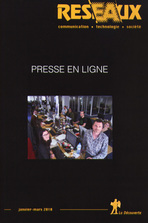 |
OUAKRAT A., BEUSCART J., MELLET K., 2010, «Les régies publicitaires de la presse sur internet» ,
Réseaux, (160-161), p.133-161.
Cet article s’intéresse aux régies publicitaires des sites de presse sur internet. Nous décrivons tout d’abord leur inscription organisationnelle dans les entreprises de presse. Nous étudions ensuite leur positionnement sur le marché de la publicité graphique en ligne (display), en soulignant le déséquilibre global des rapports de forces entre offreurs (régies) et demandeurs (agences media). Nous montrons enfin qu’il existe deux conventions concurrentes de qualification des produits publicitaires, une convention « traditionnelle » valorisant bien les produits des sites de presse, et une convention de « performance » moins favorable. La prolifération des équipements de la convention de performance fait qu’une partie des produits des régies de la presse sont soumis à un processus de déqualification-requalification, qui se traduit par une baisse des prix.
This article examines on-line press advertising departments. The authors begin by describing these departments’ organizational embeddedness in the firm. They then study their positioning in the on-line display advertising market and highlight the overall power imbalance between supply (advertising departments) and demand (media agencies). Finally, they show that two competing conventions exist in the qualification of advertising products: a «traditional» convention that promotes press websites’ products; and a «performance» convention that is less suitable to them. The proliferation of performance convention equipment has meant that some press advertising department products are subject to a process of disqualification-requalification that results in a drop in prices. |
| |
PADOVANI C., MUSIANI F., PAVAN E., 2010, «I diritti umani nell’étà digitale : concetti in evoluzione e norme emergenti nel contesto transnazionale» ,
Politica del diritto, XLIp.391-418.
3 |
| |
PADOVANI C., MUSIANI F., PAVAN E., 2010, «Investigating Evolving Discourses on Human Rights in the Digital Age. Emerging Norms and Policy Challenges» ,
International Communication Gazette, 72 (4-5), p.359-378.
This article investigates how human rights in the digital age can be considered as an overall frame accommodating fundamental rights and freedoms that relate to communication processes, and related challenges, in societies worldwide. The article brings together different disciplinary backgrounds (communication studies, linguistics and sociology of networks) and complementary empirical analyses of the content, structure and relevance of evolving discourses concerning human rights in the digital age. In doing so, the article defines and adopts a constructivist and communicative approach to the study of world politics, and details its relevance in order to assess the evolution of normative standards concerning communication as a human right in the transnational context. |
| |
PINA-STRANGER A., 2010, «La structure sociale de l’industrie des Biotechnologies en France : une étude des relations inter-organisationnelles au niveau inter-individuel» ,
REDES - Revista hispana para el anàlis de redes sociales, 18 (5), p.107-144.
Divers auteurs ont montré l’importance des relations de collaboration interorganisationnelles pour les performances, le mode de gouvernance ou la trajectoire des entreprises de biotechnologie. La plupart de ces travaux analysent exclusivement les accords contractuels passés entre les entreprises et leurs principaux interlocuteurs. Nous montrons que cette approche exclusivement économique présente une limite majeure : la nature des relations contractuelles ne permet pas d’étudier en détail la manière dont les acteurs coopèrent. Nous proposons d’élargir l’étude de ces relations inter-organisationnelles aux relations sociales, observées à travers l’échange de ressources au niveau inter-individuel. Une étude empirique portant sur les dirigeants de l’industrie des biotechnologies dans le secteur de la santé humaine en France nous a permis de cartographier les relations qu’ils entretiennent et les ressources qu’ils échangent entre eux. Nos résultats confirment l’existence d’un système d’échange dense et multiple. Il présente une distribution hiérarchique des divers types de ressources, où le centre se différencie de la périphérie par des relations plus denses, plus multiples et plus réciproques. Toutefois, l’analyse comparée des différents réseaux révèle que les relations de conseil sont très centralisées, alors que celles d’amitié suivent une distribution plus homogène. Nous suggérons que ce phénomène participe d’un mécanisme de compensation permettant aux acteurs moins centraux d’entretenir des relations interorganisationnelles. Enfin, deux normes du processus de coopération, mises au jour par le comportement relationnel des acteurs, ont été découvertes. Nous suggérons qu’elles reflètent en partie le difficile processus d’ajustement qui doit traverser un projet scientifique pour sortir de l’univers de la recherche académique et se développer dans une structure privée : l’entreprise de Biotech.
Various authors have shown the importance of collaborative relationships for interorganizational performance, the mode of governance or the trajectory of biotechnology companies. Most of these works analyze the exclusive contractual agreements between companies and their main relationships among individuals. We show that this purely economic approach presents a major limitation: the nature of contractual relationships does not explore in detail how players cooperate. We propose to extend the study of these inter-organizational social relations, seen through the resource exchange in inter-individual. An empirical study on the leaders of the biotechnology industry in the area of human health in France has allowed us to map their relationships and resources they exchange them. Our results confirm the existence of a system of exchange dense and multiple. It presents a hierarchical distribution of various types of resources, where the centre is different from the periphery relations denser, more numerous and more reciprocal. However, comparative analysis of different networks reveals that the relationships of the board are highly centralized, while those of friendship following a more even distribution. We suggest that this phenomenon is part of a compensation mechanism to less central actors to maintain inter-organizational relationships. Finally, two standards of the cooperation process, revealed by the relational behaviour of actors, have been discovered. We suggest that they reflect in part the difficult process of adjustment that must cross a science project out of the realm of academic research and develop in a private structure: the biotech company. |
| |
PINA-STRANGER A., LAZEGA E., 2010, «Redes de consejo en la industria biotecnologica en Francia.» ,
REDES - Revista hispana para el anàlis de redes sociales, 19p.218-241.
En este artículo exploramos las redes de consejo inter-organizacionales, apoyándonos en la idea de que la naturaleza de las interdependencias funcionales entre los actores es diferente a nivel intra-organizacional y a nivel inter-organizacional. Esta diferencia influye en la manera en la que los miembros de un colectivo tratan de resolver los problemas relacionados con la evaluación de la pertinencia de los conocimientos. A nivel intra-organizacional, los conflictos epistémicos se resuelven por un movimiento de centralización y de alineamiento en torno a algunos pocos actores que detentan una autoridad formal. Esta hegemonía, formal y cognitiva, les permite imponer un consenso y ejercer un control elevado sobre el colectivo. En cambio, a nivel inter-organizacional, los conflictos epistémicos se resuelven por un movimiento de polarización, que es mantenido en parte por el activismo relacional de varios líderes de opinión, cuyo poder coercitivo no es absoluto. Ilustramos este proceso de aprendizaje a través de las redes de consejo entre empresarios científicos en la industria biotecnológica francesa. |
| |
PINA-STRANGER A., LAZEGA E., 2010, «Réseaux sociaux et performances économiques dans le cluster parisien de biotechnologies. Rapport final» ,
Ville de Paris, programme « Paris 2030 ».
Accès au texte » |
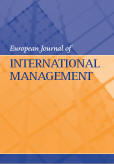 |
PINA-STRANGER A., LAZEGA E., 2010, «Inter-organisational collective learning: the case of biotechnology in France» ,
European journal of international management, 4 (6), p.602-620.
We explore inter-organisational collective learning by assuming that authority relationships are different at the inter- and the intra-organisational level. This difference has implications for the way in which a collective solves the problems related to the creation of a hierarchy between different bodies of appropriate knowledge. At the intra-organisational level, cognitive conflicts are solved by centralisation and alignment with opinion leaders who often have formal and epistemic authority. In this context, members tend not to seek advice from others ‘below’ them in the organisational status hierarchy. At the inter-organisational level, we show that the absence of a formal hierarchy encourages entrepreneurs to invest heavily in relational activity. This behaviour allows them to keep their status in a context where epistemic conflicts become entrenched, following a polarisation process, in different epistemic communities. We illustrate this phenomenon with an empirical study of entrepreneurs in the French biotech industry. |
| |
PONTILLE D., 2010, «Updating a Biomedical Database: Writing, Reading and Invisible Contribution» ,
in BARTON D., PAPEN U., (ed.), Anthropology of Writing: Understanding Textually-Mediated Worlds, London, Continuum, p.47-66.
Accès au texte »
The development of information and communication technologies has multiplied our ability to produce, circulate and store large amounts of data. Over the last twenty years databases have become an essential part of biomedical research. For these databases to operate effectively, a link has to be made between very small amounts of biological material (only a few microlitres) and a wide range of personal data relating to the donors (age, sex, occupation, lifestyle, diet, etc.) and their state of health (clinical and biological data). Yet most studies on bioinformatics databases take this link for granted, as if it emerged naturally and automatically from the data collection process. However, the relationship between samples and data does not emerge in and of itself. This paper shows that the solidity of the link between different types of data is based on the daily work of writing. It also shows that ‘information' is not the starting point of the work. Conversely, the whole set of documents and writing practices are precisely a way of transforming data into information that has a polyvalent value: scientific, medical and legal. |
| |
PONTILLE D., TORNY D., 2010, «The Controversial Policies of Journal Ratings : Evaluating Social Sciences and Humanities» ,
Research Evaluation, 19 (5), p.347-360.
Accès au texte »
In a growing number of countries, governments and public agencies seek to systematically assess the scientific outputs of their universities and research institutions. Bibliometrics indicators and peer review are regularly used for this purpose, and their advantages and biases are discussed in a wide range of literature. This article examines how three different national organisations produce journal ratings as an alternative assessment tool, which is particularly targeted for social sciences and humanities. After setting out the organisational context in which these journal ratings emerged, the analysis highlights the main steps of their production, the criticism they received after publication, especially from journals, and the changes made during the ensuing revision process. The particular tensions of a tool designed as both a political instrument and a scientific apparatus are also discussed. |
| |
PONTILLE D., TORNY D., 2010, «Revues qui comptent, revues qu’on compte : produire des classements en économie et gestion» ,
Revue de la Régulation, (8), p.http://regulation.revues.org/8881.
Accès au texte »
Cet article présente une sociologie des classifications de revues en économie et gestion. S’appuyant sur un vaste ensemble de sources documentaires et d’entretiens complémentaires, il étudie la trajectoire du classement de revues de la section 37 du CNRS, depuis ses prémisses de 2001 jusqu’à sa version actuelle, et documente quatre principales étapes de fabrication et de transformation. Ce classement est d’abord conçu comme un outil de justice sociale pour les candidats et les laboratoires, fondé sur une expertise largement externe à la section 37. Il devient ensuite une catégorisation raisonnée, solidifiée par l’examen en comité restreint d’arguments partageables afin de résister à la comparaison avec d’autres classements. Puis, l’AERES l’érige en un instrument de comptage et d’évaluation, sur la base d’un contenu presque identique au précédent, mais dont l’usage convenable est radicalement transformé. Il est enfin une partie d’une liste de revues beaucoup plus longue servant seulement au calcul du taux de « produisants en recherche et valorisation ». Chacune des classifications produites est systématiquement accompagnée de clauses de révision ou d’actualisation : elles sont d’emblée définies comme provisoires, sujettes à certaines formes de critique, et donc ontologiquement instables. Elles sont donc soumises à un cycle publication/usages/révisions quasi-continu, proposant de nouvelles frontières et normes d’exercice professionnel.
This article presents a sociology of journal classifications in economics and management. Based on extensive documentary sources and complementary interviews, it analyses the trajectory of the journal ranking of the French National Committee for Scientific Research 37th section, from its premises in 2001 to its current version, and shows four main production and transformation steps. The journal ranking is first conceived as a social justice tool devoted to candidates and research units, largely based on an external expertise. It then becomes a reasoned categorization, solidified through the reviewing of shareable arguments by an internal committee in order to resist to the comparison with other classifications. Then, the French Evaluation Agency for Research and Higher Education establishes it as an evaluation and counting instrument, based on an almost identical content, but whose proper use is radically transformed. Finally, it is a part of a much longer list of journals only used to calculate the rate of “productive in terms of research and results’ exploitation” academics. Each of these classifications is systematically produced with revision or update clauses: they are straightaway defined as temporary, subjected to certain forms of criticisms, thus ontologically unstable. Therefore, they are submitted to an ever going publication/uses/revisions cycle, providing new frontiers and professional norms. |
| |
RABEHARISOA V., 2010, «Les associations de malades et d’usagers de la santé» ,
in HAURAY B., FASSIN D., (ed.), Santé publique. L'état des savoirs, Paris, La Découverte, p.457-468. |
| |
RÉMY C., 2010, «Qui est plus humain ? La disponibilité des corps de l’homme et de l’animal pour la transplantation d’organes» ,
Politix, 23 (90), p.47-69.
La transplantation d’organes nécessite le recours à des prélèvements sur des donneurs disponibles et compatibles. Dans cet article, deux controverses autour de prélèvements, le premier réalisé sur un donneur animal, le second sur un donneur humain, sont analysées. Si l’animal a longtemps été envisagé comme un bon donneur en raison de sa disponibilité, la mise en compatibilité avec le corps humain a signifié son humanisation physiologique. C’est sur cette humanisation que des groupes militants de la cause animale se sont appuyés pour dénoncer son objectivation, critique qui a été dans un second temps reprise par les scientifiques et qui a abouti à une mise en indisponibilité des primates. L’utilisation de greffons humains, qui est préférable en termes de compatibilité, a été rendue possible par la création d’une nouvelle définition juridique de la mort qui a mis en disponibilité des humains morts et vivants. Cette nouvelle modalité de traitement de l’humain est perçue par certains proches de donneurs comme une pratique de déshumanisation intolérable.
In this paper, the aim is to think together the transplantation of today, allotransplantation, and the transplantation of the future, xenotransplantation, that is to say the use of organ animals for human recipients. We focus on two controversies. The first controversy is about the harvesting of several organs on a young French man who died from a bike accident, and the second about an attempt of xenotransplantation on a dying American baby. If, at first sight, allo- and xeno-transplantation seem radically different practices, the detailed description of this two cases shows a quite different picture. Indeed, it becomes difficult to say who is the most “human”: the human being transformed in an objectivized corpse or the humanized and “sacrificed” animal? Through the practice of transplantation, an astonishing new scale of beings emerges. |
| |
RÉMY C., WINANCE M., 2010, «Pour une sociologie des "frontières d’humanité"» ,
Politix, 23 (90), p.9-19.
Le thème des « frontières d’humanité » est au cœur du projet des sciences humaines. La littérature existante sur le sujet fait cependant apparaître une tension entre deux manières de l’aborder. La première est normative et vise, dans la lignée d’une anthropologie fondamentale, à définir un propre de l’homme et à tracer une frontière entre les humains et les autres. La seconde, plus récente, est descriptive et s’attache aux pratiques d’humanisation ou de déshumanisation. Dans cette perspective, il s’agit d’analyser des processus qui ont pour résultat une sortie de l’humanité de certains individus ou collectifs, mais aussi une mise au pluriel de la notion ; on parle alors d’humanités altérées ou encore d’une humanisation ou d’une réhumanisation d’individus non humains ou préalablement déshumanisés. Depuis une vingtaine d’années, l’espace de la biomédecine et celui du handicap se caractérisent par un travail particulièrement dense autour de ces « frontières d’humanité » entendues dans la seconde acception : ce numéro tente d’en dresser un panorama. Au-delà de ces deux univers particuliers, une sociologie des « frontières d’humanité » invite à explorer des situations variées et peut-être plus ordinaires où se joue l’appartenance à une humanité commune.
The question of the “frontiers of humanity” is at the heart of the social sciences project. It is possible to distinguish two ways of addressing the issue. The first is normative: the aim is to draw a line between what is “peculiar to humans” and that what is not. The second way of considering the “frontiers of humanity” is descriptive: it is a form of reflection on the way in which any being can be humanized or dehumanized. From this point of view, humanity appears to be the result of processes that make it either appear or disappear. For twenty years now, the fields of biomedicine and of disability are both characterized by a particularly complex work concerning the “frontiers of humanity” understood in the second meaning: this issue tries to give a comprehensive overview of it. Beyond these two fields, a sociology of the “frontiers of humanity” is an invitation to investigate various settings, maybe more ordinary, in which the membership to a commune humanity is at stake. |
| |
TEIL G., BARREY S., FLOUX P., HENNION A., 2010, «Le terroir, une cause à faire valoir» ,
in PITTE J., (ed.), Paris, CNRS Editions, p.227-246. |
| |
TRÉBUCHET-BREITWILLER A., 2010, «L’émergence d’un marché d’amateur. Le cas du parfum» ,
in ASSOULY O., (ed.), L' Amateur. Juger, participer et consommer, Paris, IFM/Regard, p.69-97. |
| |
TRÉBUCHET-BREITWILLER A., MUNIESA F., 2010, «L’emprise des tests : comment les tests marketing agencent le marché de la parfumerie fine» ,
in HATCHUEL A., FAVEREAU O., AGGERI F., (ed.), L'activité marchande sans le marché ?, Paris, Presses des Mines, p.321-338. |
| |
M&E.,ADEL, C.,CIL., 2009, La Réception ,
Paris, CNRS-Editions. |
| |
AKRICH M., 2009, «Discussion de "Montrer et démontrer la réversibilité"» ,
Actes de la journée d'Etudes "Réversibilité et sciences sociales", 2 octobre 2008, ANDRA, p.93-95. |
| |
AKRICH M., BARTHE Y., RÉMY C., 2009, «Les enquêtes profanes en santé environnementale. Synthèse de la littérature et cadre d’analyse. Rapport pour l’Agence française de sécurité sanitaire et de l’environnement et du travail (AFSSET)» ,
CSI/AFSSET.
En 2001, dans un important rapport intitulé Late Lessons from Early Warning, l’Agence européenne pour l’environnement formulait une série de recommandations visant à améliorer l’identification et la prise en compte
des «signaux précoces» en matière de risques sanitaires et environnementaux. Parmi leurs recommandations,
les experts de cette Agence indiquaient la nécessité de porter une attention accrue aux «savoirs profanes».
S’appuyant sur plusieurs exemples historiques, en particulier la célèbre affaire de la décharge toxique de Love
Canal aux États-‐Unis, ils constataient en effet que les «profanes» sont parfois en mesure de détecter certains dangers avant les experts, d’où le rôle crucial que ces non spécialistes peuvent jouer dans les processus d’alerte
sanitaire. Comment les profanes en viennent‐ils à soupçonner un danger et quelles sont les formes d'enquêtes
qu’ils déploient afin de rendre crédible l’existence d’une menace jusque-‐là invisible ? C’est à cette question que
ce rapport est consacré. |
 |
AKRICH M., MÉADEL C., 2009, «Les échanges entre patients sur l’internet» ,
La presse médicale, (38), p.1484-1493.
Accès au texte »
L’Internet est un lieu de débats et d’échanges entre patients avec d’intenses discussions permettant une appropriation collective de l’information médicale et la constitution d’une forme d’expertise.
Les listes et les forums sont des espaces régulés et organisés ; la discussion des règles communes occupe une grande place dans les débats.
Sur les listes, on observe que la parole est inégalement distribuée : les 10 % des locuteurs les plus loquaces envoient de 50 à 70 % des messages ; on observe aussi la stabilité temporelle des groupes et la faible prévalence de l’anonymat rendu possible par la clôture du groupe.
Les intervenants les plus expérimentés dominent les échanges sur les listes comme sur les forums. On distingue 4 profils d’intervenants dont la répartition contribue à définir la tonalité d’une liste : l’informateur, l’agitateur, l’hyperactif, et le leader charismatique;
Une étude systématique des contenus des listes de discussion à partir de leur titre a permis de mettre en évidence six grands thèmes des débats sur la santé : « phatique », « personnel et interpersonnel », « collectif », « médicine », « patient/usager », et « information ».
On peut distinguer des listes orientées vers le partage et l’articulation entre expériences des patients/usagers et expertise médicale, des listes concernées principalement par l’échange d’expériences, des listes où le partage de l’information médicale est central, et enfin des listes consacrées au soutien mutuel.
En contribuant de manière collaborative à la production d’informations sur la santé, les patients impliqués dans ces débats pourraient ouvrir la voie à un enrichissement des savoirs.
Key points
Internet is an important place for debates between patients, whose active discussions allow the patient to appropriate medical information and to build up their expertise.
Lists and forums are regulated and organised areas; discussions about common rules take up a large place in the discussion.
On discussion lists, we observe that speech is unequally distributed: 10% of the most talkative speakers send between 50 and 70% of all the messages; we also observe the temporal stability of the groups and the weak prevalence of anonymity which is made possible because the group is not open freely to the general public.
Experimented speakers dominate discussions on lists as on forums. 4 speakers’ profiles can be distinguished: the adviser, the agitator, the hyperactive person, and the charismatic leader. The tone of a list is defined, among others, by the distribution of those profiles.
A systematic study of the contents of discussion lists reveals six main topics within the debates on health: collective, personal and interpersonal, medicine, patient / user, information, and phatic.
We can distinguish various kinds of lists: lists focused on the articulation between patients experiences and medical expertise, lists mainly concerned by the exchange of personal experiences, lists organized around the sharing of medical information, and finally lists dedicated to mutual support.
In collaboratively contributing to the production of health information, patients involved in these discussions can open the way to enrichment of medical knowledge. |
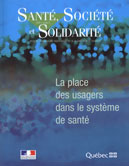 |
AKRICH M., MÉADEL C., 2009, «Internet : intrus ou médiateur dans la relation patient/médecin ?» ,
Santé, Société, Solidarité, 8p.87-92.
Accès au texte »
L'importance de la consultation d'Internet en matière de santé a suscité commentaires et inquiétudes dans le monde médical. Certains considèrent que la prolifération d'informations non hiérarchisées et non validées est une source de confusion susceptible de détériorer la confiance du patient en son médecin. La littérature disponible a tendance à déplacer les interrogations : il n'existe pas de méthode consensuelle pour mesurer la qualité de l'information. Surtout, l'importance de cette question est relativisée : la nature collective des contenus produits comme de la consultation Internet et le discernement dont font preuve les individus garantissent contre les effets éventuels d'un manque de qualité. Davantage que le conflit, les patients semblent rechercher une coopération renforcée avec les médecins, et les professionnels s'ajustent à ce patient mieux informé, donc plus réceptif aux arguments et plus responsable dans son comportement. Internet pourrait être considéré comme un facilitateur de la relation. Ce constat doit être nuancé en ce qui concerne des problèmes de santé rares ou mal connus, ou dont la médicalisation est controversée. Internet permet de constituer une forme d'expertise profane qui entre en concurrence ou en conflit avec l'expertise des médecins, que ce soit au niveau individuel ou encore plus nettement dans les instances du monde de la santé ouvertes aujourd'hui aux représentants d'usagers, dans le cadre d'une démocratie sanitaire renforcée.
The increasingly popular practice of consulting the Internet on health issues has led to much commentary and concern in medical circles. Some observers believe that the proliferation of unstructured and non-validated information is a source of confusion which is likely to erode patients’ confidence in their physicians. The literature on the subject tends to shift the emphasis of the question, pointing out that there is no agreed-upon method for measuring the quality of the information available. Moreover, and notably, it puts the significance of the issue in perspective, pointing out that the collective nature of the content produced online and of the consultations made, as well as the discernment shown by individuals, compensate for the potential effects of any lack of quality in the information found. Rather than creating conflict, this trend appears to be leading patients to seek a greater level of cooperation with their physicians, and healthcare professionals are adjusting to these better-informed patients, who, consequently, are more receptive to arguments and take greater responsibility for their behaviour. The Internet could be considered as a facilitator of the physicianpatient relationship. This should be qualified, however, when it comes to rare or little known health problems, or those for which medical intervention is controversial. The Internet provides a form of lay person’s expertise which competes with or is in conflict with the expertise of physicians, whether at the individual level or, more markedly, at the level of healthcare decision-making bodies which have become more open to user representatives, in the context of more democratic healthcare. |
 |
AKRICH M., MÉADEL C., RABEHARISOA V., 2009, Se mobiliser pour la santé. Des associations de patients témoignent. ,
Paris, Presses de l'Ecole des Mines.
Accès au texte »
Le domaine de la santé a été largement transformé depuis une vingtaine d’années par l’action des associations de patients. Ces associations s’impliquent dans la production et la diffusion de connaissances sur les maladies et les questions de santé ; elles jouent un rôle actif dans l’émergence et la consolidation des mobilisations collectives autour des problèmes de santé ; elles sont reconnues comme des acteurs à part entière de la démocratie sanitaire aux côtés des pouvoirs publics, des professionnels et des acteurs économiques. Face aux mutations pressantes du domaine, elles pensent et explorent de nouvelles formes d’action associatives, de nouveaux modes d’intervention publique.
Cet ouvrage rend compte directement de l’expérience des associations, à travers une série de discussions collectives conduites avec une cinquantaine d’entre elles. Ces témoignages éclairent la compréhension du fonctionnement associatif et permettent d’appréhender les défis auxquels les associations sont aujourd’hui confrontées ; ils sont destinés à favoriser le dialogue entre les usagers, le monde politique et les professionnels. |
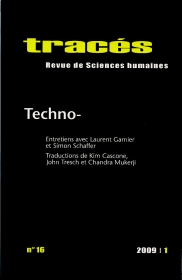 |
BARTHE Y., 2009, «Les qualités politiques des technologies. Irréversibilité et réversibilité dans la gestion des déchets nucléaires» ,
Tracés. Revue de Sciences humaines [En ligne], (16), p.119-137.
Accès au texte »
S’il est désormais admis que les techniques ne sont pas neutres, rares sont les travaux qui décrivent de manière précise quelles sont leurs propriétés politiques. À partir de l’exemple du stockage des déchets nucléaires, cet article développe une sociologie politique des dispositifs techniques dont l’objectif est d’expliciter les différentes définitions de la décision politique que ces dispositifs incorporent. L’analyse de trois solutions proposées dans la gestion des déchets nucléaires permet ainsi de distinguer trois modèles de décision en situation d’incertitude scientifique. L’auteur montre que c’est par ce type de clarification des qualités politiques des techniques que les sciences sociales peuvent contribuer à la discussion des choix dans ces domaines.
Even if it is now acknowledged that techniques are not neutral, few works precisely describe the political properties of these techniques. Based on the example of nuclear waste storage, this paper develops a political sociology of technical devices. The purpose is to clarify the different definitions of political decision that these devices embody. Analysing three possible solutions for the management of nuclear waste, we can distinguish three models of decision in situations of scientific uncertainty. The author shows that it is through this kind of clarification of the political qualities of technologies that social sciences can contribute to the discussion of choices in these matters. |
| |
BARTHE Y., 2009, «Framing nuclear waste as a political issue in France» ,
Journal of Risk Research, 12 (7-8), p.941-954.
This article analyses the factors that contributed to the political framing of the
nuclear waste issue in France. The sudden appearance on the political scene of this
issue, addressed behind closed doors and in specialised arenas until the 1990s,
generated numerous public debates, parliamentary reports and finally a law. The
author critically analyses certain agenda-building theories and then shows that this
process of political framing can be comprehended only in relation to the technical
problematisation of the issue and the history of the institutions traditionally in
charge of it. The orientation towards a political treatment of the problem resulted
primarily, albeit partially, from the narrowing down of the technical options for
addressing it. Without technical alternatives, the political authorities appeared to
be the only way of solving conflicts generated by France’s nuclear waste policy. |
| |
BARTHE Y., CALLON M., LASCOUMES P., 2009, «La decisione politica reversibile. Storia di un inatteso contributo dell’industria nucleare (francese) all’instaurazione della democrazia dialogica» ,
La Rivista delle Politiche Sociali/Italian Journal of Social Policy, p.47-69.
Recent work on socio-technical controversies (conflicts) have brought out the emergence of a new model of political decision. In this model decisions are reversible and adopted at the end of an open debate that allows the groups concerned to intervene on the merits of technical options. The article shows the gradual setting up of a model for nuclear waste. It explains how and why the idea of a reversible political decision has been imposed and suggests how it might be transposed to other sectors.
I recenti lavori dedicati alle controversie (conflitti) socio-tecniche hanno messo in luce l’emergere di un nuovo modello di decisione politica. In questo modello, le decisioni sono reversibili e adottate al termine di un dibattito aperto che permette ai gruppi interessati di intervenire nel merito delle scelte tecniche. L’articolo mostra il progressivo instaurarsi del modello nell’ambito delle scorie nucleari. Si spiega come e perché vi si sia imposta la nozione di decisione politica reversibile e si suggerisce una sua possibile trasposizione ad altri settori. |
 |
BARTHE Y., LINHARDT D., 2009, «L’expérimentation : un autre agir politique» ,
Working paper.
Accès au texte »
Essai sur le potentiel de la notion d'expérimentation pour le renouveau du répertoire de la sociologie politique. |
| |
BLANDIN C., MÉADEL C., 2009, «La cause des femmes.» ,
Le Temps des Médias, (14), p.6-10.
Les médias ont-ils servi la cause des femmes ? Les femmes se sont-elles emparées des médias pour plaider leur cause et sortir de leurs rôles traditionnels ? On peut faire à la fois l'hypothèse que les médias sont, non sans ambivalence et contradiction, porteurs d'un certain nombre de représentations de la différence des sexes, conformistes et hétérodoxes, mais aussi qu'ils ont permis sa redéfinition et sa transformation par les possibilités offertes à l'expression des femmes, à leur travail, à leurs combats. |
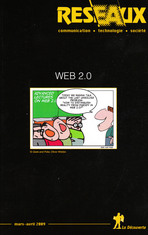 |
CABY-GUILLET L., GUESMI S., MALLARD A., 2009, «Wiki professionnel et coopération en réseaux : une étude exploratoire» ,
Réseaux, 27 (154), p.195-228.
Accès au texte »
Le thème fédérateur du web 2.0 s’applique aux technologies de l’information les plus récentes, dont l’une des propriétés essentielles correspond à une diffusion élargie dans les sphères privées et professionnelles. L’objectif de cette contribution est d’apporter un éclairage sur ses usages en entreprise au travers d’une étude exploratoire axée sur l’un des ses outils les plus emblématiques, le wiki. Un double regard est porté sur d’une part les processus d’appropriation par les individus et d’autre part les effets de la dynamique des organisations qui les sous-tendent. L’analyse théorique et la pluralité du recueil de données de l’étude empirique (observation de trafic, étude quantitative et qualitative) soulignent la diversité des situations rencontrées et mettent en évidence les processus d’ajustements entre les différents niveaux organisationnels et individuels.
The federating theme of Web 2.0 applies to the most recent information technologies, one of the essential properties of which is extensive diffusion in the private and professional spheres. This article examines the corporate uses of Web 2.0, through an exploratory study of one of its most emblematic tools, the Wiki. The authors examine the processes of appropriation by individuals, and the effects of the organizational dynamics underlying them. The theoretical analysis and the plurality of the empirical data collected (observation of traffic, quantitative and qualitative study) underscore the diversity of the situations encountered. They also highlight the processes of adjustment between the various organizational and individual levels. |
| |
CALISKAN K., CALLON M., 2009, «Economization, part 1: shifting attention from the economy towards processes of economization» ,
Economy and Society, 38 (3), p.369-398.
This article proposes a research programme devoted to examining ‘processes of
economization’. In the current instalment we introduce the notion of ‘economization’,
which refers to the assembly and qualification of actions, devices and
analytical/practical descriptions as ‘economic’ by social scientists and market actors.
Through an analysis of selected works in anthropology, economics and sociology, we
begin by discussing the importance, meaning and framing of economization, as we
unravel its trace within a variety of disciplinary backgrounds. We show how in
combination, these works have laid the foundations for the study of economization.
The second instalment of the article, to appear in the next volume of Economy and
Society, presents a preliminary picture of what it might mean to take processes of
economization as a topic of empirical investigation. Given the vast terrain of
relationships that produce its numerous trajectories, we will illustrate economization
by focusing on only one of its modalities the one that leads to the establishment of
economic markets. With emphasis on the increasingly dominant role of materialities
and economic knowledges in processes of market-making, we will analyse the extant
work in social studies of ‘marketization’. Marketization is but one case study of
economization. |
| |
CALLON M., 2009, «Elaborating the notion of performativity» ,
Le libellio d'AEGIS, 5
Accès au texte »
1 |
| |
CALLON M., 2009, «Foreword» ,
in HECHT G., (ed.), The Radiance of France: Nuclear Power and National Identity after World War II, MIT Press, |
| |
CALLON M., 2009, «Civilizing markets: Carbon trading between in vitro and in vivo experiments» ,
Accounting, Organizations and Society, 34 (3-4), p.535-548.
Accès au texte »
The creation of carbon markets is one of the solutions currently envisaged to meet the widely recognized challenge of global warming. The contributions in this special section of Accounting, Organizations and Society show that many controversies nevertheless exist on the ways in which these markets are organized, the calculative tools that are devised to equip them, and the role that they are supposed to play, especially in relation to other types of intervention which favour political measures or technological research. In light of these controversies, the article considers carbon markets as on-going collective experiments. It is argued that carbon trading is an exceptional site for identifying the stakes involved in such experiments and for identifying better what the dynamics of civilizing markets could be. |
| |
CALLON M., 2009, «La formulation marchande des biens» ,
in VATIN F., (ed.), Evaluer et valoriser : une sociologie économique de la mesure, Toulouse, Presses Universitaires du Mirail, p.247-269. |
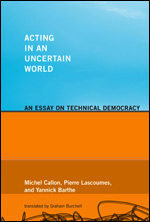 |
CALLON M., LASCOUMES P., BARTHE Y., 2009, Acting in an Uncertain World. An Essay on Technical Democracy ,
MIT Press.
Controversies over such issues as nuclear waste, genetically modified organisms, asbestos, tobacco, gene therapy, avian flu, and cell phone towers arise almost daily as rapid scientific and technological advances create uncertainty and bring about unforeseen concerns. The authors of Acting in an Uncertain World argue that political institutions must be expanded and improved to manage these controversies, to transform them into productive conversations, and to bring about "technical democracy." They show how "hybrid forums"—in which experts, non-experts, ordinary citizens, and politicians come together—reveal the limits of traditional delegative democracies, in which decisions are made by quasi-professional politicians and techno-scientific information is the domain of specialists in laboratories. The division between professionals and laypeople, the authors claim, is simply outmoded.
The authors argue that laboratory research should be complemented by everyday experimentation pursued in the real world, and they describe various modes of cooperation between the two. They explore a range of concrete examples of hybrid forums that have dealt with sociotechnical controversies including nuclear waste disposal in France, industrial waste and birth defects in Japan, a childhood leukemia cluster in Woburn, Massachusetts, and Mad Cow Disease in the United Kingdom. They discuss the implications for political decision making in general, and they describe a "dialogic" democracy that enriches traditional representative democracy. To invent new procedures for consultation and representation, they suggest, is to contribute to an endless process that is necessary for the ongoing democratization of democracy. |
| |
CAMBROSIO A., KEATING P., BOURRET P., MUSTAR P., ROGERS S., 2009, «Genomic platforms and hybrid formations» ,
in ATKINSON P., GLASNER P., LOCK M., (ed.), Handbook of genetics and society, London, Routledge, p.502-520. |
| |
CLARYSSE B., WRIGHT M., MUSTAR P., 2009, «Behavioural additionality of R&D subsidies: A learning perspective» ,
Research Policy, 38 (10), p.1517-1533.
The use of R&D grants as a policy instrument has been motivated by economic arguments of market failure. Neo-classical econometric studies have analysed the additionality of one Euro of subsidies on both the investments of companies in the R&D process and the output of that R&D process. More recently, behavioural additionality has been launched as a third form of additionality. In contrast to input and output additionality, behavioural additionality is related to changes in the processes that take place within the firm. In this paper, we analyse the determinants of the behavioural additionality of R&D grants. To explain the mechanism through which behavioural additionality is obtained, we use organizational learning theory as a guide to formulate our hypotheses. Hypotheses are tested using a telephone survey of 192 recipients of R&D grants provided by the IWT in Flanders in 2001–2004, matched to a sample of 84 firms that undertake innovation activities but which had never had a grant bid accepted. We find that congenital learning and interorganizational learning lead to increased behavioural additionality. However, these learning effects decrease with the number of subsidized projects that are undertaken by the company. |
| |
DENIS J., 2009, «Les ressorts de la sécurité informatique. Des hommes, des machines et des données» ,
in LICOPPE C., (ed.), L'évolution des cultures numériques, de la mutation du lien social à l'organisation du travail, Paris, FYP, p.190-199.
Accès au texte » |
| |
DENIS J., 2009, «Sécurité informatique et valeur des écrits au travail» ,
Semen, (28), p.85-100.
Accès au texte » |
| |
DENIS J., PONTILLE D., 2009, «L’écologie informationnelle des lieux publics. Le cas de la signalétique du métro» ,
in LICOPPE C., (ed.), L’Évolution des cultures numériques, de la mutation du lien social à l’organisation du travail, Paris, FYP, p.94-101.
Accès au texte »
Pour décrire l'avènement des nouvelles technologies de l'information et de la communication, deux éléments sont souvent mis en avant : le caractère personnel des outils et leur portabilité. La première souligne les enjeux d'appropriation et d'interaction « homme/machine », tandis que la seconde renvoie à l'émergence de nouvelles formes de mobilité. Si ces dimensions sont es- sentielles, elles ne doivent cependant pas éclipser les transformations que les environnements eux-mêmes ont connues. La société de l'information prend aussi corps dans des dispositifs in- formationnels ouverts, inscrits durablement dans des lieux que nous traversons quotidienne- ment. L'espace public est, en grande partie, constitué de ce type de dispositifs, qui s'appuient sur des technologies d'affichage très différentes, et sont les ingrédients incontournables de « l'atmosphère de nos démocraties ». |
 |
DOGANOVA L., 2009, «Entrepreneurship as a process of collective exploration» ,
Working paper.
Accès au texte »
Clarifies the potentials of the notion of exploration for the analysis of the uncertain and collective nature of entrepreneurship, and provides detailed examination of a case study on a French academic spin-off. |
| |
DOGANOVA L., EYQUEM-RENAULT M., 2009, «What do business model do? Innovation devices in technology entrepreneurship» ,
Research Policy, 38 (10), p.1559-1570.
Building on a case study of an entrepreneurial venture, we investigate the role played by business models
in the innovation process. Rather than debating their accuracy and efficiency, we adopt a pragmatic
approach to business models — we examine them as market devices, focusing on their materiality, use
and dynamics. Taking into account the variety of its forms, which range from corporate presentations
to business plans, we show that the business model is a narrative and calculative device that allows
entrepreneurs to explore a market and plays a performative role by contributing to the construction of
the techno-economic network of an innovation. |
| |
GARCIA C., PINA-STRANGER A., 2009, «The effect of organizational structure and publication activities on email dynamics in higher education organizations: the case of Catholic University of Chile» ,
Revista Calidad en la Educación, (31), p.66-90.
Until now, most of the scholarly articles on organizational electronic networks have been analyzed from a methodological standpoint. Using a unique database, this article aims to transcend the pure methodological analysis in order to study the effect that the organizational structure and publication activities has on emails dynamics of the P. Catholic University of Chile’s Social Science Faculty. Our results are twofold: on the one hand, we find a strong differentiation between the communication role of the official authority and that of the epistemic authority; on the other hand, we find an emerging tendency within both subgroups to generate collaborative and collegiate systems that coexist with more hierarchical and bureaucratic organizational forms. We suggest that the co-existence of these two coordination forms shows an ongoing cultural and organizational change within this university-based milieu where academic recognition is not only obtained through teaching activities but rather through scientific and research activities. |
| |
GAUTHEY J., 2009, «Compte-rendu. Olivier Borraz, Les politiques du risque, Presses de la Fondation Nationale des Sciences Politiques, 2008, 293p.» ,
"pour mémoire", (6), p.153-160. |
| |
GRANDCLÉMENT C., 2009, «Wheeling one’s groceries around the store: the invention of the shopping cart, 1936-1953» ,
in BELASCO W., HOROWITZ R., (ed.), Food Chains: From Farmyard to Shopping Cart, Philadelphia, University of Pennsylvania Press, p.233-251. |
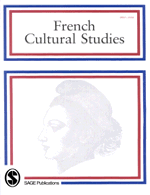 |
GRANJON F., COMBES C., 2009, «Digitamorphosis of Music Consumption Practices. The Case of Young Music Lovers» ,
French Cultural Studies, 20 (3), p.287-314.
In this article I analyse recent trends that are changing the consumption patterns of music content. ICTs are contributing to a more general access to cultural works, as well as to the wider diffusion and circulation of cultural content. They are also triggering a reorganisation of the practices of music lovers and their relations with cultural works and the new objects through which they exist. Here I explore some of the arguments of a hypothesis that I call `digitamorphosis'. Drawing my inspiration from studies on discomorphosis, my aim is to identify what today's music lover owes in particular to the digitisation of sound, the dematerialisation of music media, and the diversification of equipment. |
| |
GUICHET F., HENNION A., 2009, «Vivre avec Alzheimer, vivre avec un "Alzheimer". Recueillir l’expérience des aides à domicile» ,
Gérontologie et Société, (128/129), p.117-128.
L'article vise à donner une définition en actes de la maladie d'Alzheimer, à partir d'une mise en récit de l'expérience qu'ont les aides à domicile de la vie commune avec une personne atteinte. Travailler dans un espace qui est d'abord celui du soigné leur a appris beaucoup de choses. La méthode consiste, sans pour autant minorer ses contraintes, àtraiter de façpn pragmatique la maladie d'Alzheimer non seulement comme un déficit mais , à travers ce qu'elle fait fairen saisi dans la relation d'aide, comme une réalité positive à partir de laquelle se déploie aussi une façon de vivre, provisoire et inédite. Nous cherchons ainsi àç faire surgir sur la maladie une parole "autre", celle des aides, mais une parole qui a du poids parce qu'elle est durement éprouvée, au deux sens du mot : ressentie et corrigée au quotidien par l'expérience |
| |
HENNION A., 2009, «Réflexivités. L’activité de l’amateur» ,
Réseaux, 27 (153), p.57-78.
Accès au texte »
La sociologie nous a habitués à une lecture critique du goût. Une analyse réflexive de l’activité des amateurs ouvre à un point de vue plus attentif à leurs pratiques pour se le révéler. Les amateurs ne « croient » pas au goût des choses. Au contraire, ils doivent se les faire sentir. À partir de cas divers (escalade, vin, musique), l’auteur développe une approche pragmatiste du goût comme activité et travail sur les attachements, technique collective pour se rendre sensible aux choses, à son corps, à soi-même, aux situations. C’est aussi mettre la réflexivité du côté des amateurs – et non pas seulement de sociologues soucieux de ne pas biaiser leurs analyses. Sociology has accustomed us to a critical reading of taste. A reflexive analysis of amateurs’ activity allows for a point of view that is more attentive to how amateurs reveal taste to themselves. They do not “believe” in the taste of things; on the contrary, they have to enable themselves to experience it. Based on various case studies (rock climbing, wine, music) the author develops a pragmatist approach to taste as an activity and work on attachments; it is seen as a collective technique to make oneself sensitive to things, to one’s body, to oneself and to situations. This also means putting reflexivity on the side of the amateurs and not only on that of sociologists concerned not to bias their analyses. |
| |
HENNION A., 2009, «Talking Music, Making Music: A Comparison between Rap and Techno» ,
in SCOTT D., (ed.), The Ashgate Research Companion to Popular Musicology, Farnham, Ashgate, p.365-376. |
| |
HENNION A., 2009, «Authenticité, goût, interprétation : la leçon du faux en musique» ,
in LISTA M., (ed.), De main de maître : l'artiste et le faux, Paris, Hazan, Musée du Louvre éditions, p.113-132. |
| |
HENNION A., GUICHET F., PATERSON F., 2009, «Le handicap au quotidien. La personne, les proches, les soignants : sept récits d’expérience à domicile» ,
Paris, HAS/CSI. |
 |
LAURENT B., 2009, «Replicating participatory devices: the consensus conference confronts nanotechnology» ,
Working paper.
Accès au texte »
Describes two examples (in France and in the US) of replication of the Danish procedure of the consensus conference for public participation in nanotechnology, and argues that emphasis on the evaluation of the participatory procedure should not be made at the expense of richer analysis of the problematisation of public participation fostered by such policy instruments. |
| |
LEMOINE B., 2009, «Alain Desrosières, L’Argument statistique. Pour une sociologie historique de la quantification (tome I) et Gouverner par les nombres (tome II). Paris, Presses de l’école des Mines, 2008. Compte-rendu» ,
Revue d'anthropologie des connaissances, 3 (2), p.359-365. |
| |
LEPINAY V., CALLON M., 2009, «Sketch of Derivations in Wall Street and Atlantic Africa» ,
in CHAPMAN C., COOPER D., MILLER P., (ed.), Accounting, Organizations, and Institutions. Essays in Honour of Anthony Hopwood, Oxford, Oxford University Press, p.259-289. |
| |
LINHARDT D., 2009, «L’Etat et ses épreuves. Eléments d’une sociologie des agencements étatiques» ,
Clio@Themis. Revue électronique d'histoire du droit, (1), p.36.
Accès au texte »
Du conflit qui a opposé, au cours des années 1970, la République fédérale d’Allemagne à un ensemble de groupes de guérilla urbaine, on a souvent dit qu’il a été, pour l’État, une épreuve – eine Probe. L’expression vise le caractère tendu d’une situation où l’État a été conduit à devoir combattre un ennemi intérieur. Les difficultés qu’une telle configuration soulève ne sont pas seulement de l’ordre de la force qu’il convient de lui opposer ; elles découlent plus fondamentalement de la contradiction possible entre l’emploi de cette force et les principes démocratiques dont l’État se revendique. Ce texte prend appui sur une description de ce conflit dans l’optique d’une sociologie pragmatique de l’État. Dans cette perspective, l’idée de sens commun selon laquelle l’État allemand a subi une épreuve lui sert de point de départ pour construire une notion de portée plus générale : la notion d’épreuve d’État ne désigne plus dès lors seulement une situation tendue pour l’État, mais vise un ensemble de processus quasi expérimentaux par lesquels l’État devient l’objet d’explicitations collectives dont la prise en compte permet de contribuer à la constitution d’un savoir sociologique sur l’État. |
| |
MALLARD A., 2009, Le cadrage cognitif et relationnel de l’échange marchand: analyse sociologique des formes de l’organisation commerciale. Habilitation à Diriger les Recherches en Sociologie. ,
Université de Toulouse II Le Mirail..
Accès au texte » |
| |
MATTEDI M., GRISOTTI M., SPIESS M., BENNERTZ R., 2009, «A coperformaçào das ciencias e da sociedade. Entrevista con Michel Callon» ,
Politica & Sociedade, (14), p.383-408.
Michel Callon é professor de Sociologia na École de Mines de Paris.
Foi diretor do Centre de Sociologie de L’innovation e presidente
da Society for Social Studies of Science. Seus trabalhos contemplam um
vasto domínio de interesses das ciências sociais como, por exemplo,
a Antropologia da Ciência e da Tecnologia, a Socioeconomia da
Inovação, a Cientometria e a Sociologia dos Mercados. Além disso,
tem sido editor de revistas, de livros, organizador de conferências
e em setembro de 2008 foi agraciado com a Médaille D’Argent do
Centre National de la Recherche Scientifique - CNRs, que distingue os
pesquisadores pela originalidade, qualidade e importância de seus
trabalhos. Portanto, ao longo do caminho percorrido por Michel
Callon na Sociologia, que inicia há mais de trinta anos com suas preocupações
sobre o programa de pesquisa sobre a produção do carro
elétrico, passando pelo renomado estudo sobre a aquicultura na baia de Saint-Brieuc, até seus trabalhos mais recentes sobre o mercado
econômico, é possível identificar uma preocupação constante de
mostrar como o conhecimento cientifico e os dispositivos técnicos
fazem com que as “entidades ajam de maneira controlada e previsível”,
tornando a sociedade possível. |
| |
MEYER M., 2009, «Lieux de science» ,
Atlas du Luxembourg, Cologne, Emons Verlag, p.210-211. |
| |
MEYER M., 2009, «Les musées au Luxembourg» ,
Atlas du Luxembourg, Cologne, Emons Verlag, p.198-199. |
| |
MEYER M., 2009, «Objet-frontière ou Projet-frontière ? Construction, (non-)utilisation et politique d’une banque de données» ,
Revue d'anthropologie des connaissances, 3 (1), p.127-148.
Accès au texte »
Une banque de données est un lieu de rencontre entre le social et la technique, les discours et les matérialités, les rêves de ses concepteurs et les réalités de ses utilisateurs. Le présent article se propose d’analyser la banque de données comme un objet-frontière dans le contexte d’un musée d’histoire naturelle. Dans un musée, un de ses rôles est la médiation de savoirs entre professionnels et amateurs. Mais de nombreux facteurs rendent difficile la construction de l’objet-frontière ainsi que la coproduction de savoirs scientifiques à travers celui-ci. Les difficultés révèlent qu’il s’agit d’un objet-frontière politique, objet à travers lequel s’expriment des identités spécifiques et dont le fonctionnement dépend des enrôlements et des résistances de ses utilisateurs. L’article propose de conceptualiser l’objet-frontière non seulement comme un objet fini et défini, mais comme un projet – partiellement distribué et utilisé, relativement ambivalent et perpétuellement en construction.
A database is a place of encounter between the social and the technical, discourses and materialities, the dreams of its designers and the realities of its users. This article analyses databases as boundary objects in the context of a museum of natural history. In a museum, one of the roles of a database is to mediate knowledge between professionals and amateurs. But many factors render the construction of a boundary object, and the coproduction of scientific knowledge through it, difficult. These difficulties reveal that a database is a political boundary object, an object through which specific identities are expressed and the performance of which depends on the enrolments and resistances of its users. The article proposes to conceptualise a boundary object not only as a defined and finite object, but also as a project – partially distributed and used, relatively ambivalent and perpetually in construction.
Un banco de datos es un lugar de encuentro entre lo social y lo técnicos, los discursos y los materialistas, los sueños de sus diseñadores conceptores y las realidades de sus usuarios. Este artículo tiene por objeto analizar los bancos de datos como objetos frontera en el contexto de un museo de historia natural. En un museo, una de las funciones de un banco de datos es la mediación de conocimientos entre profesionales y afcionados. Pero hay muchos factores que hacen difícil la construcción de un objeto frontera, y que la co-producción del conocimiento científico a través de ellaél, difícil. Estos problemas ponen de manifesto que un banco de datos es un objeto frontera políticoa, un objeto a través de los cuales hablan se expresan de las identidades y cuyo funcionamiento depende de la contratación y la resistencia de sus usuarios. El artículo se propone conceptualizar un objeto frontera no sólo como un objeto acabado y definido, sino como un proyecto – en parte distribuidos y relativamente utilizados, relativamente ambivalente y perpetuamente en construcción. |
| |
MEYER M., 2009, «Creativity and its contexts: the emergence, institutionalisation and professionalisation of science and culture in Luxembourg» ,
European Review of History, 16 (4), p.453-476.
While an abundant literature on the social history of culture and science in Europe has developed over the past few decades, there is to date hardly any academic work exploring the social history of science and culture in Luxembourg. The aim of this article is to put Luxembourg 'on the map' by focusing on its scientific research and museums in order to examine the emergence, institutionalisation and professionalisation of Luxembourg's science and culture. It will be argued that the most radical changes occurred in the 1980s and 1990s: a multiplication of infrastructures, an increase in budgets, a professionalisation of practices, the emergence of a market for artworks, and an appearance of dedicated policies. During this period, both the material architecture and the socioeconomic architecture of science and culture have been significantly (re)configured. Within the political debates accompanying these changes, the discourses stressing the positionality and relationality of science and culture are noteworthy: while both were increasingly positioned within a European context, research was predominantly portrayed as a resource to boost Luxembourg's economy whereas culture more as a complement to Luxembourg's image of a financial player and a means to 'regenerate' its symbolic capital. |
 |
MEYER M., 2009, «From ’cold’ science to ’hot’ research: the texture of controversy» ,
Working paper.
Accès au texte »
This paper examines the changing roles of science exhibitions from places of 'cold' science, where secure, closed and fixed knowledge is communicated, to places that increasingly engage with 'hot', controversial research and open debates. |
| |
MEYER M., 2009, «D’stater muséeën - l’architecture des musées de Luxembourg-Ville» ,
Atlas du Luxembourg, Cologne, Emons Verlag, p.200-201. |
| |
MOLYNEUX-HODGSON S., MEYER M., 2009, «Tales of Emergence - Synthetic Biology as a Scientific Community in the Making» ,
BioSocieties, 4 (2-3), p.129-145.
This article locates the beginnings of a synthetic biology network and thereby probes the formation of a potential disciplinary community. We consider the ways that ideas of community are mobilized, both by scientists and policy-makers in building an agenda for new forms of knowledge work, and by social scientists as an analytical device to understand new formations for knowledge production. As participants in, and analysts of, a network in synthetic biology, we describe our current understanding of synthetic biology by telling four tales of community making. The first tale tells of the mobilization of synthetic biology within a European context. The second tale describes the approach to synthetic biology community formation in the UK. The third narrates the creation of an institutionally based, funded ‘network in synthetic biology’. The final tale de-localizes community-making efforts by focussing on ‘devices’ that make communities. In tying together these tales, our analysis suggests that the potential community can be understood in terms of ‘movements’—the (re)orientation and enrolment of people, stories, disciplines and policies; and of ‘stickiness’—the objects and glues that begin to bind together the various constitutive elements of community. |
| |
MUNIESA F., 2009, «The description of financial objects» ,
Anthropology Today, 25 (2), p.26-27.
Accès au texte »
A comment on Hart and Ortiz (2008) |
| |
MUNIESA F., BEUNZA D., 2009, «The parliament of finance» ,
in ASCIONE G., MASSIP C., PERELLÓ J., (ed.), Cultures of change: social atoms and electronic life, Barcelona, Actar, p.42-43. |
| |
MUNIESA F., CALLON M., 2009, «La performativité des sciences économiques» ,
in STEINER P., VATIN F., (ed.), Traité de sociologie économique, Paris, PUF, p.289-324.
Accès au texte » |
 |
MUNIESA F., LINHARDT D., 2009, «At stake with implementation: trials of explicitness in the description of the state» ,
Working paper.
Accès au texte »
We develop the notion of "trials of explicitness" as a conceptual instrument for the study of the state from a pragmatist, sociological angle. We present results from an empirical case study on how state practitioners (i.e. actors in charge of expressing, evaluating, executing or reforming the action of the state) confront the problem of the clarification of the agency of the state. We focus on the implementation, from the early 2000s onwards, of a reform of public management in France which called for a revision of the description of the perimeters and achievements of the action of the state. The reform targeted the rules governing the budgetary process and included, along with new accounting methods, new forms of reporting and assessment aiming at identifying the performance of governmental and administrative action. We consider the implementation process as a set of trials of explicitness in which a number of state practitioners struggled to elucidate the meaning of the reform and to flesh out its orientation. We analyze, using archival material, a number of such trials in the domain of national science and research policy. |
| |
MUSIANI F., 2009, «The Internet Bill of Rights: A Way to Reconcile Natural Freedoms and Regulatory Needs?» ,
SCRIPTed: A Journal of Law, Technology and Society, 6 (2), p.504-515.
Accès au texte »
Within broad debates on freedom, security and human rights on the Internet – carried on during recent years in national and international fora – the proposal for the creation and adoption of a Bill of Rights for the Internet has been the subject of uneven attention and mixed reviews. Taking stock of the renewed interest in the proposal showed by the Committee on Civil Liberties of the European Parliament, this article analyses the current state of the Internet Bill of Rights (IBR) project. The analysis briefly retraces the history and main promoters of the IBR proposal, outlines the rationale and perspectives behind it, and debates its promises, limits and future challenges. |
| |
MUSIANI F., 2009, «Walls Built Up, Walls Written Down: Of Symbolic Value, Material Effectiveness and Media Representation of Barriers in Padua, Italy» ,
in HOLTEN J., MADSEN SIMENSTAD L., (ed.), You Are Here: Europe Today, Berlin, Broken Dimanche Press, p.39-61. |
| |
MUSIANI F., 2009, Cyberhandshakes: How the Internet Challenges Dispute Resolution (... And Simplifies It) ,
Madrid, EuroEditions.
The steadily increasing quantity and variety of Internet-based commercial activities worldwide calls for the development of innovative tools, codes and practices of dispute resolution. This work supplies the missing link between two visions of the Internet, as a venue for commercial transactions and as a tool in alternative dispute resolution proceedings, to suggest that the Internet's very features that are challenges the field of dispute settlement can become the primary key to solve, or at least simplify, these challenges. A special attention to the legal and social dimensions of the European space is paid as the study discusses the present and near future of dispute resolution mechanisms “for the Internet, via the Internet”. |
| |
MUSTAR P., 2009, «Technology Management Education: Innovation and Entrepreneurship at MINES ParisTech, a Leading French Engineering School» ,
Academy of Management Learning & Education, 8 (3), p.418-425.
I highlight the design of a new specialization on innovation and entrepreneurship at a
leading French engineering school by addressing four broad concerns: (1) How to develop
a highly selective technology management and entrepreneurship specialization for
students in an institutional and country environment traditionally resistant to the notion
of entrepreneurship; (2) How to combine the acquisition of knowledge and the
development of skills; (3) How to develop entrepreneurial skills and students’ ability to
take responsibilities; and (4) How to encourage imagination, creativity, involvement, and
risk taking.
In addressing these questions, a major challenge was to develop a distinctive learning
method combining lectures, studies of start-ups and incubators, interviews with
entrepreneurs and professionals, business plans, teamwork in creating new business
ideas, project work, and in-depth involvement in an actual, 3-month entrepreneurial field
study. All these educational activities exist at other institutions, but they have never been
combined in a single program. The novelty of this program lies in this extensive mix and
in the shift from classical teaching models to experiential-learning approaches. |
 |
PINA-STRANGER A., 2009, «Transfert technologique et processus collectif d’apprentissage dans l’industrie des biotechnologies en France» ,
Sociologie Santé, (30, “Médicaments et société”), p.27-49.
L’importance des relations inter-organisationnelles pour le développement des entreprises de biotechnologie a été mise en évidence par divers auteurs. La plupart des travaux sur ce secteur analysent exclusivement les accords contractuels passés par ces entreprises. Nous proposons d’élargir l’étude du transfert technologique aux relations sociales mises au jour par l’échange de conseils entre les entrepreneurs scientifiques. Nous analysons ce système d’échange comme le résultat des affiliations institutionnelles et des investissements relationnels déployés par les acteurs dans la construction de l’orientation du processus d’apprentissage. Nos résultats permettent d’identifier les normes d’échange et les mécanismes de solidarité et d’exclusion qui délimitent les frontières sociales dans ce milieu, notamment dans le clivage « privé/public ». Nous suggérons que la distance entre le « privée » et le « public », entre « l’économie » et « la science », est le reflet d’un manque de coordination qui se traduit par une perte d’efficacité pour ce secteur industriel.
Several authors have demonstrated the importance of inter-organizational relationships for the development of biotechnology companies. Most of the works on this industrial sector analyze exclusively the contractual agreements of the companies. In this article, we propose to extend the study of Technology Transfer to the social relationships observed through advice exchange among the scientific entrepreneurs. We analyzed this exchange system as the result of the institutional affiliations and the relational investments that the actors make in the orientation of the learning process. Our results allow us to identify the norms of exchange and the solidarity and exclusion mechanisms that delimit the social boundaries in this field, in particular through the “private-public” institutional division. We suggest that this opposition is translated into a loss of efficiency for this sector. |
| |
PINA-STRANGER A., 2009, «Transferencia tecnológica y proceso colectivo de aprendizaje en la industria biotecnológica» ,
Aposta, revista de ciencias sociales, (43), p.1-34.
Diversos autores han mostrado la importancia de las relaciones inter-organizacionales para el desarrollo de las empresas biotecnológicas. La gran mayoría de los trabajos sobre este sector analizan exclusivamente los acuerdos contractuales que establecen estas empresas. En este artículo proponemos ampliar el estudio de la transferencia tecnológica a las relaciones sociales observadas a través de las relaciones de consejo entre los empresarios científicos. Analizamos este sistema de intercambio como el resultado de las afiliaciones institucionales y de las inversiones relacionales realizadas por los actores en la construcción de sus status y la coorientación del procesos colectivo de aprendizaje. Nuestros resultados permiten identificar las normas de intercambio y los mecanismos de solidaridad y de exclusión que delimitan las fronteras sociales en este medio, en particular a través de la oposición “privado/publico”. Sugerimos que la distancia en el mundo empresarial y la investigación pública, entre la “economía” y la “ciencia”, es el reflejo de una falta de coordinación que se traduce en una pérdida de eficiencia para este sector industrial. |
| |
PONTILLE D., 2009, «Écriture et action juridique. Portrait de l’huissier de justice en réparateur» ,
Semen, (28), p.15-31.
Accès au texte »
L’intervention d’un huissier de justice consiste en une forme particulière de réparation de l’ordre social. Certes, l’huissier intervient pour réparer un dommage en faisant passer le droit des tribunaux jusqu’aux situations vécues par les justiciables. Mais l’exécution des décisions de justice ne se résume ni à des échanges réparateurs typiques des interactions de face à face, ni à des opérations matérielles propres aux techniciens intervenant sur des dispositifs plus ou moins complexes. Pour agir, l’huissier est équipé d’objets singuliers : des écrits performatifs. Ce n’est que l’acte juridique à la main que l’huissier peut réparer des dommages. Or, la performativité d’un écrit n’est pas intrinsèque. Ce texte questionne le travail de fabrication et de réparation propres aux actes d’huissier. L’analyse se concentre d’une part sur les principales étapes par lesquelles un écrit s’ancre progressivement dans une étude d’huissiers, prend la forme du droit et acquiert une valeur juridique. Elle éclaire ensuite, à partir du cas d’un acte présentant des défauts de fabrication, les opérations scripturales et matérielles nécessaires pour que l’écrit retrouve sa capacité d’action juridique et sa performativité.
Bailiffs intervention consist in a particular form of repair of the social order. A Bailiff certainly acts to repair an injury, but the enforcement of decisions made in the courts is neither reducible to remedial interchanges typical of face to face interactions, nor to material operations carried out by technicians on more or less complex machines. To act properly, a bailiff is equipped by singular objects: documents that are performative. It is only with a deed in his hand that a bailiff can repair some injuries. Yet the performativity of writing is not an intrinsic value. This article questions the production work and the repair work specific to documents that bailiffs deal with. On the one hand, the analysis is focused on the main stages through which a written object takes place in a bailiff office, takes the form of law and acquires a juridical value. On the other hand, the case study of a deed with manufacturing defect allows to show the writing and material actions necessary for the deed to find again its capacity of action and its performativity. |
 |
POON M., 2009, «From New Deal institutions to capital markets: commercial consumer risk scores and the making of subprime mortgage finance» ,
Working paper.
Accès au texte »
Provides original sociological research on the development of consumer credit scoring in the United States and its links to subprime mortgage finance. |
| |
RABEHARISOA V., 2009, «De la médecine à la biomédecine : les multiples figures du patient» ,
Mines. Revue des Ingénieurs, p.47-49.
440 |
| |
RABEHARISOA V., BOURRET P., 2009, «Staging and Weighting Evidence in Biomedicine: Comparing Clinical Practices in Cancer Genetics and Psychiatric Genetics» ,
Social Studies of Science, 39 (5), p.691-715.
This paper seeks to make a contribution to the discussion on what
clinical work consists of in biomedicine. It draws on the comparison between two
clinical practices: (1) cancer genetics of breast/ovarian and colon cancers; and (2)
psychiatric genetics of autism and its related syndromes. We argue that the clinic does
not reflect genetic reductionism, nor does it entail a straightforward return to the
previous clinical tradition. We show that the clinic is affected by three changes in the
practices that we studied. The first change concerns clinical settings: clinical work is
now performed by ‘bioclinical collectives’, gathering researchers and clinicians from
various disciplines and activities, and conjointly searching biology and pathology. The
second change concerns the content of clinical work that we propose to call ‘clinic of
mutations’. This clinic involves the intense work of collecting and comparing multiple
and heterogeneous data to document the biological nature and the clinical relevance
of mutations, whose status is ambiguous and whose effects are uncertain. The third
change concerns the dynamics of clinical work, which is now overlapping with
research. As a consequence, the elaboration of a judgment and a medical decision is
no longer a matter of simply making a diagnosis or prognosis. Rather it consists in
accounting for nosographic domains and descriptive and interpretive models of
diseases, into which mutations may plausibly play a role. We conclude with a
discussion of the form of objectivity underlying clinical work in biomedicine. Our
contention is that in the current post-genomic era, thinking of genetic markers as
objective proofs of a disease or a risk of disease is definitely inappropriate. Rather,
the clinic has to constantly produce the meaning and relevance of mutations and
biomedical entities that tend to proliferate and regularly invade the clinical settings. |
 |
RÉMY C., 2009, «Le cochon est-il l’avenir de l’homme ? Les xénogreffes et l’hybridation du corps humain» ,
Terrain, (52), p.112-125.
Ces dernières années, des scientifiques ont créé un cochon génétiquement modifié en vue de réaliser des xénogreffes, c’est-à-dire des transplantations d’organes d’animaux chez des patients humains. L’article se penche sur le choix du cochon comme donneur privilégié et sur le geste d’hybridation en se focalisant sur les controverses qui ont jalonné le processus d’innovation. L’analyse diachronique montre que, loin d’être « naturel », le choix du cochon comme donneur est récent et qu’il s’est imposé suite à des débats sur l’utilisation des primates. Concernant l’hybridation du corps humain et ses conséquences sur la notion de personne, les scientifiques jouent sur la frontière homme / animal afin de la normaliser : le cochon, car il est éloigné de l’humain, peut être facilement objectivé et donc absorbé. Mais cette distance semble aujourd’hui menacée en raison du discours éthique sur l’animal et des manipulations génétiques sur le cochon qui visent à l’humaniser.
Are pigs the future of mankind?
Xenotransplantations and the hybridisation of the human body
In recent years scientists have created genetically modified pigs for the purpose of xenotransplantations. These are transplants of animal organs into human patients. The paper examines why pigs have been chosen as donors, the significance of hybridisation and the controversies that these innovations have caused. A historical review shows that far from the choice of pigs being «natural» it turns out to be recent and to follow controversies surrounding the possible use of primates. The scientists choice of pigs is the product of a balancing act on either side of the human / animal divide. Since pigs are different from humans they can be objectified and thus absorbed. This distance is however now threatened by the discourse on animal rights and by genetic manipulations that «humanise» pigs. |
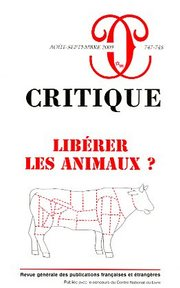 |
RÉMY C., 2009, «Tuer sans émotion ? Réflexions sur la mise à mort des animaux à l’abattoir» ,
Critique, (747-748), p.691-701. |
| |
RÉMY C., 2009, «The Animal Issue in Xenotransplantation: Controversies in France and the United States» ,
History & Philosophy of Life Sciences, (31), p.405-428.
In recent years scientists have created genetically modified pigs for the
purpose of xenotransplantations. These are transplants of animal organs into human
patients. But xenotransplantation has a long history. Since the early twentieth century,
many surgeons tried to insert animal organs into human and non-human bodies. This paper
examines the controversies that these innovations have caused in the United States and
France, including the notion of the objectification of animals. Three phases are described.
The historical review shows that far from the choice of pigs being “natural” it turns out to be
recent and to follow controversies surrounding the possible use of primates. During the last
phase, the scientists have internalized the “animal issue” in their practice: the official donor
is now the pig, and the animals are treated respectfully during all the lab manipulations.
Since pigs are different from humans they can be objectified and thus absorbed. This
objective distance is, however, threatened by new discourses on animal rights, by genetic
manipulations that “humanise” pigs, and by scientific practice itself that recognizes a moral
proximity between pigs and men. |
| |
RÉMY C., 2009, «Compte-rendu. A l’abattoir, travail et relations professionnelles face au risque sanitaire, S. Muller, Coll. "Natures sociales", Maison des sciences de l’homme, Paris, 2008, 301 p.» ,
Sociologie du travail, 51 (3), p.432-434. |
 |
RÉMY C., 2009, La fin des bêtes. Une ethnographie de la mise à mort des animaux ,
Paris, Economica.
La question de la frontière entre humanité et animalité suscite aujourd’hui des débats dans l’espace public, où militants de la cause animale, philosophes et essayistes alimentent la controverse. Mais comment cette question se pose-t-elle à ceux dont le métier consiste à
mettre à mort des animaux ? En s’appuyant sur une série d’enquêtes ethnographiques menées dans un abattoir, une clinique vétérinaire et un laboratoire d’expérimentation animale, ce livre cherche à répondre à cette interrogation. Il s’écarte des discours généraux et des positions construites a priori au profit d’une analyse empirique de la manière dont la frontière entre les hommes et les animaux est questionnée, remise en cause ou réaffirmée au cours du travail quotidien des acteurs. |
| |
TEIL G., BARREY S., BLANCHEMANCHE S., FLOUX P., HENNION A., 2009, «Faire valoir : le marché comme instrument de l’action collective. Le cas des vins à qualité environnementale» ,
in CANTELLI F., ROCA I ESCODA M., STAVO-DEBAUGE J., PATTARONI L., (ed.), Sensibilités pragmatiques. Enquêter sur l'action publique, Bruxelles, Peter Lang, p.281-299. |
| |
AKRICH M., 2008, «"Bébé en vue", l’observatoire bourguignon des usagers en périnatalité : une expérience participative innovante» ,
Actualité et débat en santé publique, p.89-92.
Accès au texte »
L'article retrace la constitution d'un groupe d'usagers à l'initiative de professionnels de la périnatalité, et la manière dont ce groups s'est progressivement défini une identité, un point de vue et un programme d'action. |
| |
AKRICH M., GARDEY D., LÖWY I., PICON A., 2008, «Corps, genres, techniques, identités» ,
Sciences & Devenir de l'Homme, p.70-90.
Accès au texte »
Cette contribution interroge le constat contemporain d'une transformation des corps. Elle envisage en quoi les corps se trouvent définis et transformés par les sciences et les technologies. Du corps malade au matériau corporel, du corps reproductif au corps au travail, du corps numérique au corps handicapé, il s'agit d'envisager les capacités et les limites des corps contemporains, les façons dont ils se trouvent définis, réparés, multipliés, entravés ou contrôlés, mais aussi alloués (comme dans le cas du genre et de la race) à la nature et à la culture. |
| |
AKRICH M., MÉADEL C., RÉMY C., 2008, «Building collectivities via the Web ? Information and mobilization on cancer websites» ,
Virtually informed. The Internet as (New) Health Information Source, Vienna University. 2008.
Accès au texte »
In this presentation, we analyse the construction of cancer patient profiles through websites offering information on the disease. We characterize the profiles of cancer patients as they appear on a large number of French websites. Many sites belong to non-profit organizations; others are initiatives by the medical profession; others still are produced by professional organizations linked to the media sphere. Apart from a general review of the competencies and rights associated with patients, on the role of information in determining their capacities to act, and on the place granted to patients and their families to express themselves, the sites related to patient organizations raise specific questions. For instance, what are the forms of engagement pertaining to cancer, in the French non-profit organization movement? In particular, how can the division of tasks that each organization institutes between doctors, patients and itself be characterized, and how does it articulate its support activities with its activism?
In parallel, we examine the role of the Internet in shaping this engagement, and the forms of writing peculiar to the Web. This writing has the characteristic of affording the possibility of a multiplication of enunciators and thus of facilitating encounters and the formation of collectives, that is, individuals talking in the same voice with specific aims. In what way do the uses to which the various "authors" of websites put these possibilities allow for the creation of new knowledge, the emergence of new collectives, and the performation of new actor configurations?
To answer these questions, our presentation is divided into three parts:
- First, we consider the status and format of medical information, as delivered on websites. In particular, we examine the designated enunciators, the authority on which their information is based, and the mise en scène of the context of enunciation. What position is assigned to the recipients of this information? Is there space for uncertainty and debate?
- In the second part we characterize the presence of laypersons' and patients' talk. In particular, we examine its possible link with that of professionals, and that of "science". Are there any forms of articulation between individual experiences and collective forms of expression?
- Finally, in the third part, we analyse the patient profiles that each website constructs in its public, both through the proposed content and through the modalities of action afforded by the site itself. We consider the "patients", their possibilities to act and the competencies attributed to them. How does the site describe a patient's relations with healthcare professionals? What choices does the patient have? What leeway does he or she have to define him- or herself through the site itself? What are the relations between the patient profile, that of the activist and that of the donor of funds? |
| |
AKRICH M., MÉADEL C., RÉMY C., VERGNAUD F., 2008, «Les patients et l’information : le cancer au risque d’internet» ,
Institut National du Cancer.
L'objectif de cette recherche est de faire une exploration comparative des ressources disponibles sur l'internet francophone en matière de cancer et à destination des patients, afin de comprendre comment sont structurés ces contenus et de quels garants ils s'entourent, quels objectifs ils se donnent par rapport aux patients, comment ils se situent par rapport aux professionnels, à quels types de comportements ils incitent ou peuvent conduire...
La recherche prend en compte la spécificité des outils de communication privilégiés (sites web, blogs, listes de discussion, forums...), en étant attentif au fait que ces différents mediums sont de plus en plus associés les uns aux autres. Une telle analyse, en conduisant à une meilleure compréhension des modes de fonctionnement de l'information médicale disponible pour les patients, permettra en particulier d'éclairer les professionnels de la santé, que l'abondance et l'accessibilité des informations inquiètent. Symétriquement, elle fournira un panorama des débats « profanes » sur le thème et permettra de repérer les thèmes débattus par les patients et leur entourage, les points de consensus et ceux, éventuels, de dissensus, les échanges qui suscitent des réactions, des formes de solidarité, de nouvelles explorations ou questions sur la maladie, sa prise en charge, etc.
Ce rapport est un outil de travail qui ambitionne de fournir une première exploration de l'univers francophone sur le cancer, mais aussi il se propose aussi de réfléchir aux méthodes et approches utiles pour équiper l'analyse des sites de santé. Pour cela, après une rapide exploration bibliographique, le travail présentera d'abord une analyse quantitative d'une cinquantaine de site passés au crible d'une quarantaine de critères. Puis nous confronterons les premières observations sur les sites avec des acteurs du monde associatif impliqués dans la question de l'information des malades. Enfin, nous analyserons la constitution des figures du patient atteint de cancer au travers des sites internet proposant une information sur cette pathologie. On trouvera dans les annexes des fiches présentant les sites étudiés ; nous y avons ajouté l'analyse de 4 sites en langue allemande et 3 sites localisés en Grande-Bretagne suivi par une brève analyse comparative de ces sites non francophones. |
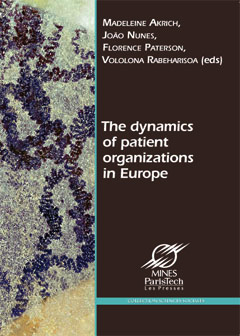 |
AKRICH M., NUNES J., PATERSON F., RABEHARISOA V., FILIPE W., 2008, The dynamics of patient organizations in Europe ,
Paris, Presses de l'Ecole des Mines.
Patient organizations today play a major role in the scientific, economic and political arenas. They have become the quasi-obliged partners of researchers, industrialists and political authorities. This booki nvestigates this quite recent confi guration by offering an in-depth exploration of three thematic issues:
To what social and political stakes are patient organizations confronted as regards the transformation, production, circulation, and governance of knowledge?
The involvement of patient organizations in the economic world is acknowledged as confrontational, especially when it comes to relationships with the pharmaceutical industry. To what extent do opposition, ”instrumentalization“, or cooperation constitute relevant models if we are to account for the multifaceted relationships between patient organizations and economic actors?
Patient organisations are the structuring actors of networks, coalitions, and collectives throughout Europe. What social and political concerns arise from these particular forms of collective action on a national or European scale?
Each question is fi rst examined through an academic and grey literature review. Then the emerging topics and critical issues are identifi ed and discussed, drawing upon exchanges of experiences, viewpoints, and reflections between actors involved in patients’ and users’ movements and social scientists.
The dynamics of patient organizations in Europe raises a number of questions of interest for all actors from the health system, as well as for social scientists. This book intends to contribute to the reflection on further research agenda setting and policy-making. |
| |
AUDREN F., LINHARDT D., 2008, «Un procès hors du commun ? Le procès de la Fraction Armée Rouge à Stuttgart-Stammheim (1975-1977)» ,
Annales, (5), p.1003-1034.
Le procès de la Fraction Armée Rouge à Stuttgart-Stammheim (1975-1977) L’article propose une analyse du procès pénal qui s’est tenu entre 1975 et 1977 à Stuttgart-Stammheim en vue de juger les membres du noyau central de la première génération de la Rote Armee Fraktion ( RAF ). Événement judiciaire marquant pour la jeune République fédérale, le procès de Stammheim a fait l’objet d’un investissement massif de la part des accusés et de leurs avocats. Discernant dans le procès une occurrence de « justice politique », l’enjeu est de démontrer l’incapacité de l’État à se soumettre à ses propres exigences, et par-là même de dévoiler la nature « fasciste » d’un État dont le caractère démocratique serait de pure apparence. Cet objectif, ils entendent le réaliser en faisant un usage stratégique du droit. Et cet usage du droit contre le droit constitue, pour les représentants de l’État, un problème de taille : la volonté des accusés de les forcer à sortir du droit ne laisse d’autre choix que d’en rajouter dans l’usage du droit et de chercher à réduire la procédure judiciaire à une succession d’actes techniques, sans admettre aucune forme d’extériorité. Une telle configuration offre un remarquable point de vue sur les contraintes qui pèsent sur le travail juridique et le passage du droit et, plus généralement, sur l’État de droit saisi à travers les épreuves qu’il affronte et qui le forgent. |
| |
BARTHE Y., 2008, «Quand l’incertitude vient du passé : du principe de précaution au principe de présomption. Note sur une recherche en cours.» ,
Natures, Sciences, Sociétés, 16p.36-40.
Accès au texte »
When uncertainty comes from the past: from the precautionary principle to the presumption principle. The sociology of collective risks has undergone an important renewal for the past fifteen years. Differing from approaches which considered the perception of risks, the most innovating works in this field have regarded collective risks according to a larger point of view: that of public problems whose emergence, framework and institutional treatment need to be questioned. These works notably attempted to analyze the changes induced by the acknowledgement of the scientific uncertainties regarding certain future threats. But uncertainty can come from the past too. It is the case when a latent period make a causal association between a risk exposure and a disease very difficult to establish. The example of French "atomic veterans", who raise today the question of health impact of nuclear testing, is taken to analyse the situations of uncertainty associated to the past. The paper shows that in this kind of situation, one of the main issue of the controversy lies on the application of a principle which looks like the precautionary principle but which is turned towards the past: the presumption principle.
La sociologie des risques s'est beaucoup intéressée aux situations d'incertitude liées à des dommages futurs. Mais il existe des situations où l'incertitude vient plutôt du passé, en particulier lorsqu'il s'agit d'établir un lien de causalité entre certaines pathologies et une exposition à un risque ayant eu lieu plusieurs dizaines d'années auparavant. À partir de l'exemple de la mobilisation des vétérans des essais nucléaires français, cet article cherche à caractériser ces situations d'incertitude liées au passé. Il montre que l'un des enjeux des controverses engendrées par ce genre de situation est l'application d'un principe analogue au principe de précaution, mais tourné vers le passé: le principe de présomption. |
| |
BENVEGNU N., 2008, «Une épreuve démocratique ? La procédure de débat public sur le projet d’implantation d’éolienne en Atrébatie» ,
in GORGEON C., LAUDIER I., (ed.), Territoires et identités en mutation, Paris, L'Harmattan, p.21-36. |
| |
BENVEGNU N., BRUGIDOU M., 2008, «Prendre la parole sur internet. Des dispositifs sociotechniques aux grammaires de la discussion» ,
Réseaux, 26 (150), p.53-82. |
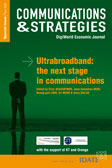 |
BEUSCART J., MELLET K., 2008, «Business Model of the Web 2.0: Advertising or the Tale of Two Stories» ,
Communications & Strategies, (November), p.165-181.
Web 2.0 services have experienced a very strong growth in the last 4 years, and now account for a large part of the global internet audience. The development of these services comes with a deep transformation in Web uses which may prefigure the future of media in an ultrabroadband world. The perennial nature of Web 2.0 services crucially relies on their capability to build profitable business models. Today, advertising is the main source of revenue for Web 2.0 sites; however advertising revenues are weak and disappointing, especially related to their audience. The aim of this paper is to provide an economic understanding of the situation and to investigate the strategies of economic players (site managers, ad networks and ad servers) in order to improve advertising revenues on Web 2.0 sites. We present two different stories about the effect of internet on advertising, specific problems encountered on Web 2.0 sites and effective ways to monetize Web 2.0 audiences. Each story builds upon a different theoretical framework: the economic analysis of advertising and the socio-economic approach to worlds of production. |
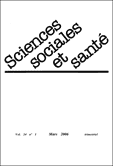 |
BOURRET P., RABEHARISOA V., 2008, «Décision et jugement médicaux en situation de forte incertitude : l’exemple de deux pratiques cliniques à l’épreuve de la génétique» ,
Sciences Sociales et Santé, 26 (1), p.33-66.
L’introduction de la génétique dans des champs médicaux est souvent présentée par les professionnels comme un moyen de renforcer le travail clinique en l’appuyant sur des bases objectives. Ce mouvement a pu être interprété comme l’expression d’un réductionnisme génétique qui gagnerait progressivement la médecine. À partir d’une comparaison entre deux pratiques cliniques — l’une en oncogénétique, l’autre en psychiatrie génétique — l’article propose une lecture différente. Il souligne la présence dans ces pratiques d’incertitudes fortes et nombreuses, et montre comment la qualification de ces incertitudes, en partie générées dans le cours même de leurs activités, devient un objet central pour les professionnels impliqués. Le contenu, les acteurs et les modalités du travail médical en sont transformés. Les objets d’investigation de la clinique sont étendus à des entités biomédicales incertaines et instables : risque de maladie, gènes et mutations, associations mal connues de troubles de différentes natures... L’élaboration des jugements et décisions cliniques passe ainsi par un travail de stabilisation — provisoire — de ces entités biomédicales et des syndromes qui leur sont possiblement associés. Ce travail n’est plus effectué par le clinicien individuel mais par des collectifs pluridisciplinaires qui mobilisent de multiples modes de jugement et formes d’expertise. |
| |
CALLON M., 2008, «Los mercados y la performatividad de las ciencias economicas» ,
Apuntes de Investigacion del CECYP, p.11-68.
14 |
| |
CALLON M., 2008, «Il n’y a d’économie qu’aux marges» ,
Le Libellio d'AEGIS, 4 (2), p.1-18. |
| |
CALLON M., 2008, «Economic markets and the rise of interactive agencements: from prosthetic agencies to "habilitated" agencies"» ,
in PINCH T., SWEDBERG R., (ed.), Living in a material world: economic sociology meets science and technology studies, Cambridge (Massachusetts), MIT Press, p.29-56.
Accès au texte » |
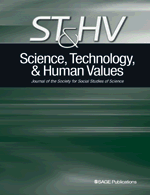 |
CALLON M., RABEHARISOA V., 2008, «The growing engagement of emergent concerned groups in political and economic life. Lessons from the French Association of neuromuscular disease patients.» ,
Science, Technology & Human Values, 33 (2), p.230-261.
This article discusses the notion of emergent concerned groups and explores how these groups contribute to shaping the relations between technoscience, politics, and economic markets. The first part presents the case of the French Association of patients suffering from muscular dystrophies. This history suggests that under certain conditions, emergent concerned groups are able to impose a new form of articulation between scientific research and political identities by directly linking the issues of research content and results to that of their place in the collective. The second part argues that the evolution of economic markets, combined with that of science and technology, leads to a multiplication of those emergent concerned groups. The study of the conditions under which these emergent groups become legitimate stakeholders as well as the analysis of their impact on market organization and technoscientific institutions are key research topics for the near future. |
 |
COMBES C., 2008, «Anthony Pecqueux - Voix du rap, essai de sociologie de l’action musicale, Paris, l’Harmattan, 2007. Note de lecture» ,
Réseaux, 26 (147), p.264-267. |
 |
DENIS J., 2008, «Une autre sociologie des usages ? Pistes et postures pour l’étude des chaînes sociotechniques» ,
Working paper.
Accès au texte » |
| |
DENIS J., 2008, «Projeter le marché dans lactivité. Les saisies du public dans un service de production télévisuelle» ,
Revue Française de Socio-économie, 2 (2), p.161-180.
Accès au texte » |
 |
DOGANOVA L., RENAULT M., 2008, «What do business models do? Narratives, calculation and market exploration» ,
Working paper.
Accès au texte »
Analyzes the uses and functions of business models through original, qualitative case studies focused on research-based spin-offs.
Analyse des usages et fonctions des "business models" à partir d'études de cas originaux dans le domaine des entreprises innovantes issues de la recherche. |
 |
GRANDCLÉMENT C., 2008, «Vendre sans vendeurs : sociologie des dispositifs d’achalandage en supermarché» ,
Thèse de doctorat, Paris, École Nationale Supérieure des Mines de Paris.
Accès au texte »
L’avènement du marketing, grâce à une série de dispositifs comme la marque, l’emballage, la publicité, a transformé la relation entre les fabricants et les consommateurs. L’ajustement entre les besoins et les biens cessa d’être produit dans la relation intersubjective du vendeur et du client, au profit d’un appareillage, maîtrisé par les fabricants, d’extraction et de production des désirs du consommateur. Cet appareillage du marché sembla culminer avec l’invention du supermarché comme espace de vente dont les vendeurs ont physiquement disparu, au profit d’un face-à-face entre les produits et les acheteurs. Pour autant, le travail de vente n’a pas disparu du supermarché. Bien au contraire, la vente s’est redéployée dans de multiples dispositifs tels que la mobilité laissée au client, la gondole, la disposition des produits, l’affichage des prix, etc.
L’objectif de la thèse est de montrer l’épaisseur du travail de vente qui s’accomplit au supermarché. Pour ce faire, elle analyse certains des médiateurs qui peuplent les espaces de vente en libre-service. D’abord, la thèse adopte une perspective de sociologie historique pour étudier l’élaboration de l’agencement du libre-service aux États-Unis dans les années 1930, du plan des magasins au chariot de supermarché. Ensuite, la thèse examine la requalification des produits par le distributeur, au travers de ses marques propres et de l’activité promotionnelle. Enfin, la dimension réflexive du travail sur la transaction marchande des distributeurs est étudié en insistant sur le rôle du focus group et des panels. Au final, la thèse propose de qualifier « d’achalandage » le travail de la médiation commerciale, pour souligner que l’effort de mobilisation marchande des distributeurs porte autant sur les biens que sur les clients eux-mêmes.
Self-service selling at the supermarket may be pictured as the removal of the traditional shop assistant from the shop floor, in favor of a direct encounter between products and customers. Unlike what this latter image suggests, the thesis aims at showing the depth of selling activities carried on at the supermarket. First, it analyzes the invention of the supermarket layout and of the shopping cart in 1930s America. Then, it shows that modern retailers reshape the products they sell through techniques such as sales promotion and own brands development. Finally, the reflexive dimension of self-service selling is analyzed with case studies of two popular market research methodologies. The thesis proposes the concept of "achalandage" – a French word which means both drawing patrons and displaying an attractive collection of goods – to describe the agency of buying and selling at the supermarket as a distributed, collective accomplishment of selling devices. |
| |
GROSSMAN E., LUQUE E., MUNIESA F., 2008, «Economies through transparency» ,
in GARSTEN C., LINDH DE MONTOYA M., (ed.), Transparency in a New Global Order: Unveiling Organizational Visions, Cheltenham, Cheltenham, Edward Elgar Publishing, p.97-121. |
| |
HENNION A., 2008, «The Musicalisation of Visual Arts» ,
MSMI, 2p.175-182.
2 |
| |
HENNION A., 2008, «Comment rendre la musique raisonnable ?» ,
in BARBIERI D., MARCONI L., SPAMPINATO F., (ed.), L'ascolto musicale. Condotte, pratiche, grammatiche, Lucca, Libreria Musicale Italiana, p.335-343. |
| |
HENNION A., 2008, «Présences du passé : le renouveau des musiques "anciennes", sources et retour aux sources» ,
in CHARLES-DOMINIQUE L., DEFRANCE Y., (ed.), L'ethnomusicologie de la France. De l'"ancienne civilisation paysanne" à la globalisation, Paris, L'Harmattan, p.61-73. |
| |
HENNION A., 2008, «Listen!» ,
MAIA, Music & Arts in Action, 1 (1), p.36-45.
Accès au texte »
This article reformulates the sociology of music as an exercise that is not content
with merely circling around music, either in order to give it a context or to turn it
into a social resource for any kind of claim. By contrast, I examine musical works in
terms of what they do and make us do, and to press beyond the ill-conceived
dualism posed by disciplines – the all-in-the-work vs. the all-in-the-social. This
means aiming for a sociology of art, but now in the ablative sense; in other words,
what can sociology do ‘from’ art, as opposed to what it can do ‘with’ it (as we
would say of something we’d rather do away with…). This project requires a
pragmatic turn and an anti-dualist vision. By understanding as part of the same
movement both the presence of the world and the presence in the world, the
object known and the act of knowing (a point conveyed so well by the notion of
‘affordance’), pragmatism leads us to say that the work is the list of its occurrences
and of its effects. What clearly sets this posture apart from aesthetic essentialism
and from sociological reductionism is that, in this position, the object matters a
great deal – but an object seen now through the ‘feedbacks’ and reactions it
enables. This reformulated music/sociology involves the co-formation of the work,
its frame of appreciation and the sensibility of a listener, leading us away from the
sterile oscillation between the meaning contained in the works and the meaning
projected arbitrarily onto them. |
| |
HENNION A., 2008, «Esthétique oppulair ou théâtralité théorique» ,
in GAUDEZ F., (ed.), Albi 2006. Les arts moyens aujourd'hui, Paris, L'Harmattan, p.191-204. |
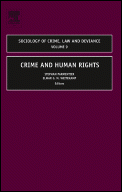 |
JOBARD F., LINHARDT D., 2008, «The check and the guardianship: a comparison of surveillance at an airport and a housing-estate area in the Paris outskirts» ,
Sociology of Crime, Law, and Deviance. Special Issue: Surveillance and Governance: Crime Control and Beyond. Deflem, Matthieu (ed.), 10p.75-100. |
 |
LAURENT B., 2008, «Engaging the public in nanotechnology? Three visions of public engagement» ,
Working paper.
Accès au texte »
Presents a case study on public participation in controversies on nanotechnologies in France, and proposes an analytical typology. |
| |
LEMOINE B., 2008, «Entre fatalisme et héroïsme. La décision politique face au "problème" de la dette publique (2003-2007)» ,
Politix, 21 (82), p.119-145.
Le présent article rend compte de la succession de combinaisons décisionnelles sur le thème de la dette publique, entremêlant expertises et exigences du métier politique. Avant le démarrage de la campagne présidentielle, la publication du rapport Pébereau et son succès médiatique contribuent à installer un consensus parmi les professionnels de la politique sur l’urgence de la réduction de la dette. Les conventions européennes sur les finances publiques sont converties en certitudes : traiter en priorité la « pathologie » de la dette semble inéluctable. Les options alternatives et relativistes sont temporairement ensevelies sous les usages de « l’argument de la dette » dans la compétition électorale. Mais, au moment de tenir ses engagements fiscaux pris en tant que candidat, l’extension préalable du consensus permet au vainqueur des élections d’orchestrer une rupture héroïque vis-à-vis de l’impératif budgétaire.
Fatality and Heroism in Politics. Decision facing the “Problem” of the Public Debt (2003-2007)
This study describes the series of circumstances surrounding the French public debt between 2003 and 2007. The blend of expertise and political professional requirements allows an alternative view of decision making processes in this time period. Prior to the 2007 presidential campaign the successful publication of the Pebereau Report allowed a consensus to be reached among politicians about the urgency of reducing the public debt. The preconceived European view of public finance has been validated; therefore rushing through the pathology of public debt seems unavoidable. Fall-back arrangements and relativist options are temporarily shrouded under politicians’ use of the “debt argument” during the electoral competition. When the time comes to honor his campaign commitment on fiscal concerns, the widespread acceptance of the original consensus offers an opportunity for the recently elected candidate to score a heroic split vis-à-vis the budgetary imperative. |
| |
LEMOINE B., 2008, «Chiffrer les programmes politiques lors de la campagne présidentielle 2007. Heurts et malheurs d’un instrument.» ,
Revue Française de Science Politique, 58 (3), p.403-431.
La controverse autour du chiffrage budgétaire des programmes politiques émerge à la suite des tentatives de l’Institut de l’entreprise visant à installer un dispositif de calcul impartial et extérieur aux partis. Localement utilisé par les journalistes et provisoirement investi par les équipes de campagne, l’instrument de chiffrage tend à neutraliser ses résultats et est proche de jouer le rôle d’arbitre du débat public sur les questions économiques et budgétaires. Échappant en partie à la maîtrise tactique des candidats, la mesure des coûts d’un projet se mue en contrainte plutôt qu’en une source de rendement pour le professionnel de la politique. Les alliances précaires nouées autour du chiffrage « non partisan », qui en faisaient sa force objective, s’effondrent quand l’impératif politique de l’emporter dans la campagne électorale devient trop pressant.
The debate around political program assessment arises in France with the attempts of the Institut de l’entreprise to settle an impartial calculating device outside of the political parties. Occasionally used by journalists and temporary allowed by political parties, the instrument of calculation is near to be neutral and to play the arbitrator role in public debate on budgetary and economics matters. By escaping to politicians’ strategies, cost assessment is more a constraint than a political output. Precarious coalitions tied around impartial figuring, that made its objective strength, collapse when the necessity of election victory becomes too critical. |
 |
LINHARDT D., 2008, «L’État et ses épreuves : éléments d’une sociologie des agencements étatiques» ,
Working paper.
Accès au texte »
Du conflit qui a opposé, au cours des années 1970, la République fédérale d'Allemagne à un ensemble de groupes de guérilla urbaine, ayant recours à des techniques de combat qualifiées de terroristes, on a souvent dit qu'il a été constitutif, pour l'État, d'une épreuve. Ce que vise alors
cette expression, c'est de rendre compte du caractère tendu d'une situation où l'État a été conduit à devoir combattre des ennemis de l'intérieur et les difficultés auxquelles les instances étatiques en charge de mener ce combat ont été confrontées. Ces difficultés ne sont pas seulement
de l'ordre de la force qu'il convient d?opposer aux ennemis de l'État ; elles découlent plusfondamentalement de la contradiction possible entre l'emploi de cette force et les principes démocratiques dont l'État se revendique. Ce texte prend appui sur une description de ce conflit
dans l'optique d'une sociologie pragmatique de l'État. Dans cette perspective, l'idée de sens commun selon laquelle l'État allemand a subi une épreuve lui sert de point de départ pour construire une notion de portée plus générale : la notion d'épreuve d'État ne désigne plus dès lors
seulement une situation tendue pour l'État, mais vise un ensemble de processus quasi-expérimentaux par lesquels l'État devient l'objet d'explicitations collectives dont la prise en compte permet de contribuer à la constitution d'un savoir sociologique sur l'État ; plus exactement,
le texte montre que le fait d'appréhender l'État à travers des épreuves de ce type permet de reprendre à nouveaux frais ce qui apparaît comme le problème sociologique de l'État ? problème auquel, dans une large mesure, la sociologie n'a fait jusqu'à aujourd'hui que se soustraire. |
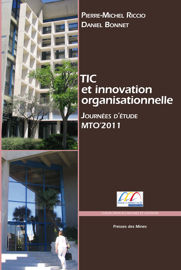 |
MALLARD A., 2008, «Mettre les TIC au travail. Trois visages de l’exploration des usages en entreprise» ,
in BENEDETTO-MEYER M., CHEVALLET R., (ed.), Analyser les usages des TIC dans l'entreprise: quelles démarches, quelles méthodes ?, Paris, Anact-Cigref, p.270-273. |
| |
MALLARD A., 2008, «Le mouvement consumériste: histoire et sociologie» ,
Concurrence et consommation, revue trimestrielle de la DGCCRF, (158), p.45-48. |
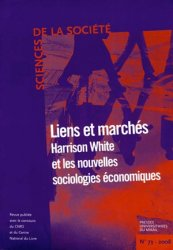 |
MALLARD A., VILLE-EBER S., 2008, «"Je vous laisse ma carte de visite." Analyse d’un artefact relationnel» ,
Sciences de la Société., (73, "Harrison White et les nouvelles sociologies économiques"), p.123-144.
L'article propose une analyse des usages professionnels de la carte de visite, à partir d'une enquête qualitative menée auprès de personnes ayant une activité relationnelle importante dans le cadre de leur métier. Deux types de pratiques sont étudiées: l'échange de cartes, et les pratiques de tri et de classement. L'analyse montre le rôle spécifique que joue cet artefact relationnel dans le passage de l'anonymat à des relations sociales qualifiées dans les univers professionnels et marchands, et met en exergue les diverses formes de calcul sur le lien social dans lesquelles s'intègre son usage. |
| |
MÉADEL C., 2008, «Le quatrième pouvoir ou la quadrature du cercle» ,
in FONSECA BREFE A., GUALDÉ K., (ed.), Pouvoirs. Représenter le pouvoir en France du Moyen-Âge à nos jours, Paris, Somogy, p.187-191. |
| |
MEYER M., 2008, «The dynamics of science in a small country: the case of Luxembourg» ,
Science and Public Policy, 35 (5), p.361-371.
Accès au texte »
This paper examines the scientific landscape in Luxembourg, one of the smallest countries in Europe. Three themes are analysed: the professionalisation of research; diversification and cooperation between the actors; and the Luxembourg Foresight Exercise. The paper argues that in small countries cooperation and collaboration is not necessarily better than in larger countries. It further suggests that, compared to larger countries, small countries seem to share three characteristics: a less mature research infrastructure and science policy; a shorter distance between researchers and science policy; and a need to import expertise. |
| |
MEYER M., 2008, «On the boundaries and partial connections between amateurs and professionals» ,
Museum and Society, 6 (1), p.38-53.
This paper explores the boundaries and partial connections between amateurs and professionals in the context of a museum of natural history. It examines how these boundaries are made and unmade, paying particular attention to their materiality and their heterogeneity. My aim is to draw the temporal, spatial and material profiles of amateurs and professionals. In doing so, the paper focuses on the partial connections between amateurs and professionals and shows that, in a sense, amateurs and professionals belong to more than one but less than many social spaces. I will further argue that professionalisation and amateurisation are not merely historical processes, but also processes that happen in everyday practices in order to demarcate specific identities. While amateurs can be involved in co-producing science with professionals, they still might resist and avoid translation in order to protect their identity as amateur practitioners of science. |
| |
MEYER M., 2008, «On the Market in Europe, part 2» ,
The Chronicle of Higher Education, |
| |
MEYER M., WOODTHORPE K., 2008, «The Material Presence of Absence: A Dialogue Between Museums and Cemeteries» ,
Sociological Research Online, 13 (5).
This is an exploratory paper that aims to stimulate a dialogue between those interested in two particular spaces in society: the museum and the cemetery. Using empirical evidence from two research projects, the paper considers similarities and differences between the two sites, which are further explored through theoretical ideas about the social life of things and the agency of absence. Examining the materiality of these spaces, the paper addresses the role of objects in these two spaces and their respective associations with death, either through the dead themselves or the representation of those who have once lived. In particular, it explores the 'presence of absence' through three key points: its spatiality, its materiality, and its agency. Museums and cemeteries are, in this sense, directly comparable, as both spaces are shaped by and built upon the practice of making the absent present. |
| |
MOGOUTOV A., CAMBROSIO A., KEATING P., MUSTAR P., 2008, «Biomedical innovation at the laboratory, clinical and commercial interface: A new method for mapping research projects, publications and patents in the field of microarrays» ,
Journal of Informetrics, (2), p.341-353.
Accès au texte »
Using the example of microarrays, one of the constitutive technologies of post-genomic biomedicine, this paper introduces a method for analyzing publications, patents and research grants as proxies for “triple-helix interfaces” between university, industry and government activities. Our method creates bridges that allow one to move seamlessly between publication, patent and research project databases that use different fields and formats, and contain different information. These links do not require pre-defined categories in order to search for correspondences between sub-topics or research areas in the three databases. Finally, our results are not restricted to quantitative information but, rather, allow one to carry out qualitative investigations of the content of research activities. Our approach draws on a combination of text-mining and network analysis/mapping software packages. |
| |
MUNIESA F., 2008, «Attachment and detachment in the economy» ,
in REDMAN P., (ed.), Attachment: Sociology and Social Worlds, Manchester, Manchester University Press, p.111-141.
Accès au texte » |
| |
MUNIESA F., 2008, «Trading-room telephones and the identification of counterparts» ,
in PINCH T., SWEDBERG R., (ed.), Living in a material world: economic sociology meets science and technology studies, Cambridge (Massachusetts), MIT Press, p.291-313.
Accès au texte » |
 |
MUNIESA F., CALLON M., 2008, «La performativité des sciences économiques» ,
Working paper.
Accès au texte »
Propose quelques développements théoriques sur le thème de la performativité des sciences économiques.
Provides some theoretical developments on the topic of the performativity of economics. |
| |
MUSIANI F., 2008, «War, Security and Humanitarian Intervention in the United Nations Reform Agenda» ,
Peace & Conflict Review, 3
Accès au texte »
Current and recent events are exposing open ends in the body of international law concerned with the use of force – as well as the deficiencies of the United Nations Security Council to respond to “new” security threats or effectively counter unilateralism.
This paper analyses the extent to which the recent proposals for United Nations reform have satisfactorily addressed the three following areas: the use of force in self-defence; the role of the Security Council in the collective security system; and finally, the newly developed concept of a “responsibility to protect” as the foundation of humanitarian intervention. Are changes in the legal framework regulating the use of force needed, and acknowledged in the UN reform agenda? Or are the existing provisions of the Charter sufficient to address the full range of threats to international peace and security?
The attempt to answer these questions will include an analysis of current and recent State practices, relevant international instruments, and proposals made in the context of UN reform before and during 2005 World Summit. |
| |
MUSIANI F., 2008, «Olympian China: Meet the Largest and the Most Censored Pool of Internet Users in the World» ,
Peace & Conflict Monitor, May 2008
Accès au texte » |
| |
MUSTAR P., WRIGHT M., CLARYSSE B., 2008, «University spin-offs firms: lessons from the ten years of experience in Europe» ,
Science and Public Policy, 35 (2), p.67-80. |
| |
PINA-STRANGER A., VALDIVIESO F., 2008, «Análisis de redes y estructuras sociales de la cooperación en dos actividades de producción: la industria biotecnológica y la industria vitícola» ,
Revista Coloquios Echfrancia, (2), p.65-84.
Plusieurs auteurs ont montré l’importance des relations et des structures sociales dans les activités de production. La complexité croissante des milieux industriels génère de nouvelles contraintes limitant la routinisation du travail. Les acteurs sont ainsi encouragés à modifier constamment leurs pratiques et à concevoir des nouveaux produits et services. Dans ce contexte, chaque acteur se voit obligé à solliciter, observer, imiter et contrôler les autres. L’étude de l’action collective liée à ce type de comportements s’est articulée autour de la problématique de la coopération entre concurrents. Dans ce cadre nous présentons deux recherches originales : une étude sur les entrepreneurs scientifiques de l’industrie française de la biotechnologie et une autre sur des viticulteurs au sud de la France. Dans les deux cas nous avons cartographié les relations entre les acteurs et les ressources qu’ils échangent. Ces systèmes d’échange ont été comparés dans trois niveaux d’analyse : structurel, relationnel et individuel. Les résultats montrent des caractéristiques partagées concernant les structures et normes d’échange dans les deux secteurs d’activité. Ceci nous amène à proposer la méthode d’analyse de réseaux sociaux comme une approche favorisant la comparaison du rôle des structures et des relations sociales dans différentes industries.
Diversos autores han mostrado la importancia de las relaciones y estructuras sociales en las actividades de producción. En contextos industriales cada vez más complejos, estas actividades están sujetas a nuevos requerimientos que limitan su “rutinización”, obligando a los actores a modificar de manera constante sus prácticas y a crear nuevos productos. Para lograrlo, los participantes de una industria se solicitan, se observan, se imitan y se controlan unos a otros. El estudio de la acción colectiva que resulta de estos comportamientos se ha desarrollado en torno a la problemática de la cooperación entre competidores. En este marco se integran dos investigaciones originales, una sobre empresarios científicos en la industria biotecnológica y otra sobre agricultores en la industria vitícola, en las que se han cartografiado las relaciones y los recursos intercambiados por los actores. Estos sistemas de intercambio fueron comparados en tres niveles de análisis: estructural, relacional e individual. Los resultados muestran que, pese a las diferencias sectoriales, las estructuras y normas de intercambio de estas dos industrias comparten ciertas características. Así, podemos sugerir que el método de análisis de redes sociales permite comparar el rol de las estructuras y relaciones sociales en industrias de diferente tipo. |
| |
PONTILLE D., 2008, «Écologies de la signature en science» ,
Sociétés & Représentations, (25), p.137-156.
Bien souvent, signer un article scientifique est considéré comme un geste semblable à celui qui vaut dans le monde littéraire : le chercheur est la personne qui formule une idée, réalise le travail, écrit et signe tout naturellement son texte. Les analyses de la signature en science restent attachées à cette conception individualiste, même face à des situations de cosignature : chaque signataire est conçu à la fois comme détenteur d’une parcelle du travail et comme pleinement responsable de la totalité de l’article. Ce texte examine des situations où la cosignature est la règle et spécifie différentes façons de signer à plusieurs. Il montre qu’une vision individualiste néglige le rôle décisif de l’écologie du travail scientifique. La signature est un acte qui s’articule à des configurations sociales, cognitives et matérielles de l’activité scientifique.
Scientific authorship is generally considered as something similar to the authorship of literature texts: the scientist is the person who formulates an idea, does the work, writes the paper and naturally signs it. Previous studies of scientific authorship endorse this individualistic conception, even in multiple authorship situations: each name listed in an article’s byline is conceived both as a holder of a part of the work and as fully responsible for the entire text. This article examines situations that are characterized by large-scale multiauthorship and specifies different patterns of name ordering. It shows that an individualistic perspective strongly neglects the decisive role of the ecology of work. Authorship is an act associated with specific social, cognitive and material configurations of the scientific practice. |
| |
RABEHARISOA V., 2008, «Book Review. A journey in America’s biopolitical landscape» ,
BioSocieties, 3 (2), p.227-233. |
| |
RABEHARISOA V., CALLON M., PATERSON F., VERGNAUD F., 2008, «Mapping and Analyzing Patient Organnization Movements on Rare Diseases.» ,
Convention ANR-05-061-01. |
| |
RÉMY C., 2008, «Compte-rendu. Sophie Houdart, La cour des miracles. Ethnologie d’un laboratoire japonais, Paris, CNRS, 2007, 351p.» ,
Revue d'anthropologie des connaissances, 2 (3), p.541-543. |
| |
RÉMY C., 2008, «Silenzio sull’uccisione» ,
Etnografia e Ricerca Qualitativa, (2), p.277-295. |
| |
RÉMY C., 2008, «L’animal cobaye : un corps sans intériorité ?» ,
Le Journal des anthropologues., (112-113), p.367-384.
L’article soumet l’idée d’une représentation occidentale « naturaliste » des animaux – à savoir des corps sans intériorité – à l’épreuve du déroulement d’une activité concrète, l’expérimentation animale. Cette dernière est apparue au XIXe siècle et s’est construite sur l’idée d’une dichotomie corps/esprit renvoyant les animaux à une pure corporéité. À partir d’une enquête de terrain dans un laboratoire de physiologie animale appliquée à l’homme, il s’agit de suivre le traitement concret du corps-instrument des cobayes. Le « naturalisme » n’apparaît ainsi pas tenable en pratique. Bien au contraire, les acteurs, au-delà de l’analogie corporelle entre l’homme et les animaux qui est au cœur du principe de l’expérimentation animale, décrivent les cobayes comme des sujets victimes d’un nécessaire « sacrifice ».
This article puts the idea of a Western « naturalist » representation of animals – namely of bodies without interiority – to the test by examining the development of a concrete activity: animal experimentation. The latter appeared in the 19th century and established itself on the idea of a body/mind dichotomy that relegated animals to the realm of pure bodiness. On the basis of field research in a laboratory of animal physiology applied to humans, the article follows the concrete treatment of the body-instrument of guinea-pigs. « Naturalism » does not appear to be tenable in practice. On the contrary, going beyond the bodily analogy between humans and animals that is at the heart of the principle of animal experimentation, actors describe the guinea-pigs as subjects and victims of a necessary « sacrifice ». |
 |
ROUTELOUS C., 2008, «La démocratie sanitaire à l’épreuve des pratiques médicales : sociologie d’un modèle participatif en médecine» ,
Thèse de doctorat, Paris, École Nationale Supérieure des Mines de Paris.
Accès au texte »
De nombreux dispositifs, dont la loi du 4 mars 2002, promeuvent une figure nouvelle du malade. Une figure d'individu autonome et décisionnaire qui s'avère difficile à mobiliser ou à comprendre dans un espace relationnel où l'égalité statutaire des individus n'est pas nécessairement traduite par une situation de coopération symétrique, « égale » au sens d'un même degré de « pouvoir » dans l'activité médicale. Pour cela nous avons cherché à comprendre l'évolution que connaît la médecine, sur les terrains contrastés de la médecine de ville et de la médecine hospitalière. Dans la première partie de notre travail, nous avons voulu reconstituer les problèmes, les ressources et les formes d'engagement qui ont conduit à faire évoluer la figure du « patient » et ses relations avec le monde médical. Nous avons analysé comment le travail d'émancipation des malades et de désenclavement de la pratique médicale s'agrègent dans un même modèle participatif. Dans la seconde partie nous avons interrogé l'appropriation, la légitimité et l'opérationnalité d'un modèle participatif fondé sur les droits des malades. Nous avons mis à jour l'hybridation de la qualité et du droit qui favorise l'inscription du droit des malades dans les pratiques. Notre troisième partie nous a amené à réaliser une approche centrée sur l'individu, sur l'espace de participation dont il bénéficie dans le cadre de la prise en charge hospitalière et sur la vulnérabilité du statut de sujet de droit dans le travail médical ordinaire. Cela nous a permis de mettre à jour une forme d'autonomie réactive face à l'institution hospitalière, bien que partielle et inégalement partagée. Dans la dernière partie relative à la médecine de ville, nous avons interrogé la qualification du statut des personnes au sein de la pratique et s'il y a lieu d'envisager un renouvellement de la pratique médicale par rapport au modèle paternaliste. Nous avons vu que le modèle participatif s'immisce fortement dans les formes de régulations médicales traditionnelles ; il ne se substitue pas au modèle paternaliste mais coexiste à ses côtés. A l'issue de cette thèse, la promotion des usagers dans le système de santé n'apparaît pas comme un mouvement homogène de « démocratie sanitaire », mais comme une diffusion des pratiques basées à la fois sur une conception renouvelée du statut et du champ d'actions des personnes malades et sur un modèle participatif de relation malade-médecin. L'observation des faits, telle que nous l'avons présentée, indique que l'institution médicale n'a pas évolué au même rythme que les discours. Il faut relever la fragilité des évolutions observables. La disparité des pratiques demeure considérable. Toutefois, le modèle participatif et la requalification du statut de l'usager pour partiels qu'ils soient dans les pratiques, permettent une coopération davantage symétrique.
In many policies, among which the law passed on March 2nd 2002, a new figure of the sick person is promoted. This figure of a self-sufficient decision-making individual proves difficult to call up in a space where relationships, although based on an equality of status, do not necessarily find their expression through situations in which symmetrical cooperation exists. For there is not equality, in terms of each individual having the same degree de power in a doctor vs patient relationship. It is in this particular framework that we have examined the evolutions of medicine, in the much contrasted fields of hospital care on the one hand and ambulatory care (general practitioners and specialists who work on their own) on the other hand. In the first part of this thesis, we've aimed at rebuilding the problems, resources and forms of commitment that made the figure of the patient evolve as well as his-her relationship to medical doctors. We've analysed how both the emancipation process of the Sick and the decompartmentalization of medical practise incorporate into a same participatory pattern. In the second part, we've examined the way in which a participatory pattern, based on the rights of the Sick, can be taken into account, become legitimate and effective. We have brought into light the hibridization of quality and law that favour the implementation of these rights. The third part has brought us to carry out an individual-centered approach, about the extent to which the patient can benefit from participation in the framework of hospital care. We've searched about the vulnerability of the status of the “subject of rights” through ordinary medical practise. It has enabled us to bring into light a form of self-sufficiency as a reaction to the hospital institution, although in a partial and unevenly shared way. The last part is dedicated to liberal medicine. In this part we've examined the qualification of the status of people when looking at medical practise, trying to find out whether this qualification can renew practise as compared to the paternalistic pattern. We have been able to see that the participatory pattern deeply interferes into the forms of traditional medical regulations. It does not substitute to the paternalistic model but does coexist along with it. As a conclusion to this thesis, the promotion of users into the health system does not appear as a homogeneous move toward “sanitary democracy”. It results of a dissemination of practises based both on a renewed conception of the status of the sick people and on a participatory model of the patient-doctor relationship. Looking at facts, as we've presented them, shows that the health institution did not change at the same pace than speeches. One must point out the fragility of observable changes. The disparity in practises remains significant. However the participatory pattern as well as the re qualification of the status of users, though partial in fact, allow a more symmetrical cooperation. |
| |
TIRONI M., 2008, «Expectativas de equidad y ciudadanía social: Desafíos de legitimación e integración de la democracia chilena.» ,
in DE CEA M., DIAZ P., KERNEUR G., (ed.), CHILE : ¿De país modelado a país modelo? Una mirada desde lo político, lo social y la economía, Santiago, Lom Ediciones, p.129-155. |
, Do economists make markets 2007.jpg) |
MACKENZIE, D., MUNIESA, F., SIU, L., 2007, Do economists make markets? On the performativity of economics ,
Princeton, Princeton University Press.
Accès au texte »
Around the globe, economists affect markets by saying what markets are doing, what they should do, and what they will do. Increasingly, experimental economists are even designing real-world markets. But, despite these facts, economists are still largely thought of as scientists who merely observe markets from the outside, like astronomers look at the stars. This edited volume boldly challenges this view. It is the first book dedicated to the controversial question of whether economics is performative -- of whether, in some cases, economics actually produces the phenomena it analyzes. The book's case studies -- including financial derivatives markets, telecommunications-frequency auctions, and individual transferable quotas in fisheries--give substance to the notion of the performativity of economics in an accessible, nontechnical way. Some chapters defend the notion; others attack it vigorously. The book ends with an extended chapter in which Callon, Michel, the idea's main formulator, reflects upon the debate and asks what it means to say economics is performative. |
, Market Devices.jpg) |
CALLON, M., MILLO, Y., MUNIESA, F., 2007, Market devices ,
Oxford, Blackwell.
Accès au texte »
This edited volume presents a set of novel contributions exploring the sociology of 'market devices', i.e. the analysis of the various sorts of technical instruments that intervene in the shaping and reshaping of markets. |
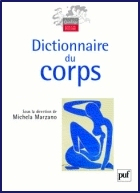 |
AKRICH M., 2007, «Accouchement» ,
in MARZANO M., (ed.), Dictionnaire du corps, Paris, Presses Universaitaires de France, p.8-12. |
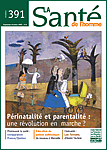 |
AKRICH M., 2007, «Accouchement à domicile ou à l’hôpital ? Comparaison France/Pays-Bas» ,
La santé de l'homme, p.45-47.
Accès au texte »
Faut-il réhabiliter en France l’accouchement à domicile pour les grossesses sans risques ? Développer les « maisons de naissance » où les sages femmes ont le premier rôle ? Les Pays-Bas l’ont fait, un accouchement sur trois se déroule à la maison, dans des conditions très cadrées. Cet article analyse le système néerlandais et conclut que la France devrait s’en inspirer. Ce qui passe notamment par une reconnaissance des compétences des sages-femmes comme « accoucheuses naturelles » pour les grossesses sans risques. Et remet en cause les prérogatives des gynécologues obstétriciens. Le débat est ouvert. |
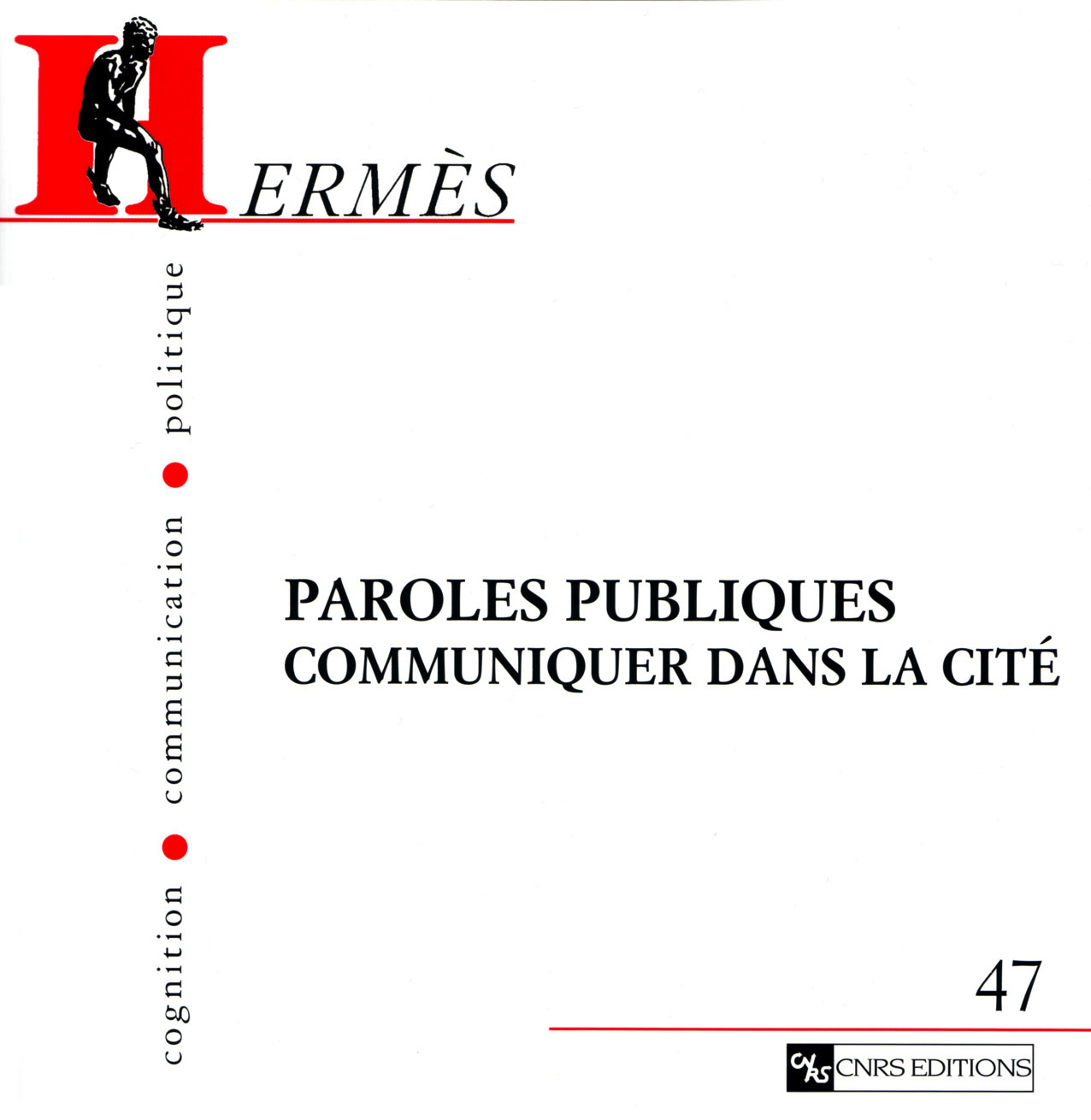 |
AKRICH M., MÉADEL C., 2007, «De l’interaction à l’engagement : les collectifs électroniques, nouveaux militants de la santé» ,
Hermès, (47), p.145-153.
Accès au texte »
Les collectifs constitués sur l’internet interviennent-ils dans la cité ? Existe-t-il des mécanismes qui permettent de passer des interactions électroniques à des interventions perçues comme émanant d’un groupe ? En prenant comme terrain d’étude des listes de discussion par mail sur des thématiques liées à la santé et au handicap, on verra émerger trois niveaux d’action collective : les actions individuelles qui visent à des formes de reconnaissance collective ; l’agrégation d’actions individuelles, en particulier à travers des outils de représentation propres à chaque liste ; la structuration en collectifs actifs dans l’espace politique.. |
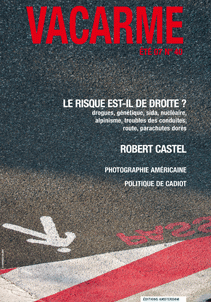 |
BARTHE Y., 2007, «Le politique et l’incertain (entretien avec Fabien Jobard)» ,
Vacarme, (40).
Accès au texte »
L’industrie nucléaire est comme hantée par ses déchets. Car si le nucléaire relève d’une économie du risque, ses déchets la font basculer dans une économie de l’incertitude : la durée de vie et de nuisance de ces matériaux étant presque infinie, leur danger devient alors incommensurable, projeté dans un horizon de temps sans limite. Traditionnellement, le politique arrête une décision, fixe les calendriers, domestique l’incertitude. Mais, face à l’incertitude, le politique devient subitement un jeu de non-décision, un art de la suspension. Récit de la mise en politique de l’incertitude. |
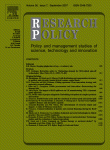 |
BELL M., CALLON M., GRUPP H., KODAMA F., KUHLMANN S., MARTIN B., POWELL W., THOMKE S., VON TUNZELMANN N., 2007, «Editorial» ,
Research Policy, 36 (1), p.1-2.
Accès au texte »
It is now over 35 years since Research Policy (RP) came into existence. As the field it covers has grown in size, so has RP. At the start of the 1970s, the journal consisted of 4 issues a year, each of 100 pages. Today, we publish 10 issues a year, each of approximately 200 pages. More importantly, the standing of RP has improved very considerably. The journal scores remarkably well in term of its ‘impact factor’. Based on citation patterns, Thomson Scientific (formerly Thomson-ISI) includes RP in the ‘management’ field, where it ranks 8th in the latest list of the world's top 70 management journals. This is a very creditable achievement, not least because the journals ranked above it are essentially ‘main-stream’ journals in management science, administrative science and organisation science—much larger disciplines with far greater numbers of potential ‘citers’ for their papers. |
| |
BENVEGNU N., 2007, «Des éoliennes en atrébatie : les TIC dans la boîte à outils de la démocratie dialogique» ,
Hermès, (47), p.29-40. |
| |
BOBOC A., DHALEINE L., MALLARD A., 2007, «Travailler, se déplacer et communiquer : premiers résultats d’enquête» ,
Réseaux, 24 (140), p.133-158.
Accès au texte »
S’appuyant sur une enquête quantitative menée en France auprès des actifs occupés cet article a comme point d’entrée les lieux de travail. Il dresse un panorama des configurations spécifiques permettant de mieux comprendre l’articulation entre travail et entreprise, à domicile et en déplacement et nuance ainsi la notion de télétravail. La multiplication des lieux de travail à laquelle l’on assiste est mise en lien avec des nouveaux arrangements entre les sphères privées et professionnelles, notamment au niveau des usages du téléphone mobile, ainsi que du téléphone fixe et de l’ordinateur du domicile. La frontière entre le privé et le professionnel est dépeinte de cette façon dans un nouvel éclairage grâce à ce rapprochement entre les rapports à la mobilité, les identités professionnelles et les usages mixtes des TIC.
This article, which draws on a quantitative survey of a sample of the working population in France, takes working environments as a starting point. It presents an overview of specific configurations, which helps to explain the articulation between work and the business enterprise, both at home and in mobile situations. In this way the concept of telework is qualified. The proliferation of workplaces is related to new arrangements between the private and professional spheres, especially regarding uses of the mobile phone, the fixed phone and the home computer. The boundary between private and professional is thus described in a new light by bringing together relations with mobility, professional identities, and mixed uses of ICT. |
| |
CALLON M., 2007, «Pharmaceutical Reason: Knowledge and Value in Global Psychiatry. Compre-rendu de l’ouvrage de Andrew Lakoff» ,
Contemporary Sociology, 36 (3), p.278-279. |
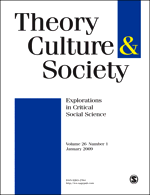 |
CALLON M., 2007, «An essay on the growing contribution of economic markets to the proliferation of the social» ,
Theory, Culture & Society, 24p.139-163. |
| |
CALLON M., 2007, «L’Egypte et les experts. Compte-rendu du livre de Tim Mitchell, Rule of Experts» ,
Gérer & Comprendre, (1er trimestre 2007), p.83-97.
Callon, Michel rend compte du livre décapant de Tim Mitchell, Rule of Experts. Il faut avouer qu’à sa lecture, on ne peut que changer son regard sur les politiques de développement, sur les sciences sociales en général, sur l’histoire postcoloniale de l’Egypte, sur les experts des organisations internationales…Tout est lié, rien n’est neutre. Ainsi, le moustique est en fait plus dangereux que des tanks, le système de propriété foncière est une machine de guerre, la cartographie crée l’économie, l’anthropologie est manipulée par la CIA, le « paysan égyptien » est une pure invention destinée à justifier la mission de l’Occident en Orient. Pour avoir une plus juste vision de la réalité, il faut désenclaver les sciences sociales, rapprocher le monde naturel du monde social et le monde technique du monde politique. |
| |
CALLON M., 2007, «What does it mean to say that economics is performative?» ,
in MACKENZIE D., MUNIESA F., SIU L., (ed.), Do economists make markets? On the performativity of economics, Princeton, Princeton University Press, p.311-357.
Accès au texte »
This paper d iscusses the performativity of economics and proposes theoretical directions to study it from a sociological perspective. The thesis is that both the natural and life sciences, along with the social sciences, contribute towards enacting the realities that they describe (Law and Urry 2004). The concept of performativity affords a way out of the apparent paradox of this statement. Without performativity we would be destined to sharing Faulhaber and Baumol's quandary. We would have no alternative but to acknowledge economist-describers' point of view. We would have to settle for a comfortable but rather boring life offered by academic ivory towers. |
 |
CALLON M., 2007, «L’innovation sociale. Quand l’économie redevient politique» ,
in KLEIN J., HARRISSON D., (ed.), L'innovation sociale. Emergence et effets sur la transformation des sociétés, Québec, Presses de l'Université du Québec, p.17-42.
La première partie de l’ouvrage pose des jalons théoriques nécessaires pour aborder les innovations socials comme facteur de changement social et pour les situer dans leur contexte économique et technologique. Abordant les facteurs qui contribuent à la démocratisation de l’innovation dans des domaines précis, les auteurs proposent des cadrages pour repérer les comportements innovateurs en lien avec le marché, l’économie sociale, les politiques de développement et les acteurs institués ou déviants. Un nouveau régime d’innovation qui combine les innovations sociales, techniques et économiques (Callon) et qui construit des interphases entre le développement économique et le développement social (Lévesque) se met en œuvre, où l’effet transformateur des innovations sociales se présente sur plusieurs faces et à plusieurs échelles (Nussbaumer et Moulaert) et met en relation l’acteur public, la société civile et le marché (Laville). Au centre de la réflexion se trouve le défi de la démocratisation de la société, voire de la transformation des organisations et de leur environnement institutionnel (Bouchard). |
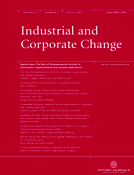 |
CLARYSSE B., WRIGHT M., LOCKETT A., MUSTAR P., KNOCKAERT M., 2007, «Academic spin-offs, formal technology transfer and capital raising» ,
Industrial Corporate Change, 16 (4), p.609-640.
In this article we examine the influence of formal technology transfer from a public research organization (PRO) on the amount of capital a spin-off raises at start-up and the increase in capital post start-up. We examine these relationships using a unique sample of 135 spin-offs from PROs across five European countries. Our findings suggest that spin-offs with formal technology transfer start with a larger amount of capital but subsequently do not raise more capital than spin-offs without formal technology transfer. |
| |
CLASTRES P., MÉADEL C., 2007, «Quelle fabrique du sport ? Quelques éléments introductifs» ,
Le Temps des Médias, (9), p.6-18. |
| |
CLASTRES P., MÉADEL C., 2007, «Pierre Albaladejo. Propos recueillis par Patrick Clastres et Méadel, Cécile» ,
Le Temps des Médias, (9), p.201-208. |
| |
CLASTRES P., MÉADEL C., 2007, «Jean Lacouture. Propos recueillis par Patrick Clastres et Méadel, Cécile» ,
Le Temps des Médias, (9), p.209-215. |
| |
DENIS J., 2007, «La prescription ordinaire. Circulation et énonciation des règles au travail» ,
Sociologie du Travail, 49 (4), p.496-513.
Accès au texte » |
| |
FNR., VDI., Z_P., MEYER M., 2007, FNR Foresight. Thinking for the Future Today ,
Luxembourg, FNR. |
 |
GRANJON F., COMBES C., 2007, «La numérimorphose des pratiques de consommation musicale. Le cas de jeunes amateurs» ,
Réseaux, (145-146), p.291-334.
Nous voudrions livrer ici une première analyse des évolutions qui rebattent depuis quelques années les cartes de la consommation des contenus musicaux. Les TIC participent à la généralisation de l'accès aux œuvres culturelles ainsi qu'à la diffusion et à la circulation élargies des contenus culturels. Elles conduisent aussi à une réorganisation des pratiques des amateurs, de leurs relations aux œuvres et aux nouveaux objets par lesquelles elles passent pour exister. Nous nous proposons donc d'explorer quelques uns des attendus d'une hypothèse que nous nommerons provisoirement numérimorphose. Nous inspirant des travaux menés sur la discomorphose, nous voulons détailler ce que les relations de l'amateur à la musique doivent particulièrement, aujourd'hui, à la numérisation du signe sonore, à la dématérialisation des supports et à la multiplication des équipements.
In this article the authors analyse recent trends that are changing the consumption patterns of music content. ICTs are contributing towards the generalization of access to cultural works, as well as to the wider diffusion and circulation of cultural content. They also trigger a reorganization of music lovers' practices and of their relations with cultural works and with the new objects through which they exist. Here the authors explore some of the arguments of a hypothesis that they call digitamorphosis. Drawing their inspiration from studies on discomorphosis, their aim is to identify what today's music lover owes in particular to the digitization of sound, the dematerialization of music media, and the diversification of equipment. |
 |
HENNION A., 2007, «La musique s’écoute-t-elle ?» ,
in LE QUÉAU P., (ed.), Marseille 1985-Grenoble 2005. 20 ans de sociologie de l'art : bilan et perspectives., Paris, L'Harmattan, p.291-301.
De diverses façons, les séances ont donc tenté de mettre à la question le fait même d’aimer, d’écouter, d’apprécier, en analysant les modalités de l’écoute. Non pas une écoute figée, isolée de son contexte, soumise à la seule loi des œuvres, prisonnière de l’injonction que lui imposent les disciplines musicales et musicologiques (à l’image de celle que développe le solfège, ou de celle qu’exerce le « commentaire d’œuvres » au conservatoire, ou encore de celle qu’ont entrepris de mesurer expérimentalement les psychologues de la musique). Mais l’écoute ainsi comprise comme performance réalisée en situation, l’écoute dotée de son poids historique, de l’entraînement personnel et collectif des corps et de l’attention qu’elle suppose et favorise, de son appareillage technique et social : autrement dit, l’écoute comme compétence collective, historique, instrumentée, aboutissant à une disposition nouvelle, celle de l’amateur de musique, disposition qui en retour a redéfini dans ses moindres détails ce qu’est la musique. Car la même question peut se formuler dans l’autre sens : comment une analyse historique ou sociologique peut-elle intégrer les caractères, la présence et les effets de la musique ? |
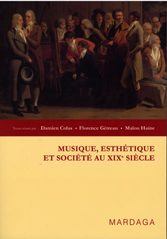 |
HENNION A., 2007, «Etudier le modernisme ?» ,
in COLAS D., GÉTREAU F., HAINE M., (ed.), Musique, esthétique et société. Liber amicorum Joël-Marie Fauquet, Wavre, Mardaga, p.19-31.
A propos du modernisme, il n’est pas sûr qu’il soit possible d'en rendre compte sans tomber dans l'un ou l'autre des pièges qu'il nous tend, à tous les détours du chemin, à cause de son caractère double : il est à la fois objet sur lequel nous pouvons nous pencher, et espace dans lequel nous avons tous été formés. L’idée était de mettre en avant ces difficultés, les chausse-trappes qui semblent joncher ce terrain miné, en les exagérant, afin de mieux voir, peut-être, l’un des aspects du problème : le grand écart qu’il oblige le chercheur à faire. (…) Y a-t-il un lieu d’où pourrait s’écrire une histoire du modernisme qui ne soit pas en même temps partie prenante du combat qu’il impose à tous ? Et d’abord, est-il seulement possible de poser un diagnostic comme celui que, par provocation, j’ai donné comme allant de soi, en introduction ? Comment, techniquement, et au nom de quoi, esthétiquement, décider comme je l’ai fait sans vergogne, qu’une exigence est intérieure, « sincère », authentique, ou qu’elle n’est qu’obéissance inconsciente à une norme extérieure, d’autant plus implacable qu’elle se présente comme une exigence interne ?... Le problème est ardu, mais central, c’est celui de la valeur, et du droit différentiel que les disciplines s’accordent de se prononcer sur cette question. |
| |
HENNION A., 2007, «Public de l’oeuvre, oeuvre du public ?» ,
Nunc, (14), p.69-71. |
| |
HENNION A., 2007, «A la recherche de l’objet perdu ... ?» ,
in GIREL S., PROUST S., (ed.), Les usages de la sociologie de l'art : constructions théoriques, cas pratiques. 2e congrès de l'association française de sociologie 2006., Paris, L'Harmattan, p.25-42. |
| |
HENNION A., 2007, «Ce que ne disent pas les chiffres ... Vers une pragmatique du goût» ,
in ASSOULY O., (ed.), Goûts à vendre. Essais sur la captation esthétique, Paris, IFM/Regard, p.95-116. |
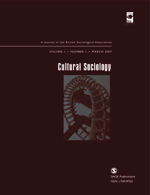 |
HENNION A., 2007, «Those Things That Hold Us Together: Taste and Sociology» ,
Cultural Sociology, 1 (1), p.97-114.
The idea of reflexivity has much to offer to the analysis of taste - but reflexivity in its ancient sense, a form neither active nor passive, pointing to an originary state where things, persons, and events have just arrived, with no action, subject or objects yet decided. Objects of taste are not present, inert, available and at our service.They give themselves up, they shy away, they impose themselves. ‘Amateurs’ do not believe things have taste. On the contrary, they make themselves detect them, through a continuous elaboration of procedures that put taste to the test. Understood as reflexive work performed on one’s own attachments, the amateur’s taste is no longer considered (as with so-called ‘critical’ sociology) an arbitrary election which has to be explained by hidden social causes. Rather, it is a collective technique, whose analysis helps us to understand the ways we make ourselves sensitized, to things, to ourselves, to situations and to moments, while simultaneously controlling how those feelings might be shared and discussed with others. |
 |
HENNION A., 2007, La passion musicale ,
Paris, Métailié. |
 |
HENNION A., 2007, «Réflexivités. Le sociologue et le goût» ,
in GAUDEZ F., (ed.), Sociologie des arts, sociologie des sciences. Actes du colloque international de Toulouse (2004)., Paris, L'Harmattan, p.269-278. |
| |
HENNION A., TEIL G., BARREY S., BLANCHEMANCHE S., FLOUX P., 2007, «Des vins sans pesticides ? Une analyse de la prescription à la consommation. Tome 1 Synthèse - Tome 2 Le bio, un double principe de précaution - Tome 3 L’agriculture raisonnée - Tome 4 Les vins du terroir - Tome 5 Annexes» ,
MEDAD- CONVENTION RECHERCHE N° CV04000028. |
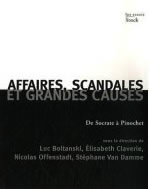 |
LINHARDT D., 2007, «Épreuve terroriste et forme affaire : Allemagne, 1964-1982» ,
in BOLTANSKI L., CLAVERIE E., OFFENSTADT N., VAN DAMME S., (ed.), Affaires, scandales et grandes causes. De Socrate à Pinochet, Paris, Plon, p.307-327. |
| |
LINHARDT D., 2007, «Terrorismo e democrazia nella Repubblica Federale tedesca (1964-1983). Sociologia pragmatica di una prova per lo stato» ,
in VITALE T., (ed.), Alla prova della violenza. Introduzione alla sociologia pragmatica dello stato, Roma, Editori Riuniti, |
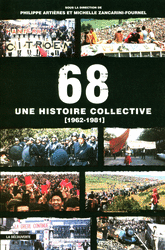 |
LINHARDT D., 2007, «La Fraction armée rouge et les autres : la guérilla urbaine en RFA» ,
in ARTIÈRES P., ZANCARINI-FOURNEL M., (ed.), 68, une histoire collective, 1962-1981, Paris, La Découverte, p.470-476. |
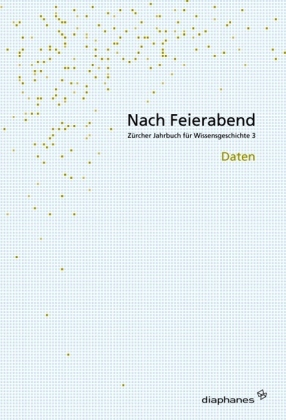 |
LINHARDT D., 2007, «Die “informationnelle Frage”. Elemente einer politischen Soziologie der Polizei- und Bevölkerungsregister in Deutschland und Frankreich (1970er und 1980er Jahre)» ,
Nach Feierabend. Zürcher Jahrbuch für Wissensgeschichte, 3p.99-116.. |
| |
LINHARDT D., 2007, «Terrorisme et démocratie en République Fédérale d’Allemagne (1964-1982). Essai de sociologie pragmatique de l’étatisation» ,
in VITALE T., (ed.), Alla prova della violenza, Roma, Editori Riuniti, |
| |
MACKENZIE D., MUNIESA F., SIU L., 2007, «Introduction» ,
in MACKENZIE D., MUNIESA F., SIU L., (ed.), Do economists make markets? On the performativity of economics, Princeton, Princeton University Press, p.1-19.
Accès au texte » |
| |
MALLARD A., 2007, «Une articulation forte entre innovation et usage est-elle possible ? Quelques propositions autour du cas des assemblages numériques» ,
Communication au colloque "Expérimenter, éprouver, assembler" organisé à l'occasion des 40 ans du CSI., 27-28 septembre 2007.
Accès au texte » |
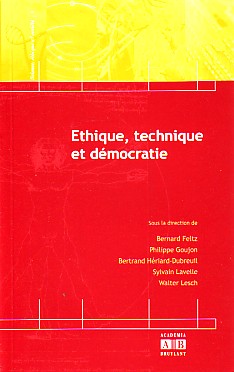 |
MALLARD A., 2007, «Des normes pour gérer la complexité technique en régime démocratique: analyse de quelques tensions» ,
in FELTZ B., GOUJON P., HERIARD-DUBREUIL B., LAVELLE S., LESCH W., (ed.), Ethique, Technique et Démocratie, Louvain La Neuve, Academia-Bruylant, p.223-233. |
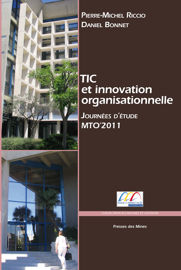 |
MALLARD A., 2007, «La pluralité des rapports au marché dans les Très Petites Entreprises: une approche typologique» ,
Economie et statistique., (407), p.51-71.
La capacité des très petites entreprises (TPE) à dynamiser le tissu économique fait aujourd’hui l’objet d’un certain nombre d’attentes. Les chercheurs, tout comme les pouvoirs publics, mettent l’accent sur le rôle que peuvent jouer des petites structures, dans une économie qui repose de plus en plus sur la fl exibilité et exige une adaptation permanente aux évolutions fl uctuantes des marchés. Les TPE déploient des formes de rapport au marché relativement diversifi ées, à l’image de ce qu’elles sont. Une enquête statistique réalisée auprès de 818 entreprises et indépendants permet de mettre en évidence huit classes. Celles-ci se caractérisent par l’inscription de l’activité dans des territoires géographiques, la forme de la relation au client, les modalités de création et l’entretien des liens marchands ainsi que la perception du rôle de la concurrence. Ainsi, les deux premières classes se rejoignent sur le fait de recevoir leurs clients dans un espace ouvert sur l’extérieur alors que les deux suivantes s’appuient sur le bouche à oreille et les réseaux informels. Les deux suivantes opèrent sur une clientèle plus large (nationale ou internationale) tandis que les deux dernières classes semblent en retrait du marché, l’une en raison d’un nombre très restreint de clients et l’autre par une sorte d’absence de réfl exion sur ces sujets. Cette typologie est utilisée pour distinguer les usages d’internet
mis en oeuvre par les TPE (du point de vue de la communication, du développement des sites et de la recherche de partenaires), ainsi que les formes de proximité qu’elles peuvent mobiliser dans l’action économique. |
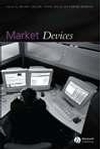 |
MALLARD A., 2007, «Performance testing: dissection of a consumerist experiment» ,
in CALLON M., MILLO Y., MUNIESA F., (ed.), Market devices, Oxford, Blackwell Publishing, p.152-172. |
| |
MALLARD A., VIGILANTE M., 2007, «When "the user" is an organisation: on the integration of user needs and uses in the design of a corporate cooperative tool» ,
23re EGOS Colloquium, 5-7 July 2007. |
 |
MARCHAL E., MELLET K., RIEUCAU G., 2007, «Job Board Toolkits: Internet Matchmaking and Changes in Job Advertisements» ,
Human Relations, 60 (7), p.1091-1113.
This article examines the role of internet-based labour market intermediaries in coordinating job seeker/employer interactions. A twofold analysis examines on the one hand the matchmaking tools determining applicants' access to job ads, and on the other, the content of ads posted on the Web. Observations reveal that the information available to applicants is subject to a high degree of filtering achieved through the use of pre-defined lists, keywords or more frequently, input fields. A comparative analysis of job offers posted on the internet with those posted in newspapers shows that search engine toolkits have a considerable impact on ad content which is generally more standardized and quantified in the former than in the latter. Furthermore, a comparison between French and British ads demonstrates that the institutional context influences the actions taken by job boards. In contrast to Great Britain, France more frequently uses matching markers aimed at selecting applicants than those providing detailed information on the job offer. Today, French job boards thus contribute in weakening applicants' position in labour markets. |
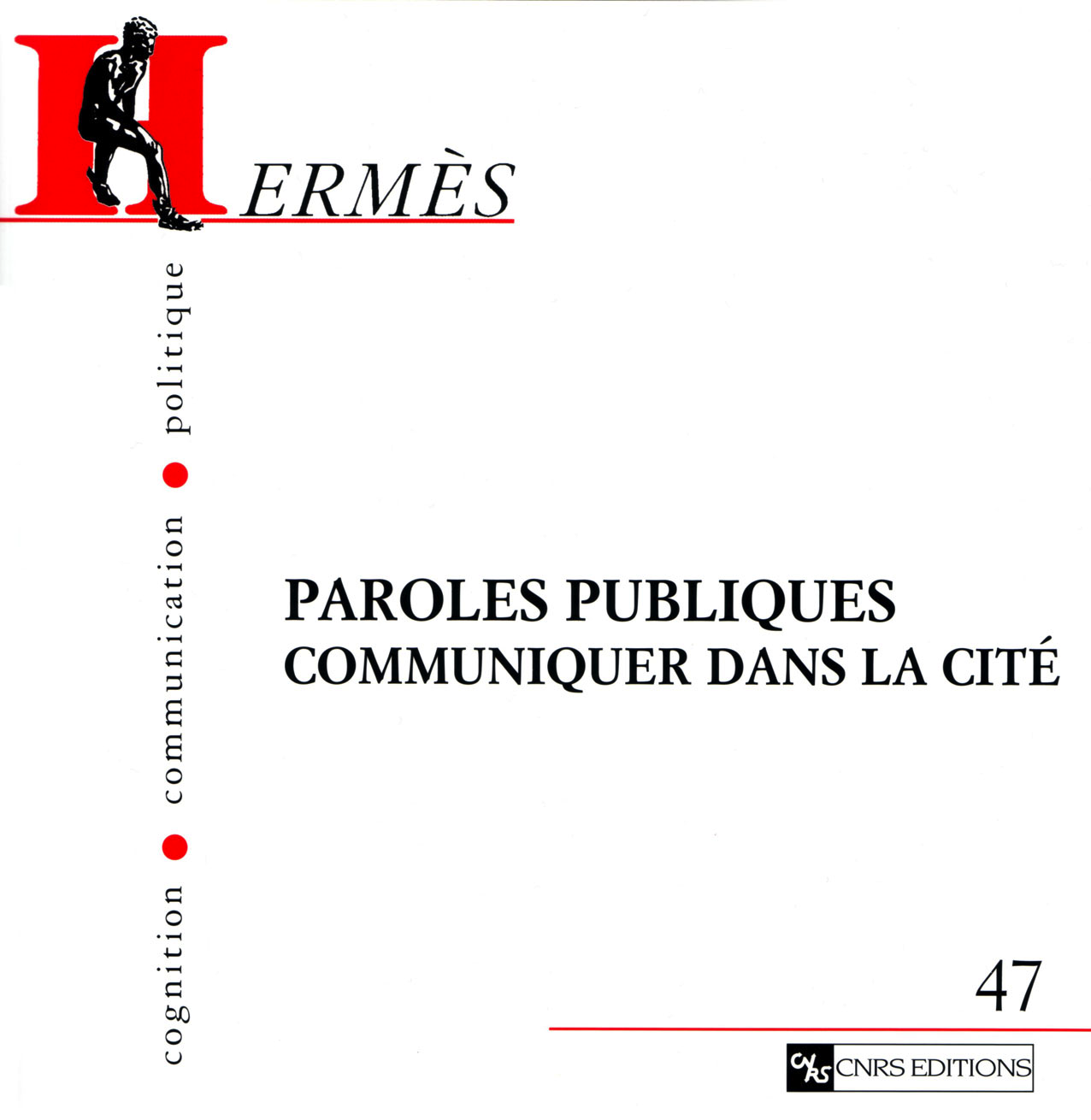 |
MASSIT-FOLLÉA F., MÉADEL C., 2007, «"Paroles publiques. Communiquer dans la cité". Introduction et direction du numéro» ,
Hermès, (47), p.9-17.
Accès au texte »
Depuis plusieurs années, les débats publics ne sont plus réservés aux professionnels de la politique et aux experts patentés. La multiplication des moyens de communication et notamment l’internet ouvre de nouveaux espaces où se discutent, s’élaborent, s’affichent des arguments et des opinions sur la vie politique et sociale. Ce numéro de la revue Hermès s’intéresse aux échanges collectifs qui s’opèrent à travers différents médias en analysant un ensemble de cas très variés. Le débat public sur le troisième aéroport en Picardie. Le site internet des partisans de Ségolène Royal. Une controverse autour des éoliennes. Une émission de libre antenne radiophonique à destination des adolescents. Les langages inventifs élaborés autour des émeutes des banlieues. Les militants électroniques de la santé. Les divers modèles de « blogs citoyens »… |
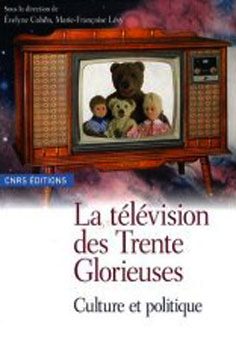 |
MÉADEL C., 2007, «Rhétorique du premier journal télévisé» ,
in COHEN E., LÉVY M., (ed.), La Télévision des Trente Glorieuses. Culture et politique, Paris, CNRS, p.51-68.
Comment s'adresse-t-on à un public absent à travers des images et des mots reliés à l'actualité ? Que recouvre cette notion d'actualité dans le cas des journaux télévisés de ces premières années ? Quelles formes verbales, corporelles, esthétiques ont été construites ? A travers l'analyse de la rhétorique du Journal télévisé entre 1956 et 1965, l'article analyse la construction progressive de l'information, sa mise en forme et la fabrique des relations entre le journaliste, le présentateur et les téléspectateurs. |
| |
MÉADEL C., CLASTRES P., 2007, «Le musée national du sport. Echanges entre Méadel, Cécile et Patrick Clastres avec Patrick Porte, conservateur général du patrimoine» ,
Le Temps des Médias, (9), p.263-266. |
| |
MEYER M., 2007, «On the Market in Europe» ,
The Chronicle of Higher Education, |
| |
MEYER M., 2007, «Increasing the frame: interdisciplinarity, transdisciplinarity and representativity» ,
Interdisciplinary Science Reviews,, 32 (3), p.203-212.
Why do scientists have to work within a frame? How do they increase their frame, and what are the challenges of doing so? These are the questions I wish to address in this paper. I will argue that framing is a necessary but problematic practice for anyone engaged in producing and communicating knowledge. Scientists have to frame the world in order to produce - at least temporarily - an enclosed space containing stable objects of interest. Yet there are now many ways in which frames are being enlarged. Interdisciplinarity, for instance, draws on more than one discipline to tackle a given issue. Transdisciplinarity expands knowledge production beyond academic disciplines, by involving the public or the government for example. And, finally, representativity is one of the keys to the powerful and authoritative status of scientific knowledge, as it enables knowledge to travel from one place - the present, the original place where data was gathered - to another place where this knowledge is represented, generalised, translated. |
| |
MILANOVIC F., PONTILLE D., 2007, «Quand les règles ne suffisent pas : heurs et malheurs du travail réglementaire» ,
Sciences Sociales et Santé, 25 (3), p.71-78. |
| |
MILANOVIC F., PONTILLE D., CAMBON-THOMSEN A., 2007, «Biobanking and Data Sharing : a Plurality of Exchange Regimes» ,
Genomics, Society and Policy, 3 (1), p.17-30.
Accès au texte »
Key activities in biomedicine and related research rely on collections of biological samples and related files. Access to such resources in industry and in academic contexts has become strategic and represents a central issue in the general framework of rising patenting practices and in debates about the knowledge economy. It raises important issues concerning the organisation of scientific and medical work, the outline of data-sharing guidelines, and science policy’s contribution to the elaboration of an adapted framework. This paper presents an ethnographic study of three French human biobanks. Building on field work (participant observation and in-depth interviews), the study focuses on data access in the concrete practices in biobanks. The paper develops a perspective based on an analysis of different exchange regimes. We argue that access practices are submitted to the different regimes that can coexist and be articulated within the daily activities of each biobank. We also discuss how this perspective can further our understanding of biomedical research, and how it might inform data access policy. |
 |
MONDADA L., AKRICH M., HENNION A., RABEHARISOA V., 2007, «Des objets aux interactions, et retour» ,
Working paper.
Accès au texte »
Une discussion avec Madeleine Akrich, Antoine Hennion, Vololona Rabeharisoa (Centre de Sociologie de l'Innovation, Paris) proposée et retranscrite par Lorenza Mondada.
Le Centre de Sociologie de l'Innovation (CSI) de l'École des Mines de Paris est un haut lieu de la sociologie des sciences, où ont été élaborés les travaux de Bruno Latour et de Michel Callon qui ont provoqué une série d'analyses des pratiques scientifiques parfois regroupées - surtout dans la littérature anglo-saxonne - sous le label de « Actor-theory network » (ANT). Cet apport fondamental à la sociologie des sciences se caractérise à la fois par une attention accrue aux pratiques des chercheurs, à la « science en train de se faire », aux objets, artefacts, dispositifs techniques, ainsi qu'aux réseaux où circulent et s'associent humains et non humains.
Dans le texte qui suit, un groupe de chercheurs du CSI, Madeleine Akrich, Antoine Hennion, Vololona Rabeharisoa, a accepté de discuter très librement de la façon dont ils se positionnent dans leurs terrains et leurs travaux vis-à-vis des questions soulevées par la prise en compte des interactions sociales.
Ce texte est le produit hybride de plusieurs interactions, en face-à-face et à distance, par oral et par écrit, entre les chercheurs qui y interviennent. Il n'est pas une retranscription fidèle de la discussion qui a eu lieu le 21 juillet 2003 dans le bureau de Madeleine Akrich - bien que la discussion ait été enregistrée sur mini-disc puis transcrite par Lorenza Mondada, qui a immédiatement retravaillé la version orale pour en faire une version écrite. Celle-ci a ensuite donné lieu à une réécriture de la part des chercheurs du CSI, à des ajouts de notes et de bibliographie, à des discussions parallèles, à des lectures par d'autres membres, dont Bruno Latour. Tout en étant attribuable à des énonciateurs particuliers, ce texte a été énoncé dans une polyphonie qui dissout un certain nombre de spécificités de l'écriture des auteurs. Si l'on pense que la forme et le sens des objets de discours dépendent des régimes énonciatifs au sein desquels ils ont été produits, on conviendra que le résultat final est un positionnement inédit des membres du CSI ayant accepté de se prononcer sur les problématiques abordées. |
| |
MOREAU DE BELLAING C., 2007, «Contenir la passion ? Les dispositifs de lutte contre la violence autour des rencontres de football» ,
|
| |
MUNIESA F., 2007, «Market technologies and the pragmatics of prices» ,
Economy and Society, 36 (3), p.377-395. |
 |
MUNIESA F., 2007, «Le marché comme solution informatique : le cas du Arizona Stock Exchange» ,
Working paper.
Accès au texte »
Propose une étude des effets de l'informatisation du marché sur sa définition, à partir du cas du Arizona Stock Exchange. |
| |
MUNIESA F., CALLON M., 2007, «Economic experiments and the construction of markets» ,
in MACKENZIE D., MUNIESA F., SIU L., (ed.), Do economists make markets? On the performativity of economics, Princeton, Princeton University Press, p.163-189. |
 |
MUNIESA F., MILLO Y., CALLON M., 2007, «An introduction to market devices» ,
in CALLON M., MILLO Y., MUNIESA F., (ed.), Market Devices, Oxford, Blackwell, p.1-12.
Accès au texte » |
| |
PONTILLE D., 2007, «Matérialité des écrits scientifiques et travail de frontières : le cas du format IMRAD» ,
in HERT P., PAUL-CAVALLIER M., (ed.), Sciences et frontières, Fernelmont, E.M.E. & InterCommunications, p.229-253.
Accès au texte »
La structure argumentative des articles scientifiques s'est progressivement standardisée au fil des siècles autour du format générique suivant : Introduction, Material and methods, Results And Discussion (IMRAD). Ce format d'écriture est un dispositif textuel qui exerce un travail de frontières à plusieurs niveaux. Le premier se manifeste à l'intérieur du texte et se décompose en deux. Il concerne d'une part le passage du travail quotidien de recherche à l'élaboration de résultats incontestables. Le texte engage d'autre part une mise en scène graphique qui permet un transfert de l'instance énonciatrice par des procédés graphiques et argumentatifs spécifiques. Le format IMRAD constitue ainsi une forme particulière d'expression de la preuve. Le second niveau s'exprime à l'extérieur du texte par la mise en jeu des modalités de lecture. En servant de points d'appui communs aux auteurs et aux lecteurs, le format IMRAD standardise les procédures d'évaluation et matérialise un lien social et cognitif au sein des pratiques discursives d'un groupe professionnel. |
| |
PONTILLE D., 2007, «Générique de noms et évaluation du travail scientifique» ,
in GAUDEZ F., (ed.), Sociologie des arts, sociologie des sciences (tome 1), Paris, L'Harmattan, coll. "Logiques sociales", p.225-241.
Accès au texte »
Dans un contexte où la science est une entreprise de plus en plus collective, la place occupée par les signataires d'un article doit garantir les bonnes attributions. Avec des listes qui dépassent parfois la cinquantaine de noms, l'identification des performances de chacun s'avère néanmoins problématique. Comment savoir qui a fait quoi ? Quels procédés permettent à coup sûr de repérer les signataires dont l'apport est substantiel ? Ce texte questionne un dispositif inédit élaboré par les chercheurs en sciences biomédicales pour permettre l'évaluation des publications cosignées. L'analyse des actions engagées par ce dispositif montre qu'il remet en chantier à la fois la définition du travail scientifique et la conception de l'auteur. |
| |
PONTILLE D., MILANOVIC F., RIAL-SEBBAG E., 2007, «Collectionner le vivant : régulation, marché, valeur» ,
Revue d’Économie Industrielle, (120), p.195-212.
À l’ère des séquençages du génome humain, les collections d’échantillons biologiques associées à des données informatisées sont des outils essentiels de la recherche biomédicale. De plus en plus organisées au sein d’infrastructures spécifiques, des « biobanques » ou des « Centres de Ressources Biologiques », elles sont porteuses d’enjeux multiples. Cet article explore le travail de régulation dont les collections d’échantillons biologiques font l’objet à différents moments et dans diverses arènes.
In the time of Human genome project, collection of biological samples and related files are key issues for biomedical research. These collections are more and more organized within specific infrastructures such as “biobanks” or “Biological Resources Centers” and involve different stakes. This article explores the work of regulation relating to collections of biological samples at different time and in various arenas. |
| |
RABEHARISOA V., 2007, «En quoi l’engagement des associations de malades dans la recherche transforme-t-il les formes de participation et de contestation sociale ?» ,
in TOURNAY V., (ed.), La Gouvernance des innovations médicales, Paris, PUF, p.203-220.. |
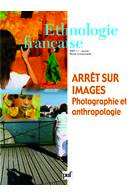 |
RÉMY C., 2007, «Ni cliché, ni séquence : s’arrêter sur l’image» ,
Ethnologie française, 37 (1), p.89-95.
Accès au texte »
L’auteure présente un outil d’exploration des situations sociales : l’arrêt sur image. Elle revient sur ses diverses contraintes techniques et méthodologiques et démontre leur intérêt au sein d’une enquête inspirée par la sociologie de l’action. C’est en tenant compte de la temporalité des actions humaines que l’image semble pouvoir évoluer d’un rôle d’illustration à celui d’outil d’analyse. En passant indifféremment d’image animée à image statique, l’enregistrement vidéo permet un choix de séquences filmées et une lecture multiple des contextes observés. Il aide à suivre finement les activités des acteurs, et à mettre en évidence la différence entre les normes du groupe et celles de l’individu.
Abstract : The author presents a tool for explorating social situations : freezing on the frame. She evokes its various technical and methodological limits and shows its interest for a survey inspired by action sociology. By taking into account the temporality of human actions the image can be more than illustrative and become an analysis tool. By passing indiscriminately from an animated image to a static one video recording permits a selection of filmed sequences and a multiple reading of the observed contexts. It helps to follow minutely the actors’ activities and to show the difference between group norms and individual norms. |
| |
TRÉBUCHET-BREITWILLER A., 2007, «Comment le marketing saisit les goûts. Le cas des tests de jus dans la parfumerie fine» ,
in ASSOULY O., (ed.), Goûts à vendre. Essais sur la captation esthétique, Paris, IFM/Regard, p.185-206. |
 |
WRIGHT M., CLARYSSE B., LOCKETT A., MUSTAR P., 2007, Academic entrepreneurship in Europe ,
Cheltenham, UK – Brookfield, US, Edward Elgar. |
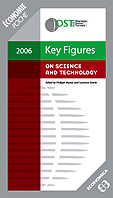 |
MUSTAR, P., ESTERLE, L., 2006, Key Figures on Science and Technology ,
Paris, Economica.
L’ouvrage a pour objet de rassembler des indicateurs offrant une vue d'ensemble du monde de la science et de la technologie. Il propose un choix d'indicateurs essentiels présentés sous forme d'une série de « photographies » prises à l'échelon international, national ou régional. Ces indicateurs, d'accès aisé pour le « non spécialiste », permettent de situer les forces et les faiblesses des pays, des régions ou des secteurs industriels. Par un jeu de questions-réponses, le lecteur, qu’il soit responsable d’une structure de recherche publique ou privée au niveau national ou régional, chercheur, étudiant ou encore journaliste, trouvera ici un tableau d’ensemble synthétique concernant les budgets, les personnels de recherche, les coopérations, les thèses, les publications scientifiques et les brevets. |
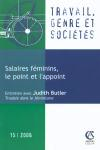 |
AKRICH M., 2006, «Ne pas oublier l’avortement : parcours avec La Condition foetale» ,
Travail Genre et Sociétés, (15), p.163-168.
Accès au texte »
Analyse dans le cadre d'un dossier consacré à l'ouvrage de Luc Boltanski, "La condition foetale. Une sociologie de l'engendrement et de l'avortement" (Gallimard, 2004) |
| |
AKRICH M., 2006, «Die De-Scrikption technischer Objekte» ,
in BELLIGER A., KRIEGER D., (ed.), ANThology. Ein einführendes Handbuch zur Akteur-Netzwerk-Theorie, Bielefeld, Transcript, p.407-428. |
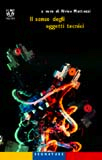 |
AKRICH M., 2006, «Semiotica e sociologia della tecnica : fino a dove spingere il parallelo» ,
in MATTOZZI A., (ed.), Il senso degli oggetti, Roma, Meltemi, p.415-425. |
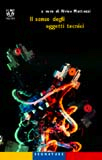 |
AKRICH M., 2006, «Dalla sociologia della tecnica a una sociologia degli usi» ,
in MATTOZZI A., (ed.), Il senso degli oggetti, Roma, Meltemi, p.125-156. |
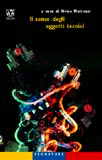 |
AKRICH M., 2006, «La de-scrizione degli oggetti tecnici» ,
in MATTOZZI A., (ed.), Il senso degli oggetti tecnici, Roma, Meltemi, p.53-80. |
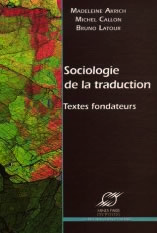 |
AKRICH M., CALLON M., LATOUR B., 2006, Sociologie de la traduction. Textes fondateurs. ,
Paris, Presses des Mines de Paris.
Accès au texte »
Le Centre de sociologie de l’innovation (CSI), laboratoire de sociologie de l’école des mines, créé en 1967, a joué un rôle indéniable dans la constitution et le développement du champ STS, Science, Technique et Société. L’originalité du CSI dans ce domaine a été non seulement d’étudier l’impact des sciences et des techniques sur la société, mais de développer une théorie originale pour analyser les multiples façons dont la société et les sciences se mélangent. De proche en proche, cette théorie transforme l’économie de l’innovation, l’histoire et la philosophie des sciences, la sociologie de la culture et des médias, l’anthropologie médicale et biologique, l’analyse des marchés... De nombreux outils pratiques pour la gestion de l’innovation, la politique scientifique, l’enseignement des controverses, la description de l’activité de recherche, le suivi des transformations techniques ont été développés. La dimension politique et citoyenne de toutes ces recherches devient de plus en plus visible, quand le développement des sciences et des techniques multiplie les interrogations, voire les inquiétudes. Cette approche, la sociologie de l’acteur réseau, souvent désignée sous son appellation anglaise Actor Network Theory est désormais très largement mobilisée par les sciences sociales et étudiée dans les cursus universitaires. Elle a donné lieu à une ample littérature, principalement en langue anglaise. Or, nombre de ses textes fondateurs sont aujourd’hui introuvables, parce qu’ils ont été publiés dans des revues qui ne sont plus disponibles, qu’ils sont difficiles à trouver ou parce qu’ils n’ont jamais été traduits en français. Ce premier recueil, qui réunit les textes de trois chercheurs du CSI : Akrich, Madeleine, Callon, Michel et Latour, Bruno, privilégie les approches anthropologiques des sciences et des techniques. |
| |
AKRICH M., LATOUR B., 2006, «Zusammenfassung einer zweckmäBigen Terminologie für die Semiotik menschlicher und nicht-menschlicher Konstellationen» ,
in BELLIGER A., KRIEGER D., (ed.), ANThology. Ein einführendes Handbuch zur Akteur-Netzwerk-Theorie, Bielefeld, Transcript, p.399-405. |
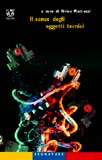 |
AKRICH M., LATOUR B., 2006, «Vocabolario di semiotica dei concatenamenti di umani e non-umani» ,
in MATTOZZI A., (ed.), Il senso degli oggetti, Roma, Meltemi, p.407-414. |
 |
AKRICH M., MÉADEL C., 2006, «Télévision à la carte, un divorce annoncé» ,
Réseaux, (139), p.77-103.
Accès au texte »
Malgré de très nombreux projets et applications, la télévision interactive qui devait reconfigurer le monde industriel de l'audiovisuel et changer les formes de consommation, n'a pas connu le développement annoncé. L'article réexamine trois expériences françaises de pay-per view et vidéo à la demande à partir du cadre proposé par « l'économie des qualités » qui place au cœur de la dynamique des marchés le travail de qualification des produits et des usagers. L'article montre que le travail de singularisation de ces projets de télévision était handicapé par la faiblesse de l'interactivité et la lourdeur des procédures d'exploration de l'offre. |
| |
AKRICH M., MÉADEL C., 2006, «Les cercles de discussion électronique. Activités et activisme» ,
Paris, CSI - CNRS Programme Société de l'information. |
| |
AKRICH M., MILLER R., 2006, «The Future of Key Actors in the European Research Area» ,
Brussels, Technology Foresight Group, DG Research, European Commission.
Accès au texte »
Many of the conclusions of this synthesis report are fully consistent with the directions of current research policies. The work of this High Level Expert Group on the Future of Research Actors (RA) in the European Research Area (ERA) highlights the importance of efforts, already well underway, to reinforce the functioning of the ERA as an integrated base that overcomes a wide range of geographic, institutional and disciplinary barriers to both the competition and sharing of the knowledge. Knitting together the different European research actors into a more transparent and diversified whole would seem to be one of the best ways to create a stronger platform for knowledge creation and diffusion. A less anticipated conclusion, and less part of the existing consensus, is that simply pursuing the ambition of multiplying the number of effective research platforms in Europe may miss a key part of tomorrow’s research agenda. The in-depth expert papers on the eight different research actors of the ERA, the insights arising from the synthesis developed in this paper, and the analytical results of a rare scenario pooling exercise, all point very clearly to the risk that current policies are excessively technology-centric and may miss crucial emerging attributes of research and research actors in the knowledge society. Thus, over and above the valueadded for assessing the direction and implementation of current approaches to improving the production and use of research in Europe, this report recommends new policies aimed at accelerating the development of emerging forms and sources of research. The policy message is that Europe must move beyond industrial-era challenges to embrace those of the knowledge society. |
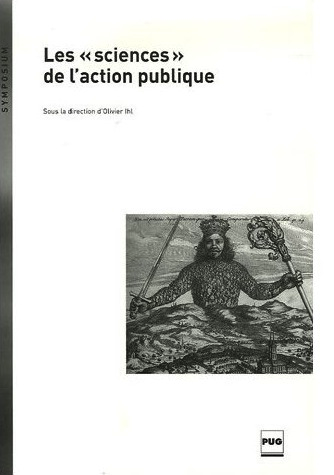 |
BARTHE Y., 2006, «Comment traiter les débordements des sciences et des techniques? Une brève histoire du "technology assessment» ,
in IHL O., (ed.), Les "sciences" de l'action publique, Grenoble, Presses universitaires de Grenoble, p.245-262. |
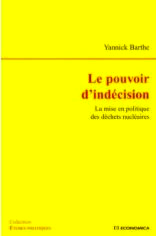 |
BARTHE Y., 2006, Le pouvoir d’indécision. La mise en politique des déchets nucléaires ,
Paris, Economica.
Comment une question en apparence technique - le devenir des déchets nucléaires - peut-elle se transformer en problème politique? À quel type d'épreuve les gouvernants se trouvent-ils confrontés lorsque des controverses se déploient dans des situations saturées d'irréversibilités? Comment discuter de choix " indiscutables "? L'action politique est-elle impuissante face au poids du passé? Telles sont les questions qui sont au cœur de ce livre. Cherchant à combiner les apports de l'analyse de l'action publique et de la sociologie des sciences et des techniques, il retrace la longue carrière du problème des déchets nucléaires et analyse le traitement original dont cette question a fait l'objet de la part des autorités politiques. |
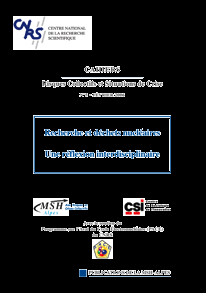 |
BARTHE Y., GILBERT C., ALII E., 2006, Recherche et déchets nucléaires. Une réflexion interdisciplinaire ,
Grenoble, Publications de la MSH Alpes. |
 |
BENTO S., 2006, «La difficile existence du barrage d’Alqueva : une ethnographie des démonstrations sociotechniques» ,
Thèse de doctorat, Paris, École Nationale Supérieure des Mines de Paris.
Cette thèse décrit l’histoire d’un barrage situé dans le sud du Portugal, ayant comme origine un plan d’irrigation des années 50. L’objectif est de comprendre à partir des explications sociologiques et anthropologiques existantes sur les barrages comment l’objet technique noue des liens avec d’autres entités, et comment se composent les chaînes de porte-parole qui font que le projet hydraulique puis plus tard hydroélectrique perdure sans que les abcès de discussions se disséminent. Plusieurs sources d’informations ont composé l’ethnographie multisite du barrage: collecte diachronique de la presse, documents techniques, scientifiques, et audiovisuels, discussions environnementalistes, interventions parlementaires sur l’Alqueva. La presse, ayant constitué notre principal fil conducteur, a permis d’établir un suivi longitudinal exhaustif de la circulation du barrage dans la société. Les pics de cette collecte constituent les sites que nous étudions plus particulièrement. Ces données montrent que la force du barrage se traduit en démonstrations très différentes : par exemple, en 2001 avec la découverte de gravures rupestres et en 2002 avec les inaugurations publiques. C’est également à travers l’histoire du projet d’Alqueva que l’environnement constitue une expérience nouvelle pour divers acteurs. Finalement, le barrage d’Alqueva tient aussi d’un régime d’existence qui précède toutes celles-ci, attaché au plan d’irrigation pour l’Alentejo. Aussi, l’effet du barrage d’Alqueva sur la société portugaise se comprend-t-il comme un effet bien plus qualitatif que cumulatif, son histoire devant être lue comme un mouvement de différentiation progressive et de singularité.
This thesis adresses the history of the Alqueva dam, so as to understand why the construction of the dam
took place, without the discords spilling over and spreading throughout the Portuguese society. The multisite ethnographic method helped to comprehend how actors and objects were linked to the dam: in 2001, with the discovery of the rock art engravings, in the banks of the river Guadiana; in 2002, with the opening
ceremonies. The strength of the dam was emphasised in the discourses of several actors, and implicit in several demonstrations performed. The environment, albeit a ground-breaking collective experience for most of the actors, was tackled through a made piece-meal approach. As to the debates around the financing and rentability, these have not weaken the dam, on the contrary they played an important role on the performing
of the dam. In fact, the dam is linked with a wider system of dams, the Alentejo irrigation plan. Hence, all
these data show this trajectory as a singularization process in regard to others Portuguese dams. But the
Alqueva dam impacts’ in the Portuguese society should be adressed in a more qualitative, rather than cumulative way. The project itself presents an increasing and progressively differentiated nature. |
| |
BENVEGNU N., 2006, «Le débat public en ligne. Comment s’équipe la démocratie dialogique ?» ,
Politix, (75), p.103-123. |
 |
BENVEGNU N., 2006, «Le débat public en ligne : éléments sur l’équipement d’une démocratie dialogique» ,
Working paper.
Accès au texte »
Propose une étude de cas sur l'usage d'Internet comme instrument délibératif et participatif dans des controverses techniques.
Provides a case study on the use of the Internet as a deliberative and participatory tool in technical controversies. |
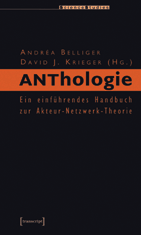 |
CALLON M., 2006, «Die Soziologie eines Akteur-Netzwerkes: Des Fall des Electrofahrzeugs» ,
in BELLIGER A., KRIEGER D., (ed.), ANThology. Ein einführendes Handbuch zur Akteur-Netzwerk-Theorie, Bielefeld, Transcript, p.175-193. |
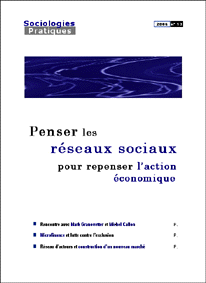 |
CALLON M., 2006, «Les réseaux sociaux à l’aune de la théorie de l’acteur-réseau (entretien)» ,
Sociologies Pratiques, (13), p.37-44.
Accès au texte » |
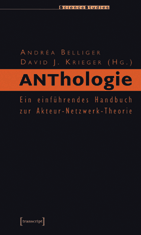 |
CALLON M., 2006, «Die Sozio-Logik des Übersetzung: Auseinandersetzungen und Verhandlungen zur Bestimmung von Problematischem und Unproblematischen» ,
in BELLIGER A., KRIEGER D., (ed.), ANThology. Ein einführendes Handbuch zur Akteur-Netzwerk-Theorie, Bielefeld, Transcript, p.51-74. |
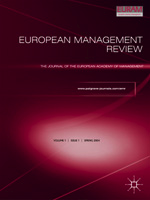 |
CALLON M., 2006, «Can methods for analysing large numbers organize a productive dialogue with the actors they study?» ,
European Management Review, (3), p.7-16.
The creation of categories based on an analysis of large numbers of heterogeneous entities does not preclude the establishment of productive interactions with the entities studied. The nature of these interactions and the types of objectification they allow depend on the characteristics of the tools used. This article aims at characterizing the different methods in terms of the competencies they recognize in actors. Three types of methods are described: multidimensional analysis, social network analysis, and what is called 'composition of egocentric heterogeneous networks'. The paper suggests that from one method to the next, the actors' competencies are enhanced. Consequently, the sociologist's ability to perceive the emergence of new categories increases; in endowing human and non-human actors with larger and richer competencies, he upgrades his own competencies as an analyst. In addition, productive interactions between him and the actors he studies are made easier. |
 |
CALLON M., 2006, «What does it mean to say that economics is performative?» ,
Working paper.
Accès au texte »
Discusses the performativity of economics and proposes theoretical directions to study it from a sociological perspective.
Discute la performativité des sciences économiques et propose des pistes théoriques pour l'étudier sociologiquement. |
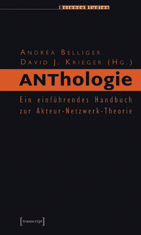 |
CALLON M., 2006, «Einige Elemente einer Soziologie der Übersetzung: Die Domestikation der Kammmuscheln und der Fischer der St Brieuc-Bucht» ,
in BELLIGER A., KRIEGER D., (ed.), ANThology. Ein einführendes Handbuch zur Akteur-Netzwerk-Theorie, Bielefeld, Transcript, p.135-174. |
| |
CALLON M., 2006, «Les experts et la règle. L’Egypte postcoloniale comme laboratoire de la globalisation» ,
Le libellio d'AEGIS, (2), p.1-16.
Accès au texte » |
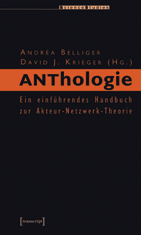 |
CALLON M., 2006, «Akteur-Netzwerk-Theorie: Der Markttest» ,
in BELLIGER A., KRIEGER D., (ed.), ANThology. Ein einführendes Handbuch zur Akteur-Netzwerk-Theorie, Bielefeld, Transcript, p.545-559. |
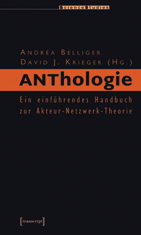 |
CALLON M., 2006, «Techno-ökonomische Netzwerke und Irreversibilität» ,
in BELLIGER A., KRIEGER D., (ed.), ANThology. Ein einführendes Handbuch zur Akteur-Netzwerk-Theorie, Bielefeld, Transcript, p.309-342. |
| |
CALLON M., 2006, «Regards croisés sur l’AFM.» ,
http//www.afm-france.org., p.25 pp..
Accès au texte »
L'objectif de ces rencontres n'était pas d'établir un bilan de l'action de l'AFM, encore moins de réaliser une évaluation. Le but était de permettre à des grands témoins, qu'ils appartiennent à l'association ou qu'ils soient extérieurs à elle, de décrire les actions de l'AFM et les principaux résultats obtenus, de caractériser l'originalité de l'association et d'identifier les ressorts de son succès, mais également de repérer les limites rencontrées, et enfin de réfléchir aux défis qui l'attendent. Les comptes rendus ont été rédigés de manière à laisser entendre la voix des participants. Les passages en caractères gras ont été rédigés par Callon, Michel ; ils fournissent des éléments de synthèse dont il est le seul responsable. Les passages en italiques sont des extraits d'interventions des différents participants. Le style parlé a été conservé. L'anonymat a été respecté de manière à assurer la liberté de parole. |
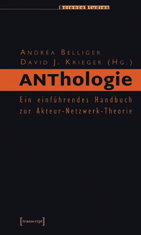 |
CALLON M., LATOUR B., 2006, «Die Demontage des groBen Leviathans: Wie Akteure die Makrostruktur des Realität bestimmen und Soziologen ihnen dabei helfen» ,
in BELLIGER A., KRIEGER D., (ed.), ANThology. Ein einführendes Handbuch zur Akteur-Netzwerk-Theorie, Bielefeld, Transcript, p.75-101. |
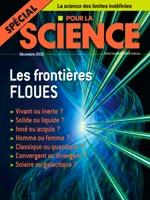 |
CALLON M., RABEHARISOA V., 2006, «L’AFM : quel pouvoir aux malades ?» ,
Pour la science, p.18-21.
Le Téléthon a 20 ans. C’est en 1987, que Bernard Barataud, Pierre Birambeau et Michel Jemmi, pères d’enfants atteints de myopathie de Duchenne et décidés à vaincre une maladie qui intéresse peu de gens, prennent contact avec Antenne 2 et proposent l’organisation d’un Téléthon à la française. Qui aurait alors pu prédire le succès populaire rencontré par l’émission ? Qui aurait parié sur l’indéfectible générosité des donateurs ? Qui aurait imaginé qu’une poignée de parents allait redessiner de façon profonde et durable le paysage scientifique et politique français ? Vingt ans, ce n’est pas nécessairement le plus bel âge, mais c’est indiscutablement celui des premiers bilans, afin notamment de comprendre comment les succès remportés ont été possibles et d’identifier les défis à relever et les obstacles à surmonter. |
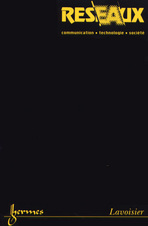 |
CANU R., MALLARD A., 2006, «Que fait-on dans la boutique d’un opérateur de télécommunications ? Enquête ethnographique sur la mise en référence des biens marchands» ,
Réseaux, 24 (135-136), p.161-192.
Accès au texte »
Cet article propose d'investir la question du choix et de l'évaluation des biens économiques par les consommateurs, telle qu'elle se cristallise dans les boutiques d'un opérateur de télécommunications. À partir d'une enquête ethnographique dans plusieurs de ces boutiques, il identifie deux des médiations les plus typiques de ces espaces de distribution (les écrits commerciaux et l'assistance du vendeur) et spécifie la nature de leur participation à la dynamique de localisation et de « révélation » des biens. Il montre ainsi que le processus d'évaluation d'une offre complexe, en boutique mais aussi tout au long des parcours de consommation, traduit une stabilisation progressive de l'ensemble des attributs dont l'alignement fera référence vers un bien économique appropriable par un consommateur
This article examines the issue of consumers' choices and assessments of goods in the shops of a telecom operator. Based on an ethnographic study in several such shops, the authors identify two of the most typical mediations of these distribution spaces (commercial writings and sales assistance) and define the nature of their participation in the dynamics of the localization and "revealing" of goods. They show that the assessment of a complex offer, both in the shop and throughout the consumption process, is the outcome of a progressive stabilization of all its attributes which together relate to an economic good that can be adopted by a consumer. |
| |
DENIS J., 2006, «Les nouveaux visages de la performativité» ,
Études de communication, (29), p.8-24.
Accès au texte » |
| |
DENIS J., LICOPPE C., 2006, «La coprésence équipée. Usages de la messagerie instantanée en entreprise» ,
in BIDET A., BORZEIX A., PILLON T., ROT G., VATIN F., (ed.), Sociologie du travail et activité, Toulouse, Octares, p.47-65.
Accès au texte » |
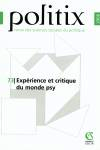 |
DODIER N., RABEHARISOA V., 2006, «Editorial. Les transformations croisées du monde "psy" et des discours du social» ,
Politix, 19 (73), p.9-22. |
| |
DOGANOVA L., 2006, «Notes de lecture. Pontille, David, La signature scientifique, Paris, 2004» ,
Politix, (75), p.185-188. |
| |
FRAENKEL B., PONTILLE D., 2006, «La signature au temps de l’électronique» ,
Politix, (74), p.103-121.
L’électronisation des pratiques d’écriture bouleverse des usages séculaires comme celui de la signature, puissant signe d’identité et de validation. L’analyse s’appuie sur deux cas : le projet d’adoption de la signature électronique pour valider les actes authentiques en France et les nouvelles modalités de soumission d’articles à la célèbre revue Nature. Elle montre combien l’identification est devenue problématique. Les exigences sécuritaires dans un cas et la méfiance envers les pairs dans l’autre aboutissent à des choix opposés : la signature cryptographique en droit et la signature manuscrite en science. |
| |
GALLAND J., GILBERT C., HENRY E., LINHARDT D., 2006, «La sécurité routière : une vision restrictive, un système sans pilote ?» ,
Cahiers Risques collectifs et situations de crise. Recherche et sécurité routière. Pour une action publique renouvelée, (6), p.15-28. |
 |
GRAMAGLIA C., 2006, «La mise en cause environnementale comme principe d’association. Casuistique des affaires de pollutions de rivières : l’exemple des actions contentieuses de l’Association nationale de protection des eaux et rivières (ANPER-TOS)» ,
Thèse de doctorat, Paris, École Nationale Supérieure des Mines de Paris.
La thèse se compose de 5 chapitres qui sont autant d’interrogations, sur les environnements, le militantisme, la politique et le droit. Elle commence par un questionnement sur l’espace et les matérialités. Cette réflexion liminaire sur les spécificités des environnements s’est imposée au fil du terrain. J'explique notamment que ceux-ci sont explicités au fil des disputes, plus qu'ils ne sont donnés, préalablement définis. J’introduis également les 6 procès sur lesquels se fonde ce travail, en évoquant les circonstances de leur émergence. La thèse traite ensuite de la passion des pêcheurs à la mouche et de leurs attachements à des rivières particulières, à des poissons. Je montre que certains cours d’eau ont contribué à produire des témoins indignés. Ainsi, j’explique que les pêcheurs d’ANPER-TOS ont mis à profit leurs compétences pour protester contre les pollutions. La thèse se poursuit avec la présentation des instruments juridiques mis à disposition des associations de la nature depuis les années 1970. J’aborde plus particulièrement le problème de l’administration des nuisances. Je dresse la liste des habilitations nécessaires à la mobilisation du droit, tout en constatant sa relative impuissance. Je mentionne cependant l’arrivée à ANPER-TOS de plusieurs juristes, et les changements que cela a occasionné. La thèse démontre, détaillant la trajectoire de 6 affaires précises, que les recours en justice permettent d’actualiser le droit, de l’amender. Elle se termine par une réflexion sur les transformations du militantisme, et la co-construction des questions « environnementales » et de leurs publics. J’insiste en montrant comment s’explicitent les pollutions à condition d'avoir des réseaux de vigilance, composés d’humains et de non-humains, et conclue sur le besoin de réexaminer les causes « environnementales, d’enquêter sur les singularités socionaturelles des cas qui, s’accumulant, forment une série casuistique où se mêlent les échelles et les intérêts.
The dissertation consists of 5 chapters which focus on queries about the environment, activism, politics and the law. It starts with questions on space and materialities. This preliminary reflection on the specificities of “environments” emerged through fieldwork. I explain that the latter are made explicit in the course of disputes, and not given beforehand. I introduce the 6 lawsuits on which my research was founded, evoking the very conditions of their emergence. Then the dissertation deals with the fly-fishermen’s hobby and their attachment to specific rivers and fish. I show how certain streams contributed to the production of impassioned witnesses. So, I argue that ANPER-TOS fishermen used their skills to denounce pollution. The dissertation continues with the presentation of the legal tools that been conceded by the State to French environmental organisations since the 1970s. I address more precisely the problem of nuisance management. I provide a list of all the mediations that are necessary for the mobilisation of law, as well as showing its relative impotence. However, I also describe the changes generated by the joining of ANPER-TOS by several legal professionals. The dissertation demonstrates, through the examination of the 6 lawsuits or affairs mentioned previously, that contentious action is a way to actualise and amend the law. It ends with a reflection on the transformations of activism, and the co-construction of environmental issues and their “publics”. I insist in showing that pollution can be regulated provided there are vigilance networks composed of humans and non-humans. I conclude by arguing for the need to reassess the environmental “cause” and to inquire about the singularities of cases which, as they accumulate, produce a casuistic series where scales and interest mix. |
 |
GRANDCLEMENT C., 2006, «Wheeling food products around the store... and away: the invention of the shopping cart, 1936-1953» ,
Working paper.
Accès au texte »
Analyzes the invention and early development of the shopping cart (supermarket trolley) in the US using original archival sources.
Analyse l'invention et le développement du chariot de supermarché aux Etats-Unis. |
| |
GRANDCLÉMENT C., 2006, «Le marketing des similarités. Les produits à marque de distributeur» ,
Réseaux, 24 (135-136), p.223-252.
Accès au texte » |
| |
GRANDCLÉMENT C., COCHOY F., 2006, «Histoires du chariot de supermarché. Ou comment emboîter le pas de la consommation de masse» ,
Vingtième siècle, (91), p.77-93.
Accès au texte » |
 |
GROSSMAN E., LUQUE E., MUNIESA F., 2006, «Economies through transparency» ,
Working paper.
Accès au texte »
The notion of transparency is widely used as an analytical tool and as a guideline to propose and enforce new configurations of economic life. Focusing on several transparency-making devices, this paper tries to explore both the pervasiveness of this notion and its ambivalence in a number of relevant sites. We begin by exploring the deployment of transparency in the economic literature at large. We identify three thematic areas, namely, markets and price discovery, corporate management and institutional investors, and state regulations and economic policy. We then tackle these three areas of meaning through three brief case studies: (1) transparency and anonymity in the context of exchange automation, (2) ballot statement controversies in the light of corporate governance principles and (3) the use of transparency at state level in the context of the EU financial regulation. In the concluding section, we try to condense our findings into a tentative typology. We point to an important, yet not always explicit distinction between ‘literal' transparency and ‘abstract' transparency, and we observe combinations between ‘disciplinary' and ‘enabling' uses of transparency-making devices. These articulations of transparency, we suggest, are central to the development of new instruments of government. |
| |
HENNION A., 2006, «Pour une approche pragmatique du soin et de l’accompagnement» ,
Les Cahiers de la Fondation Médéric Alzheimer, p.33-36.
La "vie commune" avec les personnes atteintes de la maladie d'Alzheimer conduit les aidants, qu'ils soient familiaux ou professionnels, à inventer de nouvelles pratiques nées de l'accumulation d'expériences d'accompagnement. La reconnaissance de l'humanité des personnes ne peut se réaliser que dans des situations concrètes, dans la confrontation avec la multiplicité des identités, les différences et les discriminations à l'oeuvre. "Cas pilote", la maladie d'Alzheimer permet de réinventer les manières de "vivre ensemble". |
| |
HENNION A., 2006, «La présence de Bach» ,
in KALTENECKER M., NICOLAS F., (ed.), Penser l'oeuvre musicale au XXe siècle : avec, sans ou contre l'Histoire ?, Paris, CDMC, p.85-94.
Je voudrais aborder ici la présence de Bach en essayant de donner tout son poids au mot présence – l’un des paradoxes, dans l’affaire, étant précisément l’évidence d’un tel mot, le fait même qu’on puisse parler de la présence d’un homme mort depuis 250 ans, qu’il nous touche, comme on dit justement, sans y voir magie, religion ou mystère. Ce lien assez bizarre que nous entretenons avec un répertoire, à la fois passé et présent, sans cesse « activé » par des interprétations qui refont indéfiniment du neuf avec de l’ancien, c’est justement quelque chose dont le cas de la musique permet de mieux réaliser la nature et les implications. |
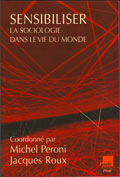 |
HENNION A., 2006, «Affaires de goût. Se rendre sensible aux choses» ,
in PERONI M., ROUX J., (ed.), Sensibiliser. La sociologie dans le vif du monde, éditions de l'Aube, p.161-174.
La sociologie de la culture nous a habitués à une lecture critique du goût. L’amateur est supposé ressentir un rapport naturel aux objets de sa passion. La sociologie vient montrer le caractère en réalité socialement construit de cette relation : les catégories utilisées, l’autorité de leaders et l’imitation des proches, les institutions et les cadres de l’appréciation, le jeu social de l’identité et de la différenciation. Une telle approche ne se contente pas de révéler les déterminants cachés d’une pratique qui se lirait comme naturelle, spontanée, individuelle. Au passage, elle transforme le goût en signe. Le contact même avec les choses, l’incertitude des sensations, les opérations et les techniques utilisées pour se rendre sensible aux objets recherchés et pour se sentir sentir, tous ces moments et gestes du goût sont négligés, quand ces pratiques ne sont pas directement dénoncées comme des rites dont la principale fonction serait moins de faire sentir que de faire croire, de produire la croyance collective des amateurs que le goût est dans les choses alors que, le sociologue le sait bien depuis Durkheim et Bourdieu, il n’est « que » la production collective de cette croyance même. |
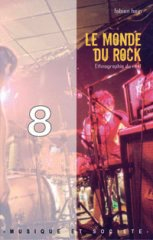 |
HENNION A., 2006, «Préface.» ,
in HEIN F., (ed.), Le monde du rock, Paris, Irma éditions, p.9-12. |
 |
HENNION A., 2006, «Rewriting history from the losers’point of view: French Grand Opera and Modernity» ,
in JOHNSON V., FULCHER J., ERTMAN T., (ed.), Opera and Society in Italy and France from Monteverdi to Bourdieu, Cambridge, Cambridge University Press, p.330-350.
Theoretical and methodolog ical issues are questions whose least clear feature is sometimes the outcome that is to issue from them. Nonetheless I would like to tack le one of these issues and use the emblematic case of nineteenth-century French opera as a starting point for considering some of the problems raised by the divide between music and society. The very title of the present book applies this divide to the domain of opera: Opera and Society – is there any other way to approach the subject? Yet any study of this topic inevitably raises a more or less explicit and assumed challenge to such a distinct division between two realities which should be considered as a relationship – as if they were not mutually dependent as a result of their very makeup. |
| |
HENNION A., 2006, «Portrait sociologique de l’amateur de musique classique. Entretien avec Hennion, Antoine» ,
L'éducation musicale, p.30-32.
535/536 |
| |
HENNION A., FLOUX P., TEIL G., 2006, «Changer de comportement ? Enquête sur nos façons de faire avec ce qu’il faut faire.» ,
PREDIT GO3, "Connaissances pour la sécurité".
Accès au texte »
Notre recherche porte sur les usagers finals de la sécurité, autrement dit les cibles des diverses campagnes, prescriptions et actions menées dans ce domaine. Les exemples choisis tournent autour de la conduite en état d’ivresse ou à grande vitesse, pour aborder les problèmes de responsabilité en matière de sécurité routière à la fois à travers ceux de l’alcoolisme, et ceux qui relèvent d’excès commis lors de débordements ponctuels (fêtes, sorties nocturnes, etc.), de sorte à pouvoir traiter aussi bien de cas chroniques ou d’infractions régulières que de cas isolés, dans un ensemble de sous-populations particulièrement sensibles au problème de la sécurité routière : jeunes, usagers ayant des « problèmes avec l’alcool » ou la drogue, récidivistes, amateurs de vitesse ou de grosses voitures, etc. L’enquête s’intègre à une série de questions et de recherches conduites par notre équipe sur les problèmes liés à la responsabilité (et à l’irresponsabilité), aux comportements vis-à-vis du risque, de la sécurité (ou, de façon positive, de la qualité, dans d’autres domaines comme l’alimentation) et, face à eux, aux modalités d’action (publique, privée, associative, personnelle) qui permettent de faire réellement évoluer les comportements (en particulier ceux qui sont dits « à risques »). |
 |
HENRIQUES L., 2006, «The dynamics of a national system of innovation and the ole of the non-profit space: Portugal as a Research Laboratory» ,
Thèse de doctorat, Paris, École Nationale Supérieure des Mines de Paris.
Le Portugal a démontré être un bon laboratoire d’recherche pour l’étude des dynamiques d’un système d’innovation, ayant subi de profonds changements politiques et structurels au long des trente dernières années du XXème siècle. Aussi parce que son système d’innovation a acquis une configuration différente de celle des autres pays de la cohésion de l’Union Européenne, quoiqu’ils se soient ressemblés dans les années soixante du dernier siècle.
Cette thèse a adopté une combinaison de trois écoles de pensée : l’évolutionniste, la nouvelle sociologie de la science et la neo-institutionaliste.
Deux moments de cristallisation ont étés trouvés dans le procès de construction du système d’innovation, chacun correspondant à des moments d’irréversibilité dans leur configuration. Le premier moment correspond à la réforme des universités en 1970, qui a conduit à l’expansion des «embryons » en germination dans la configuration antérieure, centrée sur les laboratoires nationaux, qui ont défini une nouvelle configuration pour le modèle maintenant centré sur la recherche universitaire. Le deuxième moment a correspondu à la période d’adhésion à la CEE, avec la stabilisation des procès et des structures de la politique publique pour la S&TI.
L’expansion du système s’est basée sur des projets de structure, dans le format d’organisations privées sans but lucratifs qui ont construit un espace de médiation entre les compétences et les ressources des acteurs traditionnels. Une typologie pour ces organisations à été proposé.
Portugal is a good research laboratory for the study of dynamics of a system of innovation, because of major political and structural changes faced in the last thirty years of the 20th century. Besides, the Portuguese system has taken a specific configuration of its system of innovation, when compared with other EU cohesion countries, although having similar characteristics and level of development in the 1960s.
A mix of three theoretical approaches was drawn on for this research: the evolutionary economics, the new sociology of sciences and the neo-institutionalist schools.
Two moments of crystallization in the process of building the Portuguese system of innovation were found, which corresponded to processes of irreversibilisation of the model. The first moment was the reform of the universities in the 1970s, which led to the expansion of the “seeds” of the previous configuration, centred upon public laboratories, and generated a new one centred on academic research and non-profit organizations. The second moment was the period after the accession to the European Communities with the stabilization of the policy-making processes and structures. |
| |
LATOUR B., 2006, «Drawing Things Together: Die Macht der unveränderlich mobilen Elemente» ,
in BELLIGER A., KRIEGER D., (ed.), ANThology. Ein einführendes Handbuch zur Akteur-Netzwerk-Theorie, Bielefeld, Transcript, p.259-307. |
| |
LATOUR B., 2006, «Efficacité ou instauration ?» ,
Lumière & Vie, LVp.47-56.
2 |
| |
LATOUR B., 2006, «Sozialtheorie und die Erforschung computerisierter Arbeitsumgebungen» ,
in BELLIGER A., KRIEGER D., (ed.), ANThology. Ein einführendes Handbuch zur Akteur-Netzwerk-Theorie, Bielefeld, Transcript, p.529-544. |
 |
LATOUR B., 2006, Chroniques d’un amateur de sciences ,
Paris, Presses de l'Ecole des Mines de Paris. |
| |
LATOUR B., 2006, «Über technische Vermittlung: Philosophie, Soziologie und Genealogie» ,
in BELLIGER A., KRIEGER D., (ed.), ANThology. Ein einführendes Handbuch zur Akteur-Netzwerk-Theorie, Bielefeld, Transcript, p.483-528. |
| |
LATOUR B., 2006, «Gebt mir ein Laboratorium und ich werde die Welt aus den Angeln heben» ,
in BELLIGER A., KRIEGER D., (ed.), ANThology. Ein einführendes Handbuch zur Akteur-Netzwerk-Theorie, Bielefeld, Transcript, p.103-134. |
| |
LATOUR B., 2006, «Dove sono le masse mancanti ? Sociologia di alcuni oggetti di uso comune» ,
in MATTOZZI A., (ed.), Il senso degli oggetti, Roma, Meltemi, p.81-124. |
| |
LATOUR B., 2006, «über den Rückruf der ANT» ,
in BELLIGER A., KRIEGER D., (ed.), ANThology. Ein einführendes Handbuch zur Akteur-Netzwerk-Theorie, Bielefeld, Transcript, p.561-572. |
| |
LATOUR B., 2006, «Guerre des images. Flot et défaut des images - de l’iconoclasme à l’iconoclash» ,
in GERVEREAU L., (ed.), Dictionnaire mondial des images, Paris, Nouveau Monde, p.453-455. |
| |
LATOUR B., 2006, «Die Macht der Assoziation» ,
in BELLIGER A., KRIEGER D., (ed.), ANThology. Ein einführendes Handbuch zur Akteur-Netzwerk-Theorie, Bielefeld, Transcript, p.195-212. |
| |
LAW J., CALLON M., 2006, «Leben und Sterben eines Flugzeugs: ein Netzwerkanalyse technischen Wandels» ,
in BELLIGER A., KRIEGER D., (ed.), ANThology. Ein einführendes Handbuch zur Akteur-Netzwerk-Theorie, Bielefeld, Transcript, p.447-482. |
| |
LINHARDT D., 2006, «Etude de faisabilité d’un travail approfondi sur les mondes de la sécurité routière.» ,
Convention ARMINES/MELT-DRAST. |
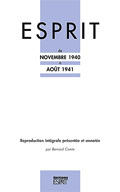 |
LINHARDT D., 2006, «Dans l’espace du soupçon» ,
Esprit, (6), p.70-80.
En quoi réside la faculté d’épouvante du terrorisme ? En opposant deux interprétations philosophiques – l’une qui met l’accent sur le retournement de l’environnement naturel en facteur de violence, l’autre insistant sur la destruction du monde social proche –, l’auteur nous introduit dans les difficultés de la description de l’acte terroriste. |
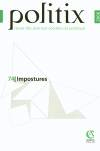 |
LINHARDT D., 2006, «Guerrilla diffusa. Clandestinité, soupçon et provocation dans le conflit entre organisations révolutionnaires subversives et l’Etat ouest-allemand (années 1970)» ,
Politix, (74), p.75-102.
La littérature consacrée au terrorisme met massivement l’accent sur la violence. Il n’y a à cela rien d’étonnant lorsqu’on considère que ce qui fonde l’action terroriste, c’est l’attentat et que l’attentat engage, par définition, l’exercice d’une violence. Cependant, cet état de fait devient problématique dès lors que l’on réduit l’action terroriste au seul usage de la violence. Si la faculté de suspendre l’interdit du recours à la violence est indéniablement un aspect du modèle d’action terroriste, elle ne l’épuise pas. Parmi les aspects qui méritent une plus grande attention, on trouve la faculté des terroristes à agir clandestinement. L’action clandestine n’est pas seulement une condition de la possibilité d’accomplir un attentat ; elle n’est pas seulement au fondement de l’ouverture d’un espace du soupçon qui fait partie intégrante de l’efficacité de l’agir terroriste ; elle se rend également descriptible comme ce qui permet aux groupes terroristes, suivant une logique de provocation, de jeter l’État dans l’arène du conflit. L’exemple empirique est celui des « années de plomb » allemandes. Ce cas offre l’opportunité de décrire pas à pas la manière dont la stratégie du maintien des « apparences normales » des membres de la guérilla urbaine s’est constituée en un problème policier d’abord, en un objet d’âpre débat public ensuite, amenant une mise en cause profonde de l’État – ce qui était précisément l’objectif visé par les groupes clandestins.
Abstract : Literature in the field of terrorism studies outstandingly concentrates on the question of violence. The fact is not surprising as terrorist action is primarily delineated by the attack, and as the attack engages, by definition, the use of violence. However, it is not without being problematic as long as research on terrorist action exclusively focuses on violence. If the ability to suspend the civilizational constraint to restrict oneself to act violently is unquestionably an aspect of terrorist action, it does not exhaust it. Among the aspects which deserve greater attention is, in particular, the competence to act clandestinely. Underground action is not only the condition for the possibility of achieving an attack; it is not only the ground on which relies the creation of a space of the suspicion as part of the effectiveness of terrorist activities; it is also what allows the terrorist groups, according to a logic of provocation, to throw state actors in the arena of the conflict. The empirical evidence relies on an analysis of the German “Red Decade”. The case offers the possibility to describe step by step the way in which the strategy of preservation of “normal appearances” by the members of the urban guerrilla was first constituted in a police problem, and then in a public issue, bringing a major blame onto the state – what was precisely what the clandestine guerilla groups intended. |
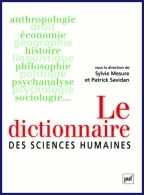 |
LINHARDT D., MUNIESA F., 2006, «Latour Bruno, 1947» ,
in MESURE S., SAVIDAN P., (ed.), Dictionnaire des sciences humaines, Paris, PUF, p.689-690.
Accès au texte » |
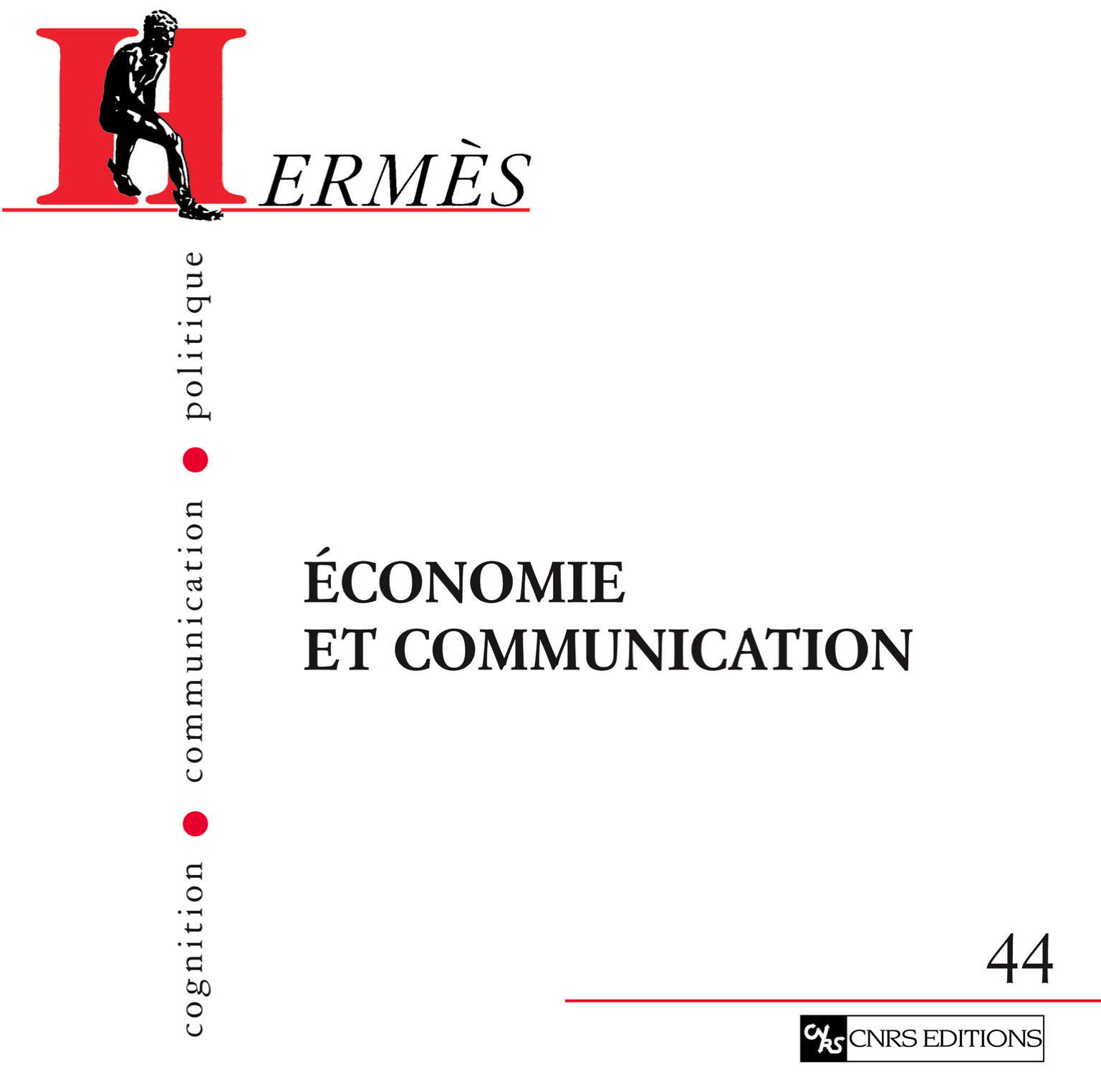 |
MÉADEL C., 2006, «Le marche eBay : qualification croisée des biens et des personnes» ,
Hermès, (44), p.79-84.
Sous quelles conditions se réalise l'ajustement entre l'offre et la demande lorsque le marché bouleverse le jeu des intermédiaires qui s'y consacrent? L'article étudie les dispositifs mis en place sur Internet par la plate-forme d'intermédiation eBay; il met en évidence la centralité du processus de qualification qui définit l'objet matériel, ses parties prenantes et les conditions de l'échange. Il s'articule dans un dispositif sophistiqué et complexe qui permet à la fois au jeu de l'offre et de la demande de s'exercer et à l'intermédiaire de s'abstraire de la transaction. |
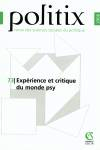 |
MÉADEL C., 2006, «Le spectre "psy" réordonné par des parents d’enfant autiste. L’étude d’un cercle de discussion électronique» ,
Politix, 19 (73), p.52-82.
Comment un collectif de parents d’enfant autiste construit-il sa relation à la psychiatrie ? L’article s’appuie sur les messages d’une liste de discussion électronique pour montrer comment et avec quels outils un collectif à distance tente d’imposer sa propre définition de l’autisme à un univers psychiatrique qu’il estime dans sa grande majorité inefficace, voire dangereux. On voit comment la liste se construit comme un instrument de transformation des relations entre les familles et les professionnels, en luttant contre la culpabilisation des parents, en explicitant les hypothèses étiologiques de l’autisme, et en faisant la promotion d’un modèle éducatif de prise en charge des enfants. Il s’agit donc moins de rompre avec la psychiatrie que d’en proposer une autre définition, débarrassée en particulier de ses approches psychanalytiques. Pour cela, la liste mène un triple combat : moral en luttant contre une approche jugée malfaisante, cognitive en soutenant les recherches organiques, et politique en s’opposant aux institutions psychiatriques.
How does a group of parents of autistic children figure out their relation to psychiatry? This article draws on original material: patients' contributions to discussion group on the Internet. It highlights how a distant collective tries to lay down its own definition of autism to the psychiatric environment, considering that this environment is mostly ineffective & maybe dangerous. We see that the discussion group modifies the relations between parents & health professionals, clarifying the etiologic hypothesis of autism, & encouraging an educative model of child's care. The discussion group does not break with psychiatry, but tries to build another definition, excluding psychoanalytic approaches. Thus, the discussion group leads a triple struggle: moral when fighting against a prejudicial approach, cognitive when supporting organic researches & politic when confronting to psychiatric institutions. |
| |
MÉADEL C., MARZOUKI M., 2006, «La corégulation d’internet comme instrument d’action publique. Démocratie délibérative ou organisation des pouvoirs ?» ,
in BRATOSIN S., BERTELLI D., (ed.), Démocratie participative en Europe. Actes du colloque LERASS, novembre 2006, Toulouse, LERASS/Université Paul Sabatier-Toulouse 3, p.27-33. |
 |
MÉADEL C., MASSIT-FOLLÉA F., 2006, «Consumer Models in the Encounter between Supply and Demand of Electronic Administration» ,
Social Informatics: An information society for all? In Rememberance of Rob Kling. Seventh International Conference on Human Choice and Computers (HCC7), IFIP TC 9, Springer. 2006. |
| |
MORAY N., CLARYSSE B., WRIGHT M., MUSTAR P., LOCKETT A., 2006, «Institutional Origin and Resource Endowments to Science-Based Entrepreneurial Firms: An European Exploration» ,
Frontiers of Entrepreneurship Research 2005, Proceedings of the Twenty-Fifth Annual Entrepreneurship Research Conference, 2006. |
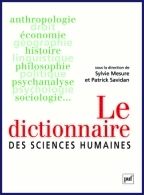 |
MUNIESA F., LINHARDT D., 2006, «Acteur-réseau (Théorie de l’)» ,
in MESURE S., SAVIDAN P., (ed.), Dictionnaire des sciences humaines, Paris, PUF, p.4-6.
Accès au texte » |
| |
MUSIANI F., 2006, «What’s Next for the Internet? Perspectives after the Internet Governance Forum Inaugural Meeting» ,
United Nations Chronicle Online Edition, december 2006 |
| |
MUSIANI F., 2006, «Migrant’s Children Rights: Working to Fill the Gap» ,
United Nations Chronicle Online Edition, XLIV
4 |
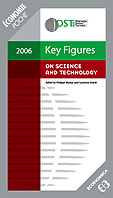 |
MUSTAR P., ESTERLE L., 2006, Les chiffres-clés de la science et de la technologie ,
Paris, Economica.
L’ouvrage a pour objet de rassembler des indicateurs offrant une vue d'ensemble du monde de la science et de la technologie. Il propose un choix d'indicateurs essentiels présentés sous forme d'une série de « photographies » prises à l'échelon international, national ou régional. Ces indicateurs, d'accès aisé pour le « non spécialiste », permettent de situer les forces et les faiblesses des pays, des régions ou des secteurs industriels. Par un jeu de questions-réponses, le lecteur, qu’il soit responsable d’une structure de recherche publique ou privée au niveau national ou régional, chercheur, étudiant ou encore journaliste, trouvera ici un tableau d’ensemble synthétique concernant les budgets, les personnels de recherche, les coopérations, les thèses, les publications scientifiques et les brevets. |
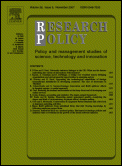 |
MUSTAR P., RENAULT M., COLOMBO M., PIVA E., FONTES M., LOCKETT A., WRIGHT M., CLARYSSE B., MORAY N., 2006, «Conceptualising the heterogeneity of research-based spin-offs: A multidimensional taxonomy» ,
Research Policy, (35), p.289-308.
Accès au texte »
Research-based spin-offs (RBSOs) have become an important aspect of the technology transfer process. Emanating from what is conventionally a non-commercial environment, RBSOs pose major challenges if they are to realise their potential to meet the objectives of their founders and the parent research organisations (PROs) from which they emerge. An important issue is to understand the heterogeneity of RBSOs. This paper reviews the literature on RBSO typologies to develop a taxonomy of RBSOs. We identify common themes in relation to these typologies in relation to (1) spin-off creation and (2) spin-off development. The dimensions that differentiate between firms are the type of resources, the business model and the institutional link. We identify gaps in current typologies in order to propose avenues for future conceptual and empirical research. |
| |
PONTILLE D., 2006, «Qu’est-ce qu’un auteur scientifique?» ,
Sciences de la Société, (67), p.77-93.
Accès au texte »
Bien que de nombreux travaux interrogent la notion d’auteur, celle-ci reste très peu travaillée en science. Avec des articles parfois signés par plus d’une cinquantaine de noms, l’activité scientifique est pourtant un site stratégique pour étudier l’auteur en général et pour spécifier les attributs de l’auteur scientifique. Ce texte montre que l’aspect collectif du travail scientifique suppose plusieurs déplacements par rapport à la conception littéraire et juridique de l’auteur qui clôt l’énonciation sur une personne individuelle. À partir d’une perspective attentive à l’action, l’analyse insiste sur la nécessaire dissociation de certains actes généralement considérés comme concomitants, voire équivalents : « écrire », « signer » et « être auteur ».
Although a lot of studies question the notion of author, very little attention had been paid to scientific authorship. With articles signed sometimes by more than fifty names, scientific activity is however a strategic site to examine the author in general and to specify the attributes of the scientific author. This text shows that the collective side of scientific work require several shifts in comparison with the literary and legal conception of the author that close enunciation on a singular individual. From a standpoint focuses on action, the analysis claims the necessary dissociation of some acts that are generally considered as concomitant, indeed similar: “to write”, “to sign”, and “to be an author”. |
| |
PONTILLE D., 2006, «Produire des actes juridiques» ,
in BIDET A., BORZEIX A., PILLON T., ROT G., VATIN F., (ed.), Sociologie du travail et activité, Toulouse, Octares, p.113-126.
Accès au texte »
Ce texte interroge la force des écrits juridiques et propose une théorisation de la notion d'acte en sociologie. L'analyse porte sur les épreuves successives qui transforment une simple feuille de papier en pièce authentique. Pour inscrire l'action juridique dans un document, un triple travail est nécessaire : sur le contenu pour engager des parties, sur l'argumentation pour organiser un jugement autour d'une décision, et sur le support pour produire un objet ayant une capacité à faire agir. |
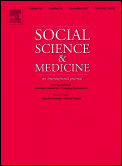 |
RABEHARISOA V., 2006, «From representation to mediation: The shaping of collective mobilization on muscular dystrophy in France» ,
Social Science & Medicine, (62), p.564-576.
Accès au texte »
How, and to what extent, do patient organisations renew traditional forms of social participation and protest? This question is examined, drawing on a socio-historical case study of the Association Française contre les Myopathies—French Muscular Dystrophy Organisation (AFM). The originality of the AFM is that it has not been content to endorse the classic role of representation of people with muscular dystrophy (MD) and their families. It has also articulated and structured different social spaces that allow people suffering from genetic diseases and severe disabilities to be considered as fully-fledged human beings, persons, and citizens within those spaces. Based on quantitative data and methods, this paper aims to characterize this reconfiguration of social spaces that the AFM has undertaken. My contention is that it has given shape to a different form of collective mobilization, one in which the patient organisation is a mediator between different social actors, as much as a patients’ representative. It helps a new issue, here MD, to emerge so that the largest possible collective designate it as a general public concern. As we shall discuss, this renews the question of patients’ collective identity and citizenship. |
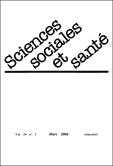 |
RABEHARISOA V., 2006, «Vers une nouvelle forme de travail médical ? Le cas d’une consultation en psychiatrie génétique de l’autisme» ,
Sciences Sociales et Santé, 24 (1), p.83-114.
Accès au texte »
Cet article analyse une série de consultations et de staffs menés conjointement par des pédopsychiatres et des pédiatres-généticiens pour des adolescents et des jeunes adultes qui ont été diagnostiqués autistes dans leur enfance. Ces consultations et ces staffs ont pour objectif de revenir sur le diagnostic de ces patients. L’article montre que, au travers de ce protocole, se met en place un travail médical original qui consiste à suspendre le jugement, au moins momentanément, pour porter le regard sur le corps du malade ou, plus précisément, sur ses manifestations sensibles dont il est a priori difficile de dire si elles relèvent de la psyché ou du soma. Cela conduit les professionnels impliqués dans ce dispositif clinique à s’interroger sur le niveau de pertinence qui peut et qui doit être accordé au fait biologique dans son articulation avec le fait psychiatrique. Concrètement, cette interrogation se traduit, dans la pratique clinique, par une attention forte aux investigations qu’il s’agit d’effectuer pour conclure ou au contraire aller plus avant dans l’exploration de la situation du patient. On montre, en conclusion, que cette forme de travail médical, qu’on propose d’appeler « médecine d’exploration », se situe autant à distance d’une version réductionniste de la génétique que d’une version relativiste du « bio-psycho-social ».
This article draws on ethnographic observations of a series of medical consultations & staffs which gather child psychiatrists & paediatric-geneticists. Its objective is to take over the diagnostic work for adolescents & young adults who had been diagnosed with "autism" in their childhood. The author shows that an original medical work is taking shape. It consists of inquiring about the patient's body troubles, whose psychiatric versus organic origins are not easy to pin down. Child psychiatrists & paediatric-geneticists are thus forced to question the articulation between biological & psychiatric facts, & the very nature of investigations that should be planned to highlight each patient's situation. The author's contention is that this form of medical investigation stands as far from genetic eductionism, as from "bio-psycho-social" relativism. |
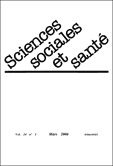 |
RABEHARISOA V., 2006, «Editorial. Pratiques et ontologies en psychiatrie génétique» ,
Sciences Sociales et Santé, 24 (1), p.7-20.
Accès au texte »
Ces dernières années, de nombreux gènes possiblement impliqués dans des maladies mentales ont été découverts. L’annonce, souvent très médiatisée, de ces découvertes, suscite des craintes quant à la « généticisation » de la psychiatrie. À focaliser ainsi l’attention sur les gènes, ne risque-t-on pas d’oublier le caractère complexe des maladies mentales ? D’occulter le rôle des facteurs psychologiques, mais aussi sociaux et environnementaux dans le développement de ces pathologies ? De réduire les sciences de l’esprit à la biologie du cerveau ? De ruiner les efforts de recherche en psychopathologie au profit de celle, plus visible, en génétique ? De privilégier la chasse aux gènes sur le travail difficile de diagnostic et de prise en charge des malades « réels » ? De résumer l’histoire du patient à une simple affaire de défaillance de ses gènes ? (…) Ces questions ne s’imposent pas uniquement de l’extérieur de la psychiatrie génétique. Elles structurent les controverses entre les spécialistes et les prises de position des associations de familles. Surtout, elles sont présentes dans les réflexions menées par les professionnels sur leurs propres pratiques. L’importance du travail réflexif en psychiatrie génétique s’explique en grande partie par les conflits qui ont émaillé l’histoire des rapports entre la psychiatrie et la biologie, la génétique ravivant, pour la psychiatrie, la théorie des dégénérescences (Coffin, 2003) contre laquelle elle s’est constituée. La prolifération d’entités, de concepts et de principes explicatifs qui, à un titre ou à un autre, sont issus des connaissances et des outils de la génomique, soulève, à nouveaux frais, des interrogations relatives à l’hérédité mentale et au déterminisme génétique. (…) C’est autour de ces entités que s’articulent, en pratique, les interrogations sur le statut de la maladie, du malade et de sa famille. Or, la mise en perspective de ces entités et de ces interrogations dans le cadre d’une analyse des pratiques est encore embryonnaire en sciences sociales. C’est ce à quoi ce numéro spécial voudrait contribuer. |
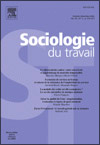 |
RÉMY C., 2006, «Pratique sacrificielle et activité scientifique. Enquête ethnographique dans un laboratoire de physiologie» ,
Sociologie du travail, 48 (2), p.226-239.
Accès au texte »
Cet article présente les résultats d'une enquête ethnographique, menée dans un laboratoire de physiologie animale, concernant la réalisation de l'acte de mise à mort des cobayes expérimentaux. Pour évoquer celui-ci, les acteurs utilisent le terme de « sacrifice ». En partant du sacrifice religieux décrit par les sociologues, nous cherchons à montrer comment l'usage de ce terme dans la situation d'expérimentation n'est pas simplement métaphorique, mais renvoie bien, par le biais de l'actualisation d'un ordre de sens spécifique, à une « pratique sacrificielle » de la mise à mort des cobayes. Ainsi, la pratique d'expérimentation semble pouvoir aller de pair avec un traitement « respectueux » des animaux soumis aux manipulations.
Abstract : Experimental physiologists use the word “sacrifice” to describe the putting to death of laboratory specimens. Drawing on observations of laboratory practices and on religious sacrifices described by sociologists, the argument is made that, beyond being a mere metaphor, “sacrifice” refers to a practice that activates a specific set of meanings. In thi way, experimentation can be conducted while, at the same time, treating laboratory animals with respect. |
| |
TEIL G., MUNIESA F., 2006, «Donner un prix. Observations à partir d’un dispositif d’économie expérimentale» ,
Terrains & Travaux, (11), p.222-244.
Accès au texte » |
 |
LATOUR, B., WEIBEL, P., 2005, Making Things Public. Atmospheres of Democracy ,
Karlsruhe, Cambridge (MA), ZKM, MIT Press. |
 |
AKRICH M., CHABAUD-RYCHTER D., GARDEY D., 2005, «Introduction.» ,
Cahiers du genre, Politiques de la représentation et de l'identité. Recherches en gender, cultural, queer studies (38), p.5-14.
Accès au texte » |
| |
AKRICH M., MÉADEL C., 2005, «De la consommation de programme à la carte» ,
France Telecom. |
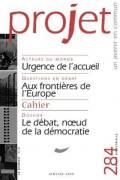 |
BARTHE Y., 2005, «Discuter des choix techniques» ,
Projet, (284), p.80-84.
Accès au texte » |
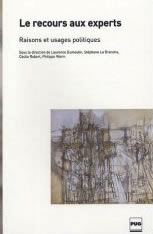 |
BARTHE Y., GILBERT C., 2005, «Impuretés et compromis de l’expertise, une difficile reconnaissance. À propos des risques collectifs et des situations d’incertitude» ,
in DUMOULIN L., LA BRANCHE S., ROBERT C., WARIN P., (ed.), Le recours aux experts. Raisons et usages politiques, Grenoble, Presses universitaires de Grenoble, p.43-62.
A partir d’une discussion d’un certain nombre de travaux actuels sur les pratiques d’expertise dans le domaine des risques collectifs, cet article suggère quelques déplacements qui sont autant de pistes de réflexion visant à rompre avec les analyses les plus convenues sur ces questions. Un premier déplacement concerne le statut accordé au modèle abstrait et idéalisé de l’expertise scientifique (neutralité, indépendance, etc.) : plutôt que de se contenter de dénoncer les écarts observables entre ce modèle et les pratiques concrètes de l’expertise scientifique, nous proposons de l’analyser également comme une ressource mobilisée par les acteurs eux-mêmes afin de maintenir leur identité professionnelle et la spécificité de leur rôle, et ce en dépit des impuretés et transgressions diverses qui caractérisent ce genre de pratiques. Le deuxième déplacement consiste à envisager l’expertise scientifique dans le domaine des risques collectifs, et plus particulièrement dans les situations d’incertitude, comme une recherche de plus en plus explicite de compromis entre savoirs techniques, règles juridiques, et intérêts politiques et économiques. |
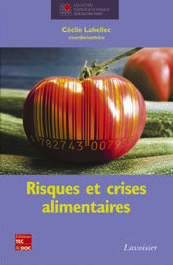 |
BARTHE Y., JOUZEL J., 2005, «Risque, incertitude et pacification des conflits» ,
in LAHELLEC C., (ed.), Risques et crises alimentaires, Paris, Tec & Doc, p.207-216. |
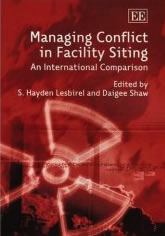 |
BARTHE Y., MAYS C., 2005, «Communication and Information: Unanticipated Consequences in France’s Underground Laboratory Siting Process» ,
in LESBIREL S., SHAW D., (ed.), Managing Conflict in Facility Siting. An International Comparison, Cheltenham, Edward Elgar, p.155-178. |
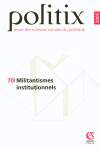 |
BARTHE Y., ROBERT C., 2005, «Editorial et coordination du numéro "Militantismes institutionnels".» ,
Politix, (70), p.3-6.
Présentant les résultats d’une série d’enquêtes de terrain menées sur des expériences de militantisme institutionnel, ce dossier souligne la diversité des configurations, des investissements dont peuvent faire l’objet les institutions, des opportunités qu’elles offrent et des recompositions qu’elles favorisent. Loin d’une conception univoque de ces rapprochements, il s’agit de rendre compte des éventuelles contradictions auxquelles ils soumettent les militants comme, du reste, les lieux et dispositifs dans lesquels ces derniers se reconvertissent, mais aussi des marges de manœuvre et espaces de jeux que conservent les acteurs dans ces configurations |
| |
BENVEGNU N., 2005, «Au-delà de la technique : l’introduction d’Internet dans le répertoire de mobilisation éléctorale de candidats en campagne. Le cas des élections legislatives de juin 2002» ,
Terminal, (92), p.15-25. |
| |
BEUNZA D., MUNIESA F., 2005, «Listening to the Spread Plot» ,
in LATOUR B., WEIBEL P., (ed.), Making Things Public: Atmospheres of Democracy, Cambridge MA, MIT Press, p.628-633. |
| |
CALLON M., 2005, «Why virtualism paves the way to political impotence. A reply to Daniel Miller’s critique of The Laws of the Markets» ,
Economic Sociology. European Electronic Newsletter, 6 (2), p.3-20.
Accès au texte »
In 2002, Daniel Miller opened a controversy by contrasting the realism of his virtualist program with the unrealism of my program which defends the ‘performativity of economics’- thesis (Miller 2002 - see footnote for an abstract of Miller's article). His critique raises a number of fundamental theoretical questions. To clarify the debate I have chosen to start with these questions and present what I see as the core assumptions in the program presented in The Laws of the Markets (hereafter referred to as LoM) (§1). I then show (§2) that on each of these core assumptions Miller’s positions differ from mine. Finally (§3), I explain why, unlike Miller, I see realism in my program and unrealism in his. |
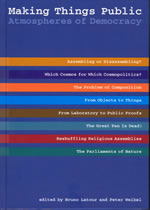 |
CALLON M., 2005, «Disabled Persons of All Countries, Unite!» ,
in LATOUR B., WEIBEL P., (ed.), Making Thinks Public. Atmospheres of Democracy, Karlsruhe/Cambridge (MA) et Londres, ZKM/MIT Press, p.308-313. |
 |
CALLON M., BARTHE Y., 2005, «Décider sans trancher. Négociations et délibérations à l’heure de la démocratie dialogique» ,
Négociations, (4), p.115-129.
Accès au texte » |
| |
CALLON M., MUNIESA F., 2005, «Economic markets as calculative collective devices» ,
Organization Studies, 26 (8), p.1229-1250.
How to address empirically the calculative character of markets without dissolving it? In our paper, we propose a theoretical framework that helps to deal with markets without suspending their calculative properties. In the first section, we construct a broad definition of calculation, grounded on the anthropology of science and techniques. In the next sections, we apply this definition to three constitutive elements of markets: economic goods, economic agents and economic exchanges. First, we examine the question of the calculability of goods: in order to be calculated, goods must be calculable. In the following section, we introduce the notion of calculative distributed agencies to understand how these calculable goods are actually calculated. Thirdly, we consider the rules and material devices that organize the encounter between (and aggregation of) individual supplies and demands, i.e. the specific organizations that allow for a calculated exchange and a market output. Those three elements define concrete markets as collective organized devices that calculate compromises on the values of goods. In each, we encounter different versions of our broad definition of calculation, which we illustrate with examples, mainly taken from the fields of financial markets and mass retail. |
| |
CHINCHILLA I., MUNIESA F., 2005, «La controversia como herramienta proyectual» ,
in HERNÁNDEZ AJA A., (ed.), La sostenibilidad en el proyecto arquitectónico y urbanístico, Madrid, IAU+S, p.278-281.
Accès au texte » |
| |
COCHOY F., GRANDCLÉMENT C., 2005, «Publicizing Goldilocks’ Choice at the Supermarket: The Political Work of Shopping Packs, Carts and Talk» ,
in LATOUR B., WEIBEL P., (ed.), Making Things Public. Atmospheres of Democracy, Karlsruhe et Cambridge: MA / Londres, ZKM – The MIT Press, p.646-659. |
| |
FASSA F., 2005, «Un parcours en contreproint entre les sciences et les techniques, le féminisme et le genre. Entretien avec Akrich, Madeleine» ,
Nouvelles Questions Féministes, 24 (1), p.96-105. |
| |
GRAMAGLIA C., 2005, «River Sentinels. Finding a Mouth for the Lot River» ,
in LATOUR B., WEIBEL P., (ed.), Making Thinks Public. Atmospheres of Democracy, Karlsruhe /Cambridge (MA) et Londres, ZKM / MIT Press, p.478-481. |
| |
GRAMAGLIA C., 2005, «Un site dans la tourmente : controverse autour d’une usine de batteries au plomb» ,
in RÉMY E., NOVEMBER V., D'ALESSANDRO-SCARPARI C., CHARVOLIN F., (ed.), Espaces, savoirs et incertitudes, Paris, Ibis Press, p.87-106. |
| |
GRANDCLÉMENT C., COCHOY F., 2005, «Dévoiler ou emballer ? Socio-scénographie du packaging» ,
in ALIZART M., KIHM C., (ed.), Fresh Théorie, Paris, Editions Léo Scheer, p.114-145. |
 |
HENNION A., 2005, «Public de l’oeuvre, oeuvre du public ?» ,
L'Inouï. revue de l'IRCAM, (#1), p.64-68.
Accès au texte »
Le public, ce n’est pas l’audience, une addition de chiffres de fréquentation. C’est ce qui fait que l’œuvre est œuvre, parce qu’elle est œuvre pour les autres. Ainsi compris, le public ne peut se réduire à être le repoussoir dont la création devrait indéfiniment se libérer, il est une fiction fondatrice, qui a toujours été au cœur du processus créateur. Il est aussi, pour un sociologue qui s’intéresserait aussi (ou enfin...) à l’objet de la musique, ce qui permet de proposer de celle-ci une analyse pragmatique, à travers ses effets au sens fort : ce qu’elle fait et fait faire, et ce que son usage lui fait et lui fait faire. Ou la musique comme somme des procédures et des dispositifs inventés pour rendre présent un public à l’œuvre... Non pas autour d’elle : en elle. |
 |
HENNION A., 2005, «Pragmatics of Taste» ,
in JACOBS M., WEISS HANRAHAN N., (ed.), The Blackwell Companion to the Sociology of Culture, Oxford, Blackwell, p.131-144.
Accès au texte »
In this chapter we consider the problems facing the sociology of culture with respect to taste. We us primarily to the case of music and its various genres but also include comparisons with other objects of passion such as cookery and wine, or sport. The aim of our research on different forms of attachment was to steer the sociology of taste away from a critical conception that had become dominant, in which taste is conceived only as a passive social game, largely ignorant about itself. How, without endorsing the concomitant reduction of real practices to their hidden social determinants, can we incorporate sociology's contribution? Various studies have proved the over-determined nature of tastes, their function as markers of social differences and identities, their ritualized functioning, relations of domination between high culture and popular culture, etc. (Hoggart, 1957, Toffler 1965, Williams 1982, Bourdieu 1984, Mukerji & Schudson 1991, Lamont & Fournier 1992, Crane 1994). But taste is first and foremost a problematical modality of attachment to the world. In terms of this pragmatic conception it can be analysed as a reflexive activity, "corporated", framed, collective, equipped and simultaneously producing the competencies of an amateur and the repertoire of objects that she/he values. |
| |
HENNION A., 2005, «Cacothanasies. Le sociologue, l’opinion politique et la mort» ,
in BARBE N., JALLON E., (ed.), Vous avez dit "âges de la vie" ? Journées d'études 24 et 25 novembre 2004. Musées départementaux Albert et Félicie Demard, Vesoul, Conseil Général de la Haute-Saône., p.268-287.
Accès au texte »
En quoi le fait d’être affecté soi-même, comme dirait Jeanne Favret (Favret-Saada 1997), affecte-t-il le sociologue dans ce qu’il écrit ? Réciproquement, en quoi et à quel moment de cette histoire malheureusement toujours installée dans une certaine durée le fait d’être sociologue a-t-il pu intervenir dans ma façon de la vivre ? Un sociologue vit-il autrement une souffrance personnelle, peut-il en témoigner autrement, et une telle expérience change-t-elle sa sociologie ? Je voudrais profiter de l’occasion qui m’est offerte de revenir avec un peu de recul sur ces interventions et sur ces liens, que d’ordinaire on interroge peu. Non pour procéder à une auto-analyse mais pour poser quelques questions : sur les partages trop simples entre émotion et pensée, entre personne privée et publique, entre témoignage et savoir professionnel ; et surtout, sur la nature des débats et la passion collective que soulève la mort aujourd’hui. |
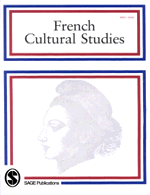 |
HENNION A., 2005, «Musiques, présentez-vous ! Une comparaison entre le rap et la techno» ,
French Cultural Studies, 16 (2), p.121-134.
Accès au texte »
Les musiques nouvelles sont déjà très fortement accompagnées de discours sociaux – jeunesse, révolte, immigration, banlieue, violence, fête, drogue, etc. Au lieu de critiquer et de reformuler pour notre compte ces commentaires, nous avons tenté de mettre en scène leur efficace, en montant une experience collective, destinée à comparer en situation la façon dont le rap et la techno pouvaient ‘se’ présenter: au lieu de prétendre déterminer depuis telle ou telle discipline le sens et le contenu d’une musique, il s’agissait, sur un mode pragmatique, de voir se combiner et se co-construire les éléments divers – discursifs et gestuels, corporels et musicaux, scéniques et idéologiques (en particulier sur le plan du genre, de la violence, des médias) – qui ‘font’ le rap ou la techno. |
 |
HENNION A., 2005, «Pour une pragmatique du goût» ,
Working paper.
Accès au texte »
Développe et discute un cadre théorique pour l'étude du goût d'un point de vue pragmatiste.
Develops and discusses a theoretical framework for the study of taste from a pragmatist point of view. |
| |
HENNION A., 2005, «D’une sociologie de l’amateur à une pragmatique de l’attachement» ,
Le théâtre des amateurs. Un théâtre de société(s). Actes du colloque international des 24,25 et 26 septembre 2004, Rennes, Rennes, Théâtres en Bretagne, p.127-132.
Accès au texte »
Du point de vue du sociologue, les amateurs n’ont rien d’une simple sous-population nouvelle à ajouter aux différents domaines d’intérêt de la sociologie de la culture. Selon moi, ce qu’ils appellent et permettent à la fois, c’est un véritable renversement de problématique, en redonnant une épaisseur, un contenu à l’amour de l’art. Il s’agit bien de remettre au centre de la sociologie de l’art ou du théâtre, l’enjeu même de ces pratiques - et vous savez le lourd passé sociologique de ce mot enjeu, que Bourdieu a rapporté à son synonyme étymologique latin : enjeu et illusio, c’est pareil. L’illusio, c’est-à-dire ce en quoi les gens croient et que le sociologue critique leur révèle comme simple effet de leur croyance... Il était tout à fait opportun de critiquer l’idée d’une œuvre absolue, détenant seule les clés de son pouvoir sur nous. Mais rien n’oblige pour autant à rabattre l’idée féconde et juste d’un objet incertain, à faire advenir ensemble, enjeu d’une production commune de nos intérêts, sur la construction arbitraire d’un fétiche dont la force ne tiendrait qu’à notre collectif et disparaîtrait si nous savions qu’il ne tient que de notre effort pour le faire tenir. |
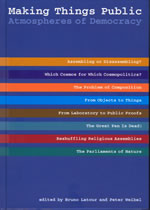 |
HENNION A., TEIL G., VERGNAUD F., 2005, «Questions of Taste» ,
in LATOUR B., WEIBEL P., (ed.), Making Things Public. Atmospheres of Democracy, Karlsruhe/Cambridge (MA) et Londres, ZKM/MIT Press, p.670-677. |
| |
KESSOUS E., MALLARD A., MOUNIER C., 2005, «"A la découverte du client". L’engagement marchand dans différents formats de la relation commerciale» ,
Economies et Sociétés, "Economie et gestion des services", 7 (11-12), p.2067-2086. |
| |
LATOUR B., 2005, «What is Given in Experience?» ,
Boundary 2, 32 (1), p.223-237. |
| |
LATOUR B., 2005, «From Realpolitik to Dingpolitik or How to Make Things Public» ,
in LATOUR B., WEIBEL P., (ed.), Making Things Public. Atmospheres of Democracy, Karlsruhe, Cambridge (MA), ZKM, MIT Press, p.14-31. |
| |
LATOUR B., 2005, «Qu’est-ce qu’un style non moderne ?» ,
in PAINI D., (ed.), La parenthèse du moderne. Actes du colloque des 21-22 mai 2004, "l'art moderne, rupture ou parenthèse dans l'histoire de l'art ?", Paris, Centre Pompidou, p.31-46. |
| |
LATOUR B., 2005, «En tapotant légèrement sur l’architecture de Koolhaas avec un bâton d’aveugle ...» ,
L'architecture d'aujourd'hui, p.70-73.
361 |
 |
LATOUR B., 2005, Reassembling the social. An Introduction to Actor-Network-Theory ,
Oxford, Oxford University Press. |
| |
LATOUR B., LINHARDT D., 2005, «L’objet de la sécurité routière. Produire de nouvelles connaissances : de l’assemblage à l’assemblée» ,
|
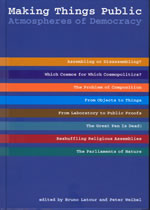 |
LINHARDT D., 2005, «The Trials of the World - a fiction» ,
in LATOUR B., WEIBEL P., (ed.), Making Things Public. Atmospheres of Democracy, Cambridge (MA), Karlsruhe, ZKM and MIT-Press, p.xxx-xxx. |
| |
LINHARDT D., 2005, «La question infomationnelle. Eléments pour une sociologie politique des fichiers de police et de population en Allemagne et en France (années 1970 et 1980)» ,
Déviance et société, 29 (3), p.259-272.
S'il est reconnu que l'installation d'un principe d'investigation, de surveillance et de contrôle au coeur-même de l'Etat a un caractère problématique, c'est en raison de sa constitution comme problème politique. Or, ce processus peut être assez précisément daté : il est un fait des années 1970, lorsqu'on assiste à une authentique politisation de cet ensemble de phénomènes que l'on qualifiait alors de « contrôle social ». L'article propose une analyse exploratoire de ce processus à travers la question de la protection des données. La comparaison entre la France et l'Allemagne permet de montrer que si dans ces deux pays, à l'image de toutes les démocraties libérales, un processus similaire apparaît rétrospectivement avoir conduit à des résultats similaires, il n'en reste pas moins que le chemin parcouru s'avère dans chaque cas correspondre à une épreuve singulière.
Abstract : The problematic character of a principle of investigation, surveillance and control entrenched in the heart of the state is nowadays widely recognized. The reason is that it has been formerly constituted as a public problem. This process can be precisely dated: it is a fact of the 1970s, when came about an authentic politization of the set of phenomena described as « social control». The article proposes an exploratory analysis of this process through the question of data protection. The comparison between France and Germany makes it possible to show that if in these two countries, as in most liberal democracies, a similar process retrospectively appears to have led to similar results, it is not the less true that a specific path proves in each case to correspond to a singular test. |
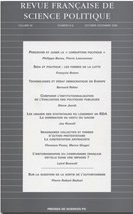 |
LINHARDT D., MOREAU DE BELLAING C., 2005, «Légitime violence ? Enquêtes sur la réalité de l’Etat démocratique» ,
Revue française de science politique, 55 (2), p.269-298.
L’État, en tant qu’objet de recherche s’est trouvé au cœur d’innombrables controverses dont la caractéristique commune est de poser la question de sa réalité. A partir de débats récents ayant traversé la science politique, cet article propose une approche qui tiendrait ensemble plusieurs impératifs a priori contradictoires permettant une thick description de l’État. Pour ce faire, il opte pour une définition classique de l’État, celle de Max Weber, et la met à l’épreuve d’un double terrain : le travail quotidien d’une instance de contrôle interne de la Police Nationale d’une part et l’affrontement entre l’État Ouest-Allemand et la Fraction Armée Rouge dans les années 1970. La confrontation de ces deux terrains aussi hétérogènes rendue possible par l’utilisation d’outils méthodologiques communs montre alors de quoi concrètement est fabriquée la force légitime d’un État de droit.
Abstract : (The legitimacy of violence ? An inquiry into a democratic state.) As a object of research the state is the center of many controversies that all share the issue of its reality. Drawing on recent debates in political science, this article aims at setting up an approach that holds together several a priori contradictory constraints, making possible a thick description of the state. The authors refer to the classical Weberian definition of the state and put it to the test on two empirical field works : the daily work of a national police internal control unit on the one hand, and the confrontation of the West-German state and the Red Army Fraction in the 1970s on the other. In order to analyse the data, the authors use a common methodology showing what the strength and the legitimacy of the democratic state are concretely made of. |
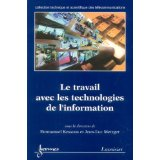 |
MALLARD A., 2005, «La sociabilité téléphonique au travail: le cas des Très Petites Entreprises» ,
in METZGER J., (ed.), Le travail avec les technologies de l'information, Paris, Hermes, p.97-112. |
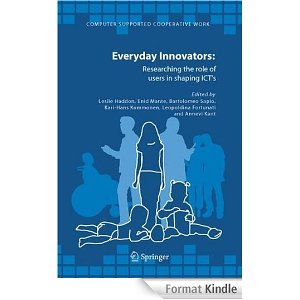 |
MALLARD A., 2005, «Following the emergence of unpredictable uses? New stakes and tasks for the social scientific understanding of ICT uses» ,
in HADDON L., MANTE E., SAPIO B., KOMMONEN K., FORTUNATI L., KANT A., (ed.), Everyday Innovators, Researching the Role of Users in Shaping ICTs, Dordrecht, Springer, p.39-53. |
| |
MARCHAL E., MELLET K., RIEUCAU G., 2005, «Profiler pour mieux apparier : activité des sites internet et transformation des offres d’emploi» ,
in BUREAU M., MARCHAL E., (ed.), Au risque de l'évaluation : salariés et candidats soumis aux aléas du jugement, Lille, Les 2ditions du Septentrion, p.203-227. |
| |
MÉADEL C., 2005, «Intervention» ,
Colloque International Prospective de l'internet, Institut Destrée. 2005. |
| |
MILLO Y., MUNIESA F., PANOURGIAS N., SCOTT S., 2005, «Organised detachment: Clearinghouse mechanisms in financial markets» ,
Information and Organization, 15 (3), p.229-246.
Accès au texte » |
| |
MUNIESA F., 2005, «Contenir le marché : la transition de la criée à la cotation électronique à la Bourse de Paris» ,
Sociologie du travail, 47 (4), p.485-501.
Accès au texte » |
| |
MUNIESA F., 2005, «Goods/commodities» ,
in BECKERT J., ZAFIROVSKI M., (ed.), International encyclopedia of economic sociology, London, Routledge, p.311-312.
Accès au texte » |
| |
MUNIESA F., 2005, «Advertising» ,
in BECKERT J., ZAFIROVSKI M., (ed.), International encyclopedia of economic sociology, London, Routledge, p.5-6. |
| |
MUNIESA F., LUQUE E., CHINCHILLA I., JAQUE A., 2005, «Ejercicios de empirismo conceptual en arquitectura» ,
AIBR: Revista de Antropología Iberoamericana, (sp. iss. Nov-Dec), p.http://www.aibr.org.
Accès au texte » |
| |
PONTILLE D., 2005, «Commerce scientifique et valeurs professionnelles: l’économie des pratiques de signature» ,
Sciences de la Société, (66), p.93-109.
Accès au texte »
Depuis une trentaine d’années, de nombreux travaux ont montré la place croissante que tiennent le marché et la capitalisation des connaissances dans la production scientifique. Cette marchandisation est généralement perçue comme contraire aux valeurs académiques qui promulguent la recherche désintéressée, le don et la non propriété. Pourtant, l’analyse de la signature des articles scientifiques proposée dans ce texte oriente vers une autre direction. L’économie des pratiques de signature soutient, au sein même de la recherche académique, plusieurs régimes d’échange qui tirent leur pertinence l’un de l’autre. La « science » apparaît alors moins comme une sphère autonome, opposée au « marché », que comme le lieu de tensions entre différents formes de commerce avec les personnes et les choses. Cette perspective révèle aussi la place particulière attribuée au « travail » dans les activités scientifiques.
A large set of studies have showing the increasing capitalization of scientific knowledge for thirty years. This marketization is generally perceived as opposed to academic values that promote disinterested research, gift and non-property. Nevertheless, the analysis of scientific authorship proposed in this text involves another standpoint. The economy of authorship practices supports several exchange regimes that are complementary into the academy itself. Then “science” appears less as an autonomous sphere, opposed to the “market”, than as a space of strains between different forms of dealings with persons and things. This point of view also reveals the particular place devoted to the “work” in scientific activities. |
 |
PONTILLE D., 2005, «La signature scientifique» ,
La Vie de la Recherche Scientifique, (360), p.48-50. |
| |
PONTILLE D., 2005, «Articles scientifiques: le dessous des signatures» ,
Pour la Science, (327), p.58-61. |
| |
RABEHARISOA V., ROLAND-MANUEL G., 2005, «Nouvelle forme de rapprochement entre la génétique et la psychiatrie dans la recherche et la prise en charge de l’autisme. Description et analyse du fonctionnement et des effets d’une expérience de consultations pluridiscilianires» ,
CSI/Fondation de France. |
 |
RÉMY C., 2005, «Quand la norme implicite est le moteur de l’action» ,
Déviance et Société, 29 (2), p.103-112.
Accès au texte »
Cet article analyse l’activité sociale au sein d’un abattoir, lieu qui a fait l’objet d’un processus d’occultation depuis le début du XIXe siècle. Au-delà du critère d’institutionnalisation des normes, nous cherchons à nous demander si celles-ci sont forcément explicitées par les acteurs, alors même qu’elles sont mobilisées par eux. L’observation ethnographique d’un abattoir a permis de découvrir que la production de l’action en son sein est soutenue par des normes implicites, pouvant se résumer ainsi: dans l’abattoir, tout le monde ne tue pas, et cela entraîne des catégorisations implicites. L’article vise à montrer que le dosage entre normes explicites et normes tacites varie « morphologiquement» en fonction du degré de structuration de la situation, et s’arrête sur le processus de découverte du code implicite. Les questions de la déviance et de la réaction sociale dans un tel contexte sont discutées.
Abstract : The object of the paper is a slaughterhouse and the production of action within it. An historical study has revealed how a general process of violence and death repression had led to the construction of hidden places: the slaughterhouses. An ethnographic study shows that the members have promoted an implicit code which define different positions in the group connected to the tasks accomplished. The spatial positions during the work refer to moral positions within the group. The « killers» operate and remain, most of the time, in the « killing» place, whereas the « non-killers» quasi never penetratre into the killing space and stay away from the killers. The questions of deviance and social reaction within an implicit normative context is discussed. |
 |
RÉMY C., 2005, «Une denrée trouble : la viande dans l’abattoir.» ,
Terrains & Travaux, (9), p.192-210.
L'auteur nous entraîne dans un abattoir afin de comprendre comment l'animal destiné à être transformé en objet viande constitue l'enjeu des interactions entre les différents employés. Présentant le processus historique de séparation de l'activité de boucherie et d'abattage, l'A. se demande comment interagissent les travailleurs de l'abattoir alors que l'origine animale de la viande ne peut être facilement oubliée. Cette ethnographie, qui se veut très attentive à l'action en train de se faire, montre ainsi comment les tueurs se distinguent des non-tueurs dans les interactions en apparence les plus ordinaires. On mesure ainsi à quel point des identités se négocient et se construisent simultanément à la construction d'une nature. |
 |
ROUTELOUS C., 2005, «L’émergence de la figure de l’ayant droit en médecine» ,
Quaderni, (57), p.13-20. |
 |
TEIL G., MUNIESA F., 2005, «Donner un prix : observations à partir d’un dispositif d’économie expérimentale» ,
Working paper.
Accès au texte »
Un dispositif d'économie expérimentale mis en place pour évaluer les dispositions à payer de consommateurs de produits sans OGM est utilisé dans cet article comme terrain d'observation d'une opération rarement décrite : l'appréciation, au sens propre de donner un prix ou plus général d'évaluer. Le dispositif étudié, à la fois riche, soigné, et procédant par de nombreuses étapes successives, permet de rendre visible cette compétence généralement attribuée à tout consommateur et de décrire quelques-uns des aspects ou moments de cette opération souple, inventive, située, instrumentée, réfléchie, réflexive et collective.
An economic experiment aimed at measuring the willingness to pay for OGM labelled products will be used as a field case for the observation of a seldom described process : the pricing of a good by consumers. Pricing is understood here in the double sense of appreciating and giving a price. Indeed, the experimental device, both rich and carefully organised, resting on numerous successive steps, permits to enter the pricing competency black box generally granted to each consumer and to describe some of the aspects or moments of a flexible, situated, instrumented, reflective, reflexive and collective operation. |
 |
THIÉRY O., 2005, «"Collecter", ou la réalisation du métro dans la relation:inventaire des véhicules de fabrication d’existence d’un équipement urbain» ,
Thèse de doctorat, Paris, École Nationale Supérieure des Mines de Paris.
Cette thèse est d’abord un travail d’anthropologie urbaine et des organisations. Anthropologie urbaine tout d’abord, parce qu’elle décrit une partie du visage du métro de Paris contemporain et que le métro est l’un des équipements collectifs importants au sein d’une grande métropole. De façon plus thématique, la thèse aborde des aspects aussi variés que la nature des systèmes d’information-voyageurs, le fonctionnement technique du système de transport, et tout ce qui touche aux espaces de station et à leurs équipements. La plupart des données ont été prélevées à partir de l’exemple de la ligne 14 de la RATP, ouverte au public en 1998,. Mais la thèse ne se contente pas de décrire ce « nouveau métro », avec son mode de transport, ses stations et ses systèmes d’informationspécifiques. Elle est aussi une thèse d’anthropologie des
organisations en tant que celles-ci sont « en action », c’est-à-dire que partout la thèse cherche à décrire comment et par quels « autres » le métro décrit est produit, fabriqué, qu’il s’agisse de le créer dans les innovations ou les petites améliorations, de le faire marcher une fois qu’il est établi, de le maintenir en prévenant les pannes ou en réparant celles qui sont survenues. Ce qui est décrit dans cette thèse, ce sont ce que l’on a appelé des « véhicules de fabrication d’existence », ce que la sociologie de l’innovation avait jadis appelé des « actants », et dont on a essayé de faire un inventaire en en soulignant la très grande diversité : il peut s’agir d’écrits, d’écrans, de logiciels, d’instruments, de réunions où l’on discute, de travail d’équipe et de compétences professionnelles, d’application de règles autant que de petits ajustements.
Ce genre de description, qui vise autant à faire un diagnostic sur la figure contemporaine du métro qu’à dresser la carte des actants qui le font exister, n’est cependant pas « gratuite » : elle est indissociable d’un argument philosophique, plus précisément « ontique » (i.e relatif à la nature de l’étant), inspiré par des auteurs tels que Tarde ou Latour, qui affirme, contre les pensées substantialistes, la primauté de la relation et de
l’association sur ses pôles. Ce qui existe, c’est le mouvement, c’est l’intensité, ce sont des organismes à l’existence relative, dont l’existence et la permanence ne sont jamais assurées – et qui, en ce sens, sont donc toujours « nouveaux ». |
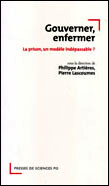 |
AKRICH M., CALLON M., 2004, «L’intrusion des entreprises privées dans le monde carcéral français : le Programme 13 000» ,
in ARTIÈRES P., LASCOUMES P., (ed.), Gouverner, enfermer. La prison, modèle indépassable ?, Paris, Presses de Sciences Po, p.295-317.
Accès au texte »
L’univers carcéral constitue un monde fermé qui ne s’ouvre que très rarement aux acteurs de la société civile. De ce point de vue, le programme 13000, qui a confié à des entreprises le soin de concevoir et de gérer de nouveaux établissements pénitentiaires, constitue une intéressante exception. Des acteurs influents de la société civile sont entrés dans les prisons. Pendant plusieurs mois, à la fin des années 1980, des ingénieurs habituellement plongés dans des programmes de travaux publics ont été confrontés à un monde qu’ils ignoraient totalement. Ils l’ont exploré, analysé sous toutes ses coutures, avec pour objectif explicite de proposer sinon un nouveau modèle, du moins de nouvelles solutions. Pour éclairer, ne serait-ce que partiellement, la nature des rapports entre prisons et sociétés et pour rendre compte de certains aspects de l’état de la critique sociale et des projets qu’elle est susceptible de nourrir, le sociologue ne peut rêver de circonstances plus favorables : la rencontre entre le monde des entreprises et le monde pénitentiaire a en effet suscité un travail de réflexion et d’analyse inhabituel ; les demandes adressées aux entreprises ont conduit ces dernières à élaborer des projets qui tiennent compte à la fois des exigences imposées, des réalités qu’ils ont observées et de leurs propres conceptions de l’univers carcéral. C’est à la description et à l’analyse du contenu de ces projets que ce chapitre est consacré. Nous essayons de montrer que la mise en chantier de prisons privées a été l’occasion d’un travail politique qui a rendu plus explicites et plus contraignantes, y compris dans la gestion quotidienne, les missions assignées à la détention et a conduit les entreprises à imaginer un modèle alternatif dont certains éléments ont été mis en place. Ce modèle présente une figure du détenu qui n’est pas sans rapport avec celle que le marché propose à ses agents. Que ce modèle ait eu une forte dimension utopique et imaginaire, n’est pas douteux. Que sa mise en œuvre ait donné lieu à de nombreux compromis et que les anciennes pratiques aient bien vite repris le dessus, voilà qui n’est guère contestable. Un bilan devrait être fait (El Ouarzazi, 2003). Dans ce texte, nous laissons de côté ces interrogations pour nous focaliser sur le contenu du modèle lui-même. Il met en valeur le caractère central d’une conception nouvelle de l’individu et de sa place dans la société. Du même coup il tisse des solidarités et des similitudes inattendues entre des institutions que tout semblait séparer et montre comment l’anthropologie sur laquelle se fondent les marchés économiques pénètre d’autres sphères. |
| |
AKRICH M., MÉADEL C., 2004, «Problématiser la question des usages. Introduction au n°spécial "Les technologies de l’information à l’épreuve des pratiques"» ,
Sciences Sociales et Santé, 22 (1), p.5-20.
Accès au texte »
Depuis plus de vingt ans, les technologies de l’information et de la communication ont connu, dans le domaine de la santé, un développement considérable bien qu’inégalement réparti entre les différentes applications. Celui d’Internet est spectaculaire : la santé y représenterait aujourd’hui le secteur le plus actif à la fois du point de vue de la production, mesurée par le nombre de sites ou de forums de discussion, et de la consultation (Morris et al., 1997). Dans les pays fortement équipés, celle-ci a atteint des proportions considérables : en 2002, plus de cent millions d’Américains ont recherché des informations médicales sur Internet et plus de 40 % disent que cela a affecté les décisions qu’ils ont prises (Forkner-Dunn, 2003). À côté du web, on distingue un certain nombre d’applications qui, à défaut de s’être massivement répandues, ont fait l’objet d’une abondante littérature professionnelle, spéculant sur leurs retombées possibles et s’efforçant d’évaluer les expériences menées. Parmi ces applications, on peut citer l’informatisation des dossiers médicaux, la télé-surveillance ou le télémonitoring de patients maintenus à domicile, la télé-consultation — le patient et le médecin sont rendus présents l’un à l’autre par un dispositif de visioconférence — , le télédiagnostic qui s’appuie sur la transmission de données ou d’images, les « staffs » à distance qui permettent à plusieurs médecins de discuter de cas et de mettre en commun leur expertise, la téléchirurgie ou le télé-enseignement. Compte tenu de la diversité des activités en cause, on peut légitimement s’interroger sur la cohérence de l’ensemble formé par les technologies de l’information et de la communication (TIC) pour la santé.
Information technology, throughout the course of its massive expansion into all domains, has increasingly presented questions related to its application in the health sector, particularly where patient use of the Internet to obtain medical information is concerned. Via review of recent existing literature as well as emerging research, a approach is here proposed to establish a problematization & categorization of these issues as related to using IT as a performance factor in medical care between professionals, as a factor of liberty of the patient to access medical resources & information, & as a means of facilitating the connection between doctors & patients. A contextualization of these factors will help reach a deeper understanding of the many variables that result in the situations described & assist in developing relevant protocol to manage & improve the use of IT in the medical field. |
 |
AKRICH M., PASVEER B., 2004, «Embodiment and Disembodiment in Childbirth Narratives» ,
Body & Society. Special Issue on Bodies on Trial., 10p.63-84.
Accès au texte »
In this article, our concern is to describe how body(ies) and self are performed in women's birth narratives through the mediation of a number of significant elements, including technical devices. We will show how, in these narratives, (1) action is distributed among a series of actants, including professionals and technology; (2) that dichotomies appear which cannot be reduced to one of body/mind, but are more adequately described in terms of ‘body-in-labour'/'embodied self', each of them being locally performed through the mediation of medical practices, knowledge and technologies, the definition of these elements and of their relations being specific to each obstetrical configuration; (3) that part of professionals' activities is devoted to the detailed management of the articulation between the body-in-labour and the embodied self, and to monitoring their joint transformations. |
| |
AKRICH M., RABEHARISOA V., 2004, «Identifying Trends in Medical European Space. Contribution of Social and Human Sciences. Periodic Progress Report (12 months)» ,
Paris, European Commission. |
| |
BARTHE Y., MAILLARD J., VERJUS A., 2004, «Témoignages de jeunes chercheurs (entretien avec Anne-Cécile Douillet, Jean-Paul Zuanon)» ,
in DOUILLET A., ZUANON J., (ed.), Quarante ans de recherche en sciences sociales. Regards sur le CERAT 1963-2003, Grenoble, Presses universitaires de Grenoble, p.205-226. |
 |
BERG M., AKRICH M., 2004, «Introduction - Bodies on Trial: Performances and Politics in Medicine and Biology» ,
Body & Society. Special Issue on Bodies on Trial, 10p.1-12.
Accès au texte »
This special issue, devoted to the question of the body in medicine and biology, brings together a group of authors whose roots lie within the field of science and technology studies (STS), and at the intersections of STS with medical sociology and medical anthropology. As testified by the vitality of Body & Society, ‘the body' is in the center of revived attention in the social sciences and humanities. Medical sociology and anthropology has produced important contributions to the renewal of the body's conceptualisation , and feminist studies have put the construction of ‘sex' and its relationships to gender center stage. Some authors even argue that social theory should be re-centered around the notion of ‘embodiment' or a similar concept. What kind of insights can STS studies bring into this set of interrogations? Briefly said, STS approaches may help escape the pull between two powerful theoretical/philosophical positions that have, for some time, been at work in conceptualizing the body: phenomenological approaches on one side, and constructivist approaches on the other. |
| |
BESANÇON J., BORRAZ O., GRANDCLÉMENT C., 2004, La sécurité alimentaire en crises. Les crises Coca-Cola et Listeria de 1999-2000 ,
Paris, L'Harmattan. |
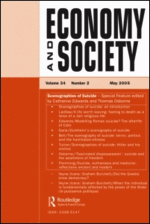 |
CALLON M., 2004, «Europe wrestling with technology. About Andrew Barry, Political Machines: Governing a Technological Society, London: Athlone Press» ,
Economy and Society, 33 (1), p.121-134. |
| |
CALLON M., 2004, «The role of hybrid communities and socio-technical arrangements in the participatory design» ,
Journal of the Center for Information Studies, 5 (3), p.3-10.
Accès au texte »
This paper highlights the importance of "hybrid collectives" in the design process. In the first part, the active role of technologies and broadly speaking of non humans, in the construction and the functioning of those collectives, is emphasized: they allow heterogeneous actors to coordinate their projects; they contribute to the emergence and the transformation of social identities; they help to frame the spatial and temporal settings in which these collectives exist and act; they are directly engaged in action and cognition. For all these reasons non humans are to be considered as strategic players in the dynamics and the organization of these collectives, and in particular of design communities. Symmetrically the very existence of hybrid collectives induces a new vision of human agency, that must be considered as diversified and variable: needs, demands, expectations, feelings, capacities of action and cognition depend on the socio-technical configurations of their environment, i.e. of the collectives they are part from. Finally some general lessons for participatory design and information ecology are drawn from the recognition of the centrality of hybrid collectives in our advanced societies. |
| |
CALLON M., LAW J., 2004, «Guest editorial» ,
Society and Space, 22 ("Environment and Planning"), p.3-11.
Accès au texte » |
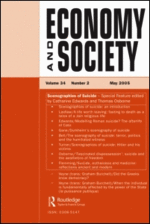 |
CALLON M., RABEHARISOA V., 2004, «Gino’s lesson on humanity:genetics, mutual entanglements and the sociologist’s role» ,
Economy and Society, 33 (1).
The identification of the genes responsible for certain serious diseases and the development of tests for identifying carriers of those genes help to put the individuals concerned in the forefront of ethical decisions. These decisions are unavoidable, especially when available knowledge and techniques have already been broadly disseminated. This article presents the case of a limb-girdle muscular dystrophy patient in Reunion Island who refuses to comprehend the lessons of genetics and to become part of the medical and associative networks that implement and diffuse that knowledge. His refusal is interpreted as the rejection of a form of agency and subjectivity, in which the individual is considered as an autonomous subject forced to choose between a number of pre-established options and responsible for the consequences of his choices. Using definitions of humanity and morality presented by François Jullien in his commentary on Mencius, the authors propose to consider that, by refusing, the patient is opting for a different form of morality and humanity. The article also shows how the interview situation constructs a situation that reduces the patient to silence. |
 |
FAUQUET J., HENNION A., 2004, «Le baroque en stéréo. La querelle des Indes Galantes» ,
Cahiers de médiologie, (18), p.79-89.
Nous sommes au printemps 1974. À quelques semaines d’intervalle, sortent sur le marché deux versions discographiques intégrales des Indes galantes, ballet héroïque de Jean-Philippe Rameau. L’événement va déclencher une querelle virulente - une de plus dans l’histoire du goût, a-t-on envie de dire. (…) Ces disputes mémorables dont souvent, une fois le temps passé, la vigueur n’est pas si facile à comprendre, sont des moments très riches. Elles font « dire le droit », elles amènent les participants à expliciter leurs arguments. On ferraille bientôt sur les conceptions de ce qu’est la musique ou le plaisir, l’art ou le bon goût, la vérité ou la beauté, quand on ne s’en prend pas au monde moderne, à la superficialité mondaine ou à la société marchande. Au-delà des jugements à chaud produits sur telle œuvre ou telle interprétation, et cette fois directement sur deux enregistrements rivaux, l’ensemble des variables en cause dans l’appréciation vient au jour. Les déterminismes et les attentes enfouis au plus profond des personnes et des groupes trouvent dans la querelle l’occasion de s’exprimer et de se renforcer. Mais, tout autant, les nouvelles façons de sentir, d’aimer, de se définir : le goût n’est pas seulement un réservoir passif et invisible de préjugés, il est aussi capacité à être conquis, transporté, converti. Le scandale pousse à l’excès mobilisateur, il fait brûler ce qu’on a adoré. Les querelles sont créatrices, elles refont le goût, elles inventent de nouvelles attitudes, de nouvelles attentes, en même temps qu’elles obligent les anciennes à préciser leurs positions. Le combat entre les deux camps est aussi ce qui les dessine. |
| |
GRAMAGLIA C., 2004, «Les conflits environnementaux ont-ils une fin ? Crise de la représentation, formes de médiation et clôture des controverses autour des usages de la nature en France et en Europe» ,
Paris, CNRS - PEVS. |
| |
GRAMAGLIA C., 2004, «Mise à l’essai du concept de sphère sur le terrain des conflits environnementaux ...» ,
ethnographiques.org [en ligne], (6).
Accès au texte » |
| |
GRANDCLÉMENT C., 2004, «Climatiser le marché. Les contributions des marketings de l’ambiance et de l’atmosphère» ,
ethnographiques.org [en ligne], (6).
Accès au texte » |
| |
HENNION A., 2004, «Les usagers de la musique. L’écoute des amateurs» ,
Circuit. Musiques contemporaines, 14p.18-31.
Accès au texte »
Cette contribution est écrite à partir d’entretiens, d’observations ou d’expériences réalisés en équipe ces dernières années auprès d’amateurs ayant des attachements de nature et d’intensité diverses à la musique. Il s’agit de se mettre à l’écoute de leur écoute, en essayant le plus possible de laisser leur espace propre aux formes très variées qu’elle peut prendre. Loin d’être inférieures, incompétentes, passives ou obsédées par le seul plaisir immédiat du son ou de l’image facile, les oreilles des amateurs sont actives, créatives. Elles jouent avec les nouveaux moyens de la musique, la disponibilité démultipliée d’un répertoire, la manipulation instantanée de musiques diverses. Elles travaillent les positions de l’écoute, à commencer par la disposition physique de soi. Elles débouchent souvent sur un art de faire très personnel, inventant de véritables façons de se mettre en musique. Mettre l’accent sur l’écoute, c’est donc réintroduire l’hétérogénéité irréductible d’un réel-événement, fait de plis et de tissages. Non pas une œuvre et un auditeur: des corps, des dispositifs et des dispositions, de la durée, un objet insaisissable, un instant qui passe, des états qui surgissent. Après tout, hors des laboratoires et des écoles, qu’est d’autre la musique ? |
| |
HENNION A., 2004, «“Tout est médiation ?” La formule ne vient pas par hasard…» ,
MEI, 19p.30-34.
“ Tout est médiation ? ” La formule ne vient pas par hasard. Même si c’est sur un ton quelque peu agacé, elle souligne que le terme indique plus une direction d’analyse, une façon de voir les choses et l’action, qu’un domaine ou une opération déterminés, à mettre à côté d’autres domaines ou opérations bien distincts (la création, la diffusion, la réception, etc.). Et donc que la médiation a vocation (si l’on est sensible à ce que le mot évoque) ou tendance (si l’on y est plutôt hostile...) à ne pas se cantonner à un lieu, mais à faire contagion, ou tache d’huile. |
| |
HENNION A., 2004, «La fausse modestie d’un grand livre : Les Mondes de l’art d’Howard S. Becker» ,
in PESSIN A., (ed.), L’art du terrain. Mélanges offerts à Howard S. Becker, Paris, L’Harmattan, p.163-170. |
 |
HENNION A., 2004, «Une sociologie des attachements. D’une sociologie de la culture à une pragmatique de l’amateur» ,
Sociétés, 85 (3), p.9-24.
Accès au texte »
En s’intéressant aux pratiques amateurs, il est possible de produire une mise en mots du goût musical en acte, en situation, avec ses trucs et ses bricolages, loin de tout espace de justification publique, mais attentif à son propre succès. Le goût est une modalité problématique d’attachement au monde. À partir d’entretiens et d’observations conduits avec des amateurs, l’objectif est de sortir la sociologie du goût d’une conception critique devenue hégémonique, qui ne le voit que comme un jeu social gratuit et ignorant de lui-même, et de restituer à la pratique amateur son espace propre. |
| |
HENNION A., 2004, «Présences du passé. Le renouveau des musiques "anciennes". Sources et retours aux sources» ,
Actes du colloque, A portée de notes : musiques et mémoire, Grenoble, 14 et 15 octobre 2003, ARALB, FFCB, Bibliothèques municipales de Grenoble, p.37-49.
Ma réflexion porte donc sur « musique et histoire » : non pas l’histoire de la musique, ou l’histoire de l’interprétation de la musique - mais la production d’une musique comme geste historique ou, ce qui revient au même, la musique comme production d’histoire. Une musique ne naît pas « ancienne », elle le devient. Le mot ancien est une appellation moderne qui introduit une distance entre un répertoire et nous. D’abord pour dire qu’il a été pratiqué il y a longtemps puis qu’il ne l’a plus été ou que la vérité de son jeu a été perdue - rupture dont la déclaration même inaugure la reprise moderne ; et donc, plus spécifiquement, que l’accès à cette musique passe désormais par des archives et des reconstitutions hypothétiques. C’est le contraire de la tradition qui, elle, change sans cesse en croyant rester la même2 - ce qu’on dit très bien en disant qu’elle « vit », en général pour s’opposer aux efforts des puristes qui veulent « revenir » à l’origine. Ce ne sont pas les répertoires qui sont « historiques », mais notre relation à eux – les musiques classiques échappent-elles à l’histoire de ce que, à l’opposé des ces musiques anciennes ou lointaines, une tradition continue les rend familières à nos oreilles ? |
| |
HENNION A., TEIL G., 2004, «L’attività reflessiva dell’amatore. Un approccio pragmatico al gusto» ,
Rassegna italiana di Sociologia, XLV (4), p.519-542.
The paper offers a perspective on taste which tries to overcome what is now the hegemonic view within the social sciences and which conceives of taste as social distinction or differentiation. It ultimately aims to show the limits of a detached and ascetic reading of taste wherein objects loose their specificity and merely become an excuse for the reproduction of standardized forms of social distinction. To do so it concentrates on the case of wine, focussing on the way the amateur develops his or her relationship with this historically and culturally rich drink. If some amateurs use blind tasting in order to ensure their taste is the only result of the wine expression emptied of any social influence, most of them do not try to disentangle the experience of wine drinking from its "social context", nor to control the experience itself in order to provide appreciation by detachment from the object. On the contrary, the "context" provides them a lot of resources to arrange specifically each various drinking opportunity. Other amateurs engage their subjectivity in the experience of wine drinking by forms of self-government which entail self-reflexivity and a thematization of their own amateurship. At the end, wine loving appears as a reflexive and equipped activity which admits many formats selectively grounded on the object, the drinker and collectives. Trying to escape both critical indifference and objective difference, the paper argues that sociologists have much to learn on taste from the forms of knowledge and activity displayed by the amateur. |
| |
HENNION A., TEIL G., 2004, «Le goût du vin. Pour une sociologie de l’attention» ,
in NAHOUM-GRAPPE V., VINCENT O., (ed.), Le goût des belles choses, Paris, Ed. de la MSH, p.111-126.
La formation du goût consisterait à avancer peu à peu de l’impression fugace à l’objectivité, à la maîtrise, à la fermeté du jugement et à la connaissance du produit et des goûts. L’expert a appris à distinguer et à reconnaître les qualités des objets (il dispose pour cela des « équipements » nécessaires, du dispositif mis en place pour la comparaison à l’entraînement de son palais, du vocabulaire qui aide à isoler ce qu’on ressent au savoir sur la production du vin qui permet d’identifier des causes et des origines), là où l’amateur, peu discriminant, ne ferait que sentir ces qualités dans la confusion de ses humeurs, de ses penchants et de ses habitudes. |
 |
LARÉDO P., MUSTAR P., 2004, «Public Sector Research: A Growing Role in Innovation Systems» ,
Minerva, (42), p.11-27.
his article highlights three converging trendsexperienced by `public sector research'' duringthe past decade. Looking especially at France,our discussion draws attention to the new rolesof universities, the blurring of relationshipsbetween types of research institutions andresearch activities, and the development of`research collectives'' as an organizationalfeature now emerging throughout Europe. |
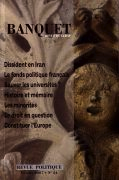 |
LARÉDO P., MUSTAR P., 2004, «La recherche publique en France : évolutions et enjeux» ,
Le Banquet, (19-20), p.95-113.
La recherche française connaît des changements profonds. Leur compréhension exige de se détacher du débat sur les coupes budgétaires qu'elle a connues en 2003 — plus révélateurs d'une méconnaissance des évolutions à l'œuvre que d'une volonté de réduire l'investissement public de recherche et d'en transférer au secteur privé une part grandissante — pour s'intéresser à la période longue. Ces transformations ont à la fois une dimension économique liée à la « globalisation » des marchés et des firmes, mais aussi à la « re-localisation » qui correspond au poids grandissant des PME dans l'activité économique et l'emploi, techno-scientifique, les développements de nouvelles technologies réclamant des agencements publics-privés inédits, et politique. Ces dernières concernent les acteurs des politiques publiques de recherche et d'innovation - en raison notamment de la montée de l'Europe et des régions -, leurs secteurs d'intervention - dus au retrait en Europe de la recherche militaire et la fin des grands programmes de développement technologique - et les modalités de formulation et de conduite des politiques, ce dont témoigne la place grandissante des débats publics sur les priorités et sur le contenu des recherches. |
| |
LATOUR B., 2004, «Whose cosmos, which cosmopolitics?» ,
Common knowledge, 10 (3), p.450-462. |
| |
LATOUR B., 2004, «How to Talk About the Body? The Normative Dimension of Science Studies» ,
Body & Society. Special Issue of Bodies on Trial, 10p.205-229. |
| |
LATOUR B., 2004, «"Nao congelaras a imagen", ou: como nao desentender o debate ciencia-religiao» ,
Mana, 10 (2), p.349-374. |
| |
LATOUR B., 2004, «La comédie des erreurs» ,
La Recherche, p.82-85.
Hors-série 14 |
| |
LATOUR B., 2004, «Le rappel de la modernité - approches anthropologiques. Conférence dans le séminaire Descola au collège de France, 26/11/03» ,
ethnographiques.org [en ligne], (6), p.15.
Accès au texte » |
| |
LATOUR B., 2004, «Note brève sur l’écologie du droit saisie omme énonciation» ,
Cosmopolitiques, (8), p.34-40. |
| |
LATOUR B., 2004, «Why Has Critique Run out of Steam? From Matters of Fact to Matters of Concern» ,
Critical Inquiry, (30), p.225-248. |
| |
LATOUR B., 2004, «On using ANT for studying information systems: a (somewhat) Socratic dialogue» ,
in AVGEROU C., CIBORRA C., LAND F., (ed.), The Social Study of Information and Communication Technology. Innovation, Actors, and Contexts, Oxford, Oxford University Press, p.62-76. |
| |
LÉPINAY V., HERTZ E., 2004, «Deception and its Preconditions: Issues raised by Financial Markets» ,
in GERSCHLAGER C., (ed.), Exchange, Deception and Self-Deception in Economics, |
 |
LINHARDT D., 2004, «La force de l’Etat en démocratie. La RFA face à la guérilla urbaine (1967-1982)» ,
Thèse de doctorat, Paris, École Nationale Supérieure des Mines de Paris.
Le terrorisme - de nombreux exemples récents tendent malheureusement à le prouver - est une modalité de l'action politique violente qui est vouée, plutôt qu'au reflux, à la recrudescence. Combattre ce fléau nécessite de le compren-dre. C'est une contribution à cette tâche que cette thèse propose. Il s'agissait en particulier de qualifier précisément l'épreuve que le terrorisme constitue pour les États et les sociétés qui le subissent.
La méthode choisie a consisté en un recours à l'histoire. Au contraire d'un travail sur des événements récents qui sont malaisés à manier lorsque est requis un minimum de froideur analytique et un accès à des données sûres, la distance historique donne la possibilité d'étudier des conflits qui peuvent être considérés comme " éteints " et s'offrent, de fait, à travers des archives qui les documentent dûment, à l'étude rétrospective. Il a été considéré heuristiquement intéressant de produire l'étude détaillée d'une épreuve singulière. Cette épreuve est celle de l'État ouest-allemand confronté au terrorisme d'extrême-gauche au cours des années soixante-dix. Cette épreuve est une sorte de cas d'école
et a permis d'extraire un modèle analytique du terrorisme qui est destiné à être généralisé et enrichi par sa confrontation à d'autres situations, y compris les plus actuelles. |
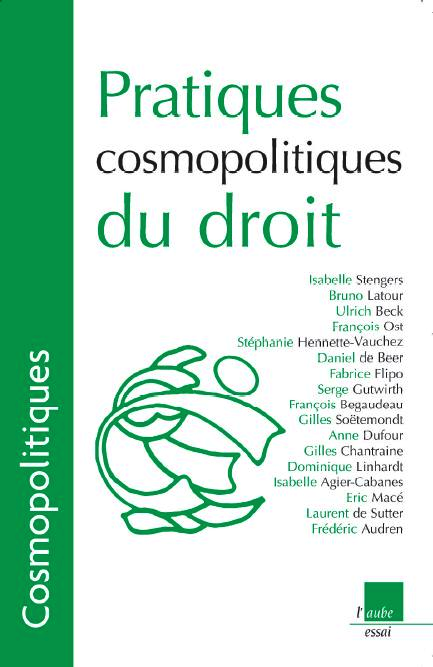 |
LINHARDT D., 2004, «L’idée de l’Etat du point de vue de la nouvelle cosmopolitique, ou : équiper le collectif comme collectif» ,
Cosmopolitiques, (8), p.124-135.
Le monde du droit est un univers de concepts, de principes, d’abstractions. Nous souhaitons mettre trois grandes catégories de la tradition juridico-politique occidentale à l’épreuve de la cosmopolitique : «État» , «Représentation» et «désobéissance civile». L’État obsède la pensée juridique. En s’appuyant tout particulièrement sur les ressources offertes par la sociologie des sciences, Linhardt, Dominique, proposant d’écarter la formulation moderne de l’État, s’efforce de saisir l’État en tant que tel : «il ne s’agit plus de se frayer un accès direct à ce que nous appelons aujourd’hui «État» [...], mais de s’en approcher en prenant le détour par les processus qui l’ont configuré, par des «épreuves d’État» dans lesquelles il s’est constitué et se constitue en tant qu’État». |
 |
LINHARDT D., 2004, «Réclusion révolutionnaire. la confrontation en prison entre des organisations clandestines révolutionnaires et un Etat - le cas de l’Allemagne dans les années 1970» ,
Cultures et conflits, (55), p.113-148.
Comprendre la prison comme un terrain d’affrontement entre des groupes armés clandestins et l’Etat ne va pas de soi. A priori, la capture et l’enfermement des « terroristes » apparaissent en effet comme un point d’arrêt. Pourtant, en Allemagne, au cours des années 1970, des membres emprisonnés de groupes se revendiquant d’une stratégie de « guérilla urbaine », ont fait de l’enceinte de la prison une arène à part entière du conflit qui les opposait à l’Etat ouest-allemand. L’article reconstitue l’histoire de la conversion de la prison en un milieu d’affrontement politique, et la politisation subséquente de l’univers carcéral, sous un triple rapport. D’abord, sera décrite la constitution de l’espace carcéral en une scène du conflit par l’élaboration progressive d’une stratégie de « subversion » ajustée à cet espace. Ensuite sont présentés ses modalités concrètes et les effets que cette transformation de la prison a produits. Enfin, sera montré comment cette lutte s’est transformée en une épreuve pour un Etat dont la réaction parut à beaucoup démesurée et fort peu respectueuse des exigences démocratiques dont il se réclamait. Les critiques qui lui ont été adressées et l’affaire qui s’est déployée peuvent être compris comme le moment – au double sens du terme – par lequel s’est collectivement redéfinie la manière légitime d’enfermer les opposants politiques radicaux.
Abstract : Understanding prison as a confrontation ground between clandestine armed groups and the State is not obvious. In deed, the capture and the confinement of “terrorists” first appear as an end. But in Germany, during the 1970s, imprisoned members of “urban guerrilla” groups have transformed the prison enclosure into a real conflict arena between them and the West German State. The article reconstitutes, in a triple relation, the history of this conversion of the prison into a political confrontation area and the subsequent politization of the penitentiary universe. This text firstly describes the constitution of this penitentiary space into a conflict scene by the progressive elaboration of a specifically adjusted “subversion” strategy. The text then presents the concrete modalities and effects produced by this transformation of the prison. Lastly, this article shows how this battle transformed into an ordeal for a State which reaction was seen by many as exaggerated and not respectful of the democratic requirements itself referred to. The critiques the State suffered from and the whole affair can be understood as the moment – in both meanings – through which the legitimate way to confine radical political opponents has been collectively redefined. |
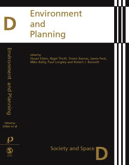 |
MALLARD A., 2004, «From the telephone to the economic exchange: how Small Businesses use the telephone in their market relations» ,
Environment and Planning D: Society and Space, 22p.117-134. |
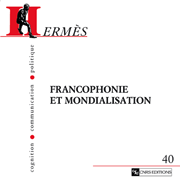 |
MARZOUKI M., MÉADEL C., 2004, «Francophonie et gouvernance d’internet» ,
Hermès, (40), p.228-232.
Plus encore que la mondialisation des échanges, le commerce des hommes sur Internet et sa réglementation mettent à l’épreuve la diversité des modèles culturels et politiques marqués jusqu’ici par la souveraineté territoriale des espaces nationaux ou régionaux. L’article montre, à travers quelques exemples, comment la normativité sur Internet s’élabore de manière à la fois multiple et hétérogène avec une grande diversité de normes et d’acteurs qui interviennent pour fixer les formats d’échange, la répartition des ressources, les normes de comportement, les règles du marché, les standards techniques. Les auteurs identifient quelques uns des enjeux principaux dont la Francophonie doit se saisir en ce domaine, et proposent des pistes pour donner sens à une gouvernance francophone d’Internet, avec le triple objectif d’une approche démocratique, d’une ouverture aux pays non occidentaux et d’un plurilinguisme assumé.
Even more than the globalization of exchanges, social and commercial interactions on the Internet, as well as their regulation, challenge the diversity of cultural and political models which were determined till then by the territorial sovereignty of Nations. The paper shows, through some examples, how norms are established on the Internet in multiple and heterogeneous ways, with a great diversity of mechanisms, arenas and actors taking part in the formatting of exchanges, distribution of resources, behavioral norms, market rules, technical standards. The authors identify some of the main stakes La Francophonie should seize in this field, and propose ideas to build a francophone approach of Internet governance, with the triple objective of consolidating democracy, being inclusive towards non Western countries and upholding plurilingualism. |
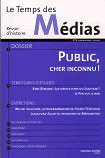 |
MÉADEL C., 2004, «L’audimat ou la conquête du monopole» ,
Le Temps des Médias, (3), p.151-159.
L’audimat, qu’il s’appelle ainsi ou qu’il prenne l’une de ses dénominations commerciales, est une boîte noire : boîte noire pour les professionnels qui, bon gré mal gré, en subissent les verdicts, mais boîte noire aussi pour les chercheurs, historiens comme sociologues des médias, qui citent bien souvent ses données sans s’interroger sur leurs conditions de production et leur signification. Par un paradoxe qui n’est qu’apparent, cette boîte noire est en même temps fortement contestée, mais elle l’est dans ses applications et non dans sa conception, partant de l’hypothèse que l’outil dit le vrai et que c’est son usage qui est coupable. Revenir sur la naissance de cette mesure d’audience de la radio et de la télévision permet de redonner aux chiffres leurs significations, à l’écart des procès et des anathèmes. Une telle approche se distingue des dévoilements de l’école bourdieusienne et à son héraut dans ce domaine, Patrick Champagne, qui reprenant les travaux historiques, s’emploie surtout à dénoncer les sondages comme des artéfacts coupés de la réalité, visant à assurer la puissance de la « main invisible du marché » sur la télévision. Le caractère commercial des médias audiovisuels, leur recherche frénétique d’une audience maximale3 sont des préalables sur laquelle il n’est point besoin d’épiloguer ici ; la question qui nous arrête étant plutôt de comprendre sous quelles conditions cet outil imparfait, on en convient, qu’est l’audimat s’est imposé à la quasi totalité des acteurs comme mesure incontestable. |
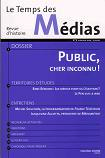 |
MÉADEL C., 2004, «Avant propos au dossier Public, cher inconnu !» ,
Le Temps des Médias, (3), p.7-11.
Accès au texte »
Le public s’enfuit, le public nous échappe, ce public qui donne son sens à nos travaux sur les médias, ce cher public, objet de toute notre attention. La notion est à la fois familière, immédiate, mais aussi aléatoire et instable. Premier constat massif, quasi brutal : après tant d’années de recherche, nous n’en savons encore guère sur les publics ; nous nageons dans les conjectures, nous traquons les définitions, les traces. Lui redonner l’épaisseur de la chronologie, retrouver les étapes de sa mise en scène, le prendre en quelque sorte par l’histoire, c’est s’interroger sur les « fables » (au sens de Michel de Certeau) qui le constituent, sur les injonctions qu’il produit en nombre. C’est tenter d’appréhender ces mille voix par lesquelles le public, les publics parlent, tant et si haut, de ce qu’il veut, ou ne veut pas, de ce qu’il fait, de ce qui est bon – ou mauvais, pour lui, de ce qu’il aime…
L’objectif de ce numéro n’est pas, qui le pourrait ?, de faire le tour de ces définitions, mais plutôt de proposer un panorama de différentes approches de ces questions, renouvelées par les derniers travaux de recherche, et qui, par delà des terrains et des conceptions différentes, s’interpellent ou s’interrogent. |
| |
MÉADEL C., MARZOUKI M., 2004, «Gouvernance technique et gouvernement politique d’Internet. Enjeux et questions de recherche.» ,
Questionner l'internationalisation. Cultures, acteurs, organisations, machines. Actes du XIVe Congrès national des sciences de l'information, Béziers, 2-4 juin 2004, Béziers, SFSIC, p.51-57.
Accès au texte »
Comment Internet est-il gouverné ? Qui fixe ses règles et protocoles ? Comment s'articulent ses normes techniques, politiques, économiques, sociales ? Passée l'euphorie libertaire, nul ne présume plus qu'Internet échappe à la réglementation et au pouvoir, la question étant désormais de savoir sous quelles conditions s'exercent les différentes formes d’autorité. Ces questions sont prises en charge par un ensemble hétérogène d'acteurs et ont fait l'objet d'une literature importante, provenant de diverses disciplines, avec des résultats souvent ponctuels et peu conceptualisés. Cet article propose une synthèse de ces questions, pour mieux comprendre les enjeux actuels de la gouvernance d’Internet et identifier des problématiques de recherches futures. |
| |
MÉADEL C., MARZOUKI M., 2004, «De l’organisation des nouveaux collectifs à l’organisation de la cité : gouvernance politique et gouvernement technique d’internet» ,
Paris, CNRS.
Accès au texte »
Comment Internet est-il gouverné ? Qui fixe ses règles et protocoles ? Comment s'articulent ses normes techniques, politiques, économiques, sociales ? Passée l'euphorie libertaire, nul ne présume plus qu'Internet échappe à la réglementation et au pouvoir, la question étant désormais de savoir sous quelles conditions s'exercent les différentes formes d'autorité. Ces questions sont prises en charge par un ensemble hétérogène d'acteurs et ont fait l'objet d'une littérature importante, provenant de diverses disciplines, avec des résultats souvent ponctuels et peu conceptualisés. Ce rapport a été produit à l'issu d'un séminaire conduit dans le cadre du Réseau thématique pluridisciplinaire "Droit et systèmes d'information" du CNRS. Il propose une synthèse de ces questions, pour mieux comprendre les enjeux actuels de la gouvernance d'Internet et identifier des problématiques de recherches futures. |
 |
MÉADEL C., PARIS T., 2004, «Des modes de régulation de l’audiovisuel» ,
in PARIS T., (ed.), La libération audiovisuelle. Enjeux technologiques, écobomiques et réglementaires, Paris, Dalloz, p.238-264.
La loi pour la confiance dans l’économie numérique (LEN) a été adoptée le 13 mai 2004. Le projet de loi relatif aux communications électroniques le sera vraisemblablement à l’heure où paraîtra ce livre. Le projet de loi relatif au droit d’auteur et aux droits voisins est, quant à lui, en cours de discussion au Parlement. Le Conseil de la concurrence a rendu son avis sur les plaintes d’Iliad et de Free à propos de l’exigence de must carry de la télévision par ADSL. Les instances régulatrices diverses et multiples proposent, expérimentent et adoptent des normes spécifiques qui, petit à petit, construisent un nouveau cadre pour les activités de l’audiovisuel. Pourtant ce cadre est loin d’être stabilisé, s’il peut jamais l’être, et ce pour au moins deux raisons. Premièrement, le monde de l’audiovisuel est lui-même dans une phase de transformations radicales et multiples. Les usages évoluent avec de nouveaux dispositifs : consommation sur téléphones mobiles (sonneries, clips, films…), échanges de fichiers par Internet, choix ouvert de programmes de télévision ou de vidéo sur ADSL. Les producteurs expérimentent de nouvelles formules qui interrogent, voire remettent en question le droit à l’image, la séparation vie privée/vie publique, les droits de propriété intellectuelle, le droit de la concurrence, etc. La Ligue de football professionnel doit lancer un nouvel appel d’offres pour la commercialisation des droits des rencontres de Ligue 1, dans un contexte où l’exclusivité est envisageable. Limitation de l’accès du public à l’information, atteinte à la libre concurrence, ou nécessité économique de protection des diffuseurs et des programmes ? La question des clauses d’exclusivité, aujourd’hui discutées et controversées, est loin d’être réglée. Certes, des normes se mettent en place, mais la régulation du domaine reste pourtant largement ouverte ; et les acteurs naviguent à vue, qu’il s’agisse de ceux qui en ont la charge ou de ceux à qui elle s’applique. |
| |
MEYER M., 2004, «Le centre de recherche scientifique du musée - aperçu historique» ,
150 Joer Musée national d'Histoire Naturelle, Luxembourg, Musée National d'Histoire Naturelle, p.196-207. |
| |
MONDADA L., AKRICH M., HENNION A., RABEHARISOA V., 2004, «Vom Objekt zur Interaktion und zurück. Eine Diskussion mit Akrich, Madeleine, Hennion, Antoine, Rabeharisoa, Vololona, moderiert durch Lorenza Mondada.» ,
ZBBS (Zeitschrift für qualitative Bildungs-, Beratungs- und Sozialforschung), (2), p.239-271.
Accès au texte »
Dans le texte qui suit, un groupe de chercheurs du CSI, Akrich, Madeleine, Hennion, Antoine, Rabeharisoa, Vololona, a accepté de discuter très librement de la façon dont ils se positionnent dans leurs terrains et leurs travaux vis-à-vis des questions soulevées par la prise en compte des interactions sociales. Ce texte est le produit hybride de plusieurs interactions, en face-à-face et à distance, par oral et par écrit, entre les chercheurs qui y interviennent. Il n'est pas une retranscription fidèle de la discussion qui a eu lieu le 21 juillet 2003 dans le bureau de Akrich, Madeleine - bien que la discussion ait été enregistrée sur mini-disc puis transcrite par Lorenza Mondada, qui a immédiatement retravaillé la version orale pour en faire une version écrite. Celle-ci a ensuite donné lieu à une réécriture de la part des chercheurs du CSI, à des ajouts de notes et de bibliographie, à des discussions parallèles, à des lectures par d'autres membres, dont Latour, Bruno. Tout en étant attribuable à des énonciateurs particuliers, ce texte a été énoncé dans une polyphonie qui dissout un certain nombre de spécificités de l'écriture des auteurs. Si l'on pense que la forme et le sens des objets de discours dépendent des régimes énonciatifs au sein desquels ils ont été produits, on conviendra que le résultat final est un positionnement inédit des membres du CSI ayant accepté de se prononcer sur les problématiques abordées. |
| |
MUNIESA F., 2004, «Assemblage of a market mechanism» ,
Journal of the Center for Information Studies, 5 (3), p.11-19. |
| |
MUSTAR P., 2004, «Le nouveau visage de l’ingénieur» ,
Industries et Techniques, 854
janvier 2004 |
 |
MUSTAR P., 2004, «Le financement de l’innovation» ,
Cahiers français, (323), p.48-52. |
| |
MUSTAR P., 2004, «Quand la recherche produit des jeunes pousses...» ,
L'Expansion Management Review, p.62-67.
décembre 2004 |
| |
NADAI A., 2004, «Art et paysage à l’épreuve de la controverse environnementale. "Optimiser l’événement ", "recycler la tempête". Rapport final» ,
Ministère de la Culture et de la Communication. Direction de l'Architecture et du Patrimoine.. |
| |
PONTILLE D., 2004, «Signature et travail d’attribution: les ressorts de l’auteur scientifique» ,
Réseaux, (127), p.253-275.
Accès au texte »
À partir de l’étude des pratiques concrètes de signature des publications scientifiques, cet article cherche à appréhender la fonction-auteur d’un point de vue pragmatique. L’objectif est de saisir la variété des éléments que les chercheurs mobilisent et articulent dans le cours de leurs activités pour signer. L’analyse de ces activités donne accès à une facette largement négligée de la notion d’auteur : le travail sous-jacent qui l’accompagne et la soutient. Ce texte s’inscrit donc dans une double perspective : reconsidérer la fonction-auteur à partir d’une sociologie de l’action ouverte à la diversité des logiques, spécifier la nature du travail qui organise les activités de signature en science. |
 |
PONTILLE D., 2004, La signature scientifique. Une sociologie pragmatique de l’attribution ,
Paris, CNRS Editions.
Dans le contexte contemporain de la production scientifique largement collective, où les articles sont parfois signés par une centaine de noms, l’évaluation du travail reste fondée sur les performances individuelles. Comment les chercheurs ajustent-ils ces deux logiques dans les pratiques de signature ? Quels arrangements élaborent-ils pour signifier leur contribution individuelle à une recherche collective ? Comment rendent-ils visibles leurs contributions ? En suivant les chercheurs de plusieurs disciplines, David Pontille étudie avec minutie les négociations, les tensions et les justifications dont la signature des publications scientifiques est l’objet. Ce parcours dans l’activité scientifique fait apparaître la signature dans son épaisseur pragmatique, comme une pratique où se conjuguent valeurs morales, représentations du travail et formes de l’action en collectif. À coté de l’article qu’elle accompagne, chaque liste des signatures garde les traces des modes d’organisation du travail au fondement de l’économie moderne des connaissances. |
| |
PONTILLE D., 2004, «Compte rendu de Scientific authorship: credit and intellectual property in science, sous la direction de M. Biagioli et P. Galison (Routledge, New York, 2003)» ,
Revue Française de Sociologie, 45 (2), p.374-377. |
 |
RABEHARISOA V., 2004, «Travailler ensemble l’incertitude des catégories pathologiques : un protocole de collaboration entre généticiens et psychiatres dans le champ de l’autisme» ,
Contraste. Enfance et Handicap, p.205-224.
20 |
 |
RABEHARISOA V., CALLON M., 2004, «Patients and scientists French muscular dystrophy research» ,
in JASANOFF S., (ed.), States of knowledge. The co-production of science and social order, London, Routledge, p.142-.
Lay people are becoming more and more involved in scientific and technical debates and activities they are concerned with. Their intervention poses questions on the way scientific and technical issues are raised and decided upon, and on the nature of knowledge that is mobilized through this process. These debates relate to the shaping of a new regime of relations between science and society, that the notion of co-production aims at capturing. (...) In this chapter, we present a model of co-production that stands as an original example of two perspectives (actors who participate in scientific and technical debates and activities ; groups that try to bring into the public sphere problems that were formely either unknown or ignored). This model has been developped by the French Muscular Distrophy Association (AFM). |
 |
RÈMONDET M., 2004, «Le laboratoire de thérapie génique à l’épreuve de la clinique : sociologie d’une expérimentation biomédicale» ,
Thèse de doctorat, Paris, École Nationale Supérieure des Mines de Paris.
Le laboratoire de thérapie génique à l'épreuve de la clinique : sociologie d'une expérimentation biomédicale Ce travail de sociologie suit la mise en place de protocoles de thérapie génique, depuis la paillasse de laboratoires confinés jusqu’au traitement des patients, depuis les expériences réalisées sur des modèles animaux jusqu’aux réglementations qui encadrent la pratique clinique. Se fondant notamment sur une enquête de terrain ethnographique, il soumet à l’analyse les dimensions épistémologiques et sociologiques de ces recherches, et pointe notamment la manière dont les thérapies géniques reconfigurent quelques-unes des catégories habituellement utilisées pour décrire la mise au point, la «carrière» et les enjeux d’une thérapeutique innovante. Ainsi, cette thèse montre comment les thérapies géniques cliniques se sont constituées comme une forme spécifique de pratique de l’expérimentation sur l’homme - s’éloignant notamment des modalités des essais classiques de médicaments- et questionne les dimensions sociales, organisationnelles, juridiques et éthiques de cette pratique.
The gene therapy laboratory facing the clinic : sociology of a biomedical experimentation. This sociological work follows the realization of gene therapy protocols, from confined laboratories to patients treatment, from experiments realized on animal models to the laws framing clinical practices. Based on an ethnographic fieldwork, it analyzes the epistemic and sociological dimensions of researchs conducted in the field of gene therapy, emphasizing the way those researchs challenge the categories usually used to describe the creation of innovative therapeutic products. This work demonstrates how clinical gene therapies have been constituted as a specific form of clinical experiments – differing notably from the clinical trials usually set up to test and evaluate drugs - and questions the social, organisational, juridic and ethical dimensions of such |
| |
RÈMONDET M., 2004, «Les lieux de l’expérience. Ethnographie de la fabrique d’un protocole clinique de thérapie génique» ,
ethnographiques.org [en ligne], (6).
Accès au texte » |
| |
RÉMY C., 2004, «Book review of "Max Harris, Carnival and Other Christian Festivals. Folk Theology and Folk Performance, Austin, UTP, 2003"» ,
Anthropos, 100 (1), p.265-266. |
 |
RÉMY C., 2004, «L’espace de la mise à mort de l’animal. Ethnographie d’un abattoir» ,
Espaces et Sociétés, 118p.223-249.
Accès au texte »
L’article vise à présenter, après avoir rappelé le contexte historique de création du lieu, les résultats d’une enquête ethnographique dans un abattoir. À partir de la question du fonctionnement de l’abattage, se dessine une activité mettant en espace la mise à mort de l’animal. Les acteurs de cette situation produisent leur action en s’appuyant sur un code implicite qui distingue des catégories d’individus en fonction de leur proximité avec la mise à mort. Cette distinction hiérarchique et morale est notamment visible à travers un jeu de mise en espace. Le secteur de la mise à mort est réservé aux « tueurs », tandis que les « non-tueurs » restent souvent cantonnés à l’espace de réception ou au grand hall de l’abattoir. L’article attire également l’attention sur la réalisation de l’activité de mise à mort en tant que telle. L’observation met en évidence un traitement de l’animal en tant qu’ennemi qui vient nuancer l’affirmation d’une objectivation dominante, liée au processus d’industrialisation, des animaux de boucherie.
Abstract : This paper recalls the historical context which led to the creation of the slaughterhouse, and then presents the results of an ethnographic study within a slaughterhouse. From how the actual practice of killing is undertaken, the activity is placed within its setting. The actors obey an implicit code which defines the different categories of individuals in terms of their proximity to the act of killing. The spatial positions during the work refer to moral positions within the group. The « killers » operate and remain, most of the time, in the « killing » area, whereas the « non killers » rarely penetrate into the killing area and stay away from the killers. Observation also reveals that the animal’s treatment during the killing is close to that of an enemy, a point which undermines the dominant supposition that this is objectively nothing more than part of the industrial process of butchering animals. |
 |
TEIL G., HENNION A., 2004, «Discovering quality or performing taste ?» ,
in HARVEY M., MCMEEKIN A., WARDE A., (ed.), Qualities of food, Manchester and New York, Manchester University Press, p.19-37.
Our purpose here is to present and justify a new research programme on food taste. A systematic and critical review of the most prominent research on the subject has revealed that when it comes to the status of products concerned with taste, the various disciplines are divided, unsatisfactorily, along the lines of a nature-culture approach: either food products are just things and their properties are analysed through laboratory tests and measurements; or they are simply signs, the media for various rites and mechanisms of social identity, in which case their physical reality disappears in the analysis. |
| |
THIÉRY O., 2004, «La fabrication de l’atmosphère de la ville et du métro» ,
ethnographiques.org [en ligne], (6).
Accès au texte » |
, 2003, Encyclopédie de l'innovation.jpg) |
MUSTAR, P., PENAN, H.,., 2003, Encyclopédie de l’innovation ,
Paris, Economica. |
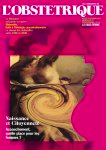 |
AKRICH M., 2003, «Les femmes emprisonnées ou libérées par les techniques» ,
Les dossiers de l'obstétrique, (317), p.XIV à XVI. |
 |
BARTHE Y., 2003, «De la décision à l’exploration : les transformations de l’expertise dans le domaine des déchets nucléaires.» ,
in GILBERT C., (ed.), Risques collectifs et situations de crise. Apports de la recherche en sciences humaines et sociales, Paris, L'Harmattan, p.129-143. |
 |
BARTHE Y., 2003, «Les conséquences innatendues des procédures de concertation. Retour d’expérience dans le domaine des déchets nucléaires» ,
in BILLÉ R., MERMET L., (ed.), Concertation, décision et environnement. regards croisés. Vol II, Paris, La Documentation française, p.193-202. |
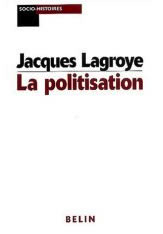 |
BARTHE Y., 2003, «Le recours au politique ou la problématisation politique "par défaut"» ,
in LAGROYE J., (ed.), La politisation, Paris, Belin, p.475-492. |
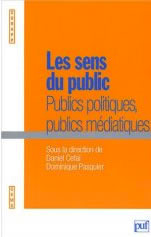 |
CALLON M., 2003, «Quel espace public pour la démocratie technique ?» ,
in CEFAI D., PASQUIER D., (ed.), Les sens du public. Publics politiques, publics médiatiques, Paris, Presses Universitaires de France, p.197-221.
Introduction de l'ouvrage :http://www.u-picardie.fr/labo/curapp/Publications/PUFIntro_sens_du_public.pdf |
| |
CALLON M., 2003, «Laboratoires, réseaux et collectifs de recherche» ,
in MUSTAR P., PENAN H., (ed.), Encyclopédie de l'innovation, Paris, Economica, p.693-722. |
| |
CALLON M., 2003, «Political machines. Note de lecture» ,
Cosmopolitiques, (3), p.207-222. |
 |
CALLON M., 2003, «Le renouveau de la question sociale: individus habilités et groupes concernés» ,
in MOATI P., (ed.), Nouvelle économie, nouvelles exclusions?, Editions de l'Aube, p.207-243. |
| |
CALLON M., 2003, «The increasing involvement of concerned groups in R&D policies : what lessons for public powers ?» ,
in GEUNA A., SALTER A., STEINMUELLER W., (ed.), Science and Innovation. Rethinking the Rationales for Funding and Governance, Cheltenham/Northampton, Edward Elgar, p.30-68. |
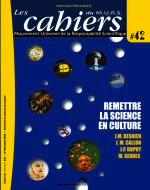 |
CALLON M., 2003, «Science et société : les trois traductions» ,
Les Cahiers du M.U.R.S, (42), p.57-69.
La recherche scientifique s’est d’abord déroulée dans des lieux qui étaient semi-publics puis elle s’est progressivement enfermée, pour des raisons qu’on va essayer d’élucider dans des endroits éloignés du monde. C’est ce que nous dit le dernier des Cassini, dans une langue admirable. Coulomb, au même moment, exprimait les mêmes préoccupations : pour faire une bonne science, il faut se couper du monde. C’est ce travail de confinement de la science, et cette évolution vers toujours plus de confinement, qui me semble constituer une des caractéristiques essentielles de la science moderne. Elle se claquemure dans des laboratoires, au milieu de ses équipements et de ses instruments, à distance du monde et en se maintenant éloignée le plus possible d’avec le public. (…) Le but de mon exposé est de montrer comment en quoi consiste cette situation de confinement de manière à imaginer des solutions qui permettent d’en atténuer les effets négatifs mais sans perdre les acquis qui sont liés au fait que les laboratoires ont su prendre leurs distances par rapport au monde. La meilleure notion, pour décrire cette situation étrange qui fait que la science est efficace parce qu’elle a su s’isoler, c’est la notion de traduction. |
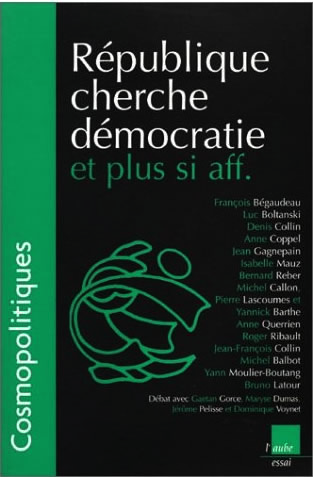 |
CALLON M., LASCOUMES P., BARTHE Y., 2003, «Débat-controverse: La démocratie technique casse-t-elle des briques?» ,
Cosmopolitiques, (3), p.108-130.
L’ouvrage de Callon, Lascoumes et Barthe (Agir dans un monde incertain) a représenté de ce point de vue un jalon important pour relier cet acquis empirique des expériences à des principes de mise en controverse des questions scientifiques et techniques. Il nous a semblé nécessaire de revenir vers les auteurs avec des questions que nous espérions dérangeantes, face à ce qui pouvait passer pour une focalisation abusive sur les questions de procédures émergentes, méconnaissant les principes hérités, qui structurent les débats eux-mêmes, ou les tâches de gestion ordinaire, ou encore la mauvaise volonté de certains acteurs qui pousseront toujours à la guerre. Leur argument admet leurs limites dans la prise en compte du rôle des médias, constituant, dans nos démocraties de masse, des outils, des espaces, des médiations indispensables mais créant ainsi d’autres contraintes de représentation. Pour le reste, les auteurs précisent leur approche, en la distinguant de celles de Habermas, de Jean-Pierre Dupuy notamment. Leur souci de créer les procédures, pour permettre les recompositions des questions et des participants eux-mêmes, distingue bien la démocratie dialogique de la démocratie participative. Mais les auteurs se préoccupent ici plus précisément de relier ces procédures à la démocratie délégative «classique» dont ils ne nient pas l’importance. Cette orientation dialogique peut ensuite être utilement confrontée avec le travail «d’invention démocratique» fait sur plusieurs fronts et par plusieurs acteurs. |
| |
CALLON M., LICOPPE C., MUNIESA F., 2003, «Présentation du numéro consacré aux "Technologies de marché"» ,
Réseaux, (122), p.9-12.
Accès au texte » |
 |
CALLON M., MUNIESA F., 2003, «Les marchés économiques comme dispositifs collectifs de calcul» ,
Réseaux, 21 (122), p.189-233.
Accès au texte »
Comment aborder empiriquement le caractère calculateur des marchés sans pour autant le dissoudre ? Dans cet article, les auteurs proposent un cadre théorique qui permette d’analyser des marchés sans négliger ses propriétés calculatrices concrètes. Dans une première section, ils construisent une définition large de « calcul », basée sur les enseignements de la sociologie des sciences et des techniques. Dans les sections suivantes, ils confrontent cette définition à trois éléments constitutifs des marchés : biens économiques, agents économiques et échanges économiques. Ils examinent d’abord la question de la calculabilité des biens : pour être calculés, les biens doivent être calculables. Dans la section suivante, ils introduisent la notion d’agence calculatrice distribuée pour comprendre comment les biens économiques sont effectivement calculés. Finalement, ils considèrent les règles et dispositifs matériels qui organisent la rencontre entre (et l’agrégation de) demandes et offres singulières, c’est-à-dire les organisations spécifiques qui rendent possible un échange calculé. Ces trois éléments définissent les marchés concrets comme dispositifs collectifs organisés qui calculent des compromis sur les valeurs des biens. Pour chacun de ces éléments, les auteurs observent diverses manifestations du calcul ainsi qu’ils l’ont défini, qu’ils illustrent avec des exemples empruntés principalement aux domaines des marchés financiers et de la grande distribution. |
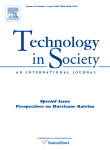 |
CALLON M., RABEHARISOA V., 2003, «Research "in the wild" and the shaping of new social identities» ,
Technology & Society, (25), p.193-204.
Accès au texte »
This article examines new forms of techno-science-society interactions, in which non-scientists work with scientists to produce and disseminate knowledge. The term “research in the wild” is coined to name a special version of this new phenomenon. The primary illustration for this new form of research is connected with the Association Française contra les Myopathies (AFM), the history of which is particularly suitable for exploring certain mechanisms at work in the co-production of scientific knowledge and social identities. The article first compares laboratory research with research in the wild, emphasizing patient interest in maintaining control over cooperation. It then notes the intimate interrelations between the construction of patient identities and the collective form of research in which they participate. Finally, it examines the role of genetics, both as it is integrated into the construction of the collective, and also into the production of mechanisms of exclusion—the reverse side of the constitution of a collective identity. |
 |
CHAMPENOIS-ROUSSEAU B., 2003, «Ethique et moralité ordinaire dans la pratique du diagnostic prénatal» ,
Thèse de doctorat, Paris, École Nationale Supérieure des Mines de Paris.
Accès au texte »
Peut-on continuer à penser les problèmes éthiques posés par les nouvelles techniques médicales sans interroger la médiation technique ? Cette thèse propose une approche nouvelle des dilemmes posés par la pratique ordinaire du diagnostic prénatal en analysant en profondeur les rencontres médecins femmes enceintes autour des techniques de diagnostic prénatal et notamment au sein de consultations d’échographie. Elle conjugue une approche interactionniste inspirée de la sociologie d’Erving Goffman, et une approche de sociologie des sciences et techniques pour montrer à quel point les petits alignements faits dans les rencontres ordinaires du suivi prénatal vont façonner le sens donné aux situations par les futurs parents. Les dilemmes éthiques couramment attribués à la pratique du diagnostic prénatal prennent naissance dans les situations ordinaires minutieusement décrites dans la thèse.
Is it still possible to analyse prenatal diagnosis related ethical dilems in terms which do not interrogate the nature of technical mediation ? The dissertation argues that there is much to learn by studying cautiously pregnant women-physicians encounters in the planned medical prenatal care. It dwells on the data gathered during several months of anthropological observations in two obstetrical clinics in the Paris Region. The attention for the observations was mostly centered on ultrasound scanning consultations. The author combines Erving Goffman’s interactionism with a science studies approach to show the imperceptible alignments set up during the ordinary consultations. These alignments will greatly influence the meaning given by parents-to-be and health care actors to what is at stake in the particular pregnancy and will inform as well the perception of ethical dilems. |
 |
COCHOY F., MALLARD A., 2003, «L’irruption du client à France Télécom, entre idéologies et technologies» ,
Journal de l'Ecole de Paris du Management, (40), p.23-30. |
| |
DENIS J., 2003, «La combinaison des outils de communication a linterface de la relation-client dans les TPE» ,
Réseaux, (121), p.71-92.
Accès au texte » |
 |
DRATWA J., 2003, «Taking Risks withe the precautionnary principle» ,
Thèse de doctorat, Paris, École Nationale Supérieure des Mines de Paris.
De plus en plus, ces dernières années, le principe de précaution est apparu au cœur de nombreuses controverses aux plans nationaux, Européen, et ‘global’. Les exemples comprennent les interminables affaires de bœuf, à savoir hormones et ESB (encéphalopathie spongiforme bovine, ou maladie de la vache folle), la question des produits chimiques tels que les plastifiants et les perturbateurs endocriniens, et les contentions quant au changement climatique et quant aux organismes génétiquement modifiés. Or quel est l’apport du principe de précaution dans les débats sur la science, la prise de décision et la régulation du risque ? Quels sont les enjeux liés à la définition, au cadrage et à l’action du principe de précaution ? Et quelles sont les innovations politiques qui sont ainsi suscitées ? Divers acteurs, diverses parties, se rapportent au principe de précaution avec diverses conceptions, exigences, et aspirations. L’une des façons de comprendre cette multiplicité de sens consiste à examiner la composition du principe de précaution dans les sites et situations où elle a lieu. C’est ce que je fais dans cette enquête, m’engageant dans la composition du principe de précaution sur le terrain des institutions de l’Union Européenne avec la Communication sur le principe de précaution de la Commission Européenne. |
| |
FRAENKEL B., PONTILLE D., 2003, «L’écrit juridique à l’épreuve de la signature électronique, approche pragmatique» ,
Langage et Société, (104), p.83-121.
La loi du 13 mars 2000 portant adaptation du droit de la preuve aux technologies de l’information concerne les actes sous seing privés, mais englobe aussi les actes authentiques. Cet élargissement des compétences d’une signature électronique, conçue au départ pour favoriser le commerce sur Internet, à l’ensemble des actes juridiques peut être perçu comme une avancée inéluctable. Cette vision évolutionniste masque pourtant de profonds, voire d’insoupçonnables bouleversements. Avec le passage du papier à l’électronique, c’est l’ensemble du dispositif d’authentification qui est remis en question. Nous interrogeons ces transformations d’un point de vue conceptuel en mettant en évidence en quoi les notions d’authenticité et de signature sont profondément tributaires d’un usage séculaire du papier et d’un point de vue empirique par l’observation des pratiques de professionnels de l’écrit juridique. Les données recueillies portent sur les activités concrètes des huissiers de justice. Ces investigations permettent de prendre la mesure d’une loi qui, sous les auspices d’une avancée « simplement » technique, remet en chantier toute une culture de la preuve écrite élaborée sur plusieurs siècles. |
| |
GRANDCLÉMENT C., 2003, «Note de lecture sur Cochoy, F., 2002, Une sociologie du packaging ou l’âne de Buridan face au marché, coll. Sciences sociales et sociétés, Paris, Presses Universitaires de France.» ,
Réseaux, 21 (122), p.287-294. |
| |
GRANDCLÉMENT C., 2003, «Les modalités d’identification des questions des citoyens, des agriculteurs et des consommateurs. Inventaire et comparaison des procédures de collecte de parole (rapport intermédiaire sous la dir. de Méadel, Cécile et Rabeharisoa, Vololona)» ,
Paris, Ministère de l'agriculture (DGER-SDRD) - CSI. |
| |
HENNION A., 2003, «Une pragmatique de la musique : expériences d’écoute. Petit retour en arrière sur le séminaire "Aimer la musique"» ,
MEI, (17), p.31-43. |
 |
HENNION A., 2003, «Music and Mediation. Toward a New Sociology of Music» ,
in CLAYTON M., HERBERT T., MIDDLETON R., (ed.), The Cultural Study of Music. A critical introduction, New York and London, Routledge, p.81-91.
Accès au texte »
After a century of studies, there is no agreement on what it means to construct a sociology of music. From the beginning this ‘of’ has been a place of tension, not of smooth coordination. If music has easily attracted social readings, there has been strong resistance to a systematic sociology of music whose aim would be to explain musical values or contents through reference to sociological factors. The most vehement prosecutor of such alleged reductionism was undoubtedly Adorno (e.g. 1976) - even though he himself became the worst reductionist when it came to popular culture (Adorno 1990); for him, only kinds of music that are not really art deserve sociological treatment (it is difficult to know if this is more disrespectful of popular music or sociology!). By contrast, the opposite programme - a positive explanation of the ways in which music is produced, diffused and listened to - has been attacked on the grounds that, given its refusal to address ‘music itself’, it cannot acknowledge music’s specificity. |
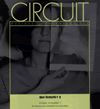 |
HENNION A., 2003, «Les usagers de la musique l’écoute des amateurs» ,
Circuit. Musiques contemporaines. "Qui écoute ?" 2. Donin, Nicolas (dir.), 14 (1), p.16-31.
Accès au texte »
Cette contribution est écrite à partir d’entretiens, d’observations ou d’expériences réalisés en équipe ces dernières années auprès d’amateurs ayant des attachements de nature et d’intensité diverses à la musique. Il s’agit de se mettre à l’écoute de leur écoute, en essayant le plus possible de laisser leur espace propre aux formes très variées qu’elle peut prendre. Loin d’être inférieures, incompétentes, passives ou obsédées par le seul plaisir immédiat du son ou de l’image facile, les oreilles des amateurs sont actives, créatives. Elles jouent avec les nouveaux moyens de la musique, la disponibilité démultipliée d’un répertoire, la manipulation instantanée de musiques diverses. Elles travaillent les positions de l’écoute, à commencer par la disposition physique de soi. Elles débouchent souvent sur un art de faire très personnel, inventant de véritables façons de se mettre en musique. Mettre l’accent sur l’écoute, c’est donc réintroduire l’hétérogénéité irréductible d’un réel-événement, fait de plis et de tissages. Non pas une œuvre et un auditeur: des corps, des dispositifs et des dispositions, de la durée, un objet insaisissable, un instant qui passe, des états qui surgissent. Après tout, hors des laboratoires et des écoles, qu’est d’autre la musique ? |
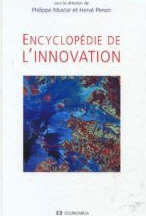 |
HENNION A., 2003, «L’innovation comme écriture de l’entreprise. Récits d’innovation au sein d’une entreprise de services» ,
in MUSTAR P., PENAN H., (ed.), Encyclopédie de l'innovation, Paris, Economica, p.131-152.
L’idée de cette contribution est de traiter l’innovation comme une modalité privilégiée que se donne l’entreprise pour produire sa réalité, de façon progressive et collective, à travers un travail constant de réécriture d’elle-même par elle-même. Aux confins de l’économie, de la gestion et de la sociologie, voire de l’anthropologie, le problème est celui de l’auto-description de l’entreprise. Pour une telle analyse, portant sur le rôle des récits d’innovation, les activités de services semblent un choix pertinent : traiter de l’innovation dans les services c’est d’abord rencontrer une foule de procédures, de schémas d’organisation des tâches, de dispositifs d’incitation (forums, prix, etc.), de démarches qualité, dont le principal produit est de l’écrit. Le problème de l’auto-description est un enjeu central de ces entreprises, sans cesse préoccupées de fixer une activité qui ne peut se réduire aux biens et objets produits. La prestation, toujours “à refaire”, est co-produite par le producteur, par l’observateur-gestionnaire et par l’usager. Le savoir-faire concurrentiel des industries de services réside largement dans leur capacité à se décrire, en particulier pour les activités très proches de l’usager, qui fonctionnent grâce à la circulation permanente et à la correction en temps réel d’une multitude de “books”, de fiches, de “bibles”. |
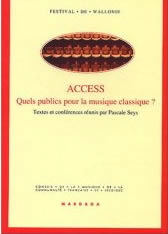 |
HENNION A., 2003, «Une sociologie de l’amateur» ,
in SEYS P., (ed.), ACCESS. Quels publics pour la musique classique ? Colloque international 6-9 juin 2002, Bruxelles, Sprimont, Communauté Française de Belgique/Mardaga, p.25-35. |
| |
HENNION A., 2003, «Le silence sur la musique» ,
Mouvements, (29), p.114-121.
Accès au texte »
Cet entretien a été réalisé avec Hennion, Antoine. Sociologue de la musique et directeur du Centre de sociologie de l’innovation de l’École des Mines de 1994 à 2002, Hennion, Antoine a participé au côté de Callon, Michel et de Latour, Bruno au renouveau de la sociologie. Son travail est doublement intéressant. D’abord parce qu’il consiste en une relecture originale des différentes sociologies de l’art et ensuite parce qu’au-delà de l’art, sa problématique de la médiation propose une réflexion originale sur les activités humaines. |
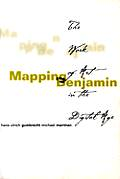 |
HENNION A., LATOUR B., 2003, «How To Make Mistakes on So Many Things at Once - and Become Famous for it» ,
in GUMBRECHT H., MARRINAN M., (ed.), Mapping Benjamin. The work of the art in teh digital age, Stanford, Stanford University Press, p.91-97.
Today, when re-reading the paper, our “spontaneous” reaction is quite different. Once due hommage has been paid to the precursor, once acknowledged what the present critique of Benjamin owes to Benjamin himself, we are quite amazed by the number of mistakes which the paper cheerfully gathers, and by the deep misunderstandings of most phenomena, modern or past, which it reveals. In a somewhat provocative analysis, we suggest here that, far from being the weak counterpart of a strong text unable to prevent its many qualities to assure it of a deserved success, these mistakes are the main source of the fascination which it has exerted, and which, as it appears, it still exerts. In a collage which few authors have dared making with so much ingenuity, every aspect of the modern world is briefly portrayed in “The Work of Art in the Age of Mechanical Reproduction”: art, culture, architecture, science, technique, religion, economics, politics, even war or psychoanalysis. And, each time, in our view, a category mistake makes Benjamin takes one for another. |
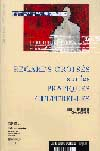 |
HENNION A., TEIL G., 2003, «Les protocoles du goût. Une sociologie positive des grands amateurs de musique» ,
in DONNAT O., (ed.), Regards croisés sur les pratiques culturelles, Paris, La Documentation française, p.63-82.
Accès au texte »
En concevant le goût comme activité réflexive des amateurs, il est possible de redonner leur importance à la fois aux objets sur lesquels portent ces pratiques, aux formats et aux procédures souvent très élaborés que les amateurs mettent en œuvre et discutent collectivement pour en assurer la félicité, à la nature de l’activité ainsi déployée, aux compétences qu’elles supposent et donc, surtout, à leur capacité créatrice, et non seulement reproductrice : à ce qui arrive à travers ces attachements, à ce qu’ils permettent de produire, tant du côté des objets que du côté des collectifs, des relations aux autres et à soi, et des amateurs eux-mêmes. Le goût, la passion, les diverses formes d’attachements ne sont pas des données premières, des propriétés fixes des amateurs, que l’analyse n’aurait qu’à déconstruire. Les publics sont actifs et producteurs, ils ne cessent de transformer aussi bien les objets et les œuvres que les performances et les goûts. Insistant sur le caractère pragmatique et performatif des pratiques culturelles, l’analyse peut mettre en évidence leur capacité à transformer et à créer des sensibilités nouvelles, et non à seulement reproduire sans le dire un ordre existant. |
| |
HENNION A., TEIL G., 2003, «Les protocoles du goût. Une pragmatique de l’amateur» ,
Paris, Ministère de la Culture (DEP). |
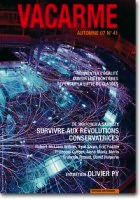 |
JOBARD F., LEMIEUX C., LINHARDT D., 2003, «Enquête sous le regard public – entretien avec Jean-Paul Brodeur» ,
Vacarme, (25).
Accès au texte » |
| |
JOBARD F., LINHARDT D., 2003, «Der Kontrolleur un der Verwalter : Vergleichende Pragmatik zweier Modalitäten des "Polizierens" in modernen Gesellschaften» ,
in ALLMENDINGER J., (ed.), Entstaatlichung un soziale Kontrolle. Verhandlungen des 31. Kongress der deutschen Gesellchaft für Soziologie in Leipzig, 2002, Opladen, Uske und Budrich, |
| |
LARÉDO P., 2003, «Six Major Challenges Facing Public Intervention in Higher Education, Science, Technology and Innovation» ,
Science and Public Policy, 30 (1), p.4-12. |
| |
LARÉDO P., 2003, «Universities and their Research Activities: On-going Transformations and New Challenges» ,
Journal of Higher Education, Management and Policy, 15 (1), p.119-140. |
| |
LARÉDO P., 2003, «Vers un espace européen de la recherche» ,
in MUSTAR P., PENAN H., (ed.), Encyclopédie de l'innovation, Paris, Economica, p.665-691. |
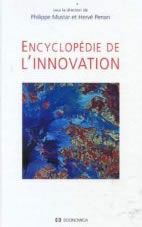 |
LARÉDO P., MUSTAR P., 2003, «Politiques publiques de recherche et d’innovation» ,
in MUSTAR P., PENAN H., (ed.), Encyclopédie de l'innovation, Paris, Economica, p.613-626.
This article focuses on the reasons for, and the development of public research and development policies. Firstly, it sets out the arguments that account for the different forms of public involvement in these areas. The second part analyzes five major transformations that took place in the 1990s: an increasing role for industrial research in overall national research, the focus on public support for industrial research in SMEs, the return to prominence of research with the multiplication of crises in public research assignments, the central position of the “public research sector” in the implementation of political priorities and the demultiplication of research assignments (regional and European) that raises difficult questions in relation to coordination and governance. All of these transformations represent challenges in terms of the definition and implementation of policies and they lead to a fundamental redefinition of the methods of public involvement at the beginning of the third millennium. |
| |
LATOUR B., 2003, «"Il ne faut plus qu’une science soit ouverte ou fermée ", entretien rédigé électroniquement avec Jean-Marc Lévy-Leblond» ,
Rue Descartes. Revue du Collège International de Philosophie, A quoi sert la philosophie des sciencesp.66-80.
41 |
| |
LATOUR B., 2003, «A nouveaux territoires, nouveau Sénat» ,
Cosmopolitiques, (3), p.203-206. |
| |
LATOUR B., 2003, «An Imaginary Dialogue on Modernity» ,
Festschrift für Ulrich Beck, 2003. |
 |
LATOUR B., 2003, Un monde pluriel mais commun. Entretiens avec François Ewald ,
La Tour d'Aigues, L'Aube. |
| |
LATOUR B., 2003, «L’impossible métier de l’innovation technique» ,
in MUSTAR P., PENAN H., (ed.), Encyclopédie de l'innovation, Paris, Economica, p.9-26. |
| |
LATOUR B., 2003, «The Promises of constructivism» ,
in IHDE D., SELINGER E., (ed.), Chasing Technoscience, Bloomington, Indiana University Press, p.27-46. |
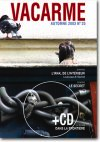 |
LEMIEUX C., BARTHE Y., DIDIER E., LINHARDT D., 2003, «Du lit de la tyrannie au droit à l’indifférence - la double signification du secret» ,
Vacarme, p.15-18.
25 |
 |
LÉPINAY V., 2003, «Les formules du Marché. Ethno-économie d’une innovation financière : les produits à Capital Garanti» ,
Thèse de doctorat, Paris, École Nationale Supérieure des Mines de Paris.
A partir d’un terrain mené dans une grande banque d’investissement française, cette thèse étudie la mise en marché d’une nouvelle classe de produits financiers – les produits à capital garanti – en suivant, des salles de classes aux salles de marché, les formules qui font ces produits.
Ce sont ces formules qui sont les fils conducteurs de cette ethno-économie : elles donnent accès aux techniques pédagogiques déployées pour saisir leurs spécificités, elles font entrer dans les techniques de vente propres à ces produits et elles éclairent les difficultés rencontrées par une organisation marchande tiraillée entre différents impératifs. Le succès de ces produits financiers exposent le capital de la banque à la prédation des autres grandes banques. Par son approche ethnographique, cette étude contribue à la nouvelle anthropologie de l’économie mais elle éclaire aussi la question des rapports entre le capital financier et le capital industriel.
Using a fieldwork in a french investment bank, this research studies the way to the market of a new class of financial products – the capital garantee product – by following the formulas that make the products, from the classroom to the trading room.
The formulas pave the way to this ethno economy : they give access to the pedagogical techniques used to grasp their specificity, they open up the realm of the sale techniques necessary to circulate these products and they highlight the difficulties met by an organisation under the pressure of different imperatives. The success of the capital garantee products threaten the capital of the bank. Through its ethnographic approach, this study belongs to the new anthropology of the economy but it also highlights the question of the relationship between finance capital and industrial capital. |
 |
MALLARD A., 2003, «Les instruments de la qualité mesurable» ,
in DUBUISSON S., NEUVILLE J., (ed.), Juger pour échanger, Paris, INRA-MSH, p.93-122. |
| |
MALLARD A., 2003, «A propos de l’article de François Xavier de Vaujany, "Les figures de la gestion du changement socio-technique"» ,
Sociologie du Travail, 45 (4), p.509-514.
On propose ici de situer brièvement l'approche adoptée par François-Xavier de Vaujany dans son texte sur les figures de la gestion du changement sociotechnique. Cette approche s'inspire des travaux issus du structurationnisme anglo-saxon, un courant qui partage avec la sociologie des technologies une vision du caractère contextuel et négocié des liens entre phénomènes techniques et phénomènes organisationnels. Elle permet de confronter diverses trajectoires d'usage des nouvelles technologies de l'information et de la communication dans les organisations, et d'examiner le rôle joué par des médiateurs spécifiques dans les dynamiques d'appropriation. Cette approche constitue une entrée stimulante dans la discussion sur l'impact des nouvelles technologies dans le changement organisationnel.
Abstract
The approach adopted by François Xavier de Vaujany draws from “structurationist” research in English-speaking social sciences, a current that shares with the sociology of technology a vision of the contextual and negotiated nature of the links between technical and organizational phenomena. Various trajectories in the way organizations use new information and communication technology can be compared; and the role, examined that specific mediators play in the appropriation process. This approach provides stimulating input in discussions about the impact of new technology on organizational change. |
 |
MALLARD A., 2003, «Les NTIC en petites entreprises. Présentation» ,
Réseaux, (121), p.9-16.
Accès au texte »
Les études sur les petites entreprises occupent une place un peu particulière dans l’ensemble des recherches consacrées au monde du travail et des organisations par les sciences économiques, sociales et de gestion. Pour le sociologue, elles apparaîtront sans doute comme le parent pauvre de la discipline : même si cela n’est écrit nulle part, la sociologie des organisations,... |
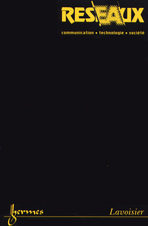 |
MALLARD A., 2003, «"De la bouche à l’oreille". Analyse des usages marchands du téléphone chez les petits professionnels» ,
Réseaux, (121), p.43-69.
Accès au texte »
Le téléphone constitue un outil de télécommunication banal et universellement répandu dans les Très Petites Entreprises, jouant un rôle important dans la constitution et le maintien des liens avec l’environnement économique. L’article propose une analyse des usages économiques du téléphone à partir d’une enquête quantitative menée sur plus de 800 TPE en combinant des données de trafic téléphonique et des données concernant l’activité et les usages. Cette analyse souligne le caractère dynamique et asymétrique de la téléphonie des TPE, et propose une typologie des usages prenant en compte des modes d’inscription différenciés du téléphone dans l’activité relationnelle.
The telephone is a tool regularly used by all very small businesses (VSBs) to create and maintain relations with their economic environment. This article, which draws on a quantitative survey on over 800 VSBs, analyses commercial use of the telephone by combining business data with data on telephone traffic and uses. The analysis highlights the dynamic and asymmetrical nature of telephony in VSBs, and proposes a typology of uses that takes into account different modes of inscription of the telephone in business relations. |
| |
MALLARD A., RÉMY E., 2003, «Les normes favorisent-elles l’action en précaution ?» ,
Natures, Sciences, Sociétés, 11 (4), p.359-467. |
 |
MARTIN S., 2003, «Peut-on utiliser la sociologie de la traduction pour la gestion de l’innovation ?» ,
Thèse de doctorat, Paris, École Nationale Supérieure des Mines de Paris.
Accès au texte »
Cette thèse vise à préciser la normativité de la " sociologie de la traduction " ou " sociologie des sciences et des techniques de Bruno Latour et Michel Callon " appliquée à la gestion de l'innovation. L'étude porte sur les dispositifs développés lors de deux projets de recherche européens, STEMM et PROTEE (EC-DG7), consistant à dériver des ressources conceptuelles de la sociologie de la traduction une liste d'indicateurs de suivi et d'évaluation des projets en situation d'incertitude radicale ou d'impossibilité de probabiliser l'avenir. Partant de ce travail de terrain, l'analyse, réflexive, montre comment la " mise en boîte noire " de la sociologie conduit à abandonner sa traditionnelle posture de neutralité descriptive inspirée de l'ethnométhodologie au profit d'affirmations normatives sur la qualité des procédures d'exploration des projets, affirmations qui sont, d'ailleurs, ce qui permet de proposer un dépassement possible du problème de gestion posé. |
| |
MARZOUKI M., MÉADEL C., 2003, «Gouvernance d’Internet, collectifs électroniques, régulation, production de normes» ,
Paris, rapport de fin d'action, CNRS. |
| |
MÉADEL C., 2003, «Retorica del primo telegiornale» ,
Giornale di storia contemporanea, VI (2), p.78-95. |
 |
MUNIESA F., 2003, «Des marchés comme algorithmes : sociologie de la cotation éléctronique à la Bourse de Paris» ,
Thèse de doctorat, Paris, École Nationale Supérieure des Mines de Paris.
Accès au texte »
Cette thèse examine la question du caractère mécanique des marchés à travers une analyse sociologique de l’informatisation de la cotation à la Bourse de Paris. Elle montre que la " mise en algorithme " de ce marché concret demande des formes complexes et variées d’explicitation du mécanisme marchand (qui vont au-delà des visions élémentaires qu’en donnent souvent les sciences sociales), qu’elle requiert tout un travail d’ingénierie aussi bien technique que sociale (un marché automatisé n’en reste pas moins social), et qu’elle engage des controverses sur la justesse de la détermination des prix (en raison notamment des effets qu’une certaine configuration algorithmique peut avoir dans la représentation collective de la valeur).
This thesis examines the notion of "market mechanism" through a sociological analysis of electronic trading at Paris Bourse. The thesis shows that the automation of this concrete market calls for complex and varied forms of elucidation of market mechanisms (as opposed to rather simplistic views often developed in the social sciences), that it requires a whole program of both social and technical engineering (an automated marked is still a social space), and that it generates controversies on the accuracy of price discovery (because of the effects a particular algorithmic configuration can have on the collective representation of value). |
 |
MURET A., 2003, «La Qualité en recherche : la construction d’une norme française - décembre 2003» ,
Thèse de doctorat, Paris, École Nationale Supérieure des Mines de Paris.
En octobre 2001, l’Association française pour la normalisation publie un fascicule de documentation intitulé : " Démarche qualité en recherche - Principes généraux et recommandations ". Jusqu'à présent, les démarches Qualité au sens de celles promues par les organismes de normalisation et encadrées par des normes avaient été mises en oeuvre dans les entreprises à caractère industriel ou de service. Dans cette thèse, nous avons étudié les processus par lesquels la question de la Qualité a été introduite dans le domaine de la recherche française et nous avons tenté de savoir pourquoi les institutions politiques ont été amenées à compléter, par une norme de management, les dispositifs de régulation mis en place par la communauté scientifique elle-même. Ces interrogations ont semblé d’autant plus pertinentes que cette communauté s'est précisément structurée historiquement autour de " normes " explicites ou implicites supposées régir ses pratiques. |
 |
MUSTAR P., 2003, Les chiffres clés de la science et de la technologie. Edition 2003 ,
Paris, Economica. |
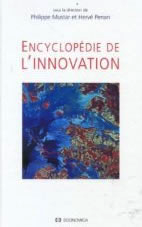 |
MUSTAR P., 2003, «Politiques de soutien à la création d’entreprises de haute technologie» ,
in MUSTAR P., PENAN H., (ed.), Encyclopédie de l'innovation, Paris, Economica, p.627-644. |
| |
MUSTAR P., 2003, «"L’encyclopédie de l’innovation”, entretien avec S. Belaud» ,
Le Journal du CNRS,,
166-167 |
| |
MUSTAR P., 2003, «Public Support for the Spin-Off Companies from Higher Education and Research Institutions» ,
Science & Technology policies in Europe: New Challenge and New Responses, Conference proceedings, European Commission. 2003. |
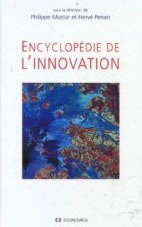 |
MUSTAR P., 2003, «Création d’entreprises à partir de la recherche» ,
in MUSTAR P., PENAN H., (ed.), Encyclopédie de l'innovation, Paris, Economica, p.519-538. |
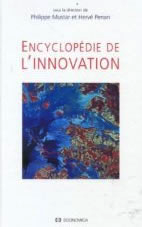 |
MUSTAR P., PENAN H., 2003, «Introduction» ,
in MUSTAR P., PENAN H., (ed.), Encyclopédie de l'innovation, Paris, Economica, p.1-7. |
| |
NADAI A., 2003, «Art et paysage à l’épreuve de la controverse environnementale. Anthropologie du projet de requalification de la sapinière (Grigny - Essonne). Rapport intermédiaire» ,
Ministère de la Culture et de la Communication. Direction de l'Architecture et du Patrimoine.. |
| |
PONTILLE D., 2003, «Formats d’écriture et mondes scientifiques : le cas de la sociologie» ,
Question de communication, (3), p.55-67.
Accès au texte »
La production des connaissances scientifiques passe par l’élaboration collectivement réglée de textes. Mais le cadrage des activités textuelles n’exclut pas la diversité des conventions d’écriture et des procédures de validation au sein d’un même monde scientifique. Ce texte questionne les fondements de l’authenticité des contributions à partir d’un corpus d’articles sociologiques. Il identifie différents formats d’écriture et caractérise des spécificités nationales. L’analyse qualifie les mondes d’action auxquels se rattachent ces formats, et interroge les ressorts de l’authenticité des contributions sociologiques.
The production of scientific knowledge requires a collective and standard elaboration of texts. But the shaping of textual activities does not evacuate diversity of writing conventions and of validation procedures in the same scientific world. This text questions the foundations of authenticity in a sample of sociological articles. It identifies different writing formats and characterizes national specificities. The analysis qualifies actional worlds at which writing formats are connected, and inquires the authenticity of sociological contributions. |
| |
PONTILLE D., 2003, «Authorship practices and institutional contexts in sociology: elements for a comparision of the United States and France» ,
Science Technology & Human Values, 28 (2), p.217-243.
Accès au texte »
Studies of scientific authorship have been developing for forty years. This phenomenon is becoming increasingly well-documented. However, most of these studies deal with fields considered in only one national context. This article tries to understand the specific modalities of sociological authorship within two national contexts: the United States and France. The analysis yields an understanding of the logics intimately linking texts and contexts, throwing light upon the way research and authorship practices are partly shaped by their particular institutional and historical context, but also upon the interactions between cognitive content and patterns of publication. |
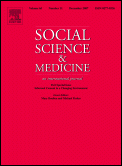 |
RABEHARISOA V., 2003, «The struggle against neuromuscular diseases in France and the emergence of the "partnership model" of patient organisation» ,
Social Science & Medicine, 57 (11), p.2127-2136.
Accès au texte »
The past few decades have witnessed the increasingly active participation of patient organisations in research activities concerning them. They contribute substantially to the funding of scientific and clinical research. More importantly, certain patient organisations take strategic decisions concerning that research, and contribute to the production of knowledge on their diseases. In France, the AFM (Association Française contre les Myopathies—French Muscular Dystrophy Organisation), is a striking illustration. The paper argues that the model of the AFM's engagement in research—the “partnership model”—is original insofar as it renews the power relations between patients and professionals found in two classic models: the “auxiliary model” and the “emancipatory model”. Based on a long-term study of the French Muscular Dystrophy Organisation, this “partnership model” is characterised and its implications discussed in three respects: the possible generalisation of the mode of relations it establishes between patients and professionals; its effects on the steering of research; and its consequences for the dynamics of patient organisations movements. |
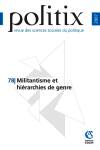 |
RABEHARISOA V., 2003, «Note de lecture : Barbot, Janine, Les malades en mouvements. La médecine et la science à l’épreuve du SIDA, Paris, Balland, 2002» ,
Politix, 16 (61), p.219-223.
Accès au texte »
Le livre de Janine Barbot décrit l'activisme thérapeutique des associations de lutte contre le sida durant la période allant de 1982 à 2001. Cet ouvrage possède, à mes yeux, trois qualités essentielles. D'abord il s'appuie sur une enquête historique et ethnographique de longue haleine. Cette enquête permet à l'auteur de nous montrer la complexité de l'espace de mobilisation contre le sida, et de nous offrir, dans le même temps, le recul nécessaire pour comprendre le sens de cette mobilisation. Ensuite le livre prend pour objet l'implication des associations de malades dans la définition des formes de traitement de leur maladie. C'est un phénomène sur lequel on ne dispose, aujourd'hui encore, que d'un petit nombre d'études de cas riches et détaillées. Enfin l'auteur ne se contente pas de nous raconter l'histoire des associations de lutte contre le sida. Elle nous invite également à suivre la structuration de l'action collective et du débat public sur cette maladie. |
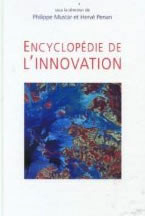 |
RABEHARISOA V., 2003, «Mobilisation de la recherche par les associations de malades» ,
in MUSTAR P., PENAN H., (ed.), Encyclopédie de l'innovation, Paris, Economica, p.597-612.
De nombreuses études historiques montrent que les ligues, les fondations et les associations ont toujours contribué au financement, à l’orientation et à la structuration de la recherche biologique et clinique. (…) Mais ces dernières décennies ont été témoins d’un phénomène qui tend à se renforcer : l’implication croissante des associations de malades stricto sensu1 dans les débats et les activités qui les concernent, et jusque dans les activités de recherche qui ne relèvent pas a priori de leurs compétences et de leurs prérogatives. |
| |
RÉMY C., 2003, «Activité sociale et latéralisation. Pour une étude micro-ethnographique de la tension déterminisme-marge de manœuvre» ,
Recherche sociologiques, 34 (3), p.95-114.
Cet article présente les résultats d'un travail d'observation micro-ethnographique, réalisé à l'aide de l'outil filmique, de situations sociales diverses, visant à mettre en lumière "le mode mineur de la réalité" ou encore la latéralisation des activités sociales. Il se dégage de cette étude la vision d'un acteur capable de faire dériver, de latéraliser, mais aussi de singulariser le déroulement général d'une situation dite sociale. Néanmoins, l'émergence de cette marge de manoeuvre ne peut être dissociée de la structure, de l'ordre de sens de la situation. Déterminisme et marge de manoeuvre sont étroitement intriqués. Cette focalisation sur les détails mineurs et la tentative de typologie qui l'accompagne dessinent une vision "étagée" de la situation qui rend compte de la possibilité d'une cohabitation, certes hiérarchisée, de plusieurs mondes sur lesquels s'appuient les acteurs et de l'oscillation constante entre l'engagement et la distanciation propre à l'activité humaine. |
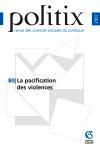 |
RÉMY C., 2003, «Une mise à mort industrielle humaine ? L’abattoir ou l’impossible objectivation des animaux» ,
Politix, 16 (64), p.51-73.
Accès au texte »
Loin d'être absente de l'abattoir, la question de l'humanisation est introduite en son sein, notamment par le biais de dispositifs ajustés. Ce ne sont pas des « larmes en guise d'hommage » que l'on essaie de réintroduire mais bien une mise à mort industrielle « humaine ». Celle-ci engage une « exo » définition de l'animal, portée essentiellement par des acteurs extérieurs à la pratique. Elle se heurte aux « endo » définitions de l'animal, portées notamment par des acteurs, les « tueurs », qui sont engagés dans le corps à corps de la mise à mort. C'est à cette tension entre « exo » et « endo » définitions que nous nous intéresserons principalement dans cet article. Le corps du texte sera construit autour de deux types de données : des données historiques, tout d'abord, notamment récoltées au cours d'une étude sur les archives municipales de l'abattoir de Clermont-Ferrand8, mais aussi de données ethnographiques, issues d'un travail de terrain dans un abattoir. La perspective diachronique est indispensable afin de suivre l'émergence progressive d'un discours « sur et pour l'animal » en général et concernant plus précisément les abattoirs. L'analyse de documents visant une réflexion sur l'humanisation de l'abattage fournira une ressource afin de cerner la constitution de ce que nous avons nommé une « exo » définition de l'animal. L'enquête ethnographique permet d'étudier la mise à mort concrète des animaux de boucherie et les « endo » définitions de l'animal qui l'accompagnent. Notre démarche ethnographique se veut attentive aux séquences d'action et à la production pas à pas de l'activité afin de cerner les formes d'engagement au plus près des situations concrètes, mais elle ne néglige cependant pas les propos d'acteurs énoncés hors des cours d'action. C'est bien d'un parti pris situationnel dont il s'agit, qui vise à « substituer aux définitions purement nominales des phénomènes sociaux, des définitions réelles fondées sur une observation "naturaliste" des activités concertées qui les configurent en temps réel ». Cet aller-retour entre synchronie et diachronie voudrait poser à terme la question de la possibilité de dialogue entre une « exo » et des « endo » définitions de l'animal, sujet-objet de l'activité d'abattage. |
| |
RÉMY C., 2003, «Fictionnalité, singularité et liturgie : micro-ethnographie d’une messe catholique et d’un culte protestant luthérien» ,
ethnographiques.org [en ligne], (4).
Accès au texte »
L’article présente un essai d’analyse « sécularisée » de deux rituels chrétiens : une messe catholique et un culte protestant. Il s’agit, à l’aide de l’outil filmique, de décortiquer les détails de ces deux situations et ainsi de rendre compte des engagements “ordinaires” des acteurs nécessaires à la production de la forme-rituel. Les concepts de singularité et de fictionnalité apparaissent comme incontournables afin de rendre compte de ce qui se passe “ici et maintenant”, et leurs occurrences sont comparées dans les deux cadres caractérisés par une structuration différente. Le cheminement de l’article vise à insister sur l’importance du type de cadrage afin de rendre compte de la présence de la singularité, de la fictionnalité qui en est un corollaire, et enfin de l’effet de négation inhérent au rituel, car au cœur même du religieux. Des extraits de séquence ainsi que des images issues des films égrènent le texte, et permettent de reposer la question de la réversibilité texte/image, texte/corpus.
Abstract : This article presents a visual and written description of two religious rites : a catholic mass and a lutheran protestant service. The analysis aims at presenting the rites’ actors as ordinary men who depend on their skills, their habits and their singularity to produce action in connection with frames structure. It is a secularized reading which is proposed, through the notions of singularity and “fictionality”. The argument is that a religious rite is characterized by a constant negation which is, in fact, at the heart of the religious in general. It leads to analyze the rite as a sequence of actions to be closely observed on a series of film abstracts and images. |
| |
WINANCE M., 2003, «Résumé de thèse. Thèse et prothèse. Le processus d’habilitation comme fabrication de la personne. L’Association française contre les myopathies face au handicap.» ,
handicap - revue de sciences humaines et sociales, (98), p.83-85. |
| |
WINANCE M., 2003, «Pourriez-vous être politiquement correct lorsque vous parlez des personnes handicapées ? Sur la force du discours dans le champ du handicap» ,
handicap - revue de sciences humaines et sociales, (97), p.54-70. |
| |
WINANCE M., 2003, «La double expérience des personnes atteintes d’une maladie neurosmusculaire : rétraction et extension» ,
Sciences Sociales et Santé, 21 (2), p.5-31. |
| |
WINANCE M., 2003, «Vers un discours politiquement correct ?» ,
Problèmes politiques et sociaux, (892), p.39-41. |
 |
LATOUR, B., WEIBEL, P., 2002, Iconoclash beyond the image wars in science, religion and art ,
Cambridge, MIT Press. |
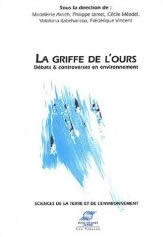 |
AKRICH, M., JAMET, P., M&.,ADEL, C.,CIL., RABEHARISOA, V., VINCENT, F.,D&E.,RIQ., 2002, La Griffe de l’ours. Débats et controverses en environnement ,
Paris, Presses de l'Ecole des Mines.
Comme l’a montré la sociologie des sciences et des techniques, les controverses apparaissent comme des « moments chauds » qui mettent en cause tout à la fois l’identité des acteurs et des objets en cause, la définition des problèmes, la qualification des catégories et des stratégies. Les controverses environnementales n’échappent pas à cette règle – et nous allons en donner quelques exemples – ce qui entraîne un certain nombre de conséquences à la fois sur les moyens et les compétences nécessaires pour aller vers leur résolution. |
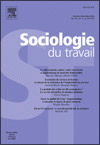 |
AKRICH M., 2002, «"Communication et intelligence collective. Le travail à l’hôpital" Compte-rendu de l’ouvrage de Michèle Grosjean et Michèle Lacoste» ,
Sociologie du travail, (44), p.451-454.
Accès au texte »
L’ouvrage de Michèle Grosjean et Michèle Lacoste est organisé autour d’un pari audacieux : rendre compte, à partir d’une analyse fine des interactions dans la situation de travail, des formes d’organisation et des modalités de coordination effectivement à l’œuvre ; autrement dit, effectuer le passage d’une analyse « micro » dans lequel les entités observées sont des individus, à un niveau « méso » dans lequel ceux-ci disparaissent au profit d’entités comme les organisations, les modes de coordination, les fonctions et les métiers. |
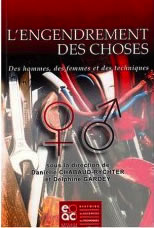 |
AKRICH M., 2002, «Du genre aux genres : vers la dénaturalisation d’une catégorie sociale ?» ,
in CHABAUD-RYCHTER D., GARDEY D., (ed.), L'engendrement des choses : des hommes, des femmes et des techniques, Paris, Editions des archives contemporaines, p.95-100.
Accès au texte »
Dans cette contribution, je me propose donc de caractériser, dans les différentes approches décrites, la notion de « genre » et de montrer comment elle s'articule à celle de « sexe » : on verra comment celle-ci, en quelque sorte référent obligé de la notion de « genre », prise dans une relation duale avec elle, sort elle-même transformée par ces évolutions conceptuelles. La complexification des relations entre genre et techniques aboutit à des conceptions assez différentes du genre même. Les travaux décrits ont conduit à des remises en question dans les champs de recherche sur lesquels ils se sont appuyés et ont permis de faire avancer l'histoire et la sociologie des techniques ; peut-être est-il temps que, la maturité du domaine aidant, le front d'interrogations se déplace vers les « gender studies » elles-mêmes. |
| |
AKRICH M., 2002, «L’Observatoire des usagers sur la périnatalité» ,
Paris, MIRE-CSI.
Ce rapport décrit la mise en place d'un Observatoire régional des usagers en périnatalité, pendant une phase expérimentale d'un an et demi, période qui a été prolongée, afin de pouvoir accompagner l'Observatoire jusqu'à ses premiers résultats ; il s'agissait d'observer, de décrire et d'analyser les modalités de développement de cet Observatoire et de ses interfaces avec les professionnels de santé, les tutelles, les gestionnaires et le public, de mettre en évidence les conséquences de ce fonctionnement sur la manière dont les performances du système de soins sont définies, et d'évaluer le rôle que pourrait tenir un dispositif de ce type dans le système de santé.
Ce rapport est scindé en quatre parties principales : dans une première partie, nous revenons sur l'origine du projet, de ses premières transformations et de son démarrage effectif avec la formation du groupe de personnes constituant l'Observatoire ; dans un second temps, nous suivons les débuts de l'Observatoire jusqu'à un moment charnière de son histoire, c'est-à-dire le moment où le groupe s'est donné un projet commun, l'écriture d'un Livre Blanc ; ensuite, nous voyons comment progressivement s'est construit un point de vue collectif au travers de deux éléments principaux, la rédaction du Livre Blanc et la confrontation de l'Observatoire au monde extérieur ; enfin, dans une dernière partie, nous revenons sur les difficultés principales qu'a rencontré le groupe et nous essayons de donner quelques pistes quant à la manière dont il pourrait fonctionner dans l'avenir. |
 |
AKRICH M., CALLON M., LATOUR B., 2002, «The Key to Success in Innovation» ,
International Journal of Innovation Management, 6 (2), p.187-206.
We all know of innovations which either made their creators a fortune or which led to their downfall. It is easy to retrospectively explain success as a stroke of genius or failure as a blatant mistake. Easy in retrospect…but what about innovation in the making? How does the innovator navigate the pitfalls which threaten him? |
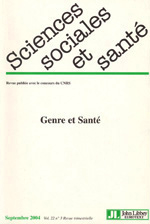 |
AKRICH M., MÉADEL C., 2002, «Prendre ses médicaments/prendre la parole : les usages des médicaments par les patients dans les listes de discussion électroniques» ,
Sciences Sociales et Santé, 20 (1), p.89-116.
Accès au texte »
Quelle place les patients accordent-ils au médicament dans la manière dont ils envisagent leur maladie et leurs rapports aux médecins ? Cet article s'appuie sur un matériau original : les contributions de patients à des listes de discussion sur internet. Il met en évidence d'une part, la grande variété des aspects pris en compte par les patients dans leurs échanges sur le médicament, et d'autre part, l'existence de rapports aux médicaments spécifiques de la maladie traitée : dans les trois cas étudiés (cancer, maladie de Parkinson, et fibromyalgie), l'on voit comment, au travers du médicament, se redéfinissent la maladie, le patient, la médecine... en relation avec des éléments hétérogènes comme l'organisation des soins, le partage des compétences entre médecins, l'état des connaissances sur la maladie, sur les traitements, la nature même des traitements.
What role does medication play in patients' perception of their disease & their relations with doctors? This article draws on original material: patients' contributions to discussion groups on the Internet. It highlights first, the wide variety of considerations taken into account by patients in their discussions on medication &, second, the existence of relations with medication peculiar to the disease in question. In the three cases studied (cancer, Parkinson's disease, & fibromyalgia), we see how, through medication, the disease, patient, & medication are redefined in relation to varied elements such as the organization of health care, the sharing of competencies between doctors, the state of knowledge on the disease & its treatment, & the nature of the treatments used. |
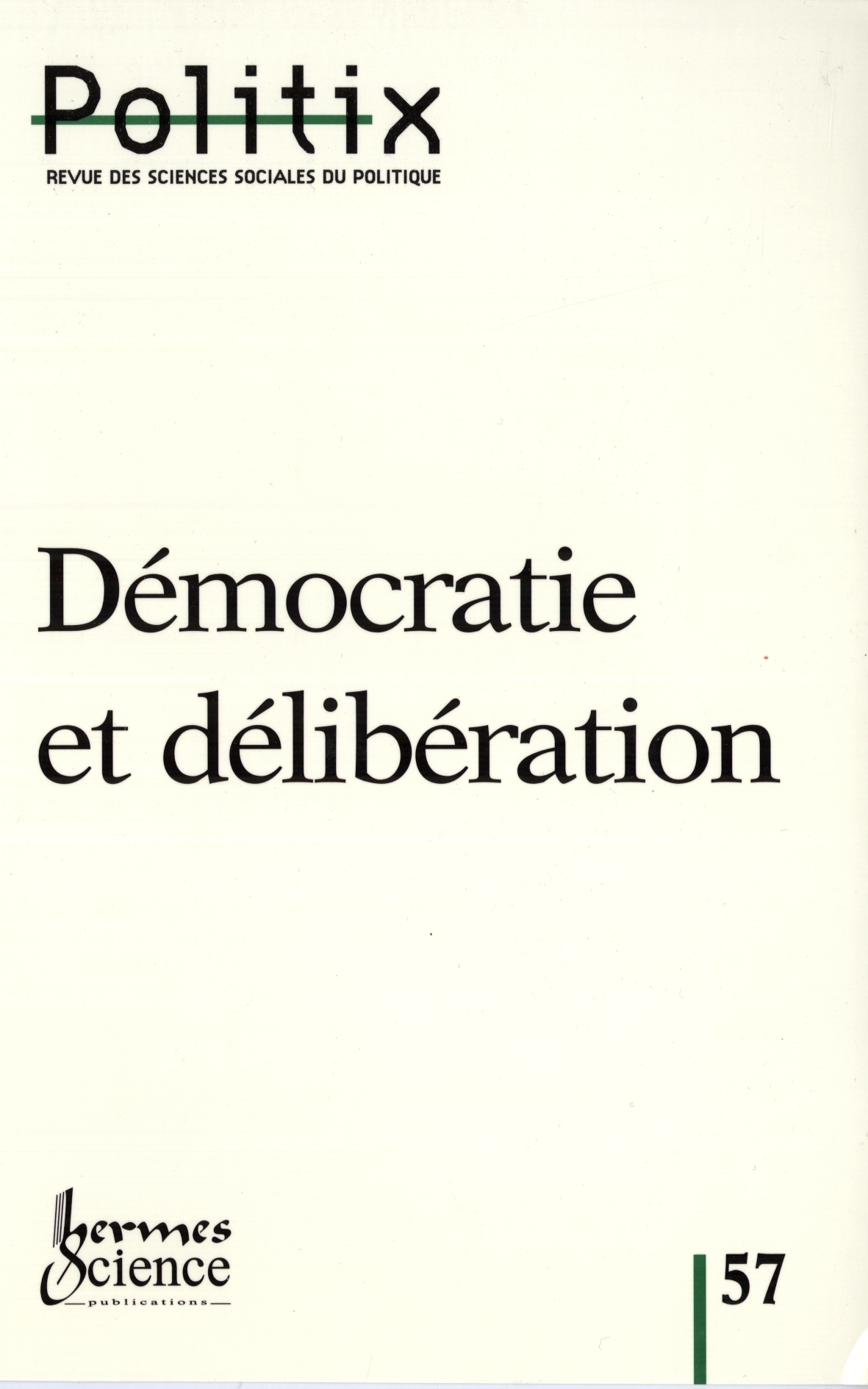 |
BARTHE Y., 2002, «Rendre discutable. Le traitement politique d’un héritage technologique» ,
Politix, (57), p.57-78.
Accès au texte »
Les procédures de consultation qui fleurissent depuis quelques années dans le domaine des sciences et des techniques sont généralement dénoncées comme étant de simples techniques de manipulation des gouvernés visant à légitimer des décisions déjà prises. Une telle vision ne rend toutefois pas compte du caractère souvent ambivalent de ce type de procédures qui, tout en permettant de canaliser les controverses, ont pour résultat d’augmenter la « discutabilité » des problèmes et d’ouvrir concrètement l’éventail des choix possibles. Ainsi, à partir du cas des auditions publiques organisées en 1990 par le Parlement français sur la question du stockage des déchets nucléaires, cet article montre comment un dispositif de consultation peut tout à la fois contribuer à encadrer une controverse et avoir pour effet d’ouvrir la « boîte noire » de décisions techniques pourtant considérées comme irréversibles.
Making Things Debatable: The Political Treatment of a Technological Lock-In
The consulting procedures that have been growing for a few years in the sciences and technologies fields are usually declared as being simple tools of conjuring from the rulers in order to justify decisions already taken. However, such a point of view doesn’t show the character often ambivalent of this type of procedures, which can canalise the controversy, but can also increase the “debatability” and open the space of possible choices. Like this, starting from the public hearings organised in 1990 by the French Parliament about the nuclear wastes storage, this article shows on the one hand the way a consultation purview can contribute to enclose a controversy, and on the other hand acts like opening the “black box” of some technological decisions eventhough considered as irreversible. |
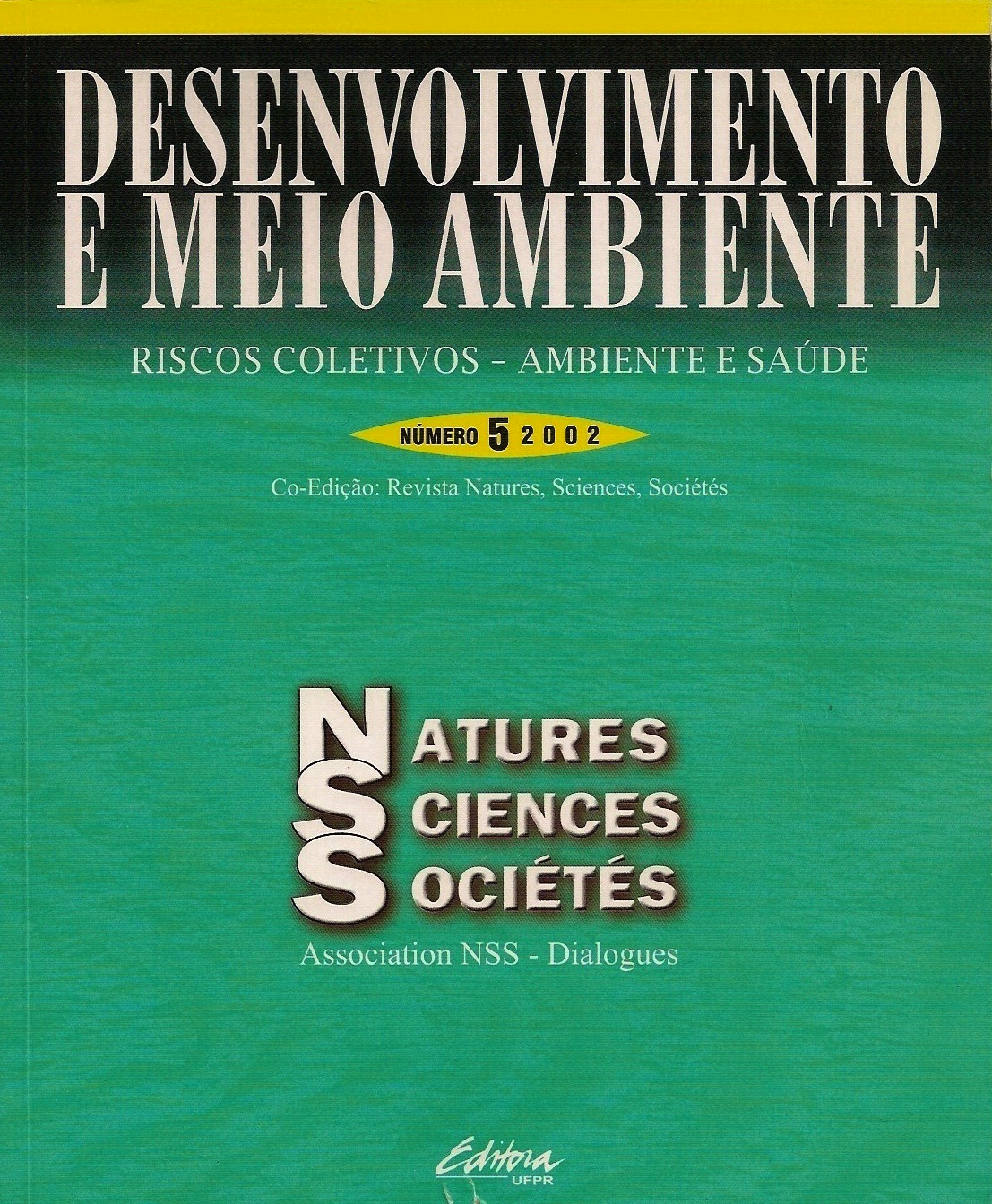 |
BARTHE Y., 2002, «Tornar discutivel: tratamento político de uma herança tecnológica» ,
Desenvolvimento e Meio Ambiente, (5), p.23-38. |
| |
BARTHE Y., 2002, «Le rôle de l’office parlementaire d’évaluation des choix scientifiques et technologiques. Une mise en perspective historique» ,
Paris, INRA CE. |
| |
BARTHE Y., CALLON M., LASCOUMES P., 2002, «Réponse à Franck Aggeri (à propos de Agir dans un monde incertain. Essai sur la démocratie technique, Paris, Le Seuil, 2001» ,
Annales des Mines. Gérer et comprendre, p.61-65.
Accès au texte »
68 |
| |
BARTHE Y., GRAMAGLIA C., 2002, «"Mission impossible" ? Retour sur la mission collégiale de concertation Granite» ,
Paris, ANDRA. |
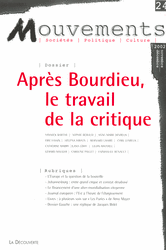 |
BARTHE Y., LEMIEUX C., 2002, «Quelle critique après Bourdieu ?» ,
Mouvements, (24), p.33-38.
Accès au texte »
On ne discutera pas ici de la question, pourtant éminemment problématique, de savoir si la sociologie a pour vocation de contribuer à plus de justice sociale et de démocratie. Nous nous situerons en effet d’emblée dans un espace délimité par des démarches sociologiques qui répondent par l’affirmative à une telle question. Au passage, on ne saurait perdre de vue qu’il s’agit là d’un espace somme toute restreint. C’est pourquoi les oppositions sur lesquelles nous allons mettre l’accent ne doivent pas occulter que, par des voies certes bien différentes, les sociologies auxquelles nous ferons ici référence tendent à pousser politiquement « dans le même sens ». |
| |
BENVEGNU N., VILLALBA B., 2002, «Us et coutumes de l’interactivité en campagne. Les sites de candidat aux élections» ,
Terminal, (87), p.53-64. |
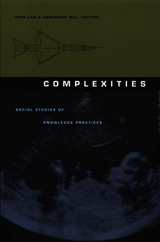 |
CALLON M., 2002, «Writing and (Re)writing Devices as Tools for Managing Complexity» ,
in LAW J., MOL A., (ed.), Complexities : Social Studies of Knowledge Practices, Durham and London, Duke University Press, p.191-217. |
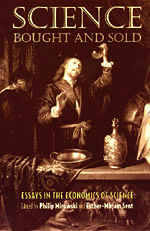 |
CALLON M., 2002, «From Science as an Economic Activity to Socioeconomics of Scientific research. The Dynamics of Emergent and Consolidated Techno-economic Networks» ,
in MIROWSKI P., SENT E., (ed.), Science bought and sold. Essays on the Economics of Science, Chicago, London, The University of Chicago Press, p.277-317. |
| |
CALLON M., 2002, «Pour en finir avec les incertitudes ?» ,
Sociologie du Travail, (44), p.261-267.
Dans cet article l'auteur fait part de ses réflexions concernant le concept de qualité, lié à celui d'incertitude. L'auteur s'attache ici à démontrer les liens existants entre qualité et processus de qualification, l'individualisation des produits qui permettent la fixation d'un prix et de calculer ainsi la qualité. |
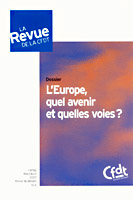 |
CALLON M., 2002, «Les controverses socio-techniques» ,
La Revue de la confédération française démocratique du travail, p.15-23. |
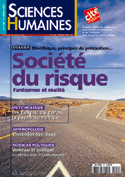 |
CALLON M., 2002, «Qu’en pensent les citoyens ?» ,
Sciences Humaines, p.44-47.
Les incertitudes qui pèsent sur le nucléaire, les plantes transgéniques, les manipulations du vivant... ont, au cours de ces dernières années, suscité en France comme ailleurs des débats publics entre experts, élus et citoyens ordinaires. La réussite de tels débats dépend cependant de conditions précises. |
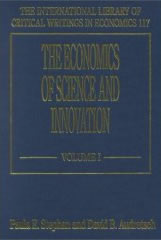 |
CALLON M., 2002, «Is Science a Public Good ?» ,
in STEPHAN P., AUDRETSCH D., (ed.), The Economics of Science and Innovation, London, Edward Elgar,
Should governments accept the principle of devoting a proportion of their resources to funding basic research? From the standpoint of economics, science should be considered as a public good and for that reason it should be protected from market forces. This article tries to show that this result can only be maintained at the price of abandoning arguments traditionally deployed by economists themselves. It entails a complete reversal of our habitual ways of thinking about public goods. In order to bring this reversal about, this article draws on the central results obtained by the anthropology and sociology of science and technology over the past several years. Science is a public good, not because of its intrinsic properties but because it is a source of diversity and flexibility. |
| |
CALLON M., 2002, «La démocratie technique» ,
Sciences et Avenir, p.66-71.
mars-avril |
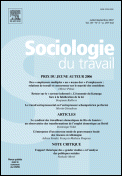 |
CALLON M., 2002, «"Nouvelle économie, nouveau mythe". Compte-rendu de l’ouvrage de Jean Gadrey» ,
Sociologie du Travail, p.591-593.
Accès au texte »
La nouvelle économie est une invention des médias que très peu d'économistes ont osé reprendre à leur compte. Revenant sur les textes fondateurs parus dans la presse spécialisée, Jean Gadrey fournit un portrait robot de cette nouvelle économie : elle se caractérise par une forte croissance sans inflation ; sa dynamique repose sur le développement et la diffusion des NTIC (nouvelles technologies de l'information et de la communication) qui, en stimulant l'essor des activités de service, deviennent la source de nombreux emplois ; enfin, elle scelle la victoire définitive de l'économie de marché. |
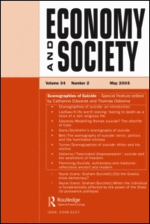 |
CALLON M., BARRY A., SLATER D., 2002, «Technology, politics and the market: an interview with Callon, Michel. Interview conducted by Andrew Barry and Don Slater» ,
Economy and Society, 31 (2), p.285-306.
Callon discusses the relation of his work on markets with his previous work on the anthropology of science & technology. He makes the point that markets are constructed collective identities, & that the intermeshing of "techno-sciences" with economic markets creates a proliferation of new identities which, in turn, require new procedures & political institutions. He explains his shift from an "actor-network" theory of social & economic processes to a concept of "entanglement" to explain more precisely the complicated relationships of the marketplace, science, & technology. He proposes that mainstream economists are not prepared to provide the tools for analyzing the issues involved in modern markets, & that these issues should be the focus of social scientists. |
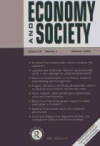 |
CALLON M., MÉADEL C., RABEHARISOA V., 2002, «The Economy of Qualities» ,
Economy and Society, 31 (2), p.194-217.
The aim of this paper is to highlight the main characteristics of what the authors call 'the economy of qualities'. The authors show that qualifying products and positioning goods are major concerns for agents evolving within the 'economy of qualities'. Competition in such an economy is structured through two basic mechanisms. The first is what the authors propose to call the process of singularization of products. The second is the mechanism whereby consumers are attached to, and detached from, goods that are proposed to them. At the heart of these logics, one can find multiple socio-technical devices that are designed by economic agents, which ensure the distribution of cognitive competencies, and which constantly and finely tune supply and demand. Relying upon Jean Gadrey's work, the authors claim that the economy of qualities is nowhere more effective than in services providing activities, and especially in those sectors that invest heavily in New Information and Communication Technologies (ICTs). Finally, the authors suggest that, in the economy of qualities, the functioning and the organization of markets are issues that are shared by scholars and actors. In these highly reflexive markets, a collaboration between them is needed. |
| |
DENIS J., 2002, «Les dispositifs de visibilisation sur les scènes marchandes» ,
Réseaux, (116), p.257-288.
Accès au texte » |
| |
DENIS J., PONTILLE D., 2002, «L’écriture comme dispositif d’articulation entre terrain et recherche» ,
Alinéa. Sciences sociales et humaines, (12), p.93-106.
Accès au texte »
Si de nombreuses réflexions épistémologiques s'intéressent au “ travail ” du sociologue, il est une activité qui reste peu questionnée : l'écriture. Le propos de cet article est d'interroger, d'un point de vue méthodologique, le statut et la place de l'écriture dans le processus de recherche. |
| |
GRAMAGLIA C., 2002, «Humains et goélands. Conflits de proximité en Languedoc-Roussillon» ,
Espaces et Sociétés, (110-111). |
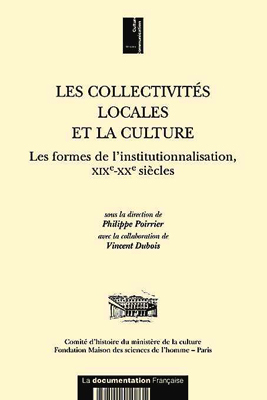 |
HENNION A., 2002, «La musique, la ville et l’Etat. Plaidoyer pour des études de cas» ,
in POIRRIER P., (ed.), Les collectivités locales et la culture, Paris, Comité d'Histoire du Ministère de la Culture- Fondation Maison des Sciences de l'Homme- La Documentation Française, p.315-325. |
| |
HENNION A., 2002, «Pourquoi rejouer Robin et Marion…» ,
Journal de Royaumont, 3p.2-3.
mars 2002 |
| |
HENNION A., 2002, «Interculturalité… Slogan, ou rapport nouveau à d’autres mondes ?» ,
Cité Musiques, 38p.7.
avril-mai 2002 |
| |
HENNION A., 2002, «L’écoute à la question» ,
Revue Française de Musicologie, 88 (1), p.95-149.
L’idée de départ est simple : considérer la musique comme un résultat incertain, dépendant de ce qu’en fait son auditeur, et non comme un acquis. Car par ces mots, d’expériences, de résultats, il ne faut pas entendre que, tels des physiciens ou des éthologues, nous ayons revêtu des blouses blanches et transformé en cobayes quelques volontaires rémunérés pour les soumettre à des tests réglés. On peut même dire que c’est la démarche exactement inverse que veulent suivre nos tentatives expérimentales. Le propos n’est pas d’extraire des réactions des auditeurs les fondements objectifs d’une écoute qu’ils ne vivraient d’ordinaire que de façon subjective 3. Il ne s’agit pas plus, selon une approche critique familière au sociologue, de révéler les déterminations sociales véritables de l’écoute derrière un plaisir ou une relation au sonore vécus comme purement musicaux ; ni même, plus modestement, de mesurer le mieux possible les réactions d’un auditeur à l’audition d’un objet considéré comme donné. Car sommes-nous si sûrs de savoir ce qu’est la musique ? C’est déjà faire beaucoup d’hypothèses que de prendre comme une évidence qu’il s’agit de se mettre devant une source sonore et de l’écouter en essayant vaillamment d’y percevoir un sens, ou au moins d’éprouver quelque chose – sensations, émotions, significations – en fonction de ses compétences et de son histoire personnelle. |
| |
HENNION A., 2002, «La musique, entre le geste et la chose» ,
Sciences humaines, hors-série n° 37p.62-64.
A la différence des arts plastiques, la musique ne laisse pas une trace dans la pierre ou sur une toile. Aussi faut-il l'approcher à travers des médiations : des partitions, des instruments, des interprètes, une scène, un public... |
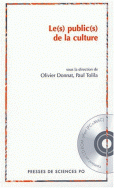 |
HENNION A., 2002, «Ce que ne disent pas les chiffres ... Vers une pragmatique du goût» ,
Le(s) public(s). Politiques publiques et équipements culturels, 28-30 novembre 2002.
Accès au texte »
Cette contribution se propose de revenir sur les problèmes posés à la sociologie de la culture par la question du goût. Elle s’appuie de façon privilégiée sur le cas de la musique et de ses divers genres. L’objectif des enquêtes que nous avons conduites sur diverses formes d’attachement était de sortir la sociologie du goût d’une conception critique devenue hégémonique, qui ne le conçoit que comme un jeu social passif et ignorant de lui-même. Comment intégrer ce qu’a apporté la sociologie (le caractère surdéterminé des goûts, leur fonction de marqueurs des différences sociales, leur fonctionnement ritualisé, les rapports de domination entre haute culture et cultures populaires...), sans avaliser la réduction ainsi opérée de pratiques réelles à leurs déterminismes sociaux cachés ? Le goût est une modalité problématique d’attachement au monde. Il est possible de l’analyser, selon cette conception pragmatique, comme une activité réflexive, corporée, cadrée, collective, équipée, produisant dans le même geste les compétences d’un amateur et le répertoire des objets auxquels il tient. |
| |
HENNION A., 2002, «Quelques remarques sur la pragmatique et la réflexivité» ,
Sociologie et sociétés, 34 (2), p.219-222.
Cette contribution se propose de revenir sur les problèmes posés à la sociologie de la culture par la question du goût. Elle s’appuie de façon privilégiée sur le cas de la musique et de ses divers genres. L’objectif des enquêtes que nous avons conduites sur diverses formes d’attachement était de sortir la sociologie du goût d’une conception critique devenue hégémonique, qui ne le conçoit que comme un jeu social passif et ignorant de lui-même. Comment intégrer ce qu’a apporté la sociologie (le caractère surdéterminé des goûts, leur fonction de marqueurs des différences sociales, leur fonctionnement ritualisé, les rapports de domination entre haute culture et cultures populaires...), sans avaliser la réduction ainsi opérée de pratiques réelles à leurs déterminismes sociaux cachés ? Le goût est une modalité problématique d’attachement au monde. Il est possible de l’analyser, selon cette conception pragmatique, comme une activité réflexive, corporée, cadrée, collective, équipée, produisant dans le même geste les compétences d’un amateur et le répertoire des objets auxquels il tient. |
 |
HENNION A., 2002, La Pasión musical ,
Barcelone/Buenos Aires/México, Paidos. |
| |
HENNION A., TEIL G., 2002, «Discovering Quality or performing Taste ? A Sociology of the Amateur» ,
Theoretical Approaches to Food Quality, 10-11 january 2002. |
| |
JOSEPH I., THIÉRY O., SEGAL J., BEAUQUIER S., 2002, «La mise en service de Meteor - ligne 14. Impact socio-organisationnel et transférabilité des innovations technologiques» ,
Paris, Ministère de l'équipement, des transports et du logement. |
| |
KARPIK L., 2002, «Que faire des singularités ?» ,
Sociologie du Travail, (44), p.279-287. |
 |
LATOUR B., 2002, Jubiler ou les tourments de l’énonciation religieuse ,
Paris, Les Empêcheurs de penser en rond. |
| |
LATOUR B., 2002, «Una sociologia senza oggetto ? Note sull’interroggettività» ,
in LANDOWSKI E., GIANFRANCO M., (ed.), La società degli oggetti. Problemi di interoggettività, Roma, Meltemi, p.203-232. |
| |
LATOUR B., 2002, War of the World : What about Peace ? ,
Chicago, Prickly Paradigm Press. |
| |
LATOUR B., 2002, «The Science Wars. A dialogue» ,
Common Knowledge, 8 (1), p.71-79. |
| |
LATOUR B., 2002, «Guerre des mondes - offre de paix» ,
Ethnopsy-les mondes contemporains de la guérison, (4 - avril), p.61-80. |
| |
LATOUR B., 2002, «Gabriel Tarde and the End of the Social» ,
in JOYCE P., (ed.), The Social in Question. New Bearings in History and the Social Sciences, London, Routledge, p.117-132. |
| |
LATOUR B., 2002, «Morality and Technology. The End of the Means» ,
Theory, Culture and Society, 19 (5/6), p.247-260. |
| |
LATOUR B., 2002, Iconoclash. Gibt es eine Welt jenseits des Blikderkrieges ? ,
Berlin, Merve Verlag. |
| |
LATOUR B., 2002, «The Ends of Means» ,
Theory, Culture and Society, 19p.247-260. |
| |
LATOUR B., 2002, «Et si on parlait un peu de politique ?» ,
Politix, 15 (58), p.143-166. |
| |
LATOUR B., 2002, «What is Iconoclash ? Or is there a World beyond the Image Wars ?» ,
in LATOUR B., WEIBEL P., (ed.), Iconoclash beyond the Image Wars in Science, Religion and Art, Cambridge, MIT Press, p.14-38. |
 |
LATOUR B., 2002, La fabrique du droit. Une ethnographie du Conseil d’Etat ,
Paris, La Découverte. |
| |
LATOUR B., 2002, «Cosmopolitiques, quels chantiers ?» ,
Cosmopolitiques, (1), p.15-26. |
| |
LATOUR B., 2002, «Another Take on the Science and Religion Debate» ,
Templeton Series on Science, Religion and Human Experience, 2002. |
| |
LINHARDT D., 2002, «All Windows were open, but nothing happened? Nothing! Well ... except a lot» ,
in LATOUR B., WIEBEL P., (ed.), Iconoclash - Beyond the Image Wars in Science, Religion and Art, Karlsruhe Cambridge, ZKM MIT Press, p.148-150. |
| |
LINHARDT D., 2002, «La police comme objet de science et de politique. Le miroir de la Polizeiforschung, RFA, 1970-2000» ,
Paris, IHESI/CSI. |
| |
LINHARDT D., 2002, «Der Luftpirat» ,
in HORN E., KAUFMANN S., (ed.), Grenzverletzer: Figuren politischer Subversion, Berlin, Kadmos-Verlag, p.224-247. |
| |
MALLARD A., 2002, «Les nouvelles technologies dans le travail relationnel : vers un traitement plus personnalisé de la figure du client ?» ,
Sciences de la Société, numéro spécial "Les figures sociales du client", (56, mai 2002), p.63-77. |
 |
MÉADEL C., 2002, «Du développement des mesures d’audience radiophoniques» ,
in EVENO P., (ed.), Histoire des industries culturelles en France, XIXe-XXe siècle, Paris, ADHE-Sorbonne, |
| |
MUSTAR P., 2002, «PME-PMI et propriété industrielle : le passage au brevet» ,
Paris, Ministère de l'Economie, des Finances et de l'Industrie. |
| |
MUSTAR P., 2002, «High-growth SMEs and Employment» ,
OECD.
Accès au texte »
High-growth SMEs are among the top 5-10% of all growing firms in terms of the number of jobs created, and are key players in economic growth. They are found in all industries and regions, and tend to be concentrated in a limited number of sectors which differ from one country to another. High-growth SMEs are more R&D-intensive than firms with an average or below-average growth rate, and are often younger. While there is no single blueprint for growth, high-growth firms share certain characteristics. In particular, growth is closely related to a company's ability to innovate, which implies continual changes to products, processes, and organisational and managerial practices. This requires continuous adaptation to the changing business environment, and taking advantage of networks of alliances and partnerships with other firms, service providers, and public and private institutions. What are the difficulties confronting high-growth SMEs? How can governments help them overcome barriers to growth? This study explores promising policy avenues and shows that there is no one "best way" to achieve high growth. It paves the way to a more in-depth consideration of high-growth SMEs, of their nature and of their role in an increasingly competitive globalised economy. |
| |
MUSTAR P., 2002, «Les PME à forte croissance et l’emploi» ,
Paris, OCDE. |
| |
MUSTAR P., JULIEN P., ESTIMÉ M., 2002, «Les PME à forte croissance : un comparaison internationale» ,
Revue Gestion 2000, 19 (5). |
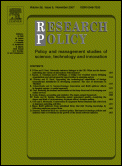 |
MUSTAR P., LARÉDO P., 2002, «Innovation and Research Policy in France (1980-2000) or the disappearance of the Colbertist State» ,
Research Policy, 31 (1), p.55-72.
Accès au texte »
This paper is concerned with the dynamic of intervention by public authorities in the domain of research and innovation. It has a dual objective. On the one hand, it seeks to challenge the stereotyped image of the French system, presented in the literature as completely characterised by the dominant role of a Colbertist state (that is to say an interventionist model which places emphasis on the dominant weight of large civil and defence programmes, on the division between the universities and the CNRS, on the congenital separation between research and firms, on the monopolisation of public support by certain large industrial groups). Evolutionary changes are described, which prove that this classic image is no longer relevant in capturing the current dynamic of the French research and innovation system. On the other hand, this paper seeks to show that this challenge is a consequence of close examination of the relevance of the notion of “national policy for research and technology” itself. Alongside national policy, regional and European policies are emerging, the effects of which are so important that public intervention can no longer be seen only in terms of national policy. |
| |
PONTILLE D., 2002, «La signature scientifique. Authentification et valeur marchande» ,
Actes de la Recherche en Sciences Sociales, (141-142), p.72-78.
Accès au texte »
Cet article présente une analyse synthétique de la manière dont la signature des publications scientifiques s'est progressivement modifiée. Dispositif de validation des énoncés, la signature est devenue un instrument de mesure de la productivité des chercheurs et des laboratoires. Cette transformation a de fortes implications sur la manière dont les chercheurs envisagent désormais leurs productions. |
| |
RABEHARISOA V., 2002, «Forms of Involvement of Patient Organisations into Research» ,
in BERTILSSON M., (ed.), Scientific Governance : Problems and Prospects. Opening Conference of the FP5 Thematic Network, Copenhague, Sociologisk Institut Copenhague, p.59-78. |
 |
RABEHARISOA V., CALLON M., 2002, «L’engagement des associations de malades dans la recherche» ,
Revue Internationale des Sciences Sociales, (171), p.65-73.
Les associations de malades jouent un rôle grandissant dans le soutien à la recherche sur les maladies qui les concernent. En quoi consiste ce rôle ? Toutes les associations sont-elles impliquées de la même manière, ou bien existe-t-il une pluralité de formes d’engagement ? Et si oui, comment en rendre compte ? La réponse à ces questions dépend des pays, de leurs cadres institutionnels et de leur histoire. Elle dépend également de la nature et des caractéristiques des maladies. Mais au-delà de la diversité des configurations, il est possible de découvrir des formes d’engagement typiques. Cet article s’efforce de fournir de premiers éléments d’information et de réflexion. Étant donné le peu de travaux disponibles, il se concentre essentiellement sur le cas français pour essayer d’en dégager des leçons plus générales. Il montre l’implication croissante des associations dans la recherche. Il propose de distinguer deux types d’association selon le rôle qu’elle assigne aux malades, les associations-auxiliaires et les associations-partenaires. Il souligne l’originalité des associations-partenaires qui tendent à combler le traditionnel grand partage entre spécialistes et profanes. |
 |
RABEHARISOA V., CALLON M., 2002, «The involvements of patients’ associations in research» ,
International Social Science Journal, 54 (171), p.57-63.
Patients' associations increasingly support research into the diseases affecting them. What exactly is their role? Are all such associations involved in the same way, or are there various forms of involvement? And if there are, how can they be reviewed? The answers to these questions vary with the countries, their institutional settings, & their history. They also depend on the nature & features of the diseases. Beyond these varied configurations, however, typical forms of involvement may be discerned. This article seeks to supply basic information & put forward some thoughts on the subject. As there are so few studies available, it deals in the main with the situation in France, from which more general conclusions are tentatively drawn. It shows the growing involvement of patients' associations in research. It singles out two types of association, on the basis of the role they assign to patients: auxiliary associations & partner associations. Emphasis is laid on the originality of the partner associations, which tend to bridge the customary rift between specialists & the rest of us. |
| |
THIÉRY O., 2002, «Les modes de certification, de capitalisation et de généralisation des innovations de service : le cas de la ligne 14» ,
Paris, Ministère de l'Equipement, des Transports et du Logement. |
| |
LAR.,DO, P., MUSTAR, P., 2001, Research and Innovation Policies in the New Global Economy. An international Comparative Analysis ,
Cheltenham, Edward Elgar. |
 |
AKRICH M., 2001, «From accusations to causes. Integrating Controversies and Conflicts into the Innovation Process» ,
in GOUJON P., HERIARD DUBREUIL B., (ed.), Technology and Ethics, A European Quest for Responsible Engineering, Leuven, Peeters, p.157-167.
Accès au texte »
Les ingénieurs sont souvent confrontés, au cours d'un processus d'innovation, à des discours accusatoires: en particulier, lorsqu'un problème survient - ce qui est pratiquement inévitable - les "gens", les choses, les organisations sont accusés par certains acteurs impliqués d'être responsables de ces difficultés. Ces discours parfois violents et qui semblent échapper à la rationalité supposée de l'innvoation sont difficiles à gérer pour les ingénieurs qui essaient souvent de les disqualifier. Dans cet article, nous allons montrer, à partir d'une étude de cas, que ces accusations dovent être considérées comme des tentatives pour analyser du point de vue stratégique le processus d'innovation, pour l'expliquer et pour définir des moyens d'action: elles doivent prises au sérieux et leur "gestion" se trouve au coeur du travail des innovateurs |
| |
AKRICH M., MÉADEL C., 2001, «Listes de discussion électroniques et nouveaux collectifs autour des problèmes de santé. Vers une caractérisation des collectifs et débats» ,
Paris, CNRS - CSI. |
| |
AKRICH M., MÉADEL C., 2001, «Les cercles professionnels de discussion électronique sur la santé» ,
Paris, France Télécom R&D - CSI. |
| |
AKRICH M., MÉADEL C., 2001, «Violence, Territoires, Mobilité. Synthèse des séminaires. Document de réflexion» ,
PUCA IHESI. |
 |
AKRICH M., MÉADEL C., FRENAIS J., OCQUETEAU F., 2001, «Désordres en territoires urbains. Pour une confrontation des positions» ,
Cahiers de la sécurité intérieure, 43 (1er trimestre), p.81-100.
Face à la complexité et la diversité des problèmes posés par la gestion de l'insécurité dans les territoires urbains, l'approche urbanistique et l'intervention sur le bâti ne sont qu'une composante parmi d'autres d'une réponse globale et d'une doctrine qu'il est urgent de se forger. Faute d'une recette miracle - sécuritaire, communautaire, tec -, le préalable d'une mise à plat s'imposait permettant de mieux comprendre les difficultés, les dérives, les enjeux. En convoquant pendant plusieurs mois de l'année 2000 urbanistes, spécialistes de la sécurité et chercheurs, le séminaire organisé par l'Ecole des Mines et le PUCA et l'IHESI a permis cette confrontation dont les principaux résultats sont exposés ici. |
| |
AKRICH M., MÉADEL C., PARAVEL V., 2001, «Des usages professionnels du e.mail : la recherche comme cas pilote» ,
Paris, CSI/France télécom R&D. |
| |
AKRICH M., MÉADEL C., PARAVEL V., 2001, «Le temps du mail, écrit instantané ou oral médiat» ,
Sociologie et Sociétés, XXXII/2p.153-170.
Accès au texte »
A partir d'une enquête empirique menée auprès d'une cinquantaine de chercheurs appartenant à des disciplines variées, cet article aborde la question des usages du courrier électronique et de la caractérisation des formes de communication associées à ce medium, en prenant pour fil conducteur l'analyse de la gestion temporelle des activités qui lui sont liées.
Based on an empirical survey of some 50 researchers from various disciplines, this paper examines the question of the uses of electronic mail & the characterization of forms of communication associated with this medium, the main theme being the analysis of time management of related activities. |
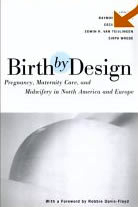 |
AKRICH M., PASVEER B., 2001, «Obstetrical Trajectories. On training women/bodies for (home) birth» ,
in DE VRIES R., BENOIT C., VAN TEIJLINGEN E., WREDE S., (ed.), Birth by Design, London, Routledge, p.229-241.
Accès au texte »
The Dutch obstetrical system rests on the assumption that pregnancy and birth are normal life-events. Because Dutch obstetrics assumes that pregnancy and birth are considered normal until there is evidence of the contrary, midwives, as well as gynecologists, practice an appropriate kind of ‘expectant' care: one tries to interfere/intervene in the birth process as little as possible, and midwives try to keep women out of the second line as long as possible. But it must also be noted that many more ‘low risk' women are choosing for a hospital delivery with their midwife for reasons of comfort, safety, or because many of their peers have done the same .
In this chapter we examine why it is that women plan to deliver in hospital, and why they are increasingly referred to specialist care during labor. Our hypothesis is that a marked rupture tends to occur in the obstetrical trajectory designed for women, and that this rupture inscribes itself in the ways women (and midwives) (fail to) trust the working of an unassisted body during labor. |
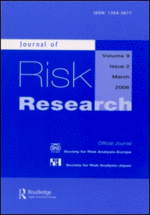 |
BARTHE Y., MAYS C., 2001, «Communication and information in France’s underground laboratory siting process: clarity of procedure, ambivalence of effects» ,
Journal of Risk Research, 4 (4), p.411-430.
France is engaged in an innovative research programme for the management of high level radioactive wastes. The programme is framed by a national law (Waste Act of 30 December 1991) that seeks to guarantee 'permanent democratic control' of an open process. At least two underground laboratories are required by this Act in order to test the feasibility of a permanent deep repository. This study, performed in 1996-97, centres on the candidate evaluation phase of laboratory site search. Public information and communication practices by the national radioactive waste management agency, Andra, are examined. Agency information efforts appear to fit well with a strategy of insertion into the local context, including methods to rally potential allies inlocal officials. The study also examines the activities of local information commissions (LICs) created by law on each of three candidate sites, and reviews arguments by opponents to the Rhône Valley site proposal. The LICs are judged highly institutionalized, thereby missing an opportunity to foster a true public forum and solution-seeking debate. Opponents' discourse is seen to centre on the danger of regional stigmatization, with concern for mid-term economic losses. The communication process overall is characterized by institutional attempts to channel and contain controversy. Counter plays by other stakeholders illustrate the broad spectrum of risk definitions associated today with radioactive waste. |
| |
BEAUDOUIN V., CARDON D., MALLARD A., 2001, «De clic en clic. Créativité et Rationalisation dans les usages des intranets d’entreprise» ,
Sociologie du Travail, 43p.309-326. |
| |
CALLON M., 2001, «Les méthodes d’analyse des grands nombres» ,
in POUCHET A., (ed.), Sociologie du travail: quarante ans après, Paris, Elsevier, p.335-354. |
| |
CALLON M., 2001, «La place des associations de malades: histoires et perspectives» ,
Réalités familiales. Revue de l'Union nationale des associations familiales, Numéro spécial sur les maladies rares (58/59/60), p.76-78. |
| |
CALLON M., 2001, «Actor Network Theory.» ,
in SMELSER N., BALTES P., (ed.), International Encyclopedia of the Social and Behavioral Sciences., Oxford, UK,, Pergamon, p.62-66. |
| |
CALLON M., 2001, «Partenariats entre recherche publique et entreprises privées» ,
in DRON M., DE LATTRE-GASQUET M., (ed.), Politiques d'aide et recherche agricole. Bilan et perspectives, Paris, INRA Editions, p.223-266. |
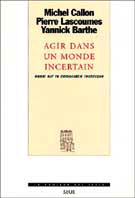 |
CALLON M., LASCOUMES P., BARTHE Y., 2001, Agir dans un monde incertain. Essai sur la démocratie technique ,
Paris, Le Seuil.
Et s'il fallait enfin tirer les conséquences des crises à répétition que nos sociétés traversent lorsqu'elles sont confrontées aux débordements inattendus des sciences et des techniques ? S'il fallait en finir une bonne fois pour toutes avec la vision héroïque des décisions tranchantes et tranchées que le souverain prend en situation d'incertitude et en toute méconnaissance de cause ? Si Alexandre rengainait son épée, le monde s'effondrerait-il ? Non, mais la démocratie, elle, en ressortirait fortifiée. Tel est le propos des auteurs de ce livre. Ces derniers refusent les traditionnelles oppositions entre spécialistes et profanes, professionnels de la politique et citoyens ordinaires. Ils concentrent plutôt leur attention sur les nouvelles relations entre savoir et pouvoir qui émergent des controverses socio-techniques et sur les procédures inventées pour les traiter. L'enjeu est de taille : faire apparaître les conditions dans lesquelles les sociétés démocratiques vont se rendre capables d'affronter les défis des sciences et des techniques, redéfinir un espace public réunissant non pas des individus désincarnés mais des femmes et des hommes pris dans des histoires singulières. Après l'âge de la démocratie délégative, celui de la démocratie dialogique ? |
| |
CALLON M., RABEHARISOA V., 2001, «Génétique et lien social» ,
La génétique humaine et vous, Paris, AFM-INSERM-Nathan, p.92-94. |
| |
CALLON M., RABEHARISOA V., 2001, «L’invention de nouvelles formes d’association: l’exemple de l’Association française contre les myopathies» ,
Réadaptation, 483 (septembre-octobre), p.25-27. |
| |
CALLON M., RABEHARISOA V., DEMONTY B., MOGOUTOV A., 2001, «Le rôle de l’AFM dans la production de nouvelles formes de solidarité» ,
Paris, Rapport MIRE/AFM. |
 |
HENNION A., 2001, «Music Lovers : Taste as Performance» ,
Theory Culture & Society, 18 (5), p.1-22.
Accès au texte »
This article presents the implications, objectives and initial results of a current ethnographic research project on music lovers. It looks at problems of theory and method posed by such research if it is not conceived only as the explanation of external determinisms, relating taste to the social origins of the amateur or to the aesthetic properties of the works. Our aim is, on the contrary, from long interviews and observations undertaken with music lovers, mostly in the classical field, to concentrate on gestures, objects, mediums, devices and relations engaged in a form of playing or listening, which amounts to more than the actualization of a taste `already there', for they are redefined during the action, with a result that is partly uncertain. This is why amateurs' attachments and ways of doing things can both engage and form subjectivities, rather than merely recording social labels, and have a history, irreducible to that of the taste for works. |
| |
HENNION A., 2001, «L’œuvre de Bach: la musicalisation du compositeur en France au XIXème siècle» ,
in MAJASTRE J., PESSIN A., (ed.), Vers une sociologie des œuvres, Paris, L'Harmattan, p.15-32.
Les performances passées de la sociologie ne la matière ont fait de la question de l'oeuvre une question-piège, surtout pour un court exposé comme celui-ci : la difficulté du problème invite à de longs développements théoriques et programmatiques. Et ces avertissements fastidieux ont inévitablement un parfum "double bind" un peu lassant : "il faut parler des oeuvres, mais il ne faut pas retomber dans les complaisances esthétiques que la sociologie a à juste titre dénoncées..." Il est clair que seuls des exemples particuliers d'analyse réussie apporteront la preuve qu'il y a un intérêt à ce que la sociologie parle (ou parle aussi...) des oeuvres d'art, qu'elle a une compétence propre pour le faire, et qu'elle peut apporter autre chose que les disciplines qui s'en chargent déjà. |
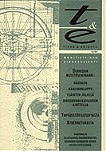 |
HENNION A., 2001, «Musiikinrakastajat. Maku performanssina» ,
Tiede & Edistys, 3 (01), p.204-220. |
| |
HENNION A., 2001, «Os grandes afeccionados: dunha socioloxía do gusto a unha etnografía da degustación» ,
Grial, 149 (t. XXXIX), p.53-66. |
| |
HENNION A., 2001, «Trad. bulgare de "La sociologie de l’art est une sociologie du médiateur", "Sociologie de l’art : le génie dans l’art ?" et "L’art, l’aura et la technique selon Benjamin, ou comment devenir célèbre en faisant tant d’erreurs à la fois"» ,
in I. STEFANOV A., (ed.), Sociologicheski izmerenia na izkoustvoto (Modèles sociologiques de l’art. Anthologie de textes, vol. 1), Sofia, Askoni, |
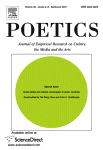 |
HENNION A., FAUQUET J., 2001, «Authority as performance: The Love of Bach in nineteenth-century France» ,
Poetics, 29p.75-88.
Accès au texte »
Bach was not a ‘modern composer author of the BWV and of the Cantatas Complete Works’ before musicology, the record industry and the modern amateurs. This paper traces the long transformation of what became ‘music’ and how it produced our taste for Bach as a musician, giving him the strange ability of being both the object and the standard of our love for music. Through a study of the use of Bach in a country other than Germany, and from 1800, when Bach's work begins to be published in France, to 1885, the year of his birth Bicentennial, we follow Bach's grandeur as it originates in the zeal of a small circle of his ‘early adopters’, from Chopin to Alkan, from Gounod to Saint-Saëns, from Liszt to Franck. We show how, all along the nineteenth century in France, Bach is becoming music: not only a reference, an ancient Master, the statue of the Commendatore in the shadow of whom we write the music of the present time, but a contemporary composer. We show also how the reverse is true: music is ‘becoming Bach’, it is reorganized around his figure (and Beethoven's), resting on their production. Bach does not integrate an already made musical universe: he produces it, partially, through the invention of a new taste for music. |
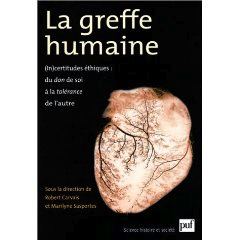 |
HERPIN N., PATERSON F., 2001, «La pénurie et ses causes» ,
in CARVAIS R., SASPORTE M., (ed.), La greffe humaine, Paris, PUF, p.322-356. |
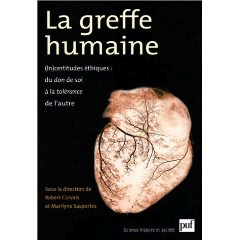 |
HERPIN N., PATERSON F., 2001, «Le don d’organes et la perception de la mort par les Français : les systémistes et les intégralistes» ,
in CARVAIS R., SASPORTE M., (ed.), La greffe humaine, Paris, PUF, p.797-814. |
| |
LARÉDO P., 2001, «Benchmarking of RTD policies in Europe: "research collectives" as an entry point for renewed comparative analyses» ,
Science and Public Policy, 28 (4), p.285-294. |
| |
LARÉDO P., 2001, «Government laboratories or public institutions of professional research? The case of France» ,
in COX D., GUMMETT P., BARKER K., (ed.), Government laboratories. Transition and transformation, IOS Press, |
| |
LARÉDO P., JOLIVET E., 2001, «Socrobust. Final Report» ,
Paris, CE. |
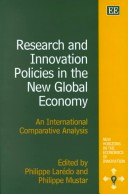 |
LARÉDO P., MUSTAR P., 2001, «General Introduction : A Focus on Research and Innovation Policies» ,
in LARÉDO P., MUSTAR P., (ed.), Research and Innovation Policies in the New Global Economy, Cheltenham, Edward Elgar, p.1-13.
Accès au texte »
The analysis of science and technology policies is now an exercise of some long standing, having been initiated by the OECD at the beginning of the 1960s. Reading these first analyses today, one can see the extent to which they anticipated the conceptual developments of the 1980s and, in particular, the pioneering works of Freeman and Lundvall on national systems of innovation (Freeman, 1987 and Lundvall, 1988). These authors have rekindled interest in international comparisons, a primary result of which was the collection edited by Richard Nelson in 1993 (Nelson, 1993). Since then, the 1990s have been characterised by contradictory changes: the emergence of Europe is offset by the break-up of the Soviet Union and the pronounced “Balkanisation” of the former Eastern bloc countries; the end of the Cold War (and thus of the military imperative which underpinned a significant proportion of the public intervention relating to R&D) is a concomitant of the increased involvement of Western countries in a growing number of local conflicts (from Kuwait to Kosovo); and the “globalisation” of firms and markets (which requires previous notions of “multi-nationalisation” to be reconsidered) is associated with growing “sub-national” public interventions, particularly those related to innovation, which are becoming stronger almost everywhere. |
| |
LARÉDO P., MUSTAR P., 2001, «La nouvelle donne des politiques publiques» ,
Biofutur, 216p.22-26.
epuis la fin des années 1980, des transformations de grande amplitude touchent toutes les politiques publiques de recherche et développement: fin des grands programmes technologiques, importance des contrats industriels obtenus par les laboratoires publics, place grandissante des financements européens, rôle croissant des universités et des régions... Comme l’explique cet article, ces bouleversements aboutissent paradoxalement à un renforcement du secteur public de recherche. |
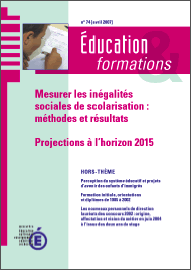 |
LARÉDO P., MUSTAR P., 2001, «La recherche, le développement et l’innovation dans les grandes entreprises françaises : dynamiques et partenariats» ,
Education et formations, 59 (avril-juin), p.21-39.
Pendant cinq ans, deux grandes revues ont organisé une enquête sur la recherche-développement (R&D) et l'innovation dans les grandes firmes françaises. Cet article rend compte des évolutions très fortes vécues sur cette période. Parmi les grandes tendances qui se dégagent, les principales concernent les coopérations avec les partenaires verticaux, les collaborations de recherche (associées à une externalisation grandissante), la prise en charge, au niveau de la direction générale, des enjeux liés à l'innovation. enfin une internationalisation massive des activités de R&D et d'innovation. Ce travail souligne ainsi la pénétratior très forte du modèle en réseau de l'innovation, une pénétration qui concerne la moitié de l'échantillon enquêté et tous les secteurs économiques. Il montre enfin la difficulté qu'ont les indicateurs traditionnels utilisés (intensité de la R&D et brevets pris) à rendre compte de ces mouvements. |
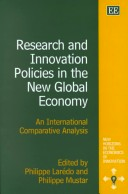 |
LARÉDO P., MUSTAR P., 2001, «French Research and Innovation Policy: Two decades of Transformation» ,
in LARÉDO P., MUSTAR P., (ed.), Research and Innovation Policies in the New Global Economy. An international Comparative Analysis, Paris, Edward Elgar, p.447-496.
Accès au texte »
This chapter would like to question the validity of this monochrome vision of a Colbertist system. It was doubtless relevant 20 years ago, even though historical works have begun to show the flaws in this description. However, during the 1980s and 1990s, the French research system, in both its public and its private components, has undergone profound transformations, which challenge the relevance of this analysis of the national situation. It can be left to the historians to show that the picture is infinitely more complex. More simply, this chapter is seeking to examine, from the viewpoint of the current situation, the major evolutions that have characterised the French research and innovation system since the beginning of the 1980s (Mustar, 1994 and 1998; Paillotin, 1993; Amable, Barré et Boyer; 1997; Dodet et al., 1998; Guillaume, 1999). Clearly, the French situation is witnessing numerous worrying problems and deficiencies; however, the concern here is not to deny they exist, but to examine the changes that have occurred. |
 |
LARÉDO P., MUSTAR P., 2001, «General conclusion: Three major trends in Research and innovation Policy» ,
in LARÉDO P., MUSTAR P., (ed.), Research and Innovation Policies in the New Global Economy. An international Comparative Analysis, Cheltenham, Edward Elgar, p.497-509. |
| |
LARGIER A., MALLARD A., 2001, «Organiser et réguler les rencontres. Esquisse pour une analyse comparative des formes du travail à distance» ,
Colloque international ICUST, ICUST. 12-14 juin 2001. |
| |
LATOUR B., 2001, «Beck ou comment refaire son outillage intellectuel (préface)» ,
in BECK U., (ed.), La société du risque, Paris, Aubier, |
| |
LATOUR B., 2001, «"Thou shalt not take the Lord’s name in vain" - being a sort of sermon on the hesitations of religious speech» ,
Res 39, (Spring 2001), p.215-234. |
| |
LATOUR B., 2001, L’espoir de Pandore. Pour une version réaliste de l’activité scientifique ,
Paris, Editions la Découverte. |
| |
LATOUR B., 2001, «What rules of method for the new socio-scientific experiments?» ,
Darmsdadt Colloquium, 2001 mars 30. |
| |
LATOUR B., 2001, Das Parlament der Dinge. Für eine politische ökologie ,
Frankfurt, Suhrkamp. |
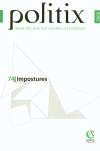 |
LINHARDT D., 2001, «Le procès fait au Procès de civilisation. A propos d’une récente controverse allemande autour de la théorie du processus de civilisation de Norbert Elias» ,
Politix, (55), p.151-181.
Accès au texte »
Depuis 1988 s'est développée en Allemagne, mais aussi partiellement au-delà, aux Pays-Bas et en Angleterre pour l'essentiel, une controverse à propos de la théorie du processus de civilisation. Cette controverse commence par la critique frontale que l'ethnologue et historien de la culture Hans Peter Duerr oppose en 1988 dans le premier volume de son Mythe du processus de civilisation aux thèses de l'opus magnum de Norbert Elias. Trois autres volumes verront le jour par la suite, chaque publication marquant, par les réactions suscitées, les moments d'effervescence d'une controverse qui s'étale sur plus de dix ans. Le but explicite de cette entreprise intellectuelle est d'établir la fausseté de la théorie du processus de civilisation en montrant que « l'affirmation selon laquelle l'homme "occidental" aurait, au cours des cinq cents dernières années, bien mieux réussi ce que Nietzsche avait appelé la "domestication de l'animalité de l'être humain" que les Orientaux, les Africains ou les Indiens est erronée ». |
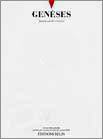 |
LINHARDT D., 2001, «L’économie du soupçon. Une contribution pragmatique à la sociologie de la menace» ,
Genèses, 44 (septembre), p.76-98.
Accès au texte »
Une longue série de détournements d’avions et d’explosions en vol accompagnent l’histoire de l’aviation civile. Comment peut-on rendre compte de ce qui est thématisé par les acteurs comme une " menace " à la fois insaisissable et persistante ? Comment procède-t-on à la " mise en sécurité " d’un aéroport ? L’article propose une description de la prévention du terrorisme aéroportuaire comme un dispositif de tri censé, par la vigilance, permettre le filtrage des personnes et des objets potentiellement dangereux. Pour les autorités, confrontées à un adversaire adoptant les habits de la normalité pour se dissimuler, et faisant, par là même, planer un doute sur sa présence, exercer le soupçon apparaît à la fois comme une nécessité, dans la mesure où il peut permettre d’empêcher un attentat, et un risque, dans le fait que le soupçon peut facilement apparaître comme arbitraire. L’une des réponses apportées à ce dilemme est à chercher dans le design du dispositif : en inscrivant le double impératif ? assurer la sécurité sans mettre en cause les libertés publiques ? dans sa matérialité et dans ses procédures, la contradiction, sansêtre toujours entièrement levée, tend néanmoins à être désamorcée. Cette configuration ne manque pas de soulever des interrogations concernant la sociologie de la menace où le soupçon est généralement traité uniquement du point de vue du risque d’arbitraire.
The history of civil aviation has been accompanied by a long series of hijackings and in-flight explosions. How are we to account for something that the actors themselves refer to as an elusive yet constant threat ? How does one go about “securing” an airport ? The article proposes to describe airport terrorism prevention as a sorting device that is supposed to filter out potentially dangerous people and objects through vigilance. Airport authorities are faced with an adversary who takes on ordinary habits to conceal himself and thereby generates doubts about his presence. For these authorities, exercising suspicion seems at once necessary, insofar as it may prevent an attack, and dangerous, inasmuch as the fact of suspicion may well appear to be arbitrary. One of the answers to this dilemma can be found in how the system is designed. The contradiction tends to diminish, if not entirely disappear, by imposing upon the concrete checks and procedures the twofold requirement of ensuring security while protecting public freedoms. This configuration raises questions concerning the sociology of the threat, in which suspicion is usually treated solely from the standpoint of arbitrary risk. |
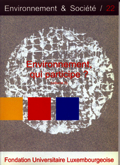 |
MALLARD A., 2001, «L’action des consommateurs dans les controverses sur la qualité de l’eau» ,
Environnement et Société, (25), p.7-21. |
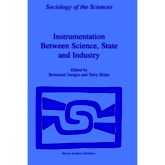 |
MALLARD A., 2001, «From The Laboratory to The Market: the Metrological Arenas of Research Technology» ,
in JÖRGES B., SHINN T., (ed.), Instrumentation between Science, State and Industry, Dordrecht, Kluwer Academic Press, p.217-238. |
| |
MÉADEL C., 2001, «Naissance d’une science de l’audience. Premiers travaux sur les téléspectateurs» ,
in GEORGAKAKIS D., UTARD J., (ed.), Sciences des médias. Jalons pour une histoire politique, Paris, L'Harmattan, |
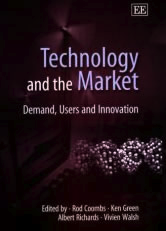 |
MÉADEL C., RABEHARISOA V., 2001, «Taste as a Form of Adjustment between Food and Consumers» ,
in COOMBS R., GREEN K., RICHARDS A., WALSH V., (ed.), Technology and the Market. Demand, Users and Innovation, Cheltenham, Edward Elgar, p.234-253. |
 |
MELARD F., 2001, «L’autorité des instruments dans la production du lien social» ,
Thèse de doctorat, Paris, École Nationale Supérieure des Mines de Paris.
Comment placer au centre de l’analyse sociologique des pratiques sociales de coordination reposant sur un usage intensif d’objets techniques ?
Cette question d’ordre générale a reçu une traduction empirique au travers de la problématique offerte par l’industrie sucrière et ses " laboratoires de campagnes "...
En effet, je me suis attelé à la tâche d’observer et de décrire la place et le fonctionnement de lieux et d’instruments de mesure où se concentrent de nombreux intérêts (sociaux, politiques, techniques et financiers) entre les fabricants de sucre et les agriculteurs chargés de cultiver la betterave sucrière. Les laboratoires de réception et d’analyses contradictoires des betteraves m’ont servi de milieux d’études afin de ré-interroger la pertinence des outils et méthodes de recherche, mais aussi celle des cadres théoriques et conceptuels nécessaires à la compréhension de notre rapport à la nature. Les résultats de cette recherche ont contribué à faire éclater cette notion vague et monolithique de Nature au profit de la mise en évidence de liens circonstanciés avec ce qui se présente tantôt comme une matière première, tantôt comme un produit fini. La betterave est loin d’être une entité autonome et stable. La perspective historique à permis, en effet, de mettre en évidence sa carrière : selon les dispositifs techniques et réglementaires de mesure de la quantité et de la qualité de son sucre, sa présence ne va cesser de se modifier en même temps que les acteurs industriels et agricoles qui l’entourent. En renouvelant la manière de questionner la betterave par la modification successive du protocole physico-chimique de la mesure de ses sucres, on renouvelle à chaque fois ce qu’est la betterave sucrière pour les différents protagonistes et, en conséquence, la manière dont ces derniers interagissent à la fois dans l’enceinte des laboratoires et à distance lors des relations contractuelles et réglementaires avec les milliers d’agriculteurs belges.
Afin d’éviter de tomber dans trop vite dans la simplicité trompeuse et réductrice des rapports d’intérêts conflictuels entre fabricants et planteurs, la mise en perspective de la variabilité et de la contingence des moyens de mesure m’ont permis de questionner à la fois l’identité de la betterave (c’est-à-dire ce que l’on retient d’elle lorsque l’on veut la définir ou parler en son nom) et celle de ces fabricants et planteurs (et des agents de l’Etat) lorsqu’ils ont a négocier la pertinence de leurs actions.
C’est dans cette perspective que la thèse défendue consiste à mettre en évidence l’existence de véritables échanges de propriétés entre d’une part les protagonistes humains de l’interprofession sucrière et, d’autre part, celui — non-humain — qu’est la betterave sucrière. L’argument repose sur la description minutieuse des mises en équivalence entre d’une part des éléments constitutifs de la betterave et leurs récalcitrances (les différents sucres qui composent la réalité chimique de la racine et leurs comportements (quelques-fois inattendus) selon les modes opératoires de la mesure préconisés : caractéristiques polarisantes, réactions variables selon la présence d’autres substances chimiques, etc.) et, d’autre part, les intérêts communs et opposés des fabricants et des planteurs en relation avec les contingences du fonctionnement de l’analyse polarimétrique dans l’évaluation technique et financière de la betterave.
La démarche de recherche fut double : elle est, d’une part, de nature historique avec la description fine de l’entrée progressive du polarimètre optique dans les laboratoires industriels belges de sucrerie à partir de la fin du 19ème siècle et, d’autre part, de nature ethnographique avec la description, cette fois au contemporain, de la logique du fonctionnement " contradictoire " d’un laboratoire de réception.
Dans ce dernier cas de figure, la méthode utilisée consiste à suivre à la trace les opérateurs d’un laboratoire d’analyse des échantillons de betterave pendant l’espace de deux campagnes. Les données (essentiellement) ethnographiques, et donc obtenue de première main, fournissent la base sur laquelle le travail sociologique est réalisé. |
| |
MUSTAR P., 2001, «Diversité et unité des entreprises à forte croissance du secteur manufacturier en France» ,
Revue Internationale des PME, 14 (3-4), p.67-89.
Cet article s’intéresse à la question des entreprises à forte croissance du secteur manufacturier en France. Faisant suite à un vaste travail d’analyse sur bases de données, les résultats présentés ici se fondent sur les réponses à un questionnaire postal adressé à près de 150 entreprises à forte croissance du secteur manufacturier en France. Dans une première partie, l’article montre que sous la dénomination commune de " PME à forte croissance " sont regroupées des PME aux trajectoires de croissance très diversifiées; ces trajectoires sont elles-mêmes le résultat de stratégies différentes se déployant dans des contextes contrastés. Mais l’article souligne que, par-delà ces contextes stratégiques différents, plusieurs éléments communs jouent un rôle majeur dans le processus de la forte croissance. Ils concernent :
- les partenariats que forment ces entreprises avec des acteurs diversifiés pour innover;
- la gestion de l’organisa4/01/08agrave; forte croissance;
- le financement de la croissance et le rôle des pouvoirs publics.
Ces éléments permettent à l’auteur de critiquer nombre de travaux sur les entreprises à forte croissance, travaux qui contiennent dans leur méthodologie de départ leurs résultats conclusifs. |
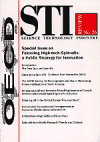 |
MUSTAR P., 2001, «Spin-offs from Public Research: Trends and Outlook» ,
STI (Science, Technology, Industry), (26), p.165-172.
Mustar, Philippe presents conclusions about the nature and importance of spin-offs, taking inspiration from the wide-ranging discussion of the formation of spin-offs across the OECD, the attempts to benchmark national performances, the explanations of the determinants of variation in national data, and the strategies open to institutions and local or national governments to close this gap. Rather than decry the paucity of data on spin-offs, Mustar interprets the variety of experiences across countries and the lack of a fixed definition as a sign of a phenomenon in full experimentation and growth. For Mustar, there are many different types of spin-offs, only a few of which will become high-growth firms, while the role of the majority is probably that of a bridge or translator between public research and the private sector. The public sector's interest in spin-off formation is justified and there are indeed multiple levels at which public institutions, national or regional governments can and do make a difference. Experimentation in policy support is encouraged. However, it should be borne in mind that the support structures necessary for fostering spin-offs is complex and requires training programmes, financing, consulting services, and networks of firms. The whole panoply must be present, perhaps in a local cluster but is expensive and difficult to create de novo. |
| |
MUSTAR P., JULIEN P., ESTIMÉ M., 2001, «Les PME à forte croissance : une comparaison internationale» ,
Revue Internationale P.M.E, 14 (3-4), p.7-15. |
| |
PONTILLE D., 2001, «L’auteur scientifique en question: pratiques en psychologie et en sciences biomédicales» ,
Social Science Information/Information sur les sciences sociales, 40 (3), p.433-453.
Accès au texte »
L’inflation des articles cosignés pose avec force la question de l’évaluation individuelle des chercheurs. Celle-ci est renforcée par l’augmentation des cas de fraude qui en retour soulève le problème de la responsabilité dans la production scientifique. La notion d’auteur est précisément façonnée par ces registres du crédit et de la responsabilité. Mais, parce que l’appropriation en science s’opère sous la forme spécifique de la paternité, elle cadre mal avec la définition juridique de l’auteur et de la propriété intellectuelle. Pourtant l’activité scientifique est traversée par des formes d’appropriation qui impliquent les registres de l’auctorialité (crédit et responsabilité). Partant d’une analyse des définitions pratiques de l’auctorialité dans deux espaces disciplinaires (la psychologie et les sciences biomédicales), ce texte propose des lignes de problématisation de l’auteur en science. |
| |
RABEHARISOA V., 2001, «L’innovation dans les systèmes nationaux d’éducation et de formation : d’une logique de réforme à une logique de terrain» ,
in CROS F., (ed.), Politiques de changement et pratiques de changement. Etude de trois dispositifs ministériels d'aide aux innovations en formation, Paris, INRP, p.75-89. |
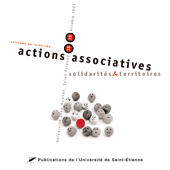 |
RABEHARISOA V., 2001, «L’entrée des gènes dans le collectif: la contribution de l’AFM» ,
in ETIENNE P., (ed.), Actions associatives, solidarités et territoires, Saint-Etienne, Publications de l'Université de Saint-Etienne, p.257-265.
Au moment où se trouve célébré le centenaire de la loi de 1901 sur les associations, cet ouvrage propose un recueil de contributions présentées lors du colloque intitulé « Actions associatives ; solidarités et territoires », tenu à Saint-Étienne les 18 et 19 octobre 2001. Ces textes, issus des résultats de deux vastes consultations menées l'une dans le domaine du social, l'autre dans le domaine de l'aménagement urbain et de l'environnement, font le point à la fois sur la recherche en sciences sociales concernant les associations et sur les questions posées aujourd'hui par le développement de cette forme d'organisation collective. |
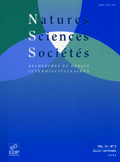 |
RABEHARISOA V., 2001, «Un nouveau modèle de relation entre les malades et la recherche médicale. Le cas de l’Association française contre les myopathies» ,
Nature, Sciences, Sociétés, 9 (4), p.27-37. |
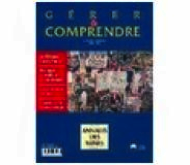 |
RÉMY E., MALLARD A., 2001, «Perception du public et analyse de controverses: quels enjeux pour la gestion des risques ?» ,
Gérer et Comprendre, (66), p.15-24. |
| |
WINANCE M., 2001, «Essayer un fauteuil... pour faire émerger une personne» ,
Cahiers de kinésithérapie, 208p.25-30.
2 |
 |
WINANCE M., 2001, «Thèse et prothèse. Le processus d’habilitation» ,
Thèse de doctorat, Paris, École Nationale Supérieure des Mines de Paris.
Accès au texte »
Comment vivre ensemble ? Comment intégrer les personnes handicapées à la cité ? Comment les faire participer à la vie sociale ?
Dans la littérature politique, sociologique ou anthropologique, l'intégration de la personne handicapée est soumise à la reconnaissance de sa différence, différence parfois considérée comme radicale. Mais cette position politique engendre une asymétrie fondamentale entre les valides et les personnes handicapées puisque l'intégration de certains " handicapés " dépend de la grandeur d'âme des autres " valides ". En outre cette insertion suppose la reconnaissance d'une différence radicale, voire absolue; mais comment nouer des liens avec celui qui est défini par l'absence de lien ? Elle suppose la reconnaissance d'une différence qui rappelle à tout un chacun sa finitude, sa précarité, son inachèvement; mais comment ne pas chercher à effacer cette différence devenue intolérable ? Plaider pour l'amour d'une différence absolue (qui, en outre, a un goût amer) revient à poser dès le départ l'impossibilité de cet amour.
L'Association Française contre les Myopathies (AFM) a été confrontée à ce dilemme. En analysant la manière dont cette association est arrivée à construire sa politique du handicap, la réflexion que je déploie reformule la question de la vie commune. La différence et la spécificité de la personne handicapée ne sont pas le point de départ de l'analyse, mais elles sont ce qui est à expliquer. Plutôt que de chercher à faire reconnaître certains, différents, par tous, mêmes, la thèse tente de déployer ce que j'appelle le processus d'habilitation. Elle cherche à décrire l'ensemble du travail et des équipements nécessaires à la fabrication d'une personne habile et habilitée, travail tel qu'il est réalisé par l'AFM. J'analyse l'émergence de cette personne en me focalisant sur trois dispositifs: le dispositif technique, le dispositif discursif et le dispositif institutionnel. A travers un long travail d'ajustement, ces trois dispositifs deviennent des prothèses pour la personne, c'est-à-dire ce qui lui permet de vivre et d'agir dans une société transformée. Car la description du processus d'habilitation de la personne est aussi la description de la construction du collectif concerné. Poser la question " Comment vivre ensemble " suppose de s'interroger sur la constitution de cet " ensemble " qui n’est pas défini a priori.
Enfin, décrire l'émergence de la personne et du collectif sans retomber dans le dilemme de " la reconnaissance de l'autre par un valide " suppose, pour l'auteur, de mettre en jeu sa propre position, de valide, et de poser la question de son habilitation: comment doit-il s'équiper pour être autorisé à parler et à agir dans le champ du handicap?
Ainsi, l'ensemble du texte déploie simultanément un triple parcours: celui de la personne, celui du collectif (de l'AFM) et celui de l'auteur. Quant au lecteur, je l'invite également à un parcours, mais un parcours d'un autre type: un parcours émotionnel. Je ne cherche bien sûr pas à apitoyer mon lecteur (à susciter en lui une fausse sympathie). L'émotion est, pour moi, ce qui fait bouger, ce qui mobilise, ce qui transforme le rapport au monde. Mon objectif est de faire bouger mon lecteur, car dans le domaine du handicap, il est inutile de chercher à le convaincre.
La réflexion que je déploie, bien que centrée sur un thème spécifique, participe à la réflexion générale sur l'émergence de nouvelles identités sociales et sur la formation de nouveaux collectifs, ainsi qu'au débat sur l'engagement du sociologue dans la cité. L'aspect politique est une dimension importante; ma question est de comprendre comment la description et l'analyse réalisées à partir d'un terrain particulier, peuvent rendre possible une transformation de la situation des acteurs. |
 |
YANEVA A., 2001, «"L’affluence" des objets. Pragmatique comparée de l’art contemporain et de l’artisanat d’art» ,
Thèse de doctorat, Paris, École Nationale Supérieure des Mines de Paris.
Accès au texte »
La thèse explore l’esthétique comme un état instable d’objets en émergence, afin de sortir de la tradition subjectivante d’un côté, et des discours sur le beau et les propriétés intrinsèques de l’objet de l’autre. Elle se fonde sur une observation détaillée, " moléculaire ", des processus de fabrication en art contemporain et en artisanat d’art, et compare les modes de présence, de résistance, d’action et de circulation des objets dans ces deux univers. La sociologie de l’art est invitée à emprunter ses méthodes à l’anthropologie des techniques : explorer l’émergence simultanée des objets et de leurs mondes sociaux, et les suivre jusqu’aux réseaux d’exposition et de vente. Art contemporain et artisanat fournissent dans cette optique des terrains privilégiés pour mener une recherche sur les façons spécifiques qu’ont les objets de s’ouvrir et de se clore, de se multiplier et de se raréfier.
Fondée sur une enquête ethnographique détaillée menée au Musée d’art moderne de la ville de Paris et dans de nombreux ateliers artisanaux de verriers à Biot, la thèse permet d’obtenir un " grain " particulièrement fin pour une description des actes d’invention, à la fois en art et en artisanat. Grain fin et frêle, comme le sont les petits ajustements dans l’installation artistique ou comme la stabilisation hésitante des molécules dans le four artisanal. La méthode a consisté à interroger les fabricants (artistes et artisans) en situation et en même temps à les observer travailler sur les objets, à suivre la production simultanée des discours et des actions non discursives, telles que les exclamations et les saisies, les prises et les gestes. L’observation suit les phénomènes étudiés et se déploie avec le même rythme. L’analyse est lente et continuelle, explorant et amplifiant en même temps la complexité de la fabrication. Tâchant de décrire celle-ci, la thèse a adopté la forme d’une " monographie narrative " de deux régimes de fabrication artistique des objets.
En exposant ces modalités et ces transformations, la thèse contribue à l’extraction d’une " grammaire objective " de l’esthétique, ce qui lui permet d’aborder sous un angle nouveau la question de la transformation d’objets ordinaires en œuvres d’art. Cette question récemment reprise par le débat sur l’art contemporain a souvent été traitée par l’histoire de l’art et l’esthétique, parce qu’elle remet en cause de façon spectaculaire la définition de l’œuvre d’art. Mais son traitement manque de fondement anthropologique ; inspirées de la philosophie analytique, les théories institutionnelles expliquent la promotion d’objets ordinaires en œuvres d’art non comme une transformation mais par une logique de désignation et d’attribution. Dans cette perspective, les éléments importants sont le geste de l’artiste qui signe et baptise l’objet " œuvre d’art ", l’institution artistique qui l’accueille, le public qui l’apprécie, et plus généralement le " monde de l’art " dont, selon les périodes, la configuration historique rend acceptables ou non diverses théories de ce qu’est l’art.
La thèse propose au contraire une analyse objective de la mise en esthétique, qui contraste avec ces théories de l’attribution. En suivant des opérations microscopiques d’installation artistique et de fabrication artisanale, la thèse constate qu’il ne s’agit pas d’un acte instantané de transformation artistique. Les objets existent en état continuel de devenir artistique ; leur statut ontologique ne peut être radicalement changé par le " double clic " d’un acte créateur unique qui en opérerait instantanément une promotion remarquable. Pour décrire ce processus lent de transformation artistique, le suivi quotidien des pratiques est indispensable, qui permettent aux objets de différer et de se produire constamment comme matériellement discernables. Le suivi des mutations des objets à travers la dynamique de transformations des matières, les états de risque, les échecs du geste technique, l’implication du corps, l’empilement du temps, l’organisation de l’espace, les nombreux ajustements et les actes d’évaluation, permet seul d’expliquer comment l’esthétique vient aux objets, comment, co-existant avec d’autres régimes d’émergence, s’insinue en eux un " coefficient d’esthétique ".
Au lieu de construire ou reprendre les typologies rigides des catégories bien établies en sociologie de l’art — public, jugement et valeur esthétique, institution, statut d’œuvre d’art — la thèse suit des répertoires de pratiques hybrides et propose une analyse minutieuse du magma de la fabrication artistique et artisanale. Pour le décrire, le vocabulaire conceptuel s’y adapte et réinvente. L’" affluence " désigne un phénomène particulier de présence des objets, elle se réfère en même temps à l’abondance et à la stabilisation des agents intervenant au processus de fabrication. Une comparaison des régimes artistiques et artisanaux vise à déployer les situations où les différences des objets sont en jeu. L’" art " et l’" artisanat d’art " sont redéfinis comme deux façons de traiter le phénomène de l’" affluence ", comme deux états différents de la matière. La dynamique des objets recrute une gamme de sujets variables et les transforme en " créateurs ". La thèse présente aussi le public en situation de saisie et d’action autour des œuvres d’art. Elle suit la logique pragmatique de leurs petites actions dispersées autour des œuvres au lieu de les qualifier rapidement, dans la perspective d’une approche critique, dénonçant ou confirmant leur possible statut d’œuvre d’art. Ainsi, un " proto-public " émerge, composé d’acteurs saisis et provoqués par les transformations des objets-en-action.
La thèse s’inscrit par là dans une tradition française de philosophie de l’œuvre et de la technique, celle des Souriau, Simondon, Leroi-Gourhan, qui n’accorde aucun intérêt à la subjectivité comme telle mais s’attache exclusivement aux modes d’êtres des objets — la subjectivité étant en quelque sorte donnée par surcroît, comme un certain mode d’attachement. C’est une approche qui évite l’esthétique tout en la frôlant constamment et en lui donnant un contenu plus précis : l’esthétique n’est pas une catégorie des sujets, un jugement d’attribution jeté sur des objets, mais un mode de pullulement des objets en situation d’agitation collective. |
| |
AKRICH M., 2000, «La naissance respectée, une exigeance citoyenne. Quelles formes de représentation des usagers?» ,
Les dossiers de l'obstétrique, (188), p.10-11. |
| |
AKRICH M., DEVELAY A., NAIDITCH M., PASVEER B., BOURGUEIL A., 2000, «Note de synthèse. Dispositifs d’offres de soins obstétrico-pédiatriques : filières, trajectoires, usagers» ,
Cahiers de Recherches de la Mire, 8p.3-8.
Accès au texte »
L'article présente les résultats d'une recherche dont l'objectif était de comprendre comment se construisent les trajectoires médicales des femmes enceintes, des débuts de la grossesse à l'accouchement et ses suites. Dans une première partie, il s'agit de caractériser différentes organisations de l'offre de soins par leurs modalités de coordination qui dessinent (ou non) des filières de soins dont l'espace de validité peut être varié (une région/ la clientèle d'un établissement ; grossesses normales/ pathologiques). Dans un second temps, on analyse comment les femmes elles-mêmes, face à des offres diverses, construisent leurs trajectoires et on distingue trois grands types de stratégies, la délégation à d'autres de tout ou partie de l'orientation, l'expérimentation personnelle des dispositifs, et la mise en œuvre d'une détermination qui constitue de bout en bout la trajectoire. |
| |
AKRICH M., DEVELAY A., NAIDITCH M., PASVEER B., BOURGUEIL Y., 2000, «Dispositifs d’offres de soins obstétrico-pédiatriques : filières, trajectoires, usagers» ,
Paris, CSI-ENSMP/Groupe Image-ENSP. |
 |
AKRICH M., PASVEER B., 2000, «Multipliying Obstetrics. Techniques of surveillance and forms of coordination» ,
Theoretical Medecine, n°21p.63-83.
Accès au texte »
The article argues against the common notion of disciplinary medical traditions, i.e. Obstetrics, as macro-structures that quite unilinearily structure the practices associated with the discipline. It shows that the various existences of Obstetrics, their relations with practices and vice versa, the entities these obstetrical practices render present and related, and the ways they are connected to experiences, are more complex than the unilinear model suggests. What allows participants to go from one topos to another – from Obstetrics to practice, from practice to politics, from politics to experience – is not self-evidently induced by Obstetrics, but needs to be studied as a surprising range of passages that connect (or don't). Techniques and devices to supervise the delivery, to render present the fetus during pregnancy, and to monitoring birth, are described in order to show that such techniques acquire different roles in connecting and creating Obstetrics as a system and obstetrical practices. |
 |
BARRAL C., PATERSON F., STIKER H., CHAUVIÈRE M., 2000, L’institution du handicap. Le rôle des associations XIXe et XXe siècles ,
Rennes, Presses Universitaires de Rennes. |
 |
BARTHE Y., 2000, «La mise en politique des déchets nucléaires. L’action publique aux prises avec les irréversibilités techniques» ,
Thèse de doctorat, Paris, École Nationale Supérieure des Mines de Paris.
Accès au texte »
L’analyse des relations entre science et politique conduit le plus souvent à s’interroger sur l’influence exercée par les connaissances scientifiques sur les décisions politiques, notamment à travers le rôle de l’expertise. Dans cette thèse, j’ai cherché à inverser ce type de questionnement : à partir du cas de la gestion des déchets nucléaires en France, je me suis interrogé sur le processus par lequel des instances politiques pouvaient être amenées à se saisir de problèmes en apparence technique, à mettre en discussion des choix pourtant considérés comme irréversibles, et à renouveller le traitement de ce type d’enjeux. La thèse retrace ainsi la trajectoire du problème des déchets nucléaires, ses différentes formulations, ses inscriptions successives sur l’agenda des pouvoirs publics et, enfin, le processus de " mise en politique " de la question à la fin des années quatre-vingt, suite notamment aux controverses suscitées par la mise en œuvre d’une solution technique qui se présente alors sous les dehors d’une " nécessité " incontournable : l’enfouissement des déchets les plus dangereux dans des couches géologiques profondes. Cette " mise en politique " se traduit par l’intervention d’acteurs auparavant tenus à l’écart des choix dans ce domaine, les parlementaires et les élus locaux notamment, par l’ouverture corrélative d’un débat public sur le sujet, et enfin par le vote d’une loi en 1991 qui redéfinit la politique suivie jusque-là : la décision définitive est reportée à une date ultérieure au profit d’une double expérimentation : expérimentation scientifique d’abord, qui s’articule sur de nouvelles voies de recherche, expérimentation politique ensuite, qui s’appuie sur la mise en place d’une démarche procédurale. On s’attache aux effets produits par cette reformulation et cette " mise en politique " du problème, et notamment à la dynamique socio-cognitive incontrôlable enclenchée par la loi de 1991 : cette dynamique se traduit par l’intervention des " profanes " qui, à la faveur des procédures d’information et de concertation, pénètrent au cœur des débats relatifs aux orientations de recherche suivies dans ce secteur. Mais elle se traduit surtout sur le plan technique par une revitalisation de la recherche, par la mobilisation d’une communauté scientifique plus large, ce qui aboutit à l’ouverture des choix possibles et des scénarios envisageables pour traiter ou stocker les déchets nucléaires.
Analysis of the relation between science and politics often leads to questioning the very influence of scientific knowledge over political decisions, especially through the role of expertise. However, the development of controversies finding their source in technological development, has led to this type of questioning being discouraged. Using the case of nuclear waste management in France, this piece of work analyses the process by which political authorities are driven to seize on problems, presumed technical, to discuss choices which experts would otherwise consider irreversible, and to review the way in which such issues are usually handled.
The thesis recalls the trajectory of the nuclear waste problem, i.e. its different expressions and its successive appearance on the political agenda of public institutions. Its focuses on the process of “the political placing” of the issue at the end of the 80’s, following the conflicts generated by the implementation of technical solutions which were at the time presented as inevitable necessities, such as how the deep burial of the most dangerous waste qualified as long-term high-importance activity.
This “political placing” or definition corresponds with the intervention of news actors which were, until now, kept apart from the decision-making process, in particular MPs and other locally elected representatives. It started with the opening of a political debate over the issue and evolved into the voting of a new law in 1991, which redefined related policies.
The final decision was postponed to a later date for the benefit of a double experiment: a first scientific experiment to be articulated along new research lines, and also a political experiment, which was supported by the definition of procedural methods.
The thesis will concentrate on the effects produced by this reformulation and this political definition of the problem, especially the uncontrollable socio-cognitive dynamics induced by the 1991 law. This dynamic allowed the intervention of lay people who thanks to the information and dialogue procedures could participate in the debates over research policies in the nuclear area. Though, because of the mobilisation of the wide scientific community, it corresponds to the revitalisation of research itself on a technical level. This opened the way for new possible choices and scenarios to manage, treat or store nuclear waste. |
| |
CALLON M., 2000, «Politique, expertise et marché: le triangle vertueux de la maîtrise d’ouvrage» ,
in BONNET M., (ed.), L'élaboration des projets architecturaux et urbains en Europe. Volume 4. Les maîtrises d'ouvrage en Europe: évolutions et tendances, Paris, PUCA, p.145-157. |
 |
CALLON M., 2000, «Analyse des relations stratégiques entre laboratoires universitaires et entreprises» ,
Réseaux, 99p.172-217.
Accès au texte »
Cet article comprend trois parties. Dans la première, le problème central du statut économique de la connaissance scientifique est examiné. Les travaux récents d'auteurs comme Dasgupta, David, Foray et Romer, y sont résumés pour introduire les principaux concepts et hypothèses. La deuxième partie traite des avantages et des inconvénients de ces analyses. On y souligne en particulier que le statut économique de la connaissance (rivalité, possibilité d'exclusivité, généralité, divulgation, etc.) n'est que la conséquence du type de réseau - émergent ou consolidé - dans lequel elle se situe. Il n'est en aucun cas possible de parler de propriétés économiques inhérentes à la science (même au niveau de la science fondamentale). Les exemples décrits par la nouvelle économie de la science correspondent à une configuration de réseau particulière, celle des réseaux consolidés. Dans la troisième partie, ces conclusions sont appliquées pour élaborer un modèle simplifié destiné à décrire la dynamique de la compétition économique en endogénisant complètement les relations qu'entretiennent les firmes avec les laboratoires d'universités. Le rôle économique de la recherche universitaire est enfin réexaminé à la lumière de ce modèle. |
| |
CALLON M., 2000, «Is homo economicus an anthropological monster» ,
Economic Sociology Newsletter, novemberp.Editorial. |
| |
CALLON M., LICOPPE C., 2000, «La confiance et ses régimes : quelques leçons tirées de l’histoire des sciences» ,
in LAUFER R., ORILLARD M., (ed.), La confiance en question, Paris, L'Harmattan, p.133-154. |
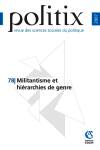 |
CALLON M., MÉADEL C., RABEHARISOA V., 2000, «L’économie des qualités» ,
Politix, 52p.211-239.
Accès au texte »
The aim of this article is to highlight the main characteristics of what the authors call the economy of qualities The authors show that qualifying products and positioning goods are major concerns for agents evolving within the economy of qualities Competition in such an economy is structured through two basic mechanisms The first is what the authors propose to call the process of singularization of products The second is the mechanism whereby consumers are attached to and detached from goods that are proposed to them At the heart of this logics one can find multiple socio-technical devices which are designed by economic agents which ensure the distribution of cognitive competencies and which constantly and finely tune supply and demand Relying upon Jean Gadrey work the authors claim that the economy of qualities is nowhere more effective than in services providing activities and especially in those sectors that invest heavily in NTIC Finally the authors suggest that in the economy of qualities the functioning and the organization of markets are issues that are shared by scholars and actors In these highly reflexive markets collaboration between them is needed. |
| |
CALLON M., RABEHARISOA V., 2000, «Gino’s lesson on humanity» ,
4S/EASST Joint Meeting, 2000. |
 |
DIDIER E., 2000, «De l’échantillon à la population sociologie de la généralisation par sondage aux Etats-Unis avant la seconde guerre mondiale» ,
Thèse de doctorat, Paris, École Nationale Supérieure des Mines de Paris.
Accès au texte »
Ma thèse raconte l'invention du propre des sondages, à savoir les techniques de sélection de l'échantillon et met en évidence les transformations profondes que cette technique a provoquées autant sur les statisticiens que sur la société, leur objet d'étude. Elle est constituée de trois parties. La première porte sur l'histoire écrite par les praticiens eux-mêmes. Elle montre que leur chronologie (qui commence en 1895 et s'achève en 1933) est indubitable, mais qu'ils la lisent selon une perspective très biaisée. En effet, ils négligent l'influence de la représentativite car ils jugent que c'est une notion peu scientifique alors que c'était elle qui constituait le moteur de toutes les discussions. Les sondages sont nés de discussions théoriques visant a définir la représentativité. La deuxième et la troisième partie sont consacrées à l'étude d'expériences de sondage : les statistiques agricoles d'une part et les décomptes de chômeurs pendant la Grande crise de l'autre. Nous étudions des expériences car elles sont riches : elles ne se passent pas de théorie et leurs ajoutent l'ensemble des problèmes concrets rencontres par les statisticiens. Celles que nous avons retenues ont en outre le double avantage premièrement d'avoir laisse des archives (car elles ont été réalisées par l'administration américaine avant 1940) et deuxièmement d'avoir laissé des traces profondes sur la théorie de la discipline. Ces deux études de cas montrent que le principal effet des sondages sur la société qu'ils étudient est d'exprimer de la population un certain nombre de caractéristiques. Il ne s'agissait pas de répéter qu'un sondage bien réalisé permet par exemple d'estimer la production agricole totale mais de mettre en évidence et de décrire les propriétés de la population qui font qu'elle se prête à la généralisation par sondage, qu'elle est compatible avec un tel outil. |
| |
DIDIER E., 2000, «Compte-rendu de "La fabrique de l’opinion. Une histoire sociale des sondages"de Loïc Blondiaux» ,
Sociologie du Travail, 42 (2), p.348-350. |
 |
FAUQUET J., HENNION A., 2000, La grandeur de Bach. L’amour de la musique en France au XIXe siècle ,
Paris, Fayard.
Comment penser la grandeur de Bach ? Quelle part donner au travail de transformation continue qui s'est emparé de lui et de son oeuvre et en a fait à la fois l'outil et l'objet de notre amour de la musique ? Pour répondre à une telle question, on ne peut se contenter d'étudier la «réception» de l'oeuvre du musicien, ni d'entreprendre la critique du culte qui lui est rendu. Car on constate que la musique de Bach ne cesse de changer, tandis qu'inversement, c'est toute la musique que Bach sert à redéfinir. Tout le long du XIXe siècle, on assiste à la formation commune d'une nouvelle façon d'aimer la musique et d'un répertoire de chefs-d'oeuvre capables de répondre à un tel format du goût. Pour analyser cette grandeur, la méthode des auteurs a consisté à se placer délibérément dans une position intermédiaire, entre le culte musicologiste et le constructivisme social, dans un autre pays que l'Allemagne, durant la période qui va de 1800, quand l'oeuvre de Bach commence à être publié, à 1885, bicentenaire de la naissance du musicien. La grandeur de Bach, c'est tout d'abord le zèle du premier cercle des usagers qui, de Chopin à Alkan, de Gounod à Saint-Saëns, de Liszt à Franck, s'attellent à faire aimer la musique du Cantor en la jouant, en la transcrivant, en la paraphrasant, tandis que biographies et anecdotes contribuent à dessiner la figure de l'artiste «surnaturel», du virtuose, du savant et du saint... Un répertoire, principalement instrumental, se met en place, des morceaux emblématiques, véritables «tubes», contribuent à populariser sa musique : l'«Air de la Pentecôte», le premier prélude du Clavier bien tempéré transformé en Ave Maria par Gounod, tel morceau de La Passion selon saint Matthieu exécutée au Panthéon... Ces divers éléments montrent d'abord la façon dont, durant le XIXe siècle en France, Bach devient musique : il n'est plus seulement une référence, un maître ancien, une statue de commandeur à l'ombre de laquelle faire la musique du temps présent, il devient lui-même un auteur «contemporain». Ils montrent aussi que c'est la musique qui devient Bach, qui se réorganise autour de lui (et de quelques autres, comme Beethoven), en prenant appui sur sa production. Car Bach n'intègre pas un univers tout fait : il le produit en partie, à travers l'invention d'un nouveau goût pour la musique. |
| |
GODECHOT O., HASSOUN J., MUNIESA F., 2000, «La volatilité des postes. Professionnels des marchés financiers et informatisation» ,
Actes de la Recherche en Sciences Sociales, (134), p.45-55.
Accès au texte » |
| |
HENNION A., 2000, «Passioni, Gusti, Pratiche. Dalla storia della musica alla sociologia dell’ascolto musicale» ,
Rassegna Italiana di Sociologia, 2 (Avril-Juin), p.265-289.
If the history of music has been writen and writen over, it has always been around the works and the composers. There is a place for a history of music written from the listener?s point of view. The ability to listen is not so much a personal quality or the mechanical counterpart of the history of musical works and languages as the end result of having made the necessary time and space for this activity, after a long historical and collective apprenticeship which itself produced a world of coordinated objects. The paper gives elements of analysis and materials from a survey on music lovers, whose taste is seen as an active and reflexive practice, involving a collective, objects, and procedures, and not as a label put on social games of identity and difference. |
| |
HENNION A., 2000, «Cyber Med» ,
Sociologie et Sociétés, XXXII (2), p.9-18.
Accès au texte »
Seuls les modernes croient que les intermédiaires ne sont que des lignes téléphoniques qui ne peuvent que marcher ou ne pas marcher, établir la communication sans qu’on s’en rende compte ou la couper irrémédiablement en cas de panne : des médias au parlement, des laboratoires aux critiques de concerts, des sondages aux syndicats, il nous faut des représentants, mais des représentants fidèles. Grâce au contrôle technique et politique des procédures, obtenons des représentations “objectives” — le double sens qu’a pris le mot, attribuant aux humains la fiabilité des choses, souligne bien que nous ne voulons plus avoir affaire qu’à la réalité elle-même. Que les intermédiaires fassent leur travail invisible (…) A cet intermédiaire technicien, creux, binaire (vrai/faux, on/off), s’oppose une autre définition de la médiation, dont la profondeur oubliée se déploie depuis la nuit des temps. Elle est pleine et non pas vide, elle est active et non pas critique : c’est celle de la présence. |
| |
HENNION A., GRENIER L., 2000, «Sociology of Art: New Stakes in a Post-Critical Time» ,
in QUAH S., SALES A., (ed.), The International Handbook of Sociology, New-York, London, Sage, p.341-355.
Accès au texte »
Over-rationalizing a general movement in the sociology of art, which is undoubtedly more "Brownian" and less clearly oriented in reality, we will organize the display of recent evolutions in the social studies of arts around the notion of mediation. If the concept remains ambiguous, it clearly points out a strong new trend shared by very diverse approaches: a focus on objects and devices, on local situations, on reflexive and politically critical analyses of the social and artistic values, all this requiring to pay more attention to the materiality of intermediaries, to acknowledge their opacity regarding social determinations or aesthetic effects, to analyse the active role they play in the definition of art works and tastes. |
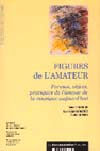 |
HENNION A., MAISONNEUVE S., 2000, Figures de l’amateur. Formes objets et pratiques de l’amour de la musique aujourd’hui ,
Paris, La Documentation française/DEP-Ministère de la Culture.
Qu'est-ce qu'un amateur de musique classique ? Comment vit-il sa passion ? De quels dispositifs s'entoure-t-il pour la provoquer et l'atteindre ? Quelle est sa place dans le développement moderne de la musique ? Voilà les questions que les auteurs de ce livre mettent au centre de leurs recherches et de leurs réflexions. A travers une minutieuse enquête de terrain et au moyen d'hypothèses de travail aussi audacieuses que solidement étayées, c'est à une vaste révision de nos conceptions classiques qu'ils nous invitent. Leur recherche est une traversée. Des idées de la sociologie classiques à celles de l'esthétique, de l'histoire de la musique aux notions spontanées sur l'amateur, elle brasse et réorganise tout notre paysage intellectuel pour parvenir au cœur de son objectif : décrire l'amateur et sa passion, non pas comme la marge naïve du monde musical, mais comme son centre de gravité moderne et le principe même de son évolution aujourd'hui. |
| |
KARPIK L., 2000, «Les Aubrac et les historiens: La machine infernale» ,
Justices, 2p.173-207. |
| |
KARPIK L., 2000, «L’avancée de la justice menace-t-elle la République?» ,
Le Débat, 110p.238-257. |
| |
KARPIK L., 2000, «Le guide rouge Michelin» ,
Sociologie du Travail, 3p.369-89. |
| |
KARPIK L., 2000, «Les avocats : renouveau et crise» ,
Justices, 1p.67-89. |
| |
LARÉDO P., JOLIVET E., MARESCA B., POQUET G., 2000, «An evaluation of COST Chemistry» ,
Paris, ARMINES/CREDOC. |
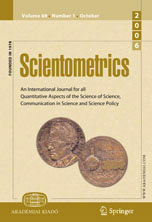 |
LARÉDO P., MUSTAR P., 2000, «Laboratory activity profiles : An exploratory approach» ,
Scientometrics, 47/3p.515-539.
Accès au texte »
This article proposes a method for characterizing the activity profiles of research laboratories. It is based on the research compass card model derived from the sociology of science, and which highlights the five complementary contexts in which research activities develop. A test was conducted in a regional setting on 75 labs. It demonstrates that simple indicators are enough to measure levels of involvement in each activity. Seven activity profiles based upon the mix by labs of their marked involvements were identified, crossing both institutional and disciplinary barriers. |
| |
LATOUR B., 2000, «Progress of Entanglement :two Models for the Evolution of Civilization» ,
2000. |
| |
LATOUR B., 2000, «A Well-Articulated Primatology -Reflexions of a Fellow-Traveller» ,
in STRUM S., FEDIGAN L., (ed.), Primate Encounters, Chicago, University of Chicago Press, p.358-381. |
| |
LATOUR B., 2000, «La fin des moyens» ,
Réseaux, 18 (100), p.39-58. |
| |
LATOUR B., 2000, «Du principe de précaution au principe de bon gouvernement» ,
Les Etudes, 3934p.339-346. |
| |
LATOUR B., 2000, «On not Confusing Morality and Politics» ,
Plenary session 4S meeting, 2000 September. |
| |
LATOUR B., 2000, «Textual Reality: Plowing the Dark a review of Richard Powers» ,
Artbyte, sept-octp.78-79. |
| |
LATOUR B., 2000, «Guerre des sciences, un dialogue» ,
in SCHARPING M., (ed.), Sur la guerre des sciences, |
| |
LATOUR B., 2000, «Facture/Fracture. De la notion de réseau à celle d’attachement» ,
in MICOUD A., PERONI M., (ed.), Ce qui nous relie, La Tour d’Aigues, L’Aube, p.189-208. |
| |
LATOUR B., 2000, «Guerre des mondes offre de paix» ,
in BENETTO J., (ed.), UNESCO, |
| |
LÉPINAY V., ROUSSEAU F., 2000, «Les trolls sont-ils incompétents ? Enquête sur les financiers amateurs» ,
Politix n°52, 13p.73-97. |
| |
LINHARDT D., 2000, «Les ruses démocratiques d’un dispositif technique. Efficacité et justice dans le dispositif de prévention du terrorisme à l’aéroport d’Orly» ,
Cahier Velin, Logique technique, logique démocratique : la mise en oeuvre de la démocratie (7), p.87-100. |
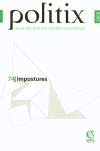 |
LINHARDT D., 2000, «La généalogie d’un texte (à propos de "Les transformations de la balance des pouvoirs entre les sexes" de Norbert Elias)» ,
Politix, (51), p.48-53.
Accès au texte »
Etudiant le code de conduite entre hommes et femmes en Europe, N. Elias refuse l'idée d'un processus linéaire ayant conduit à l'évolution de ce code. Remontant à l'antiquité romaine, il constate que l'évolution est passée par une série saccadée de poussées consécutives agissant parfois à contre-sens les unes des autres. La République romaine se caractérisait par une faiblesse sociale des femmes liée, en ces périodes de guerres omniprésentes, à une faiblesse physique les rendant moins aptes que les hommes au combat. Mais, de simple propriété des hommes, les femmes ont acquis une position d'égalité dans le mariage à partir de la fin du deuxième siècle avant J.-C, accédant notamment à la faculté de demander le divorce et de posséder des biens en propre - évolution liée à un enrichissement général, à l'émergence d'une organisation étatique capable de protéger les femmes de la toute puissance masculine, et à l'élévation du niveau de civilisation. |
 |
LINHARDT D., 2000, «Demokratische Maschinen ? Die Vorrichtung zur Terrorismusbekämpfung in einem französischen Grossflughafen» ,
Kriminologisches Journal, 32 (2), p.82-107. |
| |
MALLARD A., 2000, «L’écriture des normes» ,
Réseaux, (102, "La fabrication des normes"), p.37-62. |
| |
MALLARD A., 2000, «La presse de consommation et le marché. Enquête sur le tiers consumériste» ,
Sociologie du Travail, (3/2000, numéro spécial sur "Les professionnels du marché"), p.391-410. |
 |
MÉADEL C., 2000, «Pauses musicales ou les éclatants silences de Radio-Paris» ,
in CHIMÈNES M., (ed.), La vie musicale sous Vichy, Paris, Complexe,
Face à une radiodiffusion vichyste immergée dans les ambiguïtés équivoques du Pétainisme, Radio-Paris, placée sous l'autorité de la Propaganda Abteilung, a un objectif clair : convaincre les Français de collaborer avec les Allemands. Mais l'outil de propagande est finement pensé : dès septembre 1940, les responsables de la station insistent sur l'effort artistique qu'elle doit fournir pour ne pas lasser les auditeurs hostiles au “ bourrage de crâne ” ; ils cherchent à conquérir l'auditeur en développant les émissions à contenu non politique. Habilement les programmes culturels sont coupés de la propagande, tant pour les auditeurs que pour les très nombreux comédiens, musiciens, artistes qui y collaborent. Ainsi, Pierre Hiégel, ancien discothécaire de Radio Paris, recruté comme responsable de la programmation musicale, peut-il y défendre la musique française. La musique est en effet particulièrement sollicitée dans l'effort de « captation » des audiences : elle occupe près des deux tiers des programmes de Radio-Paris, avec une très grande diversité d'interprètes, d'orchestres, de compositeurs, de genres musicaux. Les programmes musicaux de Radio-Paris se veulent en effet inscrits sous le triple signe de la diversité (des genres, des orchestres, des musiciens), de la pédagogie et de la qualité. |
| |
MÉADEL C., 2000, «Radiophiles des villes et des champs» ,
in GRISET P., (ed.), Citadins, techniques et espaces urbains du XVIIIE siècle à nos jours, L'Harmattan, |
| |
MUNIESA F., 2000, «Social studies of finance : a Parisian workshop» ,
Economic Sociology European Electronic Newsletter, 2p.21-23.
1 |
| |
MUNIESA F., 2000, «Un robot walrasien. Cotation électronique et justesse de la découverte des prix» ,
Politix, 13 (52), p.121-154.
Accès au texte » |
| |
MUNIESA F., 2000, «Performing Prices: The Case of Price Discovery Automation in the Financial Markets» ,
in KALTHOFF H., ROTTENBURG R., WAGENER H., (ed.), Economy and Society Yearbook 16. Facts and Figures: Economic Representations and Practices, Marburg, Metropolis, p.289-312. |
| |
MUNIESA F., LICOPPE C., 2000, «Les enchères en ligne sur internet : nouvelles formes de médiation marchande» ,
Lettre Usages FT R&D, (7), p.11-13. |
| |
MUSTAR P., 2000, «Les politiques publiques de soutien à la création d’entreprises à partir des institutions d’enseignement supérieur et de recherche : les cas nord-américain, anglais, allemand, nordique, italien, israélien» ,
Paris, CNRS. |
| |
MUSTAR P., 2000, Les chiffres clés de la Science et de la Technologie. Edition 2000-2001 ,
Paris, Economica. |
| |
PENAN H., LARÉDO P., MUSTAR P., 2000, «L’intégration des chercheurs dans les entreprises du secteur privé» ,
Paris, CGP. |
| |
PONTILLE D., 2000, «Figures de la signature scientifique» ,
Cahiers Internationaux de Sociologie, 109p.283-316.
Accès au texte »
L’étude de la collaboration scientifique à partir de la publication se développe depuis une quarantaine d’années. Souvent considérée comme un indicateur (notamment de productivité), elle est ici saisie en se focalisant sur les pratiques de signature et ce qu’elles révèlent. Considérant un corpus d’articles dans trois disciplines, l’analyse se déploie à un double niveau : interdisciplinaire, et international pour une même discipline. Ce travail, inscrit dans une perspective diachronique, tente de cerner les multiples dimensions qui lient les textes à leurs contextes historique et disciplinaire. Dans ce façonnage complexe, l’entrée par les diverses pratiques de signature permet de reconsidérer le statut analytique de la publication scientifique, et de poser la question des frontières entre disciplines en d’autres termes.
Studies of scientific collaboration based on publication have been developing for forty years. However, most of these studies are generally concentrated on productivity and the growth of ‘big science’. Involved with a sample of articles from three different fields, this work tries to reveal the patterns of publication at two levels : interdisciplinary, and international for one field. This work yields an understanding of the logics intimately linking texts and historical and disciplinary contexts. In this complicated shaping, the different practices of authorship allow to reconsider the analytical status of publication as much as disciplinary boundaries. |
| |
RABEHARISOA V., 2000, «Science, médecine, et marché : à propos de deux analyses rétrospectives des essais cliniques dans le cadre du sida» ,
Transcriptase, 88p.27-31.
Accès au texte »
décembre |
 |
RABEHARISOA V., CALLON M., 2000, «Les associations de malades et la recherche. I. Des self-help groups aux associations de malades» ,
médecine/sciences, 16p.945-949.
Les associations de malades jouent un role de plus en plus important dans le soutien a la recherche. Au-dela du role classique de tiers-payant, certaines d' entre elles interviennent dans l' orientation des recherches et contribuent a la production de connaissances sur leurs maladies. Pour comprendre cette implication des associations de malades dans des activites habituellement reservees aux specialistes, il faut la replacer dans l' histoire plus large du mouvement self-help. Les associations de malades ont en effet herite d' une revendication essentielle des self-help groups, celle de l' importance de l' experience des usagers dans la comprehension de leur situation et dans la recherche de solutions aux problemes qu' ils rencontrent. Cet article vise a restituer les grandes lignes de ce mouvement et quelques-unes de ses ramifications qui expliquent a la fois sa perennite, la diversite de ses expressions et la permanence d' une des questions qu' il pose, celle de l' organisation des rapports entre les professionnels et les usagers, question qui est au coeur de l' action des associations de malades et qui eclaire le sens de leur engagement dans la recherche. |
 |
RABEHARISOA V., CALLON M., 2000, «De la médiation, ou les enjeux d’un nouveau métier dans le secteur de la prise en charge des personnes handicapées» ,
Contraste. Enfance et Handicap, 13p.217-236. |
 |
RABEHARISOA V., CALLON M., DEMONTY B., 2000, «Les associations de malades et la recherche. II. Les formes d’engagement des associations de malades dans la recherche en France» ,
Médecine/Sciences, 16p.1225-1231.
Les associations de malades jouent un role grandissant dans le soutien a la recherche sur les maladies qui les concernent. En quoi consiste ce role? Toutes les associations sont-elles impliquees de la meme maniere, ou bien existe-t-il une pluralite de formes d' engagement? Et si oui, comment en rendre compte? La reponse a ces questions depend des pays, de leurs cadres institutionnels et de leur histoire. Elle depend egalement de la nature et des caracteristiques des maladies. Mais au-dela de la diversite des configurations, n' est-il pas possible de decouvrir des formes d' engagement typiques, d' identifier des evolutions previsibles ? Cet article s' efforce de fournir de premiers elements d' information et de reflexion, essentiellement sur le cas francais. On peut distinguer deux types d' associations selon le role qu' elles assignent aux malades : les associations-auxiliaires et les associations-partenaires, qui tendent a combler le traditionnel fosse entre specialistes et profanes. |
| |
STOLLMEYER A., 2000, «The ethics of care. Alzheimer’s disease and the question of "How to give good care?"» ,
Worlds in transition: Technoscience, Citizenship and Culture in the 21st Century. University of Vienna, 2000 september 27. |
| |
STOLLMEYER A., 2000, «Auto-Ethnography. On being both observer and observed» ,
RC38 Biography and Society Conference, 2000. |
| |
THIÉRY O., 2000, «Entre bienfaisance et politique : l’Oeuvre des Orphelins Israélites de la Guerre (1915-1932)» ,
Archives Juives, 33 (1), p.37-50. |
| |
VINCK D., LARÉDO P., 2000, «Acteurs de l’innovation et réseaux de coopération» ,
in LANCIANO C., M. M., J. J. S., NOHARA H., (ed.), Les acteurs de l'innovation et l'entreprise, Paris, L'Harmattan, p.231-251. |
| |
WINANCE M., 2000, «De l’ajustement entre les prothèses et les personnes : interactions et transformations mutuelles» ,
Handicap, Revue de sciences humaines et sociales, 85p.11-26. |
| |
WINANCE M., 2000, «Processus de transformation des personnes et de leur environnement physique et humain à travers le choix d’un fauteuil roulant» ,
Médecine Physique et de Réadaptation, supplément au n° 54p.26. |
| |
WINANCE M., 2000, «Shaping Autonomy, making disabilities usual in the City. Paradox of the experiment Gâte Argent, a housing project for severely disabled people» ,
4S/EASST Conference, 2000 September. |
| |
YANEVA A., 2000, «When the objects’ convolutions fit together: object creation in art, design and art craftsmanship» ,
International Summer Academy on Technology Studies, IFF/IFZ, Graz, Austria. 2000 juillet 9. |
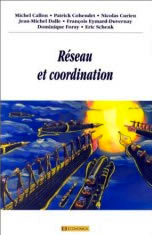 |
CALLON, M., COHENDET, P., 1999, Réseau et coordination ,
Paris, Economica.
La notion de réseau s'est imposée progressivement au cours des dernières années en sciences sociales, dans le domaine de l'innovation comme dans bien d'autres, comme un outil incontournable pour analyser le mécanisme complexe d'interactions entre acteurs hétérogènes (par exemple entre des laboratoires de recherche, des firmes et des consommateurs). On fait ainsi appel au concept de réseau aussi bien pour décrire la mise en place des formes de coordination appropriées entre acteurs, que pour rendre compte de la dynamique de ces relations. Mais, la notion de réseau se heurte à un écueil majeur lié à son succès : sa polysémie, aussi bien entre disciplines qu'à l'intérieur même de chaque discipline, rend souvent son utilisation confuse. L'objectif du présent ouvrage est ainsi d'affirmer l'importance de la notion de réseau en sciences sociales, avec le parti pris suivant : ne pas renoncer à la richesse polysémique du concept, mais tenter de rendre compatibles ou comparables les cadres d'analyse et les outils élaborés par les différentes disciplines, particulièrement la sociologie et l'économie, pour comprendre et analyser les modes de coordination et la dynamique d'interactions entre agents -hétérogènes. Cet ouvrage résulte d'un échange prolongé au cours des dernières années, sous forme de séminaires ou de discussion de papiers de recherche portant sur la signification et l'utilisation de la notion de réseau, entre des chercheurs issus de disciplines différentes en sciences sociales : - Callon, Michel, professeur en sociologie de l'innovation à l'Ecole Nationale Supérieure des Mines de Paris (CSI), - Patrick Cohendet, professeur de sciences économiques.à l'Université Louis Pasteur de Strasbourg (BETA), - François Eymard-Duvernay, professeur à l'Université de Paris X-Nanterre, - Dominique Foray, Directeur de recherche CNRS, IMRI-ISIS, Paris-Dauphine, - Nicolas Curien, professeur au CNAM, Paris, titulaire de la chaire " économie et politique des télécommunications ", auxquels se sont joints pour collaborer à cet ouvrage, Jean-Michel Dalle (Maître de conférences, ENS Cachan) et Eric Schenk (chercheur au BETA. Université Louis Pasteur de Strasbourg). |
| |
M&E.,ADEL, C.,CIL., DE BUSSIERRE, M.,LE., ULMANN-MAURIAT, C., 1999, Radios et Télévision aux temps des événements d’Algérie, 1954-1962 ,
Paris, L’Harmattan.
Les différentes contributions présentent les nombreux chantiers que les archives audiovisuelles offrent aux chercheurs. La guerre Algérie voit la télévision émerger progressivement dans l'ombre d'une radio dominante tant dans le paysage médiatique que dans le quotidien des Français grâce la diffusion du transistor. Si l'histoire institutionnelle de ces médias et de certaines de leurs émissions déjà été entamée depuis longtemps, les auteurs invitent à explorer d'autres pistes, de l'histoire culturelle et sociale. |
| |
AKRICH M., 1999, «La péridurale, un choix douloureux» ,
Les cahiers du Genre, n°25p.17-48.
Accès au texte »
L’analgésie péridurale, qui permet de supprimer la douleur de l’accouchement sans altérer la conscience, a connu ces dernières années en France un développement important : pour certain(e)s, il s’agit d’une victoire des femmes accédant à un droit fondamental, d’autres considèrent qu’elle renforce l’emprise croissante des techniques et des médecins sur le corps des femmes. Tou(te)s s’accordent sur l’idée qu’un choix doit être proposé à la femme, laquelle se trouve installée en acteur autonome, rationnel, maître de ses décisions. Dans cet article, basé sur des entretiens avec des femmes, nous reviendrons sur les conditions « en pratique » dans lesquelles se détermine l’usage de la péridurale et sur cette notion de « choix », centrale dans les représentations que s’en font les acteurs. |
| |
AKRICH M., 1999, «Pillole, pastiglie e sciroppi. La produzione sociale delle forme galeniche» ,
in SEMPRINI A., (ed.), Il senso delle cose. I significati sociali e culturali degli oggetti quotidiani, Milan, Franco Angeli, p.130/150.
Accès au texte »
Version italienne de AKRICH M., 1995, « Petite anthropologie du médicament », Techniques et Culture, 129-157. |
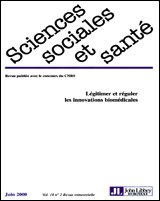 |
AKRICH M., 1999, «Un seul modèle de développement pour l’obstétrique mexicaine?» ,
Sciences Sociales et Santé, 17 (1), p.105/113.
Accès au texte »
Dans ce commentaire de l'article de S. Lerner, A. Quesnel et O. Samuel (Sciences Sociales et Santé, 1999), nous avons voulu remettre en question l'évidence d'un cheminement balisé pour le développement des soins obstétricaux dans quelque pays que ce soit. Nous avons essayé de montrer qu'il existe des alternatives à une médicalisation conforme au modèle dominant en Occident, médicalisation qui n'a pas que des avantages et qui conduit au Mexique à la marginalisation de certaines populations. Mais emprunter ces chemins de traverse suppose un volontarisme fort qui se décline sur de multiples aspects, de l'organisation à la formation, en passant par la recherche et la redéfinition des professions.
Abstract : Comments on Susana Lerner, Andre Quesnel, & Olivia Samuel's (1999) article that argues for the medical establishment's control of child delivery in Mexico. The absence of established links between traditional midwives & modern medical doctors has the object of transferring clientele from midwives to the medical establishment. This dichotomous system is claimed to be unnecessary, as both midwives & medical obstetricians can participate in a single synthesized system. The example of child delivery care in the Netherlands is discussed, emphasizing the difference between physiology, the midwife's domain, & pathology, the responsibility of the doctor. A similar integrated system is proposed for Mexico, highlighting benefits, eg, reduced mortality rates & reduced instances of cesarean section. A system including midwives & doctors would be beneficial, particularly for those populations marginalized by medical institutions. |
| |
AKRICH M., 1999, «Les désignations du corps déficient et de la personne dépendante» ,
Evolutions technologiques et vieillissement des personnes, MIRe-DRESS. 9-10 février 1999.
Accès au texte »
Commentaires sur « L'impact du vieillissement des personnes, handicapées ou non, sur l'utilisation d'objets techniques », recherche menée sous la responsabilité scientifique de Jean-Claude SPERANDIO, par Cécilia DE LA GARZA, Gabriel MICHEL, Maryline SPECHT, Gérard UZAN, et « Ofrre technique et milieu gérontoloique à Toulouse. De la résidence intégrée au système multicapteurs », travail mené par Serge CLÉMENT, Christine DUBREUIL, Fabien MILANOVIC |
 |
AKRICH M., MÉADEL C., 1999, «Histoire des usages modernes» ,
Energie, l'heure des choix, Paris, Les Editions du Cercle d'Art, p.25-91.
Accès au texte »
Parler des usages de l'énergie, c'est risquer un pari dangereux : l'empreinte n'est-elle pas si forte que cela revient à embrasser tous les pans de l'activité humaine ? Les énergies - et essentiellement le gaz, l'électricité, le pétrole et le charbon - n'ont-elles pas modifié tous nos comportements, de la gestion du corps aux entreprises les plus ambitieuses ? Pourtant, ce constat, pour juste qu'il soit, est bien trop lapidaire et reste muet sur les conditions et les effets de ces transformations. Les énergies sont-elles venues se greffer sur des techniques anciennes pour renforcer leurs capacités, par exemple en ajoutant de la force, de la vitesse, de la distance... De nouvelles machines dotées et dopées “ énergétiquement ” se sont substituées aux anciennes, moins efficaces, moins puissantes, moins rapides. Le fer à repasser électrique remplace le fer chargé de braises ; le tramway se substitue à l'omnibus hippomobile ; le télégraphe électrique élimine son ancêtre mécanique de Chappe. D'autres dispositifs, comme la machine à laver, les appareils domotiques de télésurveillance ou le cinéma relèvent de filiations moins directes et apparaissent comme des innovations plus radicales. Dans les deux cas, se posent pourtant les mêmes questions. Comment ces nouveaux dispositifs se sont-ils inscrits dans les pratiques antérieures ? Dans quelle mesure les ont-ils transformées ? Y a-t-il continuité ou substitution entre les dispositifs anciens et leurs concurrents modernes ? Comment leurs utilisateurs ont-ils appris à s'en servir ? Quelles modifications ont-ils apportées par rapport aux usages prévus par les concepteurs ? |
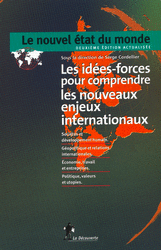 |
BARTHE Y., 1999, «La gestion des risques technologiques tend à échapper au contrôle des seuls experts» ,
in CORDELLIER S., (ed.), Le Nouvel état du monde. 80 idées-forces pour entrer dans le 21e siècle, Paris, La Découverte, p.169-171. |
| |
CALLON M., 1999, «Entretien avec Robert Lhomme et Jean Fleury» ,
Recherche et Formation pour les professions de l'éducation, Innovation et Formation des enseignants (31), p.113-126. |
| |
CALLON M., 1999, «L’innovation dans les services» ,
in PLAN C., (ed.), Recherche et innovation : la France dans la compétition mondiale. Rapport du groupe présidé par Bernard Majoie, Paris, La Documentation Française, p.301-331. |
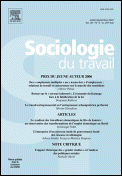 |
CALLON M., 1999, «Ni intellectuel engagé, ni intellectuel dégagé: la double stratégie de l’attachement et du détachement» ,
Sociologie du travail, 99/1p.1- 13.
Accès au texte »
To be heard & employed, sociological studies must take several principles into account. First, the sociologist cannot simply relate a study; he must instead be an active performer in his work & give an accurate representation of his findings. Second, to successfully present himself, he must remember that instruments & actions speak louder than words. Third, he must convey to others the importance of his work & convince them to make use of it. Fourth, he must construct proposals & solutions that have their own independence. These proposals must be adaptable to different situations & evolve with time. Finally, the sociologist must think seriously about the attachment & detachment that each different project requires. |
| |
CALLON M., 1999, «Le réseau comme forme émergente et comme modalité de coordination : le cas des interactions stratégiques entre firmes industrielles et laboratoires académiques» ,
in CALLON M., COHENDET P., ALII E., (ed.), Réseau et coordination, Paris, Economica, p.13-63. |
| |
CALLON M., 1999, «(Ré)écriture et coordination de l’action dans une organisation» ,
in LENAY C., HAVELANGE V., (ed.), Revue d'anthropologie des connaissances, Erès, p.99-108. |
| |
CALLON M., 1999, «La sociologie peut-elle enrichir l’analyse économique des externalités? Essai sur la notion de cadrage-débordement» ,
in MAIRESSE D., (ed.), Innovations et performances. Approches interdisciplinaires, Paris, Éditions de l'école des Hautes Études en Sciences Sociales, p.399 à 431. |
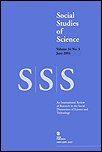 |
CALLON M., 1999, «Whose Imposture? Physicists at War with the Third Person» ,
Social Studies of Science, 29 (2), p.261-286.
Accès au texte »
I offer my own account of a book without content (Alan Sokal, Jean Bricmont, Impostures intellectuelles, Paris, Odile Jacob, 1997), which generated a debate without content, by first rapidly showing that the major success of S&B is to have conflated the work of two very different sorts of authors - on the one hand, those who use or comment on the results and concepts of science for their own ends; and, on the other hand, those who seek to create instruments to study science as it is being made. This will lead me to focus, in a second part, on the few lines that S&B devote to science studies - or more precisely, to an article by Latour on Einstein. I will sho that S&B do not understand much of Latour's argument and consequently miss Einstein's masterstroke. Finally, in the third part, I will respond to comments they make on the controversy between Henri Bergson and Albert Einstein, to show that if they do not understand why Bergson does not want to understand Einstein, it is because they do not realize to what extent, and on which issues, their own discipline is in crisis. |
| |
CALLON M., 1999, «The Role of lay People in the Production and Dissemination of Scientific Knowledge» ,
Science, Technology and Society, 4 (1), p.81-94.
Addresses the alleged crisis in science rooted in the separation & consequent mistrust between technoscience specialists & lay persons. Three models of lay person participation are outlined: (1) The public education model is characterized by a complete separation between specialists & the public, along with a lack of public participation, & hinges on the necessity of science in educating the public to build trust. (2) The public debate model recognizes the deficiency of the scientific enterprise as a conglomeration of partial expertise. As such, procedures that establish public arenas for debate are established, providing science with external enrichment. (3) The coproduction of knowledge model relies on the participation of concerned groups in the actual production of scientific knowledge. It is contended that all three models need to be used jointly to comprehend the true nature of the relationship between scientific specialists & lay persons, & the three models together serve to refute the alleged crisis of trust in modern science. |
 |
CALLON M., 1999, «Des différentes formes de démocratie technique» ,
Les Cahiers de la sécurité intérieure, 38p.37-54.
Quel est le rôle des profanes dans l'élaboration et la dissémination des connaissances scientifiques ? L'auteur propose de distinguer trois modèles. Dans le modèle de l'instruction publique, la connaissance scientifique s'oppose aux croyances irrationnelles d'un public qui doit être éduqué. Dans celui du débat public, les profanes sont invités à donner leurs points de vue et à communiquer leurs expériences. Dans celui de la coproduction des savoirs, les profanes participent directement à l'élaboration des connaissances qui les concernent et dont dépendent bien souvent leur bien-être et leur identité. Chaque modèle possède son propre domaine de validité. L'article suggère que le troisième modèle se généralise, offrant ainsi une issue à la crise de confiance du public vis-à-vis des experts. |
 |
CALLON M., 1999, «Compte rendu de l’ouvrage de Muriel Le Roux : L’entreprise et la recherche. Un siècle de recherche industrielle à Péchiney» ,
La revue pour l'histoire du C.N.R.S., 1p.90-92.
Accès au texte »
Disons-le tout de suite, l'ouvrage de Muriel Le Roux, issu d'une thèse réalisée sous la direction de François Callon, est exemplaire. Rédigé dans un style élégant, il aborde les questions techniques sans jamais perdre de sa clarté. L'auteur sait aller à l'essentiel, mariant avec une grande habileté la présentation des événements, des hommes, des contingences historiques et la prise en considération des évolutions à long terme. L'histoire s'écrit sous les yeux du lecteur qui est constamment replacé dans les incertitudes et les hésitations du moment, et ce malgré le refus presque constant de narration. L'ouvrage est à la fois impressionnant par son architecture d'ensemble : une thèse est défendue, et par l'agencement des détails qui prennent place dans cet édifice et lui donnent sa force. Nous avons attendu longtemps un ouvrage consacré à l'histoire de la recherche industrielle d'une entreprise française. Il existe désormais et il devrait servir de référence pour tous ceux qui s'embarqueront dans une aventure similaire. |
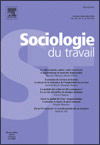 |
CALLON M., RABEHARISOA V., 1999, «De la sociologie du travail appliquée à l’opération chirurgicale : ou comment faire disparaître la personne du patient ?» ,
Sociologie du travail, 41p.143/162.
Accès au texte »
Ce texte nous offre une lecture à la fois critique et complémentaire d’un article de J. Peneff s’intitulant « le travail du chirurgien : les opérations à cœur ouvert » publié précédemment par la revue (n°3/97). Les auteurs remettent en question le fondement même du raisonnement de J. Peneff qui assimile par trop l’intervention chirurgicale au travail ouvrier et ignore de ce fait la personne humaine qui subit l’intervention. Pour étayer l’argumentation, les travaux de Hirschauer sont mis à profit. En effet, l’apport de ce dernier est d’insister largement sur la tension entre les forces qui visent à assurer la survie du patient et celles qui agissent sur le corps pour le réparer. Toutefois l’analyse d’Hirschauer s’avère également insuffisante dans la mesure où elle en prend guère en compte le travail préopératoire et postopératoire, alors que J. Peneff envisage, lui, l’ensemble du processus. Pour les auteurs, l’analyse en étendant le point de vue de Hirschauer doit porter sur la « reconfiguration » des corps et des personnes pendant l’opération chirurgicale ; mais ce travail de « reconfiguration » commence avant même l’opération et se poursuit après l’opération.
Abstract : This critical comment on J. Peneff's article, "Le Travail du chirurgien: les operations a coeur ouvert" (The Surgeon's Work: Open Heart Surgery [1997]), questions the very basis of Peneff's argumentation, which likens surgery to ordinary labor & thus overlooks the person who undergoes the operation. Hirschauer's (1991) work is mentioned for its insistence on the tension between the forces that ensure the patient's survival & those that repair the body. However, Hirschauer's analysis also has shortcomings in that it hardly takes a look at the work preceding & following operations, whereas Peneff does take into account the whole process. Although Callon & Rabeharisoa advocate analyzing the "reconfiguration" of bodies & persons during surgery itself, they do not think this suffices; the work of reconfiguration starts before an operation, when the patient is selected for surgery, & continues afterward, in the patient's life. A comparative reading of Peneff & Hirschauer can detect their complementarity. 19 References. Adapted from the source document. |
 |
CALLON M., RABEHARISOA V., 1999, «La leçon d’humanité de Gino» ,
Réseaux, (95), p.197/233.
Accès au texte »
Gino fait partie de ces malades dont les myopathes disent en plaisantant qu'on achèterait leur santé. Il est difficile à un œil non averti de déceler les signes cliniques de la dystrophie des ceintures. Pourtant, Gino donne le spectacle de quelqu'un d'accablé qui considère que l'entretien est une corvée qu'il n'a pu éviter. Il est difficile de lui extraire autre chose que des mots isolés, à peine articulés, pas toujours audibles. La contrainte pèse sur lui : il est sommé de justifier son propre comportement c'est-à-dire d'expliquer son refus de la médecine, mais aussi sa faible implication dans le mouvement associatif, ainsi que ses réticences à parler avec ses enfants des conséquences de sa maladie. A quoi tient ce triple refus? Comment en rendre compte? Faut-il le considérer comme légèrement arriéré ou simplet, voire tout simplement amoral ? Faut-il lui chercher des circonstances atténuantes, aller fouiller dans son enfance ou dans les influences qu'il a reçues, de manière à découvrir une origine plausible à cette étrange attitude ? Faut-il invoquer le classique déni par le malade de sa propre maladie ? L’objectif de cet article est d'explorer une autre voie, de refuser la facilité de ces explications convenues. Utilisant la situation d'interview comme un dispositif expérimental qui simule la construction d'une arène publique, nous allons nous efforcer de tenir une position symétrique. Ce que Gino refuse c'est d'entrer dans un espace public qui, en lui proposant une forme d'assujettissement contre laquelle il résiste, remet en cause l'identité pour laquelle il se bat. |
| |
DUBUISSON S., HENNION A., RABEHARISOA V., 1999, «Passages et arrêts en gare : border son temps, flotter, se réengager» ,
in JOSEPH I., (ed.), Villes en gares, La Tour d'Aigues, Éditions de l'aube, p.212-240.
L'objectif de cette recherche est de tenter une interprétation de l'expérience des usagers de la gare interrogés lors de l'enquête préalable mais aussi d'utiliser ces personnes interviewées comme des observateurs de la gare en action. |
 |
GOMART E., 1999, «Surprised by Methadone» ,
Thèse de doctorat, Paris, École Nationale Supérieure des Mines de Paris.
Accès au texte »
Au debut des annees 1990, un debat oppose les psychologues, specialistes traditionnels des traitements de la toxicomanie, aux promoteurs d'une politique de reduction des risques (plr). Ce que ces derniers remettent en cause est le rejet par les premiers de l'utilite de la methadone (et de la substitution) dans le traitement des sujets dependants a l'heroine. Dans ces debats se cristalisent des definitions contrastees de l'action et de la relation entre sujet et objet: la drogue (et la methadone) peut-elle etre une source de changement positif ou ne fait-elle que vider le sujet de sa substance et de sa capacite d'agir? pour les psychologues, le sujet est donne et transcendant. Le sujet est capable d'agir seulement lorsqu'il est abstinent de toute drogue (et aussi de la methadone). Pour lesplr, le sujet n'est pas detruit mais bien construit par l'usage de certaines drogues. Ces acteurs innovent sur des questions passionantes pour un sociologue sur la construction des sujets. Pour les psychologues, la construction du sujet est symbollique et exclut tout usage de drogues. Pour les plr, la construction est chimique et litterale. Cette construction litterale est ce que j'appele la "pharmacologie politique". En re-definissant la "substance" (des drogues) avec les lecons des "science studies", il devient possible de faire proliferer des definition alternatives du sujet. Au centre du debat entre psychologue et plr est le conflit entre deux versions de la "construction" du sujet. Pour les psychologues, la construction du sujet est une monstruosite puisqu'elle suppose des contraintes qui violent l'integrite du sujet. La "construction" est limitee par une theorie particuliere de l'action. Pour les plr, le probleme n'est pas celui de la contrainte en elle-meme mais de faire en sorte que le sujet puisse "resister" et transformer la contrainte qui s'exerce sur lui. Je decris une serie de techniques du traitement de substitution de plr qui tentent d'etre de telles "contraintes genereuses" transformant sans detruire le sujet. Tout en insistant sur l'innovation philosophique et technique de ces acteurs, j'ai voulu cerner les limites de leur pratique telles qu'elles leur sont apparues au fil des annees. Avec eux, j'ai esquisse une autre theorie de l'action suggerant des criteres moraux nouveaux d'evaluation des traitements de la toxicomanie. |
 |
GOMART E., HENNION A., 1999, «A sociology of attachment : music amateurs, drug users» ,
in LAW J., HASSARD J., (ed.), Actor Network Theory and after, Oxford, Blackwell Publishers / The Sociological Review, p.220-247.
After describing objects as networks, we attempt to describe "subject-networks". Instead of focusing on capacities inherent in a subject, we focus instead upon the tactics and techniques which make possible the emergence of a subject as she enters a "dispositif". Opting for an optimistic analysis of Foucault, we consider "dispositifs" and the constraints they deploy to have a generous action: they do not only reduce but reveal and multiply. The generating power of "dispositifs" depends upon its capacity to foment and to use new capacities in the persons who pass through them. Drawing upon a diverse body of litterature and upon fieldwork among drug addicts and music amateurs, we show how this point of entry into the question of the subject immediately and irreparably undoes traditional dichotomies of sociology. It becomes impossible to continue to oppose agent/structure, subject/object, active/passive, free/determined. We also have to look beyond studies of "action" and describe "events". Through the words and trials of the music and drug lovers, it becomes clear that the subject can emerge as she actively submits herself to a collection of constraints. These actors describe necessary yet tentative techniques of preparation to produce this "active passion", this form of "attachment" which we attempt to describe as that which allows the subject to emerge--never alone, never a pristine individual, rather always entangled with and generously gifted by a collective, by objects, techniques, constraints. |
| |
GOMART E., MARTINEAU H., 1999, «Politiques et expérimentations récentes sur les drogues aux Pays-Bas» ,
Observatoire Français des Drogues et Toxicomanies. |
| |
HENNION A., 1999, «Authenticité, histoire et retour au passé...» ,
Les cahiers de la société québécoise de recherche en musique, 3 (1-2), p.13-20. |
| |
HENNION A., 1999, «Les amateurs de musique. Sociologie d’une pratique et d’un goût» ,
Sociologie de l'Art, 12p.9-38.
Si l’histoire de la musique a été cent fois écrite et réécrite, elle l’a toujours été autour des œuvres et des compositeurs. Il y a place pour une autre histoire de la musique, écrite du point de vue de l’auditeur. La compétence à écouter n’est pas tant une qualité personnelle ou l’envers mécanique d’une histoire des œuvres et des langages musicaux, que le résultat éventuel d’un temps et d’un espace aménagés, à la suite d’un long apprentissage historique et collectif ayant lui-même produit un univers inédit d’objets coordonnés. L’article donne des éléments d’analyse et du matériel empirique tiré d’une enquête réalisée auprès d’amateurs de musique (concerts, radio, disque, jeu), dont le goût a été compris comme une pratique active et réflexive, impliquant un collectif, des objets, des procédures, et non comme la marque servant de support aux jeux sociaux de l’identité et de la différence. |
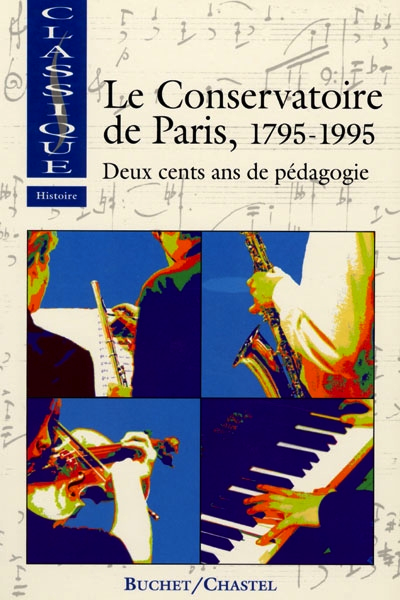 |
HENNION A., 1999, «L’effort pour rendre la musique raisonnable» ,
in BONGRAIN A., POIRIER A., (ed.), Le conservatoire de Paris. Deux cents ans de pédagogie 1795-1995, Paris, Buchet/Chastel, |
| |
HENNION A., 1999, «Bach aujourd’hui» ,
Cité Musiques, 22p.2-3.
février-mars 1999 |
| |
HENNION A., 1999, «L’évolution du goût musical au XIXe siècle : entre acoustique et sociologie» ,
Colloque "Acoustique et instruments anciens", Paris, Cité de la Musique, p.255-260. |
 |
KARPIK L., 1999, French Lawyers. A Study in collective action ,
Oxford, Oxford University Press. |
| |
LARÉDO P., 1999, «Changing Structure, Organisation and Nature of Public Sector Research. The development of a reproducible method for the characterisation of a large set of research collectives» ,
Paris, CE/CSI Ecole des Mines. |
| |
LARÉDO P., 1999, «Trajectoire, résultats et effets de l’équipe mixte CEA-RP des enseignements pour le futur» ,
Paris, CEA/RP/CSI Ecole des Mines. |
| |
LARÉDO P., 1999, «Actions, projets et produits à l’INRA : quelles activités pour quelles productions Le cas des départements ESR, SAD et BIA» ,
Paris, Groupe de travail "Mieux connaitre nos activités et mieux caractériser leurs produits" MCAMCP (1998-1999). |
 |
LATOUR B., 1999, Politiques de la nature. Comment faire entrer les sciences en démocratie ,
Paris, La Découverte. |
| |
LATOUR B., 1999, «When Things Strike back a Possible Contribution of "Science Studies" to the Social Sciences» ,
British Journal of Sociology, |
| |
LATOUR B., 1999, «L’objection des sciences sociales» ,
La Recherche, 323 |
| |
LATOUR B., 1999, «Après le progrès, l’histoire continue» ,
Cahiers de Sciences et Vie, 154p.93-96.
janvier |
| |
LATOUR B., 1999, «Faut-il savoir avant d’agir ?» ,
La Recherche, 318 |
| |
LATOUR B., 1999, Pandora’s Hope. Essays on the Reality of Science Studies ,
Cambridge, Harvard University Press. |
| |
LATOUR B., 1999, «La science est-elle plus spirituelle que la religion ?» ,
La Recherche, 324 |
| |
LATOUR B., 1999, «L’obligation des choses. Sur-moi moral et "sous-moi" technique» ,
Réseaux, 100 |
| |
LATOUR B., 1999, «Factures/Fractures: from the concept of Network to the concept of Attachment» ,
Res, 36p.20-31. |
| |
LATOUR B., 1999, «Nul ne sait avec certitude...» ,
La Recherche, 325 |
| |
LATOUR B., 1999, «La guerre des autocollants» ,
La Recherche, 321 |
| |
LATOUR B., 1999, «For David Bloor... and Beyond : A Reply to David Bloor’s "Anti-Latour"» ,
Studies in History and Philosophy of Science, 30 (1), p.113-129. |
| |
LATOUR B., 1999, «Let’s us not overlook the earthworm Pontoscolex corethrurus» ,
in JOERGES J., (ed.), Berlin 7 Hills Exhibit, Berlin, p.17-26. |
| |
LATOUR B., 1999, «La guerre des deux Karl» ,
La Recherche, 319 |
| |
LATOUR B., 1999, «Les monolithes de Stockholm» ,
La Recherche, 326p.110. |
| |
LATOUR B., 1999, «"Thou Shalt Not Take the Lord’s Name in Vain" Being a sort of Sermon in Sociology of Religion» ,
Brunel Conference, Dick Pels. 1999 Septembre. |
| |
LATOUR B., 1999, «Pourquoi viens-tu si Tarde ?» ,
La Recherche, 320 |
| |
LATOUR B., 1999, «Claris, an apparition on the screen darkly» ,
in SHAFFER S., LOWE A., (ed.), No1se, |
| |
LATOUR B., 1999, «Body, cyborgs and the politics of incarnation» ,
Darwin Lecture, 19 février 1999. |
| |
MALLARD A., 1999, «Etre garagiste au temps de l’informatique» ,
in BROMBERGER C., CHEVALIER D., (ed.), Carrières d'objets. Innovations et relances, Paris, Editions de la Maison des Sciences de l'Homme, p.59-81. |
| |
MALLARD A., RÉMY E., 1999, «Comment les associations renouvellent le débat sur la qualité de l’eau» ,
Environnement et société, (22), p.69-86. |
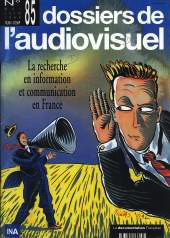 |
MÉADEL C., 1999, «Passage en revues» ,
Dossiers de l'audiovisuel, 85p.17/18. |
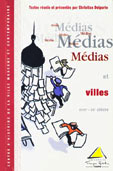 |
MÉADEL C., 1999, «Du local à l’universel. Les programmes de radio dans les années trente» ,
in DELPORTE C., (ed.), Médias et villes (XVIII°-XX° siècle), Tours, C.E.H.V.I. Centre d'histoire de la ville moderne et contemporaine Publications de l'université François Rabelais, p.87/100.
La radio ne se laisse pas enfermer dans un territoire unique : dès ses premières émissions, elle se déploie dans plusieurs directions et habite des espaces à géométrie variable : l’espace de sa diffusion et celui de sa réception, qui, en vertu des frasques inattendues des ondes ne correspondent pas toujours mais aussi le territoire de ses ressources, culturelles, sociales, politiques, très fortement marqué par l’urbain… La radio s’est pourtant construite en proclamant la négation de l’espace : les ondes transcenderaient les partages de la géographie et, partant, de la société. Pourtant, le nouveau média n’a pu se développer pendant les années trente qu’en s’inscrivant fortement dans un lieu, la cité, dont il utilise toutes les ressources et dont il reprend également certaines habitudes de vie. Les émissions des dix années qui précédent la seconde guerre mondiale mêlent en effet des ressources très locales (recours aux musiciens des orchestres municipaux, aux comédiens et aux conférenciers de la ville, retransmission de spectacles locaux, utilisation de patois, reportages sur les “curiosités”, marchés et foires urbaines…) et une vocation universelle (que l’on retrouve non seulement dans les échanges nationaux ou internationaux mais aussi dans une grille essentiellement déconnectée de son lieu de production). En analysant la grille des programmes et la manière dont ils ont été imaginés, produits et mis en ondes sur les stations publiques comme privées, cet article montrera d’abord que la radio affirme sa vocation d’abolir l’espace, puis qu’elle s’inscrit fortement dans sa dimension locale et enfin que ses programmes se définissent par une tension entre le local et l’international. On pourra alors se demander en conclusion si la culture radiophonique des années trente aboutit à produire une certaine homogénéisation des savoirs et des comportements. |
| |
MÉADEL C., 1999, «Des innovations à l’Inra, entre deux modèles» ,
Paris, INRA - CSI. |
| |
MÉADEL C., 1999, «The Emergence in France of Quantitative Methods for Audience Measurement» ,
Media Developments and Cultural Change, Newcastle, Sheila Perry, Pamela Moores, p.93-107. |
| |
MÉADEL C., RABEHARISOA V., 1999, «Consommateurs et produits alimentaires : la construction des ajustements. Partie II : l’équipée de Pampryl et Banga» ,
Paris, UNIR-DGAL (Ministère de l'agriculture). |
| |
MÉADEL C., RABEHARISOA V., DUBUISSON-QUELLIER S., 1999, «Consommateurs et produits alimentaires : la construction des ajustements. Rapport de synthèse» ,
Paris, UNIR - DGAL - Ministère de l'agriculture.
Les industriels travaillent-ils les goûts des aliments ? Deux types de réponse, en forme d’acte d’accusation, sont fréquemment proposés. Soit on soutient que l’industriel se moque de ces questions, pour des raisons de rentabilité, de simplification, voire d’ignorance : seuls les produits considérés comme “ artisanaux ” et relevant de la tradition défendent la saveur et la typicité, face à des produits industriels, fades, pauvres en saveur et en texture. Soit on présente l’industriel comme un apprenti sorcier qui manipule la composition des aliments pour nous imposer des choix : il flatte nos préférences en ajoutant des ingrédients séduisants comme le sel, quitte à nous glisser d’autres éléments moins avouables, voire à nous encourager dans des aberrations culinaires, sanitaires, économiques. |
| |
MURET A., PETIT J., 1999, «Démarche qualité en recherche fondamentale (Proposition d’un référenciel Qualité pour la DSM)» ,
Gif-sur-Yvette, Commissariat à l'Energie Atomique. |
| |
MUSTAR P., 1999, «Tableau de la R&D en Nord-Pas-de-Calais» ,
La Recherche, 321p.30-31. |
| |
MUSTAR P., 1999, «Financements et partenariats des entreprises créées par les chercheurs» ,
Paris, MENRT - Direction de la Technologie. |
| |
MUSTAR P., 1999, «La dynamique des PMI à forte croissance du secteur manufacturier en France» ,
Paris, OCDE. |
| |
MUSTAR P., 1999, «Tableau de bord de la R&D en Alsace» ,
La Recherche, 325p.44-45. |
| |
PETIT J., MURET A., 1999, «A Specific Strandard for Quality in Fundamental Research» ,
Accreditation and Quality Assurance, |
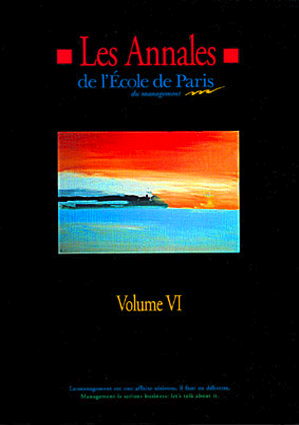 |
RABEHARISOA V., CALLON M., 1999, «La gestion de la recherche par les malades. Le cas de l’Association Française contre les Myopathies» ,
Séminaire Ressources Technologiques, 6Les Annales de l'Ecole de Paris du management. 1999.
Accès au texte »
L'Association Française contre les Myopathies finance depuis vingt ans des recherches sur les maladies neuromusculaires (MNM). Dans ses modes d'interaction avec la médecine, la recherche, les industriels, les pouvoirs publics et les médias, l'AFM est une organisation déroutante. Ainsi, loin d'être simple tiers-payant de la recherche, elle amène les malades et leurs familles à participer activement aux travaux des spécialistes tant pour la production de connaissances que pour la négociation des programmes. Vis-à-vis des pouvoirs publics et des médias, l'AFM a attiré l'attention sur des maladies oubliées et a fait émerger une nouvelle mission de service public. Cette association est ainsi à l'origine d'une organisation réflexive qui rend possible un apprentissage mutuel entre tous les acteurs et permet la création d'un marché là où il n'existait pas de produits. Les liens tissés, notamment entre la paillasse des centres de recherche et le comptoir des pharmaciens, font émerger un modèle de marché encastrédans lequel la gestion de la recherche et de l'innovation est radicalement nouvelle. |
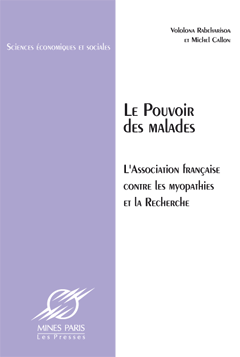 |
RABEHARISOA V., CALLON M., 1999, Le pouvoir des malades. L’Association française contre les myopathies et la Recherche ,
Paris, Presses de l'Ecole des mines.
Comment concilier la nécessaire autonomie des chercheurs avec les préoccupations et les attentes des usagers ou des citoyens ? Cette question n'est nulle part plus pertinente que dans le domaine de la santé, et nulle part plus pressante que dans le cas des maladies dites orphelines, en général d'origine génétique. Leur rareté explique le peu d'intérêt manifesté par les chercheurs, les médecins et les entreprises pharmaceutiques. Cette situation d'abandon a amené certains malades à se regrouper dans des associations qui visent à soutenir les patients dans leur vie quotidienne et à organiser les investissements en recherche.C'est le cas de l'AFM qui, grâce au Téléthon, a créé un vaste mouvement de solidarité et de soutien financier à la recherche. Ce livre, première étape d'une recherche qui vise à reconstituer l'histoire de cette association, raconte comment les malades ont su stimuler les recherches en génétique, pour les amener à un niveau international, sans jamais oublier la cause des malades. Chemin faisant l'association a inventé un modèle original dans lequel les profanes dialoguent avec les spécialistes, sans pour autant perdre de vue les objectifs assignés à la science. |
| |
WEISSENBURGER E., MANGEMATIN V., LARÉDO P., 1999, «Les profils d’activité des laboratoires de l’enseignement supérieur agricole» ,
Paris, Ministère de l'Agriculture et de la Pêche. |
| |
WINANCE M., 1999, «Trying out Wheelchair. The mutual shaping of people and devices through adjustment» ,
WTMC/CSI Workshop, 1999 novembre 17. |
| |
YANEVA A., 1999, «How objects are doing art ? an example of aesthetic mediation (case study of an exhibition in the Musée d’Art Moderne de la Ville de Paris)» ,
4S Annual Meeting, 1999. |
| |
YANEVA A., HENNION A., 1999, «Savoirs rares objets de qualité artisans d’exception : définir la qualité pour la maintenir et la produire» ,
Paris, Mission du Patrimoine/Ministère de la culture-CSI. |
 |
M&E.,ADEL, C.,CIL., DUBUISSON, S., DE LAAT, B., LA.,DO, P., MUSTAR, P., RABEHARISOA, V., GOMART, E., M&.,LARD, F.,OIS., 1998, Les chercheurs et l’innovation. Regards sur les pratiques de l’INRA ,
Paris, INRA.
L'ouvrage reprend, en le modifiant très légèrement, les rapports du CSI et du CGS sur les innovations à l'INRA. L’objectif général de l’étude proposée par le CSI était d’aboutir à une meilleure compréhension des conditions dans lesquelles naissent et se développent les innovations au sein d’un organisme de recherche comme l’Inra. L’étude des cas vise à établir une caractérisation des différents types d’innovations qui ont été développés dans le cadre de l’Institut pendant toute la seconde moitié du Vingtième Siècle. Après un rapide résumé des sept études d’innovation (une variété d’endives, la relance du Beaufort, le lancement de l’Orylag, le démontage des carcasses de bovin, l’automatisation d’une fromagerie et le développement de produits corses de terroir), ce rapport de synthèse propose la définition de deux modèles spécifiques de développement et de fonctionnement de l’innovation au sein de cet organisme de recherche à travers la définition de deux idéaux-types : le modèle de la co-construction et le modèle de la délégation, définis par trois critères : la définition du marché que se donnent les acteurs, la relations qu’ils établissent avec leurs partenaires et enfin les formes de contrats mis en place.. Ces deux modèles nous permettent ensuite de définir les cinq grandes caractéristiques qui rendent compte de l’évolution des projets : le rapport au temps, le caractère très ouvert de la définition des innovations, la force des partenariats, la profil spécifique des chercheurs et le rapport au local. |
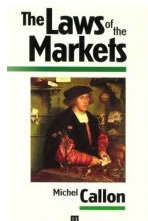 |
CALLON, M., 1998, The Laws of the Markets ,
London, Blakwell Publishers.
Ce recueil regroupe plusieurs articles qui portent leur attention sur l'organisation des marchés. Callon, Michel examine la place de la notion d'économie de marché au sein des théories économiques. Viviana A. Zelizer met en lumière une certaine prolifération des monnaies sociales dans la période actuelle. Michel Y. Abolafia considère que l'on doit appréhender les marchés comme autant de cultures spécifiques. Bai Gao s'efforce de mesurer l'influence des facteurs culturels et politiques sur l'évolution du mode de gestion japonais entre 1946 et 1996. David Stark analyse l'organisation de la propriété capitalistique en Europe orientale après l'effondrement du communisme. Mark Granovetter et Patrick McGuire décrivent de quelle manière l'industrie de l'électricité s'est développée aux Etats-Unis dans la première moitié du 20[e] siècle. Peter Miller étudie l'évolution des pratiques professionnelles dans le domaine de la comptabilité. Franck Cochoy présente le marketing comme une science de la performance et un savoir-faire au service du capitalisme. Hervé Dumez et Alain Jeunemaître examinent l'impact des politiques économiques sur le développement de l'industrie du ciment. Callon, Michel pose le problème des limites des modèles mobilisés par les économistes. |
| |
AKRICH M., 1998, «Les utilisateurs, acteurs de l’innovation» ,
Education permanente, "L'innovation en Question", 1 (134), p.79-90.
Accès au texte »
Cet article tente de faire l'inventaire des multiples modalités par lesquelles les utilisateurs interviennent sur l'innovation : après avoir passé en revue les méthodes utilisés par les concepteurs pour faire se représenter les utilisateurs, l'article étudie les formes ordinaires de l'innovation chez les utilisateurs et montre que certaines de ces innovations sont reprises par des producteurs et débouchent sur le marché. La dernière partie est consacrée à l'examen des conditions qui peuvent expliquer pourquoi, dans certains cas, l'utilisateur devient le principal innovateur. |
| |
AKRICH M., 1998, «Soins périnataux : avantages et inconvénients du fonctionnement en réseau» ,
Journal de Gynécologie Obstétrique, 27 (2), p.197- 204.
Accès au texte »
La question posée : "comment assurer à chacun des soins adaptés à son niveau de risque?" est remarquable : elle signale à la fois ce qui nous paraît faire l'objet d'un consensus national assez fort, c'est-à-dire l'idée du "risque" comme principe organisateur de l'offre de soins, et désigne le champ des débats possibles autour des moyens permettant d'atteindre l'objectif visé. Elle constitue en tous cas le point d'arrivée provisoire de controverses qui, depuis de nombreuses années, agitent tant le milieu médical que ceux qui ont en charge l'administration de la santé : de ce point de vue, elle traduit une évolution sensible des débats, avec l'apparition de l'idée d'une hiérarchisation possible des risques à laquelle pourrait répondre une hiérarchisation des établissements, eux-mêmes coordonnés à l'intérieur d'un "réseau".
Dans un premier temps, nous reviendrons sur ces controverses pour montrer dans quel contexte la notion de réseau a fait son apparition : il s'agira ici de mettre en évidence les hypothèses sur lesquelles reposent les préconisations qui ont été faites en la matière par le Haut Comité à la Santé Publique, et d'essayer de cartographier l'espace obstétrical qu'elles dessinent. Dans une deuxième partie, nous prendrons l'organisation néerlandaise comme point de comparaison : bien que le mot de "réseau" ne soit pas explicitement utilisé pour qualifier cette organisation, elle repose cependant sur des modalités de coordination originales qui forment un contraste saisissant avec les pratiques françaises. |
| |
AKRICH M., MÉADEL C., 1998, «La représentation des risques urbains. Les technologies de surveillance comme outil d’analyse» ,
in ANSIDEI M., DUBOIS D., FLEURY D., MUNIER B., (ed.), Les risques urbains, acteurs, systèmes de prévention, Paris, Anthropos, p.33-46.
Accès au texte »
Dans cet article, l'objectif est d'analyser la manière dont ces technologies participent d'une recomposition des espaces sociaux urbains, ceux-ci étant entendus non seulement par une localisation et une extension géographiques, mais surtout par des dispositifs matériels, juridiques et organisationnels spécifiques.
Nous concluons sur le fait que les technologies ne sont donc pas des éléments anodins dans la configuration de ces espaces : leur mise en place conduit à une explicitation et une formalisation par les usagers eux-mêmes de la manière dont ils se représentent leur sécurité et au delà, à une inscription de ces représentations dans l'espace et dans l'organisation. Ce devrait être mûrement réfléchi par tous ceux qui prennent une part active dans la mise en place des politiques de prévention et dans la conception des systèmes techniques. Les technologies de surveillance se présentent donc à la fois comme un outil de connaissance de ce domaine difficile à cerner qu'est la sécurité et un champ ouvert pour la négociation sur les formes d'organisation de l'espace en milieu urbain. |
| |
AKRICH M., PASVEER B., 1998, «We Deliver our Children - in Pain?» ,
Machines, Agency and Desire, Oslo, TMV, p.109 -123.
Accès au texte »
In this paper, we want to suggest that the emotions and sensations that would occur during birth - always assumed to reside in a single, personal body-subject - too are rendered (in)visible and (in)existant in specific ways. As traces of the birth process are being produced by many different participants, so may emotions and sensations. Our point is that given the claim of obstetrical care- givers that birth is a centered and as such highly important event for women as whole persons, it makes sense to study to what extent and how this claim is materialized in birth settings. We assume and argue that sensations, emotions - the domain of psychologists and neurologists mainly - result from specific sociotechnical practices. This does not imply that other professionals studying joy, desires, pain, speak nonsense. It does imply, however, that it makes sense for anthropologists/sociologists of technology too to study such private parts. |
| |
AKRICH M., PASVEER B., 1998, «Narrating Chilbirth» ,
Theorizing Body in Medical Practices, septembre 1998. |
| |
BARTHE Y., 1998, «Les déchets radioactifs à vie longue sont-ils gouvernables?» ,
Annales des Mines, 10p.63-70. |
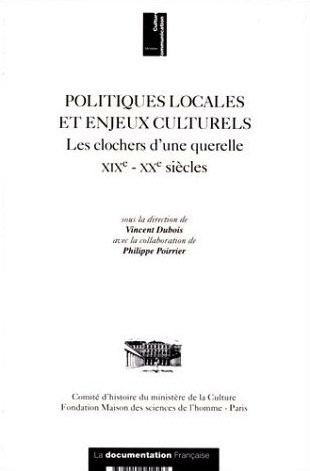 |
BARTHE Y., 1998, ««Populaire... au meilleur sens du terme». L’institutionnalisation problématique du culturel dans une municipalité communiste» ,
in DUBOIS V., (ed.), Eléments pour une sociologie historique des politiques culturelles locales, Paris, La Documentation française/ Comité d'histoire du ministère de la culture, p.387-411. |
| |
CALLON M., 1998, «An essay on framing and overflowing : economic externalities revisited by sociology» ,
in CALLON M., (ed.), The laws of the markets, Oxford, Blackwell Publishers, p.244-269.
Accès au texte »
When reviewing the conditions required for the existence of markets, no concept is more useful or appropriate than that of ‘externality’. The concept of externality is effectively central both to economies and to economics. So an attempt to clarify its significance and scope represents a suitable point of departure for renewed efforts at co-operation between sociologists and economists. Rather than highlighting the limitations and weaknesses of the concept with a view to attacking the limitations and weaknesses of economic theory, I intend to show just how useful it is as a tool for understanding the dynamics of markets, drawing upon sociology as an additional resource. I shall approach this task from the perspective of the sociologist of science and techniques. This will allow me not only to highlight the role of investment—in particular technological—in the emergence of economic agents that are capable of strategies and calculation; it will also serve as an incentive to take the ‘performative’ role of the sciences—and hence also of economics and sociology—more seriously. |
| |
CALLON M., 1998, «Défense et illustration des recherches sur la science» ,
in JURDANT B., (ed.), Impostures scientifiques. Les malentendus de l'affaire Sokal, Paris, La Découverte/Alliage, p.253-267.
Accès au texte »
Les chercheurs ont des états d'âme. Certains d'entre eux et non des moindres ont pris la plume pour s'inquiéter des résultats obtenus par une discipline jusqu'à ce jour si méconnue qu'on ne lui a pas trouvé de nom dans la langue française : les science studies. Selon eux, les sociologues, philosophes et autres historiens qui se rassemblent sous cette bannière auraient failli à leur devoir. La critique varie selon les auteurs : certains estiment que les bons sujets n'ont pas été étudiés, d'autres, encore plus indignés, accusent cette discipline de participer à un mouvement général de remise en cause de la science et de la rationalité. Pour les uns les recherches sur la science sont inutiles, pour les autres elles corrompent la jeunesse en instillant dans les esprits un poison mortel : le relativisme. Que la science traverse une profonde crise d'identité, cela n'est pas douteux. Que les recherches sur la science en soient responsables est inexact. Elles pourraient au contraire contribuer au dénouement de cette crise en la rendant intelligible. |
 |
CALLON M., 1998, «Actor-network theory, the market test» ,
in LAW J., HASSARD J., (ed.), Actor Network Theory and after, Oxford, Blackwell Publishers / The Sociological Review, p.181-195.
It is often argued that ANT fails to offer a satisfactory theory of the actor which is allegedly endowed either with limitless power, or deprived of any room for manoeuvre at all. The aim of this paper is to show that the absence of a theory of the actor, when combined with the role attributed to non-humans in the description of action, is precisely one of the strenghts of ANT that it is most important to preserve. This is because this combination makes it possible to explain the existence and the working of economic markets. Any particular market is the consequence of operations of disentanglement, framing, internalization and externalization. ANT makes it possible to explain these operations and the emergence of calculating agents. Homo economicus is neither a pure invention, nor an impoverished vision of a real person. It indeed exists, but is the consequence of a process in which economic sciencee places an active role. The conclusion is that ANT has passed one of the most demanding tests : that of the market. |
| |
CALLON M., 1998, «El proceso de construccion de la sociedad. El estudio de la tecnologia como herramienta para el analisis sociologico» ,
in DOMENECH M., TIRADO F., (ed.), Sociologia simétrica. Ensayos sobre ciencia, tecnologia y sociedad, Barcelona, Gedisa editorial, p.143-170. |
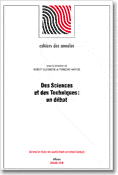 |
CALLON M., 1998, «Économie et inventions techniques» ,
Cahier des Annales, (45), p.315-330. |
| |
CALLON M., 1998, «Evaluation des acquis scientifiques d’Euro-Conception» ,
in BONNET M., (ed.), La conception architecturale en Europe, Paris, PCUA, p.23-50. |
| |
CALLON M., 1998, «Les pouvoirs publics doivent-ils soutenir la recherche académique ?» ,
Annales des Mines, (février), p.59-64.
Parce qu'elle débouche sur la production de biens publics, la recherche de base doit, selon la théorie économique standard, être conduite dans un cadre académique. Mais, certains faits, notamment la part importante des publications signées par des chercheurs industriels dans les revues scientifiques sont difficilement explicables par ce modèle. Que l'argumentation s'effondre n'implique pas pour autant que l'on doive supprimer les financements publics : un modèle en réseau conduit à une justification différente du nécessaire soutien de la recherche académique par les pouvoirs publics. |
| |
CALLON M., 1998, «Des différentes formes de démocratie technique» ,
Annales des Mines, p.63-73.
Réconcilier savoirs profanes et connaissances scientifiques pour permettre un véritable exercice de la démocratie technique : trois modèles et les conditions de leur acceptation. |
| |
CALLON M., DE LAAT B., 1998, «Les réseaux du CEMAGREF. Guide méthodologique pour l’"analyse interne"» ,
Paris, CEMAGREF. |
| |
CALLON M., GUELLEC D., 1998, «Essai de modélisation des programmes de recherche» ,
Paris, CSI. |
| |
CALLON M., LAW J., 1998, «De los intereses y su transformacion. Enrolamiento y contraenrolamiento» ,
in DOMENECH M., TIRADO F., (ed.), Sociologia simétrica. Ensayos sobre ciencia, tecnologia y sociedad, Gedisa editorial, p.51-61. |
| |
CALLON M., MUSTAR P., LARÉDO P., 1998, «Le palmarès des entreprises qui innovent» ,
La Recherche, (315), p.104-111.
L'enquête réalisée pour la quatrième année consécutive avec La Tribune et en collaboration avec l'Ecole des mines de Paris met notamment en exergue la montée des coopérations verticales avec les clients et les fournisseurs. Les partenariats inter-entreprises ont également connu un extraordinaire développement depuis le début des années 1980. |
| |
CALLON M., RABEHARISOA V., DUCRUET C., 1998, «L’AFM, un acteur du troisième type» ,
La Recherche, (315), p.69-71.
En 1993, le Téléthon a, pour la première fois, fait surgir la thérapie génique hors de l'ombre des laboratoires pour la propulser dans l'espace public français. |
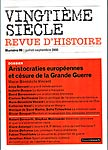 |
CHAUVEAU A., MÉADEL C., 1998, «Nouvelles archives, nouvelles méthodes» ,
Vingtième Siècle, 58 (1), p.154-156.
Accès au texte »
Les historiens du contemporain se sont longtemps désintéressés de la radio et de la télévision tant comme objet de recherche que comme source d’histoire. A la frilosité historiographique s'ajoutait toute une série de contraintes techniques. Dès la fin des années 1970, quelques précurseurs ouvrirent pourtant la voie. (...) Pour autant, l'accès aux sources demeurait le principal obstacle et les travaux sur histoire de la radio-télévison se faisaient essentiellement, ô paradoxe, à partir de documents écrits. L'INA, chargé par la loi de 1974 du recueil et de la préservation des archives, n'avait pas les moyens de pourvoir à leur mise à disposition pour des chercheurs, d'autant que les gouvernements le poussaient à se consacrer à leur exploitation commerciale. Les appels à la constitution d'un dépôt légal de l’audiovisuel trouvèrent d'abord peu d'échos. |
| |
DE LAAT B., 1998, «Preparing for Technology Foresight -The Prospective Profile of a National Agency» ,
in GARCIA C., SANZ-MENENDEZ L., (ed.), Cost A3 -Management and Technology, Madrid, European Commission, Directorate General, Science reasearch and development, p.434-454. |
| |
DIDIER E., 1998, «Emergence des mots de l’exclusion» ,
Quart Monde, 1998/1 (165), p.42-51. |
| |
DUBUISSON S., 1998, «Regard d’un sociologue sur la notion de routine dans la théorie évolutionniste» ,
sociologie du travail, 98 (4), p.491-502. |
| |
FRANCOEUR E., 1998, «The forgotten Tool : A socio-Historical Analysis of the Development and Use of Mechanical Molecular Models in Chemistry and Allied Disciplines» ,
1998. |
 |
HENNION A., 1998, «Le pouvoir de la musique : de la création, du goût, et de la sociologie...» ,
in FRANÇOIS J., (ed.), Enseigner la musique, Lyon, Cahiers du Cefedem, p.63-90.
Conférences organisées par le CEFEDEM Rhône-Alpes et le CNSM de Lyon |
| |
HENNION A., 1998, «Création, médiation, sociologie» ,
Actes du congrès national de l'APEMU, 1998. |
 |
HENNION A., 1998, «Hercule et Bach : la production de l’original» ,
Revue française de musicologie, 84 (1), p.93-121.
What does it mean to listen to "Bach today"? Is Bach the author of what we play, or do we make him the author of his work by playing him? The collective production of an original figure divides searchers, between defenders of an absolute value of the works and social constructivists. Music seems an ideal case to go forward about this question: musicological research, Urtext, return to "authentic" interpretations... The necessity of performing it makes visible a quite curious activity, continuously sustained: slowly producing the more and more fixed work of a more and more "original" author. The paper first displays the original formulation of the "authority" problem by literary theories in the 60s. Then it presents a comparison between the always "new" reinterpretations of Bach, and a case taken from the history of art: the study of Roman statues by Haskell and Penny, centered on the progressive production of their "originality": first an argument for their fame, it becomes the cause of their fall as copies of new Greek "originals". Taking advantage of the way through which, with specific tools, the authors have succeeded in treating the marble of the statues, the idea is to draw from their exemplar work crucial points of method and theory to apply to the case of music, and in particular to the historical formation which represents "Bach today". |
| |
HENNION A., 1998, «D’une histoire de la musique à une sociologie de l’écoute» ,
1998. |
| |
HENNION A., 1998, «Editorial» ,
Sociologie de l'art, p.9-22.
11 |
| |
HENNION A., 1998, «Bach aujourd’hui» ,
Cité Musiques, p.2-3.
février-mars |
| |
HENNION A., 1998, «D’une distribution fâcheuse. Analyse sociale pour les musiques populaires, analyse musicale pour les musiques savantes» ,
Musurgia. Analyse et Pratique Musicales, 5 (2), p.9 -19. |
| |
HENNION A., 1998, «Sociology of Music» ,
New Grove Dictionary of Music and Musicians, |
| |
HENNION A., 1998, «Mélodies» ,
in GALAM E., (ed.), L'écoute. Résonances des rencontres., Paris, Autrement, p.83-101. |
| |
HENNION A., 1998, «The Music Lover. Taste as Performance» ,
1998. |
| |
HENNION A., MAISONNEUVE S., 1998, «Figures de l’amateur. Formes et pratiques de l’amour de la musique aujourd’hui» ,
Paris, DEP-Ministère de la Culture-CSI. |
| |
KARPIK L., 1998, «La confiance : réalité ou illusion ? Examen critique d’une analyse de Williamson» ,
Revue Economique, |
| |
KARPIK L., 1998, «Les nouveaux porte-paroles» ,
in D. COHEN R., (ed.), France: les révolutions invisibles, Paris, Calman-Lévy, p.301-310. |
| |
LARÉDO P., 1998, «The networks promoted by the framework programme and the questions they raise about its formulation and implementation» ,
Research policy, (27), p.589-598. |
| |
LARÉDO P., DE LAAT B., 1998, «Foresight for research and technology policies : from innovation studies to scenario confrontation» ,
in COOMBS R., (ed.), Technological Change and Organization, Northampton, Edward Elgar, |
| |
LARÉDO P., KAHANE B., 1998, «Politique de recherche et choix organisationnels de l’Association française de lutte contre la mucoviscidose» ,
Sciences Sociales et Santé, 16 (3), p.97-128. |
| |
LARÉDO P., WALDTEUFEL P., 1998, «Evaluation du PAI BALATON» ,
Paris, MAE. |
| |
LATOUR B., 1998, «Défendre l’autonomie des scientifiques ?» ,
La Recherche, 315 |
| |
LATOUR B., 1998, «De la mediacion tecnica : filosofia, sociologia, genealogia» ,
in DOMENECH M., TIRADO F., (ed.), Sociologia simétrica. Ensayos sobre ciencia, tecnologia y sociedad, Gedisa editorial, p.249-302. |
| |
LATOUR B., 1998, «To Modernize or to Ecologize, that is the Question» ,
in CASTREE N., WILLEMS-BRAUN B., (ed.), Remaking Reality : Nature at the Millenium, London, New-York, Routledge, |
| |
LATOUR B., 1998, «Les limites de l’expérience collective» ,
La Recherche, 306 |
| |
LATOUR B., 1998, «How to be Iconophilic in Art, Science and Religion» ,
in JONES C., GALISON P., (ed.), Picturing Science, Producing Art, London, Routledge, p.419-440. |
| |
LATOUR B., 1998, «Faut-il des critiques de science ?» ,
La Recherche, 309 |
| |
LATOUR B., 1998, «La tecnologia es la sociedad hecha para que dure» ,
in DOMENECH M., TIRADO F., (ed.), Sociologia simétrica. Ensayos sobre ciencia, tecnologia y sociedad, Gedisa editorial, p.109-142. |
| |
LATOUR B., 1998, «From the World of Science to the World of Research» ,
Science, 280
10 avril |
| |
LATOUR B., 1998, Artefaktens Återkomst. Ett möte mellan organisationsteori och tingens sociologie ,
Stockholm, Santerus. |
| |
LATOUR B., 1998, «L’oeuvre d’art et sa reproduction numérique» ,
La Recherche, 305 |
| |
LATOUR B., 1998, «On recalling ANT» ,
in LAW J., HASSARD J., (ed.), Actor Network Theory, Oxford, Blackwell Publishers / The Sociological Review, p.15-25. |
| |
LATOUR B., 1998, «Ramsès II est-il mort de tuberculose ?» ,
La Recherche, 307 |
| |
LATOUR B., 1998, «Ein Ding ist ein Thing. A Philosophical Platform for a Left European Party.» ,
Concepts and Transformation, 3 (1-2), p.97-111. |
| |
LATOUR B., 1998, «Faut-il avoir peur des Suisses ?» ,
La Recherche, 312 |
| |
LATOUR B., 1998, «Comment évaluer l’innovation ?» ,
La Recherche, 314 |
| |
LATOUR B., 1998, «L’institution de la raison» ,
La Recherche, 313 |
 |
LATOUR B., HERMANT E., 1998, Paris ville invisible ,
Paris, Les Empêcheurs de penser en rond-La Découverte. |
| |
LE BOURHIS J., 1998, «Des délégués régionaux aux directions de l’environnement (1988-1992)» ,
25 ans du Ministère de l'Environnement, AFSP. 1998. |
| |
LE BOURHIS J., 1998, «Les Commissions locales de l’Eau : quelques remarques sur la mise en oeuvre d’un dispositif de planification négocié» ,
in DERIOZ P., LARCENA D., MARIE M., (ed.), Cultures techniques de l'eau et régulation à l'échelle régionale. Le cas de la Provence, Paris, l'Harmattan, |
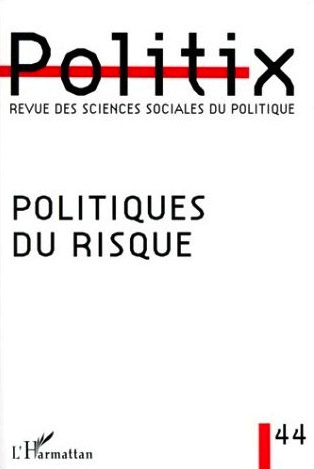 |
LEMIEUX C., BARTHE Y., 1998, «Les risques collectifs sous le regard des sciences du politique. Nouveaux chantiers, vieilles questions.» ,
Politix, (44), p.7-28.
Accès au texte »
En France comme d’autres nations occidentales, l’émergence depuis une vingtaine d’années de la notion de « risques » dans le champ de préoccupation des pouvoirs publics, des industriels et des chercheurs correspond à l’impossibilité grandissante de maintenir les « profanes », de plus en plus nombreux à se mobiliser sur ces questions, à l’écart des prises des prises de décision et des schémas d'action publique. Cette crise de la gestion technocratique des choix et des activités technologiques, et les tentatives de réponses institutionnelles qui y sont apportées, constituent pour les sciences sociales du politique l’occasion derevisiter ànouveaux frais trois questions canoniques : celle du fonctionnement de l’État, celle des mécanismes d’accès à l’espace public, celle, enfin, des processus de légitimation et de délégitimation.
Risks in the Perspective of Social and Political Sciences. New Fields, Old Questions.
Abstract : Since the beginning of the 1980’s, in France like in several western nations, the emergence of the notion of “risks” in the reflections of the authorities, industrialists and researchers is linked to the growing impossibility to keep in check ordinary people and non-specialists out of decision-making processes and framing of public actions on this matter. The resulting crisis of technocratic management of technological choices and activities, as the consecutive attempts of institutional adaptation, offers to social and political sciences an opportunity to deeply reconsider three canonic questions: the functioning of the State, the mechanisms of access to public space, and the processes of legitimization and delegitimization. |
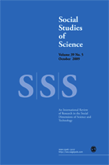 |
MALLARD A., 1998, «Compare, Standardize, and Settle Agreement: on Some Usual Metrological Problems» ,
Social Studies of Science, 28 (4), p.571-601. |
| |
MALLARD A., 1998, «Une anthropologie des sciences pour quoi faire ?» ,
Bulletin d'information des cadres EDF-GDF, |
| |
MALLARD A., RÉMY E., 1998, «Consommateurs, experts et associations : la qualité de l’eau en débat» ,
CSI/Agence de l'eau Seine-Normandie. |
| |
MÉADEL C., 1998, «Une brèche dans la boîte de Pandore : 1965, le nouvel âge de la télévision» ,
Web Journal of French Media Studies, 1
Accès au texte »
1965 apparaît comme une double rupture dans l'histoire de la télévision française : rupture dans son rapport au politique mais rupture aussi dans son organisation. L'administration est toute neuve puisque l'ORTF vit sa première année d'existence; plus important peut-être encore, la deuxième chaîne vient de naître, un an plus tôt, et, même si seulement 15% de la population peut la recevoir, elle joue un rôle crucial dans la définition de la programmation, dans une logique de concertation et de complémentarité entre les deux chaînes. Le couple télévision-politique, formé dès les prémices du média, sort, lui, transformé de la première grande campagne électorale présidentielle de son histoire. |
| |
MÉADEL C., 1998, «Recension bibliographique à propos de la messagerie électronique» ,
Paris, CSI-CNET. |
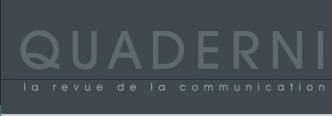 |
MÉADEL C., 1998, «De l’émergence d’un outil de quantification» ,
Quaderni, (35). |
| |
MÉADEL C., PROULX S., 1998, «Usager en chiffres, usager en actes» ,
in PROULX S., (ed.), Accusé de Réception, Laval, Presses de l'université Laval, p.79-94.
Accès au texte »
Comment rendre compte de la diversité des approches de la communication sur le vieux problème des usagers ? La question est abordée en confrontant deux types de modèles : 1/ Le modèle sociographique construit en priorité par les analyses quantitatives mais que l'on retrouve dans d'autres approches; 2/ Le modèle de l'usager-braconnier porté par Michel de Certeau. L'analyse est organisée en cinq questions. 1/ Quelle définition le modèle propose-t-il de l'usager des médias ou du média ? 2/ Comment obtient-on l'usager ? Par quelles méthodologies ? 3/ Quelle est la dynamique des usagers, qu'est ce qui les transforme, comment prend-on en compte les modifications des usagers, de leurs pratiques ? 4/ De quelles compétences dote-on les acteurs ? 5/ Quelles sont les formes d'organisation (internes et externes) requises dans la définition que se donne le modèle de l'usager ? L'article montre que dans les deux modèles, l'usage des médias est décrit comme un face-à-face entre une offre de programmes et des utilisateurs ; ces modèles sont bipolaires et reprennent l'opposition dichotomique entre offre et demande. L'article esquisse en conclusion un troisième modèle qui récuse la coupure entre offre et demande, pour en faire un produit du travail des acteurs. |
| |
MÉADEL C., RABEHARISOA V., 1998, «Les épreuves du goût, ou comment le jus d’orange se fait aimer» ,
EASST 98, Centre de sociologie de l'innovation. 1998. |
| |
MÉADEL C., RABEHARISOA V., AKRICH M., 1998, «L’utilisation de nouveaux médias internet dans le domaine de la santé: vers quels nouveaux collectifs?» ,
CSI Ecole des Mines- CNRS. |
 |
MUSTAR P., 1998, Les Chiffres clés de la science et de la technologie ,
Paris, Economica. |
| |
MUSTAR P., 1998, «Les transformations du système de recherche français dans les années quatre-vingt.» ,
Annales des Mines, (février 1998), p.16-21.
Les modes d’organisation de la recherche et de la technologie ont largement évolué, en France, depuis le début des années 1980. L’image trop simpliste d’un modèle colbertiste a vécu. Ne pas prendre en compte ces évolutions, c’est s’interdire de penser les nécessaires adaptations des politiques de recherche à l’évolution des technologies, aux changements du contexte international, au poids croissant d’acteurs tels les régions et l’Union européenne, aux problèmes collectifs liés à la santé, à l’environnement ou à l’emploi... |
 |
MUSTAR P., 1998, «Partnerships, configurations and dynamics in the creation and development of SMEs by researchers» ,
Industry and Higher Education, p.217 à 221. |
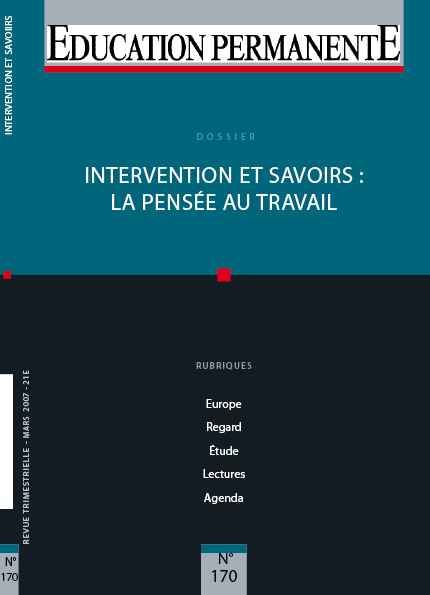 |
MUSTAR P., 1998, «Peut-on former à l’innovation ?» ,
Education permanente, "L'innovation en Question" -1 (134), p.151-157.
Les enjeux théoriques de ceux qui tentent de comprendre comment naissent les innovations, pourquoi certaines échouent et pourquoi d’autres réussissent, rejoignent les questions pratiques que se posent de nombreux responsables de l’enseignement tant dans les universités que dans les écoles d’ingénieurs. Mais peut-on enseigner « l’innovation » ? Et si oui, comment ? Pour répondre à ces questions, par un détour qui n’en est pas un, l’auteur présente les acquis les plus récents des travaux sur le processus d’innovation technologique et tente de repérer les compétences aujourd’hui nécessaires aux ingénieurs et aux techniciens engagés dans les processus d’innovation. Son propos est de montrer que ces compétences ne doivent pas être confinées à quelques cours spécifiques mais que « l’esprit d’innovation » doit traverser l’ensemble des enseignements dispensés dans les formations d’ingénieurs des écoles et des universités. |
| |
MUSTAR P., 1998, «Tableau de la R&D en Midi-Pyrénées» ,
La Recherche, (318), p.48-49. |
| |
PASVEER B., AKRICH M., 1998, «Hoe lichamen circuleren» ,
Tijdschrift voor Genderstudies, (3), p.47- 55. |
| |
RABEHARISOA V., 1998, «Circulation des concepts et des objets : la fabrication d’un logiciel» ,
Le Genre Humain, hiver (Interdisciplinarités), p.171-196. |
| |
RABEHARISOA V., 1998, «Le rôle du capital-risque dans le développement des petites entreprises innovantes.» ,
Réalités Industrielles -Annales des Mines, (février), p.86-90.
Entre le moment où ils s’engagent dans le capital d’une entreprise et celui où ils liquident leurs parts, les capital-risqueurs vont participer activement à l’orientation de l’entreprise, allant parfois jusqu’à infléchir sa trajectoire initiale, de façon à faire fructifier leur investissement. Une enquête menée dans la Silicon Valley montre comment l’exigence de bénéfice dont l’argent du capital-risque est assorti, se traduit par un engagement momentané des capital-risqueurs aux côtés des entrepreneurs. |
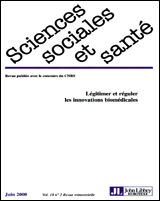 |
RABEHARISOA V., BONNET D., CALLON M., DE POUVOURVILLE G., 1998, «Les associations de malades: entre le marché, la science et la médecine. Avant-propos» ,
Sciences Sociales et Santé, 16/3p.5-15.
Cet article présente les premiers résultats d’un travail consacré au soutien que l’Association française contre les myopathies a apporté, depuis le début des années quatre-vingt, à la recherche clinique et biologique dans le domaine des maladies neuromusculaires. La participation active des malades et de leurs familles à la production des connaissances est mise en évidence, ainsi que leur capacité à encadrer de manière souple le travail des spécialistes. Cette forme originale de rapports entre malades, cliniciens et chercheurs correspond à un modèle d’apprentissage mutuel qui s’incarne dans ce qu’il est proposé d’appeler une organisation réflexive. |
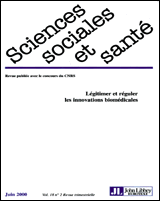 |
RABEHARISOA V., CALLON M., 1998, «L’implication des malades dans les activités de recherche soutenues par l’Association française contre les myopathies» ,
Sciences Sociales et Santé, 16/3p.41-66.
Cet article présente les premiers résultats d’un travail consacré au soutien que l’Association française contre les myopathies a apporté, depuis le début des années quatre-vingt, à la recherche clinique et biologique dans le domaine des maladies neuromusculaires. La participation active des malades et de leurs familles à la production des connaissances est mise en évidence, ainsi que leur capacité à encadrer de manière souple le travail des spécialistes. Cette forme originale de rapports entre malades, cliniciens et chercheurs correspond à un modèle d’apprentissage mutuel qui s’incarne dans ce qu’il est proposé d’appeler une organisation réflexive.
This article presents work in progress on support given by the French muscular dystrophies association (Association française contre les myopathies) to clinical and biological research related to neuromuscular illnesses since the beginning of the 1980s. Our preliminary findings show that people with these diseases and their families participate actively in the production of knowledge. They also have a remarkable capacity for negotiating with specialists about the orientations of research and practice. This original form of relationships between patients, clinicians and researchers suggests a model of mutual learning which is embodied in what the authors term a « reflexive organization ». |
| |
RÉMY E., JOLY P., LE PAPE Y., 1998, «Quand les scientifiques traquent les prions» ,
Annales des Mines, janvier (9), p.86-95. |
| |
YANEVA A., 1998, «The instruction for use : the hidden eye of the user» ,
EASST'98 General Conference, 1998. |
| |
CALLON, M., LA.,DO, P., MUSTAR, P., 1997, The Strategic Management of Research and Technology ,
Paris, Economica International.
The book provides a covering survey - almost all of the evaluations carried out in Europe over the last 10 years have been taken into account some how - to the current evaluation practices in the field of research and technology. The central question concerns how “those who commissions evaluations and their recipients influence what evaluations can determine and how this fits into decision-making processes”. The book consists of five parts of which the first is devoted to the various different models of evaluation and the four other sections are dedicated to the general models and items of evaluation practices. The main topics include 1) “value for money” i.e. economic benefit or socio-economic effects, 2) the structural transformations brought about n the research infrastructure of private enterprises, 3) managerial performance, 4) characterisation of the dynamic involved (e.g. how the programme has been able to mobilise certain actors and not others). In the end of the book Callon, Larédo, and Mustar develop the concept of “techno-economic network” to describe the current environment of research and development. |
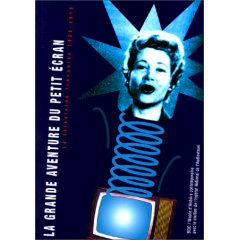 |
M&E.,ADEL, C.,CIL., BOURDON, J.,R&O.,ME., CHAUVEAU, A.,S., 1997, La grande aventure du petit écran. La télévision française 1935-1975 ,
Paris, BDIC. |
| |
AKRICH M., MÉADEL C., 1997, «De l’informatique comme outil d’organisation : le cas des fichiers policiers» ,
Imaging Uses, Adera-SEE-Irest. 1997. |
| |
AKRICH M., PASVEER B., 1997, «La contraction - De we» ,
Tijdschrift voor Gezondheid & Politiek, 2 (Mei 97), p.5-8. |
| |
BARTHE Y., 1997, «L’information et l’expérimentation comme modes de gouvernement : l’exemple de la gestion des déchets radioactifs à vie longue» ,
in GILBERT C., BOURDEAUX I., (ed.), Information, consultation, expérimentation : les activités et les formes d'organisation au sein des forums hybrides., Grenoble, CNRS-MRASH, p.102-125.
L'auteur revient sur les approches développées précédemment, à partir de ses recherches sur un dispositif public particulièrement original, celui retenu pour gérer le problème très controversé des déchets nucléaires. |
| |
BARTHE Y., 1997, «Incertitude temporelle et controverse territoriale. Expérimentation politique et scientifique dans la gestion des déchets radioactifs à vie longue» ,
Programme Environnement, Vie et Sociétés, Les temps de l'environnement, 1997. |
| |
BARTHE Y., 1997, «Compte rendu de lecture Les Hommes et les Machines de Nicolas Dodier» ,
Genèses, 28p.165-166. |
| |
BARTHE Y., GAUTIER C., VALLUY J., 1997, «Comment parle-t-on des générations futures ?» ,
Electricités et Sociétés, 27 (janvier), p.4-8. |
| |
BARTHE Y., LASCOUMES P., 1997, «Entre la banalisation, l’exception et l’expérimentation : l’évolution des débats politiques sur le nucléaire» ,
in TUBIANA M., PÉLICIER Y., (ed.), Atome et Société, Paris, Centre Antoine Beclère, p.149-165.. |
| |
CALLON M., 1997, «Irrésistible ascension et limites de la science» ,
in TUBIANA M., PÉLICIER Y., (ed.), Atome et Société, Paris, Centre Antoine Béclère, p.61-70. |
| |
CALLON M., 1997, «Recent Trends in French Institutions for Regional Innovation policies : An Appraisal» ,
Gonda, Tokyo, Industrial Research Center of Japan, |
| |
CALLON M., 1997, «Quelle place pour la science dans la dynamique économique ?» ,
Problèmes économiques, 2.543 (19 novembre 1997), p.6-12. |
| |
CALLON M., 1997, «Exploration des débordements et des cadrages des interactions : la dynamique de l’expérimentation collective dans les forums hybrides» ,
in GILBERT C., BOURDEAUX I., (ed.), Information, consultation, expérimentation : les activités et les formes d'organisation au sein des forums hybrides, Grenoble, CNRS-MRASH, p.57-98.
Callon, Michel reprend la question de l'expérimentation en l'envisageant comme un apprentissage collectif. Il s'attache aux pratiques, discursives notamment, qui permettent à des non-spécialistes d'avoir prise sur la pratique scientifique elle-même, à partir de ses recherches sur l'Association Française contre les Myopathies (AFM). |
| |
CALLON M., 1997, «Défense et illustration des Science Studies» ,
La Recherche, 299
Juin 1997 |
| |
CALLON M., 1997, «Recherche agronomique, innovations et société» ,
La recherche agronomique européenne dans le monde du 21ème siècle, Paris, INRA, p.312-315. |
| |
CALLON M., 1997, «Concevoir : modèle hiérarchique et modèle négocié» ,
in BONNET M., (ed.), L'élaboration des projets architecturaux et urbains en Europe, Paris, Plan Construction et Architecture, p.169-174.
Pour analyser la production de projets urbains, l'auteur note tout l'intérêt à différencier deux types de modèle de conception, l'un hiérarchique, l'autre négocié. L'analogie avec le domaine industriel s'avère être pertinent pour déterminer les caractéristiques de chaque modèle et ce qui les différencient : la linéarité du processus s'oppose à une production itérative ; le cloisonnement des compétences à leur ouverture ; la rigidité à l'inventivité ; l'information à la co-élaboration. Quelques implications sont ensuite abordées : le mode de coordination des acteurs dans ces deux situations de production ; la contractualisation ; la question de la communication puis celle de l'évaluation. L'auteur insiste sur la nécessité de ne pas dissocier la réflexion sur les processus de conception de celle sur les résultats obtenus. Ceci l'amène à discuter des principes qui guideraient les formes de coordination existantes dans les projets analysés (la représentation politique et la transaction marchande), domaine qui reste selon lui largement à défricher. Enfin la question des styles architecturaux et urbains est l'occasion de réfléchir sur les produits terminaux, notant que le style "pastel", expression du modèle négocié, a ses limites sur le plan de la symbolique urbaine alors que le star système, proche du modèle hiérarchique, serait porteur d'identification plus radicale. |
| |
CALLON M., 1997, «L’entreprise chef d’orchestre» ,
Alliage, p.14-15.
Mars 1997 |
| |
CALLON M., FORAY D., 1997, «Introduction : nouvelle économie de la science ou socio-économie de la recherche scientifique» ,
La Revue d'Economie industrielle, numéro spécial (79), p.13-35.
Accès au texte »
Le succès des expressions s'explique toujours par leur capacité à ramasser en une formule choc des travaux, des intérêts, des projets et des sensibilités jusqu'à là épars et dont les auteurs réalisent soudainement qu'ils ne sont pas sans rapport les uns avec les autres. À l'évidence ce choc a eu lieu : l'expression « nouvelle économie de la science » a été largement reprise. Tous ceux qui jusqu'à ce jour étudiaient, indépendamment les uns des autres, les politiques scientifiques, les mécanismes de financement de la recherche, l'impact de la recherche sur l'économie, les nouvelles formes d'organisation des rapports entre universités et entreprises, les effets de la propriété intellectuelle sur l'allocation des ressources, ou qui s'employaient à comparer l'institution scientifique à un vaste marché d'idées ou d'énoncés, prirent conscience de l'utilité potentielle d'un cadre théorique d'ensemble qui pourrait relier de manière intelligible leurs différents travaux. Cette expression redonne à la théorie économique un objet qu'elle s'était empressée d'oublier, une fois l'essentiel fait, c'est-à-dire une fois démontré le nécessaire soutien de la recherche académique par les pouvoirs publics. |
| |
CALLON M., LARÉDO P., 1997, «Le Palmarès des entreprises qui innovent» ,
La Recherche, 294p.22-28.
In a follow-up to a 1995 survey of French businesses by La Tribune-Desfosses/La Recherche, a list is presented of firms outstanding for their balanced integration of technological & scientific research & development (R&D) with open academic research centers & close laboratory-client-producer relationships. It is noted that many winners of the 1995 nominations are included in the 1996 edition. A profile of the typical winner for 1996 is presented. While R&D is important to business, only 33% of firms surveyed provide for it in their general budgets. More than 90% of businesses have peripheral laboratories, & 66% benefit from a central lab. Other features of these innovative businesses are discussed. |
| |
CALLON M., LARÉDO P., RABEHARISOA V., 1997, «Que signifie innover dans les services? Une triple rupture avec le modèle de l’innovation industrielle.» ,
La Recherche, 294p.34-36.
janvier |
 |
CALLON M., LATOUR B., 1997, «Tu ne calculeras pas ! Comment symétriser le don et le capital» ,
Revue du MAUSS, Le capitalisme aujourd'hui (9), p.45-70.
Argues that the fall of communism has allowed capitalism to be studied more realistically, so that the debate between liberalism & antiutilitarianism may be reformulated. Capitalism is described as one of many forms of market organization, & the distinction between the terms market & market economy is discussed. The calculating & optimizing agents associated with different types of economies are addressed, using the idea of formatting. Means of limiting exchange excesses are investigated, a critique of antiutilitarianism is presented, & how formatting relates to notions of gift & exchange is examined. It is contended that capitalism may be undermined if people cease believing in it. Ways that science & technology may contribute to this end by following the example of economic anthropology are suggested. |
 |
CALLON M., LAW J., 1997, «Agency and the Hybrid Collectif» ,
in HERRNSTEIN B., PLONITSKY A., (ed.), Mathematics, Science and Postclassical Theory, Duke, Duke University Press, p.481-507.
Could non-humans ever be agents? That is the topic of this paper. It's a hot topic. One that exercises philosophers, sociobiologists, and theologians. Not to mention sociologists, science-fiction writers, and those who work in science, technology, and society ( STS). It's a hot topic because it sometimes seems that there are all sorts of non-human entities, such as cyborgs, intelligent machines, genes, and demons loose in the world. Along with ozone holes, market forces, discourses, the subconscious, and the unnameable Other. And, or so many claim, such non-human actors seem to be multiplying. For if angels and demons are on the decline in the relatively secularized West, then perhaps robocops and hidden psychological agendas -- not to mention unnameable Others -- are on the increase. |
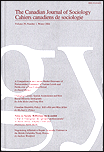 |
CALLON M., LAW J., 1997, «After the Individual in Society : Lessons on Collectivity from Science, Technology and Society» ,
Canadian Journal of Sociology, 1
Les sciences sociales ont inventé toute une série de concepts pour surmonter l'opposition entre action individuelle et collective. Un des apports de l'anthropologie des sciences et des techniques (AST) est de montrer que cette opposition ne constitue qu'une des configurations l'AST a élaboré quatre principes. Le premier affirme le caractère hétérogène du social. Le deuxième conduit à considérer que toute entité est une réalité assimilable au réseau des éléments hétérogènes. Le troisième affirme que les entités sont à géométrie variable et qu'elles réorientent l'action dans des directions imprévisibles. Le quatrième propose que tout arrangement social stabilisé est à la fois un point (un individu) et un réseau (un collectif). L'analyse sociologique, si elle veut surmonter l'opposition entre individualisme et holisme, doit donc se donner por objet l'étude de ces différentes configurations hybrides.
Abstract : The social sciences have devised a series of strategies to overcome the individual-collective action division. Examples from science, technology, & society are used to undergird the idea that the individual-collective distinction is only one possible configuration for action & its distribution. To investigate other possible configurations, four principles are discussed: (1) the social is heterogeneous in character; (2) all entities are networks of heterogeneous elements; (3) these networks are both variable in geometry &, in principle, unpredictable; & (4) every stable social arrangement is simultaneously a point (an individual) & a network (a collective). If sociological analysis is to overcome the individualism-holism division, it should attend to the range of hybrid configurations. |
| |
CALLON M., RABEHARISOA V., 1997, «L’invention d’une nouvelle forme de mobilisation de la recherche : le cas de l’Association Française contre les Myopathies.» ,
CSI-AFM. |
| |
DE LAAT B., 1997, «Reversing Lifestyles. Future energy technologies as a focus for analysing future energy behaviour.» ,
Sustainable Energy Opportunities for a Greater Europe, Danish Energy Agency. 1997. |
| |
DE LAAT B., 1997, «Telematics Application Programme» ,
CEE/DG XIII. |
| |
DE LAAT B., 1997, «Sociology for Energy Modelling and the Sociology of Energy Models - reflections on a Workshop» ,
in GIOVANNINI B., BARANZINI A., (ed.), Energy modelling beyond economics and technology, Genève, Centre Universitaire d'étude des problèmes de l'énergie, Université de Genève, p.23-33. |
| |
DE LAAT B., CALLON M., LARÉDO P., 1997, «Innovation in Services as an Epitome of Complexity : How Network Analysis can disentangle it» ,
7th International Forum on Technology Management, 1997. |
| |
DE LAAT B., CLEMENT D., 1997, «The Position of Technology Institutes in Europe, Case study France, Technology Area "Energy"» ,
ADEME-TNO-AWT. |
| |
DE LAAT B., PENAN H., 1997, «Une analyse de la littérature récente sur la gestion des ressources technologiques» ,
Management, Technologie, Innovation, 1 (1), p.87-97. |
| |
DIDIER E., 1997, «De l’«exclusion» à l’exclusion» ,
Politix, 34 (2ème trim.), p.5-28. |
| |
DUBUISSON S., 1997, «Stabilisation et réactualisation des connaissances sur la demande dans la dynamique productive» ,
in GUILHON B., ZIMMERMANN J., (ed.), Economie de la connaissance des organisations, L'Harmattan, p.310-331. |
| |
DUBUISSON S., 1997, «La construction de la demande» ,
9eme conference Internationale SASE, 1997. |
| |
DUBUISSON S., 1997, «Existe-t-il une problématique de la normalisation propre aux activités de service?» ,
in SEGRESTIN D., HENRY E., REVERDY T., (ed.), Le dispositif francais de normalisation dans la compétition économique, Paris, CGP, p.42-46. |
| |
DUBUISSON S., HENNION A., RABEHARISOA V., 1997, «Passages et arrêts en gare. Les régimes de présence en situation de passage» ,
Paris, MELT DAU Plan Urbain. |
| |
DURET M., LATOUR B., MALLARD A., MARIÉ M., SAVY M., FOURNIAU J., DENANT-BOEMONT L., 1997, «ERANIT phase 1. Evaluation des Réseaux socio-techniques et économiques. Application aux Nouvelles technologies Innovantes du Transport.» ,
Paris, DRAST/Technicatome/CSI/LATTS/INRETS/LET. |
| |
GOMART E., 1997, «La substitution comme épreuve expérimentale : un point de vue de la sociologie des sciences» ,
Revue de l'Association nationale des Intervenants en toxicomanie "Interventions", 60p.31-35.
Juillet 1997 |
| |
GOMART E., 1997, «La substitution comme épreuve expérimentale» ,
Réunion annuelle de l'Association nationale des Intervenants en Toxicomanie, 1997. |
| |
GOMART E., 1997, «Permutations of Drugs» ,
Society for the Social Studies of Science, 1997. |
| |
GOMART E., 1997, «L’hypothèse originale de la substitution» ,
Toxicomanies, Hépatites, Sida, 1997. |
| |
HENNION A., 1997, «Le Baroque, un goût si moderne...» ,
in BOREL F., GONSETH M., (ed.), Pom, pom, pom, pom, Neuchâtel, Musée d’Ethnographie Neuchâtel, p.21-38. |
| |
HENNION A., 1997, «La passion musicale. Une sociologie de l’amateur» ,
le Journal de la CMF, p.13-15.
473 |
 |
HENNION A., 1997, «La médiation ou le retour du refoulé» ,
in FRANÇOIS J., (ed.), Enseigner la musique, Lyon, CEFEDEM, Rhône-Alpes, p.9-26. |
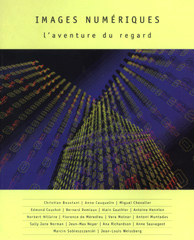 |
HENNION A., 1997, «La musicalisation des arts plastiques» ,
Images numériques, Rennes, Presses universitaires de Rennes, p.147-151.
Accès au texte »
L’informatisation et la numérisation parallèles des éléments de base de l’image et du son ne servent pas seulement à produire de nouvelles formes d’art. Elles offrent aussi la possibilité de mieux comprendre le statut des formes antérieures, et de penser autrement les rapports entre les arts. A partir de la mobilité et des passages qu’introduit la possibilité nouvelle de traiter ensemble des sons et des images, il peut être opportun de revenir sur l’évolution croisée de la musique et des arts plastiques au fur et à mesure stabilisation des objets produits. |
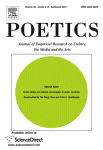 |
HENNION A., 1997, «Baroque and Rock : Mediators and Music, Musical Taste» ,
Poetics, 24 (juillet), p.415-435.
Accès au texte »
Sociologists have focused on the human components of the art production system (professions, market, institutions) and have deliberately ignored the question of the aesthetic value of the works. The paper tries to show how sociology can talk of “music itself”, if not directly in terms of aesthetic content or social authenticity, in terms of the way in which, by rejecting some mediators and promoting others, both music and its social meaning are collectively constructed and “inscripted” into material devices. Focusing on the controversies concerning mediums gives an empirical insight into the principles actors adopt to define the “authenticity” of their music. I look at the impact such human and non-human intermediaries as the types of instruments used and the way performances are staged have on music produced in the field of the Baroque “revival” in France, with a comparison with rock and rap. |
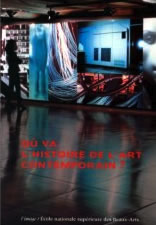 |
HENNION A., 1997, «La sociologie est-elle définitivement allergique au génie ? Pour un programme constructiviste fort en sociologie de l’art» ,
in BERTRAND-DORLÉAC L., GERVEREAU L., GUILBAUT S., MONNIER G., (ed.), Où va l'histoire de l'art contemporain ?, Paris, L'Image et l'Ecole Nationale des Beaux-Arts, p.230-239. |
| |
HENNION A., MÉADEL C., 1997, «Les ouvriers du désir. Du produit au consommateur, la médiation publicitaire» ,
in BEAUD P., FLICHY P., PASQUIER D., QUÉRÉ L., (ed.), Sciences de la communication, Paris, Réseaux-Cnet, p.105-130.
Accès au texte »
D'où les objets tirent-ils leur pouvoir ? Qu'est-ce qui nous les fait désirer ? Il n'est guère de question plus fondamentale. Elle réunit autour d'elle les interrogations les plus tenaces de la métaphysique et de la religion comme les discours les plus superficiels sur la société de consommation. Elle relie les morales ascétiques anciennes du renoncement et la condamnation marxiste du capitalisme de la prolifération. Elle fait ricaner de l'American Way of Life et de la société du paraître au nom de vraies valeurs, ou elle alimente la critique moderne de tous les objets ramenés à l'arbitraire du signe distinctif. Cette double question sur le sujet et l'objet du désir a ses professionnels. Quelles réponses lui apportent ceux qui sont payés, budget après budget, pour que des produits offerts sur un marché deviennent les objets d'une demande des consommateurs ? Que peut nous dire la publicité si on la prend comme analyseur pratique de ce que les philosophes ont posé comme pierre angulaire de leurs édifices théoriques les plus complexes : la relation entre le sujet et l'objet ? Le propos de ce texte n'est pas du tout de faire la philosophie de la publicité, au sens où on lui expliciterait le modèle théorique sur lequel elle fonctionnerait à son insu. Le couple sujet-objet n'est pas le postulat premier posé sur la table rase du philosophe pour lui permettre de reconstruire le monde, mais le résultat du travail de construction d'ouvriers qui, comme les publicitaires, disparaissent une fois l'édifice achevé. L'analyse du travail des publicitaires nous intéresse comme accès expérimental à la compréhension des mécanismes du désir. |
| |
HENNION A., RABEHARISOA V., DUBUISSON S., 1997, «La gare en action : border son temps, flotter, se réengager» ,
Actes des séminaires "Les Lieux-Mouvements de la ville", 3 mai, 14 juin et 20 octobre 1996, Paris, Plan Urbain/DRAST/RATP/SNCF, |
| |
HERPIN N., KARPIK L., 1997, «Le divorce est le principal motif pour lequel les particuliers consultent un avocat» ,
Insee Premiere,
557 |
| |
KARPIK L., 1997, «Embeddedness et économie de la qualité» ,
Colloque Séminaire d'anthropologie économique, 1997. |
| |
KARPIK L., 1997, «Comment tracer son chemin entre l’Etat et la société civile» ,
Colloque de l'ADSA, Les figures de l'institution et de la norme, 1997. |
| |
KARPIK L., 1997, «Les Avocats entre la sociologie, l’histoire et l’économie politique» ,
Sociologie du travail, 1p.63-90. |
| |
KARPIK L., 1997, «L’avancée politique de la justice» ,
Le Débat, 97 (novembre-décembre), p.90-107. |
| |
KARPIK L., HALLIDAY T., 1997, Lawyers and the Rise of Western Political Liberalism ,
Oxford, Oxford University Press. |
| |
LARÉDO P., 1997, «The Networks promoted by the Framework Programme and the Questions they Raise about its Formulation and Implantation» ,
Conference on the Past and the Future of EU Research Funding, 1997. |
| |
LARÉDO P., 1997, «Networks and the EU Framework Programme: Whom do they Serve?» ,
in Practical Proposals for Industrial Policy in Europe, EUNIP Conference, 1997. |
| |
LARÉDO P., 1997, «Evaluation as a Learning Process in S &T Policy Making: The European Experience» ,
7th International Forum on Technology Management, 3-7 Novembre 97. 1997. |
| |
LARÉDO P., 1997, «Technological Programmes in the European Union» ,
in ETZKOWITZ H., LEYDESDORFF L., (ed.), Universities and the Global Knowledge Economy, London, Pinter, p.33-43. |
| |
LARÉDO P., 1997, «Evaluation in France : a Decade of Experience» ,
Policy Evaluation in Innovation and Technology : Toward Best Practices, OCDE. 1997. |
| |
LARÉDO P., 1997, «The French S&T Policy in Transition» ,
NISTEP International Workshop on Strategic Models for the Advancement of National R&D Systems, 1997. |
| |
LARÉDO P., 1997, «European Research Policy on Industrial Competitiveness» ,
in PAPON P., BARRÉ R., GIBBONS M., MADDOX J., MARTIN B., (ed.), Science in Tomorrow's Europe, Paris, Economica international, |
| |
LARÉDO P., 1997, «Le Métier de Chercheur à l’INRA» ,
Rapport du groupe de travail 'Carrières' à la DS SESAMES, 1997. |
 |
LARÉDO P., BARBIER R., 1997, L’Internalisation des déchets ,
Paris, Economica. |
| |
LARÉDO P., KAHANE B., 1997, «L’association française de lutte contre la mucoviscidose à un tournant : de l’intéressement des acteurs de la recherche à la structuration de leur intervention,» ,
Seminaire sur les associations de patients, 1997. |
| |
LATOUR B., 1997, «Politique locale et écologie pratique» ,
La Recherche, 297 |
| |
LATOUR B., 1997, «Socrate’s and Callicles’s Settlement or the Invention of the Impossible Body Politic» ,
Configurations, (2), p.189-240. |
| |
LATOUR B., 1997, «A Few Steps toward the Anthropology of the Iconoclastic Gesture» ,
Science in Context, 10 (1), p.63-83. |
| |
LATOUR B., 1997, «L’histoire des sciences a-t-elle un sens ?» ,
La Recherche, 303 |
| |
LATOUR B., 1997, «Eloge du relativisme» ,
La Recherche, 304 |
| |
LATOUR B., 1997, «Crise des valeurs? Non, crise des faits!» ,
Ethique et Environnement, La Documentation Française. 1997. |
| |
LATOUR B., 1997, A Vida de laboratorio. A Produçao dos Fatos Cientificos ,
Sao Paolo, |
| |
LATOUR B., 1997, «Médias et controverse scientifique» ,
La Recherche, 302 |
| |
LATOUR B., 1997, «La fin de de la science ?» ,
La Recherche, 294
Janvier |
| |
LATOUR B., 1997, «Contre la réactin brune !» ,
La Recherche, 299 |
| |
LATOUR B., 1997, «On ne peut rien contre la fatalité des faits» ,
La pensée confisquée : quinze idées reçues qui bloquent le débat public., Paris, La Découverte, p.107-122. |
| |
LATOUR B., 1997, «Happy birthday to you HAL !» ,
La Recherche, 298 |
| |
LATOUR B., 1997, «Visible et invisible en science» ,
La Recherche, 295 |
| |
LATOUR B., 1997, «Des sujets récalcitrants» ,
La Recherche, 301 |
| |
LATOUR B., 1997, «Trains of Thoughts, Piaget, the Formalism and the Fifth Dimension» ,
Common Knowledge, Winter 97 (3), p.170-191. |
| |
LATOUR B., 1997, «Stenger’s Shibboletth (foreword)» ,
Power and Invention, Minneapolis, University of Minnesota Press, |
| |
LATOUR B., POWERS R., 1997, «Two Writers Face One Turing Test : A Dialogue in Honor of HAL VL -?» ,
Common Knowledge, |
| |
LE BOURHIS J., LASCOUMES P., 1997, Administrer les possibles. La réforme de l’administration territoriale de l’environnement ,
Paris, L’Harmattan. |
| |
MALLARD A., 1997, «Analyse du travail d’un comité de normalisation : la révision de la norme ISO 3930» ,
Enjeux scientifiques et industriels de la normalisation, 1997. |
| |
MALLARD A., RABEHARISOA V., 1997, «Doing Fieldwork. On Some Methodological Rules» ,
Communication au Colloque "Actor Network and After", Keele University, UK, 11-13 juillet 1997. |
| |
MÉADEL C., 1997, «De la critique des médias comme exercice historique» ,
Vingtième Siècle, 55 (1), p.148-150.
Accès au texte » |
| |
MÉADEL C., 1997, «Nouveaux formats et échanges radiophoniques» ,
in ALMEIDA F., (ed.), Les médias en question, Paris, Seli Arslan, p.121-131.
Accès au texte »
Face à la question posée par cet ouvrage “quels enjeux pour la critique des médias ?”, le cas des radios privées paraissait exemplaire. Leur critique en effet aisée. Pour beaucoup, la cause est entendue : les nouvelles radios, nées de la libéralisation des ondes, dans la mouvance des mouvements des années 70 ont gâché les objectifs de communication sociale et d’expression locale qui leurs étaient assignés. Certes le paysage radiophonique s’est considérablement transformé en moins de vingt ans, la petite dizaine de stations audibles en France a été multipliée par 200, de nouveaux formats se sont développés, des communautés religieuses, nationales, régionales ont accès librement au micro. Ces radios ne sont pas devenus des instruments aux mains d’un pouvoir politique, mais, loin des craintes d’anarchie sociale qu’elles avaient suscitées, elles sont au contraire rentrées pour la plupart dans un modèle d’organisation économique qui en fait des entreprises comme les autres. Les dysfonctionnements sont nombreux (je parle toujours au nom de cette critique collective -probablement un peu projective- qui s’exprime dans les médias eux-mêmes), les dysfonctionnements sont donc nombreux : différends entre les réseaux, querelles des associations mariées souvent sans amour dans une fréquence commune, rachats nombreux des indépendantes par les grandes stations nationales, dérapages non contrôlés des propos, inintérêt des programmes, vente à l’encan des fréquences… la liste est longue. Je voudrais d’abord m’arrêter sur les éléments qui viennent nourrir cette critique en donnant quelques éléments sur l’organisation présente des radios privées puis ensuite essayer de comprendre les préalables sur lesquels reposent cette rhétorique critique, sur laquelle il me semble que les sciences sociales doivent s’interroger. |
| |
MÉADEL C., 1997, «Radio and its audiences» ,
The Quest for Radio Quality, Naple, RAI, p.19-31. |
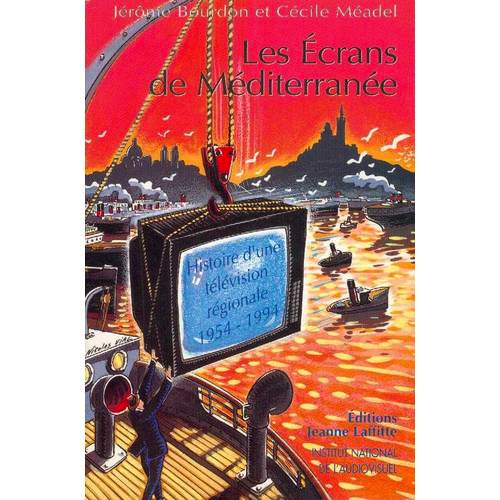 |
MÉADEL C., BOURDON J., 1997, «Un’identità introvabile. La televisione regionale in Francia» ,
Memoria e Ricerca, 10 (dicembre), p.95-106.
Accès au texte »
A l'issue d'une recherche sur une des plus anciennes stations régionales françaises, sise à Marseille et née en 1954, cet article entend évoquer plus généralement les relations entre l'identité régionale et la télévision. Cette notion d'identité régionale est en effet largement mobilisée par les acteurs de ces réseaux, et apparaît comme une notion opératoire en dépit de son caractère polysémique, de son espace pluriel, voire incohérent. L'identité dite régionale s'est définie ici principalement par défaut, par différenciation face à un centre vécu comme lointain et despote, face à une télévision porteuse avant tout du fait national. |
| |
MÉADEL C., CALLON M., DUBUISSON S., GOMART E., DE LAAT B., LARÉDO P., RABEHARISOA V., MÉLARD F., MUSTAR P., 1997, «Des innovations à l’INRA, entre deux modèles.» ,
INRA-CSI. |
| |
MUSTAR P., 1997, «Le imprese Hi-Tech dei ricercatori» ,
Ricerca e Innovazione. Bimestrale di scienza e tecnologie innovative, Bimestre II-III (49), p.20-24. |
| |
MUSTAR P., 1997, «The Dynamics of High-growth SMEs in France. An Analysis of the manufacturing industry during the 1985-1994 period» ,
OECD, 1997. |
| |
MUSTAR P., 1997, «Le transfert de A à Z» ,
Courrier de l'ANVAR, p.8-23.
108 |
 |
MUSTAR P., 1997, «Recherche, innovation et création d’entreprises» ,
in JOFFRE P., SIMON Y., (ed.), L'encyclopédie de la gestion. Tome 3, Paris, Economica, p.2817-2829. |
| |
MUSTAR P., 1997, «Le succès entrepreneurial des chercheurs français» ,
Les Echos, p.5-6. |
| |
MUSTAR P., 1997, «How French Academics create High Tech Companies : Conditions of Success and Failure of this Form of Relation between Science and Market» ,
Science and Public Policy, 24 (1), p.37-43. |
| |
MUSTAR P., 1997, Tableau de bord de la recherche régionale en Provence-Alpes-Côte d’Azur ,
Marseille, Jeanne Laffitte.
Etude réalisée pour la région Provence-Alpes-Côte d'Azur sur la caractérisation stratégique du potentiel scientifique et technique de la région |
| |
MUSTAR P., 1997, «Annuaire des laboratoires publics de la région Provence-Alpes-Côte d’Azur» ,
CSI-Conseil régional PACA. |
 |
PATERSON F., 1997, «Solliciter l’inconcevable ou le consentement des morts. Prélèvement d’organes, formes de circulation des greffons et normes de compétence» ,
Sciences Sociales et Santé, 15 (1), p.35-74. |
| |
PENAN H., MIGNOT H., 1997, «Négociation des normes contractuelles : évaluation du risque normatif et choix rationnels» ,
Revue française de gestion, 112 (mars). |
| |
RABEHARISOA V., 1997, «Science, politique et grand public. La médiatisation du risque climatique» ,
Sciences de la société, (41), p.19-39. |
| |
RABEHARISOA V., HENNION A., DUBUISSON S., DIDIER E., 1997, Passages et arrêts en gare. Les régimes de présence en situation de passage. ,
Paris, RATP. |
| |
RÉMY E., 1997, «Compte-rendu de lecture de l’ouvrage de F. Reumaux "La Veuve Noire"» ,
Ethnologie Française, tome XXVII (2 avril-juin), p.250-251. |
| |
RÉMY E., 1997, «Comment dépasser l’alternative risque réel/risque perçu. L’exemple de la controverse sur les champs électromagnétiques» ,
Gérer et comprendre, (janvier 97), p.27-34. |
| |
RÉMY E., 1997, «Des mesures agri-environnementales à Natura 2000 : approche comparée de la méthode d’analyse.» ,
Colloque d'Aussois, 1997 septembre 10. |
| |
RÉMY E., BARTHE Y., 1997, «Comment organiser la "concertation" avec les citoyens dans les controverses technologiques publiques? Deux cas : le débat sur l’implantation de lignes à haute tension et la gestion des déchets radio-actifs à vie longue.» ,
Colloque JIES XIX, 1997. |
| |
RÉMY E., BARTHE Y., LE BOURHIS J., 1997, «Communication in public policy» ,
Information policy and information campaigns as tools for improved urban air quality, 1997. |
| |
RÉMY E., LARÉDO P., 1997, «Si vous voulez faire quelque chose pour l’environnement, supprimez les camions, il faut faire du rail-route, ce n’est pas de la science, trente-deux personnalités décrivent l’environnement de demain» ,
Environmental Foresight, |
| |
M&E.,ADEL, C.,CIL., RABEHARISOA, V., 1996, Représenter, Hybrider, Coordonner ,
Paris, CSI-Ecole des mines de Paris. |
| |
AKRICH M., 1996, «Birth Configuration in France and the Netherlands, Competences, Actions and Technologies» ,
1996. |
| |
AKRICH M., 1996, «De la conception à la naissance» ,
Echanges santé-social, Juillet 96 (82), p.54-55. |
| |
AKRICH M., 1996, «Le médicament comme objet technique» ,
Revue internationale de Psychopathologie, (21), p.135-158.
Accès au texte »
Envisager le médicament comme objet technique, c'est restituer toutes ces opérations qui, de la conception à l'utilisation, mettent en relation contenus techniques, dispositions matérielles, usages, formes de relations sociales, organisations... avec ses spécificités, vers ces moments préalables. Cette présentation est scindée en trois parties : dans les deux premières, nous nous intéressons à la manière dont la forme matérielle du médicament peut être mise en relation avec le contexte d'usage du médicament, c'est-à-dire prédétermine les utilisations possibles, souhaitées ou au contraire prohibées et désigne certaines caractéristiques de l'environnement supposé de l'utilisateur, voire des compétences mêmes de cet utilisateur. La première partie seestra consacrée à la notice qui prolonge en partie la consultation médicale et l'interaction avec le pharmacien en proposant de façon explicite une définition du médicament et de ses usages ; puis nous considérons les formes galéniques qui se trouvent a priori au point d'intersection entre des contraintes médicales - sous quelle forme le médicament peut-il être le plus efficace d'un point de vue biochimique ? - et des contraintes d'usage - sous quelle forme est-il le mieux accepté par le patient ? Dans une troisième partie, nous adoptons un point de vue plus centré sur l'usage proprement dit en envisageant le médicament comme geste technique : nous nous intéressons aux formes de coordination avec soi-même et avec autrui que suppose en pratique la prise de médicaments. |
| |
AKRICH M., HENNION A., MALLARD A., RABEHARISOA V., RÉMY E., 1996, «Recherche sur l’"acceptabilité sociale" de la maîtrise de l’énergie. Mémoire de terrain et notes d’orientation.» ,
ADEME-EDF-CSI. |
| |
AKRICH M., MÉADEL C., 1996, «Coordination et organisation. L’informatique aux prises avec la police» ,
in MÉADEL C., RABEHARISOA V., (ed.), Représenter, Hybrider, Coordonner, Paris, Ecole des mines de Paris, p.3-14.
Accès au texte »
En quoi les technologies transforment-elles le travail des policiers ? L'introduction de nouveaux outils, en particulier liés à l'informatique, a suscité un certain nombre de travaux qui pointent essentiellement sur deux types d'effets: la gestion de l'organisation du travail d'une part, la construction, le rôle et l'utilisation de l'information d'autre part. Ces travaux s'intéressent généralement à de "grands" projets, comme ceux qui visent la constitution de fichiers d'infractions et de personnes. Dans cette présentation, nous nous intéressons à un outil "modeste" et rigide, la main courante informatisée (MCI), et nous montrons comment, pour comprendre les effets d'une informatisation, il est nécessaire de prendre en compte les capacités d'innovation des utilisateurs: en effet, bien que peu adaptable, la MCI a utilisé de manière très différente dans les différentes implantations sur lesquelles a porté l'enquête. Son appropriation rend visibles les différentes formes d'organisation du travail et les différentes définitions que se donnent les acteurs du travail policier, en même temps qu'elle contribue à transformer ces pratiques et ces représentations. |
| |
AKRICH M., MÉADEL C., 1996, «Polices et technologies informatiques. Nouveaux traitements de l’information et gestion de l’activité» ,
CSI-IHESI. |
| |
AKRICH M., MÉADEL C., 1996, «Nouveaux outils informatiques et pratiques professionnelles dans la police» ,
L’informatique et ses problématiques, Direction régionale de la police nationale. 1996. |
| |
AKRICH M., MÉADEL C., 1996, «Anthropologie de la télésurveillance en milieu privé» ,
CSI -Pirvilles CNRS et IHESI. |
| |
AKRICH M., PASVEER B., 1996, «Dispositifs de surveillance et configuration de l’action dans l’accouchement» ,
in MÉADEL C., RABEHARISOA V., (ed.), Représenter, Hybrider, Coordonner, Paris, Ecole des mines de Paris, p.15-24. |
| |
AKRICH M., PASVEER B., 1996, «Hoe kinderen geboren worden. Technieken van bevallen in Frankrijk en Nederland» ,
Kennis en Methode, XX (1), p.118-145. |
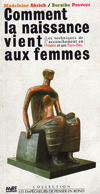 |
AKRICH M., PASVEER B., 1996, Comment la naissance vient aux femmes. Les techniques de l’accouchement en France et aux Pays-Bas ,
Paris, Les Empêcheurs de penser en rond.
Aux Pays-Bas, plus de la moitié des accouchements se font à domicile ou en polyclinique avec très peu de moyens techniques ; en France, 99,5 % des accouchements se déroulent en milieu hospitalier sous la présence continue d’un important dispositif technique : monitoring des contractions et du coeur du bébé, perfusion, etc. La manière dont la douleur est envisagée diffère tout autant d’un pays à l’autre : l’analgésie péridurale, utilisée dans 70% des accouchement en France, ne l’est que pour 15% des accouchements néerlandais. Et pourtant, les performances des deux pays en termes de mortalité et de morbidité périnatales sont tout à fait comparables. En cette fin de siècle, où la tendance est plutôt à la prolifération des techniques médicales, le contraste entre les deux pays ne pouvait manquer de susciter étonnement et curiosité. |
| |
BARBIER R., 1996, «Comment faire une sociologie des déchets ?» ,
in MÉADEL C., RABEHARISOA V., (ed.), Représenter, Hybrider, Coordonner, Paris, Ecole des mines de Paris, p.25-34. |
 |
BARBIER R., 1996, «Une Société au rendez-vous de ses déchets. L’internationalisation des déchets comme figure de la dynamique du collectif» ,
Thèse de doctorat, Paris, École Nationale Supérieure des Mines de Paris.
En parallèle avec une évolution importante du dispositif législatif et règlementaire, on assiste depuis le début des années 1990 à la multiplication des opérations de collecte sélective des déchets ménagers. Destinées à extraire certaines catégories précises de déchets - notamment les déchets d'emballages - et à leur construire de nouvelles carrières sociales Ces collectes imposent un véritable apprentissage collectif à tous ceux qui, usagers, techniciens, professionnels... doivent désormais réapprendre à vivre avec ces choses-là. Rompant avec les approches traditionnelles centrées sur la dénonciation du gaspillage ou sur l'étude critique de la société de consommation, notre démarche mobilise au contraire la douzaine d'opérations innovantes étudiées pour saisir sur le vif comment les collectifs se recomposent et s'ajustent à des formes nouvelles de présence et de circulation des choses. On montre ainsi comment les déchets ont du être nommés, mais aussi qualifiés, mesurés et insérés dans des classes d'équivalence nouvelles afin de pouvoir circuler dans ces institutions économiques originales que sont les collectes sélectives. Celles-ci recomposent l'identité et les qualités des acteurs qu'elles mettent en rapport, qu'il s'agisse de l'usager devenant producteur-trieur de déchets ou de l'industriel inventant de nouvelles modalités de prise en charge de ses usagers-clients ou de coopération avec ses partenaires. Enfin, après avoir montré l'insuffisance de l'étiologie classique du phénomène nimby, on montre que les conflits liés à l'implantation des centres de traitement sont les lieux ou s'inventent les médiations constitutives d'un espace public et les formes d'une citoyenneté étendus à la prise en charge des choses. Dans une perspective plus globale, cette histoire récente de la gestion des déchets est interpretée comme relevant d'un phénomène anthropologique général d'internalisation des choses, dont les processus de patrimonialisation fournissent par exemple une autre illustration. |
| |
BARBIER R., LARÉDO P., RÉMY E., 1996, «Une innovation totale, le processus d’internalisation des déchets à Lille» ,
CSI. |
| |
BIBARD L., 1996, «L’hybridum excellentia ou les classiques et l’idée de féminité» ,
in MÉADEL C., RABEHARISOA V., (ed.), Représenter, Hybrider, Coordonner, Paris, Ecole des mines de Paris, p.35-42. |
| |
CALLON M., 1996, «Le travail de la conception en architecture» ,
Situations. Les Cahiers de la recherche architecturale, 37 (1er trimestre), p.25-35. |
| |
CALLON M., 1996, «Introduction» ,
Sociologie du travail, XXXVIII (3), p.253-261. |
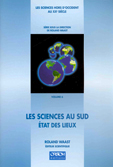 |
CALLON M., 1996, «La privatisation des sciences est-elle inéluctable ?» ,
in R. WAAST., (ed.), Les sciences hors d'occident au XXème siècle, Paris, Orstom, p.153-174.
Accès au texte »
La science devient une affaire d'intérêts privés, et quand l'État intervient c'est de plus en plus fréquemment pour s'allier à ces intérêts. Doit-on s'inquiéter ou se féliciter de cette évolution ? Faut-il ou non accepter la privatisation de la science? Faut-il défendre à tout prix l'idée d'une science accessible à tous, circulant librement? Ou au contraire ne convient-il pas de se réjouir en constatant que les entreprises, longtemps accusées de se désintéresser de la recherche, prennent ou reprennent conscience de son importance dans la compétition économique. Le devoir des gouvernements n'est-il pas, dans ces conditions, d'accompagner et de faciliter ce mouvement plutôt que de continuer à soutenir des scientifiques enfermés dans leur tour d'ivoire ? Ces questions devraient être abordées dans une perspective plus large que celle de la seule efficacité économique. La science constitue une composante importante de notre culture et nous supporterions difficilement qu'elle soit accaparée par des intérêts privés. Mais aujourd'hui mon propos sera plus limité. Je me contenterai d'examiner et de discuter les arguments économiques qui peuvent être avancés en faveur du soutien de la science par les pouvoirs publics. Faut-il et si oui pour quelles raisons- pour quelles raisons économiques - accepter que nos gouvernements consacrent une partie de leurs ressources, c'est-à-dire de nos ressources, à financer la recherche de base? |
| |
CALLON M., 1996, «Les enjeux économiques de la recherche publique» ,
La Vie des Sciences, 13p.11-24.
1 |
| |
CALLON M., 1996, «Le statut économique des activités de recherche et développement. Eléments pour une analyse dynamique des réseaux technico-économiques» ,
in MÉADEL C., RABEHARISOA V., (ed.), Représenter, Hybrider, Coordonner, Paris, Ecole des mines de Paris, p.43-60. |
| |
CALLON M., DUBUISSON S., RABEHARISOA V., 1996, «Les fondements culturels et organisationnels de l’innovation chez Sodexho.» ,
CSI. |
| |
CALLON M., LAW J., 1996, «L’irruption des non-humains dans les sciences humaines: quelques leçons tirées de la sociologie des sciences et techniques.» ,
in REYNAUD B., (ed.), Les limites de la rationalité, Paris, La Découverte, p.99-118. |
| |
CALLON M., RABEHARISOA V., 1996, «Dialogue entre spécialistes et non-spécialistes dans la détermination de la politique scientifique de l’AFM» ,
Colloque sur les maladies neuromusculaires, 1996. |
| |
CASSIER M., 1996, «Les règles de "bonne conduite" du projet Bridge sur les lipases. Appropriation et partage des connaissances dans un réseau coopératif» ,
in MÉADEL C., RABEHARISOA V., (ed.), Représenter, Hybrider, Coordonner, Paris, Ecole des mines de Paris, p.61-72. |
| |
CASSIER M., 1996, «Les contrats de recherche entre l’université et l’industrie : les arrangements pour la production des biens privés, des biens collectifs et des biens publics.» ,
Sociologie du travail, 3/96 (XXXVIII), p.377-390. |
| |
CHARVOLIN F., VEITL P., 1996, «L’esthétique et l’objectivité. Parti-pris esthétique et standardisation dans les usages administratifs de la photographie de paysage» ,
in MÉADEL C., RABEHARISOA V., (ed.), Représenter, Hybrider, Coordonner, Paris, Ecole des mines de Paris, p.73-76. |
| |
COURTIAL J., ROCHER Y., 1996, «L’analyse d’un collectif à travers l’exemple d’un domaine de recherche. Le modèle de la traduction généralisée dans les interactions sociales» ,
in MÉADEL C., RABEHARISOA V., (ed.), Représenter, Hybrider, Coordonner, Paris, Ecole des mines de Paris, p.77-89. |
| |
DE LAAT B., 1996, «Twee experimenten in het bestuderen van onderzoekspraktijken» ,
Kennis en methode, 20 (2), p.216-223. |
| |
DE LAAT B., 1996, «Technology foresight or hybrid forum?» ,
Quel environnement au XXIe siècle? Environnement, maîtrise du long terme et démocratie, 1996. |
| |
DE LAAT B., 1996, «Suivre les acteurs d’une main, les organiser de l’autre. L’adoption de la notion d’hybride par les acteurs eux-mêmes» ,
in MÉADEL C., RABEHARISOA V., (ed.), Représenter, Hybrider, Coordonner, Paris, Ecole des mines de Paris, p.129-138. |
| |
DE LAAT B., BREITENSTEIN A., CLÉMENT D., 1996, «Senser projects (Synergies betweenEuropean and National Strategies for energy RTD)» ,
ADEME. |
| |
DUBUISSON S., 1996, «Prestation et produit : des objets économiques toujours hybrides. Analyse de deux modalités de coordination économique» ,
in MÉADEL C., RABEHARISOA V., (ed.), Représenter, Hybrider, Coordonner, Paris, Ecole des mines de Paris, p.91-97. |
| |
DUBUISSON S., 1996, «Organizational learning through codification and adjustments : evidence from an activity of catering» ,
Conference on routinization, learning and the transfer of skills, 1996. |
| |
DUBUISSON S., 1996, «Le travail du "designer" comme construction d’un mode d’existence particulier pour les objets industriels» ,
Techniques et Culture, 27p.67-87. |
| |
DUBUISSON S., 1996, «Codification et prestation : deux moyens pour l’élaboration d’une mémoire de l’organisation. Le cas d’une activité de service» ,
Mémoire organisationnelle et dynamique innovatrice, 1996. |
 |
DUBUISSON S., 1996, «Codification et prestation dans les activités économiques. Analyse de deux modalités de coordination» ,
Thèse de doctorat, Paris, École Nationale Supérieure des Mines de Paris.
La thèse aborde la question de la coordination économique. La théorie de Bandard definit la notion comme une mise en équilibre de deux espaces autonomes, l'offre et la demande régules par des principes independamment lié à la coordination. L'hypothèse de travail consiste à considérer que l'offre et la demande ne préexistent pas à la coordination. Au contraire c’est elle qui les élabore et les met en relation selon des modalités spécifiques à la coordination sur la base d'un travail ethnographique jeux-activites. Une activite de service et la conception d'objets nouveaux ont été etudiées. Deux modes de coordination, à l'oeuvre dans l’une d'elles, ont été identifiés. Le premier, appelé codification, correspond à l'inscription de dispositions concernant l'offre et la demande. Dans des dispositifs durables et objectivés. Le second, appelé prestation, se réalise plutôt dans le cadre d'ajustements locaux et expérimentations supposant un engagement des acteurs. Le travail suggère que l'analyse de l’organisation de la firme fournit une lecture de la facon dont une firme construit son environnement et son marché. | |
| |
DUBUISSON S., 1996, «Codification et prestation : deux moyens pour l’élaboration d’une mémoire de l’organisation» ,
L’objet dans l’usage, Séminaire GRETS, Direction des Etudes et recherches d’EDF, MSH. 1996. |
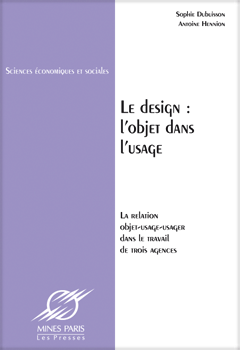 |
DUBUISSON S., HENNION A., 1996, Le Design : l’objet dans l’usage. La relation objet-usage-usager dans le travail de trois agences de design ,
Paris, Presses de l’Ecole des Mines.
L'étude du travail des designers prend place dans une interrogation générale, qui vise le travail de construction nécessaire pour que la situation de marché apparaisse. Les designers, obligés de réaliser physiquement l'objet et d'anticiper sur un marché futur, sont particulièrement intéressants pour qui veut comprendre les mécanismes complexes de l'incorporation de la demande dans les produits. Le design est pris dans des définitions divergentes. Mais les designers partagent une définition commune de leur travail : celle d'une articulation entre l'usager et l'objet. C'est à ce titre qu'ils ont été étudiés, comme sociologues pratiques de l'usage. Trois équipes de designers industriels, choisies pour la complémentarité de leur conception du design et de leur cadre de travail, ont été suivies sur le terrain. L'étude de leurs pratiques, de leurs modes d'organisation et des techniques de représentation utilisées a dégagé les modalités possibles d'une anticipation de l'usage. Par opposition au marketing, les designers sont soumis à une contrainte pressante : leur tâche de " réalisation " de l'objet souligne tout ce que l'objet comporte d'indéterminé par rapport à un cahier des charges idéal portant les desiderata de la demande. Cette indétermination impose la nécessaire condensation de ses dimensions, esthétiques, techniques, fonctionnelles, marchandes. C'est ce moment indécis où l'objet prend forme, qui refait surgir des esquisses la pluralité des solutions possibles, et l'indétermination structurelle de l'offre par rapport à la demande. |
| |
ESTADES J., JOLY P., MANGEMATIN V., 1996, «Dynamique des relations industrielles dans les laboratoires d’un grand organisme public de recherche: coordination, apprentissage, réputation et confiance.» ,
Sociologie du travail, 3/96 (XXXVIII), p.391-408. |
| |
GOMART E., 1996, «Faire un toxicomane sachant gérer. Le traitement méthadone à la Clinique Bleue» ,
in MÉADEL C., RABEHARISOA V., (ed.), Représenter, Hybrider, Coordonner, Paris, Ecole des mines de Paris, p.99-109. |
| |
GOMART E., 1996, «Surprised by methadone: Trials and translations of drug experience during substitution treatment» ,
4S/EAST, 1996. |
| |
GOMART E., 1996, «La méthadone et le patient» ,
GDR Psychotrope, politique, société, 1996. |
| |
HENNION A., 1996, «"Stigmate", présentation d’extraits de Erving Goffman» ,
Marsyas, Pédagogie et handicapp.167-169.
39-40 |
| |
HENNION A., 1996, «Music Industry and Music Lovers, beyond Benjamin» ,
in EMO., (ed.), Music in Europe, Commission Européenne, p.116-125.
Accès au texte » |
| |
HENNION A., 1996, «Les cérémonies du plaisir. Goûts et pratiques de l’amateur» ,
Marsyas, 37-38p.55-61. |
| |
HENNION A., 1996, «Profession amateur. Petite sociologie portative» ,
Symphonia, 2p.4-7.
janvier |
| |
HENNION A., 1996, «Sociologie de la culture et des langages artistiques. La passion musicale.» ,
Formation internationale Culture UNESCO, 1996. |
| |
HENNION A., 1996, «Le grand écart entre la recherche et l’administration. Rapports sur les enjeux, les atouts et les difficultés de la recherche en socio-économie de la culture au DEP.» ,
DEP/Ministère de la Culture CSI. |
| |
HENNION A., 1996, «La posture esthétique» ,
Journées communes CR37 de l’AIS/CR18 de l’AISLF, 1996. |
| |
HENNION A., 1996, «Les jambes d’Hercule. Des œuvres et du goût» ,
in MÉADEL C., RABEHARISOA V., (ed.), Représenter, Hybrider, Coordonner, Paris, Ecole des mines de Paris, p.309-322. |
| |
HENNION A., 1996, «La musicologie aujourd’hui» ,
Journées d’études de la Société française de musicologie, 1996. |
| |
HENNION A., 1996, «Introduction et conclusion aux Actes du colloque» ,
in ZYLBERAJCH A., SOBCZAK A., (ed.), Musique ancienne aujourd’hui. Quels enseignements pour demain ?, Strasbourg, Editions du Conservatoire de Strasbourg., p.3-9 et 169-174. |
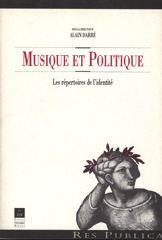 |
HENNION A., 1996, «L’amour de la musique aujourd’hui : une recherche en cours sur les figures de l’amateur» ,
in DARRÉ A., (ed.), Musique et Politique. Les répertoires de l’identité, Rennes, Presses universitaires de Rennes, p.41-50. |
| |
HENNION A., DUBUISSON S., RABEHARISOA V., DIDIER E., 1996, «Passages et arrêts en gare. Les régimes de présence en situation de passage.» ,
Plan Urbain/RATP/SNCF-CSI. |
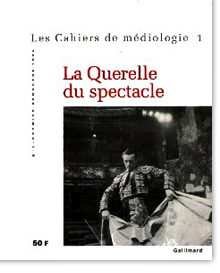 |
HENNION A., LATOUR B., 1996, «L’art, l’aura et la technique selon Benjamin, ou comment devenir célèbre en faisant tant d’erreurs à la fois...» ,
Les Cahiers de médiologie, 1 (premier semestre), p.235-241.
Accès au texte »
En relisant l'article aujourd'hui, notre réaction est bien différente. Une fois rendu l'hommage au précurseur, et reconnu ce que la critique présente faite à Benjamin doit à Benjamin lui-même, nous sommes au contraire ahuris par le nombre d'erreurs que l'article accumule allègrement, ou, plus sérieusement, par les incompréhensions profondes qu'il révèle de la plupart des phénomènes qu'il analyse, modernes ou passés. Sur un ton délibérément provocateur, à la mesure du culte qui lui est rendu, nous voulons suggérer que, loin d'être le revers un peu faible d'un texte puissant, incapable d'empêcher ses nombreuses qualités de lui assurer un succès mérité, ces erreurs sont la cause principale de la fascination qu'il a exercée, et qu'il continue à exercer. En un collage que peu d'auteurs ont osé faire avec une telle ingénuité, tous les aspects de la vie moderne sont brièvement dépeints dans “ L'oeuvre d'art à l'âge de sa reproductibilité technique ” : art, culture, architecture, science, technique, religion, économie, politique, et même la guerre et la psychanalyse. Et chaque fois, à notre sens, c'est pour prendre une catégorie pour l'autre. |
| |
JACQ F., 1996, «Une recomposition de la recherche académique et industrielle en France dans l’après-guerre, 1945-1970» ,
Sociologie du travail, XXXVIII (3/96), p.263-277. |
 |
JACQ F., 1996, «Pratiques scientifiques, formes d’organisation et représentations politiques de la science dans la France de l’après-guerre» ,
Thèse de doctorat, Paris, École Nationale Supérieure des Mines de Paris.
La thèse est consacrée au développement scientifique et technique francais après la seconde guerre mondiale. Elle montre, à partir d'une série de monographies, comment s'opéra une véritable reconstruction du tissu scientifique pour s'adapter au nouvel environnement scientifique mondial. Quatre cas sont passés en revue: le laboratoire de physico-chimie de la compagnie de télégraphie sans fil (CSF), le Centre de Recherches sur les Macromolécules de Strasbourg, la mise en place du Commissariat à l'Energie Atomique, enfin les services techniques militaires. Chaque étude met en évidence une logique de fonctionnement différente du monde scientifique qui allie pratiques scientifiques, formes d'organisation et conceptions politiques de la science : industriels porteurs de projets technologiques avancés, entrepreneurs scientifiques, grands programmes, services techniques militaires. Ces options se situent en concurrence et constituent les diverses facettes d'un besoin exprimé, à partir de la fin des années quarante, d'une politique de la science. La thèse montre comment cette notion fut peu a peu élaborée et enrichie parl'apport de ces quatre logiques qui proposaient chacune une solution au problème de l'organisation de la scienceet de sa pratique, propositions relayées par un groupe de partisans d'une organisation nationale de la science. La description débouche sur une double grille de lecture : une typologie du milieu francais permettant une compréhension plus fine des choix effectués et une chronologie inédite de la reconstruction scientifique mettant en lumière les ressorts du processus d'évolution. Pour caractériser le rôle de la politique de la science, la notion d'énoncé collectif est introduite. Elle suggère comment s'opéra la mobilisation des milieux scientifiques, industriels, militaires ou politiques, débouchant sur les profondes réformes de la Ve République, et souligne la part d'innovation collective dans cette adaptation de la France aux réalités scientifiques de l'après-guerre à rebours des theèes usuelles de l'historiographie. |
| |
JACQ F., 1996, «Enoncé collectif et récit historique. La mobilisation autour de la politique scientifique dans la france de l’après-guerre (1945-1965)» ,
in MÉADEL C., RABEHARISOA V., (ed.), Représenter, Hybrider, Coordonner, Paris, Ecole des mines de Paris, p.111-119. |
| |
JOLY P., LEMARIÉ S., MANGEMATIN V., 1996, «Coordination de la recherche et apprentissage relationnel. Une analyse empirique des contrats entre un organisme public de recherche et des firmes industrielles» ,
in MÉADEL C., RABEHARISOA V., (ed.), Représenter, Hybrider, Coordonner, Paris, Ecole des mines de Paris, p.323-340. |
| |
KARPIK L., 1996, «La confiance : réalité ou illusion ? Examen critique d’une analyse de Williamson» ,
in MÉADEL C., RABEHARISOA V., (ed.), Représenter, Hybrider, Coordonner, Paris, Ecole des mines de Paris, p.121-127. |
| |
KARPIK L., 1996, «Dispositifs de confiance et engagements crédibles» ,
Sociologie du Travail, 4 (Spécial "les contrats"). |
| |
LARÉDO P., 1996, «Les effets des programmes communautaires de recherche : Quels enseignements pour la redéfinition de la politique européenne de recherche ?» ,
Les entretiens de la technologie, session "programmes technologiques communautaires, mode d'emploi"., 1996. |
| |
LARÉDO P., 1996, «Comment va l’Europe de la recherche et EUREKA a-t-il réussi» ,
in PESSIS-PASTERNAK G., (ed.), Le social et les paradoxes du chaos, Paris, Desclée de Brouwer, p.195-208. |
| |
LARÉDO P., 1996, «L’évaluation dans les processus politiques. Réflexions à propos des politiques de recherche» ,
in MÉADEL C., RABEHARISOA V., (ed.), Représenter, Hybrider, Coordonner, Paris, Ecole des mines de Paris, p.139-150. |
| |
LARÉDO P., 1996, «Technological Programs in the European Union» ,
in ETZKOWITZ H., LEYDESDORFF L., (ed.), Universities and the Global Knowledge Economy : A Triple Helix of University - Industry - Government Relations, Cassel, Leicester University Press, p.33-43. |
| |
LARÉDO P., ALBERT A., RENART J., WALDTEUFEL P., 1996, «Evaluation du Programme d’action intégrée franco-espagnol "Picasso"» ,
Paris, CSI Ecole des Mines. |
| |
LARÉDO P., CALLON M., KAHANE B., TRIENDL R., 1996, «La Recherche à l’AFLM, Etat des lieux et proposition d’évolution» ,
CSI. |
| |
LARÉDO P., MUSTAR P., 1996, «Laboratory Configurations : An Exploratory Approach» ,
Signature of Knowledge Societies,, 1996. |
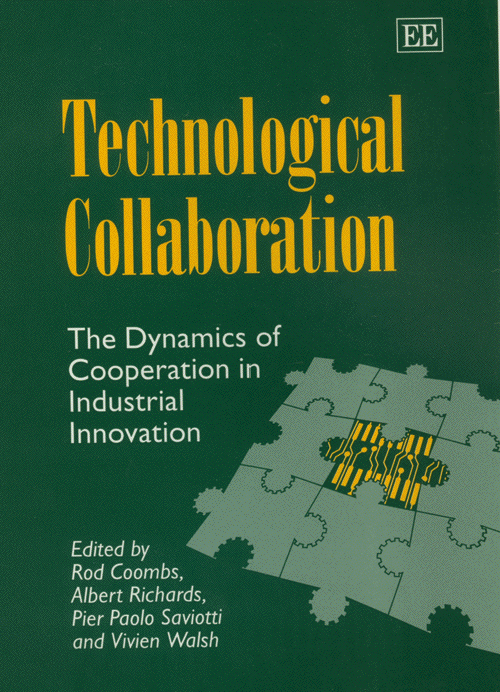 |
LARÉDO P., MUSTAR P., 1996, «The Technoeconomic Network : a Socioeconomic Approach to State Intervention in Innovation» ,
in COOMBS R., RICHARDS A., SAVIOTTI P., WALSH V., (ed.), Technological Collaboration, Cheltenham, Edward Elgar, p.143 à 164. |
| |
LARÉDO P., RIP A., 1996, «Foresight Activities, a Discussion Paper» ,
Second ASTPP Workshop, 1996. |
| |
LARÉDO P., VOLATIER J., COLLERIEDEBORELY A., 1996, «How can a foresight process help in the articulation of research priorities ? Preliminary results from the international survey on Research priorities and environmental issues» ,
Quel environnement au XXIe siècle ? Environnement, maîtrise du long terme et démocratie, 1996. |
| |
LASCOUMES P., 1996, «La précaution comme anticipation des risques résiduels et hybridation de la responsabilité» ,
in MÉADEL C., RABEHARISOA V., (ed.), Représenter, Hybrider, Coordonner, Paris, Ecole des mines de Paris, p.151-158.. |
 |
LATOUR B., 1996, Sur le culte moderne des dieux faitiches ,
Paris, Les empêcheurs de tourner en rond. |
| |
LATOUR B., 1996, «Déposition sur l’avenir des "sciences studies" à la commission de l’EHESS» ,
EHESS. |
 |
LATOUR B., 1996, Petites leçons de sociologie des sciences ,
Paris, Seuil, coll. Points. |
| |
LATOUR B., 1996, «On interobjectivity» ,
Mind, Culture, and Activity, 3 (4), p.266-270. |
| |
LATOUR B., 1996, «Trains of thoughts, or Psychology and the Fabrication of Times» ,
Leçon inaugurale pour le centenaire de Jean Piaget, 1996. |
| |
LATOUR B., 1996, «On Factishes and other Dishevelled Objects : the Principle of Precaution after Hans Jonas and Ulrich Beck» ,
4S/EAST, 1996. |
| |
LATOUR B., 1996, «Le vrai roman de la recherche» ,
La recherche, p.30-31.
n°283 |
| |
LATOUR B., 1996, «Touching the Untouchable Factishes» ,
Models of the Critique, University of Tel-Aviv Van Leer Institute. 1996. |
| |
LATOUR B., 1996, «Une expérience de primatologie» ,
La Recherche, p.80.
293 |
| |
LATOUR B., 1996, ««Cogito, ergo sumus»» ,
La Recherche, p.49.
284 |
| |
LATOUR B., 1996, «Lettre à mon ami Pierre sur l’anthropologie symétrique» ,
Ethnologie française, 26 (1), p.32-37. |
| |
LATOUR B., 1996, «Primate relativity-reflexions on a fellow-traveler» ,
Changing Images of Primate Societies : The Role of Theory, Method and Gender., 1996. |
| |
LATOUR B., 1996, «Que peuvent apporter l’histoire et la sociologie des sciences aux sciences de la gestion ?» ,
Actes des XIIIes Journées nationales des IAE., 1996. |
| |
LATOUR B., 1996, «The Trouble with Actor-Network Theory» ,
Soziale Welt, 47 (369-381), p.47-64. |
| |
LATOUR B., 1996, «Ces réseaux que la raison ignore : laboratoires, bibliothèques, collections» ,
in BARATIN M., JACOB C., (ed.), Le Pouvoir des bibliothèques. La mémoire des livres en Occident, Paris, Albin Michel, p.23-46. |
| |
LATOUR B., 1996, «Faut-il parler de l’histoire des faits ?» ,
La Recherche, (291), p.84. |
| |
LATOUR B., 1996, «Droit du sang et droit de la science» ,
La Recherche, p.80.
292 |
| |
LATOUR B., 1996, «Sur la pratique des théoriciens» ,
in BARBIER J., (ed.), Savoirs théoriques et savoirs d'action, Paris, PUF, p.131-146. |
| |
LATOUR B., 1996, «Not the question» ,
American Anthropologist Association Newsletter, p.1-3.
Special debate on science and anthropology |
| |
LATOUR B., 1996, De Berlijnse sleutel, en andere lessen van een liefhebber van wetenschap en techniek ,
Amsterdam, Van Gennep. |
| |
LATOUR B., 1996, «Comment rater une découverte?» ,
La Recherche, p.79-80.
n°286 |
| |
LATOUR B., 1996, «Réseaux et rhyzomes» ,
Deleuze, The relativity of primatology. Reflexions of a fellow-traveller, 1996. |
| |
LATOUR B., 1996, Vi har aldri vaert moderne ,
Oslo, Spartacus Forlag. |
| |
LATOUR B., 1996, Le métier de chercheur, regard d’un anthropologue ,
Paris, INRA. |
| |
LATOUR B., 1996, Aramis or the Love of Technology ,
Cambridge, Harvard University Press. |
| |
LATOUR B., 1996, «Comment les modernes fabriquent-ils des fétiches chez ceux avec qui ils entrent en contact ?» ,
in MÉADEL C., RABEHARISOA V., (ed.), Représenter, Hybrider, Coordonner, Paris, Ecole des mines de Paris, p.159-169. |
| |
LATOUR B., 1996, «Do Scientific Objects have History ? Pasteur and Whitehead in a bath of lactic acid.» ,
Common Knowledge, 5 (1), p.76-91. |
| |
LATOUR B., 1996, «On yet Another Difference between Science and Politics» ,
Blumenthal campus wide lecture;, 1996. |
| |
LATOUR B., 1996, «Did Ramsès II died of Tuberculosis ? On the Partial Existence of Existing and non-Existing» ,
in DASTON L., (ed.), The Coming into Being and the Passing away of Scientific Objects, Chicago, Chicago University Press, p.28. |
| |
LATOUR B., 1996, «La révolte des anges de Frege» ,
La recherche, p.47.
288 |
| |
LATOUR B., 1996, «Flat-Earthers and Social Theory» ,
in POWER M., (ed.), Accounting and Science : National Inquiry and Commercial Reason, Cambridge, Cambridge University Press, |
| |
LATOUR B., 1996, «Avons-nous besoin de "paradigmes" ?» ,
La Recherche, p.84.
290 |
 |
LATOUR B., WOOLGAR S., 1996, La Vie de laboratoire ,
Paris, |
 |
LAW J., AKRICH M., 1996, «On Customers and Costs : a Story from Public Sector Science» ,
in POWER M., (ed.), Accouting and Science, Cambridge, Cambridge University Press, p.195-218. |
| |
LE BOURHIS J., 1996, «Des riverains à la rivière. Les transformations d’une politique de l’eau» ,
in MÉADEL C., RABEHARISOA V., (ed.), Représenter, Hybrider, Coordonner, Paris, Ecole des mines de Paris, p.171-178. |
| |
LE BOURHIS J., 1996, «Du passe-droit aux passes du droit. La mise en oeuvre socio-juridique de l’action publique» ,
Droit et Société, Printempsp.51-73. |
| |
LE BOURHIS J., 1996, «Comment peut-on prendre une mesure ? L’expertise au risque de la politique» ,
La Mesure, Agence de l’Eau. 1996. |
| |
LE BOURHIS J., 1996, «Les registres d’action des services environnementaux» ,
25 ans d’administration de l’environnement, Association Francaise de Science Politique, 1996. |
| |
LE BOURHIS J., LASCOUMES P., 1996, «Gérer le long terme par l’action procédurale. Les dispositifs de planification territoriale entre modèle technico-administratif et modèle décisionniste» ,
Quel environnement au XXIème siècle? Environnement, maîtrise du long terme et démocratie, 1996. |
 |
MALLARD A., 1996, «Les instruments dans la coordination de l’action. Pratiques techniques, métrologie, instrument scientifique» ,
Thèse de doctorat, Paris, École Nationale Supérieure des Mines de Paris.
Les instruments sous toutes leur forme (instruments de mesure, dispositifs optiques, outils techniques usuels ...) Participent à la définition et à la coordination des pratiques. L'objet de la thèse est de mettre en relation trois aspects associés à la coordination par les instruments: les pratiques d'utilisation, les formes d'action qui y sont associées et les réseaux technico-économiques dans lesquels ils circulent. L'interrogation se situe au croisement de plusieurs disciplines des sciences sociales : sociologie des sciences, sciences cognitives, pragmatique des régimes d'ajustement, psychologie, ethnologie des techniques, sociologie de l'innovation. La première partie de la thèse étudie différentes modaliteé de la coordination correspondant à des instruments de forme différente. Elle s'appuie sur une étude realisée dans le secteur de la réparation automobile, qui articule deux enquêtes complémentaires : une ethnographie des pratiques techniques au garage met en évidence les diverses formes de compétence impliquées dans l'utilisation des instruments (perception, rôle du corps dans l'action, cognition, compétences sociales, savoir-faire ...). Une analyse des réseaux industriels de la réparation automobile montre que les instruments participent à la coordination technico-économique dans ces réseaux. La seconde partie est consacrée à l'étude des instruments de mesure. Elle montre que la métrologie constitue une modalité de coordination des pratiques d'évaluation etde contrôle. Deux terrains empiriques sont examinés : l'analyse extensive des dispositifs de métrologie légale et de normalisation d'un instrument de mesure de la pollution automobile ; le suivi d'un instrument scientifique de mesure de la pollution atmosphérique, depuis sa conception dans un centre de recherchejusqu'a ses applications pratiques chez l'utilisateur final. Ce dernier cas comporte l'analyse des processus suivant : pratiques de construction et de mise au point, évaluation de prototype en laboratoire de métrologie, construction d'un réseau commercial permettant de diffuser l'appareil, intercomparaison de plusieurs instruments mesurant les mêmes propriétés physiques. |
| |
MALLARD A., 1996, «Des instruments à leur usage. Aperçus sur la coordination par la mesure» ,
in MÉADEL C., RABEHARISOA V., (ed.), Représenter, Hybrider, Cordonner., Paris, Ecole des Mines de Paris, |
| |
MALLARD A., 1996, «L’interprétation collective des résultats d’une expérience : le cas de l’intercomparaison des instruments scientifiques» ,
Sociologie du travail, (3/96), p.293-308. |
| |
MALLARD A., 1996, «Approches philosophiques et socio-culturelle de l’activité scientifique» ,
Projets d'Action Educative à Caractère Scientifique et Technologique. Expériences et bilan 1994-1995, Dijon, ENESAD, p.95-103. |
| |
MALLARD A., 1996, «collaboration à "La Main à la pâte."» ,
in CHARPAK G., (ed.), La Main à la pâte. L’enseignement des sciences à l’école primaire, Paris, Flammarion, |
| |
MANGEMATIN V., 1996, «Tout savoir sur les programmes publics de recherche» ,
Annales des Mines,
45 |
| |
MÉADEL C., 1996, «Les programmes de radio» ,
Trente ans du Musée de Radio France, 1996. |
| |
MÉADEL C., 1996, «Mettre en musique Radio Paris. Premiers éléments d’une recherche.» ,
séminaire La Musique sous Vichy, IHTP. 1996. |
| |
MÉADEL C., 1996, «Users of HDTV, Users of Polls and Survey?» ,
4S/EASST, 1996. |
| |
MÉADEL C., 1996, «Research and Innovation» ,
STS Network Meeting, Tokyo Institute of Technology. 1996. |
| |
MÉADEL C., 1996, «Une brèche dans la boîte de Pandore : 1965, le nouvel âge de la télévision» ,
Espoir, |
 |
MÉADEL C., 1996, «Les Chambres d’écho. Les intellectuels et la radio» ,
in WINOCK M., (ed.), Dictionnaire des Intellectuels, Paris, Seuil,
Accès au texte »
Dès sa naissance, la radio se définit comme un lieu de culture, dans un double entendement, comme lieu de production et comme lieu de diffusion. Les programmes se nourrissent des meilleurs fruits de la culture et trouvent leurs principaux aliments dans le répertoire musical et théâtral, dans les conférences des professeurs, dans les causeries des hommes de lettres. Très tôt les écrivains et les artistes sont associés à sa programmation et siègent dans les instances de réflexion sur les émissions. De nombreux écrivains, professeurs, musiciens font partie des associations qui gèrent les stations et construisent ses émissions. Des auteurs s’interrogent sur la spécificité du langage radiophonique et inventent de nouvelles formes de communication pour le “huitième art”. Ainsi, la radio montre, dès son origine, une vocation culturelle qu’elle entretient par des relations suivies avec les intellectuels. Cette association de la radio et des clercs se développe, cependant, sous le signe d’une certaine défiance. Sans revenir aux diatribes d’un Georges Duhamel contre la “tehessef” qui s’inscrivent dans une inquiétude plus générale sur la modernité, nombreux sont ceux qui s’effraient du pouvoir corrupteur, de la trop grande facilité intellectuelle de la radio, qui redoutent sa dépendance à l’égard des pouvoirs de l’argent ou de ceux de la politique, qui craignent les manipulations que permet le montage. Les hommes de lettres appréhendent encore, comme les artistes et les sportifs, que le média ne les pille à force d’exploiter leurs œuvres et qu’il ne fasse main basse sur leur public. En bref, le débat est résumé par la question posée aux participants des rencontres internationales de Genève en 1955 : “la culture est-elle mise en péril par les nouveaux moyens de diffusion, le cinéma, la radio et la télévision ?”. |
| |
MÉADEL C., MASCOLO C., 1996, «Radio-Télévision, les archives écrites.» ,
Dossiers de l’audiovisuel (direction du numéro spécial des), 70
décembre |
| |
MIALET H., 1996, «Une nouvelle figure du Sujet?» ,
in MÉADEL C., RABEHARISOA V., (ed.), Représenter, Hybrider, Coordonner, Paris, Ecole des mines de Paris, p.189-197. |
| |
MUSTAR P., 1996, «L’élevage du loup (Dicentrarchus labrax) ou la rencontre incertaine entre science, technologie et marché» ,
in MÉADEL C., RABEHARISOA V., (ed.), Représenter, Hybrider, Coordonner, Paris, Ecole des mines de Paris, p.199-213. |
| |
MUSTAR P., 1996, «Indicateurs pour la description du dispositif de recherche en Provence-Alpes-Côte d’Azur. La caractérisation stratégique d’un potentiel scientifique et technique» ,
Conseil Régional PACA, Conseil Général des Alpes-Maritimes, service régional du Ministère de l'Education Nationale, de l'enseignement supérieur et de la recherche.. |
| |
MUSTAR P., WALSH V., NIOSI J., 1996, «New Firm Formation and National Systems of Innovation : Biotechnology in the USA, UK, France and Canada.» ,
Japan Journal for Science, Technology and Society, 5p.125-160. |
| |
PENAN H., 1996, «Le référentiel normatif» ,
in MÉADEL C., RABEHARISOA V., (ed.), Représenter, Hybrider, Coordonner, Paris, Ecole des mines de Paris, p.215-223. |
| |
PENAN H., 1996, «Network analysis for R&D strategy : Alzheimer’s disease therapeutic strategies» ,
Research Policy, 25-3 (mai). |
| |
PETIT J., 1996, «Le stockage des déchets radioactifs. Perspective historique et analyse sociotechnique» ,
in MÉADEL C., RABEHARISOA V., (ed.), Représenter, Hybrider, Coordonner, Paris, Ecole des mines de Paris, p.225-234. |
| |
RABEHARISOA V., 1996, «La marchandisation de la science et de la technologie : le rôle du capital-risque» ,
Revue d’économie industrielle, |
| |
RABEHARISOA V., 1996, «Le capital-risque : du contrat à l’engagement» ,
in MÉADEL C., RABEHARISOA V., (ed.), Représenter, Hybrider, Coordonner, Paris, Ecole des mines de Paris, p.235-242. |
| |
RABEHARISOA V., 1996, «Compte-rendu. Vinck, Dominique, Sociologie des Sciences, Paris, 1995» ,
Sociologie du travail, XXXVIII (3/96), p.422-423. |
| |
RÉMY E., 1996, «La controverse publique sur les champs éléctromagnétiques» ,
EDF/CSI. |
| |
RÉMY E., 1996, «Rygtets Konstruktion» ,
Nord Nytt, |
| |
RÉMY E., 1996, «Apprivoiser la technique. Un débat public autour d’une ligne à haute tension» ,
in MÉADEL C., RABEHARISOA V., (ed.), Représenter, Hybrider, Coordonner, Paris, Ecole des mines de Paris, p.243-249. |
| |
RÉMY E., 1996, «Quelle place accorder aux profanes dans les procédures de précaution et de prudence ? L’exemple de la controverse publique sur les champs électromagnétiques» ,
Quel environnement au XXIe siècle. Environnement, maîtrise du long terme et démocratie, 1996. |
| |
ROCHER Y., 1996, «Modes de traduction et analyse morphologique de réseau. De la théorie de la traduction à la géométrie du social» ,
in MÉADEL C., RABEHARISOA V., (ed.), Représenter, Hybrider, Coordonner, Paris, Ecole des mines de Paris, p.251-262. |
| |
ROSENTAL C., 1996, «Sociologie des formes de démonstration» ,
centre de Recherche Innovation Socio-Technique et Organisation, 1996. |
| |
ROSENTAL C., 1996, «Mettre en avant des objets logiques hybrides. Une approche sociologique des pratiques de démonstration» ,
in MÉADEL C., RABEHARISOA V., (ed.), Représenter, Hybrider, Coordonner, Paris, Ecole des mines de Paris, p.263-270. |
 |
ROSENTAL C., 1996, «L’Emergence d’un théorème logique. Une approche sociologique des pratiques contemporaines de démonstration» ,
Thèse de doctorat, Paris, École Nationale Supérieure des Mines de Paris.
L'objet de cette thèse est de montrer qu'il est possible de rendre compte de la production de connaissance certifiée en logique dans une perspective sociologique. A cette fin, et loin de tout relativisme social, une sociologie des pratiques de demonstration est développée, à partir du cas de l'émergence d'un théorème logique spécifique. |
| |
SCHAEFFER G., DE LAAT B., 1996, «Innovation studies and management and forecasting of technology. A preliminary investigation into french and dutch fuel cell developments 1960-1995» ,
The 2nd International Fuel Cell conference, Nedo/MITI. 1996. |
| |
SIGOGNEAU A., 1996, «Définir un domaine de recherche académique. Application au management de la recherche» ,
in MÉADEL C., RABEHARISOA V., (ed.), Représenter, Hybrider, Coordonner, Paris, Ecole des mines de Paris, p.271-279. |
| |
TEIL G., 1996, «Du raisin au verre de vin. Elaboration d’un vin de qualité» ,
in MÉADEL C., RABEHARISOA V., (ed.), Représenter, Hybrider, Coordonner, Paris, Ecole des mines de Paris, p.281-288. |
| |
TRIENDL R., 1996, «Moral Economies of Knowledge: Re-inventing Public Sector Science in Japan.» ,
BIB/Université de Vienne.. |
| |
TRIENDL R., 1996, «Material Culture, Place, and Publicity» ,
4S/EASST, 1996. |
| |
VINCK D., LAUREILLARD P., 1996, «Coordination par les objets dans les processus de conception» ,
in MÉADEL C., RABEHARISOA V., (ed.), Représenter, Hybrider, Coordonner, Paris, Ecole des mines de Paris, p.289-295. |
| |
VISSAC-CHARLES V., 1996, «Caractérisation de la dynamique des réseaux. Application à la gestion des projets d’innovation» ,
in MÉADEL C., RABEHARISOA V., (ed.), Représenter, Hybrider, Coordonner, Paris, Ecole des mines de Paris, p.297-307. |
| |
VISSAC-CHARLES V., LATOUR B., 1996, «Suivre un projet, c’est repérer ses objets-frontières» ,
in NOBLET J., (ed.), Penser le futur, PSA : Peugeot Citroën, p.182-203. |
| |
AKRICH, M., 1995, Coopération inter-entreprises et coordination socio-économique, actes de l’atelier de recherche du 9 décembre 1994 ,
Paris, CGP. |
| |
AKRICH M., 1995, «Petite anthropologie du médicament» ,
Techniques et Culture, (25-26), p.129-157.
Accès au texte »
Dans les discours savants ou grand public, le médicament est souvent réduit à une molécule, un principe actif permettant d'agir sur telle ou telle partie du corps humain : dans ces conditions, on se demande quels sont les mécanismes d'action, s'il a bien les effets qu'on lui prête, si ses effets secondaires sont supportables à tout point de vue, on cherche à préciser son domaine d'application, à affiner la posologie, etc. Mais on s'intéresse assez peu à ce qui se trouve entre le laboratoire pharmaceutique qui produit et conditionne ce principe actif et le corps qui le reçoit : or, pour que la molécule passe d'un point à un autre et effectue le travail qui est attendu d'elle, il faut qu'un certain nombre de conditions soient réunies et qu'un certain nombre d'acteurs se conforment plus ou moins à un ou des programmes d'action. Comment ces différentes exigences sont-elles portées, en totalité, partiellement ou pas du tout, par les médicaments eux-mêmes considérés dans toute leur matérialité, c'est-à-dire non seulement le principe actif, mais sa forme, son emballage, les accessoires éventuels, la notice, le carton etc? Pour tenter de répondre à cette question, nous mobiliserons les apports de la sociologie des objets techniques ; en particulier, nous ferons l'hypothèse qu'un médicament, tout comme un objet technique, définit par sa forme même des acteurs et des relations entre ces acteurs, attribue certaines compétences à ces acteurs, suppose un certain environnement pour “fonctionner”. Au travers d'exemples tirés de l'expérience commune, on essaiera de dresser un premier tableau des différentes modalités par lesquelles les usagers sont pris en compte dans le médicament et ce qui lui est associé. |
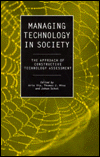 |
AKRICH M., 1995, «User Representations: Practices, Methods and Sociology» ,
in RIP A., MISA T., SCHOT J., (ed.), Managing Technology in Society. The Approach of Constructive Technology Assessment, London, Pinter, p.167-184. |
| |
AKRICH M., 1995, «La sécurité de la naissance en France et aux Pays-bas: coordonner par la technique ou par l’organisation» ,
REvue française d'administration publique, 76p.575 à 584.
Accès au texte »
La sécurité de la naissance a fait ces dernières années l'objet de vifs débats en France. À l'occasion des deux rapports demandés au haut comité de la santé publique, on note une inflexion dans les conceptions françaises en matière de risque : l'on passe ainsi de la sécurité comme accumulation des moyens techniques et humains à la sécurité comme capacité de détection des risques et d'orientation des femmes sur tel ou tel établissement en fonction des risques encourus. S'appuyant sur l'organisation néerlandaise de la naissance qui est basée sur cette idée de sélection, l'article se propose de caractériser ces différentes conceptions de la sécurité et leurs conséquences, d'évaluer l'importance des réformes envisagées en France et de préciser les conditions nécessaires à leur réalisation. |
| |
AKRICH M., 1995, «Réseaux socio-techniques et systèmes techniques» ,
Emprunt et Innovation, Mission du Patrimoine ethnologique, ministère de la Culture. 1995. |
| |
AKRICH M., DODIER N., 1995, «Présentation» ,
Techniques et Culture, (25-26), p.i-xi. |
| |
AKRICH M., DODIER N., 1995, «Les objets de la médecine (direction du numéro spécial)» ,
Techniques et Culture, janvier-juin, n°25
Accès au texte »
Comment les techniques médicales s'inscrivent-elles dans des cultures qui peuvent être plus ou moins locales et comment ces cultures définissent-elles à la fois la forme prise par ces techniques et les utilisations qui peuvent en être faites ? De quelle manière les techniques prennent-elles part à tous les processus par lesquels le corps, la maladie se trouvent “socialisés” et deviennent des objets autour desquels des échanges se nouent, des rituels se mettent en place ? Comment transforment-elles, dans un univers donné, les rapports que les individus entretiennent avec leur corps, comment modifient-elles leurs perceptions ? De quelle façon les représentations que ces diverses techniques donnent du corps ou de la maladie s'articulent-elles entre elles et avec les représentations portées par d'autres types de médiations culturelles ? En réalisant ce numéro spécial sur les techniques de la médecine, nous avons voulu montrer que ces interrogations, qui renvoient aux préoccupations centrales du projet défendu par “Techniques et Culture”, se trouvent aujourd'hui au cœur d'un ensemble d'analyses ethnographiques, sociologiques, historiques qui cherchent à comprendre la médecine occidentale contemporaine. |
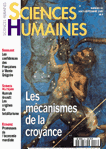 |
AKRICH M., DUBUISSON S., RABEHARISOA V., 1995, «Comment naît un produit ?» ,
Sciences humaines, p.48-52.
53, août-septembre |
| |
AKRICH M., MÉADEL C., 1995, «Technologies de sécurité et organisation» ,
Cahiers de la sécurité intérieure (IHESI), (21, 3e trimestre), p.53-59.
Accès au texte »
Quelle doit être la place des technologies dans la lutte contre l'insécurité ? S'agit-il de simples outils à la disposition des professionnels et du grand public ou peut-on prévoir qu'elles se substitueront en partie aux missions assurées par des opérateurs humains ? Comment les organisations qui traitent de ces problèmes de sécurité sont-elles redéfinies par l'irruption de nouveaux dispositifs ? En quoi la répartition des compétences entre différents acteurs, opérateurs privés, forces de police, public sort-elle transformée de ces processus ? Et, de façon plus générale, le droit, la morale, le sens civique, les compétences professionnelles sont-ils reconfigurés par l'implantation de ces technologies ? Pour répondre à ces questions, nous disposons de quatre articles qui, parce qu'ils sont largement appuyés sur des réalités concrètes, des expériences de terrain, nourissent la réflexion et défont un certain nombre d'idées reçues. |
| |
AKRICH M., PASVEER B., 1995, «Technologies of Giving Birth» ,
The Mutual Shaping of Gender and Technology, 1995. |
| |
AKRICH M., PASVEER B., 1995, «De la conception à la naissance. Comparaison France / Pays-Bas des réseaux et des pratiques obstétriques» ,
MIRE - CSI, Ecole des Mines. |
| |
BARBIER R., 1995, «La vie sociale des déchets» ,
RATP: Lieux-mouvements de la ville, 1995. |
| |
CALLON M., 1995, «Algunos elementos para una sociologia de la traduccion : la domesticacion de las vieiras y los pescadores de la Bahia de St. Brieuc» ,
in IRANZO J., BLANCO J., FE T., TORRES C., COTILLO A., (ed.), Sociologia de la ciencia y de la tecnologia, Madrid, Consejo superior de investigaciones cientificas, |
| |
CALLON M., 1995, «Les nouvelles orientations de la politique de la recherche du Japon» ,
Bulletin de la Société franco-japonaise des techniques industrielles, Avrilp.1-3.
95 |
| |
CALLON M., 1995, «Technological Conception and Adoption Network : Lessons for the CTA Practitioner» ,
in RIP A., MISA T., SCHOT J., (ed.), Managing Technology in Society. The Approach of Constructive Technology Assessment, London, Pinter Publishers, p.307-330.
The chapters in this book are based on papers prepared for the international workshop on Constructive Technology Assessment, held at the University of Twente, Enschede, The Netherlands, 20-22 September 1991. Authors and editors have profited from the discussion and the contributions of participants in the workshop, which gathered eminent scholars in economics of technical change, history and sociology of science and technology, technology assessment, as well as a small number of interested policy-makers. The financial support of the Netherlands Organization for Technology Assessment (NOTA, now The Rathenau Institute), the Dutch ministry of Economic Affairs and the Illinois Institute of Technology's ERIF programme is acknowledged. |
| |
CALLON M., 1995, «La société de l’innovation» ,
Visa, Hiverp.12-14.
28 |
| |
CALLON M., 1995, «Representing nature, representing culture» ,
Center for Social Theory and Technology, 1995. |
| |
CALLON M., 1995, «La contribution de la démarche qualité à la dynamique de l’innovation dans trois filiales de la Sodexho (Bateaux parisiens, Chèque Restaurant, Siges)» ,
CSI - Association pour le Progrès du Management CNPF - Sodexho. |
| |
CALLON M., 1995, «Nous risquons de rater des révolutions majeures» ,
L'Expansion, 28 avril au 14 maip.53.
Accès au texte »
Nos organismes de recherche bénéficient toujours d'une excellente réputation. Cependant, ils ont un handicap, leur incapacité relative à intervenir rapidement et efficacement sur les secteurs chauds , à fortes retombées commerciales. Autrement dit, notre recherche se distingue dans les disciplines théoriques et bien constituées, comme les mathématiques ou la physique, mais beaucoup moins quand il s'agit des sciences de l'ingénieur , comme la robotique ou la microélectronique. Il faudrait réorienter les crédits de la recherche publique, qui favorisent depuis toujours les sciences abstraites, mais aussi encourager la recherche industrielle, qui continue à souffrir d'un gros déficit. Si rien n'est fait, la France risque de passer à côté de certaines révolutions majeures, telle celle des biotechnologies. Un comble pour un pays étant parvenu, ces dernières années, à identifier des gênes de première importance. Ce qui nous manque, ce sont des structures de financement permettant de poursuivre les recherches plus en aval. Et ce sont des laboratoires étrangers, souvent américains, qui ramassent les développements. |
| |
CALLON M., COURTIAL J., 1995, «La scientométrie au service de l’évaluation» ,
in CALLON M., LARÉDO P., MUSTAR P., (ed.), La Gestion stratégique de la recherche et de la technologie, Paris, Economica, p.177-235. |
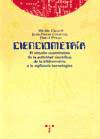 |
CALLON M., COURTIAL J., PENAN H., 1995, Cienciometria. El estudio cuantitativo de la actividad cientifica: de la bibliometria a la vigilancia tecnologica ,
Gijon, Trea.
La aparición de la revista Scientometrics en 1979 supuso la consolidación de un grupo de investigaciones que pretenden dar cuenta de ciertos aspectos de la actividad científica y tecnológica a través del estudio de documentos como las publicaciones en revistas o los expedientes de registros de patentes. Desde entonces, se han ido refinando progresivamente sus métodos y, a través de procedimientos como el estudio de las citas o del empleo de palabras-clave, se han obtenido observaciones valiosas sobre el aislamiento o integración de las comunidades científicas nacionales, la relación entre investigación académica y aplicaciones tecnológicas o las relaciones entre campos de investigación diversos. Este libro ofrece un panorama de la situación actual de esos estudios, de sus métodos y avances, y permite conocer posibles vías de uso de la información contenida en bases de datos. |
| |
CALLON M., LARÉDO P., 1995, «Le palmarès des entreprises qui innovent (Des as, des champions et des brillants seconds ; Le modèle linéaire rend les armes)» ,
La Recherche, p.78-86.
282, décembre |
, La Gestion stratégique de la recherche, 1995.jpg) |
CALLON M., LARÉDO P., MUSTAR P., 1995, La Gestion stratégique de la recherche et de la technologie ,
Paris, Economica.
La recherche-developpement est une activite strategique encore largement meconnue. Cette meconnaissance risque encore de s'accentuer avec le developpement des programmes technologiques nationaux ou europeens, tels qu'ESPRIT ou EUREKA, qui ont pour objectif d'accroitre la competitivite des firmes et des Etats (laboratoires publics, centres techniques, grands groupes industriels, PMI...). Entre la recherche academique qui produit de nouvelles connaissances, et l'innovation qui apporte sur le marche de nouveaux biens et services, ils visent le developpement collectif de competences et de savoir-faire encore inedits. Ni l'evaluation scientifique par les pairs, ni la sanction du marche, ne sont alors pertinentes pour les gerer et les suivre. Comment definir, piloter ou interrompre un programme technologique et les reseaux qu'il construit ? Comment suivre la dynamique des associations qu'il promeut entre chercheurs et industriels ? Comment apprecier ses resultats et ses effets ? Comment introduire de nouveaux objectifs ou de noveaux acteurs ? Ce livre fait le point sur les methodes et les instruments qui sont aujourd'hui developpes et utilises en Europe pour assurer, en evaluant les programmes, une reelle gestion strategique de la recherche et de la technologie. |
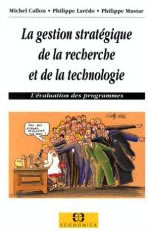 |
CALLON M., LARÉDO P., MUSTAR P., 1995, «Réseaux technico-économiques et analyse des effets structuraux» ,
in CALLON M., LARÉDO P., MUSTAR P., (ed.), La Gestion stratégique de la recherche et de la technologie, Paris, Economica, p.415-462.
Examines the approach used to investigate technological-economic networks (TENs), ie, collective participation in attaining production processes, goods, & services, arguing that the method should be complementary to the economic approach & those managing science & technology policies. The concept of TENs is discussed, & its component poles are identified. It is demonstrated that a TEN approach is a pragmatic tool for policymakers. |
| |
CALLON M., LAW J., 1995, «Agency and the Hybrid «Collectif»» ,
South Atlantic Quarterly, 94 (2), p.481-507. |
| |
CALLON M., LAW J., 1995, «Des collectifs actifs : quelques leçons tirées de la sociologie des sciences et des techniques» ,
in DUPUY J., REYNAUD B., LIVET P., (ed.), Limitation de la rationalité et constitution du collectif, |
 |
CASSIER M., 1995, «Les contrats de recherche entre l’université et l’industrie : l’émergence d’une nouvelle forme d’organisation industrielle» ,
Thèse de doctorat, Paris, École Nationale Supérieure des Mines de Paris.
Ce travail, qui porte sur un échantillon de cent cinquante huit contrats de recherche conclu entre des laboratoires publics et des entreprises dans le domaine des biotechnologies, permet de montrer que le véritable enjeu de ce type de contrat est de construire une coordination viable entre les institutions scientifiques et l'industrie pour concevoir et créer de nouvelles solutions technologiques. La dimension temporelle de la coordination contractuelle est essentielle puisqu'elle permet d'alimenter un processus d'apprentissage mutuel et un processus de production scientifique. L'incomplétude des contrats permet de prendre des décisions au fur et à mesure des gains d'informations engrangés par les acteurs. La stabilité de ces accords repose sur des formules de compromis entre biens privés, protégés par le secret ou le brevet, biens collectifs aux participants, et biens publics, sous forme de publications. Plusieurs modes de coordination économique supportent ces contrats : la coopération productive, la coordination marchande, des mécanismes de coordination non marchands comme la confiance et la réciprocité, et parfois la hiérarchie la prise en compte de ces différents modes de coordination économique, superposés dans les contrats réels, permet d'envisager un large spectre de relations contractuelles (des formes marchandes simples, des formes coopératives, des situations de quasi-integration) ainsi que leur dynamique (la succession de prestations ponctuelles et de programmes de recherche coopérative à long terme). Ces contrats participent a la construction d'une nouvelle organisation industrielle qui associe de plus en plus étroitement laboratoires publics et firmes pour développer la science et les innovations. |
| |
COURTIAL J., SIGOGNEAU A., 1995, «How to use Scientific and Technological Information to Reveal Strategic Technologies» ,
International Journal of Technology Management, 10,1 (Special issue "Management of Technology Flow across Industrial Boundaries"), p.31-44. |
| |
DE LAAT B., 1995, «Strategic Analysis for Technological Research Agencies - A Tool for Making Implicit Choices Explicit» ,
in BENNETT D., STEWARD F., (ed.), Technological Innovation and Global Challenges. Proceedings of the European Conference on Management of Technology, Birmingham, Aston University, p.669-676. |
| |
DE LAAT B., LARÉDO P., 1995, «Foresight for Research and Technology Policies: From Innovation Studies to four Hybrid Fora of Scenario Confrontation» ,
Third ASEAT conference, 1995. |
| |
DUBUISSON S., 1995, «Réorganisation d’une offre de service : codification et ajustement dans la prestation» ,
CSI - Association pour le Progrès du Management CNPF - Sodexho. |
| |
DUBUISSON S., 1995, «La conception en design. Etude des formes de collaboration et de communication dans la conception design des objets nouveaux» ,
in CAELEN J., ZREIK K., (ed.), Le Communicationnel pour concevoir, Paris, Europia Productions, p.125-148. |
| |
DUBUISSON S., HENNION A., 1995, «Le design industriel, entre création, technique et marché» ,
Sociologie de l’art, (8, "Les Frontières de l’art"), p.9-30. |
| |
GIAMI A., DE COLOMBY P., PATERSON F., 1995, «Eroticizing condoms: Representations of sex ans AIDS among sex workers of the porn industry and consumers of porn magazines in France. A preliminary study.» ,
in FRIEDRICH D., HECKMANN W., (ed.), Aids in Europe - The behavioural aspect. Vol. 2 : Risk Behaviour and its Determinants, Berlin, Sigma, p.235-246. |
| |
GOMART E., 1995, «Homéopathie et/ou allopathie? Les techniques de diagnostic dans l’articulation des cadres de référence» ,
Techniques et Culture, (25-26), p.109-128. |
| |
HENNION A., 1995, «L’art nous mène-t-il en bateau ?» ,
Médiation et nouvelles technologies., 1995. |
| |
HENNION A., 1995, «The History of Art : Lessons on Mediation» ,
Reseaux. The French Journal of Communication, 3 (2, Autumn), p.233-262.
Accès au texte »
The relevance of mediation in social science is that it questions the relationship between principles of collective action and the role of objects. The example of art history shows how an analysis can focus on the opacity of mediators, without making them the vehicles of an all-embracing cause, or the instruments of goals or of external reasons. The restitution of necessary intermediaries of art, initiated by social history as a critical denunciation of the relationship between aesthetic subjects and objects, or of the scholarly accumulation by art history, has converged towards the idea of a collective production of the world of art by its actors. The analysis of mediation must therefore consider the same aspects ,from individuals and institutions to frameworks of perception, through material elements and even the finest details of works of art and their production. It is thus able to close the gap that has so destructively separated social analyses of the conditions of art front aesthetic or semiotic analyses of the 'works in themselves'. |
| |
HENNION A., 1995, «Infortunée musique, qui périt aussitôt créée…» ,
Marsyas, 34p.13-17.
juin |
| |
HENNION A., 1995, «Le génie dans l’art» ,
Année sociologique, 45 (2), p.480-489. |
| |
HENNION A., 1995, «La musique comme sociologie de la médiation» ,
Passages public(s). Points de vue sur la médiation artistique et culturelle, Lyon, ARSEC/Paris, Ministère de la culture-DDF, p.75-83. |
| |
HENNION A., 1995, «La médiation artistique et culturelle» ,
La Médiation culturelle du territoire. Imaginaires du territoire et territoires imaginaires, Actes: Script/Ministère de la Culture-DDF, Sabres. 1995. |
| |
HENNION A., AKRICH M., BARBIER R., DUBUISSON S., EMELIANOFF C., KAUFMANN A., LE BOURHIS J., MÉADEL C., MUSTAR P., 1995, «Lyonnaise des Eaux-Dumez. Une entreprise face à ses innovations : politique, technique, environnement» ,
Centre de Sociologie de l'Innovation, Ecole des Mines. |
| |
HENNION A., SCHEPENS E., 1995, «Les anciens étudiants des Conservatoires nationaux supérieurs de musique de Paris et de Lyon de 1979 à 1990» ,
CSI/DEP-Ministère de la Culture. |
| |
JACQ F., 1995, «The Emergence of French Research Policy : Methodological and Historiographical Problems (1945-1970)» ,
History and Technology, 12p.285-308. |
| |
JACQ F., 1995, «Mégascience et processus de décision» ,
OCDE. |
 |
KARPIK L., 1995, Les Avocats. Entre l’Etat, le public et le marché. XIIIe - XXe siècle. ,
Paris, Gallimard. |
| |
LAGRANGE P., 1995, «Le Grand Partage L’invention des OVNI Tout savoir sur le paranormal» ,
Sciences et avenir, Parasciences : Le vrai, le faux et l'idiotp.10-15 ; 28-33 ; 92-99.
n° hors série, 101, juin-juillet |
| |
LAGRANGE P., 1995, «Extraterrestres, scientifiques et média» ,
La Recherche, p.11-12.
Octobre |
| |
LAGRANGE P., 1995, «Roswell: autopsie d’une imposture» ,
Science & Vie,
novembre |
| |
LAGRANGE P., 1995, «Extraterrestres : la grande arnaque» ,
Science & Vie,
août |
| |
LARÉDO P., 1995, «Performance Indicators for the Assessment of Non-Academic Impact in the Social Sciences» ,
Economic and Social Research Council (ESRC, UK). |
| |
LARÉDO P., 1995, The Impact of Community Research Programmes in France ,
Paris, Les Presses de l'Ecole des Mines. |
| |
LARÉDO P., 1995, «A Threefold Action of European Research Policy on Industrial Competitiveness» ,
Colloque international OST-SPRU-Nature sur les politiques de recherche et l’avenir de l’Europe, 1995. |
| |
LARÉDO P., 1995, «Structural Effects of European Community R&D Programmes» ,
Scientometrics, 34 (3), p.473-487. |
| |
LARÉDO P., 1995, «Human Resources for R&D : Old and New Competences» ,
Learning and Competences, Innovative Paths in R&D Organisation, 1995. |
| |
LARÉDO P., 1995, «Preliminary characterization of RITTS projects» ,
Colloque du programme SPRINT, 1995. |
| |
LARÉDO P., 1995, «Processus d’innovation et évolution des politiques publiques de recherche» ,
1995. |
| |
LARÉDO P., 1995, L’Impact en France des programmes communautaires de recherche ,
Paris, Les Presses de l'Ecole des Mines. |
| |
LARÉDO P., 1995, «Les effets des programmes communautaires de recherche et les questions posées à la politique européenne de recherche» ,
Conseil de Recherche Scientifique et Technique de l’Union Européenne, 1995. |
| |
LARÉDO P., 1995, «The Techno-Economic Network as a Characterization Tool for Specific Projects» ,
Rapport SPRINT. |
| |
LARÉDO P., 1995, «The Structural Effects of the Research Programmes of the European Union» ,
First International Conference on the Evaluation of Research, Technology and Development, 1995. |
| |
LARÉDO P., DE LAAT B., 1995, «De l’acceptabilité sociale des projets à la caractérisation des anticipations effectuées» ,
IFP-CSI. |
 |
LARÉDO P., MUSTAR P., 1995, «France, the Guarantor Model and the Institutionalization of Evaluation» ,
Research Evaluation, 5 (1, April), p.11-21.
Accès au texte »
The French evaluation scene is founded upon what Chabbal called the guarantor model (Chabbal 1987). Even though its institutionalization at policy level dates only from the 1980s, evaluation has been a long standing issue the location and action of which changed at the same time as the research system and policy evolved. This is why, in this article, we shall start by describing the policy setting, putting the French system in perspective. Our hypothesis is that, evaluation being part of a larger managerial and decision-making frame, it is difficult to grasp the changing role and embedment of evaluation activities without refering to the transformations of the global scene. Such an approach bears a second advantage, that of highlighting the progressive enlargement of what falls under recognized evaluation activities, thus putting in perspective the too often mentioned polisemic dimension of the word evaluation. This situation, we shall see, is not linked to the fact that in the French language words like appraisal, assessment and evaluation are all translated as one generic term: ‘évaluation’. |
| |
LATOUR B., 1995, «Joliot : History and Physics Mixed Together» ,
in SERRES M., (ed.), History of Scientific Thought, London, Blackwell, p.611-635. |
| |
LATOUR B., 1995, «De anthropologisering van het wereldbeeld -een persoonlijk verslag (traduction)» ,
Krisis, 58p.29-37.
mars |
| |
LATOUR B., 1995, «Pasteur and Pouchet : the Heterogeneisis of the History of Science» ,
in SERRES M., (ed.), History of Scientific Thought, London, Blackwell, p.526-555. |
| |
LATOUR B., 1995, Conversations on Science, by Michel Serres with Latour, Bruno ,
Ann Arbor, The University of Michigan Press. |
| |
LATOUR B., 1995, «Sociologie des sciences, analyse des risques collectifs et des situations de crise» ,
in GILBERT C., (ed.), Programmes Risques collectifs et situation de crise, Paris, CNRS, miméo, |
| |
LATOUR B., 1995, «Pasteur entre science et politique» ,
Comptes rendus de l'Académie d'Agriculture, 81p.53-60.
1 |
| |
LATOUR B., 1995, «De l’acteur-réseau au parlement des choses» ,
M (Mensuel, marxiste, mouvement), p.31-38.
75 spécial sur Sciences, Cultures, Pouvoirs |
| |
LATOUR B., 1995, Pasteur, bataille contre les microbes ,
Paris, Nathan, collection Monde en poche Junior. |
| |
LATOUR B., 1995, «Dame un laboratorio y moveré el mundo» ,
in IRANZO J., ALII E., (ed.), Sociologia de la ciencia y la tecnologia, Madrid, Consejos superior de investigations cientificas, p.237-259. |
| |
LATOUR B., 1995, «Os objetos têm historia? Encontro de Pasteur com whitehead num banho de acido lactico» ,
Historia, Ciencias, Saude - Manguinhos, II (1, mar-june), p.7-26. |
| |
LATOUR B., 1995, La Science en action - Introduction à la sociologie des sciences (réédition) ,
Paris, Gallimard (nouvelle édition révisée par l'auteur). |
| |
LATOUR B., 1995, Wir sind nie modern gewesen ,
Berlin, Akademie Verlag. |
| |
LATOUR B., 1995, «On the Assumptions of Science and the Virgin Mary. A Meditation on Mediation.» ,
History of Art, History of Science, novembre 1995. |
| |
LATOUR B., 1995, «A Door Must be Either Open or Shut : A Little Philosophy of Techniques» ,
in FEENBERG A., HANNAWAY A., (ed.), Technology, and the Politics of Knowledge, Indiana, Indiana University Press, p.272-281. |
| |
LATOUR B., 1995, «Social theory and the study of computerized work sites» ,
in ORLINOKOWSKI W., WALSHAM G., (ed.), Information Technology and Changes in Organizational Work, London, Chapman and Hall, p.295-307. |
| |
LATOUR B., 1995, «Moderniser ou écologiser ? A la recherche de la "septième" cité» ,
Ecologie politique, science, culture, société, (3, Printemps), p.5-27. |
| |
LATOUR B., 1995, Non siamo mai stati moderni. Saggio di antropologia simmetrica ,
Milan, Elèuthera. |
| |
LATOUR B., 1995, La vida en el laboratorio. La construccion de los hechos cientificos ,
Madrid, Alianza Editorial. |
| |
LATOUR B., 1995, «The "Pedofil" of Boa Vista: a Photo-Philosophical Montage» ,
Common Knowledge, 4 (1-Spring), p.147-188. |
| |
LATOUR B., LE BOURHIS J., 1995, «Donnez-moi de la bonne politique et je vous donnerai de la bonne eau...» ,
Ministère de l'environnement - CSI. |
| |
LAW J., 1995, «Engineering and Sociology in a Military Aircraft Project : A Network Analysis of Technology» ,
in STAR S., (ed.), Ecologies and Knowledge. Work and Politics in Science and Technology, Albany : State University of New-York Press, p.281-302. |
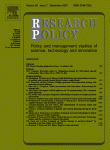 |
MANGEMATIN V., CALLON M., 1995, «Technological Competition, Strategies of the Firms and the Choice of the First Users: The Case of Road Guidance Technologies» ,
Research Policy, 24 (3 (mai)), p.441-458.
Accès au texte »
Based on an in-depth study of two different road guidance technologies, both under increasing returns to adoption, this paper is an attempt to elucidate the strategic game played by the producers and the first users before the introduction of the technologies onto the market. It shows that it is possible to endogenize the decisions made by the first users (who are chosen by the supplier) as much as those of the suppliers when they choose the first users. When identifying first users, firms evaluate their capacity to influence other potential adopters, a capacity which depends on their position in the social networks to which they belong. In order to enrol the first users, the producers of a technology develop various strategies, including standardization in voluntary standardization committees, pre-announcement, scientific legitimizing and even technological transformation of the product itself. Indeed, the first users who seem strategically vital by the sponsor of the first system are not necessarily the same as those targeted by the sponsors of the second technology. Thus, the degree of substitutability itself appears as an endogenous variable. This analysis provides a new basis for understanding technological competition and completes economic modelling of the competition. |
| |
MÉADEL C., 1995, «Les bricoleurs des ondes hertziennes» ,
Les Cahiers de Science & Vie, p.88-96.
30, décembre |
| |
MÉADEL C., 1995, «La télésurveillance, des technologies plurielles» ,
Vidéothèque de Paris, 20 décembre, 1995. |
| |
MÉADEL C., 1995, «Les publics de la radio-télévision» ,
GEHRA. |
| |
MÉADEL C., 1995, «La radio et ses territoires» ,
Sciences de la société, 35 (mai), p.113-122. |
| |
MÉADEL C., 1995, «The case of D2mac, study of a socio-technical controversy» ,
Europe in Turnmoil, IAMCR. 1995.
Accès au texte »
La télévision haute définition est une innovation qui constitue un terrain d’observation privilégié pour le sociologue. Son développement fait en effet intervenir des acteurs sociaux très diversifiés: chercheurs, techniciens, industriels, hommes des programmes, gouvernement, administrations… Traditionnellement, les recherches sociologiques sur les innovations portaient sur les conséquences du progrès technique davantage que sur les conditions de son apparition et les modalités de son développement. La recherche dont il est ici question vise à suivre un objet, ou plutôt un dispositif nouveau, en analysant ses différentes phases de développement et non en anticipant ses effets. |
| |
MÉADEL C., BOURDON J., 1995, Les Ecrans de la Méditerranée, histoire de la télévision provençale, 1954-1994 ,
Marseille, Jeanne Laffitte - INA. |
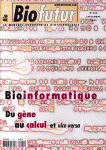 |
MUSTAR P., 1995, «Création d’entreprises : bilan de la décennie» ,
Biofutur, Spécial création d'entreprises, 150p.20-24.
Depuis le début des années quatre-vingt, plus d'une centaine de sociétés de haute technologie ont été créées par les chercheurs français. Quelles sont leurs caractéristiques? Quelles sont les conditions du succès ou de l'échec de ces entreprises et, notamment, de celles impliquées dans les biotechnologies ? |
| |
MUSTAR P., 1995, «Que sont devenus les chercheurs-entrepreneurs des années 80 ?» ,
Objectif PME, p.8-9.
25, janvier |
| |
MUSTAR P., 1995, «Les chercheurs tentés par l’aventure industrielle» ,
Le Monde,
Depuis le début des années 80, les relations entre la recherche publique et les entreprises se sont multipliées. Le CNRS, qui est, avec près de 27 000 salariés, le plus grand organisme public de recherche en Europe, n'avait en 1982 que 350 contrats de collaboration avec des industriels contre plus de 3 700 aujourd'hui. La création d'entreprises par des chercheurs s'est, elle aussi, fortement développée : tous les ans, en France, depuis le milieu de la décennie 80, une quarantaine d'entreprises sont fondées par des chercheurs dans les domaines de la biotechnologie, de l'intelligence |
| |
MUSTAR P., 1995, «Les chercheurs sont-ils de piètres entrepreneurs?» ,
Libération,
mardi 7 mars |
| |
MUSTAR P., 1995, «Les chercheurs aussi créent des entreprises» ,
La Tribune, mardi 28 novembrep.25. |
 |
MUSTAR P., 1995, «Chercheurs, entreprenez ! Vous êtes efficaces» ,
Technologies internationales, p.43-44.
12, mars |
| |
MUSTAR P., 1995, «Les entreprises créées par les chercheurs» ,
Formation par la recherche, p.10.
49, janvier |
| |
MUSTAR P., 1995, «Pour un Nasdaq européen» ,
Investir, |
| |
MUSTAR P., 1995, «Ces entreprises créées par des chercheurs» ,
La Recherche, p.89-91.
282, décembre |
| |
MUSTAR P., 1995, «The Creation of Enterprises by researchers: Conditions fo Growth and the Role of Public Authorities» ,
High Level Workshop on "SMEs: employment, innovation and growth", 16-17 june 1995. |
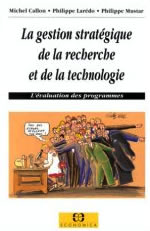 |
MUSTAR P., LARÉDO P., 1995, «La France et le modèle du garant» ,
in CALLON M., LARÉDO P., MUSTAR P., (ed.), La Gestion stratégique de la recherche, Paris, Economica, p.89-102. |
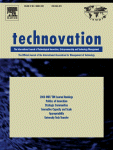 |
MUSTAR P., WALSH V., NIOSI J., 1995, «Small-Firm Formation in Biotechnology : a Comparison of France, Britain and Canada» ,
Technovation, 15 (5), p.303-327.
Accès au texte »
A comparison is made of the pattern of emergence, survival and growth of small biotechnology firms in France, Britain and Canada, using surveys in the three countries. These data are compared in turn with what is known about US biotechnology firms from the literature. Although the literature suggests that the appearance of new industries based on the emergence of new, small high-technology firms is a US phenomenon, evidence is presented of a nearly comparable pattern of small firm commercialisation of biotechnology in the three countries studied, relative to the size of the countries. However, the Canadian, French and British firms appeared 1–4 years later than the US firms, and are still somewhat weaker. While the US is generally held to have an entrepreneurial culture and a supportive private finance industry providing venture capital, which provide a stimulus to new high-technology firm formation, in the other three countries public policy — to a greater or lesser extent — made up for the relative lack of an entrepreneurial culture and private-sector finance. Differences in the financial institutions and instruments of public policy in all four countries are analysed. In each of them, networks of cooperation between other organisations, including established firms, also played an important role in the survival of the small biotechnology firms. Unlike the microelectronics experience, there was a complementary role for new and established, large and small firms, and the large established firms in end-user industries have not been pushed aside by the new dedicated biotechnology firms. Some of the new firms have grown and been successful; in some cases the complementary role has now been overtaken, and some of the small firms have been taken over by established ones. |
| |
PENAN H., COURET A., IGALENS H., 1995, La Certification ,
Paris, PUF. |
| |
PENAN H., MIGNOT H., 1995, «Comment tirer un meilleur parti de la normalisation ? Le Référentiel Normatif» ,
Revue française de gestion, 106 (nov.-déc.), p.77-85. |
| |
RABEHARISOA V., 1995, «Genèse et développement des controverses sur le risque climatique: la médiatisation de l’"effet de serre"» ,
ECLAT/ESCG, ADEME-Ministère de l'Environnement. |
| |
RABEHARISOA V., 1995, «Les forums mondiaux de l’innovation Sodexho. Un discours, une pratique, une organisation» ,
CSI - Association pour le Progrès du Management CNPF - Sodexho. |
| |
RÉMY E., 1995, «Apprivoiser la technique. Un débat public autour d’une ligne à haute tension» ,
Politix, 31 (Septembre), p.136-144. |
| |
RÉMY E., 1995, «L’élaboration d’un savoir naturaliste. Approche anthropologique d’un atlas.» ,
Etudes rurales, (137), p.55-72. |
| |
RÉMY E., 1995, «Débat public autour de la ligne THT Domloup/Les Quintes» ,
EDF/CSI. |
| |
RÉMY E., 1995, «"L’opinion publique" et la ligne à haute tension Saint-Rhenan/Les Abers» ,
CSI/EDF. |
| |
RÉMY E., LARÉDO P., 1995, «Environnement et recherche, thèmes prioritaires et thèmes émergents. Enquête préalable en vue de la préparation du questionnaire» ,
CSI/Association Descartes Ministère de la recherche. |
| |
ROCHER Y., GONARD T., 1995, «Le suivi de la stratégie des laboratoires en région Nord-Pas-de-Calais» ,
in CALLON M., LARÉDO P., MUSTAR P., (ed.), La Gestion stratégique de la recherche et de la technologie, Paris, Economica, p.141-159. |
| |
TEIL G., LATOUR B., 1995, «The Hume Machine; Can Associations Networks do more than Formal Rules» ,
Stanford Humanities Review, 4 (2), p.47-66. |
 |
VISSAC-CHARLES V., 1995, «Dynamique des réseaux et trajectoires de l’innovation. Application à la gestion de projet» ,
Thèse de doctorat, Paris, École Nationale Supérieure des Mines de Paris.
A partir des reflexions théoriques sur l'innovation en eéonomie, sociologie et gestion, une grille d'analyse du processus d'innovation est proposée. Le but est de schématiser la dynamique des réseaux technico-économiques pour caractériser de la facon la plus simple possible le processus d'innovation qui est alors décrit sous la forme de trajectoires construisant progressivement en trois phases l'identité du projet. La grille d'analyse est mise à l'épreuve sur deux projets industriels (un robot cueilleur de pommes et un four électrique à fondre les ferrailles) qui diffèrent par leur secteur d'application (agriculture et sidérurgie), les entreprises qui les pilotent (PMI et grand groupe industriel) et la nature de l'innovation (radicale et incrémentale). L'étude détaillée des deux projets, vus du côté des concepteurs et des usagers, montre la construction conjointe d'un objet et de sonenvironnement d'action et les liens entre modèles de création de technologie, modes d'organisation et processus de décision. Au travers de ces projets la grille d'analyse est confrontée aux autres méthodes d'évaluation et de pilotage des projets : complémentarités, points forts et limites respectives. Les résultats principaux de cette thèse sont , premièrement, une meilleure compréhension du processus d'innovation grâce au renouvellement du concept de phase employé en économie du changement technique ; deuxièmement, une aide à la gestion de projet sous ses trois formes : le pilotage du projet en temps réel, l'évaluation a posteriori des trajectoires de projets, la capitalisation de l'expertise facilitant l'organisation des projets futurs. |
| |
COURTIAL, J., 1994, Science cognitive et sociologie des sciences ,
Paris, Presses Universitaires de France. |
| |
LATOUR, B., LEMONNIER, P., 1994, De la préhistoire aux missiles ballistiques - L’intelligence sociale des techniques ,
Paris, La Découverte. |
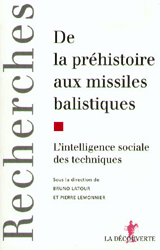 |
AKRICH M., 1994, «Comment sortir de la dichotomie technique/société. Présentation des diverses sociologies de la technique» ,
in LATOUR B., LEMONNIER P., (ed.), De la préhistoire aux missiles balistiques : l'intelligence sociale des techniques, Paris, La Découverte, p.105-131.
Accès au texte »
Bien que la question des techniques ait depuis longtemps suscité réflexions, commentaires, analyses de la part des chercheurs en sciences sociales, la sociologie des techniques, qui, sous son acception restreinte, est de création récente , n'apparaît pas aujourd'hui comme un champ de recherches aussi fortement structuré que celui de la sociologie des sciences. A l'image des techniques elles-mêmes, qui se prêtent à de multiples définitions, les angles d'attaque adoptés sont des plus divers, de la philosophie, à l'histoire en passant par l'économie, la sociologie ou l'anthropologie; notons que, par ailleurs, l'étanchéité disciplinaire n'est pas aussi forte que dans d'autres domaines: de plus en plus fréquemment, des sociologues s'appuient sur les travaux des historiens, des économistes citent ceux des sociologues, et vice-versa. Face à cette mosaïque de travaux qui rend vaine toute prétention à l'exhaustivité, nous avons pris le parti d'axer notre présentation autour d'un nombre restreint d'auteurs, choisis avec un double objectif: appartenant à des disciplines variées, leurs travaux donnent un aperçu des contributions de chacune d'entre elles; par ailleurs, leurs pensées sont suffisamment contrastées pour offrir un panorama aussi large que possible des thématiques, des problèmes posés, des débats auxquels ils ont donné lieu et des réponses qui ont été apportées, ce qui doit permettre de donner des points de repère par rapport auxquels situer un grand nombre d'autres travaux. |
| |
AKRICH M., MÉADEL C., 1994, «Les usagers des documents audiovisuels» ,
CSI-Bibliothèque Nationale de France. |
| |
BARBIER R., 1994, «Poids de l’opinion publique ou formes de présence du public ? Le cas des déchets”» ,
séminaire ADEME-CNFPT, 1994. |
| |
BARBIER R., 1994, «Etude sur l’implantation des usines d’incinération d’ordures ménagères en milieu urbain» ,
CSI-ADEME. |
| |
BARBIER R., LE BOURHIS J., 1994, «Principe de précaution et réseaux socio-technique» ,
Journées: Natures-Sciences-Sociétés, 1994. |
| |
BARRAL C., PATERSON F., 1994, «Association d’usagers dans le champ du handicap et de la maladie» ,
in RAVAUD J., FARDEAU M., (ed.), Insertion sociale des personnes handicapées : méthodologies d'évaluation, Paris, CTNERHI-INSERM, p.217-230. |
| |
CALLON M., 1994, «L’innovation technologique et ses mythes» ,
Annales des Mines, Gérer et Comprendre, (mars 1994), p.5-17. |
| |
CALLON M., 1994, «La recherche académique est-elle rentable?» ,
Libération, p.8.
Jeudi 27 octobre |
| |
CALLON M., 1994, «Four models for the dynamics of science» ,
in PETERSEN J., MARKLE G., JASANOFF S., PINCH T., (ed.), Handbook of Science and Technology Study, London, Sage, p.29-63. |
 |
CALLON M., 1994, «Is Science a Public Good. Fifth Mullins Lecture, Virginia Polytechnic Institute, 23 March 1993» ,
Science, Technology & Human Values, 19 (4), p.395-424.
Should governments accept the principle of devoting a proportion of their resources to funding basic research? From the standpoint of economics, science should be considered as a public good and for that reason it should be protected from market forces. This article tries to show that this result can only be maintained at the price of abandoning arguments traditionally deployed by economists themselves. It entails a complete reversal of our habitual ways of thinking about public goods. In order to bring this reversal about, this article draws on the central results obtained by the anthropology and sociology of science and technology over the past several years. Science is a public good, not because of its intrinsic properties but because it is a source of diversity and flexibility. |
| |
CALLON M., BELL G., 1994, «Réseaux technico-économiques et politique scientifique et technologique» ,
STI-OCDE, 14p.67-127. |
| |
CALLON M., LARÉDO P., MUSTAR P., 1994, «Panorama de la science française» ,
La Recherche, 25p.378-383.
264, avril 1994 |
| |
CHARVOLIN F., 1994, «L’invention de la biosphère, les fondements d’une méthode.» ,
Natures, Sciences, Sociétés, 2p.21-28.
1 |
| |
CLAVERIE E., 1994, «Procès, Affaire, Cause. Voltaire et l’innovation critique.» ,
Politix, (26), p.76-85. |
| |
COURTIAL J., 1994, «Introduction à la sociologie de la traduction et à la notion d’acteur réseau» ,
in COURTIAL J., (ed.), Science cognitive et sociologie des sciences, Paris, Presses Universitaires de France, p.13-24. |
| |
COURTIAL J., 1994, «La montée des réseaux en sciences humaines et les limites des méthodes usuelles d’analyse des données» ,
in COURTIAL J., (ed.), Science cognitive et sociologie des sciences, Paris, Presses Universitaires de France, p.32-41. |
| |
COURTIAL J., 1994, «A coword analysis of scientometrics» ,
Scientometrics, 31 (3), p.251-260. |
| |
COURTIAL J., 1994, «Analyse d’un fragment de texte de Freud et d’un fragment de texte d’Einstein en acteurs-réseaux» ,
in COURTIAL J., (ed.), Science cognitive et sociologie des sciences, Paris, Presses Universitaires de France, p.68-84. |
| |
COURTIAL J., 1994, «L’application des réseaux neuronaux formels aux bases de données documentaires» ,
in COURTIAL J., (ed.), Science cognitive et sociologie des sciences, Paris, Presses Universitaires de France, p.173-184. |
| |
COURTIAL J., 1994, «Les réseaux construits par les articles scientifiques» ,
in COURTIAL J., (ed.), Science cognitive et sociologie des sciences, Paris, Presses Universitaires de France, p.25-31. |
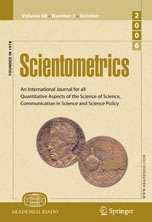 |
COURTIAL J., CAHLIK T., CALLON M., 1994, «A model for social interaction between cognition and action through a key-word simulation of knowledge growth» ,
Scientometrics, 31 (2), p.173-192.
Considers the question of knowledge construction as one of cognition in relation to action. M. Callon et al (1991) have suggested interactive processes mixing both cognitive & social aspects of knowledge or technology. Both actors & interactions can usually be described by texts, & namely, by words. Thus knowledge development can be described through key-words network development. Offered here are simulations for knowledge development according to a local positive feedback rule within small sets of word associations. In comparison with real data, the simulation results are fairly good. This approach leads to a general & very simple interaction model describing knowledge development in which, as opposed to usual cybernetics, actors constantly change, building a common scenario in relation to a mutual definition rule. |
| |
COURTIAL J., LAVILLE F., SIGOGNEAU A., CALLON M., 1994, «La dynamique des réseaux scientifiques et techniques: essai de modélisation» ,
in COURTIAL J., (ed.), Science cognitive et sociologie des sciences, Paris, Presses Universitaires de France, p.185-202. |
| |
COURTIAL J., SIGOGNEAU A., 1994, «L’analyse des articles scientifiques par la méthode des mots associés : le cas de l’environnement» ,
in COURTIAL J., (ed.), Science cognitive et sociologie des sciences, Paris, Presses Universitaires de France, p.85-108. |
| |
DE LAAT B., 1994, «Relatie wetenschap-markt gaat hele samenleving aan» ,
Chemisch Weekblad, 90p.2.
9 |
| |
DUBUISSON S., 1994, «Les mots pour le faire» ,
MédiasPouvoirs, p.313-314.
31-32, 4ème trimestre 1994 |
| |
DUBUISSON S., CRÉPON B., KABLA I., 1994, «Problèmes de définition et de mesure de l’innovation à la lumière des travaux en économie, en sociologie et dans les sciences de gestion» ,
Séminaire innovation et performances des firmes. Rapport de la commission mesure et définition de l'innovation.. 16 et 17 mai 1994. |
| |
DUBUISSON S., HENNION A., 1994, «Le design: l’objet dans l’usage. Les relations objet-usage-usager dans le travail de trois agences» ,
Centre de Sociologie de l'Innovation. |
| |
GOMART E., 1994, «Comprendre la relation entre allopathie et homéopathie dans la consultation du médecin homéopathe» ,
Communication au colloque "Les Médicaments de l'Esprit", 22 octobre 1994. |
| |
HENNION A., 1994, «L’amateur, la technique et le marché: de quelques saintes horreurs du musicien classique» ,
Marsyas, p.9-12.
29, mars 1994 |
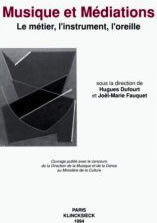 |
HENNION A., 1994, «Institution et marché: représentations musicales, à propos d’une audition de variétés» ,
in DUFOURT H., FAUQUET J., (ed.), Musique et médiations: le métier, l'instrument, l'oreille, Paris, Aux Amateurs de Livres/Klincksieck, p.181-207. |
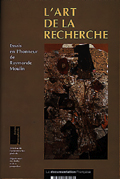 |
HENNION A., 1994, «La sociologie de l’art est une sociologie du médiateur» ,
in MENGER P., PASSERON J., (ed.), L'art de la recherche. Essais en l'honneur de Raymonde Moulin, Paris, La documentation française, p.169-188. |
| |
JACQ F., 1994, «Bâtir une "électronique française" : image de l’électronique et politique scientifique, autour de la CSF 1945-1965.» ,
1994. |
| |
JACQ F., 1994, «La science lourde comme mode de pratique scientifique : préjugés et réalités» ,
Annales des Mines, p.41-46.
avril 1994 |
| |
JACQ F., 1994, «Science et pouvoir : aux origines d’un contrat. A propos de l’ouvrage de Steven Shapin et Simon Schaffer «Léviathan et la pompe à air».» ,
Annales des mines, Gérer et comprendre (34), p.62-63. |
| |
LARÉDO P., 1994, «Les politiques européennes de R&D au milieu du gué» ,
in SACHWALD F., (ed.), Les défis de la mondialisation, Paris, Masson / Institut Français des Relations Internationales, p.367-422. |
| |
LARÉDO P., 1994, «Vers une Europe de la recherche et des techniques?» ,
in SCHAFFAR L., ESTERLÉ A., (ed.), Organisation de la recherche et conformisme scientifique, Paris, PUF - Nouvelle Encyclopédie Diderot, p.121-154. |
| |
LARÉDO P., BARBIER R., 1994, «Les ordures ménagères, autant un problème de politique locale que de "bonne" gestion» ,
Gestion des déchets municipaux, 28 septembre, 1994. |
| |
LARÉDO P., MUSTAR P., 1994, «Les institutions face aux stratégies des laboratoires de recherche» ,
Politiques et Management Public, 12 (2 (juin)), p.99-114. |
| |
LATOUR B., 1994, «Pragmatogonies. A Mythical Account of How Humans and Nonhumans Swap Properties» ,
American Behavioural Scientist, 37 (6), p.791-808. |
| |
LATOUR B., 1994, «Véridiques et menteurs» ,
Libération, p.7. |
| |
LATOUR B., 1994, Louis Pasteur, une science, un style, un siècle ,
Paris, Perrin. |
| |
LATOUR B., 1994, Jamais fomos modernos ,
Rio de Janeiro, Editoria 34. |
| |
LATOUR B., 1994, «Les objets ont-ils une histoire? Rencontre de Pasteur et de Whitehead dans un bain d’acide lactique» ,
in STENGERS I., (ed.), L'Effet Whitehead, Paris, Vrin, p.197-217. |
| |
LATOUR B., 1994, «Esquisse d’un parlement des choses» ,
Ecologie Politique, (10), p.97-115. |
| |
LATOUR B., 1994, «On Technical Mediation ; Philosophy, Sociologie, Genealogy» ,
Common Knowledge, |
| |
LATOUR B., 1994, Nikoga Ne Cme Bili Moderni ,
Sofia, |
| |
LATOUR B., 1994, Wij zijn nooit modern geweest ,
Amsterdam, Van Gennep. |
| |
LATOUR B., 1994, «Note sur certains objets chevelus» ,
Nouvelle Revue d'Ethnopsychiatrie, p.21-36.
27 |
| |
LATOUR B., 1994, «Une sociologie sans objet? Remarques sur l’interobjectivité» ,
Sociologie du Travail, 4 (n° spécial sur la cognition située), p.587-606. |
| |
LAW J., AKRICH M., 1994, «On Customers and Costs: a Story from Public Sector Science» ,
Science in Context, 7 (3), p.539-561. |
| |
LE BOURHIS J., 1994, «Précaution et réseaux socio-techniques» ,
Natures-Sciences-Sociétés, 1994. |
| |
MALLARD A., 1994, «L’instrumentation de réparation automobile. Pratiques techniques - Réseaux technico-économiques - Métrologie et normalisation» ,
Ministère de la Culture - Mission du Patrimoine Ethnologique. |
| |
MALLARD A., DUBUISSON S., 1994, «Le technique et la culture : essai autour de quelques objets» ,
Communication à l'Université d'Eté "Les pratiques artistiques et Culturelles des établissements de formation professionnelle pour les jeunes. 29 Août 1994, Gouvieux.. |
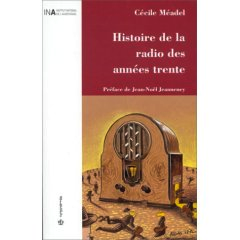 |
MÉADEL C., 1994, Histoire de la radio des années trente. De l’auditeur au sans-filiste ,
Paris, Economica-Anthropos.
Cet ouvrage raconte comment un passe-temps partagé par une poignée d'amateurs à la fin de la Première Guerre mondiale devient en moins de vingt ans un loisir de masse. A la croisée de l'histoire politique et de l'histoire culturelle, il montre à la fois l'intérêt croissant du monde politique pour cette nouvelle tribune et la manière dont, jour après jour, se fabriquent les programmes, les professionnels et les audiences. Au cours des années trente, la radio se transforme en chambre d'écho de la vie publique, en sentinelle de l'actualité, en tam-tam de notre vie collective. Cet ouvrage est issu d'une thèse en histoire contemporaine. |
| |
MÉADEL C., 1994, «Radio et télévision, un état des recherches» ,
Médiascopie,
7, avril |
| |
MÉADEL C., 1994, «La gauche française et les médias avant la guerre» ,
Cahiers d'Histoire de la radio, p.13-29.
40, mars-mai |
| |
MÉADEL C., 1994, «Traduction. Emilio Pucci, La transmission par fac-similé : Invention et premières applications» ,
Réseaux, 12 (63), p.125-139.
Accès au texte » |
| |
MÉADEL C., 1994, «L’innovation mise à l’épreuve. Une expérience de télévision payante» ,
Paris, CSI/Lyonnaise des Eaux-Dumez.
Accès au texte »
Il ne suffit pas d’inventer, il faut encore capter des clients, convaincre des partenaires de s’emparer de l’idée ou du dispositif technique. Or voici que l’innovation étudiée ici devance largement ce discours : nos innovateurs sont convaincus, certes par la qualité et la valeur de leur dispositif ; mais ils mettent surtout leur énergie à construire des réseaux dans lesquels il va pouvoir s’insérer, ils accordent la première place à la manière de le commercialiser, ils mettent en place de multiples tests, ils travaillent à convaincre les différents partenaires de tous les avantages qu’il peut apporter. Aurions-nous découvert des innovateurs parfaits — nous voulons dire plus sociologues que techniciens ? Notre innovation est un service : le monde des services serait-il plus sensible à la construction des marchés que celui des techniques et des biens ? Dans le cadre d’une recherche collective sur l’innovation de service dans différents groupes, ce travail analyse une expérience de télévision en “pay per view”, développée par la filiale Communications de la Lyonnaise des Eaux-Dumez. |
| |
MÉADEL C., 1994, «Les belles images de la haute définition. Une histoire du D2Mac.» ,
Annales des Mines, Gérer et comprendre, (34), p.18-29. |
| |
MÉADEL C., 1994, «"France Culture", "Le Club d’essai ou la création radiophonique", "Radioscopie"» ,
in WINOCK M., (ed.), Dictionnaire des intellectuels, Paris, Seuil, |
| |
MÉADEL C., 1994, «Between corporatism and representation : the birth of a public radio service in France» ,
Médias, Culture and Society, 16 (4), p.609-623.
Accès au texte »
Loisir privé de quelques amateurs épars, la radio s’est transformée entre les deux guerres mondiales en une affaire publique. En fait, ces images sont elles-même caricaturales; dès 1917, l’Etat légifère, régule, réprime. En 1939, les stations privées vivent encore et même s’enrichissent largement sans que la puissance publique s’en mêle quasiment. Dès la naissance de la radio, il y a eu intervention de l’Etat, simplement les espaces considérés comme appartenant à sa sphère d’intervention ont changé. A la veille de la guerre, en 1939, les programmes des stations publiques relèvent en grande partie de l’Etat, la part des émissions réalisés par des non-professionnels est devenue minime. Mais plus que l’organisation du travail de programmation, c’est le rôle attribué au gouvernement qui a été modifié. L’opinion publique, ou du moins son relais dans la presse et au Parlement, lui fait grief de la mauvaise qualité des émissions; c’est au gouvernement que l’on demande d’assurer l’égalité des partis devant le micro, d’organiser les campagnes électorales, d’assurer la tenue morale des programmes, de vérifier qu’ils sont audibles par toute la famille… C’est désormais lui qu’on tient pour comptable des «couacs» de l’orchestre ou des ratages des radio-reportages. Pourtant on ne peut pas dire que l’on est passé d’un mode d’organisation à l’autre. Les deux types de logique, publique et privée, sont présents dès l’origine. L’une défend une conception du politique (sommairement, c'est celle du suffrage universel où les citoyens déléguent à des représentants l'exécution du pouvoir) tandis que l’autre développe une conception artisanale de la radio où toutes les personnes concernées (et elles seules) participent à un titre ou à un autre à l'exécution d'une tâche donnée. Dans cette dernière, la représentation n’a pas de sens, puisque tous les intéressés interviennent nécessairement dans l’action; la radio est une affaire privée et l’Etat ne doit intervenir que pour gérer les relations internationales (essentiellement la répartition des fréquences) et éventuellement les investissements lourds. Dans la conception politique, chaque auditeur -et même chaque Français- est concerné et délègue à quelques élus mandat pour agir en son nom; dans la conception privée, ne sont concernées qu'un petit nombre de personnes, qui toutes s'attellent à la tâche commune.
The emergence of public radio in France is examined. Early radio in France was largely an activity of the private sector. The state regulated technical areas of broadcasting, eg, transmission systems, but individual stations were given carte blanche authority in making decisions about programming. Complaints of the French public over poor quality programs, uneven political programming, & concerns over the moral standards of the nation, however, prompted the increasing intrusion of the government into the public radio broadcasting arena, culminationg in the radio elections of 1935 & 1937 through which the public was given the right to elect representatives to the management committee of twelve of the French public radio network stations. By 1939 the majority of6/02/08e jurisdiction of the state. |
| |
MÉADEL C., BOURDON J., 1994, «Les nouvelles figures de l’opinion» ,
De Gaulle et les médias, 1944-1969, Paris, Plon, |
| |
MÉADEL C., BOURDON J., LÉVY M., 1994, «De l’usage des bases de données INA par le chercheur» ,
Dossiers de l'audiovisuel, 54p.80-82.
Accès au texte »
Les bases de données ouvrent à deux types de documentation, primaires et secondaires. Ce second type est le plus souvent utilisé par les chercheurs pour leurs recherches bibliographiques, pour sortir des articles ou des ouvrages, pour faire un état des travaux ou confronter leurs recherches à celles d'autrui. Les bases de données de l'INA relèvent elles du second type, elles leur donnent accès, non à des travaux, mais à des informations brutes, à des fiches sur des émissions de radio et de télévision. Elles sont l'équivalent d'un répertoire ou d'un catalogue d'archives spécialisées, mais, dans l'ensemble, beaucoup plus riche d'informations qu'un simple catalogue. |
| |
MÉADEL C., MASCOLO C., 1994, «L’importance des documents d’accompagnement» ,
Dossiers de l'audiovisuel, 54p.74. |
| |
MIALET H., 1994, «Les pratiques de l’invention» ,
in PROST R., (ed.), Conception, Création, Invention: Approches Interdisciplinaires, Paris, L'Harmattan, |
| |
MUSTAR P., 1994, «Genèse et développement du programme d’élevage du loup et de la daurade» ,
CSI-IFREMER. |
| |
MUSTAR P., 1994, «L’entrepreneur schumpeterien a-t-il jamais existé ?» ,
Gérer et Comprendre, Annales des Mines, 34 (mars), p.30-37.
Etrange paradoxe. Les économies soulignent le rôle crucial de la création d'entreprise dans le développement économique mais ne semblent plus, à quelques exceptions près, s'y être intéressés depuis les années 30 ! L'entrepreneur-innovateur correspondrait-il donc toujours à l'image héroïque et stéréotypée que décrit Joseph Schumpeter, celle d'un "rebelle isolé et créatif" ? |
| |
MUSTAR P., 1994, Science et innovation. Annuaire raisonné de la création d’entreprises par les chercheurs ,
Paris, Economica. |
| |
MUSTAR P., 1994, «La politique d’innovation en France : le colbertisme entamé» ,
in SACHWALD F., (ed.), Les défis de la mondialisation, Paris, Masson / Institut Français des Relations Internationales, p.321-365. |
| |
MUSTAR P., 1994, «Les industries modernes ne peuvent plus se passer de la recherche universitaire. C’est nouveau!» ,
Le Temps Stratégique, p.42-53. |
 |
MUSTAR P., 1994, «Organisation, technologies et marchés en création : la genèse des PME high tech» ,
Revue d'Economie Industrielle, (67), p.156-174.
Accès au texte »
Ces dernières années, les recherches et les enquêtes portant sur les petites entreprises innovantes se sont multipliées. De nombreux auteurs ont montré l'importance de la contribution de ce type d'entreprises aux processus de création technologique et de façon plus générale à la création d'emplois ou au développement économique. L'apparition d'entrepreneurs-innovateurs a été associée à la possibilité de sortie de la crise ou à l'apparition d'une croissance renouvelée, créatrice d'emplois et de marchés. Si les études sont abondantes, c'est parce que cet objet se rattache à de multiples enjeux théoriques. La littérature relative aux petites entreprises technologiques (Mustar, 1994) s'intéresse à plusieurs thèmes récurrents : qui, des grands groupes ou des petites entreprises, sont les champions de l'innovation, quel est le rôle des nouvelles entreprises dans le développement régional et dans la dynamique des systèmes locaux d'innovation, quelles sont les performances de ces entreprises en matière d'exportation, quels sont les déterminants de leur localisation... |
 |
PATERSON F., BARRAL C., 1994, «L’Association Française contre les Myopathies : trajectoire d’une association d’usagers et construction associative d’une maladie» ,
Sciences Sociales et Santé, 12 (2), p.79-111. |
| |
PENAN H., 1994, «Analyse dynamique des réseaux de cocitations d’articles scientifiques» ,
in COURTIAL J., (ed.), Science cognitive et sociologie des sciences, Paris, Presses Universitaires de France, p.124-147. |
| |
PENAN H., 1994, «L’analyse stratégique du portefeuille technologique» ,
Revue Française de Gestion, 97 (Mars-mai), p.5-17. |
| |
PENAN H., IGALENS H., 1994, La normalisation ,
Paris, Que sais-je ? PUF. |
| |
RABEHARISOA V., 1994, «French Media and Global Climate Change. Instituting Extended Controversies» ,
Society for Social Studies of Science Meeting, 1994. |
| |
ROCHER Y., BROCARD M., 1994, «Rapport sur l’innovation dans les PMI de la région Provence Alpes Côte d’azur» ,
|
| |
ROCHER Y., BROCARD M., 1994, «L’innovation dans les régions. Les chiffres-clés de l’innovation» ,
Ministère de l'Industrie. |
| |
SIGOGNEAU A., 1994, «Les réseaux scientifiques dans le domaine de l’environnement» ,
XIIIth World Congress of Sociology: 'Contested Boundaries and Shifting Solidarities', 1994. |
| |
SIGOGNEAU A., COURTIAL J., TURNER W., 1994, «Scientific Environment of a Research Unit Through Journals» ,
Science and Science of Science, 3 (5), p.85-96. |
| |
WALSH V., 1994, «The Evaluation of Design» ,
International Journal of Technology Management, (Special issue edited by Jacques de Bandt and Dominique Foray). |
| |
WALSH V., CHESNAIS F., 1994, «Co-operative alliances in Biotechnology: A passing trend or a new phenomenon in capitalist economies ?» ,
Technology Analysis and Strategic Management, |
| |
HENNION, A., 1993, 1789-1989 : Musique, histoire, démocratie ,
Paris, Ministère de la Culture/Maison des Sciences de l'Homme. |
| |
AKRICH M., 1993, «Les formes de la médiation technique» ,
Réseaux, (60, juillet-août), p.87-98.
Accès au texte »
Dans cet article, l'auteur s'interroge sur la pertinence du concept de médiation, tel qu'il a été utilisé par un certain nombre d'auteurs, pour l'analyse des relations techniques/ société. Ce qui l'amène, à partir d'un certain nombre d'exemples, à analyser la médiation technique comme le résultat des opérations de spécification qui sont à l'œuvre dans l'innovation et produisent de façon indissociable des savoirs, des dispositifs techniques et des formes d'organisation. |
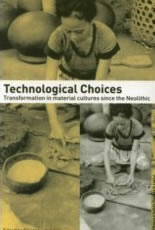 |
AKRICH M., 1993, «Essay of Technosociology : a Gasogene in Costa Rica» ,
in LEMONNIER P., (ed.), Technological choices. Transformation in material cultures since the Neolithic, Londres, Routledge, p.289-337.
Accès au texte » |
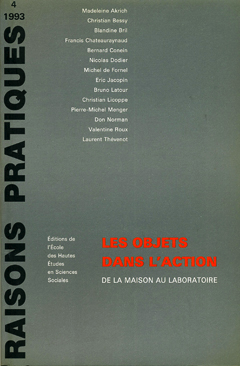 |
AKRICH M., 1993, «Les objets techniques et leurs utilisateurs, de la conception à l’action» ,
Raisons pratiques, numéro spécial "Les objets dans l'action", p.35-57.
Accès au texte »
En combinant des ressources issues de la sociologie de la traduction et de la sociologie de l'action, l'auteur propose dans cet article un certain nombre de concepts permettant l'analyse de l'action avec des dispositifs techniques. Celle-ci peut être envisagée selon trois modalités qui effectuent chacune le lien entre contenus techniques et compétences des acteurs : traduction, coopération, coordination. L'article débouche sur une analyse des conditions d'infélicité dans l'action avec les dispositifs techniques. |
 |
AKRICH M., 1993, «Inscription et coordination socio-techniques» ,
Thèse de doctorat, Paris, École Nationale Supérieure des Mines de Paris.
Dans les sciences sociales, l'analyse des relations entre techniques et sociétés s'est organisée autour de deux questions principales, d'un côté la question de ce que font les techniques, de la manière dont elles participent au lien social, le renforcent, se substituent à lui ou au contraire autorisent sa constitution autonome, et de l'autre, la question de ce qui fait les techniques, de la manière dont leur émergence et leur mise en forme peuvent etre rapportées a des déterminants autres que purement techniques. En s'appuyant sur la sociologie de la traduction (Callon, Latour) cette thèse s'est donné comme objectif de construire des voies de passage entre ces deux problematiques, et a essayé de poser les bases d'une sociologie des techniques qui ne se ramène pas simplement à une sociologie du développement technique mais effectue la liaison entre l'analyse des processus d'innovation et celle des usages des techniques. Elle debouche d'une part, sur une description des processus d'innovation et d'appropriation des techniques comme spécification conjointe des dispostifs et de leur environnement et d'autre part, sur la mise en évidence de différents régimes de traduction qui permettent de comprendre comment les descriptions que donnent les acteurs des dispositifs techniques peuvent s'articuler les unes aux autres en gardant leur spécificité ; ceci conduit à déplacer la question des formes de déterminisme (technique, social) et à poser le problème des formes de coordination, c'est-à-dire des modalités par lesquelles les acteurs sont simultanément associés et dissociés. Le travail s'appuie sur des études de terrain détaillées qui concernent des technologies énergetiques variées dans les pays en développement (Algerie, Côte d'Ivoire, Sénégal). |
| |
BARBIER R., LARÉDO P., 1993, «"Il y a du neuf dans les poubelles..." Caractérisation de onze opérations innovantes de gestion des déchets» ,
CSI-ADEME. |
| |
BASTIDE F., 1993, «De iconografie van wetenschappelijke teksten» ,
Kennis en Methode, XVII (1), p.106-137. |
| |
CALLON M., 1993, «Recherche et Innovation en France» ,
Commissariat Général du Plan. |
| |
CALLON M., 1993, «Comment décider en situation d’ignorance ?» ,
in BEAUD M., BEAUD C., BOUGUERRA M., (ed.), L'état de l'environnement dans le monde, Paris, La Découverte, p.294-296. |
 |
CALLON M., COURTIAL J., PENAN H., 1993, La scientométrie ,
Paris, PUF. |
| |
CALLON M., LARÉDO P., 1993, «L’élan européen» ,
Autrement, Série Sciences en Société, Science, Pouvoir et Argent, p.163-169.
7, Janvier |
| |
CAMBROSIO A., LIMOGES C., COURTIAL J., LAVILLE F., 1993, «Historical scientometrics? Mapping over 70 years of biological safety research with the co-words analysis» ,
Scientometrics, 27 (2), p.119-143. |
| |
CASSIER M., 1993, «Les contrats de recherche entre laboratoires publics et entreprises : une nouvelle forme d’organisation de la recherche?» ,
Les biologistes entre l'Etat et l'industrie : des usages à la production du vivant., 1993. |
| |
CASSIER M., 1993, «Contrats et coopérations de recherche entre université et industrie : l’étude de trois centres de biotechnologie à Compiègne, Toulouse et Marseille.» ,
MRE. |
| |
CHARVOLIN F., 1993, «La mise en rapport des pollutions et nuisances (1964-67) : inscriptions, affaires publiques et changement d’échelle environnemental en France.» ,
in CRESAL., (ed.), Les raisons de l'action publique, Paris, L'Harmattan, p.137-153. |
| |
CHARVOLIN F., 1993, «Le traitement administratif de l’innovation, le cas du Ministère de l’Equipement.» ,
Revue française des affaires sociales, 47 (3), p.117-136. |
| |
CLAVERIE E., 1993, «Un cas de miracle contemporain» ,
La Resercha Folklorica, numéro spécial sur le miracle, 2p.190-222. |
| |
CLAVERIE E., 1993, «Le travail biographique des pèlerins» ,
in BELMONT N., LAUTMAN F., (ed.), Anthropologie religieuse de l'Europe, Paris, Editions du SEDES, |
| |
COURTIAL J., 1993, «Information Scientifique et Technique et Lien Social» ,
Communication et Nouvelles Technologies, p.185-206. |
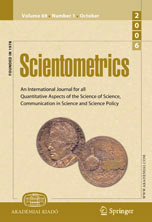 |
COURTIAL J., CALLON M., SIGOGNEAU A., 1993, «The use of patents titles for identifying the topics of invention and forecasting trends» ,
Scientometrics, 26 (2), p.231-242.
By assimilating problems to key words & using co-word analysis with the Leximappe program, it is possible to calculate, for a set of scientific articles indexed by key words & corresponding to a given field, association values for each pair of key words, clusters of the most tightly related words, & centrality & density indexes for each cluster. When co-word analysis is applied specifically to patents through the WPIL patent database, normalized title words illuminate a given field by providing qualitative information about themes, quantitative information about the relative weight of themes, & even information about the strategic aspects of themes. In some cases, co-word analysis is able to indicate the future of themes, which would certainly aid forecasting & management studies, & to provide information about potential technological growth processes. |
| |
COURTIAL J., DE LOOZE M., PENAN H., 1993, «Méthodologie de Veille Technologique : application au domaine de la fixation de l’azote» ,
Economie et Sociologie Rurales, "Méthodes et Instruments", (4). |
| |
COURTIAL J., FLORIN A., KHOMSI A., 1993, «Une méthode pour étudier les tendances de la recherche en sciences humaines : un exemple de psychologie de l’enfant et de l’éducation» ,
Congrès annuel de la Société Française de Psychologie, 1993. |
| |
DE LAAT B., 1993, «Actor-netwerken en strategische planning (en hollandais)» ,
SISWO AiO-OiO Marktdag, 19 decembre, 1993. |
| |
DE LAAT B., 1993, «Analyse van de bruikbaarheid van technologiestudies bij verkenningen; een eerste aanzet» ,
STB/TNO (Apeldoorn, Pays-Bas). |
| |
DE LAAT B., LARÉDO P., 1993, «La programmation stratégique des technologies de l’environnement. Rapport intermédiaire pour l’Ademe» ,
CSI-ADEME. |
| |
DUBUISSON S., 1993, «La forme et le sens» ,
Workshop "Historical Epistemology", 29 octobre-3 novembre, 1993. |
| |
GOMART E., 1993, «Esquisse d’un modèle pour comprendre la pratique des médecins homéopathes: l’articulation entre deux cadres, allopathie et homéopathieID - 988» ,
|
 |
HENNION A., 1993, La passion musicale. Une sociologie de la médiation ,
Paris, Métailié.
La musique introduit à une sociologie de la médiation comme double dépassement d’une pensée critique, qui réduit les objets au social, et d’une pensée naturelle qui n’accepte d’objets que si elle les arrache au social. Non pas la musique d’un côté, le public de l’autre et entre eux des moyens asservis : tout se joue chaque fois au milieu, dans la réussite d’un passage. |
| |
HENNION A., 1993, «La médiation musicale» ,
Aquarium, "Musique et Politique", p.17-25.
11/12 |
| |
HENNION A., 1993, «Deux musiques au lieu d’une !» ,
Marsyas, Revue de pédagogie musicale et chorégraphique, p.12-18.
25, mars |
| |
HENNION A., 1993, «Histoire de l’art: leçons sur la médiation» ,
Réseaux, CNET, (60), p.9-38.
Accès au texte »
Sans pour autant négliger comme le font les interactionnistes la nécessité pour les acteurs de fonder en principe leur action, et donc leur compétence à le faire, le problème est d'analyser comment ils construisent leur monde, principes compris, alors que fait défaut le réfèrent unanime qui leur a si longtemps facilité la tâche, au point que même les chercheurs en ont la nostalgie. |
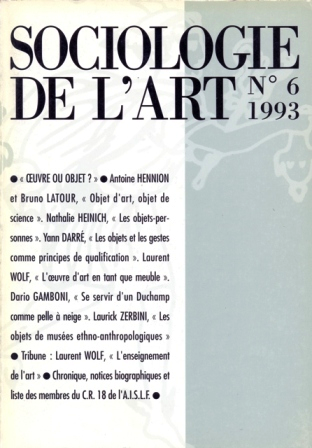 |
HENNION A., LATOUR B., 1993, «Objet d’art, objet de science. Note sur les limites de l’anti-fétichisme» ,
Sociologie de l'art, (6), p.7-24.
Accès au texte »
La pensée critique se définit par son anti-fétichisme. Formidable marteau pour briser les idoles, cette ressource ne permet pas de comprendre ce que font les objets, de peser leur rôle exact — ni en science, ni en art. Comment aller plus loin, attribuer plus aux objets, que le rôle passif d’écrans sur lesquels se projette la société, inversant l’origine sociale réelle du pouvoir des fétiches ? La comparaison entre la science et l’art permet de revenir sur le rapport des sciences sociales aux objets qu’elles croisent sur leur chemin. L’article propose d’emprunter à la sociologie de la science l’impossibilité d’évacuer les objets en en faisant soit des fétiches soit des choses naturelles; et à l’histoire et la sociologie de l’art leur talent pour suivre des médiateurs hétéroclites, permettant de relier sans discontinuité les humains et les choses. |
| |
HENNION A., MÉADEL C., 1993, «In the Laboratories of Desire» ,
Reseaux. The French Journal of Communication, 1 (2, Autumn), p.169-192.
Accès au texte »
What makes us desire objects? In the attempt to find a practical answer to this fundamental question on the subject and object of desire, the authors consider the organization of work in advertising agencies. They identify three procedures which together constitute advertisers' solution to the problem of communication between the product and the market. The to and fro movement which makes one attribute desire to either the object or the subject, is replaced by a series of intermediary screens on which the two components of the supply /demand equation are constantly refashioned. |
| |
HENNION A., PETERC A., 1993, «Une réforme vue de la base. La réforme de la distribution dans un centre d’EDF-GDF Services» ,
Centre de Sociologie de l'Innovation. |
| |
JACQ F., 1993, «Electronique-informatique, un mariage difficile? Les recherches sur les mémoires au CENG 1955-1975» ,
in INRIA., (ed.), Actes du 3ème colloque sur l'histoire de l'informatique, Paris, |
| |
KARPIK L., 1993, «Le conflit entre morale et marché» ,
Séminaire CONDOR, 1993. |
| |
LAGRANGE P., 1993, «La sociologie à l’épreuve des parasciences» ,
Ethnologie Française, 23 (3), p.311-312. |
| |
LAGRANGE P., 1993, «Les extraterrestres rêvent-ils de preuves scientifiques?» ,
Ethnologie française, 23 (3), p.428-458. |
| |
LAGRANGE P., BESSY C., CHATEAURAYNAUD F., 1993, «Une collection inqualifiable. La controverse sur l’authenticité de Glozel» ,
Ethnologie française, 23 (3), p.399-426. |
| |
LARÉDO P., 1993, «L’Evaluation en Transition : Trois Modèles pour l’Institutionalisation d’une Activité Routinière de Management» ,
Colloque Evaluation, Social Science and Public Policy, 1993. |
| |
LARÉDO P., BREITENSTEIN A., PARIS A., 1993, «Collaborations internationales et innovation, les réseaux promus par les projets EUREKA» ,
CSI et Ecole Centrale de Paris. |
| |
LARÉDO P., MUSTAR P., 1993, «Les institutions face aux Stratégies des Laboratoires de Recherche» ,
Administrer les Savoirs, PMP. 1993. |
| |
LARÉDO P., MUSTAR P., 1993, «Les Trajectoires des Doctorants et la Dissemination des Savoirs. Rapport dans le cadre du programme international EPIC sur les effets industriels des programmes communautaires» ,
CCE Programme SPEAR. |
| |
LARÉDO P., MUSTAR P., 1993, «A socio-economic approach to state intervention in innovation» ,
The 1993 ASEAT Conference, 1993. |
| |
LARÉDO P., MUSTAR P., CALLON M., 1993, «Caractériser le profil stratégique des laboratoires de recherche, la méthode de la rose des vents» ,
Les Cahiers de l'ADEST, p.141-149. |
| |
LARÉDO P., ORMALA E., GEORGHIU L., 1993, «The Economic Effects of the EUREKA Initiative» ,
EUREKA, Paris. |
| |
LARÉDO P., VINCK D., CRANCE P., RABEHARISOA V., 1993, «Caractérisation des réseaux de collaboration industrielle induits par le programme JOULE» ,
CCE Service de l'évaluation. |
| |
LATOUR B., 1993, La clef de Berlin et autres leçons d’un amateur des sciences ,
Paris, La Découverte. |
| |
LATOUR B., 1993, «La sociologie des sciences est-elle de gauche ?» ,
Futur Antérieur, p.99-110.
19-20 |
| |
LATOUR B., 1993, «Arrachement ou attachement à la nature ?» ,
Ecologie Politique, (5, hiver), p.15-26. |
| |
LATOUR B., 1993, «Dove sono le masse mancanti? Sociologica di alcuni oggetti di uso comune» ,
Intersezioni, XIIIp.221-255.
2 |
| |
LATOUR B., 1993, «Pasteur on Lactic Acid Yeast - a Partial Semiotic Analysis» ,
Configurations, 1 (1), p.127-143. |
| |
LATOUR B., 1993, «Etnografia de un caso de "alta tecnologia" : sobre Aramis» ,
Politica y Sociedad, (14-15), p.77-97. |
| |
LATOUR B., 1993, «Ethnography of a High-Tech case. About the Aramis case» ,
in LEMONNIER P., (ed.), Technological Choices - Transformations in Material Culture since the Neolithic, London, Routledge and Kegan Paul, p.372-398. |
| |
LATOUR B., 1993, «Le topofil de Boavista. La référence scientifique : montage photo-philosophique» ,
Raisons Pratiques, (4), p.187-216. |
| |
LATOUR B., 1993, «Acceptance of the J.D. Bernal Prize» ,
Science, Technology & Human Values, 18 (3), p.384-388. |
| |
LATOUR B., 1993, We have never been modern ,
New York, Harvester Wheatsheaf. |
| |
LATOUR B., COUTOUZIS M., 1993, «Prendre la mesure de l’Europe» ,
Alliage, p.235-245.
16-17 |
| |
MALLARD A., 1993, «Paysage et image dans les laboratoires scientifiques» ,
in SAUVAGEOT J., (ed.), Les échelles du paysage. Paysages et espaces urbains, Rennes, Les Presses Universitaires de Rennes, Ecole Régionale des Beaux Arts, p.10-22. |
| |
MALLARD A., 1993, «L’expérience cartographique» ,
Revue Traverses, Centre Georges Pompidou, (6, été 1993), p.120-125. |
| |
MALLARD A., LATOUR B., 1993, «Des réseaux d’instruments aux savoir-faire ordinaires» ,
in HAINARD J., KAEHR R., (ed.), Revue "Si ...". Regards sur le sens commun, Neuchâtel (Suisse), Musée d'Ethnographie de Neuchâtel, p.115-135. |
| |
MANGEMATIN V., 1993, «Compétition technologique: les coulisses de la mise sur le marché» ,
Annale des Mines, Gérer et comprendre, 31 (juin), p.4-16. |
| |
MÉADEL C., 1993, «Télévision du futur, futurs de la télévision» ,
CSI. |
| |
MÉADEL C., LARÉDO P., 1993, «Voyage dans les laboratoires en conservation-restauration» ,
CSI. |
| |
MIALET H., 1993, «The act of creation» ,
Workshop "Historical Epistemology", 29 octobre-3 novembre, 1993. |
| |
MUSTAR P., 1993, «Les chercheurs créent et réussissent» ,
Objectif PME, p.16-17.
11 |
| |
MUSTAR P., 1993, «L’entreprise et les réseaux» ,
Science, pouvoir et argent. La recherche entre marché et politique, Paris, Autrement, p.137-147. |
 |
MUSTAR P., 1993, «La Création d’Entreprise par les chercheurs. Dynamique d’intégration de la science et du marché.» ,
Thèse de doctorat, Paris, École Nationale Supérieure des Mines de Paris.
Cette thèse s'intéresse au processus par lequel des connaissances scientifiques se transforment en produits commercialisables. Elle examine le phénomène de la création d'entreprises par les chercheurs. La démarche est interdisciplinaire : elle souligne la convergence possible de l'économie du changement technique, de la sociologie de l'innovation, du management de l'innovation et de la politique scientifique et technique. La méthodologie combine les analyses micro et macro; le quantitatif et le qualitatif (elle mèle une enquête sur cent entreprises créées entre 1984 et 1987 et des monographies longues de cas d'échec comme de réussite); et les analyses statiques et dynamiques (les données statistiques ont été recueillies en 1988 puis en 1992-93). La thèse demontre que la conception, la production et le développement de produits et de services par les chercheurs-entrepreneurs ne représente pas un court-circuit dans le processus complexe et non-linéaire de l'innovation. La mise ne place d'un réseau de relations entre des laboratoires académiques, des entreprises, des administrations publiques locales, nationales et internationales, des clients et des utilisateurs finals est nécessaire au succès et à la croissance de l'entreprise. |
| |
PENAN H., 1993, «La structure des connaissances en gestion des ressources humaines» ,
Revue de Gestion des Ressources Humaines, 7 (mai), p.13-31. |
| |
PENAN H., 1993, «L’appropriation des sources d’information scientifique et technique par les entreprises industrielles : le caractère exemplaire du brevet et de la norme» ,
Les sources d'information et leur transmission en gestion et management, 2Privat - Collection histoire, gestion, organisations. 1993. |
 |
PETIT J., 1993, «Le stockage des déchets radioactifs : perspective historique et analyse sociotechnique» ,
Thèse de doctorat, Paris, École Nationale Supérieure des Mines de Paris.
Dans la plupart des pays, un fossé persistant semble séparer d'une part les experts, c'est-à-dire ici tous les acteurs qui ont en charge institutionnellement la question des déchets radioactifs, et d'autre part une fraction notable du public et des média. Ce constat conduit à s'interroger sur les causes d'un phénomène socio-politique qui constitue désormais un fort handicap pour la réalisation des projets technologiques correspondants. Ce travail, basé sur la littérature ouverte et l'utilisation de banques de données scientométriques, démontre que la construction du domaine (au sens de la sociologie moderne des sciences et des techniques) se caractérise par les deux aspects principaux suivants:
1. la multiplication des porte-parole au cours du temps. En effet, a partir du tournant des années 70, la maitrise sociotechnique du domaine va peu a peu échapper aux seuls experts qui étaient depuis les années 40 les seuls représentants des intérêts de tous les acteurs, tant humains que non humains. Cette évolution notable, qui traduit l'émergence d'une forte demande de représentation de la part du public, aboutira à la négociation entre les porte-parole et à la mise en place de procédures spécifiques d'association du public.
2. la recherche de solutions qui, au-delà du détail technique des différentes options, puisent aux ressources de la nature ou de la société. En fait, les consensus se forgent par construction d'hybrides nature/société. |
| |
RABEHARISOA V., 1993, «Présentation du livre de P. Lévy, "De la programmation considérée comme un des beaux-arts"» ,
MediasPouvoirs, (30), p.136-137. |
| |
RÉMY E., 1993, «Comment saisir la rumeur?» ,
Ethnologie Française, XXIII (4, décembre), p.591-602. |
| |
ROSENTAL C., 1993, «Logic in Action: An Ethnography of the Teaching of Logic. Paper presented at the workshop for Historical Epistemology» ,
Institute for the History of Science, University of Toronto. 1993. |
| |
SIGOGNEAU A., COURTIAL J., CALLON M., 1993, «Identification de la recherche scientifique liée à l’environnement à partir des articles, brevets et colloques» ,
Les Cahiers de l'ADEST. N° Spécial, p.63-70.
juillet |
| |
SIGOGNEAU A., COURTIAL J., TURNER W., 1993, «Environnement scientifique d’une unité de recherche à travers les revues» ,
Les systèmes d'information élaborée, 1993. |
| |
VINCK D., KAHANE B., LARÉDO P., MEYER J., 1993, «A Network Approach to Studying Research Programmes : Mobilising and coordinating public responses to HIV/AIDS» ,
Technology Analysis and Strategic Management, 5 (1), p.39-54. |
| |
VINCK D., LARÉDO P., 1993, «Fields and Actions of the JOULE programme» ,
CSI. |
| |
CSI., 1992, Ces réseaux que la raison ignore ,
Paris, L'Harmattan. |
| |
AKRICH M., 1992, «Beyond Social Construction of Technology: the Shaping of People and Things in the Innovation Process» ,
in DIERKES M., HOFFMANN U., (ed.), New Technology at the Outset, Frankfurt/New-York, Campus/Westview, p.173-190. |
| |
AKRICH M., 1992, «Des réseaux vidéocom aux réseaux électriques: Machines, Gestion, Marchés» ,
in I'INNOVATION C., (ed.), Ces réseaux que la raison ignore, Paris, L'Harmattan, p.5-30. |
 |
AKRICH M., 1992, «The De-scription of Technical Objects» ,
in BIJKER W., LAW J., (ed.), Shaping Technology/Building Society. Studies in Sociotechnical Change, Cambridge Mass., MIT Press, p.205-224. |
| |
AKRICH M., 1992, «La presse et la technique : pluralité des modèles de journalisme» ,
MédiasPouvoirs, p.24-32.
Accès au texte »
Les revues de bricolage et de décoration sont partagées en deux groupes caractérisés par leur politique rédactionnelle qui se traduit à la fois dans l'organisation générale de la revue (place de la publicité, existence d'un courrier des lecteurs...) et dans le contenu des articles: pour les uns, la presse technique doit essentiellement faire circuler les informations de l'endroit où elles sont élaborées, c'est-à-dire le milieu industriel, vers ceux à qui elles sont destinés, à savoir les usagers; pour les autres, le journaliste doit être un véritable médiateur entre ces deux pôles, ce qui implique une redéfinition des contenus rédactionnels en fonction du point de vue de l'usager-lecteur. Mais adopter la seconde option suppose suppose de la part de la revue un travail et des outils, plus ou moins développés, permettant de construire des représentations des usagers-lecteurs, représentations qui vont guider la mise en forme des contenus rédactionnels. |
| |
AKRICH M., 1992, «From Sociology to Semiotics» ,
|
| |
AKRICH M., BOULLIER D., 1992, «Cherche utilisateur final, désespérément» ,
in BOULLIER D., LEGRAND M., (ed.), Les mots pour le faire. Conception des modes d'emploi, Paris, Editions Descartes, p.23-38. |
 |
AKRICH M., LATOUR B., 1992, «A Summary of a Convenient Vocabulary for the Semiotics of Human and Nonhuman Assemblies» ,
in E. BIJKER W., LAW J., (ed.), Shaping Technology/ Building Society Studies in Sociotecnical Change., Cambridge Mass., The MIT Press, p.259-264. |
| |
BARBIER R., 1992, «La cité de l’écologie» ,
Paris, DEA de l'Ecole des Hautes Etudes en Sciences Sociales. |
| |
BIBARD L., 1992, «L’innovation est-elle rationnelle?» ,
in L'INNOVATION C., (ed.), Ces réseaux que la raison ignore, Paris, L'Harmattan, p.31-51. |
| |
CALLON M., 1992, «Variety and Irreversibility in Networks of Technique Conception and Adoption» ,
in FORAY D., FREEMAN C., (ed.), Technology and the Wealth of Nation, London, Frances Printer, p.275-324. |
| |
CALLON M., 1992, «Sociologie des sciences et Economie du changement technique: l’irrésistible montée des réseaux technico-économiques» ,
in L'INNOVATION C., (ed.), Ces réseaux que la raison ignore, Paris, L'Harmattan, p.53-78. |
| |
CALLON M., 1992, «Construction des objets techniques: application de la traduction au cas des innovations médicales» ,
in MOATI J., MAWAS C., (ed.), Evaluation des innovations technologiques et décisions en santé publique, Analyse et Prospectives, Paris, INSERM, la Documentation Française, p.7-23.
Les auteurs s'efforcent de faire le point sur les apports récents des sciences humaines et sociales à la compréhension des mécanismes de diffusion des innovations technologiques en médecine et de leur impact sur notre système de santé et plus généralement sur la société. Il combine des contributions théoriques de spécialistes de la sociologie des sciences et de l'innovation, de l'économie de la santé, de la théorie des organisations ou de l'évaluation technologique, et des "études de cas" (lithotritie, greffes de moelle, transplantations d'organes, diagnostic prénatal, vaccinations dans les pays en voie de développement) afin d'illustrer les difficultés et débats que suscite actuellement le progrès technique médical: problèmes de planification sanitaire, impact sur les politiques de maîtrise des dépenses de santé et sur les pratiques professionnelles, enjeux éthiques et socio-culturels, transferts de technologies Nord/Sud, etc. Chaque cas confronte les réflexions de chercheurs en sciences sociales aux points de vue de cliniciens ou de responsables de la santé publique qui ont joué un rôle d'acteurs dans la diffusion de ces technologies. |
| |
CALLON M., 1992, «Variété et irréversibilité dans les réseaux de conception et d’adoption des techniques» ,
in FORAY D., FREEMAN C., (ed.), La technologie et la richesse des nations, Paris, Economica, p.275-324. |
| |
CALLON M., 1992, «The Dynamics of Techno-economic Networks» ,
in COOMBS R., SAVIOTTI A., WALSH V., (ed.), Technical Change and Company Strategies, London, Academic Press, p.73-102. |
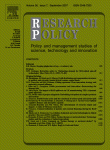 |
CALLON M., LARÉDO P., RABEHARISOA V., 1992, «The Management and Evaluation of Technological Programmes and the Dynamics of Techno-Economic Networks: The Case of the AFME» ,
Research Policy, 21 (3), p.215-236.
The process of innovation and diffusion requires more and more interactions between the world of science and technology and the marketplace. In order to describe these dynamics, we define a techno-economic network (TEN) as a coordinated set of heterogeneous actors (public laboratories, technical research centers, industrial firms, users) who participate collectively in the development and diffusion of innovations and, via numerous interactions, organize the relationships between scientifico-technical research and the market. Although the word “network” is not systematically used, there have been during the last years many more government interventions (that we call technological programs) aimed at supporting the emergence, constitution and growth of TENs which can attain the objectives corresponding to the program's pre-defined goals. Based on an empirical study of the French Agency for Energy Management (AFME), this article presents a series of concepts and tools which are designed to describe the morphology of TENs (are they incomplete or chained, convergent or dispersed, long or short?) and to analyse their dynamics. Notions like anticipated networks, breakthrough actions (versus continuing operations), intermediate results are presented. Examples of their use for the management and the evaluation of the technological programs are given. |
 |
CALLON M., LATOUR B., 1992, «Do not Throw out the Baby with the Bath School» ,
in PICKERING A., (ed.), Science as Practice and Culture, Chicago, Chicago University Press, p.343-368.
A Reply to Collins and Yearley. Harry Collins and Steve Yearley (C&Y) are satisfied with the state of social studies of sciences. Most of the problems have been solved, important discoveries have been made, sociology is firm enough on its feet to study the natural sciences. Thus, according to them, there is no fundamental reason to switch to other frames of reference (...). No, whatever other schools have to offer, none of them is better than the good old sociology we have at hand, and instead of helping the French to overcome their deficiencies, it is better to throw them out with the bathwater. We disagree with this assessment of the field. We are dissatisfied with the state of the art, which is now in danger of dismantlement after fifteen years of rapid advance. (...) |
| |
CASSIER M., 1992, «Les conventions de recherche universités-entreprises : du nouveau dans les services publics de recherche?» ,
Economie et sociologie rurales, série "Actes et communication", (8), p.47-66. |
| |
CASSIER M., 1992, «Université, industrie et marché : comment conduire les innovations? Etude de cas à l’université technologique de Compiègne.» ,
Université de Compiègne. |
| |
CASSIER M., 1992, «Contrats et coopération de recherche entre université et industrie: l’exemple du laboratoire de technologie enzymatique de l’Université de Compiègne» ,
Divergent- MRT. |
| |
CHARVOLIN F., HENNION A., 1992, «Des ethnologues chez les managers de l’innovation» ,
Cahier du Management, p.55-63.
11, déc |
| |
COURTIAL J., 1992, «Réseaux et systèmes de connaissances» ,
in L'INNOVATION C., (ed.), Ces réseaux que la raison ignore, Paris, L'Harmattan, p.79-88. |
| |
COURTIAL J., 1992, «Comments on Leydesdorff’s ’A validation study of Leximappe’» ,
Scientometrics, 25 (2), p.313-316. |
| |
COURTIAL J., SCHWEIGHOFER M., TURNER W., LAVILLE F., SIGOGNEAU A., 1992, «L’analyse des mots associés, outil de veille scientifique et de pilotage de la recherche» ,
in DESVALS H., DOU H., (ed.), La veille technologique. L'information scientifique, technique et industrielle, Paris, Dunod, p.263-275. |
| |
DENNIS M., HERPIN N., LORENTZEN H., PATERSON F., 1992, «Trois pays, trois systèmes» ,
in ELSTER J., HERPIN N., (ed.), Ethique des choix médicaux, Actes Sud, p.137-160. |
| |
HENNION A., 1992, «De la scène au disque : représentations des musiques d’aujourd’hui» ,
Culture technique, (24, "Les techniques de communication"), p.149-157. |
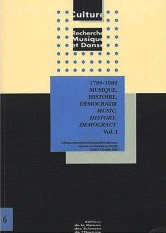 |
HENNION A., 1992, «L’institution de la musique» ,
in HENNION A., (ed.), 1789-1989: Musique, histoire, démocratie, Paris, Ministère de la Culture/Maison des Sciences de l'Homme, p.3-12. |
| |
HENNION A., 1992, «Institution et marché : représentations musicales, à propos d’une audition de variétés» ,
in L'INNOVATION C., (ed.), Ces réseaux que la raison ignore, Paris, L'Harmattan, p.89-110. |
 |
HERPIN N., PATERSON F., 1992, «Centralisation et pouvoir discrétionnaire : la transplantation rénale en France» ,
in ELSTER J., HERPIN N., (ed.), Ethique des choix médicaux, Actes Sud, p.37-61. |
| |
JACQ F., DUCROCQ P., 1992, «Grands équipements et science lourde, la place des grands instruments dans le développement scientifique» ,
MRE. |
| |
KARPIK L., 1992, «L’action stratégique de l’avocat : représentation et action» ,
in L'INNOVATION C., (ed.), Ces réseaux que la raison ignore, Paris, l'Harmattan, p.111-128. |
| |
KARPIK L., 1992, «Advocatus Economicus» ,
Gérer et comprendre, marsp.7-19.
26 |
| |
LAGRANGE P., 1992, ««Latimeria chalumnæ Smith et Arnoldia rainieri Palmer : l’absence et la présence comme modes d’existence des objets »» ,
in L'INNOVATION C., (ed.), Ces réseaux que la raison ignore, Paris, L'harmattan, p.129-152. |
| |
LARÉDO P., CALLON M., MUSTAR P., BIRAC A., FOUREST B., 1992, «Defining the Strategic Profile of Research Labs : the Research Compass Card Method» ,
in VAN RAAN A., (ed.), Science and Technology in a Policy Context, Leiden (NL), DSWO Press, |
| |
LARÉDO P., KAHANE B., MEYER J., VINCK D., 1992, The Research Networks built by the Medical and Public Health Research (MHR4) programme ,
Luxembourg, Office for Officiel Publications of the European Communities. |
| |
LARÉDO P., KAHANE B., MEYER J., VINCK D., 1992, «Les réseaux de recherche construits par le programme MHR4» ,
CSI. |
| |
LATOUR B., 1992, «One More Turn after the Social Turn. Easing Science Studies into the Non-Modern World» ,
in MULLIN E., (ed.), The Social Dimensions of Science, Notre Dame, Notre Dame University Press, |
| |
LATOUR B., 1992, «Where Are the Missing Masses ? The Sociology of a Few Mundane Artefacts» ,
in BIJKER W., LAW J., (ed.), Shaping Technology / Building Society. Studies in Sociotechnical Change, Cambridge Mass., The MIT Press, p.225-258. |
| |
LATOUR B., 1992, «Il faut qu’une porte soit ouverte ou fermée (La logique des réseaux stratégiques)» ,
in PRADES J., (ed.), La Technoscience. Les fractures du discours, Paris, L'Harmattan, p.23-40. |
| |
LATOUR B., 1992, «De quelques services rendus par l’Intelligence artificielle à la philosophie des sciences» ,
L'intelligence artificielle. Une discipline et un carrefour interdisciplinaire, Université technologique de Compiègne. 1992. |
 |
LATOUR B., 1992, Aramis, ou l’amour des techniques ,
Paris, La Découverte. |
| |
LATOUR B., MAUGUIN P., TEIL G., 1992, «A Note on Socio-technical Graphs» ,
Social Studies of Science, 22 (1), p.33-59 & 91-94. |
| |
LE GOAZIOU V., 1992, «Usages et usagers : un travail de convergence» ,
in L'INNOVATION C., (ed.), Ces réseaux que la raison ignore, Paris, L'Harmattan, p.153-168. |
| |
LORENTZEN H., PATERSON F., 1992, «Le don des vivants : l’altruisme des Norvégiens et des Français ?» ,
in ELSTER J., HERPIN N., (ed.), Ethique des choix médicaux, Actes Sud, p.121-136. |
| |
MANGEMATIN V., 1992, «Entre marketing et innovation: la gestion du début du processus de compétition technologique» ,
Recherche et Application en Marketing, 7 |
| |
MANGEMATIN V., 1992, «Technologies de l’information: la gestion du début du processus de compétition» ,
Technologies de l'information et Société, 4 (décembre). |
| |
MANGEMATIN V., 1992, «Management of the beginning of the Process of Competition» ,
in KHALIL T., BAYRAKTAR B., (ed.), Management of Technology: The Key to Global Competitiveness, Miami, Industrial Engineering and Management Press, p.1133-1143. |
| |
MANGEMATIN V., 1992, «Diffusion et appropriation de la technologie: stratégies de normalisation» ,
Annales du Management, Paris, Economica, p.299-317. |
| |
MÉADEL C., 1992, «Entre corporatisme et représentation. Genèse du service public de l’audiovisuel» ,
Culture technique, (24), p.77-88. |
| |
MÉADEL C., 1992, «La radiopublicité. Histoire d’une ressource» ,
Réseaux, (52), p.9-24.
Accès au texte » |
| |
MÉADEL C., 1992, «De l’épreuve et de la relation. Genèse du radio-reportage» ,
Politix, 19 (troisième trimestre), p.87-101.
Accès au texte »
Au fil d’une histoire concurrentielle et instable, l’information à la radio s’est donnée plusieurs principes d’action. D’abord, elle se veut immédiate et rapide. Elle intervient dans la régularité avec des journaux toutes les heures, mais elle est prioritaire et se donne le droit d’interrompre tous les autres programmes si elle décrète l’état d’urgence. Ensuite elle doit se renouveler d’heure en heure, et une intervention ne peut pas répéter intégralement la précédente. Enfin, elle se donne une continuité et précise l’importance d’une nouvelle en la reprenant au cours du temps. Elle doit être intelligible pour qui n’a pas écouté le bulletin précédent mais elle doit apporter un élément nouveau à qui l’a déjà entendue. Si le principe de renouvellement est directement adapté de la presse, ceux de continuité et d’immédiateté ont été spécifiquement définis par la radio qui les incarnent dans deux formes au tempo et à la construction assez différente: le flash et le journal. La radio a mis en place ces principes d’action au cours des années trente pour faire du journal une des pièces déterminantes de sa grille et transformer la nouvelle en un élément radiophonique. Cette transformation va faire d’un matériau extérieur à la radio, grossièrement les articles de presse ou les dépêches d’agence, un élément indispensable de sa programmation mais différent de ce qu’il était avant la “radiomorphose”. En retour l’information comme corpus global distribué dans différents supports est transformée, la répartition entre les médias modifiant à la fait chacun d’entre eux et la définition de l’ensemble. |
| |
MÉADEL C., 1992, «Mare-Moto. Une pièce radiophonique de Pierre Cusy et Gabriel Germinet (1924). Présentation.» ,
Reseaux, 10 (52), p.75-78.
Accès au texte »
This first radio play, the story of a ship in distress trying to connect itself to the land by radio, was written in 1924. This article presents the original document , including elements from the production which were "alienated" by the authors at the end of the programme when fiction presented itself as such to the listeners of Radio Paris and called for their reactions. |
 |
MÉADEL C., 1992, «La radio des années trente» ,
Thèse de doctorat, Paris, Institut d'Études Politiques.
Comment un passe-temps partagé par une poignée d'amateurs pendant les années Vingt devient-il un loisir de masse qui touche un Francais sur deux à la veille de la seconde guerre mondiale? La thèse se propose de répondre à cette question en analysant toutes les dimensions de l'histoire de la T.S.F. : les statuts juridiques, les interactions avec les institutions et les hommes politiques, les transformations des auditoires, la construction de grilles des programmes et la mise au point de genres radiophoniques (etudiés dans une double analyse, généalogique et statistique). |
| |
MÉADEL C., 1992, «Technology Assessment et politiques publiques» ,
Technologies de l'information et société, 4 (4), p.495-511.
Accès au texte »
Pour suivre le développement du projet de télévision à haute définition, les pouvoirs publics, dépourvus en la matière des instruments classiques de régulation, ont mis en place des modes d'évaluation spécifiques reposant en particulier sur l'auto-mobilisation des acteurs. Comme le Constructive Technology Assessment, ces modes d'évaluation ne peuvent fonctionner que s'ils s'intéressent au développement interne des technologies. L'analyse de leur fonctionnement et de leurs productions montre que ces formes d'évaluation conduisent à redéfinir simultanément la technologie et les pouvoirs publics, ordonnateur de l'évaluation. |
| |
MÉADEL C., 1992, «La formation des comportements et des goûts. Une histoire des sondages à la télévision dans les années 50» ,
in L'INNOVATION C., (ed.), Ces réseaux que la raison ignore, Paris, L'harmattan, p.169-186. |
| |
MÉADEL C., BOURDON J., 1992, «Les sciences de l’information et de la communication, essai de généalogie» ,
in INFORCOM., (ed.), Paris, SFIC, |
 |
MEYER J., 1992, «La dynamique de la demande dans l’innovation. Etudes de cas sur sa définition et son action par les réseaux socio-techniques.» ,
Thèse de doctorat, Paris, École Nationale Supérieure des Mines de Paris. |
| |
MIALET H., 1992, «Empirical studies of conception af a new idea: comparison of the philosophical and sociological method» ,
Conférence 4S, 12-15 août, 1992. |
| |
MIALET H., 1992, «Etude empirique de la conception d’une idée neuve» ,
Séminaire "Processus de conception", Bureau de la Recherche Architecturale, Ministère de l'Equipement, 2-3 avril 1992, 1992. |
| |
MUSTAR P., 1992, «Les réseaux de l’innovation» ,
Le Monde, p.36. |
| |
MUSTAR P., 1992, «Le financement de la science» ,
La Science au Présent, Paris, Encyclopeadia Universalis, p.526-532. |
| |
MUSTAR P., 1992, «L’innovation technologique et le contrôle des marchés» ,
Dossiers de l'audiovisuel, 44p.12-13. |
| |
MUSTAR P., 1992, «Du biscuit dans le micro-ondes : le financement d’un réseau scientifico-industriel» ,
in L'INNOVATION C., (ed.), Ces réseaux que la raison ignore, Paris, L'Harmattan, p.187-194. |
| |
MUSTAR P., 1992, «La technologie et le partenariat dans la stratégie de développement des entreprises» ,
Journées nationales de l'ANVAR, 10-11 décembre, 1992. |
 |
PATERSON F., HERPIN N., 1992, «La greffe de rein en France : la communauté des transplanteurs comme acteur intégrateur» ,
Sociologie du Travail, (3), p.315-328. |
| |
PENAN H., 1992, «Analyse des citations. 1- Principes. 2-Applications à la théroie micro-économique» ,
in DESVALS H., DOU H., (ed.), La veille technologique. L'information scientifique, technique et industrielle, Paris, Dunod, p.277-330. |
| |
PENAN H., 1992, «Scientometric tools for science policy and research planning : a case study in plant biotechnology» ,
Science and Technology Indicators Conference, DSWO Press. 1992. |
| |
PENAN H., 1992, «Gestion du capital immatériel en milieu industriel : de l’environnement aux compétences technologiques» ,
Journées nationales de la recherche en gestion, Economica. 1992. |
| |
RABEHARISOA V., 1992, «A Special Mediation between Science and Technology : When Inventors Publish Scientific Articles in Fuel Cells Research» ,
in GRUPP H., (ed.), Dynamics of Science-Based Innovation, Berlin, Springer Publishers, p.45-72. |
| |
RABEHARISOA V., 1992, «Mesure et innovation» ,
in L'INNOVATION C., (ed.), Ces réseaux que la raison ignore, Paris, L'Harmattan, p.195-209. |
 |
RABEHARISOA V., 1992, «Modalités de préhension et d’analyse des indicateurs de liens entre science, technique et marché.» ,
Thèse de doctorat, Paris, École Nationale Supérieure des Mines de Paris.
Cette thèse vise a établir une démarche permettant de décrire les liens entre science, technique et marché. Concrètement, elle s’appuie sur l’analyse de quelques actions menées dans le domaine de la gestion du chauffage d’une part, dans le domaine des piles à combustibles d’autre part. Ces actions sont destinées à faire économiser de l’énergie respectivement au secteur résidentiel et tertiaire et à celui des transports. La démarche proposée consiste à comparer entre eux les indicateurs mis au point par les acteurs qui interviennent dans un domaine. Ces indicateurs leur servent à configurer les opérations qu’ils effectuent et les relations entre ces opérations. On montre que les registres dans lesquels ces indicateurs sont exprimés informent sur la nature des problèmes traités au sein d’un domaine. Au delà, on montre le degré de convergence des diff érentes situations constitutives d’un domaine. On montre enfin dans quelle mesure la possibilité même du calcul économique est suspendu à l’équivalence entre ces indicateurs. |
| |
ROCHER Y., 1992, «Equipment Funding at the Centre National de la Recherche Scientifique.» ,
in BUD R., COZZENS S., (ed.), Invisible Connections. Instruments, Institutions, and Science, Wahington, SPIE-The International Society for Optical Engineering, p.277-297. |
| |
ROSENTAL C., 1992, «From a logical to a pathological point of view.» ,
Paper presented to the Seminar of the San Diego Science Studies Program, 1992. |
| |
ROSENTAL C., 1992, «From logical to a pathological point of view.» ,
Paper presented to the Department for the History of Science, Harvard University, 1992. |
| |
SERRES M., LATOUR B., 1992, Eclaircissements. Entretiens avec Bruno Latour ,
Paris, Editions François Bourin. |
| |
SIGOGNEAU A., COURTIAL J., 1992, «Evaluation des résultats de recherche en matière d’environnement: analyse scientométrique et bibliométrique. Comparaison France, RFA, Grande-Bretagne, USA et Japon» ,
CSI. |
| |
TEIL G., 1992, «Un outil de sociologie assistée par ordinateur» ,
in L'INNOVATION C., (ed.), Ces réseaux que la raison ignore, Paris, L'Harmattan, p.211-236. |
| |
THOMAS I., 1992, «Images de haute définition: des débats aux usages» ,
Culture Technique, (n° spécial Communication). |
| |
THOMAS I., MÉADEL C., 1992, «De la télévision à haute définition» ,
CSI-Association Descartes. |
| |
VINCK D., 1992, Du laboratoire aux réseaux. Le travail scientifique en mutation ,
Luxembourg, Office des Publications Officielles des Communautés Européennes. |
| |
VINCK D., CALLON M., 1992, «Gestion de la R&D à la RATP : un outil de suivi» ,
CSI. |
| |
VINCK D., LARÉDO P., 1992, «Innovation et réseaux coopératifs» ,
Les acteurs de l'innovation en entreprise, colloque du LEST, actes. 1992. |
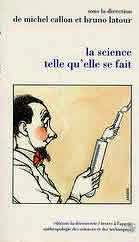 |
CALLON, M., LATOUR, B., 1991, La science telle qu’elle se fait. Anthologie de la sociologie des sciences de langue anglaise. (Nouvelle édition amplifiée et remaniée) ,
Paris, La Découverte.
Autour de la sociologie des connaissances scientifiques, cet ouvrage rassemble quelques unes des études publiées en langue anglaise au cours des quinze dernières années et a pour but de présenter des faits scientifiques analyses en detail par des sociologues et des historiens qui n'établissent a priori aucune frontière infranchissable entre les facteurs sociaux et cognitifs. En suivant les controverses, les conflits d'interprétation, les doutes, les coups de force, on assiste à l'élaboration de connaissances et on se convainc progressivement que pour apprécier la science faite, il faut étudier la science en train de se faire. |
, 1991, Gestion de la recherche.jpg) |
VINCK, D., 1991, Gestion de la recherche. Nouveaux problèmes, nouveaux outils ,
Bruxelles, De Boeck. |
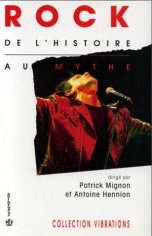 |
MIGNON, P., HENNION, A., 1991, Rock : de l’histoire au mythe ,
Paris, Vibrations/Anthropos.
Ambigu, multiple, le rock est gorgé de social et de musical. Ce volume montre que ceux qui font ou parlent du rock, parlent ainsi du monde social. |
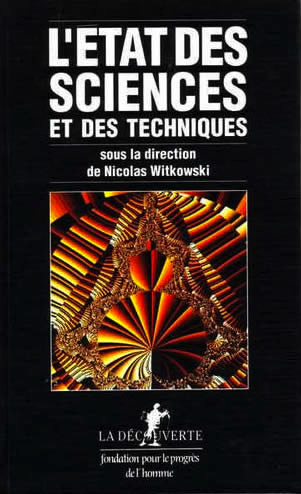 |
AKRICH M., 1991, «La technique, modes d’emploi» ,
in WITKOWSKI N., (ed.), L’état des sciences et des techniques, Paris, La découverte, p.28-30. |
| |
AKRICH M., 1991, «L’analyse socio-technique» ,
in VINCK D., (ed.), La gestion de la recherche, Bruxelles, De Boeck-Wesmael, p.339-353.
Accès au texte »
Ce chapitre fournit des éléments de méthode et des concepts analytiques aboutissant à une description opératoire des objets techniques, c'est-à-dire qui permette une formulation plus complète des épreuves ou expérimentations auxquelles il serait utile de soumettre le dispositif à tel ou tel moment de son développement, et, lié à ce premier point , un repérage plus fin des types des porte-parole qu'il apparaît nécessaire de consulter, d'éprouver, de mobiliser ou d'impliquer. |
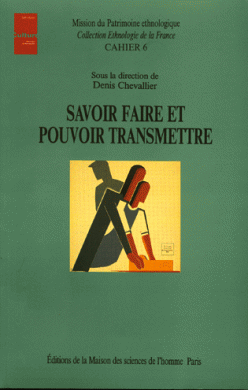 |
AKRICH M., BOULLIER D., 1991, «Le mode d’emploi : genèse, forme et usage» ,
Savoir-faire et pouvoir transmettre, Ethnologie de la France, cahier n°6, Paris, Editions de la MSH, p.113-131. |
| |
AKRICH M., CALLON M., LATOUR B., 1991, «L’art de l’intéressement. L’art de choisir les bons porte-parole (déjà publié in Annales des Mines, série Gérer et comprendre, n°11 & 12)» ,
in VINCK D., (ed.), Gestion de la recherche. Nouveaux problèmes, nouveaux outils., Bruxelles, De Boeck, p.27-76.
Accès au texte »
Le modèle de l'intéressement souligne l'existence de tout un faisceau de liens qui unissent l'objet à tous ceux qui le manipulent, il met en scène tous les acteurs qui se saisissent de l'objet ou s'en détournent et il souligne les points d'accrochage entre l'objet et les intérêts plus ou moins organisés qu'il suscite. Le résultat d'une telle description est un diagramme socio-technique qui combine deux genres que l'on a tendance à séparer: l'analyse technologique qui se limite à la description de l'objet per se et de ses propriétés intrinsèques; l'analyse sociologique de l'objet, c'est-à-dire des milieux dans lesquels il se déplace et sur lesquels il produit des effets. L'analyse socio-technique, quant à elle, se place à l'endroit précis où l'innovateur se situe, dans cet entre-deux difficile à saisir où se mettent simultanément en forme la technique et le milieu social qui le reprend. |
| |
CALLON M., 1991, «L’ingénieur à l’école du politique» ,
Le Monde Campus, p.67-68. |
| |
CALLON M., 1991, «La recherche en quête de nouveaux modes d’organisation» ,
in WITKOWSKI N., (ed.), L'état des sciences et des techniques, Paris, La Découverte, p.438-441. |
| |
CALLON M., 1991, «La méthode Leximappe : un outil pour l’analyse stratégique du développement scientifique et technique» ,
in VINCK D., (ed.), Gestion de la recherche. Nouveaux problèmes, nouveaux outils, Bruxelles, De Boeck, p.207-277. |
| |
CALLON M., 1991, «Les restructurations industrielles autour des programmes de RD» ,
in WITKOWSKI N., (ed.), L'état des sciences et des techniques, Paris, La Découverte, p.85-88. |
| |
CALLON M., 1991, «Réseaux technico-économiques et irréversibilité» ,
in BOYER R., CHAVANNE B., GODARD O., (ed.), Figures de l’irréversibilité en économie, Paris, Edition de l'EHESS, p.195-230. |
 |
CALLON M., 1991, «Techno-economic networks and science and technology policy (Part I - II - III)» ,
OECD.
Explored are the heterogeneous processes of social & technical change, with an emphasis on the dynamics of techno-economic networks. A set of analytical tools for exploring the mechanisms by which heterogeneous activities are brought into relationship with one another is presented, & the concepts of intermediaries, actors, & translation are used to show how networks (eg, of texts, technical objects, embodied skills, money) are established & how they develop. Attention is also given to network dynamics, particularly the way in which both agency & the possibility of qusantification depend on their character. It is argued that the relations between the macro- & the microsocial reflects network punctualization ie, a network that attaches itself to one or more external actor-networks with which it exchanges intermediaries. |
| |
CALLON M., 1991, «Techno-economic Networks and Irreversibility» ,
in LAW J., (ed.), A Sociology of Monsters, Sociological Review Monograph, London, Routledge, p.132-164. |
| |
CALLON M., ARIE RIP A., 1991, «Forums hybrides et négociations des normes socio-techniques dans le domaine de l’environnement» ,
Environnement, Science et Politique, Cahiers du GERMES, 13p.227-238. |
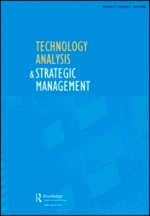 |
CALLON M., COURTIAL J., CRANCE P., LARÉDO P., MAUGUIN P., RABEHARISOA V., ROCHER Y., VINCK D., 1991, «Tools for the Evaluation of Technological Programmes: An Account of Work Done at the Centre for the Sociology of Innovation» ,
Technology Analysis & Strategic Management, 3 (1), p.3-41.
Innovation depends on the e~istcnce of close links between science, technology and the market-place. Technological proi;:rurnmes seek to develop and organize collaboration between the various actors i n these fields i n order to develop strategic skills. This article focuses on tools for managing anti evaluating such programmes, i n terms of quality and relevance of research outfml, effects of the research, and management efficiency. It presents the variety of tools and procedures adopted by the Centre for the Sociology of Innovation (CSI) for the etlale!ation of technological programmes. The tools presented combine quantitative and quditatiue nzethods, interpretation and numerical analysis. It is shown that w~ethods used depend on the questions asked, and that often new tools need to be developed to solve the problems posed. |
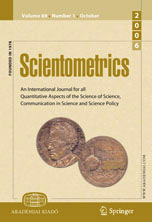 |
CALLON M., COURTIAL J., LAVILLE F., 1991, «Co-word Analysis as a Tool for Describing the Network of Interactions between Basic and Technological Research : the Case of Polymer Chemistry» ,
Scientometrics, 22 (1), p.153-203.
The goal of this paper is to show how co-word analysis techniques can be used to study interactions between academic and technological research. It is based upon a systematic content analysis of publications in the polymer science field over a period of 15 years. The results concern a.) the evolution of research in different subject areas and the patterns of their interaction; b.) a description of subject area life cycles; c.) an analysis of research trajectories given factors of stability and change in a research network; d.) the need to use both science push and technology pull theories to explain the interaction dynamics of a research field. The co-word techniques developed in this paper should help to build a bridge between research in scientometrics and work underway to better understand the economics of innovation. |
| |
CALLON M., LARÉDO P., RABEHARISOA V., 1991, «Gestion des programmes publics et réseaux technico-économiques» ,
in VINCK D., (ed.), Gestion de la recherche, Bruxelles, De Boeck, p.279-307. |
| |
CALLON M., LARÉDO P., RABEHARISOA V., 1991, «Des instruments pour la gestion et l’évaluation des programmes technologiques : le cas de l’AFME» ,
in FORAY J., (ed.), L’évaluation économique de la recherche et du changement technique, Paris, Editions du CNRS, p.301-330. |
| |
CALLON M., RIP A., 1991, «Humains et non-humains: morale d’une coexistence» ,
in THEYS J., KALAORA B., (ed.), La terre outragée, Paris, Autrement, p.140-156. |
| |
CHARVOLIN F., 1991, «The greening of public policy analysis» ,
Environmental public policy in Western Europe - ECPR joint session, 1991. |
| |
CHARVOLIN F., 1991, «Un dangereux relâchement? Le début de la controverse européenne sur la dissémination des organismes modifiés génétiquement» ,
in THEYS J., KALAORA B., (ed.), La Terre outragée. Les experts sont formels!, Paris, Autrement, p.111-117. |
| |
CHARVOLIN F., HENNION A., 1991, «L’innovation au Ministère de l’Equipement» ,
CSI/Ministère de l’Equipement. |
| |
CHARVOLIN F., LIMOGES C., CAMBROSIO A., 1991, «Discourse and policy : an ethnography of the constitution of canadian bio-safety regulations» ,
4S-Meeting, 1991. |
| |
COURTIAL J., CALLON M., 1991, «Indicators for the identification of strategic themes within a research programme» ,
Scientometrics, 21 (3), p.447-458. |
| |
HENNION A., 1991, «Les médiateurs modernes de la musique» ,
Colloque "Percepçao estetica e publicos da cultura", Centro de Investigaçao e Estudos de Sociologia e o Departemento de Sociologia do ISCTE. 1991. |
 |
HENNION A., 1991, «La médiation musicale» ,
Thèse de doctorat, Paris, École des Hautes Études en Sciences Sociales.
L'interprétation sociale de l'art est partagée entre deux modes de causalité. L'un circulaire, fait de l'objet d'art un marqueur du social; l'autre, linéaire, ajoute al'objet une analyse de ses conditions de production, de diffusion et de réception. La thèse vise à exploiter le cas de la musique, art de la médiation, pour dépasser cette opposition, héritée traitement ethnologique réservé aux objets culturels par les sciences sociales. Une analyse de la littérature sur l'art dégage les modeles de médiation utilisés pour rendre compte de ses rapports avec la société. La sociologie de la culture fait de l'art un artefact de la magie sociale, la sociologie de l'art en fait la construction collective des participants au monde de l'art. Plus près des producteurs, l'histoire de l'art et l'histoire sociale ont peuplé leurs analyses, au depart remplies des seuls tableaux d'exception, d'une foule d'institutions et de personnages intermédiaires mécènes, marchands, académies, écoles, musées... Elles ont produit une théorie en acte de la médiation, comme mise en rapport reciproque, locale, hétérogène, de l'art et du public. Par rapport au problème de la médiation, la musique tient une place paradoxale; les interprétations font d'elle tantôt l'expression immédiate du collectif (transe ethnique, concert rock), tantôt l'idéal inaccessible d'un langage intérieur l'indicible. Elle est partagée entre une musicographie qui fait d'emblée comme si elle est un objet, et un discours esthétisant qui en fait l'incarnation meme de l'immediateté. Visant à dépasser ce paradoxe, la thèse analyse une série de dispositifs concrets de la production musicale : unconcert rock, une audition, France-Musique, l'histoire de l'enregistrement, la réinterpretation de la musique baroque. Les musiciens eux-mêmes jouent tour à tour le jeu collectif de la fusion, et celui de la soumission a un objet transcendant. Les deux modalités circulaire et linéaire de la mise en cause ne sont pas des positions d'observateur externe, mais les formes constantes de l'action des musiciens pour produire leur monde, en composant en un mixte irréversible ses éléments matériels, institutionnels et humains. |
| |
HENNION A., 1991, «De la fusion du groupe à l’amour de l’objet : pour une anthropologie de la médiation» ,
Communication Information, 12 (1, La production culturelle, Université de Laval, Sainte-Foy), p.181-203. |
| |
HENNION A., 1991, «A propos de la réinterprétation d’un répertoire oublié: objections musicales» ,
in DUFOURT H., FAUQUET J., (ed.), La musique: du théorique au politique, Paris, Aux amateurs du livre (diffusion Klincksieck), p.181-207. |
| |
HENNION A., 1991, «Scène rock, concert classique» ,
in MIGNON P., HENNION A., (ed.), Rock: de l'histoire au mythe, Paris, Vibrations/Anthropos, p.101-119. |
| |
JACQ F., 1991, «Un regard sur la science et l’industrie dans la France d’après-guerre, le Laboratoire d’Electronique et de Technologie de l’Informatique : une aventure scientifique grenobloiseID - 834» ,
|
| |
JACQ F., 1991, «Analyse du fonctionnement d’un laboratoire, le cas du LETI» ,
CEA. |
| |
LAGRANGE P., 1991, «Les parasciences selon l’épistémologie: "des savoirs sans méthode"» ,
Analele Universitatii Bucaresti, XLp.101-110. |
| |
LAGRANGE P., 1991, «Terres creuses et autres lunes» ,
Les cahiers de Science et Vie, p.92-96. |
| |
LAGRANGE P., 1991, «La science et l’irrationnel. Le cas des soucoupes volantes» ,
in WITKOWSKI N., (ed.), L'état des sciences et des techniques, Paris, La Découverte, p.112-114. |
| |
LARÉDO P., 1991, «State Intervention on Innovation : the Role of Technological Programmes in the Emergence of a New Composite Economic Agent, the Techno-Economic Network» ,
Policies and Strategies on Technology in Industrialized Countries, 1991. |
| |
LARÉDO P., 1991, «Quel impact pour les programmes de recherche communautaires ?» ,
in WITKOVSKI N., (ed.), L'Etat des sciences et des techniques, Paris, La Découverte, p.471-474. |
| |
LARÉDO P., 1991, «L’évaluation de la recherche» ,
Séminaire Evaluation des politiques publiques, ENA/CGP, Paris, Documentation Française, |
| |
LARÉDO P., 1991, «De l’évaluation de la recherche à l’évaluation des politiques de recherche» ,
in WITKOWSKI N., (ed.), L'Etat des sciences et des techniques, Paris, La Découverte, p.445-447. |
| |
LARÉDO P., ARVANITIS R., 1991, «Eléments pour la Définition d’une Politique de Recherche sur les Technologies de l’Environnement» ,
Ademe. |
| |
LARÉDO P., CALLON M., 1991, «Les Etats nationaux ont-ils encore la maîtrise de leur politique de la recherche et de la technologie ? Etude de l’impact des programmes communautaires de recherche sur le tissu scientifique et technique français» ,
Politiques et Management Public, 9 (1, juin), p.257-275. |
| |
LARÉDO P., CALLON M., MUSTAR P., 1991, «Rapports géographiques Polynésie française et Nouvelle Calédonie in L’évaluation d’une procédure publique de financement de la recherche, le cas de la CORDET» ,
commission de coordination de la recherche dans les DOM-TOM, Paris, Documentation française. |
| |
LARÉDO P., CALLON M., MUSTAR P., 1991, «Les indicateurs de caractérisation des laboratoires. Une première expérience sur 109 services du CEA» ,
CSI-Ecole des Mines. |
| |
LARÉDO P., MUSTAR P., 1991, «La caractérisation des services du CEA, les indicateurs à l’épreuve» ,
CSI-CEA. |
| |
LARÉDO P., VINCK D., 1991, «Préparer : la démarche d’analyse stratégique et sa mise en oeuvre» ,
in VINCK D., (ed.), Gestion de la recherche. Nouveaux problèmes, nouveaux outils, Bruxelles, De Boeck, p.79-113. |
| |
LARÉDO P., VINCK D., 1991, «Evaluer : médiation et préparation des actions futures» ,
in VINCK D., (ed.), Gestion de la recherche. Nouveaux problèmes, nouveaux outils, Bruxelles, De Boeck, p.163- 183. |
| |
LATOUR B., 1991, «D’où viennent les microbes?» ,
Les Cahiers de Science & Vie, 4p.36-62.
août |
| |
LATOUR B., 1991, «Microbes et savante compagnie» ,
Les Cahiers de Science & Vie, 4p.20-28.
août |
| |
LATOUR B., 1991, «Les Trois Petits Dinosaures - Le cauchemar d’un sociologue» ,
Alliage, p.73-81.
7-8 |
| |
LATOUR B., 1991, «Le travail de l’image ou l’intelligence scientifique redistribuée» ,
Culture Technique, (22), p.12-24. |
 |
LATOUR B., 1991, Nous n’avons jamais été modernes. Essai d’anthropologie symétrique ,
Paris, La Découverte. |
| |
LATOUR B., 1991, «Technology is Society Made Durable» ,
in LAW J., (ed.), Technology, Power and the Modern World, Keele, Sociological Review Monograph, p.103-131. |
| |
LATOUR B., 1991, «The impact of Science Studies on Political Philosophy- Second Mullins Memorial Lecture» ,
Science, Technology & Human Values, 16p.3-19. |
| |
LATOUR B., MAUGUIN P., TEIL G., 1991, «Une méthode nouvelle de suivi socio-technique des innovations : le graphe socio-technique» ,
in VINCK D., (ed.), Gestion de la recherche, Paris, De Boeck, p.419-480. |
| |
LATOUR B., SCHWARTZ C., CHARVOLIN F., 1991, «Crises des environnements: défis aux sciences humaines» ,
Futur antérieur, p.28-56.
6 |
| |
LE GOAZIOU V., 1991, «Bertrand Gille, J.J. Salomon, Edward Sapir» ,
Encyclopédie Philosophique, Tome 3, |
| |
LE GOAZIOU V., 1991, «La peur à domicile» ,
Autrement, |
| |
LE MARC M., COURTIAL J., DROZDA-SENKOVSKA E., PÉTARD J., PY Y., 1991, «The dynamics of research in the psychology of work from 1973 to 1987: from the study of companies to the study of professions» ,
Scientometrics, 21 (1), p.69-86. |
| |
MANGEMATIN V., 1991, «The Influence of Firms’ Strategies and the Role of the Public Authorities in the Competition of Road Guidance and Road Transportation Informatics» ,
Roads and Traffic Authority. |
| |
MANGEMATIN V., SIMON J., TEMPLÉ P., 1991, Entreprises : les investissements immatériels ,
ed CFDT Production.. |
| |
MAUGUIN P., 1991, «Décider : la sélection des projets de R&D» ,
in VINCK D., (ed.), Gestion de la recherche. Nouveaux problèmes, nouveaux outils, Bruxelles, De Boeck, p.115-145. |
| |
MAUGUIN P., 1991, «Using a contracts database for evaluating the dynamics of a technological program: the case of the European ’non-nuclear energy’ program» ,
Scientometrics, 22 (1), p.207-228. |
 |
MÉADEL C., 1991, «Programmes en masse, programmes de masse ?» ,
in ROBIN R., (ed.), Masses et culture de masse dans les années trente, Les Editions Ouvrières, p.51-68.
Accès au texte »
Comment passe-t-on d’un “hobby” partagé par une poignée d’amateurs à un loisir de masse qui touche à la veille de la guerre un foyer français sur deux? Les années trente voient en effet se nouer la relation des Français -et à peu près aux mêmes dates des Européens- avec leur poste de radio. Passe-temps pour quelques poignées de passionnés de radio-électricité, la TSF devient un objet usuel du foyer, une pratique domestique, un acteur de la vie artistique et en particulier musicale, un élément du jeu politique… Le concept de culture de masse insiste sur le caractère unilatéral des messages et en fait un face à face entre des producteurs tout-puissants et des consommateurs passifs. Dès l’origine de la radio, cette conception se manifesta, sous la forme extrême de la crainte de la propagande dans les pays démocratiques, de son utilisation dans les régimes totalitaires. En France, la radio fut tout de suite appréhendée comme instrument de diffusion culturelle à destination du peuple mais cela n’engendra pas un projet national ou unitaire. Sans doute cet éclatement du projet culturel radiophonique perdura-t-il parce que les stations restèrent globalement entre les mains des associations d’amateurs qui les avaient créées; elles connurent un contrôle de l’Etat qui, bien qu’il crût de manière sensible, demeura pourtant largement extérieur à la vie des stations et à leurs programmes. Cette absence d’unité persista également parce que la coupure entre les producteurs-émetteurs et les auditeurs-récepteurs n’était pas encore figée. A l’opposé d’un flot subi, les émissions de radio étaient de produits de choix individualisés. Ce n’est que très progressivement pendant ces années trente que les stations construisirent des grilles qui homogénéisèrent leur programmation. On passa d’une organisation librement structurée où chacun pouvait venir butiner ou chercher un objet précis à un “programme”, c’est-à-dire un ensemble ordonné d’actions. C’est cette évolution qu’on cherchera à montrer en répondant à deux questions: Comment la radio s’est-elle diffusée dans la population? Par quels programmes parvint-elle, à la veille de la guerre, à accrocher un Français sur deux? |
| |
MÉADEL C., 1991, «Dire le journal, éléments pour une généalogie» ,
MédiasPouvoirs, p.74-81.
24 |
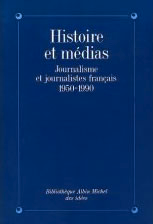 |
MÉADEL C., 1991, «La fabrication du journal parlé» ,
in MARTIN M., (ed.), Histoire et médias. Journalisme et journaliste français., Paris, Albin Michel, p.95-112.. |
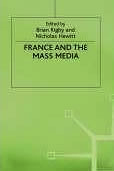 |
MÉADEL C., 1991, «The Arrival of Opinion Polls in French Radio and Television 1945-60» ,
in RIGBY B., HEWITT N., (ed.), France and the Mass Media, Londres, Mc Millan, p.147-176. |
| |
MÉADEL M., 1991, «Entre brouillage et parasite : les statuts de la radio entre les deux guerres» ,
in BERTHO C., (ed.), Droits et histoire des télécommunications, Genève, Droz, |
| |
MUSTAR P., 1991, «L’innovation, un nouveau marché pour la recherche» ,
in WITKOWSKI N., (ed.), L’Etat des Sciences et des techniques, Paris, La Découverte, p.465-467. |
| |
MUSTAR P., 1991, «Processes of integrating science with the market : the création of technology-based businesses» ,
The international symposium Europe-Usa colloquium management of technology, 1991 mai 27. |
| |
MUSTAR P., 1991, «Transférer : circulation du savoir et réseaux de collaboration» ,
in VINCK D., (ed.), Gestion de la recherche. Nouveaux problèmes, nouveaux outils, Bruxelles, De Boeck, p.185-204. |
| |
MUSTAR P., BARRÉ R., 1991, «Indicators of National Scientific and Technological Structure for International Comparisons» ,
Second International Conference on Policies and Strategies on Technology in Industrialized Countries, may 1991. |
| |
RABEHARISOA V., 1991, «Pour une description des liens entre science et technique : des brevets aux articles scientifiques» ,
in VINCK D., (ed.), Gestion de la recherche, Bruxelles, De Boeck, p.335-386. |
| |
STRUM S., LATOUR B., 1991, «The Meaning of Social: From Baboons to Humans» ,
in SCHUBERT G., MASTERS R., (ed.), Primate Politics, Carbondale, Southern Illinois University Press, p.73-86. |
 |
TEIL G., 1991, «Candide, un outil de Sociologie Assistée par Ordinateur pour l’analyse quali-quantitative de gros corpus de textes» ,
Thèse de doctorat, Paris, École Nationale Supérieure des Mines de Paris.
Le texte est au centre de bon nombre d'activités humaines, celle de l'administration par exemple. L'analyse sociologique de texte ne doit pas se contenter de restituer les technologies d'écriture, de lecture, de diffusion et de collecte de textes; elle doit aussi s'attacher à décrire le contenu des textes. Cettedescription doit également rendre compte des multiples lectures, parfois contradictoires, qui sont faites. Ce faisant, l'analyse sociologique de texte se heurte à une importante difficulté que le logiciel CANDIDE se propose de pallier : le volume des textes à étudier. Ce programme ne peut s'appuyer sur aucun ensemble de connaissances a priori, un dictionnaire préétabli ou une grammaireexhaustive qui, s'il n'était partagé de tous les lecteurs, risquerait d'orienter sa lecture. De son point de vue, le texte est un dispositif associant des mots dont ilreprésente le réseau d'association. Nous décrivons son fonctionnement ainsi que diverses analyses de réseau (linguistiques, socio-economiques...). La comparaison de deux lectures d'un même corpus, faites par une équipe d'experts d'une part, par CANDIDE d'une autre, montre la parfaite concordance des deux lectures pour les gros corpus et les spécificités de chacune pour les petits ensembles de textes. Enfin, nous passons en revue des utilisations de cet outil, de l'analyse bibliographique à la veille technologique et a l'analyse de questionnaires ouverts |
| |
TEIL G., 1991, «Candide : un outil de veille technologique basé sur l’analyse des réseaux» ,
in VINCK D., (ed.), La gestion de la recherche, Bruxelles, de Boeck, p.387-417. |
 |
VINCK D., 1991, «La coordination du travail scientifique : le laboratoire et les réseaux» ,
Thèse de doctorat, Paris, École Nationale Supérieure des Mines de Paris.
La thèse porte sur la manière dont se déroulent les productions scientifiques, comment elles sont organisées et regulées. Laboratoires et réseaux de coopération scientifique sont ainsi deux formes de coordination complémentaires. Trois enqueêes composent cette thèse. La première se penche sur la litterature et montre comment les observateurs peuplent l’etude des sciences de multiples entités et de divers mécanismes d’interaction. Elle revèle également une insuffisance de l’analyse d un dispositif tel que le laboratoire. La deuxième enquête est de type ethnographique. Elle rend compte de la dynamique de quelques projets de recherche initiés dans un laboratoire universitaire. Elle met en évidence quelques mécanismes de stabilisation des productions scientifiques. La troisième enquête étudie de facon comparative plus de 100 reseaux de coopération scientifique. Une méthode de caracterisation des réseaux a été mise au point et une typologie a été proposée. De la confrontation de ces trois enquêtes. Il apparait que les pôles d’interêt dans la coordination du travail scientifique changent : du laboratoire comme forme privilégiée, on passe au réseau de coopération scientifique. Laboratoire et réseau constituent deux pôles a la fois indissociable et antagonistes de la coordination du travail scientifique. |
| |
VINCK D., 1991, «Suivre : outils et gestion des mises à l’épreuve» ,
in VINCK D., (ed.), Gestion de la recherche. Nouveaux problèmes, nouveaux outils, Bruxelles, De Boeck, p.147-161. |
| |
AKRICH M., 1990, «De la sociologie des techniques à une sociologie des usages : l’impossible intégration du magnétoscope dans les réseaux câblés de première génération» ,
Techniques et Culture, (16), p.83-110.
Accès au texte »
Les sociologues des techniques sont partagés entre deux tendances: soit ils suivent les objets à la trace, et décrivent finement leur parcours et les transformations qui les accompagnent, mais ils ne savent pas dire grand chose des utilisateurs, soit ils s'attachent davantage à la signification des objets techniques, décomposent tout ce qui circule autour d'eux, mais ont tendance à considérer ce dernier comme une boîte noire dans laquelle ils n'ont pas à entrer. Notre propos dans cet article est d'essayer de jeter une passerelle entre ces deux approches, et de montrer la constitution conjointe des objets et des acteurs, la signification des artefacts naissant de la mise en rapport de ces deux termes. Ce parcours, nous l'effectuons de la sociologie de l'innovation vers une sorte de sémiotique des objets techniques: notre méthode consiste à suivre, tout au long de la conception, l'utilisateur tel qu'il est représenté, inscrit, traduit dans les choix qui sont effectués (techniques ou autres). Nous verrons que les usages, et donc les significations attachées à tel ou tel dispositif, ne sauraient se déduire mécaniquement des choix effectués lors de la conception; pas plus qu'il n'est possible d'affecter telle ou telle signification à un objet indépendamment de son contenu technique. Plus précisément, la disjonction entre "l'utilisateur tel qu'il est inscrit dans le dispositif" autrement dit l'actant et "ce que le dispositif se doit de mobiliser chez son utilisateur", ce que nous appelons la "position", a pour fondement l'idée selon laquelle les objets techniques ont autant besoin pour exister et fonctionner de formes d'organisation "sociale" que nos sociétés ont besoin d'objets techniques pour se stabiliser et perdurer. Rétablir une symétrie entre l'objet et l'acteur et montrer comment l'un et l'autre se co-définissent, tel est à notre sens l'objectif d'une sociologie des usagers. |
| |
AKRICH M., 1990, «Présentation» ,
Techniques et Culture, (16), p.1-6. |
| |
BIBARD L., 1990, «Des chercheurs managers de l’innovation : le cas de l’anticorps 33b» ,
La revue du MAUSS, |
| |
BIBARD L., 1990, «article Technique» ,
Encyclopédie Philosophique, Tome 2, Paris, PUF, |
| |
BOURDON J., CHANIAC R., MÉADEL C., ALII E., 1990, «La programmation du prime-time en Europe» ,
INA. |
| |
BROCARD M., ROCHER Y., 1990, «La localisation de la recherche industrielle en France ; évolution depuis 1968» ,
|
| |
CALLON M., 1990, «La science par conférence de presse» ,
La Recherche, 21p.1184-1190.
225 |
| |
CALLON M., 1990, «AFME case» ,
Etude de cas pour une école à Twente (non publié), 1990. |
| |
CALLON M., CHABBAL R., LARÉDO P., 1990, «L’évaluation des programmes technologiques enjeux et organisation» ,
L'évaluation économique de la technologie (non publié), |
| |
CALLON M., COURTIAL J., LAVILLE F., 1990, «La méthode des mots associés comme outil d’analyse des interactions entre recherche de base et recherche appliquée : le cas des polymères» ,
Les Cahiers de l’ADEST,
nº spécial, juin |
| |
CALLON M., LARÉDO P., MUSTAR P., 1990, «L’évaluation interne au CEA» ,
CEA. |
| |
COURTIAL J., 1990, Introduction à la Scientométrie ,
Paris, Anthropos. |
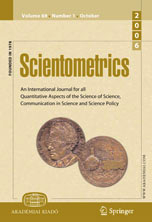 |
COURTIAL J., CALLON M., 1990, «Indicators for the evaluation of the impact of EC-research programmes - Indicators for the identification of strategic topics of a research programme» ,
CSI / EC Spear Programme.
The co-word method (Leximappe programme) is used to illustrate the essential themes of intermational research based on the computer analysis of databases of scientific articles and patents. Further, we illustrate that these themes often follow characteristic cycles. Research projects submitted to a research funding organisation were subjected to a similar analysis. It was then possible in one sense to evaluate the relevance of funding support, particularly in terms of the degree of maturity of international research. |
| |
COURTIAL J., JAGODZINSKI-SIGOGNEAU M., BAUIN S., FEILLET H., TURNER W., 1990, «Etude à partir de la base Pascal d’un front de recherche identifié par les co-citations» ,
Les cahiers de l’ADEST, juinp.47-58.
spécial |
| |
COURTIAL J., MICHELET B., 1990, «A Mathematical Model of Development in a Research Field» ,
Scientometrics, 19 (1-2), p.123-138. |
| |
COURTIAL J., RABEHARISOA V., SIGOGNEAU A., 1990, «Elaboration d’une méthode pour identifier les tendances récentes de la recherche et de la technologie dans un domaine industriel: le cas de l’agro-alimentaire» ,
CSI Ecole des Mines - MRT. |
| |
COURTIAL J., SIGOGNEAU A., 1990, «Veille technologique: approche par les réseaux de mots-clés des articles scientifiques et des brevets» ,
Bibliométrie et Documentation, |
| |
COURTIAL J., TURNER W., MICHELET B., 1990, «Scientific and Technological Information Banks for the Network Management of Research» ,
Research Policy, 19p.467-475. |
| |
HENNION A., 1990, «Pour une sociologie de la médiation : le rôle des médiateurs dans le domaine culturel» ,
rapport DEP Ministère de la Culture. |
| |
HENNION A., 1990, «Techniques de l’audio (radio, disque et phonogrammes, son de synthèse)» ,
in SFEZ L., (ed.), Dictionnaire encyclopédique et critique de la Communication, Paris, PUF, |
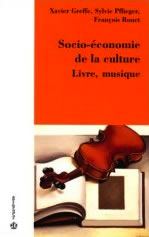 |
HENNION A., 1990, «Artiste, public, directeur artistique : le cas du disque de variétés» ,
in GREFFE X., PFLIEGER S., ROUET F., (ed.), Socio-économie de la culture - Livre, Musique, Paris, Anthropos, p.111-121. |
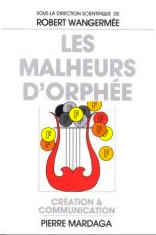 |
HENNION A., 1990, «La formation des médiateurs culturels : le cas de la musique en France» ,
in WANGERMÉE R., (ed.), Les malheurs d’Orphée. Culture et profit dans l’économie de la musique, Bruxelles-Liège, Mardaga, p.383-402. |
| |
HENNION A., 1990, «Le conservatoire de musique: quelle musique pour quels enfants?» ,
Le dictionnaire des loisirs, Paris, Letouzey & Ané, |
| |
HENNION A., 1990, «La reproduction sonore de la musique: un enregistrement, ou une nouvelle écriture?» ,
Le dictionnaire des loisirs, Paris, Letouzey & Ané, |
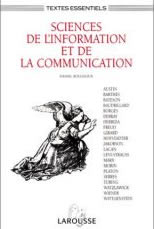 |
HENNION A., 1990, «De l’étude des médias à l’analyse de la médiation : esquisse d’une problématique» ,
MédiasPouvoirs, p.39-52.
20 |
| |
HENNION A., MÉADEL C., 1990, «La question sans réponse : un parcours bibliographique de l’enjeu publicitaire» ,
Réseaux, (42).
Accès au texte »
Les recherches sur la publicité ont suivi un mouvement continu, qui l'? accompagnée dès ses origines, de redéfinition des problèmes qui lui sont adressés, et qu'elle s'est posé elle-même. Mouvement qui conduit d'un ensemble trop mythologique d'interrogations immédiates sur la manipulation des désirs et la rationalisation programmée des consommateurs, à des analyses deplus en plus minutieuse du travail de médiation opéré par les publicitaires : des relations qu'ils nouent entre eux, avec leurs clients, avec les médias, avec le consommateur. La revue bibliographique qui suit voudrait tenter de rendre sensible ce mouvement, dans la forme étonnamment récurrente de ses progressions successives, qu'on peut résumer de la façon suivante. Critiquant l'insuffisance et le flou littéraire de travaux précédents, une nouvelle approche propose de tester une hypothèse, simple et réaliste, et surtout mesurable, qui permette d'isoler un "effet" de la publicité. Effet qui a bien sûr d'abord été cherché dans le commercial et l'impact sur la vente, mais aussi, et très tôt, dans bien d'autres directions : sur l'image des produits et des marques, ou au niveau plus général des conséquences de la publicité sur l'ensemble de l'économie, au niveau encore plus "macro" du social, ou au contraire en redescendant vers le travail en profondeur réalisé par la publicité sur le psychologique et les "consciences". |
| |
KARPIK L., 1990, «Que faire de la singularité?» ,
Synergie, (16-17), p.13-28. |
| |
KARPIK L., 1990, «La profession libérale» ,
in P. N., (ed.), Les lieux de mémoire, Paris, Gallimard, |
| |
KARPIK L., 1990, «Technical and Political Knowledge» ,
in (EDS. ) B., (ed.), Professions, theory and history, vol. II, |
| |
LAGRANGE P., 1990, «Enquête sur les soucoupes volantes : la construction d’un fait aux Etats-Unis (1947), et en France (1951-54)» ,
Terrain, Carnet du patrimoine ethnologique, (14), p.92-112. |
| |
LAGRANGE P., 1990, «L’affaire Kenneth Arnold. Note sur l’art de construire et de déconstruire quelques soucoupes volantes» ,
Communications, (52), p.283-309. |
| |
LARÉDO P., 1990, «l’Europe stimule la recherche» ,
Le Monde,
10/10 |
| |
LARÉDO P., 1990, «L’impact des programmes communautaires sur la formation par la recherche» ,
Formation par la recherche, p.14-15.
31 Juin |
| |
LARÉDO P., CALLON M., 1990, L’impact des programmes communautaires de recherche sur le tissu scientifique et technique français ,
Paris, La Documentation française. |
| |
LARÉDO P., CALLON M., 1990, «L’impact des programmes européens sur la recherche en santé» ,
L'Europe du médicament : réalités et ambitions, Editions INSERM. 1990. |
| |
LARÉDO P., MÉADEL C., 1990, «La programmation de la recherche à l’INRA (analyse préliminaire à travers le cas de la direction scientifique agro-alimentaire)» ,
|
| |
LATOUR B., 1990, «La clef berlinoise ou inscrire dans la nature des choses» ,
Alliage, p.4-16.
6 |
| |
LATOUR B., 1990, «Digithe et Cogithe au pays des réseaux, scénario pour un dessin animé» ,
Paris, France Télécom. |
| |
LATOUR B., 1990, «The Leverage Point of Experiments» ,
in GRAND H., (ed.), Experimental Inquiries. Australian Studies the History and Philosophy of Science, Dordrecht, Reidel, p.48-79. |
| |
LATOUR B., 1990, «The Force and Reason of Experiment» ,
in GRAND H., (ed.), Experimental Inquiries, Historical, Philosophical and Social Studies of Experimentation in Science, Dordrecht, Kluwer Academic Publishers, p.49-80. |
| |
LATOUR B., 1990, «Le Prince : machines et machinations» ,
Futur antérieur, p.35-62.
3 |
| |
LATOUR B., 1990, «Drawing Things Together» ,
in LYNCH M., WOOLGAR S., (ed.), Representation in Scientific Practice, Cambridge, Mass., MIT Press, p.19-68. |
| |
LATOUR B., 1990, «Quand les anges deviennent de bien mauvais messagers» ,
Terrain, (14), p.76-91. |
| |
LATOUR B., 1990, «Postmodern? No Simply Amodern. Steps Towards an Anthropology of Science. An Essay Review» ,
Journal for the History and Philosophy of Science, 21p.145-171. |
| |
LATOUR B., 1990, «Scénographie ‘Le Pouvoir de la Science’» ,
1990. |
| |
LATOUR B., 1990, «Sommes-nous postmodernes? Non, amodernes. Etapes vers l’anthropologie des sciences» ,
in L'IUED C., (ed.), La Pensée métisse. Croyances africaines et rationalité occidentale en questions, Genève/Paris, Cahiers de l'IUED et PUF, p.127-155. |
| |
LATOUR B., MAUGUIN P., TEIL G., 1990, «Comment suivre les innovations - Le graphe sociotechnique» ,
Gérer et comprendre, p.62-79.
20 |
| |
LATOUR B., MAUGUIN P., TEIL G., 1990, «Le suivi socio-technique des innovations» ,
CSI-MRT. |
| |
LE GOAZIOU V., 1990, «Le rôle actif des usagers : un travail de convergence» ,
Design Recherche,
juin |
| |
MANGEMATIN V., 1990, «Brève analyse de la politique de recherche et développement australienne» ,
Ministère des Affaires Etrangères- Ambassade de France à Camberra. |
| |
MAUGUIN P., 1990, «Les bases de données de contrats, un outil pour l’analyse des dynamiques scientifiques» ,
Les Cahiers de l’ADEST, p.157-171.
juin |
| |
MÉADEL C., 1990, «Des comportements et des goûts, une généalogie de la représentation. Participation au rapport "Programmation et représentation du public"» ,
rapport CSI-GRECO Communication. |
| |
MÉADEL C., 1990, «Les images sonores. Naissance du théâtre radiophonique» ,
Techniques et Culture, (16, juillet-décembre), p.135-159.
Accès au texte »
La radio naissante, avide de matières, se tourna, pour nourrir sa programmation, vers les arts anciens et tout particulièrement vers le théâtre. Mais le passage par le micro posait de nombreux problèmes d'adaptation. L'article analyse l'émergence du théâtre radiophonique et montre qu'il fut le fruit d'un métissage de formes et de techniques ; les débats qui accompagnèrent ce processus graduel de mise au point contribuèrent à redéfinir tout un ensemble de questions à la fois techniques et culturelles : comment rendre compte de la réalité et comment la différencier de la fiction ? Quelles sont les significations attachées intrinsèquement aux sons et aux voix ? De quelle manière peut-on traduire les dimensions spatiales dans une grammaire sonore ? Qu'est ce qu'un auditeur et comment parle-t-on à un absent ? etc. et ont débouché sur la progressive spécification de genres radiophoniques. |
| |
MÉADEL C., 1990, «De la formation des comportements et des gouts. Une histoire des sondages à la télévision dans les années cinquantes» ,
Réseaux, 39 (janvier), p.37-55.
Accès au texte »
1931: les premières images de télévision sont diffusées en France dans un laboratoire de Montrouge; 1935, les premières émissions quotidiennes commencent, 1950: il y a moins de quatre mille postes récepteurs. 1960: près de deux millions de foyers possèdent un récepteur de télévision. Entre ces deux dernières dates, l'objet de laboratoire est devenu un loisir populaire, un objet de controverses au parlement et dans la presse, un concurrent de l'école, un secteur de l’administration française… A l'inverse de la radio, la télévision utilise dès ses premières années les enquêtes d'opinion pour connaître son public. A ces sondages, elle demande comment faire de cet être brut et lâché dans la nature qu'est l'acheteur de télévision un «audiviseur» et de cet ensemble hétérogène de professionnels qui participent à ses activités des producteurs de télévision? Les sondages vont «faire sortir le téléspectateur du chaos des impressions nouvelles» où le plonge son achat. Tout un arsenal d'instruments statistiques est donc mis en place au début des années cinquante. Reconstituer l'histoire de ces enquêtes permet de comprendre comment ces sondages ont fabriqué en même temps que des téléspectateurs, des programmes et des programmateurs. Lorsque les sondages sont introduits à la radio-télévision française, la position du sondé comme celle du sondeur sont à inventer. |
| |
MÉADEL C., 1990, «Présentation du numéro» ,
Réseaux, numéro "Sociologie de la télévision : Europe", p.7-14.
44/45 |
| |
MUSTAR P., 1990, «La création d’entreprises par les chercheurs» ,
in JALABERT G., THOUZELLIER C., (ed.), Villes et Technopoles, Toulouse, Presses Universitaires du Mirail, p.331-340.. |
| |
MUSTAR P., 1990, «Création d’entreprises à partir des résultats de la recherche scientifique» ,
in CARRÉ D., (ed.), Info-Révolution : usages des technologies de l’information, Paris, Editions Autrement, p.159-167. |
| |
MUSTAR P., 1990, «Etude de la création d’entreprises technologiques par les chercheurs en région Provence-Alpes Côte d’Azur» ,
Conseil Régional (contrat n°88 00699 000). |
| |
PENAN H., 1990, «Compétence et Mobilité: Une Approche Cognitive» ,
Ecole Supérieure Universitaire de Gestion. |
| |
RABEHARISOA V., 1990, «Mesures techniques, mesures morales: de l’institution d’un habitant raisonnable face aux économies d’énergie» ,
Techniques et Culture, (16), p.63-82. |
| |
RABEHARISOA V., 1990, «Petit exercice de scientométrie : ce que chiffrent et racontent les brevets français sur les piles à combustibles» ,
AFME-CSI. |
| |
RÉMY E., BECK C., 1990, Le faucon, favori des princes ,
Paris, Gallimard. |
| |
ROCHER Y., BROCARD M., 1990, «Les régions ont-elles une politique scientifique?» ,
La Recherche, 21p.250-258.
218, février |
| |
TURNER W., MICHELET B., COURTIAL J., 1990, «Scientific and Technical Information Banks for the network management of research» ,
Research Policy, (19), p.467-475. |
| |
VINCK D., 1990, «La construction de réseaux dans un programme public de recherche» ,
CSI. |
| |
VINCK D., 1990, «Innover c’est aussi parier sur la société» ,
Innovation von Unternehmen und ihr Raümlich-Kultureller Kontext, numéro spécial de Sociologia Internationalis,
2 |
| |
AKRICH M., 1989, «La construction d’un système socio-technique. Esquisse pour une anthropologie des techniques» ,
Anthropologie et Sociétés, 13 (2), p.31-54.
Accès au texte »
Dans cet article, nous nous proposons de traiter des relations entre les systèmes techniques et tout ce qui est généralement entendu sous le vocable de "contexte" ou d'"environnement". Nous partirons d'un projet d'innovation - la conception, au Nicaragua, d'un système technique permettant de fabriquer des briquettes, destinées à la combustion, à partir des tiges de cotonnier - en montrant comment chaque choix technique se trouve au noeud entre des contraintes et des problèmes de nature très diverse. Mais, nous intéressant plus spécifiquement à la manière dont les objets techniques participent à la construction de notre culture, entendue au sens large du terme, nous essayerons de prolonger ce travail en direction de ce que l'on pourrait appeler une anthropologie des techniques. Plus que de suivre strictement l'élaboration d'un système technique, il s'agira de montrer la genèse simultanée de l'objet et de son environnement. |
| |
AKRICH M., 1989, «L’organisation du secteur électrique en Suisse» ,
Paris, École des Mines - EDF. |
| |
AKRICH M., 1989, «De la position relative des localités. Systèmes électriques et réseaux socio-politiques» ,
Cahiers du Centre d’Études pour l’Emploi, 32p.117-166.
Accès au texte »
Dans cet article, nous nous intéressons à deux formes d'électrification, le développement du réseau électrique centralisé, en Côte d'Ivoire et surtout en Algérie, et une expérience d'électrification décentralisée basée sur l'utilisation du photovoltaïque en Polynésie Française. L'électrification constitue un objet d'études particulièrement intéressant, dans la mesure où il s'agit d'un objet frontière: elle est rarement mise en oeuvre sans que soit fait référence à un moment donné au collectif national et à la manière dont peuvent s'articuler les choix politiques de développement et les choix techniques de réalisation industrielle. Partant de ces études de cas qui tenteront de restituer minutieusement le détail des opérations par lesquelles se construisent les systèmes techniques, nous nous demanderons pratiquement comment l'ordre industriel qui leur sert de support parvient à s'étendre, sur quels compromis il s'appuie, et quelles sont les conséquences finales de ce processus sur l'organisation de la société civile et sur la répartition des compétences entre le "local" et le "central", étant entendu ici que nous ne partons pas d'une définition a priori de ce qui est local ou central, mais que nous nous donnons comme problématique la constitution de ces "centres" et de ces "localités" au travers de la construction d'un système technique. |
| |
AKRICH M., BOULLIER D., 1989, «Le K, monographie nº1, in Boullier D. (ed.), Genèse des modes d’emploi : la mise en scène de l’utilisateur final» ,
LARES-CCETT. |
| |
AKRICH M., RABEHARISOA V., 1989, «Le conseil en économies d’énergie» ,
ANAH-École des Mines.
Accès au texte »
Dans ce rapport nous nous intéressons aux différentes formes de conseils en énergie, en nous appuyant sur trois hypothèses principales:
- la première concerne le caractère technique relativement complexe de toute intervention visant à faire des économies d'énergie: ce constat nous a conduit à supposer que le "conseil" sous toutes ses formes tenait une place cruciale dans la construction d'une demande en produits ou travaux permettant d'économiser l'énergie;
- en second lieu, si les pouvoirs publics avaient joué un rôle absolument déterminant dans l'émergence de la problématique "économies d'énergie", leur importance relative avait tendu à diminuer au fil des ans, de sorte que les formes "institutionnelles" de conseil pouvaient ne représenter qu'une part marginale de l'ensemble des formes de conseils dispensés au "grand public": d'où l'idée d'élargir au maximum nos champs d'intérêt et d'essayer de repérer l'ensemble des lieux dans lesquels sont dispensés des conseils qui touchent de près ou de loin à l'économie d'énergie
- enfin, notre dernière hypothèse peut s'exprimer de la manière suivante: il existe un lien entre les effets produits par les différentes formes de conseils, que l'on s'intéresse tant à l'existence de décisions qu'à la nature de ces décisions, et la définition que ces formes de conseil se donnent de l'usager, de ses compétences, de ses désirs, etc. L'analyse doit donc, dans tous les cas, chercher à restituer ses différents "modèles" d'usager sur lesquels repose l'action des dispenseurs de conseils.
Les cas étudiés comprennent le diagnostic thermique et les formes isntitutionnalisées de conseil, les conseils dispensés par les constructeurs et les distributeurs (grands surfaces, installateurs), les revues grand public. |
| |
AKRICH M., RABEHARISOA V., 1989, «Le conseil en économies d’énergie : des revues grand public aux grandes surfaces de bricolage» ,
Les Notes de l’Observatoire de l’Habitat Ancien, (7).
Accès au texte »
Dans cet article, nous faisons l'hypothèse que les questions relatives à l'économie d'énergie sont suffisamment ardues sur le plan technique et impliquent des investissements tels que les usagers ont recours, avant toute décision, à une forme de conseil, quelles qu'en soient les modalités pratiques. Dès lors, si l'on cherche à comprendre comment s'effectue aujourd'hui dans ce domaine la rencontre entre l'offre et la demande, et, en second lieu, quels effets "macro-économiques" , en termes d'économie globale d'énergie, l'on peut en attendre, il est nécessaire de revenir sur les opérations préliminaires qui permettent d'orienter les choix des usagers et, ce faisant, de décrire le réseau "économies d'énergie" en en restituant les différents médiateurs. Nous intéressons ici à une revue et deux grandes surfaces de bricolage et nous essaierons de montrer la spécificité du travail accompli par ces différents médiateurs, d'en comprendre l'efficacité, sans prendre parti a priori sur la "qualité", mesurée à l'aune des thermiciens, des conseils dispensés. |
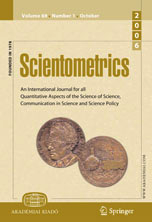 |
BASTIDE F., COURTIAL J., CALLON M., 1989, «The Use of Review Articles in the Analysis of a Research Area» ,
Scientometrics, 15 (5-6), p.535-562.
A comparison of the usefulness of considering review articles vs scientific articles in measuring the state of development in a field, using the case of polymer science. The review articles define a research program linking the two networks of polymer properties -- including uses -- & polymer structure -- amenable to analysis through grammatical, semisymbolic, & symbolic translations. The adoption of proposed research programs by the scientific community is examined, & translation strategies are described. It is concluded that if a research program is defined in terms of the mobilization of networks, then review articles represent the state of development in a field. |
| |
CALLON M., 1989, La science et ses réseaux ,
Paris, La Découverte.
Comment les scientifiques, retranchés dans leurs laboratoires, parviennent-ils à susciter de l'intérêt ou à créer une demande pour les connaissances ésotériques qu'ils produisent ? Quelles sont les relations entre le contenu de la science et les contextes socio-économiques au sein desquels elle se développe ? Ces questions agitent depuis longtemps la sociologie des connaissances et la philosophie des sciences. Les réponses apportées jusqu'ici ont oscillé entre deux positions aussi extrêmes qu'irréductibles : l'internalisme qui affirme l'autonomie radicale des sciences, l'externalisme qui, a l'inverse, s'emploie à les dissoudre dans les sociétés qui les produisent. Pour sortir de cette opposition stérile, il a fallu enquêter dans les laboratoires, et étudier dans le détail comment les chercheurs fabriquent tout à la fois des connaissances sur la nature et une société prête à s'en saisir. En montrant que les scientifiques sont d'infatigables constructeurs de réseaux, les études rassemblées dans ce livre contribuent à imposer une image radicalement nouvelle de la dynamique scientifique et de sa contribution au développement économique et social. Les chercheurs mis en scène ici sont saisis sur le vif et appartiennent à des domaines très variés (physiciens, biologistes, chimistes…). Tous, qu'ils soient obscurs ou célèbres, mêlent en permanence nature et société et n'ont que deux obsessions : produire des connaissances qui résistent durablement aux controverses ; construire un environnement favorable peuplé d'acteurs intéressés par ces connaissances. |
| |
CALLON M., 1989, «La formation à l’innovation dans l’enseignement supérieur» ,
Contribution groupe du Plan sur la formation (non publié). |
| |
CALLON M., COURTIAL J., LAVILLE F., 1989, «La méthode des mots associés : un outil pour l’évaluation des programmes publics de recherche (le cas des polymères) (3 tomes)» ,
NSF/CSI. |
| |
CALLON M., COURTIAL J., LAVILLE F., 1989, «Co-word analysis : a tool for the Evaluation of Public Research Policy (The case of polymers)» ,
NSF/CSI. |
| |
CALLON M., LARÉDO P., MAUGUIN P., VINCK D., 1989, L’évaluation des programmes publics de recherche. Le cas du programme communautaire Energies Non-Nucléaires ,
Namur, Presses universitaires. |
| |
CALLON M., LAW J., 1989, «La protohistoire d’un laboratoire : le difficile mariage de la science et de l’économie» ,
Cahiers du Centre d'Études pour l’Emploi, (32). |
| |
CALLON M., LAW J., 1989, «On the Construction of Sociotechnical Networks : Content and Context Revisited» ,
Knowledge and Society, 8p.57-83.
The interface of science-society is studied via the use of the sociology of translation -- ie, the process through which proposals (ie, those for the creation of sets of relations between projects, interests, & goals) become reality. The relationship of scientific & technological innovation to economic markets & social structures is traced through sociotechnical networks established by actors, in a negotiation & renegotiation process, pertaining to & distinguishing between context & content. A case study of the post-1970s development of the sea farming of scallops in the St. Brieuc Bay, Brittany, France, is used to illustrate the processes leading to the construction & transformation of sociotechnical networks, & a model is developed. It is concluded that the sociology of translation is superior to more traditional sociological & economic analyses of research & development. |
| |
COURTIAL J., 1989, «Qualitative Models, Quantitative Tools and Network Analysis» ,
Scientometrics, 15 (5-6), p.527-534.. |
| |
COURTIAL J., LAW J., 1989, «A Co-word Study of Artificial Intelligence» ,
Social Studies of Science, 19p.301-311 & post-script in J. Whittaker, Creativity and Conformity in Science : Titles, Key-word and Co-words Analysis, p. 473-496. |
| |
COURTIAL J., WEILER P., 1989, «Évaluation du programme d’aide à la recherche universitaire en science de l’information PARUSI» ,
CSI. |
| |
HENNION A., 1989, «Les orientations de la politique française en matière de formation des médiateurs culturels in Training of Cultural Development Personal» ,
Vienne, Mediacult-UNESCO. |
| |
HENNION A., 1989, «Les enfants de la musique...» ,
L’école des parents, p.37-40.
6, juin |
| |
HENNION A., 1989, «An Intermediary between Production and Consumption : the Producer of Popular Music» ,
Science, Technology & Human Values, 14 (4), p.400-424.
Trying to reduce the divide between culture and science, this article follows the producer of popular records, as an interface between music and its market. Like the innovator when he does not obey scientific, technical, and commercial reasons in succession, but reshapes them all together through a double task of giving its form to the product and the interesting people within it, the producer represents the public to the artist and the music to the media. First in a local scale, then in larger and larger ones, alone with the singer, in the studio, and into the media, this sociology of the intermediary shows the producer experimentally organizing, as in a laboratory, a complete production-consumption cycle. Success is then not the mysterious leap to the public, but the last extension of an equation into which the public has been incorporated in many forms from the very beginning. |
| |
HENNION A., 1989, «A médiateur, médiateur et demi : la valorisation croisée du livre et de la télévision» ,
Quaderni, Ecrit/Ecran, (8), p.41-53. |
| |
HENNION A., AKRICH M., 1989, «Rubrique bibliographique "Un renouveau sociologique de l’histoire de l’art ?"» ,
L’Année sociologique, Sociologie de l’art, PUF, Paris, (39), p.425-445. |
| |
HENNION A., MÉADEL C., 1989, «Comment ne pas commettre le péché de rationalisation?» ,
Réseaux, Paris, CNET/CNRS, (36), p.145-158.
Accès au texte »
Deux chercheurs du Centre de Sociologie de V Innovation, membres du GRECO et qui travaillent eux-mêmes sur les médias et la culture, ont accepté de présenter rapidement les éléments principaux de la problématique développée depuis une quinzaine d'années par ce centre, à partir d'exemples pris dans les recherches menées au ?SI par leurs collègues qui travaillent sur l'innovation en matière d'objets et processus techniques, et dans les classiques de la copieuse littérature de la gestion de l'innovation. |
| |
HENNION A., MÉADEL C., 1989, «Mesure et représentation du public : le travail de construction de l’auditeur par la radio» ,
in ROUET F., (ed.), Économie et Culture, vol. III, Industries culturelles, Paris, La Documentation Française, p.275-287. |
| |
HENNION A., MÉADEL C., 1989, «The Artisans of Desire : the Mediation of Advertising between the Product and the Consumer» ,
Sociological Theory, 7 (2), p.191-209.
To better understand the mechanisms of desire in the consumption of products, the work of advertisers & their mediation relationships with clients, media, & customers are analyzed. The effectiveness of advertising, its impact on the economy, the changing characteristics of consumers, information models, & the transformations of the product through property attributions & action strategies are discussed. Publicity work as organized around marketing management & media planning & creation is described, using the making of a photograph as a specific example. It is concluded that advertising professionals create communication between the product & the marketplace by localizing desire through a complex network of interactions, based on the self-definition of individuals & social groups. |
| |
KARPIK L., 1989, «L’économie de la qualité» ,
Revue française de Sociologie, 30 (2), p.187-210. |
| |
KARPIK L., 1989, «Le désintéressement» ,
Annales, (3), p.733-751. |
| |
LAGRANGE P., 1989, «Pendleton, 24-26 juin 1947: trois jours dans la vie de Kenneth Arnold et des soucoupes volantes» ,
Rencontres de Lyon, 1989. |
| |
LARÉDO P., 1989, «The assessment of national schemes; problems associated with their implementation: Discussion of the French Experience» ,
Evaluation of R&D, a policymaker's perspective, HMSO. 1989. |
| |
LARÉDO P., 1989, «Politique nationale et animation locale : les délégations régionales de l’AFME.» ,
CSI. |
| |
LARÉDO P., CALLON M., 1989, «L’impact des programmes communautaires sur le tissu scientifique et technique français» ,
|
| |
LARÉDO P., CALLON M., MUSTAR P., 1989, «Evaluating technological programmes : approaches, methods and tools» ,
Assessing the implementation of technology policy priorities, 1989. |
| |
LARÉDO P., MAUGUIN P., VINCK D., 1989, «Comment comparer des politiques nationales de recherche ? Eléments pour la construction d’une base de données des politiques nationales de recherche en matière d’énergies non-nucléaires» ,
CSI. |
| |
LARÉDO P., MOUNIER L., 1989, «L’action régionale de l’AFME. Démarche exporatoire» ,
|
| |
LATOUR B., 1989, «De kracht en de rede van het experiment» ,
Kennis et Methode, XIIIp.28-62. |
| |
LATOUR B., 1989, «Pasteur et Pouchet : hétérogenèse de l’histoire des sciences» ,
in SERRES M., (ed.), Eléments d'histoire des sciences, Paris, Bordas, p.423-445.
Michel Serres (editor) Eléments d'histoire des sciences |
| |
LATOUR B., 1989, «Joliot : l’Histoire et la Physique Mêlées» ,
in SERRES M., (ed.), Elements d'histoire des sciences, Paris, Bordas, p.493-513.
in Michel Serres (editor) Eléments d'histoire des sciences |
| |
LATOUR B., 1989, «La Ceinture de sécurité» ,
Alliage, p.21-27.
1 |
| |
LATOUR B., 1989, «La simulation de conduites de projet socio-techniques en milieu incertain» ,
Les Chemins du Virtuel, Cahiers du CCI, Beaubourg, p.173-175. |
 |
LATOUR B., 1989, La Science en Action ,
Paris, La Découverte. |
| |
LATOUR B., 1989, «Clothing the Naked Truth» ,
in LAWSON H., APPIGNANESI L., (ed.), Dismantling Truths : Reality, the Post-modern World, Weidenfeld et Nicholson, |
| |
LATOUR B., SCHWARTZ C., 1989, «Crises des environnements, défis aux sciences humaines» ,
CNRS-PIREN. |
| |
MANGEMATIN V., 1989, «Les investissements immatériels : essai de repérage concret» ,
Histoire du développement, Institut d’Études Sociales de Lyon,
7 |
| |
MAUGUIN P., LE GOAZIOU V., VINCK D., 1989, «Politique de l’innovation et socio-cultures. Identification et intégration de facteurs socio-culturels dans l’évaluation des politiques d’innovation» ,
OCDE-programme Technologies, institutions, cultures. |
| |
MÉADEL C., 1989, «L’invention de la journée radiophonique; la programmation à la radio dans les années 30» ,
Presse, Radio et Histoire. Actes du 113è Congrès National des Sociétés Savantes, Paris, CTHS, p.337-347. |
| |
MÉADEL C., 1989, «Les stratégies de programmation du prime-time en Italie» ,
rapport CSI-INA. |
| |
MÉADEL C., 1989, «Presse et télévision, une cartographie de la littérature» ,
CSI / Rapport pour IP. |
| |
MÉADEL C., DE BUSSIERRE M., MAURIAT C., 1989, «Histoire des informations à la radio et à la télévision» ,
Paris, GEHRA. |
| |
MUSTAR P., 1989, «La politique d’innovation technologique en France : mesures et instruments choisis» ,
CNUCED, Organisation des Nations Unies, Genève. |
| |
MUSTAR P., 1989, «La recherche, clé des performances économiques» ,
Jeune Afrique, p.55. |
| |
MUSTAR P., 1989, «Sciences et techniques de la communication et émergence du chercheur-entrepreneur» ,
Regards, p.199-205.
nº spécial : La communication |
| |
MUSTAR P., 1989, «Sciences et techniques de la communication et émergence du chercheur entrepreneur» ,
Regards, n° spécial : La communication, nouveaux systèmes, nouveaux métiers, Paris, Ecole Nationale Supérieure des P&T, p.199-205. |
| |
MUSTAR P., 1989, «Quand les chercheurs créent des entreprises» ,
Le Monde, p.28.
31 Oct |
| |
MUSTAR P., 1989, «Etude monographique sur l’émergence de PMI technologiques» ,
Ministère de la Recherche et de la Technologie (contrat CPE n°88 N 5301). |
| |
RABEHARISOA V., 1989, «De la commande optimale du chauffage aux économies d’énergie : histoire d’une quantification.» ,
Régulation Commande Télégestion, 1989. |
| |
RABEHARISOA V., 1989, «Comment rendre compte du succès ou de l’échec d’une action de recherche appliquée : le cas de l’IRCOSE» ,
AFME - CSI. |
| |
ROCHER Y., 1989, «La recherche française est-elle bien équipée?» ,
La Recherche, 20p.1539-1542.
216, décembre |
| |
ROCHER Y., 1989, «Les équipements dans la recherche : le financement des équipements par le CNRS» ,
CSI. |
| |
ROCHER Y., ALI., 1989, «Evaluation de la politique de recherche et technologie de la Région Nord Pas de Calais» ,
|
| |
TEIL G., 1989, «Les réseaux socio-économiques des nouvelles technologies électriques - Évaluation de l’impact des nouvelles technologies électriques de 1987 à 1988 dans les régions françaises à partir des réseaux de mots-associés calculés selon la méthode Candide™» ,
rapport EDF/ Novelect. |
| |
TEIL G., 1989, «Candide - Un logiciel de cartographie des réseaux lexicaux adapté au traitement de gros corpus de texte» ,
CSI. |
| |
TURNER W., LAVILLE F., SIGOGNEAU A., COURTIAL J., 1989, «Outils infométriques de soutien à l’élaboration du rapport de conjoncture du CNRS : terre et système solaire : origine, structure et dynamique» ,
CSI. |
| |
VINCK D., LATOUR B., 1989, «Le programme de recherche et développement technologique Transports Terrestres. Évaluation des procédures internes» ,
CSI-École des Mines. |
| |
CALLON, M., LATOUR, B., 1988, La recherche industrielle ,
numéro spécial de Culture Technique |
| |
AKRICH M., 1988, «Détermination et intégration des facteurs socio-culturels dans la planification énergétique pour les PVD. Tome I» ,
Paris, École des Mines. |
| |
AKRICH M., 1988, «Le CSI et les technologies énergétiques dans les PVD» ,
NEED, p.9-10.
8 |
| |
AKRICH M., 1988, «La recherche pour l’innovation ou l’innovation pour la recherche? Le développement du photovoltaïque en Polynésie» ,
Culture Technique, (18), p.318-329.
Accès au texte »
A partir d'une étude de cas, l'implantation d'un programme d'électrification photovoltaïque en Polynésie, cet article s'interroge sur rôle de la recherche dans l'innovation industrielle: on montre que, dans ce cas particulier, cela revient à se poser la question de l'efficacité relative des multiples moyens d'accès au "réel" dont disposent les innovateurs pour ajuster la forme de l'objet technique au milieu auquel il est destiné. L'effort de description porte sur la restitution des processus élémentaires de décision qui font passer d'un projet général à un produit particulier: tout au long de ce récit, nous nous demandons dans quelles circonstances, à quels endroits, le recours à la recherche s'est avéré crucial, de quelle manière il est possible de qualifier les différents types de recherche à l'oeuvre, comment on peut décrire finement le rôle de cette (ces) recherche(s) dans la mise en forme de l'innovation. On constate in fine que la recherche, au sens strict du terme, loin d'être à l'origine du démarrage du projet, doit être davantage considérée comme un de ses résultats. |
| |
AKRICH M., 1988, «L’organisation du secteur électrique aux Pays-Bas» ,
Paris, École des Mines/EDF. |
| |
AKRICH M., CALLON M., LATOUR B., 1988, «A quoi tient le succès des innovations? 1 : L’art de l’intéressement» ,
Gérer et comprendre, Annales des Mines, (11), p.4-17.
Accès au texte »
Pour répondre à la question posée par son titre, cet article propose un modèle d'innovation, le modèle de l'intéressement qui s'oppose radicalement au modèle de la diffusion.
Le modèle de l'intéressement souligne l'existence de tout un faisceau de liens qui unissent l'objet à tous ceux qui le manipulent, il met en scène tous les acteurs qui se saisissent de l'objet ou s'en détournent et il souligne les points d'accrochage entre l'objet et les intérêts plus ou moins organisés qu'il suscite. Le résultat d'une telle description est un diagramme socio-technique qui combine deux genres que l'on a tendance à séparer: l'analyse technologique qui se limite à la description de l'objet per se et de ses propriétés intrinsèques; l'analyse sociologique de l'objet, c'est-à-dire des milieux dans lesquels il se déplace et sur lesquels il produit des effets. L'analyse socio-technique, quant à elle, se place à l'endroit précis où l'innovateur se situe, dans cet entre-deux difficile à saisir où se mettent simultanément en forme la technique et le milieu social qui le reprend. |
| |
AKRICH M., CALLON M., LATOUR B., 1988, «A quoi tient le succès des innovations? 2 : Le choix des porte-parole» ,
Gérer et comprendre, Annales des Mines, (12), p.14-29.
Accès au texte »
Pour répondre à la question posée par son titre, cet article propose un modèle d'innovation, le modèle de l'intéressement qui s'oppose radicalement au modèle de la diffusion.
Le modèle de l'intéressement souligne l'existence de tout un faisceau de liens qui unissent l'objet à tous ceux qui le manipulent, il met en scène tous les acteurs qui se saisissent de l'objet ou s'en détournent et il souligne les points d'accrochage entre l'objet et les intérêts plus ou moins organisés qu'il suscite. Le résultat d'une telle description est un diagramme socio-technique qui combine deux genres que l'on a tendance à séparer: l'analyse technologique qui se limite à la description de l'objet per se et de ses propriétés intrinsèques; l'analyse sociologique de l'objet, c'est-à-dire des milieux dans lesquels il se déplace et sur lesquels il produit des effets. L'analyse socio-technique, quant à elle, se place à l'endroit précis où l'innovateur se situe, dans cet entre-deux difficile à saisir où se mettent simultanément en forme la technique et le milieu social qui le reprend. |
| |
BIBARD L., 1988, «D’un laboratoire à quels marchés? Le cas du procédé MMV d’ultrafiltration du lait» ,
CSI. |
| |
CALLON M., 1988, «Faut-il croire en la recherche industrielle?» ,
Culture technique, (18), p.202-209. |
 |
CALLON M., LAW J., 1988, «Engineering and Sociology in a Military Aircraft Project : a Network Analysis of Technological Change» ,
Social Problems, 35 (3), p.284-297.
In this paper, we analyze the TSR 2 British military aircraft project, beginnning with its conceptualization in the late 1950s and ending in 1965 with its cancellation. Using the notion of network, we detail the fundamentally interconnected character of the social and the technical. We trace how the TSR 2 was conceived, designed, and developed, then consider difficulties encountered and the process that led to its cancellation. Our aim is to recommend and illustrate a method of social analysis that takes the technical aspects of the engineer's work to be profoundly social. By carefully following technologists, we see the kinds of social worlds, institutions, and roles contained in the machines they create. We also see the diverse objects mobilized to fit these conceptions. The technical thus is social. |
| |
COURTIAL J., REMY J., 1988, «Towards the Cognitive Management of A Research Institute» ,
Research Policy, vol.17 |
| |
HENNION A., 1988, «De una etnografia de la ensenanza musical a una sociologia de la mediacion» ,
Papers. Revista de sociologia, Universitat autonoma de Barcelone, (29 "Sociologicia de la Musica"), p.153-177.
Accès au texte » |
 |
HENNION A., 1988, Comment la musique vient aux enfants. Une anthropologie de l’enseignement musical ,
Paris, Anthropos.
Ce livre est le fruit d'une enquête menée dans les classes de musique, sur le modèle de l'ethnologue observant un monde culturel dont il ignore les principes. Faire entendre les raisons au nom desquelles on veut que des enfants fassent de la musique, c'est en débattre, construire l'enseignement à travers les anathèmes que se lancent anciens et modernes, ascètes et hédonistes, savants et émotifs. Mais tous ces musiciens, par-delà leurs désaccords, nous montrent l'évidence d'un désir de musique partagé. |
| |
HENNION A., 1988, «Du chahut à la musique : l’effort pédagogique (introduction)» ,
Vibrations, (6, septembre), p.8-13. |
| |
HENNION A., 1988, «Apprendre la musique» ,
Vibrations, 6 (septembre). |
| |
HENNION A., 1988, «D’une ethnographie de l’enseignement musical à une sociologie de la médiation» ,
Recherches sociologiques, XX (2-3), p.273-293. |
| |
HENNION A., 1988, «“Qu’entends-tu?” ethnographie de la classe de solfège» ,
Vibrations, (6, septembre), p.29-55. |
| |
HENNION A., MÉADEL C., 1988, «Dans les laboratoires du désir : le travail des gens de publicité» ,
Réseaux, Paris, CNET/CNRS, (28), p.7-54.
Accès au texte »
D'où les objets tirent-ils leur pouvoir ? Qu'est-ce qui nous les fait désirer ? Il n'est guère de question plus fondamentale. Elle réunit autour d'elle les interrogations les plus tenaces de la métaphysique et de la religion comme les discours les plus superficiels sur la société de consommation. Elle fait ricaner de l'American Way of Life et de la société du paraître au nom de vraies valeurs ou elle alimente la critique moderne de tous les objets ramenés à l'arbitraire du signe distinctif. Elle fait se rencontrer dans la même méfiance les morales ascétiques anciennes du renoncement et la condamnation marxiste du capitalisme de la prolifération. Elle peut aussi bien nous introduire dans la lecture proustienne de la mondanité pour nous suggérer les pièges de la psychologie mimétique : tu désires ce que désire ton voisin. Des disciplines entières se sont presqu’exclusivement organisées autour d'une défense intransigeante des lois de l'objet, comme l’epistémologie pour la science ou l'esthétique pour l'art. D'autres pensées, comme celles de Freud ou de Girard, ont pu à l'opposé réécrire un modèle complet de l'humanité à partir d'une définition nouvelle du sujet de désir. Mais depuis le début du XXè siècle, cette double question sur le sujet et l'objet du désir a ses mercenaires. Transportée avec la réclame dans le monde du commerce, puis de l'industrie avec la publicité, enfin dans tous les secteurs de la vie publique, avec la communication, elle a cessé de n'intéresser que les prêtres, les savants et les amoureux. Elle a trouvé avec l'économie un terrain plus monnayable. Quelles réponses lui apportent ceux qui sont payés, budget après budget, pour que des produits offerts sur un marché deviennent les objets d'une demande des consommateurs ? |
| |
HENNION A., MÉADEL C., 1988, «Radios, réseaux, régies. La représentation du public par les professionnels de la radio» ,
rapport Greco Communication, CSI/CNET-CNRS. |
| |
HENNION A., MÉADEL C., 1988, «Les ouvriers du désir ; voyage dans une agence de publicité» ,
Culture technique, repris de "Les ouvriers du désir", MédiasPouvoirs nº 7, dossier Publicité : les années 90, Paris, juin 1987, p. 106-125, p.330-336. |
| |
KARPIK L., 1988, «Lawyers and Politics in France, 1814-1950 : the State, the Market and the Public» ,
Law and Social Inquiry, 13 (4), p.101-130. |
| |
KARPIK L., 1988, «Sociologie» ,
Le Débat, p.218-20.
50 |
| |
KARPIK L., 1988, «Misunderstandings and Theoretical choices» ,
Organisation Studies, 9 (1), p.25-28. |
| |
LAGRANGE P., 1988, «It Seems Impossible but There It Is» ,
in H. EVANS J., (ed.), Phenomenon : From Flying Saucers to UFOs- Forty Years of Facts and Research, London, Futura, p.26-45. |
| |
LARÉDO P., MAUGUIN P., VINCK D., 1988, «European Reciprocal Information Base on Energy R3D Programmes» ,
CCE-DG XII. |
| |
LARÉDO P., MAUGUIN P., VINCK D., 1988, «Base européenne d’information réciproque sur les programmes de R3D énergétique : étude de faisabilité» ,
CCE-DG XII. |
| |
LARÉDO P., VINCK D., 1988, «La dynamique thématique de ENN3» ,
CCE-DG XII - Évaluation du programme ENN3. |
| |
LATOUR B., 1988, «Reply to Oldroyd» ,
Social Epistemology, 1p.27-65 - repris de : Comment redistribuer le grand partage?. |
| |
LATOUR B., 1988, The Pasteurization of France ,
Harvard, Harvard University Press. |
| |
LATOUR B., 1988, «The Prince for Machines as well as for Machinations» ,
in ELLIOTT B., (ed.), Technology and Social Change, Edinburgh, Edinburgh University Press, |
| |
LATOUR B., 1988, «The Enlightenment Without the Critique : an Introduction to Michel Serres’s Philosophy» ,
in GRIFFITH J., (ed.), Contemporary French Philosophy, Cambridge, 1988, p.83-98. |
| |
LATOUR B., 1988, «Quatre façons de ne pas faire de la sociologie des sciences» ,
Sociologie du Sud-Est, nº spécial sous la direction de N.Ramognino, p.67-70.
51-54 |
| |
LATOUR B., 1988, «The Politics of Explanation : an Alternative» ,
in WOOLGAR S., (ed.), Knowledge and Reflexivity, New Frontiers in the Sociology of Knowledge, Londres, Sage, |
| |
LATOUR B., 1988, «Comment traduire la science? En la trahissant...» ,
Éducation Permanente, p.71-81 (avec le club Scientifiction).
93/94 |
| |
LATOUR B., 1988, Wetenschap in Actie ,
Bert Bakker Publishing. |
| |
LATOUR B., 1988, «A reply to Ian Hacking’s Pare» ,
Nous, 22p.7-20.
4 |
| |
LATOUR B., 1988, «Opening an Eye while Closing the Other. Note on Some Religious Paintings» ,
in LAW J., FYFE G., (ed.), The Opening of the Western Eye, Keele, Sociological Review Monograph, p.15-38. |
| |
LATOUR B., 1988, «A Relativist Account of Einstein’s Relativity» ,
Social Studies of Science, 18p.3-44. |
| |
LATOUR B., 1988, «Le métier de directeur de recherche. Synthèse d’une série d’entretiens» ,
Culture technique,
18 |
| |
LATOUR B., HERZBERG N., 1988, «Aramis - Analyse socio-technique d’un échec» ,
RATP-INRETS, Réseau 2000. |
| |
LATOUR B., JOHNSON J., 1988, «Mixing Humans with Non-Humans : Sociology of a Door-Closer» ,
Social Problems (special issue on sociology of science, edited by L. Star), 35p.298-310. |
 |
LATOUR B., WOOLGAR S., 1988, La vie de laboratoire ,
Paris, La Découverte. |
| |
LAW J., BAUIN S., COURTIAL J., WHITTAKER J., 1988, «Policy and the mapping of scientific change : a co-word analysis of research into environmental acidification» ,
Scientometrics, 14 (3-4), p.251-264. |
| |
MÉADEL C., 1988, «L’avant-guerre entre public et privé. Chronologie» ,
Dossiers de l’audiovisuel, p.11-14 et 52-55.
20 |
| |
MUSTAR P., 1988, Science et Innovation, Annuaire raisonné de la création d’entreprises technologiques par les chercheurs en France ,
Paris, Economica. |
| |
MUSTAR P., 1988, «L’innovation, un enjeu national» ,
ANVAR Magazine, p.17-23. |
| |
MUSTAR P., 1988, «The creation of the scientific market job. The matching of the supply and demand for research manpower in technology-based enterprises» ,
Workshop on assessing the availability and need for research manpower, 24-25 october 1988. |
| |
MUSTAR P., 1988, «Les scientifiques peuvent-ils devenir des entrepreneurs?» ,
La Recherche, p.974-977.
201 |
| |
MUSTAR P., 1988, «Technopoles, innovations et cycles longs de l’économie» ,
Cahiers économiques de Bretagne, Rennes, p.1-7.
2 |
| |
MUSTAR P., 1988, «Naissance d’une industrie : le logiciel pour micro-ordinateur domestique» ,
Culture technique, (18), p.139-145. |
| |
RABEHARISOA V., 1988, «Une application de l’analyse multicritère pour l’évaluation d’alternatives : technologies préventives ou curatives de la pollution industrielle» ,
Cahiers du LAMSADE - Université de Paris-Dauphine, p.1-35.
85, février |
| |
ROCHER Y., BROCARD M., 1988, «Évaluation des politiques régionales de recherche et de leur impact» ,
CSI. |
| |
VINCK D., 1988, «Le rôle du comité de gestion et de coordination» ,
CCE/DG XII - Évaluation du programme ENN3. |
| |
VINCK D., BLAMPAIN J., 1988, «Réseaux académiques européens de centres de recherche analysant l’interface Sciences-Technologies - Société» ,
CCE-DG XII, programme FAST II. |
| |
AKRICH M., 1987, «La construction de la demande d’électricité : études de cas actuels dans certains pays africains» ,
in CARDOT F., (ed.), L’électricité et ses consommateurs, Paris, PUF, p.295-301. |
| |
AKRICH M., 1987, «Comment les innovations réussissent?» ,
Recherche et Technologie, p.26-34.
Accès au texte »
Cet article montre, à partir de l'analyse de différents cas, que le processus d'innovation peut se décrire à l'aide d'une série de termes qui permettent de maintenir tout au long du récit l'articulation entre les aspects sociaux et techniques: du choix de porte-parole humains et non-humains, en passant par leur mise à l'épreuve, jusqu'aux mécanismes de la délégation. Cette conceptualisation débouche sur une analyse des conditions qui favorisent la réussite ou au contraire entraînent l'échec des innovations. |
| |
AKRICH M., 1987, «Comment décrire les objets techniques?» ,
Techniques et Culture, (9), p.49-64.
Plusieurs auteurs se sont intéressés à la manière dont la technique peut prolonger dans l'espace et le temps l'action politique. Nous nous proposons d'inverser cette hypothèse et de montrer comment, loin de ne représenter que des appendices sur un dispositif politique pré-éxistant, les objets techniques ont un contenu politique au sens où ils constituent des éléments actifs d'organisation des relations des hommes entre eux et avec leur environnement.
Les objets techniques définissent dans leur configuration une certaine partition du monde physique et social, attribuent des rôles à certains types d'acteurs - humains et non-humains - en excluent d'autres, autorisent certains modes de relation entre ces différents acteurs etc., bref proposent que nous avons appelé un "script"; de la sorte, ils participent pleinement de la construction d'une culture, au sens anthropologique du terme, en même temps qu'ils deviennent des médiateurs obligés dans toutes les relations que nous entretenons avec le "réel". Nous nous attacherons à déterminer les conséquences de cette hypothèse sur la nature des descriptions que les sciences humaines peuvent proposer des objets techniques. |
| |
BIBARD L., 1987, «Les conditions de l’innovation : la fromagerie Guilloteau» ,
CSI. |
| |
CALLON M., 1987, «L’ADEMAST et la discussion des choix technologiques» ,
European Congress on Technology Assessment, 1987. |
| |
CALLON M., 1987, «Peut-on identifier les nouveaux domaines de recherche ? Présentation des principales méthodes disponibles» ,
1987. |
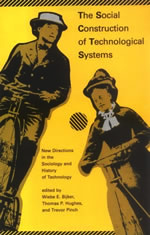 |
CALLON M., 1987, «Society the Making; the Study of Technology as a Tool for Sociological Analysis» ,
in BIJKER W., HUGHES T., PINCH T., (ed.), New Directions in the Social Studies of Technology, Cambridge, MIT Press, |
| |
CALLON M., LEYDESDORFF L., 1987, «La recherche française est-elle en bonne santé?» ,
La Recherche, 18p.412-419.
186 mars |
| |
COURTIAL J., POMIAN J., 1987, «Un système à base de logique des associations pour l’interrogation des bases de données» ,
Documentalistes, 24 (1). |
| |
COURTIAL J., POMIAN J., 1987, «A System Grounded in Associational Logic for the Interrogation of Databases» ,
Journal of Information Science, 13p.91-97. |
| |
HENNION A., 1987, «Rameau sociologue? ou la mise en objet de la musique. Art et science au XVIIIème siècle» ,
ATP-CNRS Création artistique et savoir scientifique. |
| |
HENNION A., 1987, «Rameau sociologue? ou la mise en objet de la musique» ,
Musique et pouvoir, Paris, Aux Amateurs de Livres, p.53-70.. |
| |
HENNION A., 1987, «Functions of music on the radio: Music Programming in a large popular French radio station» ,
International Music Education, 14p.161-165. |
| |
HENNION A., MÉADEL C., 1987, «Dans les laboratoires du désir : le travail des agences de publicité» ,
CSI-CNET. |
| |
HENNION A., MÉADEL C., 1987, «Les ouvriers du désir» ,
MédiasPouvoirs, (7, juin), p.106-125. |
| |
KARPIK L., 1987, «Le capitalisme technologique» ,
Sociologie du Travail, (1), p.783-802. |
| |
LATOUR B., 1987, Enquête sur les régimes d’énonciation. Théorie des délégués, deuxième partie. ,
Miméo (working paper), |
| |
LATOUR B., 1987, Science in Action, How to Follow Scientists and Engineers through Society ,
Harvard University Press (US) / Open University Press (GB). |
| |
LATOUR B., 1987, «Doe ’de heerser’ te schrijven voor zowel machinaties als machines» ,
Krisis, 7p.42-66. |
| |
LATOUR B., 1987, «Note sur l’anthropologie de la raison» ,
in JANICAUD D., (ed.), Les pouvoirs de la science, un siècle de prise de conscience, Paris, Vrin, p.83-94. |
| |
LATOUR B., 1987, Théorie des délégués : première partie (miméo) ,
(working paper), |
| |
LATOUR B., BOWKER G., 1987, «A Booming Discipline Short of Discipline - The Social Studies of Science in France» ,
Social Studies of Science, 17p.715-748. |
| |
LATOUR B., STRUM S., 1987, «The Meanings of Social : From Baboons to Humans» ,
Social Science Information, 26p.783-802. |
| |
MÉADEL C., 1987, «’Moi, c’est RTL’, les figures de l’auditeur» ,
Études de Radio-Télévision, p.141-149.
38 |
| |
MÉADEL C., 1987, «L’information à France-Inter» ,
Mai 68 à l’ORTF, Paris, La Documentation française, p.88-104. |
| |
MÉADEL C., 1987, «Le spectacle sonore, histoires de mise en scène radiophonique» ,
Vibrations, (5), p.210-220. |
| |
MÉADEL C., 1987, «Sondages d’audience : la concurrence des mesures» ,
MédiasPouvoirs, p.25-37.
6 |
| |
MÉADEL C., 1987, «Un nouveau consommateur d’électricité : le sans-filiste» ,
in CARDOT F., (ed.), L’électricité et ses consommateurs, Paris, P.U.F., p.145-154. |
| |
MÉADEL C., BOURDON J., 1987, «Techniques et politiques de l’information, actes du séminaire Histoire des politiques de la communication» ,
Paris, CNRS - INA. |
| |
MUSTAR P., 1987, «Les réseaux de distribution du gaz à la fin du XIXème siècle : innovation et construction d’une demande» ,
L’électricité et ses consommateurs, Paris, PUF, p.203-217.. |
| |
TEIL G., 1987, «Le fonctionnement de trois comités de politique scientifique» ,
MRT-CSI. |
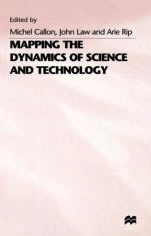 |
CALLON, M., LAW, J., RIP, A., 1986, Mapping the Dynamics of Science and Technology : Sociology of Science in the Real World ,
London, Mac Millan. |
| |
AKRICH M., 1986, «L’intégration des technologies énergétiques dans les pays en voie de développement» ,
Ecole des Mines - AFME. |
| |
AKRICH M., 1986, «Le polyptyque de Beaune : la construction locale d’un universel» ,
in MOULIN R., (ed.), Sociologie de l’Art, Paris, La Documentation Française, p.425-430. |
| |
AKRICH M., 1986, «Le Jugement Dernier. Une sociologie de la beauté» ,
L’Année Sociologique, p.239-277.
The polyptych The Last Judgment, attributed to Van der Weyden, was painted in the fifteenth century, but languished in obscurity until its rediscovery in 1836 by the art expert M. Canat de Chisy. Now displayed in the Musee de l'Hotel-Dieu de Beaune, the painting is considered a masterpiece of absolute beauty. A parallel is drawn between this rescue from obscurity & that of the geneticist Gregor Mendel, who was all but forgotten when he was "rediscovered" & hailed as the founding father of genetics. The common denominator here, it is suggested, is symmetry. The work of Mendel & The Last Judgment have a quality of balance most attractive to the human eye & mind, & serve as centers drawing to themselves all sorts of ideas & associations, thought provoking & profound, creating their own reality. |
| |
AKRICH M., 1986, «Analyse des facteurs socio-culturels à prendre en compte dans la planification énergétique dans les PVD, tome I» ,
Paris, École des Mines. |
| |
CALLON M., 1986, «Pinpointing Industrial Invention: An Exploration of Quantitative Methods for the Analysis of Patents» ,
in CALLON M., LAW J., RIP A., (ed.), Mapping the Dynamics of Science and Technology, London, Macmillan, p.163-188. |
| |
CALLON M., 1986, «La recherche industrielle : le mal français» ,
La Recherche, 17p.4-9.
183, décembre |
| |
CALLON M., 1986, «The Sociology of an Actor-Network: The Case of the Electric Vehicle» ,
in CALLON M., LAW J., RIP A., (ed.), Mapping the Dynamics of Science and Technology, London, The Macmillan, p.19-34. |
| |
CALLON M., 1986, «Éléments pour une sociologie de la traduction : la domestication des coquilles St-Jacques et des marins pêcheurs dans la baie de St. Brieuc» ,
L’Année Sociologique, numéro spécial La sociologie des Sciences et des Techniques, 36p.169-208. |
| |
CALLON M., 1986, «Les indicateurs des sciences et des techniques» ,
Recherche Technologie, p.41-51.
Janvier-mars |
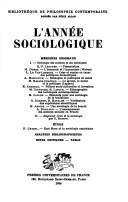 |
CALLON M., 1986, «Some Elements For A Sociology of Translation : Domestication of the Scallops and the Fishermen of St-Brieuc Bay» ,
in LAW J., (ed.), Power, Action and Belief : a New Sociology of Knowledge?, London, Sociological Review Monograph: Routledge and Kegan Paul,
Accès au texte »
This paper outlines a new approach to the study of power, that of the sociology of translation. Starting from three principles, those of agnosticism (impartiality between actors engaged in controversy), generalised symmetry (the commitment to explain conflicting viewpoints in the same terms) and free association (the abandonment of all a priori distinctions between the natural and the social), the paper describes a scientific and economic controversy about the causes for the decline in the population of scallops in St. Brieuc Bay and the attempts by three marine biologists to develop a conservation strategy for that population. Four ‘moments’ of translation are discerned in the attempts by these researchers to impose themselves and their definition of the situation on others: (a) problematisation: the researchers sought to become indispensable to other actors in the drama by defining the nature and the problems of the latter and then suggesting that these would be resolved if the actors negotiated the ‘obligatory passage point’ of the researchers’ programme of investigation; (b) interessement: a series of processes by which the researchers sought to lock the other actors into the roles that had been proposed for them in that programme; (c) enrolment: a set of strategies in which the researchers sought to define and interrelate the various roles they had allocated to others; (d) mobilisation: a set of methods used by the researchers to ensure that supposed spokesmen for various relevant collectivities were properly able to represent those collectivities and not betrayed by the latter. In conclusion it is noted that translation is a process, never a completed accomplishment, and it may (as in the empirical case considered) fail. |
| |
CALLON M., ARVANITIS R., LATOUR B., 1986, «L’évaluation des politiques de la recherche et de la technologie» ,
Paris, La Documentation française. |
| |
CALLON M., COURTIAL J., TURNER W., 1986, «Futur Developments» ,
in CALLON M., LAW J., RIP A., (ed.), Mapping the Dynamics of Science and Technology, London, Macmillan, p.211-217. |
| |
CALLON M., COURTIAL J., TURNER W., CHARTRON G., 1986, «The Translation Model and its Exploration through Co-word Analysis : Using Graphs for Negotiating Research Policies» ,
CSI-INRA. |
| |
CALLON M., LATOUR B., 1986, «Comment concevoir les innovations? Clefs pour l’analyse socio-technique» ,
Prospective et Santé, (36, hiver), p.13-25. |
| |
CALLON M., LAW J., RIP A., 1986, «Qualitative Scientometrics» ,
in CALLON M., LAW J., RIP A., (ed.), Mapping the Dynamics of Science and Technology, London, Macmillan, p.103123. |
| |
CALLON M., LAW J., RIP A., 1986, «How to Study the Force of Science» ,
in CALLON M., LAW J., RIP A., (ed.), Mapping the Dynamics of Science and Technology, London, Macmillan, p.3-15. |
| |
CALLON M., TURNER W., 1986, «State Intervention in Academic and Industrial Research: The Case of Macromolecular Chemistry in France» ,
in CALLON M., LAW J., RIP A., (ed.), Mapping the Dynamics of Science and Technology, London, Macmillan, p.142-162. |
| |
COURTIAL J., 1986, «Technical Issues and Developments in Methodology» ,
in CALLON M., LAW J., RIP A., (ed.), Mapping the dynamics of science and technology, London, Mac Millan, p.189-210. |
| |
COURTIAL J., 1986, «Application de l’analyse des mots associés à l’étude des textes scientifiques: le cas de l’intelligence artificielle» ,
Technologos, Automnep.21-34. |
| |
COURTIAL J., DEGENNE A., JUAN J., 1986, «Analyse des mots-associés et analyse de similitudes dans les fichiers documentaires» ,
Informatique et sciences humaines, p.95-105.
70-71 |
| |
COURTIAL J., JUAN J., 1986, «L’obtention de cartes stratégiques de la recherche scientifique à partir de l’analyse des mots-associés dans les fichiers documentaires» ,
Bulletin de méthodologie sociologique, p.22-28.
12 |
| |
HENNION A., 1986, «La prise de son : une redéfinition de l’unité musicale, et présentation du dossier A la recherche de l’instrument» ,
Vibrations, (2, janvier), p.124-132. |
| |
HENNION A., 1986, «Le disque de jazz en France» ,
Universalia 86, Paris, Encyclopedia Universalis, p.439-440. |
| |
HENNION A., 1986, «La musique est une sociologie : points de méthodes, à propos des théories musicales de Rameau» ,
in MOULIN R., (ed.), Sociologie de l’Art, Paris, La Documentation Française, p.347-354.. |
| |
HENNION A., 1986, «La musique et l’accusation : pour une ethnologie du solfège» ,
CSI-SER Ministère de la Culture. |
| |
HENNION A., 1986, «La sociologia dell’intermediario : il caso del direttore artistico di varietà» ,
Sociologia del Lavoro, Milan, Franco Angeli, (25, Il lavoro artistico, A. Luise et E. Minardi eds.), p.159-173. |
| |
HENNION A., 1986, «Rameau et l’harmonie : comment avoir raison de la musique?» ,
in GORCE J., (ed.), Jean-Philippe Rameau (Actes du colloque de 1983), Paris-Genève, Champion-Slatkine, p.393-405.. |
| |
HENNION A., BARBELIN H., 1986, «Désaccords parfaits : France-Musique et la fabrication du goût» ,
Vibrations, (3, septembre), p.132-157. |
| |
HENNION A., MÉADEL C., 1986, «La rhétorique de la radio ou comment garder l’auditeur à l’écoute» ,
Vibrations, (3, septembre), p.60-75. |
| |
HENNION A., MÉADEL C., 1986, «Programming Music : Radio as a Mediator» ,
Media, Culture and Society, 8 (3), p.281-303. |
| |
KARPIK L., 1986, «Démocratie et pouvoir au barreau de Paris» ,
Revue française de science politique, 36 (4, août), p.496-518. |
| |
KARPIK L., 1986, «Une révolution industrielle sans la France?» ,
Le Débat, 40p.114-129.
mai-septembre |
| |
LATOUR B., 1986, «Remarks on an anthropological approach of theories in ethology» ,
in CAMPAN R., ZAYAN R., (ed.), Relevance of models and theories in ethology, Toulouse, Privat, p.137-143. |
| |
LATOUR B., 1986, «Visualisation and Cognition : Thinking with Eyes and Hands» ,
in KUCLICK H., (ed.), Knowledge and Society: Studies in the Sociology of Culture Past and Present, Jai Press, p.1-40. |
| |
LATOUR B., 1986, «La rhétorique scientifique : qu’est-ce que la force d’un argument?» ,
in BAILLY F., (ed.), Sens et place des connaissances dans la société, Paris, Editions du CNRS, p.251-287. |
| |
LATOUR B., 1986, «Vers une politique scientifique» ,
Bulletin de liaison : pratique et politiques scientifiques, ORSTOM, Bondy, p.40-59.
4 |
| |
LATOUR B., 1986, «The Power of Associations» ,
in LAW J., (ed.), Power, Action and Belief : a New Sociology of Knowledge?, London, Routledge and Kegan Paul, p.261-277. |
| |
LATOUR B., 1986, «L’objet des sciences : raison d’être des approches socio-sémiotiques» ,
in OUELLET P., (ed.), Les discours du savoir, Cahiers de l'ACFAS, Québec / Aix en Provence, p.13-22. |
| |
LATOUR B., BASTIDE F., 1986, «Writing Science - Fact and Fiction» ,
in CALLON M., LAW J., RIP A., (ed.), Mapping the Dynamics of Science and Technology, London, Macmillan, p.51-66. |
| |
LATOUR B., CALLON M., ARVANITIS R., 1986, L’évaluation des politiques publiques de la recherche ,
Paris, La Documentation Française. |
| |
LATOUR B., COUTOUZIS M., 1986, «Le village solaire de Frango-Castello : pour une ethnographie des techniques modernes» ,
L’Année sociologique, p.113-168. |
| |
LATOUR B., STRUM S., 1986, «Human Social Origins. Please Tell Us Another Origin story!» ,
Journal of Biological and Social Structures, 9p.169-187. |
| |
LATOUR B., WOOLGAR S., 1986, Laboratory Life. The Construction of Scientific Facts ,
Princeton, Princeton University Press (2ème édition). |
| |
MÉADEL C., 1986, «Histoires des programmes, histoire des jeux, actes de la journée d’études du 24 février 1986» ,
Paris, GEHRA - Radio France. |
| |
MÉADEL C., 1986, «La radio : bibliographie critique» ,
Vibrations, (3), p.207-223. |
| |
MÉADEL C., 1986, «Publics et mesures, une sociologie de la radio» ,
CSI - CNRS. |
| |
MÉADEL C., 1986, «Mesures de l’audience» ,
Vibrations, (3), p.13-21. |
| |
MUSTAR P., 1986, «Les technopôles : un nouveau développement industriel» ,
in 1986 O., (ed.), Lieux ? de travail, Paris, CCI, p.101-108. |
| |
MUSTAR P., 1986, «Les relations industrie-recherche en Allemagne federale» ,
Paris, Centre de Sociologie de l'Innovation. |
| |
LATOUR, B., DE NOBLET, J., 1985, Les "vues" de l’esprit. Visualisation et Connaissance Scientifique ,
Paris, CRCT. |
| |
CALLON, M., LATOUR, B., 1985, Les scientifiques et leurs alliés ,
Paris, Pandore.
A partir de cas empruntes a la physique (Frankel et Pickering), a l'astronomie (Pannekoek), a la genetique (Brannigan) et la statistique (MacKenzie) et grâce a une longue recension de la litterature anglaise et americaine (Strapin), certaines sciences sont offertes ici avec toutes les alliances qui les rendent possibles et interessantes. |
| |
AKRICH M., 1985, «De la prédestination des technologies... Réflexions tirées des expertises énergétiques dans les PVD» ,
Les Nouvelles de l’Éco-Développement,
34 |
| |
CALLON M., 1985, «Pour une sociologie relativement exacte» ,
Document de travail (non publié), p.1-30. |
| |
CALLON M., 1985, «Les aspects économiques et sociologiques dans les actions de recherche du programme de maîtrise de l’énergie» ,
Paris, La Documentation française. |
| |
CALLON M., 1985, «L’établissement de cartes stratégiques de la recherche : l’utilisation des bases de données pour l’aide à la décision technologique et scientifique» ,
Congrès international sur les banques de données et le videotex. INFODIAL, 16 au 20 septembre 1985. |
| |
CALLON M., 1985, «Indicators of Knowledge Development for Evaluating the Impact of Research Support» ,
CSI-NSF. |
| |
CALLON M., 1985, «Les cartes stratégiques de la recherche : la méthode des mots-associés» ,
INSERM-Informations,
décembre |
| |
COURTIAL J., 1985, «Comparaison de cartes Leximappe obtenues par indexation manuelle et par indexation lexicale automatique d’un échantillon de 12 articles» ,
Le Documentaliste, 22
3 |
| |
HENNION A., 1985, «La musique en ses lieux, rapport sur l’instrument au musée» ,
Vibrations-Cité de la Musique. |
| |
HENNION A., 1985, «Pratiques musicales : un boom chez les moins de 25 ans» ,
in POTEL J., (ed.), L’État de la France, Paris, La Découverte, p.180-181. |
| |
HENNION A., 1985, «Métissage et pureté : improvisation sur une partition de la musique» ,
Vibrations, (1, avril), p.15-21. |
| |
HENNION A., 1985, «A la recherche de l’instrument» ,
Vibrations, 2 (décembre). |
| |
HENNION A., 1985, «Le peuple, le sociologue et le producteur à succès» ,
Esthétiques du peuple, Paris, collectif Révoltes logiques, La Découverte-PUV, p.249-265. |
| |
HENNION A., 1985, «Opéra. Aspects économiques et sociologiques» ,
Unversalia 85, Paris, Encyclopædia Universalis, p.538-540. |
| |
HENNION A., MÉADEL C., 1985, «Ethnographie d’une antenne. Le travail des gens de radio» ,
CSI-CNET-CNRS. |
| |
HENNION A., MÉADEL C., 1985, «La radio comme médiateur : la programmation musicale» ,
Vibrations, (1, avril), p.54-70, (repris dans Communication Information, vol. 8 nº 2, p. 141-155, La musique populaire, Université Laval, Québec). |
| |
LAGRANGE P., 1985, «Soucoupes volantes et folklore (sur un livre de Bertrand Méheust)» ,
Science et Pseudo-Sciences, p.10-14.
158 |
| |
LATOUR B., 1985, «La matière des images» ,
Catalogue de l’exposition Architecture-Représentation, p.16-19. |
| |
LATOUR B., 1985, «Comment peut-on parler du capitalisme scientifique?» ,
Technologies, idéologies et pratiques, 5p.173-184.
33 |
| |
LATOUR B., 1985, Pasteur guerre contre les microbes ,
Paris, Nathan, collection Monde en poche. |
| |
LATOUR B., 1985, «Les "vues" de l’esprit. Une introduction à l’anthropologie des sciences et des techniques» ,
Culture technique, p.4-30.
14 |
| |
LATOUR B., 1985, «Mais où vont-ils chercher tout cela?» ,
Actes Sémiotiques, 8p.17-20. |
| |
LATOUR B., 1985, «L’ethnographie des laboratoires» ,
Cahiers STS, 15p.68-75.
5 |
| |
MÉADEL C., 1985, «Le spectacle invisible, séminaire du CNET Théories de la communication : un bilan, Paris, 7 juin 1985» ,
Réseaux, (13, juin), p.149-167. |
| |
MÉADEL C., 1985, «Le journal parlé» ,
Réseaux, (15), p.93-108. |
| |
MUSTAR P., 1985, «Rapport sur l’Etat de la Technique : la révolution de l’intelligence» ,
in GAUDIN T., (ed.), numéro hors série de Sciences et Techniques, Paris, CPE-Sciences et Techniques, |
 |
MUSTAR P., 1985, «L’industrie du logiciel pour micro-ordinateur familial : le cas des petites sociétés» ,
Réseaux, Paris, CNET, (14).
Accès au texte »
La différence entre la "machine familiale" et "l'outil professionnel" est forte lorsque l'on va regarder de près la construction même du micro-ordinateur. Le travail que nous effectuons en ce moment sur l'histoire du micro-ordinateur TO-07 de Thomson montre comment cet objet est conçu, non pas par une direction de fabrication de matériel informatique du groupe mais par la direction des produits bruns. Les priorités choisies par l'équipe qui le réalise sont celles de tous les fabricants de produits électroniques destinés au grand public, ? 'est-à-dire : un le prix, deux l'esthétique, trois les capacités. La différence se trouve enfin du côté des utilisations. Les logiciels d'application que l'on rencontre sur les machines de bureau sont des tableurs, des traitements de texte, des fichiers, des créateurs de graphisme et d 'image... alors que l'on trouve avant tout des jeux (de réflexion, d'arcade, d'aventure) sur les machines familiales. C'est la micro-informatique domestique, que l'on appelle aussi familiale ou grand public, que nous avons choisi d 'étudier. Dans cet article, c'est au logiciel que nous nous intéressons- Nous l'analyserons, non pas sous l'angle de son contenu, ni de ses usages, mais sous celui de sa production. |
| |
MUSTAR P., 1985, «De la recherche à l’innovation : le rôle de L’Etat» ,
in GRILLET T., LE CONTE DES FLORIS D., (ed.), La France High Tech, Paris, Autrement, p.193-200. |
| |
AKRICH M., 1984, «Analyse des politiques de coopération énergétique avec le Tiers-Monde» ,
Paris, École des Mines. |
| |
CALLON M., 1984, «La résistible ascension des technopoles» ,
Autrement,
spécial : Technopolis |
| |
CALLON M., 1984, «Comment discuter des choix indiscutables?» ,
Charbon 84, ADEMAST, |
| |
CALLON M., 1984, «Bilan des recherches sur l’innovation» ,
CSI-CNRS. |
| |
CALLON M., BASTIDE F., BAUIN S., COURTIAL J., TURNER W., 1984, «Les mécanismes d’intéressement dans les textes scientifiques» ,
Cahiers STS, PUF, (5), p.88-105. |
| |
COURTIAL J., 1984, «Co-words Maps of Biotechnology : an Example of Cognitive Scientometrics» ,
Scientometrics, 6p.381-400. |
| |
COURTIAL J., CALLON M., SIGOGNEAU M., 1984, «Is Indexing Trustworthy? Classification of Articles through Co-Word Analysis» ,
Journal of Information Science, 9 (1), p.47-56. |
| |
COURTIAL J., TURNER W., BAUIN S., LAMPART C., 1984, «Les cartindex des Sciences et des Techniques» ,
Le Documentaliste, 21
1 |
| |
HENNION A., 1984, «Rubrique : Sociologie de l’art» ,
L’Année sociologique, Paris, PUF, 34p.377-409. |
| |
HENNION A., 1984, «Le parcours socio-musical des élèves de piano dans les écoles de musique, colloque sur Le piano français au XXème siècle» ,
Revue Internationale de Musique Française, Genève-Paris, Slatkine, (15), p.17-25. |
| |
HENNION A., MÉADEL C., 1984, «Ethnographie d’une antenne, séminaire du CNET La radio-télévision : fonction de programmation, Paris, 14 décembre 1984» ,
Réseaux, Paris, CNET-CNRS, (10). |
| |
LATOUR B., 1984, «Le dernier des capitalistes sauvages : interview d’un biochimiste» ,
Fundamenta Scientiæ, 4 (3-4), p.301-327. |
| |
LATOUR B., 1984, Les Microbes : guerre et paix, suivi de Irréductions ,
Paris, A.-M. Métailié. |
| |
MÉADEL C., 1984, «Les sources de l’histoire de la radio et de la télévision» ,
Paris, GEHRA - Radio France. |
| |
MUSTAR P., 1984, «Généalogie du réseau de gaz : cadre juridique et stratégie commerciale à Paris au XIXème siècle» ,
Réseaux, Paris, CNET, (4), p.81-109. |
| |
CALLON M., 1983, «Die Kreation einer Teknik» ,
Teknik und Gesellschaft Jahrbuch, Francfort, New York, Campus Verlag, |
| |
CALLON M., 1983, «Organisation de la recherche et demande sociale» ,
État du Monde des Sciences et des Techniques, Paris, La Découverte - Maspero, |
| |
CALLON M., COURTIAL J., TURNER W., BAUIN S., 1983, «From Translation to Problematic Networks : an Introduction to Co-word Analysis» ,
Social Science Information, (22), p.191-235.
Empirical studies of the sociology of science have called into question the distinction between internal & external influences on the development of science. An alternative basis for the distinction is sought through the concept of translation. The function of the language of scientific writings is not only to convey information, but also to convince the reader that interest in its subject is appropriate. The analysis by John Law of a specific scientific article ("Enrolement et contre-enrolement: les luttes pour la publication d'un article scientifique," see abstract, this section) illustrates this process. The definition of a problem involves linking together words that represent previously existing networks of interest into a common reality that unites these networks. The coword analysis methodology generates models of these networks, which are illustrated for a sample of 172 articles indexed by 1 of 3 key words in a datafile. The identification of problematic networks through this method also identifies key actors in the formation of networks. A concept of internal/external can exist for any specific network without being defined for the sciences as a whole. |
| |
HENNION A., 1983, «Une sociologie de l’intermédiaire : le cas du directeur artistique de variétés» ,
Sociologie du travail, (4, numéro spécial sur Les professions artistiques, sous la direction de R. Moulin, Paris, Dunod), p.459-474. |
 |
HENNION A., 1983, «The Production of Success : an Anti-Musicology of the Pop Song» ,
in HORN D., MIDDLETON R., (ed.), Popular Music, vol. 3, Londres, Cambridge University Press, p.159-193.
At the heart of the frenetic activity of the record industry and of all the conflictin opinion to which this activity gives rise, lies a common goal: popular success. This also provides the key to the paradoxes one encounters when one studies the economic aspects of the record industry in France. What does the achievement of success involve in actual fact ? Economic, sociological and musicological analyses tend to evade this issue rather than explain it. Can the ability to achieve success be attributed to a more or less innate sixth sense ? Does it reside in the superiority of the smaller producers over the larger ones ? Is success achieved through bribery, through massive 'plugging', through a dulling of the senses or through conformism, as the ritual claims of the press would have it ? Is it a by-product or profit, of standardisation, of alienation or of the prevailing ideology, as marxists argue ? The sociology of mass media and culture explains it in an equally wide variety of ways (...). |
| |
HENNION A., 1983, «La place des petites entreprises dans l’industrie du disque et leur rôle dans la création musicale» ,
Création musicale et industries culturelles, série Etudes Politiques culturelles, Strasbourg, Conseil de l’Europe, p.35-42.
4 |
| |
HENNION A., MARTINAT F., VIGNOLLE J., 1983, Les Conservatoires et leurs élèves ,
Paris, Ministère de la Culture - La Documentation Française.
Enquête sur l'origine, l'évolution et le devenir des élèves des écoles de musique contrôlées par l'Etat (Conservatoires nationaux de région , écoles nationales de musique, écoles de musiques municipales agréées) : hiérarchies sociales et pratiques culturelles : avantages et handicaps familiaux, exploration du cursus musical, les opinions musicales des élèves, les pratiques culturelles extra-scolaires, le cursus des anciens élèves. |
| |
LATOUR B., 1983, «Give me a laboratory and I will raise the world» ,
in KNORR K., MULKAY M., (ed.), Science Observed, London, Sage, p.141-171. |
| |
LATOUR B., 1983, «Comment redistribuer la grand partage ?» ,
Revue de synthèse, 110 (avril-juin), p.203-236. |
| |
LATOUR B., BASTIDE F., 1983, «Essai de Science-Fabrication» ,
Etudes Françaises, 19p.11-132.
2, numéro spécial sur la littérature scientifique |
| |
MUSTAR P., 1983, «Immigration et réseaux de communication» ,
in DE CERTEAU M., GIARD L., (ed.), L'ordinaire de la communication, Paris, Dalloz, |
 |
CALLON, M., LATOUR, B., 1982, La science telle qu’elle se fait. Une anthologie de la sociologie des sciences de langue anglaise ,
Paris, Pandore.
Autour de la sociologie des connaissances scientifiques, cet ouvrage rassemble quelques unes des études publiées en langue anglaise au cours des quinze dernières années et a pour but de présenter des faits scientifiques analyses en detail par des sociologues et des historiens qui n'établissent a priori aucune frontière infranchissable entre les facteurs sociaux et cognitifs. En suivant les controverses, les conflits d'interprétation, les doutes, les coups de force, on assiste à l'élaboration de connaissances et on se convainc progressivement que pour apprécier la science faite, il faut étudier la science en train de se faire. |
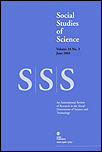 |
CALLON M., LAW J., 1982, «On Interests and their Transformation : Enrolment and Counter-Enrolment» ,
Social Studies of Science, 12 (4), p.615-625.
A way of treating interests which differs from those of both Woolgar and Barnes is here recommended. This third `enrolment' or `networking' theory approach notes that actors attempt to enlist one another in a variety of different ways, including the transformation of imputed interests. Some of the strategies adopted in this process are considered. Overall, it is suggested that interests should not be imputed to actors as background causes of action, but rather that they should be seen as attempts to define and enforce contingent forms of social order on the part of actors themselves. |
| |
COURTIAL J., JAGODZINSKI-SIGOGNEAU M., LATOUR B., 1982, «How to Measure the degree of Independence of a Research System» ,
Scientometrics, 4p.119-133. |
| |
HENNION A., 1982, «Popular Music as social production» ,
in TAGG D., (ed.), Popular Music Perspectives, Göteborg & Exeter, IASPM, p.32-40.. |
| |
HENNION A., 1982, «Une Sociologie des variétés : d’une sociologie de la musique à une musicologie du social» ,
Xème congrès de sociologie, 1982. |
| |
HENNION A., 1982, «Mexico, le Mundial de la sociologie : petite chronique d’un congrès très savant» ,
Fundamenta Scientiæ, Oxford-Strasbourg, Pergamon press, 3p.390-395.
3-4 |
| |
LATOUR B., 1982, «Reply to Criticisms» ,
Radical Science Journal, (12), p.137-141. |
| |
LATOUR B., 1982, Métro/socio/logie ,
dans la vie quotidienne n°9, CULTURE TECHNIQUE La mesure. |
| |
LATOUR B., 1982, «Le centre et la périphérie à propos des transferts de technologies» ,
Prospective et santé publique, 24p.37-44.
Hiver |
| |
MÉADEL C., 1982, «Pour une histoire de la radiodiffusion en France, essai bibliographique (1921-1945)» ,
Bulletin de l’Histoire du Temps Présent, p.44-57.
10 |
| |
MUSTAR P., 1982, «Histoire et géographie du bureau de poste : Genèse de la première politique des communications à distance en France» ,
Bulletin de l'IDATE, (octobre). |
| |
CALLON M., 1981, «Mythes et réalités de la recherche collective : les centres techniques industriels» ,
Les Cahiers de l’ANRT. |
| |
CALLON M., 1981, «Le pouvoir des chercheurs dans l’entreprise» ,
Economie et Humanisme, (262, nov./déc.), p.18-25. |
| |
CALLON M., 1981, «Boîtes noires et opérations de traduction» ,
Economie et Humanisme, (262, nov./déc.), p.53-59. |
| |
CALLON M., 1981, «Pour une sociologie des controverses technologiques» ,
Fundamenta Scientiae, 12 (4), p.381-399. |
| |
CALLON M., LATOUR B., 1981, «Unscrewing the Big Leviathan ; or How Actors Macrostructure Reality and How Sociologists Help Them To Do So?» ,
in CICOUREL K., (ed.), Advances in Social Theory and Methodology : Toward an Integration of Micro and Macro-Sociologies, London, Routledge an Kegan Paul, |
| |
COURTIAL J., 1981, «Les pièges de la communication» ,
Psychologies,
142 |
 |
HENNION A., 1981, Les professionnels du disque. Une sociologie des variétés ,
Paris, A.-M. Métailié. |
| |
HENNION A., 1981, «L’industrie française du disque» ,
Universalia 81, Paris, Encyclopædia Universalis, p.221-225. |
| |
HENNION A., MARTINAT F., VIGNOLLE J., 1981, «Enquête sur les élèves et anciens élèves des écoles de musique contrôlées par l’Etat» ,
CSI-Ministère de la culture. |
| |
LATOUR B., 1981, «Is it Possible to Reconstruct the Research Process : Sociology of a Brain Peptide» ,
in KNORR K., KROHN R., WHITLEY R., (ed.), The Social Process of Scientific Investigation; Sociology of the Sciences. A Yearbook, Dordrecht, Reidel, p.53-73. |
| |
LATOUR B., 1981, «Attention biologistes au travail» ,
Les Biologies, Paris, Autrement, p.223-233. |
| |
LATOUR B., 1981, «Ces obscurs savoirs» ,
Esprit, p.140-146.
10-11 |
| |
LATOUR B., 1981, «Les chercheurs aussi sont des négociateurs rusés» ,
Economie et Humanisme, p.13-17. |
| |
LATOUR B., 1981, «Insiders and outsiders in the sociology of science, or how can we foster for agnosticism» ,
in KUCLICK H., (ed.), Knowledge and Society. Studies in the Sociology of Culture Past and Present, Jai Press, p.199-216. |
| |
CALLON M., 1980, «The State and Technical Innovation: a Case Study of the Electrical Vehicle in France» ,
Research Policy, 9p.358-376.
Certain innovations have the following characteristics: (a) considerable variety in the technological options that are available, and close links between technical choices and sociopolitical choices; (b) considerable diversity in points of view put forward by the numerous social groups involved; (c) an initial lack of determination of the market demand, which is built up at the same time as the equipment designed to meet it. These innovations lead to the emergence of new political actors who, by fighting to impose their technical choices are inevitably led to define the needs to be satisfied, the forms of social organisation to promote, and the action to be undertaken. Confronted by these actors, the state is powerless. It rarely has sufficient expertise to transform technical controversies into policy debate; it is undermined by internal divisions that prevent it from showing any coherent political will; it is trapped into deals that lead it to defend the most powerful groups. These are the convclusions that emerge from an analysis of different interventions of the French State to promote the electric vehicle. The study brings out the different strategies of the groups involved. It gives no special privilege to the role of the Government administration, and stresses the logical thread of the historical development of the project. |
| |
CALLON M., 1980, «Struggles and Negotiations to Decide What is Problematic and What is Not: the Socio-logics of Translation» ,
in KNORR K., KROHN R., WHITLEY R., (ed.), The Social Process of Scientific Investigation, D. Reidel Publishing Company, p.197-220. |
| |
CALLON M., 1980, «Luttes et négociations pour définir ce qui est problématique et ce qui ne l’est pas» ,
cf la version anglaise (80-2), p.1-33. |
| |
LATOUR B., 1980, «The Three Little Dinosaurs or A Sociologist’s Nightmare» ,
Fundamenta Scientiæ, 1p.79-85. |
| |
LATOUR B., SIGOGNEAU M., 1980, «Une base de données bibliographiques peut-elle devenir une banque de données pour la recherche sur la recherche?» ,
Le Documentaliste, 17p.139-147.
4-5 |
| |
CALLON M., 1979, «L’État face à l’innovation technique. Le cas du véhicule électrique» ,
Revue Française de Science Politique, XXIX (3), p.426-447.
Accès au texte »
L’histoire des recherches entreprises autour du projet de véhicule électrique montre que l’Etat est comme impuissant devant les enjeux et les intérêts qui s’affrontent cette occasion. Incapable de décoder les controverses techniques pour faire apparaître les enjeux politiques qu’elles expriment et dissimulent, l’Etat n’est pas plus en mesure d’exprimer techniquement des orientations politiques. Quant aux acteurs qui produisent cette politisation de la technique, ils se situent en dehors du système politique traditionnel, occupent le terrain, imposent leurs formes de raisonnement, leurs critères d’évaluation et leur formulation des problèmes. Ils annexent Etat, tendant à lui dénier toute spécificité et ne voyant en lui qu’un ensemble de ressources particulières. Face à une innovation comme le VEL, l’Etat est politiquement velléitaire parce que techniquement dominé. |
| |
CALLON M., 1979, «Imbroglio autour d’une innovation technique : le véhicule électrique» ,
La Recherche, 10p.688-690.
101, juin |
| |
CALLON M., 1979, «Les actions concertées chimie macromoléculaire. La socio-logique d’une agence de traduction» ,
CSI-DGRST-CNRS. |
| |
COURTIAL J., 1979, La communication piégée ,
Paris, Robert Jauze. |
| |
LATOUR B., WOOLGAR S., 1979, Laboratory Life : the Social Construction of Scientific Facts ,
Los Angeles/Londres, Sage (1ère édition). |
| |
KARPIK, L., 1978, Organization and Environment : Theory, Issues and Reality ,
London, Sage. |
| |
CALLON M., 1978, «Le véhicule électrique : un enjeu social (4 tomes)» ,
CSI-CORDES. |
| |
COURTIAL J., 1978, «Des mots préférés» ,
Communication et Langage, (39), p.19-34. |
| |
COURTIAL J., 1978, «A propos de l’analyse des données» ,
Revue Française de Sociologie, XIXp.585-592. |
| |
COURTIAL J., 1978, «Le nouveau désordre mathématique» ,
Psychologies, |
| |
COURTIAL J., 1978, «La répartition des revenus, un choix de société» ,
Psychologies, |
| |
HENNION A., VIGNOLLE J., 1978, «Concentration et place spécifique du petit capital: L’exemple de l’industrie du disque.» ,
Economie des systèmes audiovisuels. Rencontre de Recherche, INA. 1978. |
| |
HENNION A., VIGNOLLE J., 1978, L’économie du disque en France, série "Les industries culturelles" ,
Paris, Ministère de la Culture - La Documentation Française. |
| |
HENNION A., VIGNOLLE J., 1978, «Artisans et industriels du disque. Essai sur le mode de production de la musique» ,
CSI-CORDES. |
| |
LATOUR B., 1978, «Observing scientists observing baboons observing in Baboons Study: Myths and Models» ,
Wenner Grenn Foundation For Anthropological Studies, |
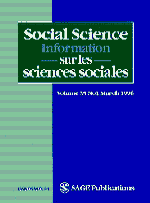 |
CALLON M., 1977, «Breaking down the organization; local conflicts and social systems of action» ,
Social Science Information, XVI (2).
The approach proposed here to the study of the relationship between organizations & society is related to those used by Marx & Weber who, by different methods, related organizational structures to forms of social domination. Analysis of a research center & the different "logics of action" of the groups constituting it show many systems of action in conflict or in coalition. The meaning & the societal stakes of these systems are clarified. Studied is how scientific activity is related to the actions of a ruling class & tends to constitute a system of social domination whose stakes are the orientations of industrial development & the conditions of accumulation. |
| |
COURTIAL J., 1977, «Les sondages peuvent-ils se tromper?» ,
Psychologies,
nº 91 |
| |
LATOUR B., 1977, «Pouvoir et Devoir dans un article de science exacte» ,
Actes de la Recherche en Sciences Sociales, (13 (Février)), p.81-99. |
| |
CALLON M., 1976, «Organisation locale et enjeux sociétaux» ,
Sociologie du Travail, (3), p.233-255.
The approach proposed to the interactions between organizations & society resides with those of Marx & Weber, who, in different ways, related structures of organization & forms of social domination. In order to determine the meaning & social stakes of various logics of action within institutions, a research center & its component groups were studied. These groups display many systems of action, of both a conflictual & consensual nature. The result of the analysis is a view of scientific activity as impinging itself on the action of a ruling class & tending to form a system of social domination, the stakes of which are the trends of industrial development & the conditions of accumulation. |
| |
CALLON M., 1976, «L’opération de traduction comme relation symbolique» ,
in GRUSON C., (ed.), Incidence des rapports sociaux sur le développement scientifique et technique, Paris, CORDES (Comité d'Organisation des Recherches appliquées sur le Développement Economique et Social), p.105-141. |
| |
CALLON M., 1976, «Le "logiche d’azione" delle organizzazioni : il caso di un centro di ricerca» ,
Studi Organizzativi, (2-3), p.3-29. |
| |
LATOUR B., 1976, «Including citations in the system of action of a scientific paper» ,
in Proceedings of the 1st Meet, Cornell University 1976. |
| |
CALLON M., BAUER M., KARPIK L., VIGNOLLE J., 1975, «Concurrence économique et rapports sociaux» ,
CORDES-CSI. |
| |
CALLON M., PARDOUX F., VIGNOLLE J., 1975, «Transferts technologiques et relations d’influence : le cas de deux centres techniques professionnels» ,
CSI-MIR. |
| |
HENNION A., 1975, «La production musicale: les politiques des firmes discographiques» ,
CSI-CORDES. |
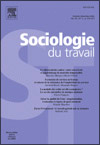 |
CALLON M., 1974, «Les firmes multinationales : un théâtre d’ombres» ,
Sociologie du Travail, (2), p.113-140.
Discussed are the various scholarly opinions, including those of R. Vernon ("The Location of Economic Activity," Roneo 1972, 35, Sep) & of J. K. Galbraith, on multinational corporations (MNC's); MNC's are in apposition to nations. They have mainly been American, typified by political finance used to gain access to local resources, & centralized, highly technical organizations. Arguments are presented on whether the US MNC's or a coalition of MNC's dominate; whether the US domination is weakening; how the US government & MNC's interact. MNC's operate outside the national boundaries of the present. They have led to homogenized products made by monopolistic, oligarchical groups that emphasize organization over innovation. They are expressions of a new economic stage, technological capitalism, typified by neodiversification where both demand & competition are controlled, at least until local entrepreneurs & other corporations break the initial monopoly; in this case the mother country may become an importer. The relation between strategy & structure is discussed as are the importance of internal planning & the power of the combination of economic goods & scientific knowledge. New economic principles are coming into play. The MNC's certainly confront essential problems, but in the interests of the Uc. Sociologists should not participate in the polemical debates they have generated except to put them into perspective. |
| |
LATOUR B., 1974, Les Idéologies de la Compétence en Milieu Industriel à Abidjan ,
Cahier n°3 120 pages ronéoté, ORSTOM Sciences Humaines. |
| |
LATOUR B., 1973, «La répétition de Charles Péguy» ,
in COLLECTIF., (ed.), Péguy écrivain. Colloque du centenaire, Paris, Klinsieck, p.75-100. |
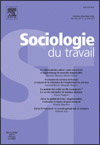 |
CALLON M., 1972, «Les modes de détermination de la politique de recherche d’une entreprise; rapports entre science et économie» ,
Sociologie du Travail, (1), p.35-70.
The relationships which exist between res policy & the general policy of the enterprise are studied. Res policy is first considered as a partial policy of the enterprise, as a production of inventions, which deals with diff types of sci's, & as a segment of the general policy of the enterprise, with specific forms of relations between production & demand, specific forms of concurrence & of relationships between the general policy of the enterprise & the partial objectives of res. An analysis of the modalities of the determination of the res policy of a multinat'l metal enterprise is presented. The position of the specific enterprise within the metal industry is presented, & the mode of manag of res in the enterprise (admin'ive for one branch since 1967, pol'al for another branch since 1969, & professional with the creation of a fundamental res dept in 1969), & the mode of determination of innovations (by the "market" or by "technique") are analyzed. It is concluded that the several forms of relations between production & demand, the plurality of the forms of concurrence are the bases of the pol'al choices offered to the enterprise; a partial policy is part of a global policy, but is also influenced by specific determinations. A number of general propositions are advanced & the problem of generalization of the results of the method which was applied is evoked. |
| |
KARPIK L., 1972, «Le capitalisme technologique» ,
Sociologie du Travail, (1). |
Désolé, aucun résultat ne correspond à votre requête. |

























































, International Encyclopedia .png)
































































































































, Do economists make markets 2007.jpg)
, Market Devices.jpg)



























































































































, 2003, Encyclopédie de l'innovation.jpg)












































































































































































, La Gestion stratégique de la recherche, 1995.jpg)







































, 1991, Gestion de la recherche.jpg)


































